Black Lives Matter
description: an activist movement advocating for the rights of black individuals
334 results

Merchants of the Right: Gun Sellers and the Crisis of American Democracy
by
Jennifer Carlson
Published 2 May 2023
No.”), he foresaw the “collapse” of the economy and worried about rampant lawlessness: “this COVID thing, because it is so politicized, has made everybody think that it’s legitimate to break the law. Including Black Lives Matter.” Rather than a protest movement, Alex saw something sinister and conspiratorial in the Black Lives Matter movement. Alex viewed the movement as something uncanny and unnerving, despite his self-professed lack of knowledge about it. Noting that “I don’t like civil unrest,” he admitted: “I don’t know a lot about Black Lives Matter. In other words, I actually don’t watch much news or anything. But I smell it—how’s that? Does that work for you? I smell what it is.” When I pressed him further, he adopted a conspiracist stance by connecting Black Lives Matter to the “propaganda” that he witnessed “all of a sudden” and for the “first time” in the United States under the Obama administration: “There’s misinformation.
…
Though Korean Americans were marginalized politically, socially, and economically in Los Angeles leading up to the riots,67 they became celebrated heroes, particularly among conservatives, once they found themselves on the front lines of the 1992 LA riots in part because their actions—small business owners defending themselves with guns against riotous African Americans—resonated profoundly with both the myth of the American Dream and anti-Black racism.68 If the historical specter of Black protest, civil unrest, and rioting haunted the Asian American politics of gun ownership, the contemporary appearance of the Black Lives Matter uprisings shaped how gun sellers understood African American gun buyers. For example, Ben in Michigan referenced the Black Lives Matter protests ongoing at the time of our interview—and the fears of civil unrest that they instigated—to explain an uptick in racial minorities buying guns: From minorities, and from Black women actually … [I hear] that a large number do not support the Black Lives Matter protests or rioting or any of that … And that’s the greatest thing about gun ownership! Everyone can connect in it—it’s a primal thing and a big jump in personal responsibility that carries over into everyday life.
…
For example, recall from chapter 1 how Ben, a white gun seller in Michigan, referenced minorities he knew who disapproved of the Black Lives Matter protests to help justify his own misgivings: “From minorities, and from Black women actually … [I hear] that a large number do not support the Black Lives Matter protests or rioting or any of that.” The style of thinking deployed to make sense of the pandemic—rampant skepticism, a strident faith in political opportunism, and a reliance on first-hand experience—was reshuffled to discount the voices of those collectively mobilized against racism in American society. Though the Black Lives Matter movement included multiple factions, took shape in various manifestations, and intersected with adjacent mobilizations (such as the Defund the Police movement), gun sellers treated the Black Lives Matter movement as an umbrella, catch-all term for the protests, uprisings, and riots that occurred during the summer of 2020.
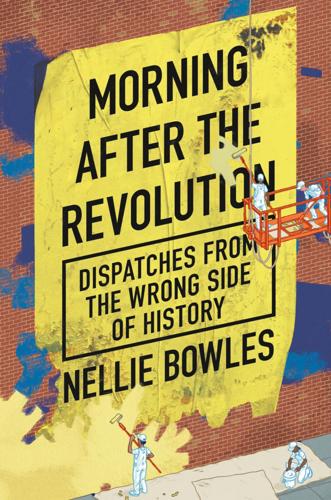
Morning After the Revolution: Dispatches From the Wrong Side of History
by
Nellie Bowles
Published 13 May 2024
Seattle fell apart with the murders; other autonomous zones kept combusting wherever they tried them, and the larger coalition was a mess. The sheen was wearing off, the violence losing some of its excitement. And that was a problem. Black Lives Matter had to clean up. Black Lives Matter was getting major funding. Black Lives Matter was going much more mainstream. Mug shots of wild-eyed young anti-fascists with gauge earrings and half-shaved heads were not the vibe anymore. Donor funds still paid to bail them out, of course, over and over. But Black Lives Matter was moving on. Abolitionist Entertainment LLC Everyone had wanted to do something to join in as the protest movement grew into 2021.
…
A gay man, he had moved from Texas to Seattle’s Capitol Hill to be somewhere welcoming and fun. He wanted a less racist country and believed in Black Lives Matter. He called his shop Cafe Argento. Their tagline on Facebook: 12th Avenue’s Sexiest Coffee House. They made a great egg sandwich. For a while, things in his new city seemed alright. He supported Black Lives Matter because he supported progress. His new city officials—that loose collective of anti-fascists and local Black Lives Matter leaders—held meetings to announce the community events. It was unclear how leadership of their new city was structured, who exactly was making decisions.
…
“It continues a tradition of terror by white supremacists against Black activists,” Patrisse said. “The way that I live my life is in direct support to Black people, including my Black family members, first and foremost,” she later explained to Black News Tonight reporter Marc Lamont Hill. She stepped down from Black Lives Matter anyway. Eventually, the Black Lives Matter movement spending got so egregious it turned, for me personally, aspirational. Black Lives Matter gave enough money to a nonprofit run by Patrisse’s former spouse, Janaya Khan, to buy a 10,000-square-foot mansion—the former headquarters of the Communist Party—in Toronto for $6.3 million. The city put in another $250,000 for renovations.

The Authoritarian Moment: How the Left Weaponized America's Institutions Against Dissent
by
Ben Shapiro
Published 26 Jul 2021
Vandana Rambaran, “Dean fired after saying ‘BLACK LIVES MATTER, but also, EVERYONE’S LIFE MATTERS’ in email,” FoxNews.com, July 2, 2020, https://www.foxnews.com/us/dean-fired-after-saying-black-lives-matter-but-also-everyones-life-matters-in-email. 13. Dunja Djudjic, “B&H Employee ‘removed’ after publicly opposing Black Lives Matter movement,” DIYPhotography.net, June 11, 2020, https://www.diyphotography.net/bh-employee-removed-after-publicly-opposing-black-lives-matter-movement/. 14. Jemimi McEvoy, “Every CEO and Leader That Stepped Down Since Black Lives Matter Protests Began,” Forbes.com, July 1, 2020, https://www.forbes.com/sites/jemimamcevoy/2020/07/01/every-ceo-and-leader-that-stepped-down-since-black-lives-matter-protests-began/?sh=595688765593. 15.
…
Dan Wolken, “Opinion: LeBron James undermines values he’s espoused in most disgraceful moment of career,” USAToday.com, October 15, 2019, https://www.usatoday.com/story/sports/columnist/dan-wolken/2019/10/14/lebron-james-daryl-morey-china-hong-kong-tweet/3982436002/. 64. Paul P. Murphy, “Baseball is making Black Lives Matter on Opening Day,” CNN.com, July 24, 2020, https://www.cnn.com/2020/07/23/us/opening-day-baseball-mlb-black-lives-matter-trnd/index.html. 65. Associated Press, “Baltimore Ravens’ Matthew Judon blasts NFL Commissioner Roger Goodell’s ‘Black Lives Matter’ speech,” USAToday.com, June 15, 2020, https://www.usatoday.com/story/sports/nfl/ravens/2020/06/15/roger-goodells-black-lives-matter-speech-blasted-matthew-judon/3196057001/. 66. Scott Polacek, “NFL Plans to Include Social Justice Messages in End Zone Borders for Week 1,” BleacherReport.com, July 27, 2020, https://bleacherreport.com/articles/2901950-nfl-plans-to-include-social-justice-messages-in-end-zone-borders-for-week-1. 67.
…
Employees at Cisco lost their jobs after writing that “All Lives Matter” and that the phrase “Black Lives Matter” fosters racism;10 Sacramento Kings broadcaster Grant Napear lost his job for tweeting that “all lives matter”;11 Leslie Neal-Boylan, dean of University of Massachusetts Lowell’s nursing school, lost her job after stating, “BLACK LIVES MATTER, but also, EVERYONE’S LIFE MATTERS”—which, after all, is the hallmark of nursing;12 an employee at B&H Photo lost his job for writing, “I cannot support the organization called ‘Black Lives Matter’ until it clearly states that all lives matter equally regardless of race, ethnicity, religion or creed, then denounces any acts of violence that is happening in their name.
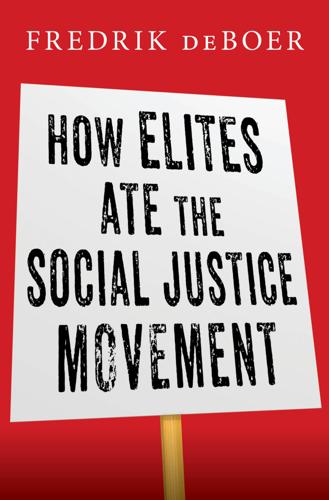
How Elites Ate the Social Justice Movement
by
Fredrik Deboer
Published 4 Sep 2023
“Individual donors and independent philanthropic”: Ann Brown, “$10.6B+ Was Given to Black Lives Matter Causes: Where Did the Money Go?,” Moguldom Nation, December 16, 2020, https://moguldom.com/323339/10-6b-was-given-to-black-lives-matter-causes-where-did-the-money-go/. A January 2022 investigation by New York: Sean Campbell, “The BLM Mystery: Where Did the Money Go?” New York, January 31, 2022, https://nymag.com/intelligencer/2022/01/black-lives-matter-finances.html. the same reporter later discovered: Sean Campbell, “Black Lives Matter Secretly Bought a $6 Million House,” New York, April 4, 2022, https://nymag.com/intelligencer/2022/04/black-lives-matter-6-million-dollar-house.html?
…
I will discuss the particular organizational difficulties of Black Lives Matter later in this volume. For now it’s enough to say that, as billions of dollars poured in to support the cause, the lack of a central organization that ensured transparency and accountability meant that there was no clear direction for the movement to go. Without an organization, there was no vehicle for arriving at specific goals and working toward them. Many lists of demands were written, but no group had sufficient influence or authority to determine the demands. Meanwhile, an understandable desire to defer to Black Lives Matter left other progressive organizations in a kind of limbo.
…
For example, in 2020 attendees of the Conference on College Composition and Communication, the largest professional gathering of educators and administrators who work in college writing, developed a list of demands for how language should evolve in the classroom in light of Black Lives Matter, including “We demand that teachers stop using academic language and standard English as the accepted communicative norm, which reflects white mainstream English!” and “We demand Black linguistic consciousness!” (The list was titled “This Ain’t Another Statement! This is a DEMAND for Black Linguistic Justice!” From the perspective of a few years later, it certainly appears to have been just another statement.) We should take care not to underestimate the achievement of the Black Lives Matter protest movement itself; whatever their distance from the opinion of the average Black voter, and however we might question what has happened since, the Black-led protest movement really did shake the entire world, for a time.
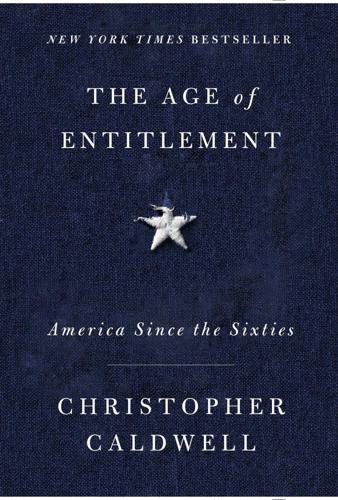
The Age of Entitlement: America Since the Sixties
by
Christopher Caldwell
Published 21 Jan 2020
They had a constructive agenda for reforming law enforcement: an end to the “broken windows” philosophy of policing, which had seen many city kids jailed for minor offenses; reform of the bail system; and the introduction of dashboard cameras and other technology to put the police on watch. That did not make the Black Lives Matter movement irresponsible, Gitlin insisted. “Contrary to what white racists and police like to say, the spirit of ‘Black Lives Matter’ does not mean ‘Only Black Lives Matter,’ ” he wrote. “. . . It’s the third term in a syllogism that goes like this: 1. All lives matter. 2. Black lives are lives. 3. Black lives matter.” That is what a 1960s radical wished Black Lives Matter to mean, to the point that he was willing to tar as racist anyone who disagreed with him. Problem was, the leaders of Black Lives Matter addressed Gitlin’s syllogism explicitly and repudiated it outright.
…
Their posts were the equivalent of Rick Santelli’s 2009 “rant,” which introduced the concept of a Tea Party before there was one. Indeed, Black Lives Matter could be considered a youthful, mostly minority counterpart to the aging, mostly white Tea Party. The Tea Party had launched an insurrection against Barack Obama and what it held him to represent, and now Black Lives Matter was entering that fray on the other side. Infuriated inner-city residents, idealistic college students, hip-hop musicians, billionaire managers of foundations, criminals and prison inmates, athletes—Black Lives Matter brought together these establishment and anti-establishment elements in an extraordinary ferment.
…
One of them, the former Maryland governor Martin O’Malley, attending a Netroots Nation conference in Arizona, was booed for saying “All lives matter.” Days later, Joseph Curtatone, the mayor of Somerville, Massachusetts, flew the Black Lives Matter banner and spent several days sparring with local police, who wanted him to hoist an “All Lives Matter” banner instead. The very name Black Lives Matter, once it changed from a hashtag to a political movement, implied that there was a group of people in American society who did not believe in the right to life of a significant part of the population. It was an incendiary accusation: Who did Black Lives Matter believe these people were, indifferent to others’ lives, who had supposedly sprung up at a moment when the races had never been more equal or mixed?
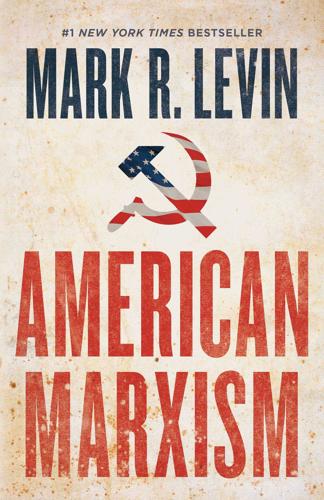
American Marxism
by
Mark R. Levin
Published 12 Jul 2021
Dizard, “Lamberth finds EPA in contempt for e-document purge,” GCN, July 25, 2003, https://gcn.com/articles/2003/07/25/lamberth-finds-epa-in-contempt-for-edocument-purge.aspx (April 25, 2021). 67 Melissa Quinn, “21 states sue Biden for revoking Keystone XL pipeline permit,” CBS News, March 18, 2021, https://www.cbsnews.com/news/keystone-pipeline-21-states-sue-biden/ (April 25, 2021). 68 Teny Sahakian, “NY Times ignores 18 deaths, nearly $2 billion in damage when bashing GOP bills targeting rioters,” Fox News, April 23, 2021, https://www.foxnews.com/us/ny-times-ignores-18-deaths-nearly-2-billion-dollars-in-damage-when-bashing-gop-bills-targeting-rioters (April 25, 2021). 69 Josh Gerstein, “Leniency for defendants in Portland clashes could affect Capitol riot cases,” Politico, April 14, 2021, https://www.politico.com/news/2021/04/14/portland-capitol-riot-cases-481346 (April 25, 2021). 70 “Governor Ron DeSantis Signs Hallmark Anti-Rioting Legislation Taking Unapologetic Stand for Public Safety,” Office of the Governor press release, April 19, 2021, https://www.flgov.com/2021/04/19/what-they-are-saying-governor-ron-desantis-signs-hallmark-anti-rioting-legislation-taking-unapologetic-stand-for-public-safety/ (April 25, 2021). 71 “Racketeer Influenced and Corrupt Organizations (RICO) Law,” Justia.com, https://www.justia.com/criminal/docs/rico/ (April 25, 2021). 72 Meira Gebel, “The story behind Thousand Currents, the charity that doles out the millions of dollars Black Lives Matter generates in donations,” Insider, June 25, 2020, https://www.insider.com/what-is-thousand-currents-black-lives-matter-charity-2020-6 (April 25, 2021). 73 Morrison, “AP Exclusive: Black Lives Matter opens up about its finances”; “Black Lives Matter Global Network Foundation,” Influence Watch, https://www.influencewatch.org/non-profit/black-lives-matter-foundation/ (April 25, 2021). 74 N’dea Yancy-Bragg, “Americans’ confidence in police falls to historic low, Gallup poll shows,” USA Today, August 12, 2020, https://www.usatoday.com/story/news/nation/2020/08/12/americans-confidence-police-falls-new-low-gallup-poll-shows/3352910001/ (April 25, 2021). 75 John R.
…
Fox News, May 4, 2020, https://www.foxnews.com/world/what-is-china-social-credit-system (April 9, 2021). 73 Ibid. 74 President’s Advisory 1776 Commission, “The 1776 Report,” January 2021, https://ipfs.io/ipfs/QmVzW5NfySnfTk7ucdEoWXshkNUXn3dseBA7ZVrQMBfZey (April 9, 2021). 75 Ibid. 76 MSNBC, January 19, 2021. 77 Delgado and Stefancic, Critical Race Theory, 154, 155. 78 Patrisse Cullors, “Trained Marxist Patrisse Cullors, Black Lives Matter BLM,” YouTube, June 2020, https://www.youtube.com/watch?v=1noLh25FbKI (April 9, 2021). 79 https://www.dailywire.com/news/fraud-blm-co-founder-patrisse-cullors-blasted-over-real-estate-buying-binge. 80 Mike Gonzalez, “To Destroy America,” City Journal, September 1, 2020, https://www.city-journal.org/marxist-revolutionaries-black-lives-matter (April 9, 2021). 81 Ibid. 82 Scott Walter, “A Terrorist’s Ties to a Leading Black Lives Matter Group,” Capital Research Center, June 24, 2020, https://capitalresearch.org/article/a-terrorists-ties-to-a-leading-black-lives-matter-group/ (April 9, 2021). 83 Gonzalez, “To Destroy America.” 84 Laura Lambert, “Weather Underground,” Encyclopaedia Britannica, https://www.britannica.com/topic/Weathermen (April 9, 2021). 85 “Celebrating four years of organizing to protect black lives,” Black Lives Matter, 2013, https://drive.google.com/file/d/0B0pJEXffvS0uOHdJREJnZ2JJYTA/view (April 9, 2021). 86 Karl Marx, Manifesto of the Communist Party (Marxists.org), https://www.marxists.org/archive/marx/works/1848/communist-manifesto/ch04.htm (April 9, 2021), chapter 2. 87 Lindsay Perez Huber, “Using Latina/o Critical Race Theory (LATCRIT) and Racist Nativism to Explore Intersectionality in the Education Experiences of Undocumented Chicana College Students,” Educational Foundations, Winter–Spring 2010, https://files.eric.ed.gov/fulltext/EJ885982.pdf (April 9, 2021), 77, 78, 79. 88 Ibid., 79, 80. 89 Ibid., 80, 81. 90 Jean Stefancic, “Latino and Latina Critical Theory: An Annotated Bibliography,” California Law Review, 1997, 423. 91 Rodolfo F.
…
Both of the nation’s largest teacher unions support the Black Lives Matter organization, with the National Education Association specifically calling for the use of Black Lives Matter curricular materials in K–12 schools. This curriculum is ‘committed’ to ideas such as a ‘queer-affirming network,’ which have nothing to do with rigorous instructional content, and promotes racially charged essays such as ‘Open Secrets in First-Grade Math: Teaching about White Supremacy on American Currency.’ As of 2018, officials in at least 20 large school districts, including Los Angeles and Washington, DC, were promoting Black Lives Matter curricular content and the organization’s ‘Week of Action.’
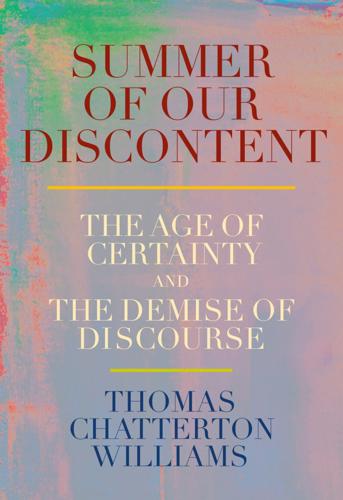
Summer of Our Discontent: The Age of Certainty and the Demise of Discourse
by
Thomas Chatterton Williams
Published 4 Aug 2025
“We believe that the quality of medical students and future physicians is reflected in their lived experiences, intersecting identities, research accomplishments, commitment to social and racial justice, and a set of core values that are aligned with those of our school.” (Emphasis mine.) *9 More broadly, the Black Lives Matter movement and related causes generated astonishing amounts of pledges and contributions from corporations and philanthropists, according to the Claremont Institute’s Center for the American Way of Life, which published the most comprehensive database tracking corporate giving to the Black Lives Matter movement and related causes from 2020 to the beginning of 2023. These numbers, including more than $123 million to the BLM parent organizations, directly and likely vastly underrepresent the true magnitude
…
*14 According to reporting in New York magazine, one of the multiple luxury properties Cullors purchased either personally or through LLCs attached to the Black Lives Matter Global Network Foundation she founded was described as having “more than 6,500 square feet, more than half a dozen bedrooms and bathrooms, several fireplaces, a soundstage, a pool and bungalow, and parking for more than 20 cars, according to real-estate listings. The California property was purchased for nearly $6 million in cash in October 2020 with money that had been donated to BLMGNF…. Two mothers who lost their sons to police violence demanded the organization stop using their names to raise funds.” Sean Campbell, “Black Lives Matter Secretly Bought a $6 Million House,” New York, April 4, 2022
…
*21 On July 24, 2020, The New York Times ran an article titled “How One of America’s Whitest Cities Became the Center of B.L.M. Protests.” It begins, “Seyi Fasoranti, a chemist who moved to Oregon from the East Coast six months ago, has watched the Black Lives Matter protests in Portland with fascination. A sea of white faces in one of the whitest major American cities has cried out for racial justice every night for nearly two months. ‘It’s something I joke about with my friends,’ Mr. Fasoranti, who is Black, said over the din of protest chants this week. ‘There are more Black Lives Matter signs in Portland than Black people.’ ” *22 In fact, according to local reporting, workers only began “removing the planks reinforcing the three-story glass panes at the front of the new central courthouse” on May 7, 2023.
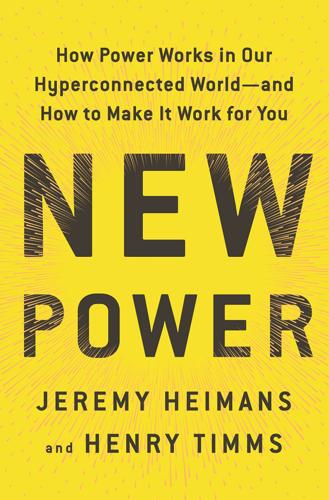
New Power: How Power Works in Our Hyperconnected World--And How to Make It Work for You
by
Jeremy Heimans
and
Henry Timms
Published 2 Apr 2018
“Prospective chapters must submit”: Jelani Cobb, “The Matter of Black Lives,” The New Yorker, March 14, 2016. “The other piece of this involvement”: Monica J. Casper, “Black Lives Matter / Black Life Matters: A Conversation with Patrisse Cullors and Darnell L. Moore,” truthout, December 3, 2014. “Black Lives Matter affirms the lives”: Black Lives Matter, “About the Black Lives Matter Network,” July 2017. www.blacklivesmatter.com. Jackson found himself booed: Cobb, “The Matter of Black Lives.” “If it is a protest”: Alicia Lu, “Did Al Sharpton ‘Monopolize’ Black Lives Matter Protests for His Own Gain?,” Bustle, December 21, 2014. “the phenomenon around DeRay”: Alicia Garza, in discussion with the authors, October 30, 2017.
…
But what is most notable, and important, about Black Lives Matter is its commitment to radical inclusivity. This is a movement that wants to have lots of leaders, and it is committed to shifting the spotlight onto those who had not typically been cast in that role, and who have been the most marginalized. “The other piece of this involvement is: how does Black Lives Matter really push the narrative that all Black lives matter?…So the nature of the work is about shaping, trying to shape this network politically,” Cullors says. As the women lay out in the “About Us” section of their website: “Black Lives Matter affirms the lives of Black queer and trans folks, disabled folks, Black-undocumented folks, folks with records, women and all Black lives along the gender spectrum.
…
The three women—working as always in partnership with others—quickly organized the Black Lives Matter “Freedom ride,” where activists from around the country piled into buses and rode to Ferguson to support local organizing efforts and the community there. This iconic moment inspired many more. Three months later, in December 2014, a Black Lives Matter banner stretched across the crowd at the Millions March NYC. This 50,000-strong march was initiated by twenty-three-year-old Synead Nichols and nineteen-year-old Umaara Elliott, who had never organized a protest before. From its start in a Facebook post, Black Lives Matter exploded across the country, grabbing national headlines and growing into a cluster of organizations, local chapters, and loose-knit swarms of organizers.

The Great Wave: The Era of Radical Disruption and the Rise of the Outsider
by
Michiko Kakutani
Published 20 Feb 2024
GO TO NOTE REFERENCE IN TEXT England, Japan, Brazil, and France: Alexandra Hurtado, “30 Powerful Black Lives Matter Murals from All Over the World You Really Need to See,” Parade, Mar. 25, 2021, parade.com/1048964/alexandra-hurtado/black-lives-matter-street-art-dc-berlin; Shauna Beni, “Black Lives Matter Murals Around the World, from Kenya to Ireland,” Condé Nast Traveler, July 30, 2020, cntraveler.com/gallery/black-lives-matter-murals-around-the-world-from-kenya-to-ireland/; Wyatte Grantham-Philips, “Powerful Photos Show ‘Black Lives Matter’ Painted Across Streets Nationwide,” USA Today, June 19, 2020, usatoday.com/story/news/nation/2020/06/17/black-lives-matter-painted-city-streets-see-art-nyc-washington/3204742001/; Emily Rumball, “Murals Honoring George Floyd Are Being Painted Around the World,” DH News, June 8, 2020, dailyhive.com/seattle/george-floyd-murals-around-the-world.
…
GO TO NOTE REFERENCE IN TEXT the win column for Joe Biden: Maya King, “How Stacey Abrams and Her Band of Believers Turned Georgia Blue,” Politico, Nov. 8, 2020, politico.com/news/2020/11/08/stacey-abrams-believers-georgia-blue-434985. GO TO NOTE REFERENCE IN TEXT The group created: Maya King, “Black Lives Matter Launches a Political Action Committee,” Politico, Oct. 9, 2020, politico.com/news/2020/10/09/black-lives-matter-pac-428403; Erin Aubry Kaplan, “Black Lives Matter as Electoral Powerhouse,” American Prospect, Nov. 17, 2020, prospect.org/politics/black-lives-matter-as-electoral-powerhouse/. GO TO NOTE REFERENCE IN TEXT “hashtags don’t build movements”: Alicia Garza, The Purpose of Power: How We Come Together When We Fall Apart (New York: One World, 2021), 137.
…
New York City is a mecca for many street artists and tourists, but city officials long regarded graffiti as a form of vandalism, and between 1972 and 1989 spent some $300 million trying to prevent and scrub away subway graffiti. At the end of 2019, the city was still allocating $3 million to a “Graffiti-Free NYC” program. American attitudes toward street art, however, underwent a dramatic shift in 2020 as murals supporting the Black Lives Matter movement sprang up across the country. New York, Washington, D.C., and Philadelphia sent work crews out to paint official Black Lives Matter murals in bright Safety Yellow paint on major thoroughfares. In other towns and cities, local artists created inventive murals of their own, often enlisting the help of friends and neighbors. The messages “Say Their Names,” “I Can’t Breathe,” and “End Racism Now” popped up on walls and streets, and dramatic portraits of the civil rights heroes Martin Luther King Jr., John Lewis, and Medgar Evers surfaced on buildings.
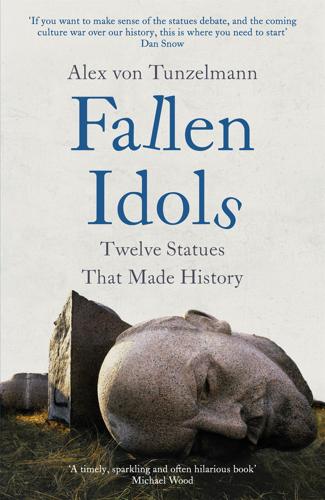
Fallen Idols: Twelve Statues That Made History
by
Alex von Tunzelmann
Published 7 Jul 2021
This would become a national, then international movement of loosely aligned groups advocating for justice and against racial discrimination. It was not long before Black Lives Matter protests began in New Orleans. On 30 November 2014, in response to the decision not to indict police officer Darren Wilson for the fatal shooting of Michael Brown in Ferguson, Missouri, activists marched on Lee Circle. Around 300 protesters formed a ring around Lee’s statue, holding signs that said ‘Black Lives Matter’ and ‘Free Hugs’. ‘Monuments like these poison the democratic minds of the people,’ one activist, Leon Winters, said to the crowd.
…
Edward Colston’s statue reconsidered’, Open Democracy, 29 August 2016; Ellie Pipe, ‘New Plaque on Colston statue declares Bristol slavery capital’, Bristol 24/7, 17 August 2017; Martin Booth, ‘Colston statue given ball and chain’, Bristol 24/7, 6 May 2018; Tristan Cork, ‘100 human figures placed in front of Colston statue in city centre’, Bristol Live, 18 October 2018. 26Quoted in Tristan Cork, ‘Theft or vandalism of second Colston statue plaque “may be justified” – Tory councillor’, Bristol Live, 23 July 2018; for the golliwog story, see David Ward, ‘Golliwog stunt leaves Tory in a jam’, Guardian, 6 September 2001. 27For a longer discussion of this, see Roger Ball, ‘The Edward Colston “corrective” plaque: Sanitising an uncomfortable history’, published by the Bristol Radical History Group, n.d. [2019], https://www.brh.org.uk/site/articles/the-edward-colston-corrective-plaque/. 28Tristan Cork, ‘Second Colston statue plaque not axed and will happen but mayor steps in to order a re-write’, Bristol Live, 25 March 2019. 29Catherine Shoard, ‘John Boyega’s rousing Black Lives Matter speech wins praise and support’, Guardian, 4 June 2020. 30Twitter: @beardedjourno: ‘Historic scenes in Bristol as protesters kneel on the neck of the toppled statue of Edward Colston for eight minutes. blacklivesmatter’, 7 June 2020, 3:13 p.m. Photograph included in tweet. See also Luke O’Reilly, ‘Black Lives Matter protesters in Bristol topple statue of slave trader Edward Colston’, Evening Standard, 7 June 2020. 31Twitter: @icecube, 7 June 2020, 5:09 p.m.; @MomentumBristol, 7 June 2020, 16:05 p. m.; TikTok: rhianna_jay, ‘bristol really ran up on edward colston’; Twitter; @DrFuck_, 8 June 2020, 9:22 a.m.. 32Twitter: @sajidjavid, 7 June 2020, 5:36 p.m.; 10 Downing Street statement quoted in ‘Edward Colston: Bristol slave trader statue was “an affront’”, BBC News, 8 June 2020; statement by the Society of Merchant Venturers, 12 June 2020, https://www.merchantventurers.com/news/statement-from-the-society-of-merchant-venturers/. 33Councillor Richard Eddy quoted in Tristan Cork, ‘Edward Colston was “a hero” for Bristol says outraged Tory councillor’, Bristol Live, 9 June 2020; Robinson quoted in Joel Golby, ‘A bat signal has gone out to Britain’s proud patriots: save our statues’, Guardian, 10 June 2020; Will Heaven, ‘Why Edward Colston’s statue should have stayed up’, The Spectator, 7 June 2020. 34David Olusoga, ‘The toppling of Colston’s statue is not an attack on history.
…
Hesitate no longer; buy this book’ Suzannah Lipscomb, author, award-winning historian and broadcaster By Alex Von Tunzelmann Indian Summer: The Secret History of the End of an Empire Red Heat: Conspiracy, Murder and the Cold War in the Caribbean Reel History: The World According to the Movies Blood and Sand: Suez, Hungary, and Eisenhower’s Campaign for Peace About the Book A hugely entertaining and informative narrative on one of the key arguments raging across the globe. In 2020, statues across the world were pulled down in an extraordinary wave of global iconoclasm. From the United States and the United Kingdom to Canada, South Africa, the Caribbean, India, Bangladesh, and New Zealand, Black Lives Matter protests defaced and hauled down statues of slaveholders, Confederates, and imperialists. Edward Colston was hurled into the harbour in Bristol, England. Robert E. Lee was covered in graffiti in Richmond, Virginia. Christopher Columbus was toppled in Minnesota, beheaded in Massachusetts, and thrown into a lake in Virginia.
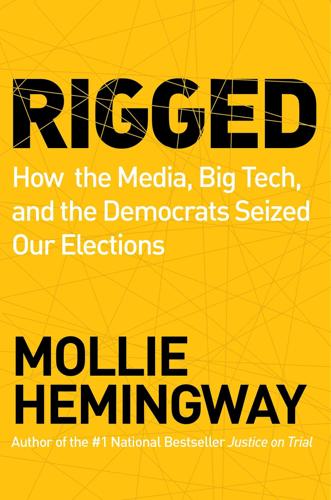
Rigged: How the Media, Big Tech, and the Democrats Seized Our Elections
by
Mollie Hemingway
Published 11 Oct 2021
Louis Police Captain Killed in Looting,” Fox News, June 9, 2020, https://www.foxnews.com/us/hundreds-honor-david-dorn-retired-st-louis-police-captain-killed. 35. “Race Relations,” Gallup, n.d., https://news.gallup.com/poll/1687/race-relations.aspx. 36. Scott Walter, “The Founders of Black Lives Matter,” First Things, March 29, 2021, https://www.firstthings.com/web-exclusives/2021/03/the-founders-of-black-lives-matter. 37. Ibid. 38. Mike Gonzales, “To Destroy America,” City Journal, September 1, 2020, https://www.city-journal.org/marxist-revolutionaries-black-lives-matter. 39. “What We Believe” Black Lives Matter, archive.com, n.d., https://archive.vn/X4efm. 40. “The Movement for Black Lives,” Movement for Black Lives website, n.d., https://m4bl.org/. 41.
…
According to data from the Armed Conflict Location and Event Data Project (ACLED), from May 24 through August 29 there were 11,541 “civil-society incidents,” which encompass Black Lives Matter protests. Of those events, 1,101 devolved into some form of violence or rioting, and 933 of the violent incidents directly involved events affiliated with BLM.66 The media’s spin on ACLED’s report on the summer of violence was predictable, if still insulting. “The vast majority of Black Lives Matter protests—more than 93%—have been peaceful, according to a new report,” wrote Time.67 There really is no denying that, whatever its stated intentions, Black Lives Matter was an especially violent social movement. Further, the statistics didn’t begin to give a full sense of the tragedy—at least twenty-five people were killed as a result of the violence.
…
Tristan Justice, “Washington Redskins Deliberate Name Change to Appease Woke Mobs,” The Federalist, July 3, 2020, https://thefederalist.com/2020/07/03/washington-redskins-deliberate-name-change-to-appease-woke-mobs/. 53. Sean Neumann, “WNBA Players Want Atlanta Co-Owner Sen. Kelly Loeffler Out after She Opposed Black Lives Matter,” Yahoo, July 8, 2020, https://www.yahoo.com/now/wnba-players-want-atlanta-co-164857843.html. 54. Evita Duffy, “WNBA Players Call for Sen. Kelly Loeffler to Step Down as Team Owner Over ‘Black Lives Matter’ Remarks,” The Federalist, July 10, 2020, https://thefederalist.com/2020/07/10/wnba-players-call-for-sen-kelly-loeffler-to-step-down-as-team-owner-over-black-lives-matter-remarks/. 55. Kamala Harris (@KamalaHarris), “If you’re able to, chip in now…,” Twitter, June 1, 2020, 4:34 p.m., https://twitter.com/KamalaHarris/status/1267555018128965643. 56.

The Ones We've Been Waiting For: How a New Generation of Leaders Will Transform America
by
Charlotte Alter
Published 18 Feb 2020
The Washington Times, August, 23, 2014, washingtontimes.com/news/2014/aug/23/ferguson-protesters-confront-jesse-jackson-when-yo/. “I wanted to be a part of it.”: Charlotte Alter, “Black Lives Matter Protest in New York Attracts New People,” TIME, July 10, 2016, time.com/4400211/black-lives-matter-new-york-protest/. 58 percent of millennials approved: Susan Page and Karina Shedrofsky, “Poll: How Millennials View BLM and the Alt-right,” USA Today, October 31, 2016, usatoday.com/story/news/politics/onpolitics/2016/10/31/poll-millennials-black-lives-matter-alt-right/92999936/. than their black peers: Cathy J. Cohen, et al., “The ‘Woke’ Generation?” Millennial Attitudes on Race in the US,” GenForward, October 2017, genforwardsurvey.com/assets/uploads/2017/10/GenForward-Oct-2017-Final-Report.pdf.
…
She thought of her brother, Joey, who was almost young enough to be Trayvon’s age. “I continue to be surprised at how little Black lives matter,” she wrote. “Black people. I love you. I love us. Our lives matter.” Garza’s post was shared by her friend and fellow activist Patrisse Cullors, whom she had met on a dance floor in Providence, Rhode Island, in 2005. Cullors reposted it with the hashtag #blacklivesmatter. Cullors and Garza reached out to a third young activist, Opal Tometi, who set up the #blacklivesmatter Twitter and Tumblr accounts. The hashtag began to go viral. Twitter was to Black Lives Matter what Tumblr had been to Occupy—the living manifesto of the movement.
…
According to the ACLU, black students were suspended or expelled three times more than white students, and more than 30 percent of kids arrested in school were black. Those young teens were often fed directly into the criminal justice system. All this had been happening for decades: Black Lives Matter just gave people a vocabulary to describe it. Until 2013, movements for racial justice in the United States tended to coalesce around small groups of black men, or what The New Yorker’s Jelani Cobb called “the great-black-man theory of history.” But Black Lives Matter activists were more interested in what they called a “leaderful” movement, like Occupy Wall Street, where no single person called the shots. There was such a distaste for what Garza called “the model of the black preacher leading people to the promised land” that when Rev.
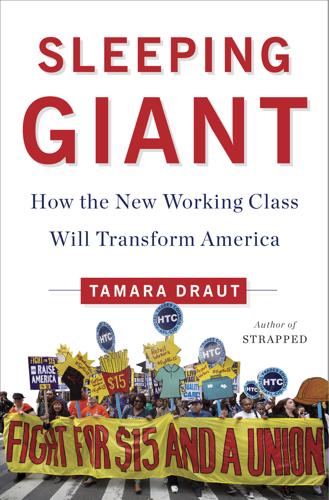
Sleeping Giant: How the New Working Class Will Transform America
by
Tamara Draut
Published 4 Apr 2016
Patrisse Cullors, Alicia Garza, and Opal Tometi came up with a profound yet simple rallying cry for dignity: Black Lives Matter. By the end of the night, the three women made the decision to start a movement, one that would seamlessly blend online and on-the-ground strategies. I met Cullors (whose story is featured in Chapter 5) and Garza at Demos’s gala in 2015, where we honored all three women with a Transforming America Award (Tometi was not able to attend). By one estimate, there were more than one thousand Black Lives Matter protests and demonstrations around the globe between June 2014 and October 2015.9 The demonstrations erupted after the murders of unarmed black men, teenagers, and children by police officers, from Michael Brown in Ferguson to Eric Garner in Staten Island to Tamir Rice in Cleveland, and sadly, many more black men and black women are killed with each passing month.
…
Like the civil rights movement a half century ago, Black Lives Matter is a broad demand for freedom from political and economic oppression. But unlike the earlier movement, Cullors, Garza, and Tometi have purposefully put black women in the forefront of the movement and emphasized the voices of queer, transgendered, and disabled black people. Alicia Garza explained to me why it’s so important that this movement not simply replicate the leadership and strategies of its predecessors. Her analysis about why there is a need to proclaim that “black lives matter” today, a half century after the civil rights act was passed, lies in part in what can now be seen as the flawed strategies pursued back then.
…
This is about saying that black folks come in all different sizes, all different shapes. We’re very different and complex as a people, and that deserves to be celebrated. And the humanity of all of us deserves to be affirmed, and that we all have value.” She and the codirectors of Black Lives Matter are determined to make sure that every single presidential candidate formulates a concrete position on what he or she will do to make black lives matter in this country. And they expect that answer to go far beyond criminal justice reform. “For us, it’s less about endorsing candidates than it is to build the kind of coalition that can hold whoever is elected accountable to meeting the needs and dreams of our communities.”
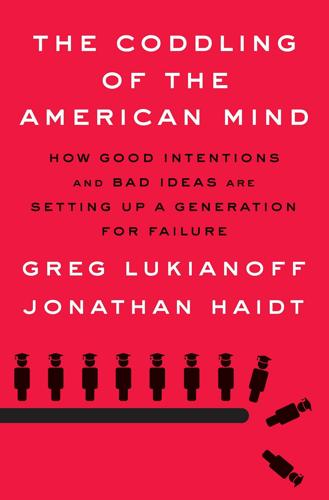
The Coddling of the American Mind: How Good Intentions and Bad Ideas Are Setting Up a Generation for Failure
by
Greg Lukianoff
and
Jonathan Haidt
Published 14 Jun 2018
For an edited version of the interaction in an extraordinary video, see: Now This Politics (Producer). (2017, September 8). This unexpected moment happened when Black Lives Matter activists were invited on stage at a pro-Trump rally [Video file]. Retrieved from https://www.facebook.com/NowThisNews/videos/1709220972442719 83. Hains, T. (2017, September 20). “Black Lives Matter” leader wins over Trump supporters: “If we really want America great, we do it together.” Real Clear Politics. Retrieved from https://www.realclearpolitics.com/video/2017/09/20/black_lives_matter_leader_wins_over_trump_supporters_if_we_really_want_america_great_we_do_it_together.html Chapter 4: Intimidation and Violence 1.
…
Now they were coming back around. People cheered. Someone in the crowd shouted, “All lives matter!” which is usually intended as a rebuke to those who say that “black lives matter.” But Newsome responded in the tradition of Pauli Murray, by drawing a larger circle around everyone in the crowd: “You’re right, my brother, you’re right. You are so right. All lives matter, right? But when a black life is lost, we get no justice. That is why we say ‘black lives matter.’ . . . If we really want to make America great, we do it together.” The crowd cheered and chanted “USA-USA . . .” In an instant, the two groups were no longer “us” and “them.”
…
YEAR MAJOR NEWS STORIES RELATED TO SOCIAL JUSTICE 2009 Inauguration of Barack Obama 2010 Tyler Clementi suicide (raises awareness of bullying of LGBT youth) 2011 Occupy Wall Street (raises awareness of income inequality) 2012 Killing of Trayvon Martin; reelection of Barack Obama; Sandy Hook elementary school massacre (raises interest in gun control) 2013 George Zimmerman acquitted of murder in the death of Trayvon Martin; Black Lives Matter founded 2014 Police killing of Michael Brown in Ferguson, Missouri; police killing of Eric Garner in New York City (with video); Black Lives Matter protests spread across America; lead in drinking water in Flint, Michigan, raises awareness of “environmental justice” 2015 Supreme Court legalizes gay marriage; Caitlyn Jenner publicly identifies as a woman; white supremacist Dylann Roof massacres nine black worshipers in Charleston, South Carolina; Confederate flags removed from state capitol in South Carolina; police killing of Walter Scott (with video); universities erupt in protest over racism, beginning at Missouri and Yale, then spreading to dozens of others 2016 Terrorist Omar Mateen kills forty-nine in attack on gay nightclub in Orlando, Florida; police killing of Alton Sterling (with video); police killing of Philando Castile (with video); killing of five police officers in Dallas; quarterback Colin Kaepernick refuses to stand for national anthem; North Carolina requires transgender people to use bathrooms corresponding to the sex on their birth certificates; protest against Dakota Access Pipeline at Standing Rock Indian Reservation; nomination and election of Donald Trump 2017 Trump inauguration; Trump attempts to enact various “Muslim bans”; women’s march in Washington; violent protests against campus speakers at UC Berkeley and Middlebury; Trump bans transgender people from military service; Trump praises “very fine people” in Charlottesville march, during which a neo-Nazi kills Heather Heyer and injures others by driving a car into a crowd; fifty-eight killed in largest mass shooting in U.S. history in Las Vegas; start of the #MeToo movement, to expose and stop sexual harassment and assault 2018 (through March) Nikolas Cruz, expelled student with history of emotional and behavioral disorders, kills seventeen at high school in Parkland, Florida; students organize school walkouts and marches for gun control across the United States Important, terrifying, thrilling, and shocking events happen every year, but the years from 2012 through 2018 seem like the closest we’ve come to the intensity of the stretch from 1968 to 1972.
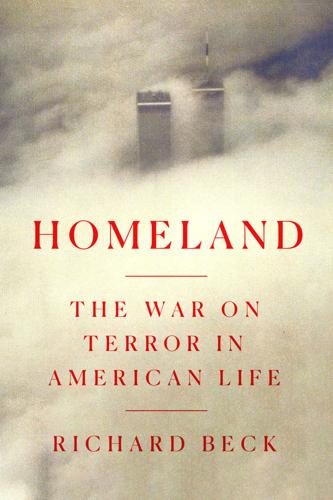
Homeland: The War on Terror in American Life
by
Richard Beck
Published 2 Sep 2024
Occupy Wall Street and (to a certain extent) the first iteration of Black Lives Matter articulated most of their demands as appeals for help from the U.S. government. Occupy asked the government to raise taxes on the wealthy, reverse the Supreme Court’s decision in Citizens United v. FEC, and get big money out of the political process. Black Lives Matter asked federal, state, and municipal governments to ban abusive practices such as stop and frisk, require police officers to wear body cameras, and in some cases pull police officers off the streets entirely. Black Lives Matter included more radical actions as well, but both movements fundamentally believed that their goals could not be achieved unless the U.S. government was willing to cooperate.
…
BACK TO NOTE REFERENCE 59 “Black Lives Matter Protests,” Amnesty International, June 23, 2020, www.amnesty.org/en/latest/news/2020/06/usa-unlawful-use-of-force-by-police-at-black-lives-matter-protests. BACK TO NOTE REFERENCE 60 Meg Kelly, Joyce Sohyun Lee, and Jon Swaine, “Partially Blinded by Police,” Washington Post, July 14, 2020, www.washingtonpost.com/investigations/2020/07/14/george-floyd-protests-police-blinding. BACK TO NOTE REFERENCE 61 Valerie Pavilonis, “Fact Check: Thousands of Black Lives Matter Protesters Were Arrested in 2020,” USA Today, Feb. 22, 2022, www.usatoday.com/story/news/factcheck/2022/02/22/fact-check-thousands-black-lives-matter-protesters-arrested-2020/6816074001.
…
In addition, Occupy provided an intense and lasting education in political action for a generation of young Americans who had come of age amid a devastating recession and shrinking prospects for economic stability, allowing other protest movements to flourish in its wake. The most influential of these successors has obviously been Black Lives Matter (BLM), an antiracist movement that first emerged in 2013 to protest the frequent killing of unarmed Black Americans by police officers. Like Occupy, Black Lives Matter proved to be much more durable than the antiwar protests of 2003, permanently altering how the American political system oriented itself around issues of racism and proving capable of reappearing with even greater force when police killings flared up again, as they did during the first year of the COVID-19 pandemic.
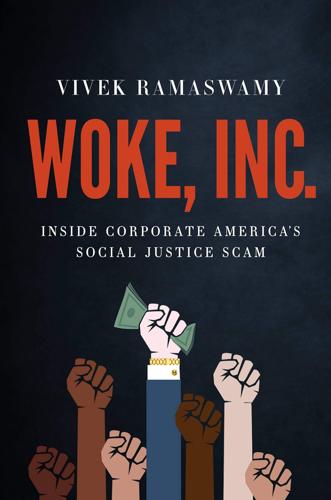
Woke, Inc: Inside Corporate America's Social Justice Scam
by
Vivek Ramaswamy
Published 16 Aug 2021
It was as though they had all hired the same PR consultant to copy and paste the same text for different clients. The pressure to publicly support BLM started to weigh heavily on me personally. My peers pressured me to be courageous enough to do the same thing that, well, everyone else was doing. Of course I believed that black lives mattered. But I definitely didn’t believe in the stated goals of the Black Lives Matter organization—for example, “disrupting the nuclear family structure.” Wouldn’t that harm black families? So I chose to take a different approach and sent the following email to the company: Dear Roivant team, I enjoyed seeing all of you at the townhall on Friday.
…
Of course, “diversity and perspectives” is different from a diversity of perspectives.7 Larry Fink, CEO of BlackRock, the world’s largest investment firm, issued an open letter to CEOs describing a “Sustainability Accounting Standards Board” that would tackle issues ranging from labor practices to workforce diversity to climate change. Scores of others followed. If the turn of the decade was a tipping point, then the murder of George Floyd, a black man, at the hands of a white police officer in May 2020 broke the dam. Companies ranging from Apple to Uber to Novartis issued lengthy statements in support of the Black Lives Matter (BLM) movement. In a surprising about-face, L’Oréal rehired a model it had fired for her comments about “the racial violence of white people.” Well-respected companies like Coca-Cola implemented corporate programs teaching employees “to be less white” and that “to be less white is to be less oppressive, be less arrogant, be less certain, be less defensive, be more humble” and that “white people are socialized to feel that they are inherently superior because they are white.”8 Starbucks said it would mandate anti-bias training for executives and tie their compensation to increasing minority representation in its workforce.
…
Khosrowshahi stated that Uber was donating millions to fight racism and that “Uber stands in solidarity with the Black community and with peaceful protests against the injustice and racism that have plagued our nation for too long.”1 The company announced that it would promote black-owned businesses on its ride-sharing app and tie executive pay to “diversity goals.” Lastly, Khosrowshahi wrote, “Let me speak clearly and unequivocally: Black Lives Matter.” In the weeks later, he pledged that Uber would be an “anti-racist company.” Meanwhile, at the exact same time, he was aggressively lobbying California to pass Proposition 22, which permits Uber to classify its drivers as independent contractors rather than as employees. Uber said it would go out of business if it had to reclassify drivers as employees, pleading unprofitability even as it doled out millions to BLM.

Twitter and Tear Gas: The Power and Fragility of Networked Protest
by
Zeynep Tufekci
Published 14 May 2017
According to NAACP statistics, the rate of killings by police has not gone up drastically in the past decade (or even when it is compared with earlier years). However, there has been a great shift in the amount of attention paid to these killings, thanks to a movement that was fueled by digital technologies, now often called Black Lives Matter in reference to the hashtag that the movement rallied around.24 Until Black Lives Matter came on the scene, formal organizations like the NAACP had not been able to make the topic part of the national conversation. Instead, most mainstream politicians endorsed “tough on crime” policies, often involving heavy mandatory sentences applied in the absence of judicial discretion, without any discussion of police accountability (or of the fact that crime rates have been falling for a long time).
…
One poll showed a striking twenty-one-point jump in the number of young people—most of whom were more heavily engaged in social media than their elders—who thought that police were unfair to black people in the year after the death of Travyon Martin (from 42 percent to 63 percent).27 A 2015 poll showed that almost half of all Americans now thought that racism was a problem, compared with about 28 percent three years before that.28 Such big jumps in opinions are rare, and the fact that the shift was mostly confined to young people (under age twenty-nine) as the issue gathered so much attention first on social media strongly suggests at least a partial cause of this change. Black Lives Matter has exhibited great narrative capacity, and like the Occupy movement’s success in highlighting inequality, it has changed the public conversation. The Black Lives Matter movement is young, and how it will develop further capacities remains to be seen. Crucially, social media allowed the movement to take local events, like a police killing in Ferguson, and make them nationally salient.
…
Philip Elmer-Dewitt, “First Nation in Cyberspace,” Time, December 6, 1993, http://www.chemie.fu-berlin.de/outerspace/internet-article.html. 35. Sidney G. Tarrow and J. Tollefson, Power in Movement: Social Movements, Collective Action and Politics (Cambridge: Cambridge University Press, 1994). 36. “Voters Tell Prosecutors, Black Lives Matter,” New York Times, March 18, 2016, http://www.nytimes.com/2016/03/18/opinion/voters-tell-prosecutors-black-lives-matter.html. 37. The Obama 2008 and 2012 campaigns were run quite differently in terms of digital tool use and other dimensions as well. See Micah L. Sifry, The Big Disconnect: Why The Internet Hasn’t Transformed Politics (Yet) (New York: OR Books, 2014). 38.
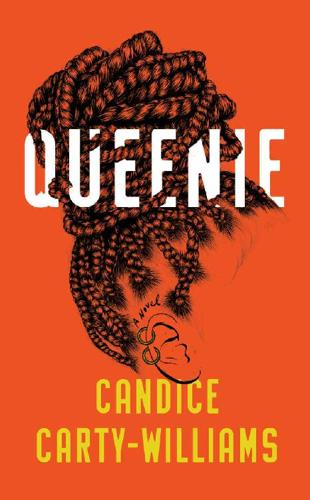
Queenie
by
Candice Carty-Williams
Published 19 Mar 2019
“Well, I was thinking I could pitch something about how it would be great to see all the liberal white women who were tweeting fervently from the women’s march at a Black Lives Matter march?” I said. “I beg your pardon?” Gina asked me. “Well, all of these white women in the office seem to bleat about going to the women’s march, but I was at a Black Lives Matter march yesterday and I didn’t see anyone I recognized.” “Bit of a combative attitude, don’t you think?” Gina asked, frowning. “Rework what you’re saying, and come along to the pitch meeting at four.” * * * “. . . so I just think that we could use that argument to shine more of a light on Black Lives Matter, and if we do this in the context of the women’s march, we make it more ‘palatable’ for our readers,” I said to the room, hoping that I’d managed to deliver my pitch and mask the fear in my voice with what I hoped was conviction.
…
” * * * “. . . so I just think that we could use that argument to shine more of a light on Black Lives Matter, and if we do this in the context of the women’s march, we make it more ‘palatable’ for our readers,” I said to the room, hoping that I’d managed to deliver my pitch and mask the fear in my voice with what I hoped was conviction. “All that Black Lives Matter nonsense,” scoffed an older man I recognized from the review supplement. “All lives matter.” “What?” I asked, blinking. I took a secret deep breath. “What about the lives of Latinos, of Asians, the lives of—I’m white, does my life not matter?” he continued. “I’m not . . . suggesting that the lives of other ethnic groups do not matter,” I explained, gobsmacked that I had to explain. “I don’t think that any part of Black Lives Matter even hints that other lives are disposable?” “Well, when you put the lives of some and not all on a pedestal, what else are you doing?”
…
“At one point he asked if I agreed that young black women got pregnant just so they could get council houses, to which I obviously asked if he’d taken something—” “Tell me you’re joking, fam.” “I wish I was. He said all sorts of things that made me want to set his house on fire!” Kyazike clenched her fist. “And do you know what, this all began when he accused me of being a ‘Black Lives Matter girl.’ ” “This is making me so fucking mad—do you want me to get some black boys to run up in his house, raid the ting?” Kyazike offered. “No, no!” “ ’Cause then he’ll know that black lives matter, trust me.” “No, that’ll give him justification to keep on thinking that we’re all aggressive. But thank you.” I patted her on the hand. “I just don’t know where it came from. All of his texts were so tame!”
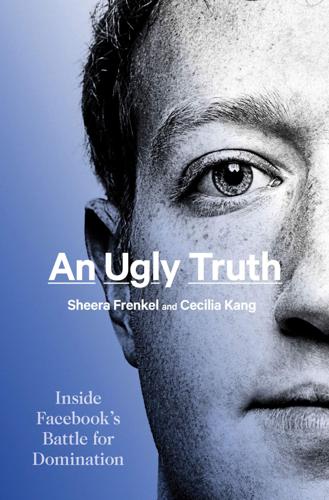
An Ugly Truth: Inside Facebook's Battle for Domination
by
Sheera Frenkel
and
Cecilia Kang
Published 12 Jul 2021
he wrote to Nuñez and attached what looked like a Facebook post written by Zuckerberg. It was a memo to all employees that had been posted on the general Workplace group.2 In the post, Zuckerberg addressed the brewing scandal at the company’s Menlo Park headquarters over the defacement of Black Lives Matter slogans written on the walls of its office buildings. “‘Black Lives Matter’ doesn’t mean other lives don’t,” he wrote, pointing out that the company had an open policy of what employees could write on the office walls or put up in poster form. But “crossing out something means silencing speech, or that one person’s speech is more important than another’s.”
…
And for nearly six months, some employees shared their grievances with reporters, passing on internal memos, speeches, and emails. Executives were furious; Boz in particular ranted about how Facebook was a trusted family and that a small group of outsiders was corrupting and corroding its values. After a story headlined “Mark Zuckerberg Asks Racist Facebook Employees to Stop Crossing Out Black Lives Matter Slogans”1 appeared on the tech site Gizmodo that February, the senior leaders turned to Sonya Ahuja, a former engineer whose internal investigations unit hunted down everything from harassment and discrimination complaints to leakers and whistleblowers. Ahuja’s department had an eagle’s-eye view into the daily workings of Facebook employees, with access to all communications.
…
He asked some editors, and they decided that readers would be intrigued by insights into Facebook’s internal culture. The story, published on February 25, at 12:42 p.m., did not look good for Zuckerberg.3 His own words were being used to go after his employees, painting a picture of Facebook employees as privileged elitists out of touch with the Black Lives Matter movement. The call went down to Ahuja, the so-called rat catcher, to find the Facebook employee responsible for the leak. Ahuja’s team searched email and phone records of Facebook employees to see who might have been in contact with Nuñez. The group could easily view messages written on Facebook, but few employees were likely to have been naïve enough to message a member of the press from their own Facebook pages.
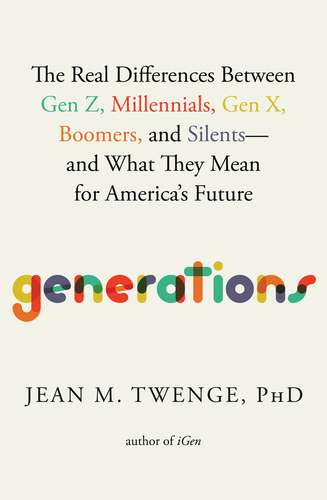
Generations: The Real Differences Between Gen Z, Millennials, Gen X, Boomers, and Silents—and What They Mean for America's Future
by
Jean M. Twenge
Published 25 Apr 2023
“I continue to be surprised at how little Black lives matter,” she wrote. “Black people. I love you. I love us. Our lives matter.” Fellow activist Patrisse Cullors (b. 1983) replied in the comments with a hashtag: #BlackLivesMatter. “I thought it was a pound sign!” Garza said later. “She broke down what hashtags are to me. And that’s how #BlackLivesMatter was born.” Cullors and Garza then reached out to activist Opal Tometi (b. 1984), who further publicized the hashtag on social media and began to set up accounts in the name of the movement. Thus Black Lives Matter was founded by three Millennials, its creation spurred by social media.
…
Figure 5.65: Percent of U.S. White political independents who oppose or support the Black Lives Matter movement, 2017–2022 Source: CIVIQS poll of registered voters Notes: “Neither support nor oppose” and “unsure” not shown. Support was high and relatively unchanged among Blacks of all parties and White Democrats, and low and relatively unchanged among White Republicans. There are some signs that the protests of 2020 created backlash—or at least a swing back to previous attitudes. Support for the Black Lives Matter movement, which had increased markedly among White political independents during the initial protests after the death of George Floyd in late May 2020, declined over the next two years (see Figure 5.65).
…
In a 2021 Pew Center poll, 71% of Millennials: Alec Tyson, Brian Kennedy, and Cary Funk, “Gen Z, Millennials Stand Out for Climate Change Activism, Social Media Engagement with Issue,” Pew Research Center, May 26, 2021. “The BLM ride was organized in the spirit of the early 1960s interstate Freedom Riders”: Isabella Mercado, “The Black Lives Matter Movement: An Origin Story,” Underground Railroad Education Center, Jordan Zarkarin, “How Patrisse Cullors, Alicia Garza, and Opal Tometi Created the Black Lives Matter Movement,” Biography.com, January 27, 2021. “I am not going to stand up to show pride in a flag for a country”: Steve Wyche, “Colin Kaepernick Explains Why He Sat during National Anthem,” NFL.com, August 27, 2016.
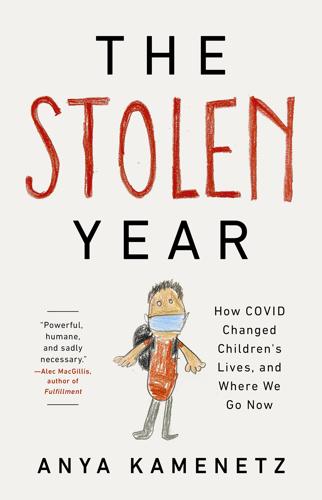
The Stolen Year
by
Anya Kamenetz
Published 23 Aug 2022
The fact that teachers like Annie Tan largely went into the classroom when they were called underlines that the core intention of teachers in opposing reopening was to use their leverage to make schools safer for both themselves and their students. And perhaps, to seize the pandemic pause as a chance to reconsider just whose interests public schools had been serving in the years prior to 2020 and whether they could be made to do better. BLACK LIVES MATTER AND SCHOOL REOPENING The Black Lives Matter uprising of the summer of 2020 influenced the school reopening debate. Black, Latinx, and Asian American families were more reluctant to return to school in person. Teachers, who are primarily white women, pointed to the disproportionate impact of COVID-19 on Black and Brown people in arguing against opening schools.
…
The election results were not certified until the wee hours of the morning. “Why are they doing this?” Ruby wanted to know. The Black Lives Matter protests had made sense to her, but this kind of destructiveness she couldn’t fathom. Jeannie regretted that her daughter had to see her so upset, with no answers to give. Other people in her community did have answers. Jeannie’s ex-husband’s coworkers at the feed mill said that the Democrats had dropped off the protesters, that they were impostors there to make Trump look bad; and in the same breath they’d say, if Black Lives Matter protests were all fine, then the insurrectionists were fine, too, just expressing their First Amendment rights.
…
SURVIVAL PENDING REVOLUTION One other group was crucial in getting free school lunches funded: the Black Panther Party. Bobby Seale and Huey Newton met as students at Merritt Community College in Oakland, California, and founded the group in 1966. While they’ve long been caricatured as violent militants, the Black Panthers’ legacy is being reconsidered lately in light of the Black Lives Matter movement, for example, in the Oscar-winning 2021 film Judas and the Black Messiah. There’s more attention these days to the group’s mutual aid and direct action work, which Newton called “survival pending revolution.” It included a network of free clinics, a school, and the Free Breakfast for School Children Program that first opened its doors at St.
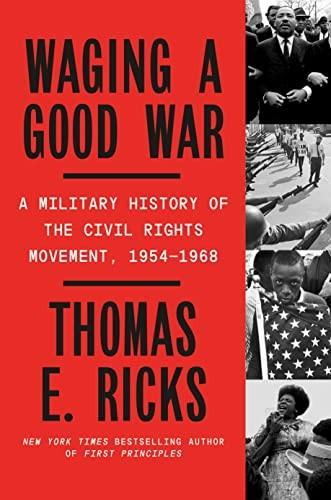
Waging a Good War: A Military History of the Civil Rights Movement, 1954-1968
by
Thomas E. Ricks
Published 3 Oct 2022
“start to think about themselves”: Quoted in “Protests in Perspective,” 3. “laid the foundation”: “Freedom Summer,” Movement for Black Lives, m4bl.org/freedom-summer. Woodly traces the roots: Deva Woodly, Reckoning: Black Lives Matter and the Democratic Necessity of Social Movements (Oxford University Press, 2022), 136. “Black Lives Matter has struggled”: Clayton, “Black Lives Matter and the Civil Rights Movement.” “Activists picked places like Birmingham”: Quoted in Sujata Gupta, “What the 1960s Civil Rights Protests Can Teach Us About Fighting Racism Today,” ScienceNews, June 5, 2020. See also Omar Wasow, “Agenda Seeding: How 1960s Blacks Protests Moved Elites, Public Opinion and Voting,” American Political Science Review 114, no. 3 (August 2020).
…
Deva Woodly, a professor of politics at the New School and author of a thorough study of the Black Lives Matter movement, concludes that the purpose of political organizing is to help people “start to think about themselves … as the kind of people who can act” to bring about democratic change. That is what was happening, she says, with the millions of people who demonstrated against police brutality in 2020. It also, of course, was a major purpose of the Freedom Summer in Mississippi in 1964. So it is no surprise that the Movement for Black Lives—a coalition of more than fifty groups, including the Black Lives Matter Global Network Foundation—features on its website a section about Freedom Summer, stating that it “laid the foundation for the electoral-justice and political-organizing efforts of progressive organizations today.”
…
: Alicia Garza, The Purpose of Power: How We Come Together When We Fall Apart (One World, 2020), 110–11. Then came more deaths: Barbara Ransby, Making All Black Lives Matter: Reimagining Freedom in the Twenty-First Century (University of California Press, 2018), 101. two-thirds of white Americans: Bob Harrison, “Policing in the Post-Floyd Era,” Rand Review, July–August 2021, 7. “It’s easy to be reactive”: Quoted in Andrew Marantz, “How to Stop a Power Grab,” New Yorker, November 23, 2020. there are some major differences: The details here are from Ransby, Making All Black Lives Matter, 46, 106–107. “Movement people will sometimes say”: Quoted in “That Movement Responsibility: An Interview with Judy Richardson on Movement Values and Movement History,” in Civil Rights History from the Ground Up: Local Struggles, a National Movement, ed.

The Smartphone Society
by
Nicole Aschoff
See Aschoff, “America’s Tipping Point?,” 305–25. 31. King, “#blacklivesmatter.” 32. King, “#blacklivesmatter.” 33. Meyerson, “The Founders of Black Lives Matter.’” 34. King, “How Three Friends.” 35. For a detailed review of these policies, see “Policing and Profit,” Criminal Procedure, Harvard Law Review, June 6, 2019. 36. For a deeper discussion of the Movement for Black Lives, see Taylor, From #BlackLivesMatter; Ransby, Making All Black Lives Matter. 37. Taylor, #BlackLivesMatter, 162. 38. Taylor, #BlackLivesMatter, 19. 39. McCarthy, “Americans Maintain a Positive View of Bernie Sanders.” 40.
…
We see a big-picture critique of a system that has enabled elites to capture unimaginable wealth and power while ordinary people have struggled to achieve a secure, dignified, and fulfilling life. Moreover, because these movements are digitally connected, they see themselves in each other. Modern-Day Revolt Black Lives Matter is an example of a modern-day revolt against capitalism’s violent, racist status quo—a digital-analog movement, or as BLM cofounder Patrisse Cullors calls it, “a social media/all out in the streets” organizing effort.31 The term “digital-analog” is a shorthand that captures the unique characteristic of modern-day movement building, which occurs on both digital and corporeal planes simultaneously.
…
Sunrise members are high-schoolers and college students scattered across the country, yet the organization has succeeded in starting a conversation about the sustainability of our for-profit system that the Democratic Party can’t ignore. The digital-analog quality of these movements also ties them to each other and to millions of ordinary people. These ties are visible in the movements’ networks of support and inspiration. Black Lives Matter and Bernie Sanders were both vocal supporters of the Standing Rock protests. Young members of Sunrise cite Occupy, BLM, March for Our Lives, and United We Dream, a youth-led immigration justice organization, as sources of inspiration.41 Congresswoman Alexandria Ocasio-Cortez of New York was inspired to run for elected office by a visit to the Standing Rock camp and is a champion of Sunrise.
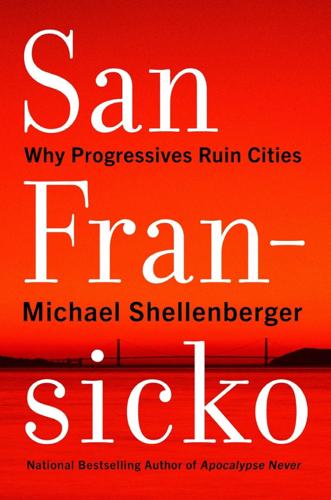
San Fransicko: Why Progressives Ruin Cities
by
Michael Shellenberger
Published 11 Oct 2021
They’re not representing Black Lives Matter. This is a whole other whatever. This has got to end.’ The [CHOP] crowd was 98 or 99 percent white. They don’t even live in Seattle! They hit a police officer in the back of the head with a baseball bat, and the one who did it goes, ‘I wish he didn’t have a helmet on.’” As a representative of the Capitol Hill community, Vickie felt compelled to stand up to the anarchists. “You’re not going to do this in my neighborhood!” she shouted. “How dare you disrespect George Floyd and his family! We don’t protest like this. Stop using Black Lives Matter to tear up the city.”
…
The share of civilians killed while fleeing from police declined from 39 percent of all legal intervention homicides in the sixties to just 12 percent by the late 1980s.83 Some departments need more accountability.84 City governments, for their part, can demand more transparency in the operation of police departments,85 and more training for officers,86 particularly related to working with mentally ill and substance-abusing homeless people.87 Rosenfeld felt the Black Lives Matter movement had the potential to improve policing. “It’s the existence and persistence and pressure brought about by social movements that keeps these issues on the front burner,” he said. “Just as the women’s movement and the victims’ rights movement kept the issues of the victims of sexual assault and the victims of intimate partner and family violence on the policy front burner.” “But then you need Black Lives Matter to be making a very different demand than ‘defund the police,’ right?” I asked. “Of course, you do,” he said.
…
Rebecca Tan et al., “Protesters Paint ‘Defund the Police’ Right Next to D.C.’s ‘Black Lives Matter’ Mural,” Washington Post, June 7, 2020, www.washingtonpost.com. 5. Chase DeFeliciantonio, “George Floyd Protest Briefly Shuts Down Golden Gate Bridge in San Francisco,” San Francisco Chronicle, June 6, 2020, www.sfchronicle.com; Matthias Gaffni, Matt Kawahara, Tatiana Sanchez, “Protesters Block Bay Bridge After Peaceful Day Filled with Marches,” San Francisco Chronicle, June 15, 2020, www.sfchronicle.com. 6. Rusty Simmons, “Black Lives Matter Protests Continue Around Bay Area for Fourth Weekend,” San Francisco Chronicle, updated June 22, 2020, www.sfchronicle.com 7.
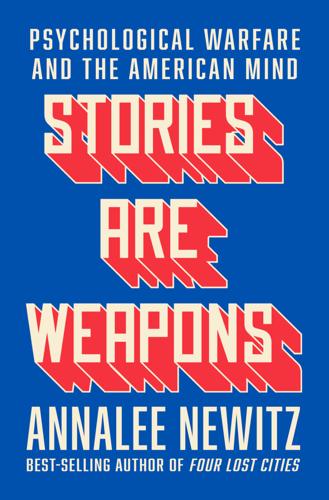
Stories Are Weapons: Psychological Warfare and the American Mind
by
Annalee Newitz
Published 3 Jun 2024
I hope you find peace in whatever way you can: in public works, in the arms of your loved ones, or in stories of a better world. Notes Preface: The Brain Fog of War 1. Corley, Cheryl, “Floyd’s Death Leads to Disinformation about Black Lives Matter Movement,” NPR, May 25, 2021. 2. Vertuno, Jim, “Texas Man to Be Sentenced for Murder in Shooting at Black Lives Matter Protest,” PBS, May 9, 2023. 3. Tameez, Hanaa’, “OpenAI Will Give Local News Millions to Experiment with AI,” Nieman Lab, July 18, 2023. 4. A Guide to Researching the History of Psychological Operations, Marquat Memorial Learning Resource Center, Fort Bragg, n.d. 5.
…
When I started researching this book in mid-2020, the world was locked down in a pandemic that was unleashing a torrent of propaganda the likes of which I had never seen. As a friend of mine lay dying of COVID on a ventilator, President Donald Trump promised that we could cure the disease with light and deworming medication for horses. After police killed George Floyd, I watched as disinformation about the Black Lives Matter movement piled up on social media,1 where anonymous accounts falsely blamed protesters for violence.2 A conspiracy theory from 2016 about pizza-eating pedophiles radicalized a huge number of right-wing extremists, who later joined crowds storming the Capitol, trying to murder the vice president and overturn the 2020 presidential election.
…
Though only about 270,000 people took the app test, Cambridge Analytica was able to grab personal information from 87 million accounts. Wylie and Kogan believed this profile data could reveal Americans’ secret desires and latent tendencies—especially the little thumbs-up icons that signaled engagement with topics from immigration and guns to LGBT rights and Black Lives Matter. Knowing people’s likes and dislikes would make them ripe for manipulation, as long as the right political messages were crafted to trigger them. Bannon was interested in reaching people who exhibited what psychologists call the “dark triad” of antisocial personality traits: narcissism, Machiavellianism (manipulativeness), and psychopathy (lack of care for others).

Stakeholder Capitalism: A Global Economy That Works for Progress, People and Planet
by
Klaus Schwab
Published 7 Jan 2021
Some Experts Say Reward C.E.O.s for It,” Peter Eavis, The New York Times, July 2020, https://www.nytimes.com/2020/07/14/business/economy/corporate-diversity-pay-compensation.html. 62 “Starbucks Ties Executive Pay to 2025 Diversity Targets,” Heather Haddon, The Wall Street Journal, October 2020, https://www.wsj.com/articles/starbucks-ties-executive-pay-to-2025-diversity-targets-11602680401. 63 “Black Lives Matter—for Pakistan's Sheedi Community Too,” Zahra Bhaiwala, Neekta Hamidi, Sikander Bizenjo, World Economic Forum Agenda, August 2020, https://www.weforum.org/agenda/2020/08/black-lives-matter-for-pakistans-sheedi-community-too/. 64 Global Shapers Community, World Economic Forum, https://www.globalshapers.org/. 65 “Meet the First African-Pakistani Lawmaker,” The Diplomat, September 2018, https://thediplomat.com/2018/09/meet-the-first-african-pakistani-lawmaker/. 66 “Black Lives Matter—for Pakistan's Sheedi Community Too,” Zahra Bhaiwala, Neekta Hamidi, Sikander Bizenjo, World Economic Forum Agenda, August 2020, https://www.weforum.org/agenda/2020/08/black-lives-matter-for-pakistans-sheedi-community-too/.
…
The fact that worker wages haven't gone up in a commensurate way in the United States for decades led to a less cohesive and resilient society, which was ill-prepared for once-in-a-century events such as COVID-19 or the disruption of the Fourth Industrial Revolution. And it may have been at least partially the result of exclusive social and political policy choices as well, as was brought to the fore by the Black Lives Matter movement in the United States. After decades of facing discriminatory government policies and actions, many rose up to decry this situation. The lessons from countries such as Malaysia, where inclusive policies have been a focal point for policymakers, shows that a more inclusive approach to government could have and can still avoid such unequal outcomes.
…
Those rules were supposed to help all workers on zero-hours contracts, as well as domestic workers and on-demand drivers or couriers.59 But as labor economists such as Valerio Di Stefano of the University of Leuven pointed out,60 they fell short in providing similar rights and benefits to others freelancers, such as the IT workers from countries such as Ukraine, Serbia, Pakistan, or India I described earlier. Advocacy Groups A final segment of civil society whose concerns should be heard in the stakeholder model are the newly formed advocacy groups and other movements asking for social justice. Whether it concerns Black Lives Matter, LGBTQ rights groups, men and women advocating the equal treatment of genders on the work floor, or any other group asking not to be left behind, everyone in a leading position should seek to converse with these newly emerging civil society groups. They are often led by new generations of citizens and workers, whose concerns will only grow over time and whose pulse is, therefore, closer to the future direction of any society.

Stakeholder Capitalism: A Global Economy That Works for Progress, People and Planet
by
Klaus Schwab
and
Peter Vanham
Published 27 Jan 2021
Some Experts Say Reward C.E.O.s for It,” Peter Eavis, The New York Times, July 2020, https://www.nytimes.com/2020/07/14/business/economy/corporate-diversity-pay-compensation.html. 62 “Starbucks Ties Executive Pay to 2025 Diversity Targets,” Heather Haddon, The Wall Street Journal, October 2020, https://www.wsj.com/articles/starbucks-ties-executive-pay-to-2025-diversity-targets-11602680401. 63 “Black Lives Matter—for Pakistan's Sheedi Community Too,” Zahra Bhaiwala, Neekta Hamidi, Sikander Bizenjo, World Economic Forum Agenda, August 2020, https://www.weforum.org/agenda/2020/08/black-lives-matter-for-pakistans-sheedi-community-too/. 64 Global Shapers Community, World Economic Forum, https://www.globalshapers.org/. 65 “Meet the First African-Pakistani Lawmaker,” The Diplomat, September 2018, https://thediplomat.com/2018/09/meet-the-first-african-pakistani-lawmaker/. 66 “Black Lives Matter—for Pakistan's Sheedi Community Too,” Zahra Bhaiwala, Neekta Hamidi, Sikander Bizenjo, World Economic Forum Agenda, August 2020, https://www.weforum.org/agenda/2020/08/black-lives-matter-for-pakistans-sheedi-community-too/.
…
The fact that worker wages haven't gone up in a commensurate way in the United States for decades led to a less cohesive and resilient society, which was ill-prepared for once-in-a-century events such as COVID-19 or the disruption of the Fourth Industrial Revolution. And it may have been at least partially the result of exclusive social and political policy choices as well, as was brought to the fore by the Black Lives Matter movement in the United States. After decades of facing discriminatory government policies and actions, many rose up to decry this situation. The lessons from countries such as Malaysia, where inclusive policies have been a focal point for policymakers, shows that a more inclusive approach to government could have and can still avoid such unequal outcomes.
…
Those rules were supposed to help all workers on zero-hours contracts, as well as domestic workers and on-demand drivers or couriers.59 But as labor economists such as Valerio Di Stefano of the University of Leuven pointed out,60 they fell short in providing similar rights and benefits to others freelancers, such as the IT workers from countries such as Ukraine, Serbia, Pakistan, or India I described earlier. Advocacy Groups A final segment of civil society whose concerns should be heard in the stakeholder model are the newly formed advocacy groups and other movements asking for social justice. Whether it concerns Black Lives Matter, LGBTQ rights groups, men and women advocating the equal treatment of genders on the work floor, or any other group asking not to be left behind, everyone in a leading position should seek to converse with these newly emerging civil society groups. They are often led by new generations of citizens and workers, whose concerns will only grow over time and whose pulse is, therefore, closer to the future direction of any society.

The Undertow: Scenes From a Slow Civil War
by
Jeff Sharlet
Published 21 Mar 2023
As she began, an Antifa chant of “BLACK LIVES MATTER” ricocheted off the Capitol behind her, at the entrance to which this morning she’d erected a banner: Ashli’s big grin on the left, Ashli flashing a shaka sign on the right. “I miss her every day,” said the mother. “There are things I want to tell her.” Her voice wobbled. “Questions I want to ask.” She paused, then let it in: the fury. “My daughter was publicly executed!” She gathered herself, torn between rage and her desire for dignity. “Everybody knows Breonna Taylor,” she said. From the back: “BLACK LIVES MATTER!” “Everybody knows George Floyd,” Ashli’s mother said.
…
Why wouldn’t the media say her daughter’s name? (They did, but the mother thought they said it wrong, as if her daughter had not died a hero.) Antifa: BLACK LIVES MATTER! “Let your representatives know,” pleaded the mother, her voice wavering. “Over, and over, and over.” (Know what? She didn’t say.) Antifa: NO MORE NAZ-EES! The mother stopped. Pulled the microphone close: “ASH-LI BAB-BITT!” The same up-down, up-down cadence as “Black Lives Matter.” She shouted it again. “ASH-LI BAB-BIT!” The crowd cheered. Kelli and Freedom hollered. They came for the rage, and now at last, four syllables like four fingers squeezing into a fist, it was here.
…
Now he flew the boys to rallies to spread the word. “The tweets?” I asked. “Yes. They matter. They mean things.” He pointed. There: one of their shirts. And there, up in the seats. Another shirt. And there, and there, and there, as if repetition itself was proof. “It’s not a joke?” I asked, since the shirts were also a mockery of Black Lives Matter. “No!” Dave wasn’t offended. “It’s like—” He looked for a word. “Scripture?” “Yes,” he said with a youth pastor’s approving grin. “Like Scripture.” Every tweet, every misspelling, every typo, every strange capitalization—especially the capitalizations, said Dave—had meaning. “The truth is right there in what the media think are his mistakes.

The Quiet Damage: QAnon and the Destruction of the American Family
by
Jesselyn Cook
Published 22 Jul 2024
Lockdowns, curfews, mask mandates, and social distancing rules were oppressive measures to yield public subservience. The same was true of the coming vaccines, which could also be tools to implant location-tracking microchips or to wipe out humanity—only time would tell. Cabal-commanded telecom giants were rolling out 5G technology to make people sick. Black Lives Matter rallies and protests in the wake of Floyd’s death (a false flag) weren’t really about racial justice at all; they were orchestrated by antifa to stymie Trump’s rising support among the Black electorate. Everything—everything—could be contorted to fit the conspiracy theory. That was the lens through which Alice and myriad others came to view their suddenly frightening, uncertain world.
…
Despite the strictly advisory nature of his role, Tucker Carlson likened him to a “dictator,” while Sean Hannity suggested that he was handing the Democrats exactly what they desired: “massive restrictions with no end in sight.” The QAnon–to–Fox News pipeline was spewing all sorts of Far Right disinformation into the mainstream discourse—including that Black Lives Matter was a front to launder money for Democrats, as repeated by prime-time host Jesse Watters and retweeted by Trump. The impact was clear: As the narrative that Fauci had a leftist agenda to undermine his boss and devastate the economy took off, and his shifting public health advice was construed as nefarious rather than adaptive, polls found trust in him souring among millions of Americans.
…
So after completing college in Michigan, Tayshia got involved in local progressive politics in the state, working to help elect candidates committed to racial justice. It felt like her calling. She worked different jobs to pay the bills and spent her free hours knocking on doors, starting petitions, setting up meetings with public representatives, and, eventually, organizing Black Lives Matter rallies, emerging as a prominent activist in her area. Fighting for change gave Tayshia hope for the future. But in Kendra’s view, her sister was a dreamer and she was a realist, she’d say. Any hope she had seemed to be doused by the time Brandy, the hardest-working person she’d ever known, had a stroke before fifty that slowly killed her, cutting far too short a life of unrelenting hardship and disadvantage.
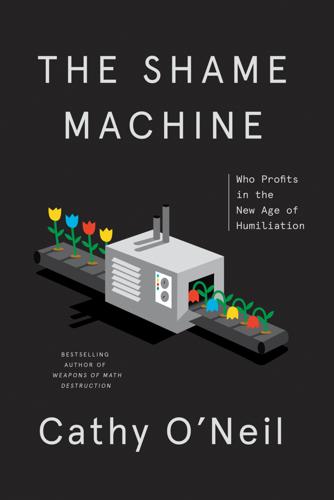
The Shame Machine: Who Profits in the New Age of Humiliation
by
Cathy O'Neil
Published 15 Mar 2022
See also racism and racial justice the Central Park birdwatching incident and Karen shaming, 109–14, 116 incarceration inequities, 42–43, 89 urban poverty and welfare-cheat narratives, 60, 61 vaccine skepticism among, 162 Black Codes, 73 Black Lives Matter and Black Lives Matter protests, 116–17, 119, 122, 124–25, 184, 205 Blackmon, Douglas, 73 blackpilling, 140 blame. See individual choice/personal responsibility tropes; stigmatization and blame Bloomberg, Michael, 158 body shame, 77–88.
…
In this way, the author prodded society to shift its norms—to redirect shame from the victims of abusive relationships to the perpetrators. His motive was not to push Hester Prynne to conform to the Puritanical standard, but instead to redraw shame’s boundaries. These same dynamics drive social movements today, from #MeToo to Black Lives Matter. These shifting borders stoke heated conflicts in our society, because people whose behavior once seemed to conform—from ass-pinching CEOs to Daughters of the Confederacy—find themselves newly splattered with shame. This hurts. To protect themselves, people tend to take refuge with like-minded allies or to strike back.
…
To be deemed a Karen, and to have your moment of white privilege blasted across the internet, is to undergo intense and widespread shaming. Within hours of Susan Schulz’s call to the police, dozens of neighbors and activists in Montclair were demonstrating outside her home, chanting and holding signs that read not here!, black lives matter, and white entitlement is violence. Amy Cooper, the Central Park dog walker, faced a much larger wave of shaming on TV and social media. She issued a contrite apology. But it was too late. The following day her employer, Franklin Templeton, fired her, effective immediately.[*1] “We do not tolerate racism of any kind at Franklin Templeton,” the company tweeted.
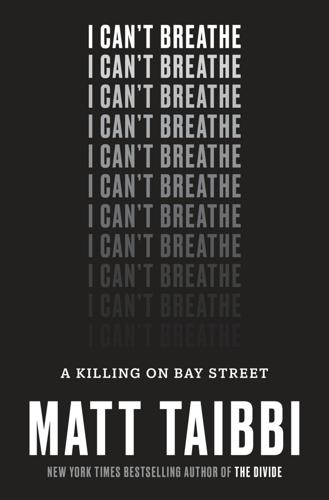
I Can't Breathe
by
Matt Taibbi
Published 23 Oct 2017
Regardless of what preceded the shooting, the picture of Brown’s body encapsulated in one unshakable image the dichotomy in attitudes toward black and white life. It was hardly a surprise that the Ferguson case reignited the nascent Black Lives Matter movement. This had begun two years before with the shooting death of unarmed seventeen-year-old Trayvon Martin at the hands of George Zimmerman, a neighborhood watchman. Like the competing interpretations of the events in Ferguson, the very term “Black Lives Matter” was destined, absurdly in many respects, to become the locus of a furious nationwide controversy. Black Americans may have hoped that the name would simply express the degree to which they felt a gap in basic respect, empathy, and rights.
…
“Members of the warrant squad have made persistent threatening phone calls,” he said. “He was very scared. There were further issues about articles in the press about unnamed police sources indicating he was suicidal. He is very active in the Black Lives Matter movement, Your Honor.” He gestured in the direction of the judge and smiled. It was unclear what effect the words “Black Lives Matter” had on the judge, but they certainly got her attention. “Bail in this case is improper,” Perry went on. “This case isn’t going anywhere. It will disappear.” Nuñez looked at Perry and sighed. She did not appear to relish dealing with a case with this kind of profile.
…
The relatively simple ask from black Americans was that white Americans take a moment to recognize what it feels like, say, to be told your son has been killed, but not told why or how, as happened with Trayvon Martin, or to watch a pregnant woman put in a chokehold over a backyard barbecue, as happened to twenty-seven-year-old Rosan Miller in New York nine days after Garner’s death. They asked white people to consider what it felt like to have your son’s bleeding corpse left in the street for four long hours. But the request implicit in the name “Black Lives Matter” quickly flipped around into an absurd overreaction. A growing population of Middle American conservatives (and even a sizable chunk of privately grumbling blue-state liberals) was getting good and ready to be open about how tired they were of being accused of racial insensitivity. After Brown’s death, tensions exploded onto the streets of Ferguson, where tens of thousands of people rallied for day-and-night protests.

Rules for Revolutionaries: How Big Organizing Can Change Everything
by
Becky Bond
and
Zack Exley
Published 9 Nov 2016
The richest four hundred Americans have the same amount of wealth as all black people in the United States plus one-third of all Latinos! Black lives matter. But in the United States, black lives are not valued equally to white lives. Not in the streets, not in the courts, not in our work places, not in our halls of government, not in our schools, not even in our progressive movements for change. Making change requires more from white people than simply saying “black lives matter” (though that’s an important start). Alicia Garza, a founder of the Black Lives Matter movement, suggested a way forward. Writing in The Nation on what’s next for the movement that almost elected Bernie Sanders to the White House, she called for our political revolution to “authentically engage and be led by people of color and immigrants” and to hold the Democratic Party accountable for its “epic failure to address the needs of the majority of people in this country.”
…
This is a problem, and it’s killing people. It’s part of the reason why in July of 2015, in the run-up to the launch of the July 29th kick off events, a group of Black Lives Matter protesters interrupted a candidate town hall at the annual Netroots Nation political conference. Two of the three Democratic candidates for president were on stage—Bernie Sanders and Martin O’Malley. Hillary Clinton, perhaps wanting to avoid likely protests, elected not to attend. O’Malley’s offensive reply came first: “Black lives matter. White lives matter. All lives matter.” It’s worth noting that Clinton had just a month before provoked a backlash by suggesting “All lives matter” when addressing an audience at an African American church in Missouri.
…
In this new economic reality, there are openings to organize whites—as Garza also calls us to do—to join a multiracial movement with a vision for an economy that truly works for everybody. The problem we have to solve is not just that not enough white people believe that black lives matter. It’s that not enough white people who say black lives matter are taking action to help dismantle racist structures. White people need to understand that supporting black liberation in a material way is an essential part of any political revolution. We also need to understand that white supremacy is at the heart of the problem—not just a racially associated economic inequality.

Ten Arguments for Deleting Your Social Media Accounts Right Now
by
Jaron Lanier
Published 28 May 2018
It’s as if Facebook is saying, “Pay us or you don’t exist.” They’re becoming the existential mafia. BLACK LIVES MATTER After a dramatic series of awful killings of unarmed black citizens by police in the United States, the initial reaction from sympathetic social media users was for the most part wise, stoic, and constructive. It must be said that we might not even have heard much about these killings, their prevalence, or their similarities without social media. At first, social media engendered a universal sense of community. The slogan “Black Lives Matter” initially struck me as remarkably knowing and careful, for instance.
…
The slogan “Black Lives Matter” initially struck me as remarkably knowing and careful, for instance. Not a curse, not a swipe. Just a reminder: our children matter. I suspect that a lot of people got the same impression, even though many of them would come to ridicule the same slogan not long after. “Black Lives Matter” appeared and gained prominence during the typical honeymoon phase of BUMMER activism, and, as always, that early phase was hopeful and felt substantial. BUMMER was giving black activists a new channel to influence and power. More money and power for the BUMMER companies, for sure, but also more empowerment for new armies of BUMMER users. Win/win, right? But during that same honeymoon, behind the scenes, a deeper, more influential power game was gearing up.
…
BUMMER was gradually separating people into bins and promoting assholes by its nature, before Russians or any other client showed up to take advantage. When the Russians did show up, they benefited from a user interface designed to help “advertisers” target populations with tested messages to gain attention. All the Russian agents had to do was pay BUMMER for what came to BUMMER naturally. “Black Lives Matter” became more prominent as a provocation and object of ridicule than as a cry for help. Any message can be reframed to incite a given population if message vandals follow the winds of the algorithms. Components F and A, locked together. Meanwhile, racism became organized over BUMMER to a degree it had not been in generations.
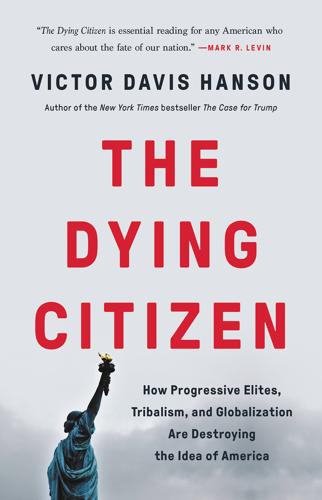
The Dying Citizen: How Progressive Elites, Tribalism, and Globalization Are Destroying the Idea of America
by
Victor Davis Hanson
Published 15 Nov 2021
Davidson, “In Racist Screed, New York Times 1619 Project Founder Calls White Race Barbaric ‘Devils,’ ‘Bloodsuckers,’ Columbus ‘No Different Than Hitler,’” The Federalist, June 25, 2020, https://thefederalist.com/2020/06/25/in-racist-screed-nyts-1619-project-founder-calls-white-race-barbaric-devils-bloodsuckers-no-different-than-hitler; M. Gonzalez, “To Destroy America,” City Journal, September 1, 2020, www.city-journal.org/marxist-revolutionaries-black-lives-matter; K. Rahman, “Will Anti-Semitism Undermine the Black Lives Matter Movement?,” Newsweek, July 24, 2020, www.newsweek.com/anti-semitism-derail-black-lives-matter-movement-1519728; J. Salo, “New York Times Reporter Says Destroying Property Is ‘Not Violence,’” New York Post, June 3, 2020, https://nypost.com/2020/06/03/ny-times-reporter-says-destroying-property-is-not-violence. 11.
…
Coleman, “Why We’re Capitalizing Black,” New York Times, July 5, 2020, www.nytimes.com/2020/07/05/insider/capitalized-black.html; A. Franks, “Rutgers English Department to Deemphasize Traditional Grammar ‘in Solidarity with Black Lives Matter,” College Fix, July 20, 2020, www.thecollegefix.com/rutgers-english-department-to-deemphasize-traditional-grammar-in-solidarity-with-black-lives-matter; cf. D. Petraeus, “Take the Confederate Names Off Our Army Bases,” The Atlantic, June 9, 2020, www.theatlantic.com/ideas/archive/2020/06/take-confederate-names-off-our-army-bases/612832. 12. Shoshy Ciment, “People Are Slamming Chick-fil-A’s CEO for Shining a Black Man’s Shoes Onstage in a Bizarre Display of Repentance and Shame,” Business Insider, June 22, 2020, www.businessinsider.com/chick-fil-a-ceo-criticized-shinin-black-mans-shoes-repent-2020-6. 13.
…
In the twenty-first century we are reversing course, a little more than a half century after the successful civil rights movement. Martin Luther King Jr.’s former dream of judging black Americans by the content of their character rather than the color of their skin has given way to “It’s a black thing, you wouldn’t understand” and, more recently, “Black Lives Matter.” The civil rights movement finally killed off the dangerous vestiges of the Ku Klux Klan. Yet the latter’s few incoherent remnants are starting to recombobulate in the era of diversity to supposedly preserve their “white” identity by professing a right to emulate the tribal chauvinism of other racial groups.
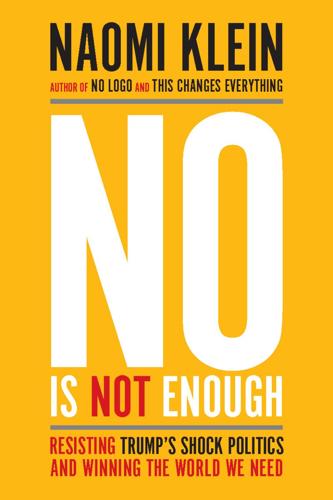
No Is Not Enough: Resisting Trump’s Shock Politics and Winning the World We Need
by
Naomi Klein
Published 12 Jun 2017
And yet even if every one of these resistance fights is victorious—and we know that’s not going to be possible—we would still be standing in the same place we were before the Far Right started surging, with no better chance of addressing the root causes of the systemic crises of which Trump is but one virulent symptom. A great many of today’s movement leaders and key organizers understand this well, and are planning and acting accordingly. Alicia Garza, one of the founders of Black Lives Matter, said on the eve of Trump’s inauguration that after five years of swelling social movements, whether it be Occupy Wall Street, whether it be the DREAMers movement or Black Lives Matter…there’s a particular hope that I have that all of those movements will join together to become the powerful force that we can be, that will actually govern this country. So that’s what I’m focused on, and I hope that everybody else is thinking about that too.
…
We Were on a Roll It can be easy to forget, but before Trump’s election upset, regular people were standing up to battle injustices represented by many of these very industries and political forces, and they were starting to win. Bernie Sanders’s surprisingly powerful presidential campaign, though ultimately unsuccessful, had Wall Street fearing for its bonuses and had won significant changes to the official platform of the Democratic Party. Black Lives Matter and Say Her Name were forcing a national debate about systemic anti-Black racism and militarized policing, and had helped win a phase-out of private prisons and reductions in the number of incarcerated Americans. By 2016, no major sporting or cultural event—from the Oscars to the Super Bowl—could take place without some recognition of how the conversation about race and state violence had changed.
…
During this same period, young Black men continued to be shot and killed by police at an obscene rate (five times higher than white men of the same age bracket, according to a study by the Guardian), their murders often captured on video and seared into the imaginations of still-developing young minds. It is against this backdrop that Black Lives Matter has become this generation’s civil rights movement. As Keeanga-Yamahtta Taylor, author of From #BlackLivesMatter to Black Liberation, writes: “The Black political establishment, led by President Barack Obama, had shown over and over again that it was not capable of the most basic task: keeping Black children alive.
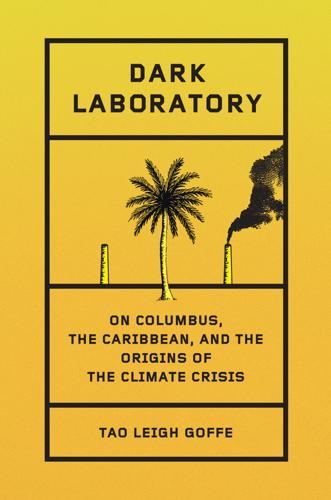
Dark Laboratory: On Columbus, the Caribbean, and the Origins of the Climate Crisis
by
Tao Leigh. Goffe
Published 14 Mar 2025
Those fur hats, I later learned, were co-opted from Native American traditional clothing in Appalachia by white U.S. frontiersmen. It was not until Native tribes across the region started to win back the rights to their sacred peaks in 2020 that I began to reckon with New Jersey’s Native history, present, and future. Alongside the chants of Black Lives Matter, in U.S. courtrooms three million acres of Oklahoma land were granted back to Muscogee Nation in July 2020. The legal battles fought to regain Native sovereignty through the Land Back movement for many Indian nations are ongoing.[17] And, over time, I came to appreciate the mountain reservations that surrounded my New Jersey childhood neighborhood, which are named for clans of the Lenni-Lenape.
…
The French arrived late, in 1715, and the British supplanted them in 1763. My purpose in visiting the Amerindian reserve on this island was to learn about local efforts and artistic practices to support Dark Lab. My organization sees the many islands across the planet as spaces of colonial experimentation. At Dark Lab, which emerged for me in the aftermath of the Black Lives Matter global protests and the Covid-19 pandemic, we explore how race, climate, and technology are entwined. From Black women’s farming cooperatives on the island, I have learned how to follow the phases of the moon’s calendar of cultivation. This calendar is a guide that designates when to cut the grass, when to cut one’s hair, and when to harvest from the carambola tree.
…
Is consent even possible with such parameters? When 2020 arrived, my instinct was to do something generative. The pandemic amplified the reality that some institutions needed to fall in the face of so many other destructive forces.[29] I founded the Dark Laboratory to respond to the rallying call of Black Lives Matter and Land Back for Native sovereignty as two deeply interconnected movements. I invited humanists, coders, lawyers, and biotechnologists to form a collective with me and challenge what is known as the canon. Together, we analyze the shape-shifting nature of colonialism and its role in the climate crisis.
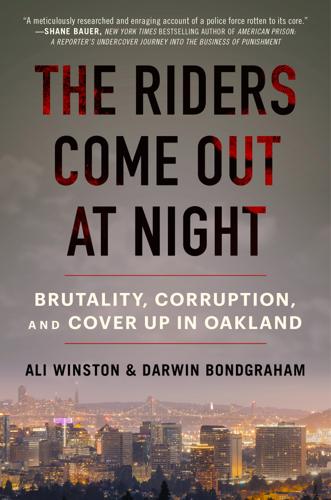
The Riders Come Out at Night: Brutality, Corruption, and Cover-Up in Oakland
by
Ali Winston
and
Darwin Bondgraham
Published 10 Jan 2023
Within weeks, decals began appearing on street signs, lampposts, water bottles, and refrigerators around the East Bay featuring a design of a jumpsuit-clad Mehserle behind bars. Two succinct words were at the bottom of a black-and-white sticker: “Riots Work.” The movement that rose up for Oscar Grant was, in retrospect, the genesis of what would eventually be named Black Lives Matter, a cause rooted simultaneously in the intricacies of local struggles around police violence and accountability but also connected through the web, where social media would create the conditions for viral death, instant outrage, and the decentering of traditional news media. But before any of these changes could gel, another horrific shooting would rock Oakland and elicit a countermovement
…
Not long after, the practice became so ingrained that 95 percent of patrol cops were activating their recording devices during use-of-force incidents.69 Police behavior during protests changed under Whent. When angry, chaotic demonstrations erupted in 2013 following the acquittal of George Zimmerman for murdering seventeen-year-old Trayvon Martin, and the following autumn during the first national cycle of Black Lives Matter protests, the OPD acted with unusual restraint, particularly during freeway takeovers and vandalism in downtown Berkeley and Oakland. While Berkeley police and California Highway Patrol fired less-lethals into crowds and clubbed protesters, Oakland cops held back, moving in to make arrests only when they could target someone who clearly broke the law.70 Internal Affairs complaints, which rose to an all-time peak of 1,200 in 2012, plummeted under Whent.
…
Just like Jerry Brown fourteen years earlier, Schaaf vowed to cut crime, this time by 80 percent, a number she would never come close to reaching.83 And just like Brown, Schaaf’s inauguration was protested by those who feared her public safety plan would give police license to abuse. Schaaf walked a fine line, expressing support for the Black Lives Matter movement, but promising to invest more in the police. Her political position depended entirely on the police department’s progress with the court-mandated reforms. Schaaf pointedly spent her entire first day on the job with OPD officers. Showing up at the Police Administration Building at six thirty in the morning and staying for all three shifts through midnight, she toured each floor of the PAB, meeting with officers before their patrol shifts and answering their questions behind closed doors.
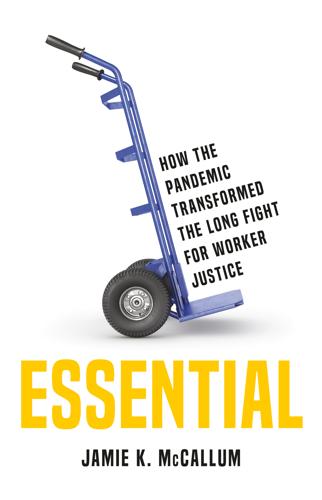
Essential: How the Pandemic Transformed the Long Fight for Worker Justice
by
Jamie K. McCallum
Published 15 Nov 2022
In May, George Floyd was killed by Minneapolis police officer Derek Chauvin, who knelt on Floyd’s neck long after he had stopped breathing. As many as twenty-six million people are estimated to have joined the thousands of Black Lives Matter protests across the country that followed that summer—there was a protest in 40 percent of US counties. July 6, the peak day of protest, dwarfed the three million who clogged the arteries of cities nationwide for the Women’s March in 2017. Black Lives Matter became the largest protest movement in post-Vietnam America. Heads rolled only metaphorically during the nationwide protests that summer, but street skirmishes with police and right-wing counterprotesters meant the movement took a more aggressive stance than many liberal onlookers were comfortable with.
…
Keeanga-Yamahtta Taylor, “Did Last Summer’s Black Lives Matter Protests Change Anything?,” New Yorker, August 6, 2021, www.newyorker.com/news/our-columnists/did-last-summers-protests-change-anything. 25. “ILWU Stands Down at West Coast Ports for Historic Juneteenth Action to Honor Black Lives,” ILWU, July 13, 2020, www.ilwu.org/ilwu-stands-down-at-west-coast-ports-for-historic-juneteenth-action-to-honor-black-lives/; Peter Cole, “The Most Radical Union in the U.S. Is Shutting Down the Ports on Juneteenth,” In These Times, June 16, 2020, https://inthesetimes.com/article/juneteenth-ilwu-dockworkers-strike-ports-black-lives-matter-george-floyd. 26.
…
This is about all of us.”3 Chris’s firing and the leaked memo attracted widespread condemnation from activists and politicians, including New York City mayor Bill de Blasio and Senator Bernie Sanders, who called the firing “disgraceful.”4 It also engendered support from other social movements. Smalls, who is Black, soon became not only a leader of a national worker movement but also key in building the bridge from the workplace to the streets as a Black Lives Matter activist. By the time I caught up with Smalls, he had been unemployed for several months yet was busier than ever. He spent almost every waking moment organizing against Amazon across the country and helping to advise its employees in other countries. “When I signed up for this job it said I needed a GED and I had to lift 50 pounds—that’s it.
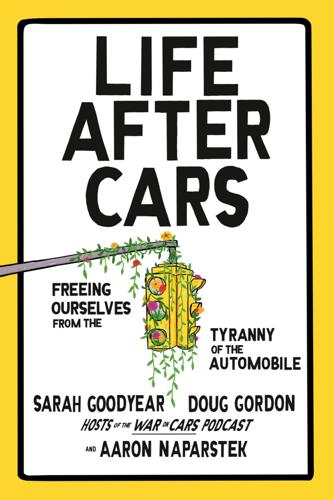
Life After Cars: Freeing Ourselves From the Tyranny of the Automobile
by
Sarah Goodyear
,
Doug Gordon
and
Aaron Naparstek
Published 21 Oct 2025
GO TO NOTE REFERENCE IN TEXT analysis of one hundred million traffic stops: Emma Pierson, Camelia Simoiu, Jan Overgoor, Sam Corbett-Davies, Daniel Jenson, Amy Shoemaker et al., “A Large-Scale Analysis of Racial Disparities in Police Stops Across the United States,” Nature Human Behavior 4 (May 2020): 736–45, doi.org/10.1038/s41562-020-0858-1. GO TO NOTE REFERENCE IN TEXT “the automobile stood”: Seo, Policing the Open Road, 5. GO TO NOTE REFERENCE IN TEXT “long-standing issue of [B]lack mobility”: Rod Clare, “Black Lives Matter: The Black Lives Matter Movement in the National Museum of African American History and Culture,” Transfers: Interdisciplinary Journal of Mobility Studies 6, no. 1 (Spring 2016): 122, doi.org/10.3167/TRANS.2016.060112. GO TO NOTE REFERENCE IN TEXT Nelson, then twenty-nine: Angie Schmitt, Right of Way: Race, Class, and the Silent Epidemic of Pedestrian Deaths in America (Island Press, 2020), 47.
…
See bike parking bike lanes contraflow, 42 cultural approval for, 44 cyclist behavior in, 41–42 cyclist hit in, 23 delays to install, 203–204 in Emeryville, CA, 197–98 lacking, 50 misinformation about, 36–38 negative responses to, 27–31, 32–33, 62 in Paris, FR, 192–93 pop-up, 205, 206–7, 208 protected, 24, 32, 171 in Utrecht and Copenhagen, 181–82 See also infrastructure bike parking, 62–63, 171, 189, 192, 204 bikelash Amsterdam argument, 33–35 “I like bikes but” argument, 35–36 incorrect information behind, 36–38 introductory case study, 27–31 moral panic behind, 38–42 at public meetings, 62 rooted in power shifts, 42–43 term introduction, 31–33 Bikesy, 200–202 birds, 71–72, 83 See also wildlife Birmingham, AL, 167 Black Americans displaced by highway construction, 19 driving experiences of, 138–40 killed by police, 143, 144–45 mobility of, 145–46 police actions against, 140–41 travel experiences of, 137–38 Black Lives Matter movement, 145–46 Black Lives Matter protests, 131 Blackwell, Angela Glover, 159 Bland, Sandra, 143, 144 Bliss, Henry, 6, 16, 23 bloodlines, 127, 129 Bloomberg, Michael, 44 Bogotá, CO, 112 bollards, 134, 184, 185, 187, 210 See also infrastructure Booker, Devin, 191–92 Boston, MA, 206–7 Boston Globe, The, 207 Bowling Alone (Putnam), 120 Bradbury, Ray, 223–24, 228 brakes, pollution from, 104 Branson, MO, 167 bridges, wildlife, 78 See also wildlife Bristol, UK, 118 Brooklyn, NY, 11, 27, 32, 36–37, 41–42, 62, 199–201 See also New York City, NY Brooklyn Safety Council, 11 Brown, Michael, 145–46 Bruntlett, Chris, 183, 191, 229 Bruntlett, Melissa, 183, 184, 229 Brussels, BE, 229 Buffalo, NY, 167 built environment.
…
In August of 2017, a young woman named Heather Heyer was killed in Charlottesville, Virginia, by the driver of a Dodge Challenger who used his vehicle to plow into a crowd of protesters who had assembled to counter the infamous “Unite the Right” rally. The driver was later convicted of first-degree murder, his claims of self-defense rejected by the jury. But the practice of using vehicles to menace, injure, and kill protesters reemerged during the Black Lives Matter protests in 2020. In fact, legislators in several states have moved, with varying levels of success, to protect drivers who strike protesters with their vehicles, on the grounds that they are engaging in some kind of self-defense. Ari Weil, a PhD candidate at the University of Chicago who researches political violence, shared some of his findings with us back in 2020.

Happy-Go-Lucky
by
David Sedaris
Published 30 May 2022
and, occasionally, “Black Lives Matter!”—but strangely, in the singsongy way a fishmonger might call, “Fresh-caught haddock!” I came upon a bike march one Saturday afternoon, the last day of spring, at around five o’clock. People lined Third Avenue, most raising their phones to shoot pictures and videos, or to turn their backs on the cyclists and take selfies. Beside me stood two white girls in their early twenties, both frantically texting. Both had tans. “Where can we get bikes?” one asked the other. She tugged down her mask and commenced filming herself. “Black Lives Matter!” she shouted. “Wooooo!”
…
And chips and Cheetos and dried fruit slices. “Are you sure I can’t give you a little something to eat?” asked a dogged young snacktivist. I reckoned there were maybe three hundred people in the park. Signs included WHITE SILENCE NO MORE, DEFUND NYPD, NO EXCUSE 4 ABUSE, and BLM, an abbreviation for Black Lives Matter. A person I couldn’t see was beating a drum, and while it felt like something should kick off, nothing did. Every so often applause would break out, though I was never sure why. “It’s just a gathering, really,” the young woman standing next to me explained. She had a ring in her nose, and like most everyone around us, she was white.
…
I’m not sure how I feel about that one. Is someone performing fellatio on you really the greatest punishment you can imagine? I wanted to ask. I was thinking they might change it to “NYPD, kiss my ass,” but that has its place as well. “Eat me out”? “Drink my piss”? Anything sexual is going to step on someone’s toes. “Black Lives Matter!” followed “Suck my dick!” and then we were back to “Whose streets? Our streets!” It’s always interesting to watch a chant die, like a match going out. Some can burn for decent stretches of time, but with this crowd there appeared to be a strict forty-five-second policy. Everyone seemed to have their phones out, and I noticed a lot of people taking selfies.
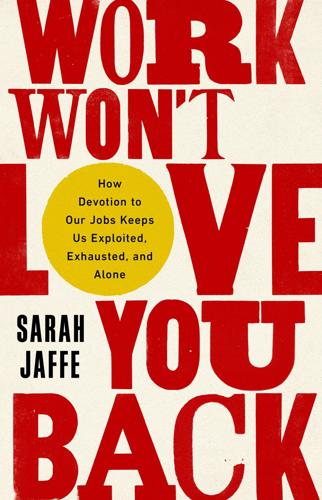
Work Won't Love You Back: How Devotion to Our Jobs Keeps Us Exploited, Exhausted, and Alone
by
Sarah Jaffe
Published 26 Jan 2021
Student Cheyenne McLaren spoke of her anger and frustration with the unequal conditions in the schools. She was a member of a group called Students Deserve—led by students, with parents and teachers like Jimenez as allies—that was inspired by the Black Lives Matter movement to fight racism in the schools. It was from them that the demand to end random searches came, and also the desire for more community schools. “We really have been inspired by Black Lives Matter and their framework of divesting and investing. Divesting from policing and from other things that police our schools and students and communities and investing in things that see our students as fully human and provide them what they need to really thrive,” Jimenez said.
…
“We were just not in the place—our union wasn’t and the world wasn’t and all unions were not in a place to fight back in the way that we are now,” she said. But now, with a strong union and a strong coalition in the city, the teachers were preparing to use their power once again. One point in that fight was likely to be over the police budget. Even before the protests began in May 2020, Black Lives Matter Los Angeles and other organizations had been pushing for a People’s Budget that would cut police funding—54 percent of the city’s discretionary budget had been set to go to the police department—and reinvest in public services. UTLA also backed a successful push to cut the budget for the school police—a separate department—by $25 million, or 35 percent. 49 Jimenez took on some new roles after the strike.
…
Daniel, whose foundation does make grants to organizations led by women and transgender people of color, noted that “it’s far easier for a young affluent white man who has studied poverty at Harvard to land a $1 million grant with a concept pitch than it is for a 40-something black woman with a decades-long record of wins in the impoverished community where she works to get a grant for $20,000.” 41 In movement moments like the one that began in the spring and summer of 2020, as the cries of “Black Lives Matter” rang once again from streets around the world, the question of who gets funded to do the work is particularly important. An incredible outpouring of support—donations in small amounts, $5 and $10 and $20—flowed into bail funds and grassroots organizations like Reclaim the Block and the Minnesota Freedom Fund in Minneapolis, organizations that had been working for years.
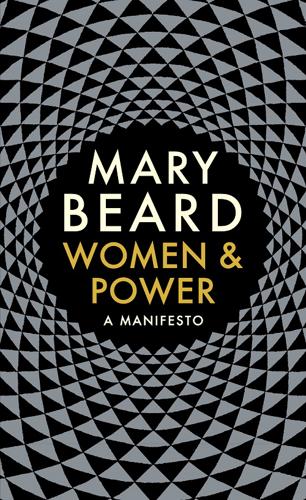
Women & Power: A Manifesto
by
Mary Beard
Published 2 Nov 2017
So should we be optimistic about change when we think about what power is and what it can do, and women’s engagement with it? Maybe, we should be a little. I’m struck, for example, that one of the most influential political movements of the last few years, Black Lives Matter, was founded by three women; few of us, I suspect, would recognise any of their names, but together they had the power to get things done in a different way. 26. There is no need for those who make a difference to have celebrity status. Few people know the names of the women founders of Black Lives Matter: Alicia Garza, Patrisse Cullors and Opal Tometi. But the picture overall is rather more gloomy. We have not got anywhere near subverting those foundational stories of power that serve to keep women out of it, and turning them to our own advantage, as Thatcher did with her handbag.
…
(Bottom) Hillary Clinton as Medusa. Both are internet memes 24. Cellini’s Perseus with the Head of Medusa revised showing Donald Trump and Hillary Clinton respectively. Photo: internet meme 25. Gerald Scarfe’s ‘Handbagging’, showing Margaret Thatcher swotting Kenneth Baker, MP © Gerald Scarfe, with permission 26. Black Lives Matter founders Alicia Garza, Patrisse Cullors and Opal Tometi attend Glamour Women Of The Year 2016, Los Angeles, California. Photo by Frederick M. Brown/Getty Images 27. cover of Charlotte Perkins Gilman sequel to Herland, With Her in Ourland, originally serialised by chapter, monthly, in The Forerunner (magazine), in 1916.

Aftershocks: Pandemic Politics and the End of the Old International Order
by
Colin Kahl
and
Thomas Wright
Published 23 Aug 2021
Roudabeh Kishi and Sam Jones, “Demonstrations & Political Violence in America: New Data for Summer 2020,” Armed Conflict Location & Event Data Project, 2020, https://acleddata.com/acleddatanew/wp-content/uploads/2020/09/ACLED_USDataReview_Sum2020_SeptWebPDF_HiRes.pdf. 84. “Protests Worldwide Embrace Black Lives Matter Movement,” Reuters, June 6, 2020, https://www.reuters.com/article/us-minneapolis-police-protests-global/protests-worldwide-embrace-black-lives-matter-movement-idUSKBN23D0BO; Jen Kirby, “‘Black Lives Matter’ Has Become a Global Rallying Cry Against Racism and Police Brutality,” Vox, June 12, 2020, https://www.vox.com/2020/6/12/21285244/black-lives-matter-global-protests-george-floyd-uk-belgium; Anne-Christine Poujoulat, “Protests Across the Globe After George Floyd’s Death,” CNN, June 13, 2020, https://www.cnn.com/2020/06/06/world/gallery/intl-george-floyd-protests/index.html. 85.
…
Eliott McLaughlin, “How George Floyd’s Death Ignited a Racial Reckoning That Shows No Signs of Slowing Down,” CNN, August 9, 2020, https://www.cnn.com/2020/08/09/us/george-floyd-protests-different-why/index.html. 82. Audra Burch et al., “How Black Lives Matter Reached Every Corner of America,” New York Times, June 13, 2020, https://www.nytimes.com/interactive/2020/06/13/us/george-floyd-protests-cities-photos.html; Larry Buchanan, Quoctrung Bui, and Jugal K. Patel, “Black Lives Matter May Be the Largest Movement in U.S. History,” New York Times, July 3, 2020, https://www.nytimes.com/interactive/2020/07/03/us/george-floyd-protests-crowd-size.html. 83. Roudabeh Kishi and Sam Jones, “Demonstrations & Political Violence in America: New Data for Summer 2020,” Armed Conflict Location & Event Data Project, 2020, https://acleddata.com/acleddatanew/wp-content/uploads/2020/09/ACLED_USDataReview_Sum2020_SeptWebPDF_HiRes.pdf. 84.
…
“Protests Worldwide Embrace Black Lives Matter Movement,” Reuters, June 6, 2020, https://www.reuters.com/article/us-minneapolis-police-protests-global/protests-worldwide-embrace-black-lives-matter-movement-idUSKBN23D0BO; Jen Kirby, “‘Black Lives Matter’ Has Become a Global Rallying Cry Against Racism and Police Brutality,” Vox, June 12, 2020, https://www.vox.com/2020/6/12/21285244/black-lives-matter-global-protests-george-floyd-uk-belgium; Anne-Christine Poujoulat, “Protests Across the Globe After George Floyd’s Death,” CNN, June 13, 2020, https://www.cnn.com/2020/06/06/world/gallery/intl-george-floyd-protests/index.html. 85. Kim Kyung Hoon, “Black Lives Matter Protesters March Through Tokyo,” Reuters, June 14, 2020, https://www.reuters.com/article/us-minneapolis-police-protests-japan/black-lives-matter-protesters-march-through-tokyo-idUSKBN23L0FZ. 86. Repucci and Slipowitz, Democracy Under Lockdown, 13. 87. Repucci and Slipowitz, Democracy Under Lockdown, 1. CHAPTER 12: VARIANTS AND VACCINES 1. Jonathan Corum and Carl Zimmer, “Bad News Wrapped in Protein: Inside the Coronavirus Genome,” New York Times, April 3, 2020, https://www.nytimes.com/interactive/2020/04/03/science/coronavirus-genome-bad-news-wrapped-in-protein.html; Jonathan Corum and Carl Zimmer, “Coronavirus Variants and Mutations,” New York Times, last modified March 22, 2021, https://www.nytimes.com/interactive/2021/health/coronavirus-variant-tracker.html. 2.
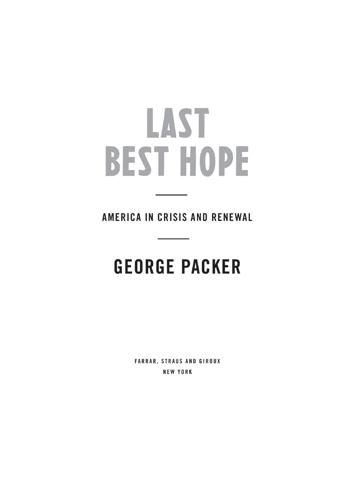
Last Best Hope: America in Crisis and Renewal
by
George Packer
Published 14 Jun 2021
It wasn’t the cry I expected—it wasn’t fury at leaders, starting with Trump, who had contributed to mass suffering and shocking racial disparities in rates of hospitalization and death. The protests took us back to the time before the pandemic, when videos of violence against Black people created a new movement called Black Lives Matter. It had receded somewhat during the nonstop chaos of Trump’s presidency, but the killing of Floyd and others in early 2020 was a reminder that the violence continued, horrifying enough to start a popular rising. The protests released the repressed energy of quarantine and freed people, especially young people, to be together in the streets for a just cause.
…
The protests seemed like an escape from what had become unbearable, into something else unbearable. It was that kind of year. Thousands of doctors declared their solidarity and extended their indulgence. It had not been OK at all for Trump supporters to converge on state capitols in opposition to the lockdown, but it was OK for Black Lives Matter supporters to fill city streets in opposition to police brutality. The difference, according to the experts, was the cause. Racism actually endangered public health (but so did unemployment). A former director of the CDC, who had become an urgent voice for the lockdown, tweeted: “The threat to COVID control from protesting outside is tiny compared to the threat to COVID control created when governments act in ways that lose community trust.
…
It led to few concrete ideas for helping disadvantaged Black people and a slogan (“defund the police”) that created endless confusion and antagonism. Instead of a political agenda and strategy, it pursued a mystical vision that freezes us all in the ice of our own identity and makes ordinary communication with one another nearly impossible. In a memoir, Alicia Garza, who is credited with originating the term “Black lives matter,” criticized the movement for being too insular, too intolerant, too ready to pursue trivial causes and avoid high-stakes politics. The protests were another part of the “social fact” of America—a country too incoherent to talk about its hardest problems in a way that begins to solve them. The last major protest of the summer happened at the end of August, while the political parties were holding their conventions.
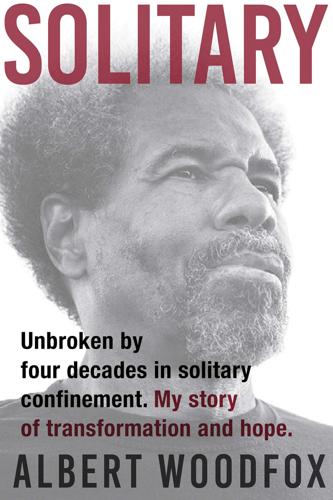
Solitary
by
Albert Woodfox
Published 12 Mar 2019
Because of his actions, taking a knee has come to mean something different now. Another bright spot for me was to see how Black Lives Matter had spread: to meet youth in London and Paris who told me they are part of the Black Lives Matter movement in their countries, and to learn that the movement had spread to Brazil, South Africa, and Australia, among other places around the world. I can’t tell you how proud I was to meet Alicia Garza, one of the founders of Black Lives Matter, at a panel discussion. I was heartened to hear that, as a result of the civil lawsuit that Herman, King, and I filed, there is now an oversight board that reevaluates decisions made by the reclassification board at Angola.
…
After we talked about our court cases, King and I forced ourselves to keep it like old times. We talked about Black Lives Matter, the civil rights movement that was just beginning to grow out of the injustice around the murder of Trayvon Martin, the black teenager who was shot and killed in broad daylight while walking home to his dad’s house after buying candy at a store. Trayvon’s killer, George Zimmerman, had just been acquitted of murder by a Florida jury. Herman spoke about how we had to protect Black Lives Matter. But he was also confused, talking about the past as if it was the present, talking about LSU games that happened years before.
…
As the weeks passed I felt drained of energy. I stopped taking my hour out of the cell. The guard would come and ask me if I wanted yard and I’d say, “Nah, not today.” In my cell, I watched CNN. I’d been watching the news about police shootings of unarmed black people and following the Black Lives Matter movement. It hurt me to see organizers of Black Lives Matter painted as being racists. It hurt me to see black people needing to state the obvious: that we mattered. I thought of the black sanitation workers who went on strike in Memphis in 1968; black workers wore placards that read I AM A MAN. Fifty years later, and the humanity of a black person is still in dispute?
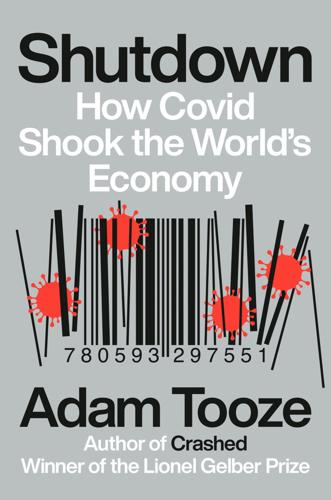
Shutdown: How COVID Shook the World's Economy
by
Adam Tooze
Published 15 Nov 2021
If dragged into the daylight and subject to sustained challenge, it is evidently indefensible. There was thus a deep logic to the coincidence of the pandemic with the huge political upheaval of Black Lives Matter over the summer of 2020. As the movement so powerfully demonstrated, a single life taken illegitimately can trigger a giant political movement. When a death becomes a martyrdom, it has huge force. Black Lives Matter fed off a deep well of historic injustice. It tied the present to the past. It linked the killing on May 25, 2020, to centuries of injustice that preceded it. That was powerful, and all the more so because in the context of a runaway pandemic, anger and indignation over the past were compounded by fear of the future.29 In light of the inequities of 2020, how many more Black Americans would become victims of violence, discrimination, and poverty?
…
Finally, there was the “induction effect,” by which problems in one region indirectly incited sympathetic reaction and imitation in another region, often feeding off preexisting unresolved problems.31 Though presented in the wooden style of the Chinese Communist Party, Chen’s list has an uncanny fit with the experience of 2020. The virus was an example of backflow on a huge scale, from the Chinese countryside to the city of Wuhan, from Wuhan to the rest of the world. Politicians in the West, as much as in China, struggled with convergence, layering, and linkage. The Black Lives Matter protest movement was a giant demonstration of the power of magnification and induction, generating resonances around the globe.32 Indeed, if you ignore its original context, Chen’s checklist for the party cadres could even be read as a guide to our private lives, a self-help manual for the corona crisis.
…
Black men often die at the hands of America’s police. But this incident triggered an amplification effect in an extraordinary upsurge in protest across the country. America’s Black population suffered disproportionately from the pandemic. Floyd’s killing compounded the deep sense of injustice. The mobilization around Black Lives Matter served as a rallying point for an entire coalition of radical and progressive forces. It was by no means confined to the left. By early July, somewhere between 15 and 26 million people are estimated to have taken part in BLM demonstrations of one kind or another.5 Liberal-minded police chiefs marched with the protesters.
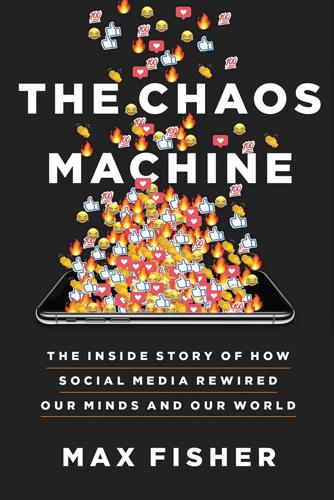
The Chaos Machine: The Inside Story of How Social Media Rewired Our Minds and Our World
by
Max Fisher
Published 5 Sep 2022
He and Justus abandoned the van, which was later found filled with guns and bomb-making equipment. To the extent that Carrillo’s motives were coherent, he had apparently hoped his attack would be mistaken as the work of Black Lives Matter and set off more violence. Thanks to social media’s partisan-affirming tendencies, he got at least his first wish. Police had not even yet publicly identified Carrillo when pro-Trump Facebook pages won hundreds of thousands of interactions by blaming the Oakland officer’s death on Black Lives Matter “riots,” “left-wing domestic terrorists,” and “another poorly managed Democrat city.” They described it as the latest in a wave of violence stoked by “national Democrats, corporate media & Biden staffers,” an extension of the tyranny of “Democrat lockdowns” and out-of-control minorities.
…
Any justice system has biases, blind spots, and excesses. The Coopers demonstrated that we had all come under a new system layered atop the old ones, without anyone consciously designing it, opting into it, or even really understanding it. There are times when that system is positively transformative. Black Lives Matter activists leveraged it to attract attention to violence that mainstream outlets tended to gloss over. Christian Cooper’s video resonated so powerfully in part because those activists had primed millions of people to see its significance. That same day, a Minneapolis police officer knelt on the neck of a Black man named George Floyd for nearly nine minutes, killing him.
…
In Myanmar, social media platforms indulged the fears of the long-dominant Buddhist majority who felt, with democracy’s arrival, a shift in the status quo that had long privileged them. In India, it was the Hindu majority, on similar grounds. In 2018, BBC reporters in northern Nigeria found the same pattern, the Fulani majority pitted against the Berom minority, all on Facebook. In America, social media had tapped into white backlash against immigration, Black Lives Matter, increased visibility of Muslims, cultural recalibration toward greater tolerance and diversity. The most-shared rumors, Santamaría pointed out, often had to do with reproduction or population. Sri Lanka and sterilization pills. America and a liberal plot to replace white people with refugees.
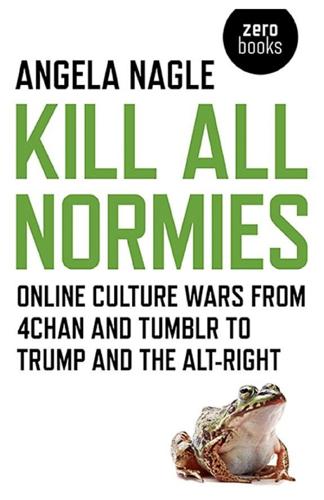
Kill All Normies: Online Culture Wars From 4Chan and Tumblr to Trump and the Alt-Right
by
Angela Nagle
Published 6 Jun 2017
Her boyfriend, David Michael Kalac, was arrested after a brief police chase and charged with murder. If further proof that the anti-PC taboo-breaking culture of 4chan is not just ‘for the lulz’ is needed, after the November 2015 shooting of five Black Lives Matter protesters in Minneapolis, a video emerged of two of the men involved, wearing balaclavas and driving to a Black Lives Matter protest, saying: ‘We just wanted to give everyone a heads up on /pol/… Stay white.’ Just a few years ago the left-cyberutopians claimed that ‘the disgust had become a network’ and that establishment old media could no longer control politics, that the new public sphere was going to be based on leaderless user-generated social media.
…
If you watched a live stream of the tour the live comments section quickly filled up little walls, swastikas and references to Harambe. These videos were viewed typically hundreds of thousands of times, as he visited US and UK universities criticizing political correctness, feminism, Islam, Black Lives Matter and Western liberalism in general. Through courting online controversy and campus activists constantly trying to ban him, he was made into a kind of martyr figure, with devoted crowds of fans chanting ‘Milo! Milo! Milo!’ His ban from Twitter aided his career in much the same way. As for genuine non-ironic white supremacists on the alt-right, he insisted: ‘There’s just not very many of them, no-one really likes them, and they’re unlikely to achieve anything significant in the alt-right.’
…
He can barely go a few sentences without mentioning his homosexuality, anal sex jokes, and what sounds like a multitude of black sexual partners and boyfriends. Joking with Ann Coulter on his podcast, he said that he liked the idea of getting caught in bed with black drug-dealer boyfriends when he was rebelling against his parents. In one of his campus talks he dressed up as a camped up S&M cop to antagonize Black Lives Matter and had penis-shaped props. In response to criticisms of his intentionally cruel bullying attacks on others, he simply shrugged them off as examples of fabulous catty gay male behavior. 4chan is also more of a product of the sexual revolution than of conservatism. From the start it was teeming with weird hardcore pornographic images and discussions – gay, straight, transgender and everything in between – and a culture of relish transgressing any and all moral codes when it comes to sexuality.
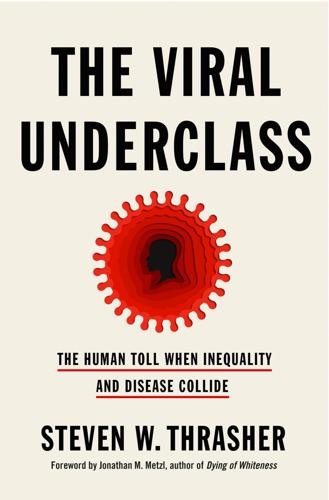
The Viral Underclass: The Human Toll When Inequality and Disease Collide
by
Steven W. Thrasher
Published 1 Aug 2022
“expectancy has ever been”: Elizabeth Wrigley-Field, “US Racial Inequality May Be as Deadly as COVID-19,” Proceedings of the National Academy of Sciences of the United States of America 117, no. 36 (September 8, 2020), https://www.pnas.org/content/117/36/21854. at a fundraiser: Sophia Tesfaye, “I’m Not a Superpredator, Hillary!: Black Lives Matter Protestors Confront Clinton at South Carolina Fundraiser,” Salon, February 25, 2016, https://www.salon.com/2016/02/25/im_not_a_superpredator_hillary_black_lives_matter_protestors_crash_clinton_south_carolina_fundraiser/. New York Times’s coronavirus tracker: “Coronavirus in the U.S.: Latest Map and Case Count,” graph, New York Times, last modified January 14, 2021, https://drive.google.com/file/d/12YyqzSOp5H8TnCsZ8QWqQl3crCui0Yc3/view?
…
Cases of tuberculosis, HIV, HCV, and influenza are high in jails, affecting not only those who are arrested but also their families and social networks upon their release. While even those who have been convicted don’t deserve this kind of death penalty, in November 2020, 80 percent of the 230 people who died of COVID-19 in Texas correctional facilities had never been convicted of any crime. Long before the Black Lives Matter movement made famous the use of community bail funds to get people out of jail who might not have family who could afford to bail them out, Chase and Lorena started the Lorena Borjas Community Fund to spring Lorena’s girls as quickly as possible. Often, they succeeded. According to the New York Times, their fund raised more than forty-five thousand dollars, helping more than fifty people get out of jail.
…
They don’t want to see mentally ill people. They don’t want to see scary older disabled people.” And when the viral underclass has already been erased from public view, it’s hard to get the public to care about what happens to them. “Reform is not the answer,” Alice said of the system, noting how the Black Lives Matter movement exploding across the country from where she was in San Francisco to where I was in New York had been demanding abolition of prisons. “Abolition applies not just to prisons but to nursing homes, detention centers, youth juvenile facilities—ICE facilities,” she says. “Every type of congregate setting.”

The Twittering Machine
by
Richard Seymour
Published 20 Aug 2019
For example, Facebook once ironically censored the ACLU’s (American Civil Liberties Union) page over a post about censorship, deleting an iconic, Pulitzer Prize-winning photograph from the Vietnam War for violating its standards. It has often seemed perverse in its handling of ‘hate speech’. Though eager to align itself with Black Lives Matter in its publicity, it suspended Shaun King, the Black Lives Matter activist, for sharing an experience of racist abuse. Yet its moderators regularly allow obvious racist abuse to stand. Often, social industry platforms are gulled into acting against a user by ‘report trolling’ – in which trolls submit false reports about their targets and incite others to do the same.
…
Yes, and no’, The Verge, 15 July 2015. 43. For most of us, it is completely ineffectual . . . Sarah Jeong, The Internet of Garbage, Forbes: New Jersey, NJ, 2015, pp. 69–90. 44. Nor did ‘free speech’ prevent Facebook from . . . Levi Sumagaysay, ‘Facebook hangs “Black Lives Matter” sign at its headquarters’, SiliconBeat (www.siliconbeat.com), 9 July 2016; Sam Levin, ‘Facebook temporarily blocks Black Lives Matter activist after he posts racist email’, Guardian, 12 September 2016; Issie Lapowsky, ‘It’s Too Easy for Trolls to Game Twitter’s Anti-Abuse Tools’, Wired, 13 May 2016; Glenn Greenwald, ‘Facebook Says It Is Deleting Accounts at the Direction of the U.S. and Israeli Governments’, The Intercept, 30 December 2017; Russell Brandom, ‘Facebook, Twitter, and Instagram surveillance tool was used to arrest Baltimore protestors’, The Verge, 11 October 2016. 45.
…
The social justice warrior’s injunction, #stayinyourlane, suggests we can never transcend identitarian boxes. The era of the platforms has witnessed an explosion in identity-talk. There are some good reasons for this. Much of what is described as identity politics addresses long-standing injustices, impacting on people precisely because of how they’re identified, from Black Lives Matter to #MeToo. Beyond this, however, the internal politics of the medium is itself a politics of identity, because it compels us to dedicate more and more of our time to performing an identity. The self that the social industry engages is ephemeral in the sense described by Lasch: trapped in a continuous, distracted response to stimuli.
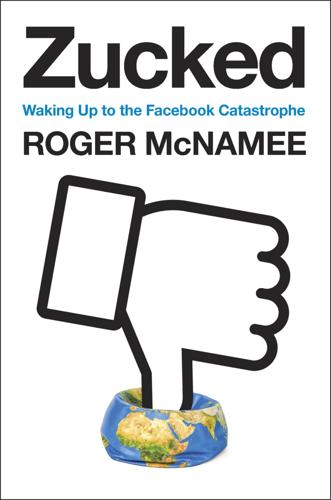
Zucked: Waking Up to the Facebook Catastrophe
by
Roger McNamee
Published 1 Jan 2019
Who would do that? I had no answer. The flood of inappropriate images continued, and it gnawed at me. More troubling phenomena caught my attention. In March 2016, for example, I saw a news report about a group that exploited a programming tool on Facebook to gather data on users expressing an interest in Black Lives Matter, data that they then sold to police departments, which struck me as evil. Facebook banned the group, but not until after irreparable harm had been done. Here again, a bad actor had used Facebook tools to harm innocent victims. In June 2016, the United Kingdom voted to exit the European Union.
…
Communication matters, but so does thoughtful consideration of facts, of candidates, and of policy options, none of which is easy on Facebook. When it comes to democracy, Facebook does a few things very well. It enables communication of ideas, as well as the organization of events. We have seen Black Lives Matter, the Women’s March, Indivisible, and the March for Our Lives all leverage Facebook to bring people together. The same thing happened in Tunisia and Egypt at the start of the Arab Spring. Unfortunately, the things Facebook does well are only a small part of the democracy equation. According to Stanford professor Larry Diamond, there are four pillars of democracy: Free and fair elections; Active participation of the people, as citizens, in civic life; Protection of the human rights of all citizens; Rule of law, in which the laws and procedures apply equally to all citizens.
…
At least a third of the US population identifies with ideas that are demonstrably untrue, and a far larger number have no regular interaction with people who disagree with them or have a radically different life experience. I do not see how technology can fix that. Somehow we have to change our culture to make civic engagement a priority. If Black Lives Matter, the Women’s March, Indivisible, and the March for Our Lives are any indication, the process has already begun. Unfortunately, these important efforts in activism address only a portion of the political spectrum, and their success to date has hardened resistance on the other side. * * * — WHEN THE TECH INDUSTRY finally had enough processing, storage, memory, and bandwidth to deliver seamless, real-time video, audio, and texts, it transformed the nature of digital experiences.
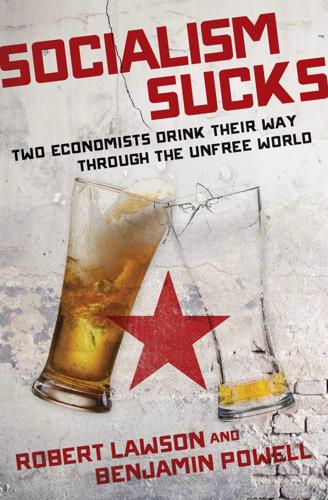
Socialism Sucks: Two Economists Drink Their Way Through the Unfree World
by
Robert Lawson
and
Benjamin Powell
Published 29 Jul 2019
If you want to get a flavor of what really interested the attendees at the conference, aside from singing the praises of Marx and Lenin, here’s a list of some of the conference sessions: • Black Lives Matter at School • A World Without Borders? Marxism, Nations, and Migration • Capitalism and the Gender Binary • The Rise of Red Power and the American Indian Movement • Artists Against War • Gender and Disability • Whose Clinics? Our Clinics! Defending Abortion rights • What Do Socialists Say About White Privilege? • All Eleven Million: The Fight for Immigrant Rights • From TrumpCare to Medicare for All: The Growing Movement for Single-Payer Health Care • Socialism and Women’s Liberation • Athletes in Revolt: Black Lives Matter in Sports Today • U.S.
…
I told them I was writing a book on socialism and asked if they’d mind answering some questions so that I could better understand what attracts younger people to socialism. They readily agreed. I asked them why they attended the conference. An attractive, well-dressed woman answered first. “The urgency is because of Trump, immigrant rights, Black Lives Matter, indigenous rights.” Her friend said she “wanted to meet a lot of comrades.” The third woman had a streak of green dyed into her hair and unshaved legs. She told me she was “new to socialism, and here to learn with my best friend, but also for the solidarity of it all.” I asked them to describe the essence of socialism.
…
For a comprehensive list of locations of any word or phrase, use your reading system’s search function. 1984 (Orwell), 102 2008 financial crisis, 2 A Abkhazia, 113 Absher, Sam, 113 AccorHotels, 72, 77 After War (Coyne), 135 Airports Council International, 63 Alger, Horatio, 17 Allende, Salvator, 123 Anti-Hero IPA, 130 Arab Spring, 15 Argentina, 17 Argo (beer), 103 Armenia, 103 Association of Private Enterprise Education (APEE), 119 Atlas Shrugged (Rand), 100 Auburn University, 6 Ayn Rand Institute, 81, 100 Azerbaijan, 103 B badrijani, 116 Bahia (beer), 20, 26 Bangladesh, 3 Batumi, 107 Beijing, 71–72, 77, 80–83, 134, 150 Belarus, 99–100 Belgian beers, 5, 12, 64, 130 Belgium, 5 Bendukidze Free Market Center, 99, 117 Bendukidze, Kakha, 99, 106–108, 117 Bengals, 7 Berlin Wall, 120 Black Book of Communism, The, 89–90, 150 Black Lives Matter, 129 Black Sea, 103, 107 black-market prices, 37 BlazeTV, 141 Bolívar, Simón, 17, Bolívarian Socialism, 17 Bolshevik Revolution, 104, 139 Bolsheviks, 89–90, 93–94, 96, 115 Bosporus Straits, 103 Boston, 6–7, 15 bourgeoisie, 76, 88, 92 Broken Bridge, 67 Brook, Yaron, 81 Bruenig, Elizabeth, 140 Bucanero (beer), 35 Buchanan, James, 8–9 Bush, George H.
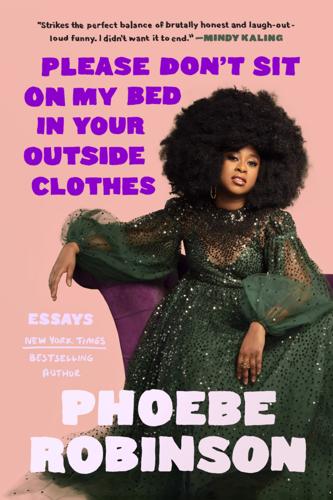
Please Don't Sit on My Bed in Your Outside Clothes: Essays
by
Phoebe Robinson
Published 14 Oct 2021
Some older white men didn’t do much better: They protested the quarantine orders and wanted to carry on leaving their homes for any and all nonessential reasons, such as purchasing Miracle-Gro for their grass. Really?! Huh. Remember the days when marching and being politically disruptive meant you were reacting to injustices such as oh, I don’t know, racism (Civil Rights Movement; Black Lives Matter), corruption within the Communist Party (1989 Tiananmen Square protests), homophobia (Stonewall Uprising), inmate rights (Attica prison riot), economic inequality (Occupy Wall Street), family detention centers and deportation (2018 pro-immigration rallies across America), gun violence (Million Mom March), oppressive regimes and low standards of living (Arab Spring), and violent crimes against women (Take Back the Night), just to name a few?
…
A groundswell of outrage, marches, and demands to defund the police mixed with a “Well, the world is on fire, so I gotta do something” energy was a chaotic combination that birthed something no one expected and very few wanted: social justice “warriors.” These weren’t the sjdubs of the past or recent past—Kimberlé Crenshaw (professor of law at UCLA and Columbia Law School), Alicia Garza (cofounder of Black Lives Matter), Rashad Robinson (president of Color of Change), and Marsha P. Johnson (trans activist and one of the prominent figures in the Stonewall uprisings) just to name a few—but a new breed. A breed that was comprised of many who were for the first time acknowledging systemic racism’s existence and/or that antiracism is not just labor to be done by Black people, but work that everybody needs to participate in, and boy, did they participate.
…
Point is that chaotic, throwing-anything-at-the-wall-and-seeing-what-sticks mindsets are kind of how some of these reactions to 2020’s social uprisings came off. Nothing but frazzled energy and barely formed ideas and solutions driven by a slight desperation to not get caught “making a mistake,” and this concern, of course, overshadows what should be the focus: Black. Lives. Mattering. In all the ways. In case you don’t remember, here’s a sampling of what we got: Corporations released carefully constructed statements of “committing to diversity” and sent out newsletters with JPEGs of Black people in them. Uhhh . . . Black people had to die in order for y’all to dump some Shutterstock pics of them looking at pie charts in a Mailchimp newsletter template about the company ecosystem?
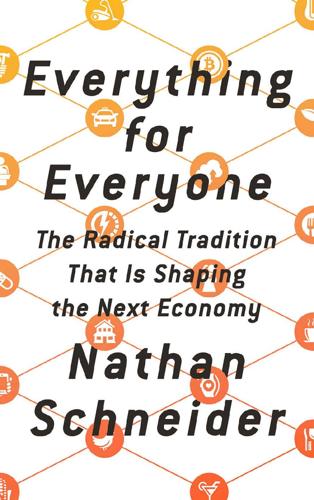
Everything for Everyone: The Radical Tradition That Is Shaping the Next Economy
by
Nathan Schneider
Published 10 Sep 2018
By the measure of Wall Street, the company wasn’t doing well. The user-base wasn’t growing quickly enough. The $14 billion-or-so valuation wasn’t enough to satisfy investors’ monopolistic expectations, especially not those who’d bought in when the valuation was closer to $40 billion. Tell that to the users, though. From Black Lives Matter activists to Donald Trump, Twitter has become a vital public square, truly a network of its people (and its many bots). It’s also a network of networks; TV news anchors show their Twitter handles next to their names on-screen. The company has even been on-and-off profitable—pretty good by internet standards.
…
Lumumba’s friends found it hard not to be on edge. He had come to office in a Southern capital on a platform of black power and human rights. He built a nationwide network of supporters and a local political base after decades as one of the most outspoken lawyers in the black nationalist movement. At the time, Black Lives Matter was still nascent, more a hashtag than an on-the-ground movement. DeRay Mckesson was still working for the Minneapolis Public Schools between sending off tweets. But those paying attention were coming to see Jackson as a model, the capital of a new African American politics and economics, a form of resistance more durable than protest.
…
According to Ben Allen’s email signature at the time, “downtown redevelopment is like war.”28 The forces that kept #BlackLivesMatter trending after the hashtag first appeared in 2013 were not exactly what one might expect from the headlines of black men killed by police. In reality, it was frequently a queer- and women-led uprising. The leaders were not afraid to use the word capitalism, and they did so derisively. (The “Black Lives Matter” slogan originated with Alicia Garza, a labor organizer with the National Domestic Workers Alliance.) They believed that black lives will not matter without a different system for determining what and who matters, and cooperative economics figured prominently in the movement’s policy proposals.
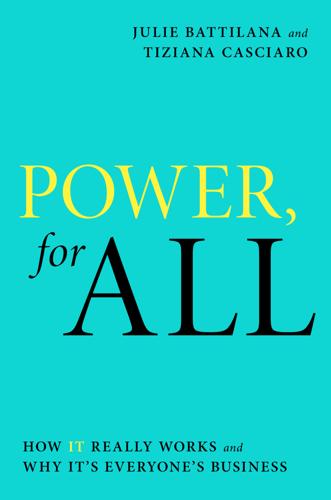
Power, for All: How It Really Works and Why It's Everyone's Business
by
Julie Battilana
and
Tiziana Casciaro
Published 30 Aug 2021
How the power-disadvantaged use the resources at their disposal to influence others to disrupt the status quo is just as critical as their decision to join forces. What exactly must collective movements do to pull off a seemingly impossible feat and successfully disrupt the power hierarchy? We turn to that question next. Chapter 6 Agitate, Innovate, Orchestrate Black Lives Matter, the Hong Kong protests, #MeToo, the French Yellow Vests, the Arab Spring: These are just a few of the social movements that have risen to prominence in the past decade, propelled by the sustained commitment of large numbers of people seeking social change.1 Perhaps because they were amplified by the ascent of social media they may seem like a novel phenomenon.2 They are not.
…
In particular, social media make it simple for people to engage in “click activism,” in which individuals are encouraged to “click,” “like,” or “share” items on social media in support of change.43 Yet as sociologist Zeynep Tufekci notes, “Modern networked movements can scale up quickly and take care of all sorts of logistical tasks without building any substantial organizational capacity before the first protest or march… However, with this speed comes weakness.”44 Without the long and grueling work of movement building, participants risk having shallow connections and little experience in collective decision-making, strategizing, communicating, and organizing, all of which play a critical role in ensuring a movement’s resilience and effectiveness. In The Purpose of Power: How We Come Together When We Fall Apart, Alicia Garza, the cofounder of Black Lives Matter, goes to the heart of this challenge: “You cannot start a movement from a hashtag. Hashtags do not start movements—people do. Movements do not have official moments when they start and end, and there is never just one person who initiates them. Movements are much more like waves than they are like light switches.
…
In 2013, as traditionally powerful institutions and players were losing clout to nimbler grassroots entities, journalist and scholar Moisés Naím declared that the end of power was upon us: “In the twenty-first century,” he wrote, “power is easier to get, harder to use—and easier to lose.”1 In a similar vein, five years later, entrepreneur and political activist Jeremy Heimans and social impact executive Henry Timms argued that connectivity has brought forth a new form of power: networked, informal, collaborative, transparent, and participatory. It is the kind of power that lives through the energy of the crowd, the kind #MeToo and Black Lives Matter have harnessed. Its opposite, the two authors say, is “old power”: closed, inaccessible, and mostly hierarchical.2 Whether the end of power or the emergence of new power, both analyses aptly describe important shifts in where power is located and how it can be exercised today. But as you will see, power itself hasn’t changed.
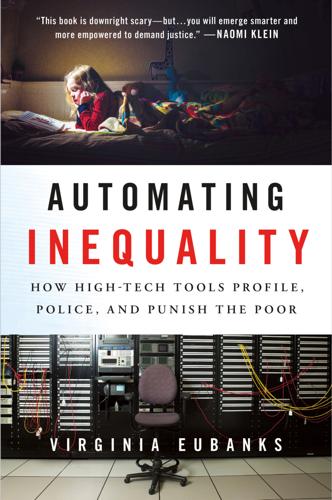
Automating Inequality
by
Virginia Eubanks
The affirmation of all Black lives at the heart of the Black Lives Matter movement has helped to bridge class divides and to mobilize an extraordinary cross-section of people to fight against police brutality, end mass incarceration, and build strong and loving communities. The movement’s founders, Alicia Garza, Opal Tometi, and Patrisse Cullors, are clear that the movement condemns all state violence, not just police violence. As part of its reparations platform, The Movement for Black Lives—a collective of 50 organizations including the Black Lives Matter Network—calls for the establishment of an unconditional and guaranteed minimum livable income for all Black people.
…
As part of its reparations platform, The Movement for Black Lives—a collective of 50 organizations including the Black Lives Matter Network—calls for the establishment of an unconditional and guaranteed minimum livable income for all Black people. But despite the expansive view of Black Lives Matter, the interventions that have attracted the most public attention have been those focused on violence committed against Black bodies, minds, and souls by the criminal justice system. Similar surveillance of brutality and dehumanization in public assistance, homeless services, and child protective services must take their rightful place at the center of our social justice work. As my colleague, Mariella Saba of the Stop LAPD Spying Coalition, always reminds me: it’s vital to keep our eyes on the badge.
…
Please use the search function on your e-reading device to search for terms of interest. For your reference, the terms that appear in the print index are listed below. ACLU Adams, Richard Adequate Income Act Affiliated Computer Services (ACS) affordable housing. See also public housing African Americans Black Lives Matter and child welfare and Civil Rights movement and criminal justice system and digital poorhouse and eugenics and exclusion and housing Movement for Black Lives and poorhouses and public relief and scientific charity movement and welfare and Welfare rights movement Aid to Dependent Children (ADC) and “employable mother” rule history of See also Aid to Families with Dependent Children (AFDC) Aid to Families with Dependent Children (AFDC) and eligibility rules history of and New York and Nixon administration and Reagan administration replaced by Temporary Assistance to Needy Families (TANF) statistics and welfare rights movement Alexander, Carmen Alexander, T.C.
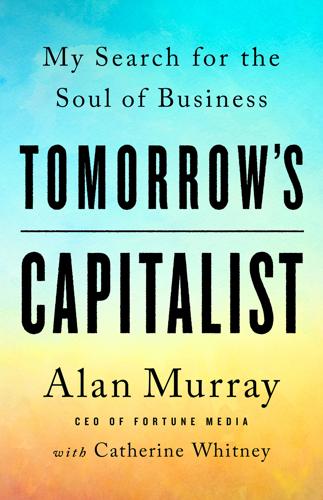
Tomorrow's Capitalist: My Search for the Soul of Business
by
Alan Murray
Published 15 Dec 2022
We’re very grateful to them for allowing us to plug straight into their application process online to help our colleagues find work there if they want to work during their furlough.” CRISIS UPON CRISIS The nation hobbled into June 2020, still not having a handle on COVID-19 as it spread across the US. And then, as if to underscore that the foundations of the system were unstable, a racial justice crisis stormed to the forefront of public attention, and Black Lives Matter, the nascent civil rights movement, achieved new prominence. There had been other high-profile incidents of police violence against Blacks in recent years, but the tragic death of forty-six-year-old George Floyd, a Minneapolis Black man, became a tipping point. On May 25, Minneapolis police officers arrested Floyd after a convenience store clerk claimed he’d passed a counterfeit $20 bill.
…
Such corporate actions shifted to conversations about Black representation in companies, underscoring the importance of diversity—one of the signature platforms of stakeholder capitalism. It’s worth noting that only six years earlier, a police officer in Ferguson, Missouri, had shot and killed Michael Brown in the middle of the street, witnessed by many bystanders. The event sparked large protests and fed the growth of the Black Lives Matter movement. But big company CEOs were, for the most part, silent. Their reaction following George Floyd’s death was different, indicating how much business leadership had changed in the few intervening years. Many CEOs had conversations with their employees about race for the first time. The intersection of BLM with the pandemic created a striking new awareness.
…
“I think we’re seeing the whole forest now, not just the individual trees of representation or minority content in our supply chain, but seeing how this extends to our communities. And that to me is the major difference.”10 AVOIDING MISSTEPS In the days after George Floyd was killed, there was a range of responses from the business community. Public statements of support for Black Lives Matter were issued from major brands. Public promises were made about doing better to incorporate diversity and inclusion in their own ranks. But even early on, what everyone was looking for was how the words would be followed up with actions. To help us get our minds around the tricky issue of corporate engagement in social issues, Ellen McGirt brought in Dr.
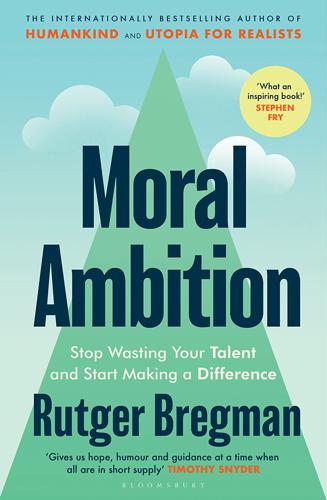
Moral Ambition: Stop Wasting Your Talent and Start Making a Difference
by
Bregman, Rutger
Published 9 Mar 2025
Whether we’re talking about the fight against climate change or inequality, about Occupy or Black Lives Matter – when you track actual progress made in terms of new laws or rights secured, the results look pretty meagre. Occupy protests popped up everywhere after the 2008 crash, but bailouts continued unabated and the income gap between the top 1 per cent and the rest grew. More people protested in a single day during the Women’s March of 2017 than ever before in the US, but the organisation later fractured into multiple groups. The Black Lives Matter demonstrations of 2020 were even bigger – in a matter of weeks, over 15 million people took to the streets – but it didn’t result in much concrete legislation.47 Of course every one of these protests was historic and awe-inspiring and served to wake up millions.
…
Having lots of followers on Instagram isn’t the same as building an effective organisation. Going viral isn’t the same as winning a majority in the legislature. Modern protest sometimes seems little more than a collection of clicks and likes, in the hope that someone higher up will take notice.24 ‘People don’t understand,’ writes Patrisse Khan-Cullors, one of the founders of Black Lives Matter, ‘that organizing isn’t going online and cussing people out or going to a protest and calling something out.’25 For actual change, far more is required. How do you build a coalition? How do you lobby effectively? Where’s the money coming from? Who plays a key role in that commission at the local, state, or national level?
…
Originally published in 1971. 45 Isabel Ortiz, Sara Burke, Mohamed Berrada, and Hernán Saenz Cortés, World Protests: A Study of Key Protest Issues in the 21st Century, Palgrave Macmillan (2022), pp. 13–15. 46 Vincent Bevins, If We Burn: The Mass Protest Decade and the Missing Revolution, PublicAffairs (2023). 47 Larry Buchanan, Quoctrung Bui, and Jugal K. Patel, ‘Black Lives Matter May Be the Largest Movement in U.S. History’, New York Times (3 July 2020). 48 Zeynep Tufekci, ‘I Was Wrong About Why Protests Work’, New York Times (21 July 2022). 49 Zeynep Tufekci, ‘Online Social Change: Easy to Organize, Hard to Win’, TEDGlobal (2014). 50 John Blake, ‘What Did mlk Think about Gay People?’
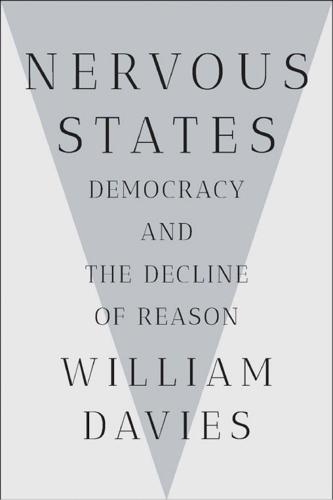
Nervous States: Democracy and the Decline of Reason
by
William Davies
Published 26 Feb 2019
A movement such as Black Lives Matter gives a glimpse of the sort of political movements that will likely dominate the twenty-first century, aimed at highlighting inequalities in the defense of life itself. The central claim of Black Lives Matter is brutally simple: the American Leviathan does not deliver on its function of protecting all lives equally. It is almost certain that the number and scope of such political demands is going to multiply in the coming years, especially as climate-related mass migration increases. Threats to life do not need to be as direct as those publicized by Black Lives Matter in order to be politicized.
…
Equally, the foundational purpose of Occupy was not to criticize Wall Street, debate financial regulation or to lobby for alternative economic policies, but, as the name says, to occupy physical space—to use human bodies to render a political movement unavoidable. Activists in other contemporary protest movements, such as Black Lives Matter and Greenpeace, jam strategically important infrastructure (airports and highways for example) with their bodies. Mass silence, such as the monthly silent walks organized to mourn those lost in London’s Grenfell Tower fire, makes a powerful statement of compassion simply through being physically together.
…
A/B testing, 199 Acorn, 152 ad hominem attacks, 27, 124, 195 addiction, 83, 105, 116–17, 172–3, 186–7, 225 advertising, 14, 139–41, 143, 148, 178, 190, 192, 199, 219, 220 aerial bombing, 19, 125, 135, 138, 143, 180 Affectiva, 188 affective computing, 12, 141, 188 Agent Orange, 205 Alabama, United States, 154 alcoholism, 100, 115, 117 algorithms, 150, 169, 185, 188–9 Alsace, 90 alt-right, 15, 22, 50, 131, 174, 196, 209 alternative facts, 3 Amazon, 150, 173, 175, 185, 186, 187, 192, 199, 201 American Association for the Advancement of Science, 24 American Civil War (1861–5), 105, 142 American Pain Relief Society, 107 anaesthetics, 104, 142 Anderson, Benedict, 87 Anthropocene, 206, 213, 215, 216 antibiotics, 205 antitrust laws, 220 Appalachia, 90, 100 Apple, 156, 185, 187 Arab Spring (2011), 123 Arendt, Hannah, xiv, 19, 23, 26, 53, 219 Aristotle, 35, 95–6 arrogance, 39, 47, 50 artificial intelligence (AI), 12–13, 140–41, 183, 216–17 artificial video footage, 15 Ashby, Ross, 181 asymmetrical war, 146 atheism, 34, 35, 209 attention economy, 21 austerity, 100–101, 225 Australia, 103 Australian, 192 Austria, 14, 60, 128, 153–75 Austria-Hungary (1867–1918), 153–4, 159 authoritarian values, 92–4, 101–2, 108, 114, 118–19, 211–12 autocracy, 16, 20, 202 Babis, Andrej, 26 Bacon, Francis, 34, 35, 95, 97 Bank of England, 32, 33, 55, 64 Banks, Aaron, 26 Bannon, Steve, 21, 22, 60–61 Bayh–Dole Act (1980), 152 Beck Depression Inventory, 107 Berlusconi, Silvio, 202 Bernays, Edward, 14–15, 16, 143 “Beyond the Pleasure Principle” (Freud), 110 Bezos, Jeff, 150, 173 Big Data, 185–93, 198–201 Big Government, 65 Big Science, 180 Bilbao, Spain, 84 bills of mortality, 68–71, 75, 79–80, 81, 127 Birmingham, West Midlands, 85 Black Lives Matter, 10, 225 Blackpool, Lancashire, 100 blind peer reviewing, 48, 139, 195 Blitz (1940–41), 119, 143, 180 blue sky research, 133 body politic, 92–119 Bologna, Italy, 96 bookkeeping, 47, 49, 54 Booth, Charles, 74 Boston, Massachusetts, 48 Boyle, Robert, 48–50, 51–2 BP oil spill (2010), 89 brainwashing, 178 Breitbart, 22, 174 Brexit (2016–), xiv, 23 and education, 85 and elites, 33, 50, 61 and inequality, 61, 77 and NHS, 93 and opinion polling, 80–81 as self-harm, 44, 146 and statistics, 61 Unite for Europe march, 23 Vote Leave, 50, 93 British Futures, 65 Brooks, Rosa, 216 bullying, 113 Bureau of Labor, 74 Bush, George Herbert Walker, 77 Bush, George Walker, 77, 136 cadaverous research, 96, 98 call-out culture, 195 Calvinism, 35 Cambridge, Cambridgeshire, 85 University, 84, 151 Cambridge Analytica, 175, 191, 196, 199 Cameron, David, 33, 73, 100 cancer, 105 Capital in the Twenty-First Century (Piketty), 74 capital punishment, 92, 118 car accidents, 112–13 cargo-cult science, 50 Carney, Mark, 33 cartography, 59 Case, Anne, 99–100, 102, 115 Catholicism, 34 Cato Institute, 158 Cavendish, William, 3rd Earl of Devonshire, 34 Central Intelligence Agency (CIA), 3, 136, 151, 199 Center for Policy Studies, 164 chappe system, 129, 182 Charles II, King of England, Scotland, and Ireland, 34, 68, 73 Charlottesville attack (2017), 20 Chelsea, London, 100 Chevillet, Mark, 176 Chicago School, 160 China, 13, 15, 103, 145, 207 chloroform, 104 cholera, 130 Chongqing, China, 13 chronic pain, 102, 105, 106, 109 see also pain Churchill, Winston, 138 citizen science, 215, 216 civil rights movements, 21, 194 civilians, 43, 143, 204 von Clausewitz, Carl, 128–35, 141–7, 152 and defeat, 144–6 and emotion, 141–6, 197 and great leaders, 146–7, 156, 180–81 and intelligence, 134–5, 180–81 and Napoleon, 128–30, 133, 146–7 and soldiers, number of, 133–4 war, definition of, 130, 141, 193 climate change, 26, 50, 165, 205–7, 213–16 Climate Mobilization, 213–14 climate-gate (2009), 195 Clinton, Hillary, 27, 63, 77, 99, 197, 214 Clinton, William “Bill,” 77 coal mining, 90 cognitive behavioral therapy, 107 Cold War, 132, 133, 135–6, 137, 180, 182–4, 185, 223 and disruption, 204–5 intelligence agencies, 183 McCarthyism (1947–56), 137 nuclear weapons, 135, 180 scenting, 135–6 Semi-Automatic Ground Environment (SAGE), 180, 182, 200 space race, 137 and telepathy, 177–8 colonialism, 59–61, 224 commercial intelligence, 152 conscription, 127 Conservative Party, 80, 154, 160, 163, 166 Constitution of Liberty, The (Hayek), 160 consumer culture, 90, 104, 139 contraceptive pill, 94 Conway, Kellyanne, 3, 5 coordination, 148 Corbyn, Jeremy, 5, 6, 65, 80, 81, 197, 221 corporal punishment, 92 creative class, 84, 151 Cromwell, Oliver, 57, 59, 73 crop failures, 56 Crutzen, Paul, 206 culture war, xvii Cummings, Dominic, 50 currency, 166, 168 cutting, 115 cyber warfare, xii, 42, 43, 123, 126, 200, 212 Czech Republic, 103 Daily Mail, ix Damasio, Antonio, 208 Darwin, Charles, 8, 140, 142, 157, 171, 174, 179 Dash, 187 data, 49, 55, 57–8, 135, 151, 185–93, 198–201 Dawkins, Richard, 207, 209 death, 37, 44–5, 66–7, 91–101 and authoritarian values, 92–4, 101–2, 211, 224 bills of mortality, 68–71, 75, 79–80, 81, 89, 127 and Descartes, 37, 91 and Hobbes, 44–5, 67, 91, 98–9, 110, 151, 184 immortality, 149, 183–4, 224, 226 life expectancy, 62, 68–71, 72, 92, 100–101, 115, 224 suicide, 100, 101, 115 and Thiel, 149, 151 death penalty, 92, 118 Deaton, Angus, 99–100, 102, 115 DeepMind, 218 Defense Advanced Research Projects Agency (DARPA), 176, 178 Delingpole, James, 22 demagogues, 11, 145, 146, 207 Democratic Party, 77, 79, 85 Denmark, 34, 151 depression, 103, 107 derivatives, 168, 172 Descartes, René, xiii, 36–9, 57, 147 and body, 36–8, 91, 96–7, 98, 104 and doubt, 36–8, 39, 46, 52 and dualism, 36–8, 39, 86, 94, 131, 139–40, 179, 186, 223 and nature, 37, 38, 86, 203 and pain, 104, 105 Descartes’ Error (Damasio), 208 Devonshire, Earl of, see Cavendish, William digital divide, 184 direct democracy, 202 disempowerment, 20, 22, 106, 113–19 disruption, 18, 20, 146, 147, 151, 171, 175 dog whistle politics, 200 Donors Trust, 165 Dorling, Danny, 100 Downs Survey (1655), 57, 59, 73 doxing, 195 drone warfare, 43, 194 drug abuse, 43, 100, 105, 115–16, 131, 172–3 Du Bois, William Edward Burghardt, 74 Dugan, Regina, 176–7 Dunkirk evacuation (1940), 119 e-democracy, 184 Echo, 187 ecocide, 205 Economic Calculation in the Socialist Commonwealth (Mises), 154, 166 economics, 59, 153–75 Economist, 85, 99 education, 85, 90–91 electroencephalography (EEG), 140 Elizabethan era (1558–1603), 51 embodied knowledge, 162 emotion and advertising, 14 artificial intelligence, 12–13, 140–41 and crowd-based politics, 4, 5, 8, 9, 10, 15, 16, 21, 23–7 Darwin’s analysis, 8, 140 Descartes on, 94, 131 and experts, 53, 60, 64, 66, 90 fear, 11–12, 16–22, 34, 40–45, 52, 60, 142 Hobbes on, 39, 41 James’ analysis, 140 and markets, 168, 175 moral, 21 and nationalism, 71, 210 pain, 102–19 sentiment analysis, xiii, 12–13, 140, 188 and war, 124–6, 142 empathy, 5, 12, 65, 102, 104, 109, 112, 118, 177, 179, 197 engagement, 7, 219 England Bank of England founded (1694), 55 bills of mortality, 68–71, 75, 79–80, 81, 89, 127 civil servants, 54 Civil War (1642–51), 33–4, 45, 53 Elizabethan era (1558–1603), 51 Great Fire of London (1666), 67 hospitals, 57 Irish War (1649–53), 59 national debt, 55 Parliament, 54, 55 plagues, 67–71, 75, 79–80, 81, 89, 127 Royal Society, 48–52, 56, 68, 86, 208, 218 tax collection, 54 Treasury, 54 see also United Kingdom English Defense League, ix entrepreneurship, 149, 156, 162 environment, 21, 26, 50, 61, 86, 165, 204–7, 213–16 climate change, 26, 50, 165, 205–7, 213–16 flying insects, decline of, 205, 215 Environmental Protection Agency, 23 ether, 104 European Commission, 60 European Space Agency, 175 European Union (EU), xiv, 22, 60 Brexit (2016–), see under Brexit and elites, 60, 145, 202 euro, 60, 78 Greek bailout (2015), 31 immigration, 60 and nationalism, 60, 145, 146 quantitative easing, 31 refugee crisis (2015–), 60, 225 Unite for Europe march (2017), 23 Exeter, Devon, 85 experts and crowd-based politics, 5, 6, 23, 25, 27 Hayek on, 162–4, 170 and representative democracy, 7 and statistics, 62–91 and technocracy, 53–61, 78, 87, 89, 90 trust in, 25–33, 63–4, 66, 74–5, 77–9, 170, 202 violence of, 59–61 Expression of the Emotions in Man and Animal, The (Darwin), 8, 140 Exxon, 165 Facebook, xvi, 15, 201 advertising, 190, 192, 199, 219, 220 data mining, 49, 185, 189, 190, 191, 192, 198, 219 and dog whistle politics, 200 and emotional artificial intelligence, 140 as engagement machine, 219 and fake news, 199 and haptics, 176, 182 and oligarchy, 174 and psychological profiling, 124 and Russia, 199 and sentiment analysis, 188 and telepathy, 176–8, 181, 185, 186 and Thiel, 149, 150 and unity, 197–8 weaponization of, 18 facial recognition, 13, 188–9 failed states, 42 fake news, 8, 15, 199 Farage, Nigel, 65 fascism, 154, 203, 209 fear, 11–12, 16–22, 34, 40–45, 52, 60, 142 Federal Bureau of Investigation (FBI), 137 Federal Reserve, 33 feeling, definition of, xii feminism, 66, 194 Fifth Amendment, 44 fight or flight, 111, 114 Financial Times, 15 first past the post, 13 First World War, see World War I Fitbit, 187 fixed currency exchange rates, 166 Florida, Richard, 84 flu, 67, 191 flying insects, 205, 215 France censuses, 66, 73 conscription introduced (1793), 127 Front National, 27, 61, 79, 87, 92 Hobbes in (1640–51), 33–4, 41–2 Le Bon’s crowd psychology, 8–12, 13, 15, 16, 20, 24, 25, 38 life expectancy, 101 Napoleonic Wars (1803–15), see Napoleonic Wars Paris climate accord (2015), 205, 207 Paris Commune (1871), 8 Prussian War (1870–71), 8, 142 Revolution (1789–99), xv, 71, 126–9, 141, 142, 144, 204 statistics agency established (1800), 72 unemployment, 83 Franklin, Benjamin, 66 free markets, 26, 79, 84, 88, 154–75 free speech, 22, 113, 194, 208, 209, 224 free will, 16 Freud, Sigmund, 9, 14, 44, 107, 109–10, 111, 112, 114, 139 Friedman, Milton, 160, 163, 166 Front National, 27, 61, 79, 87, 92, 101–2 full spectrum warfare, 43 functional magnetic resonance imaging (fMRI), 140 futurists, 168 Galen, 95–6 Galilei, Galileo, 35 gambling, 116–17 game theory, 132 gaming, 193–4 Gandhi, Mohandas, 224 gate control theory, 106 Gates, Sylvester James “Jim,” 24 Gavotti, Giulio, 143 geek humor, 193 Gehry, Frank, 84 Geller, Uri, 178 geometry, 35, 49, 57, 59, 203 Gerasimov, Valery, 123, 125, 126, 130 Germany, 34, 72, 137, 205, 215 gig economy, 173 global financial crisis (2007–9), 5, 29–32, 53, 218 austerity, 100–101 bailouts, 29–32, 40, 42 and gross domestic product (GDP), 76 as “heart attack,” 57 and Obama administration, 158 and quantitative easing, 31–2, 222 and securitization of loans, 218–19 and statistics, 53, 65 and suicide, 101 and unemployment, 82 globalization, 21, 78, 84, 145, 146 Gonzales, Alberto, 136 Google, xvi, 174, 182, 185, 186, 191, 192 DeepMind, 218 Maps, 182 Transparency Project, 198 Government Accountability Office, 29 Graunt, John, 67–9, 73, 75, 79–80, 81, 85, 89, 127, 167 Great Fire of London (1666), 67 great leaders, 146–8 Great Recession (2007–13), 76, 82, 101 Greece, 5, 31, 101 Greenpeace, 10 Grenfell Tower fire (2017), 10 Grillo, Beppe, 26 gross domestic product (GDP), 62, 65, 71, 75–9, 82, 87, 138 guerrillas, 128, 146, 194, 196 Haldane, Andrew, 32 haptics, 176, 182 Harvey, William, 34, 35, 38, 57, 96, 97 hate speech, 42 von Hayek, Friedrich, 159–73, 219 health, 92–119, 224 hedge funds, 173, 174 hedonism, 70, 224 helicopter money, 222 Heritage Foundation, 164, 214 heroin, 105, 117 heroism and disruption, 18, 146 and genius, 218 and Hobbes, 44, 151 and Napoleonic Wars, 87, 127, 142 and nationalism, 87, 119, 210 and pain, 212 and protection, 202–3 and technocracy, 101 and technology, 127 Heyer, Heather, 20 Hiroshima atomic bombing (1945), 206 Hobbes, Thomas, xiii, xvi, 33–6, 38–45, 67, 147 on arrogance, 39, 47, 50, 125 and body, 96, 98–9 and Boyle, 49, 50, 51 on civil society, 42, 119 and death, 44–5, 67, 69–70, 91, 98–9, 110, 151, 184 on equality, 89 on fear, 40–45, 52, 67, 125 France, exile in (1640–51), 33–4, 41 on geometry, 35, 38, 49, 56, 57 and heroism, 44, 151 on language, 38–9 natural philosophy, 35–6 and nature, 38, 50 and Petty, 56, 57, 58 on promises, 39–42, 45, 148, 217–18 and Royal Society, 49, 50, 51 on senses, 38, 49, 147 and sovereign/state, 40–45, 46, 52, 53, 54, 60, 67, 73, 126, 166, 217, 220 on “state of nature,” 40, 133, 206, 217 war and peace, separation of, 40–45, 54, 60, 73, 125–6, 131, 201, 212 Hobsbawm, Eric, 87, 147 Hochschild, Arlie Russell, 221 holistic remedies, 95, 97 Holland, see under Netherlands homeopathy, 95 Homer, xiv Hungary, 20, 60, 87, 146 hysteria, 139 IBM, 179 identity politics, 208, 209 Iglesias Turrión, Pablo, 5 imagined communities, 87 immigration, 60, 63, 65, 79, 87, 145 immortality, 149, 183–4, 224 in-jokes, 193 individual autonomy, 16 Industrial Revolution, 133, 206 inequality, 59, 61, 62, 76, 77, 83, 85, 88–90 inflation, 62, 76, 78, 82 infographics, 75 information theory, 147 information war, 43, 196 insurance, 59 intellectual property, 150 intelligence, 132–9 intensity, 79–83 International Association for the Study of Pain, 106 International Monetary Fund (IMF), 64, 78 Internet, 184–201, 219 IP addresses, 193 Iraq War (2003–11), 74, 132 Ireland, 57, 73 Irish Republican Army (IRA), 43 “Is This How You Feel?
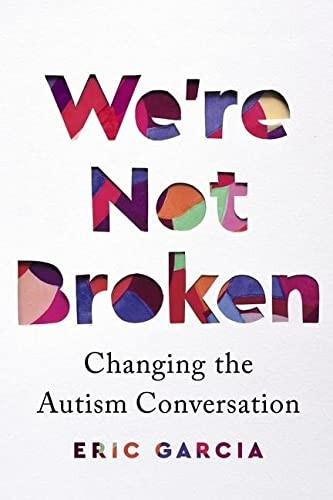
We're Not Broken: Changing the Autism Conversation
by
Eric Garcia
Published 2 Aug 2021
Jacob Blake’s shooting in Kenosha, Wisconsin: Christina Morales, “What We Know About the Shooting of Jacob Blake,” New York Times, September 10, 2020, https://www.nytimes.com/article/jacob-blake-shooting-kenosha.html. Black Lives Matter: Michael Tesler, “Support for Black Lives Matter Surged During Protests, But Is Waning Among White Americans,” FiveThirtyEight, August 19, 2020, https://fivethirtyeight.com/features/support-for-black-lives-matter-surged-during-protests-but-is-waning-among-white-americans/. 5 percent of them had been arrested: Julianna Rava et al., “The Prevalence and Correlates of Involvement in the Criminal Justice System Among Youth on the Autism Spectrum,” Journal of Autism Developmental 47, no. 2 (February 2017): 340–46, https://pubmed.ncbi.nlm.nih.gov/27844248/.
…
The fact that he was shot while police were responding to a Latino man was terrifying because it meant that those who were even in proximity to autistic people were also not safe. I knew that Black and brown people were more vulnerable to police violence. I had graduated from college a few months before police officer Darren Wilson shot Michael Brown in Ferguson, Missouri, which led to widespread protests and cemented the chant of “Black lives matter” in the public consciousness. Only a few days before the Kinsey shooting in north Miami, Philando Castile, a Black man in Minnesota, was shot and killed by a Hispanic police officer. But until Kinsey’s shooting, I hadn’t considered how autism factored into the epidemic of police brutality. I didn’t think that autism, which sometimes makes it difficult for me to make eye contact or requires stimming to calm down, could be seen as a threat.
…
The fact that video was captured of George Floyd’s murder and, later, Jacob Blake’s shooting in Kenosha, Wisconsin, seemed to finally make white Americans see that their Black countrymen and women were not being hyperbolic when they said they feared police. The protests, demonstrations, and occasional damaged property triggered President Trump to tear-gas demonstrators in front of the White House but also seemed to shift national opinion in favor of Black Lives Matter, which was not the case when the phrase entered the public lexicon in 2014 (though support among white Americans began to decline after a summer of protests). But in this shift in public opinion, it is essential for the public to remember how vulnerable Black, Latino, and otherwise marginalized autistic people are to police violence.
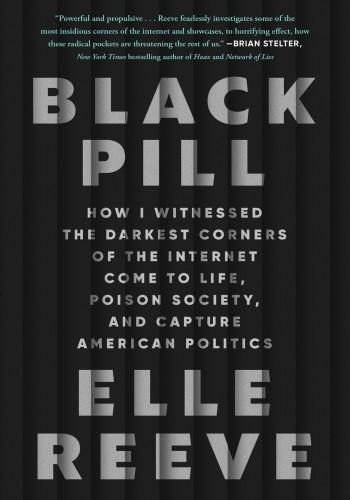
Black Pill: How I Witnessed the Darkest Corners of the Internet Come to Life, Poison Society, and Capture American Politics
by
Elle Reeve
Published 9 Jul 2024
They notice that there’s one justice system for the rich and another for the poor, that getting a single racist guy fired is easy, but it is apparently impossible to punish the bankers who gave Black people bad mortgages and then kicked them out of their homes in the 2008 financial crisis. They look at all the real unfairness and they say the white working class is the whipping boy for the sins of a ruling class that benefits from racism while waving a Black Lives Matter flag. They say any attempt to do anything about racism only serves to make society less equal, not more. They sow doubt that national leaders could ever be trusted to enact the change demanded by the people they claim to represent. They notice that smart people need to feel like they’re logical, principled thinkers, and so they create cringe propaganda to make them feel alienated from activists for social justice.
…
Is it legal to run over protesters blocking roadways? I’m NOT just shitposting. I would like clarification. I know it’s legal in North Carolina and a few other states. I’m legitimately curious for the answer. The idea of running protesters over with cars was in the ether. There had been a few incidents during the Black Lives Matter protests that began in Ferguson, Missouri, in 2014. But Chesny was wrong—it wasn’t legal in North Carolina, though the state house of representatives had approved a bill in April 2017 that shielded drivers from liability if they did not hurt protesters willfully. Several other state legislatures had proposed similar measures.
…
On Facebook, Cantwell had seen a video of an interview with Murray, and a flame war erupted in the comments underneath. “They’re talking about the disparity in IQ between whites and Blacks, and there’s the suggestion that this is genetic in origin and is responsible for this disparity in crime statistics in the United States,” Cantwell said. “This was, of course, going on at the height of the Black Lives Matter riots, and so everybody’s screaming that it is racist police causing all these problems. Perhaps there’s a more reasonable explanation.” Cantwell had taken the same lesson from Murray’s work as so many others in the alt-right: inequality is not a problem with the structure of society, but the natural order of things.
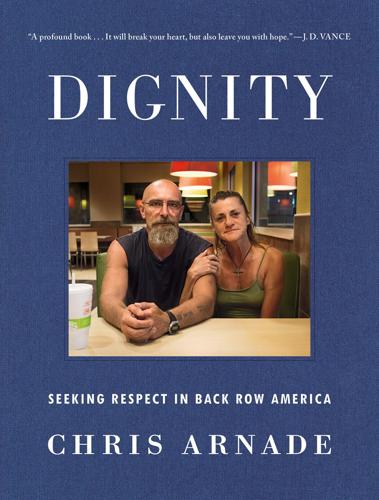
Dignity: Seeking Respect in Back Row America
by
Chris Arnade
Published 3 Jun 2019
Worn paths weave through the lot filled with empty liquor bottles and Swisher Sweet cigar wrappers toward the parking lot. In the corner of the parking lot, next to a busy intersection, two older white men are hawking T-shirts from beneath an assembled white tent. “FUCK TRUMP” shirts hang next to “Black Lives Matter in America” and “Hands Up Don’t Shoot” shirts. Both men walk along the sidewalk, both wearing “Black Lives Matter” shirts, trying to sell them to stopped traffic. They are the only white men in the neighborhood beyond the police passing by now and then. Everyone ignores them, too busy with kids, or getting groceries, or lost in their own thoughts.
…
One man, still dirty from work, soda in hand, walking past on the way to his apartment, gives them a nasty look. “Look at that. Just trying to make a buck off of us. Hell. We at a low point right now, nothing is going to fix this. Like we are in a third-world country. It is 2016, and we still discussing race? Black Lives Matter, but it shouldn’t be that. It should be All Lives Matter. We in the hood have suffered enough. Why we going to get everyone all riled up against the police?” Another man, sitting on the stoop of his apartment, getting ready to grill, is smoking. He sees me and asks why I am here. I explain, and he smiles.
…
He had been playing with a plastic toy gun the police said they mistook for a real gun. The memorial is filled with balloons, candles, posters, flowers, stuffed animals—all in various states of decay and rot. There are political flyers taped up from a variety of groups, some stating simply “Stop the violence” or “Black lives matter,” others filled with long essays in tiny print. I had visited the memorial every day, and although the park and rec center were always busy, the memorial was always empty. Now a black man in a shirt proclaiming “Tamir Rice” is standing in the gazebo, holding flyers, lecturing loudly. He continues for twenty minutes, uninterrupted and with no audience.

The Rise and Fall of the Neoliberal Order: America and the World in the Free Market Era
by
Gary Gerstle
Published 14 Oct 2022
But Bush’s hubris reveals not just the flaws of a man but, also, the unassailable prestige of neoliberal principles, an influence that Barack Obama’s election in 2008 initially did little to change. Two final chapters consider the political explosions that issued from the Great Recession of 2008–2009 (the Tea Party, Occupy Wall Street, Black Lives Matter, and the rise of Donald Trump and Bernie Sanders) and that pushed the neoliberal order to its breaking point. The neoliberal order was already fragmenting when the 2020 pandemic delivered the coup de grace. This book tells the whole of the neoliberal order’s story from its origins in the 1970s and 1980s, through its dominance in the 1990s and 2000s, and ending with its fragmentation and decline across the 2010s.
…
Young people of different races who discovered that the Great Recession had vaporized the economic opportunities they had thought would be theirs took over a small park in lower Manhattan, announcing they had come to occupy Wall Street; they stayed for months and triggered a national protest against economic inequality. Finally, black anger at the brutal effect of a burst housing bubble and police violence in their communities hardened into the defiant slogan and uprising, Black Lives Matter (BLM). None of these insurgencies, on its own, was as large or as impactful as either the civil rights or anti-Vietnam War movements of the 1960s (or the labor movement of the 1930s) had been. But the three, in combination, profoundly convulsed American politics, fueling the rise of Donald Trump and Bernie Sanders, leading in 2016 to one of the more remarkable election campaigns in American history.
…
Less than a week later, an injured and tied-up Freddie Gray of Baltimore died after being thrown repeatedly against the hard metal surfaces and edges of a police van in which he had been locked up as officers were transporting him to jail.72 These killings led to the eruption of a new protest movement, “Black Lives Matter.” Ferguson, Missouri, the site of Michael Brown’s death, became ground zero for this movement. The heated protests, confrontations with police, and sit-ins modeled on Occupy Wall Street attracted activists from all over the country and gained national and international attention. BLM protesters were young, militant, and uncompromising.

The Color of Money: Black Banks and the Racial Wealth Gap
by
Mehrsa Baradaran
Published 14 Sep 2017
He was joined by Usher and Jermaine Dupri, and the well-publicized event kicked off Black History Month and spurred a national movement. Other celebrities including Solange Knowles, Jesse Williams, Alicia Keys, and Queen Latifa all endorsed the #BankBlack movement.175 The movement was dubbed Black Money Matters, in sync with the national Black Lives Matter movement. As the Black Lives Matter movement expanded beyond protests over police shootings, the organization led a renewed focus on black businesses with a newly formed coalition called Backing Black Business. Its website urged the black community to support black business, invoking the words of both Malcolm X and Martin Luther King.176 American Banker reported that executives at the top black-owned banks in the country all reported a huge surge in deposits.
…
We need to identify the subterranean forces that barely make a visible ripple on the surface as they perpetuate injustice over time. To examine the history and function of black banks is to shine a spotlight directly onto the fault line of economic inequality. In 2016, in conjunction with the Black Lives Matter movement, activists renewed a focus on black banking. Yet, the industry is in distress. In June 2015, Mechanics and Farmers Bank of Durham, North Carolina, announced that it was shifting focus from specifically serving the black community to being just a standard community bank. It hired its first nonblack director, changed its name to the more modern “M&F,” and announced that it would start going after a broader customer base.12 To most banking industry observers, this change was not newsworthy; in fact, hardly anyone noticed.
…
He also repeated his promise to increase law enforcement in black communities.9 In fact, the tension between law enforcement and the black community had hit another boiling point. The city of Ferguson, Missouri, erupted after police killed Michael Brown, a black man, in 2014. This was one of the largest race riots the country had seen in recent memory, and it marked the genesis of the Black Lives Matter movement. Ferguson is a suburb of St. Louis, one of the most segregated cities in the United States.10 It was defined as a “resegregated” city, created by the exodus of black residents from the newly gentrified inner city of St. Louis.11 Ferguson’s population was two-thirds black and predominantly low-income, with more than one-fifth of the residents living below the poverty level.12 The subpar schools were almost completely segregated, and 26 percent of blacks there were unemployed compared to 6 percent of whites.13 Rioters destroyed white-owned commercial property.
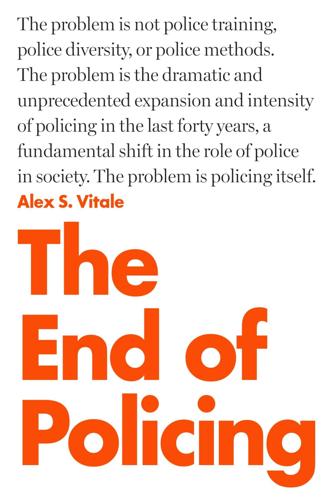
The End of Policing
by
Alex S. Vitale
Published 9 Oct 2017
It was captured on video. The singer and civil rights activist Harry Belafonte, like most others, was appalled by what he saw and initiated a campaign to train the next generation of civil rights activists: the Gathering for Justice, which in turn created the Justice League, an important force in the Black Lives Matter movement. At the core of the group’s demands is a call to end the criminalization of young people in schools.1 “School Resource Officers” Over the last twenty years there has been an explosion in the number of police officers stationed in schools—one of the most dramatic and clearly counterproductive expansions of police scope and power.
…
Those who were arrested were subjected to interrogation about their political beliefs, organizational affiliations, and social networks. After the New York Civil Liberties Union exposed the practice, the NYPD voluntarily agreed to stop it.26 However, in 2015, activists arrested as part of the Black Lives Matter movement reported similar standardized political interrogations.27 In 2010, the ACLU found hundreds of incidents of police spying on legal political and protest activity in thirty-three states since 2001.28 In 2003, Oakland police infiltrated an anti-police-brutality organization and played an active role in planning and coordinating events, including the route of a march.
…
American democracy has been continually undermined by concentrations of wealth and political power in the hands of a smaller and smaller group of wealthy donors and corporate interests; contentious protest activity will increase as long as there is the freedom for it to do so. When normal political channels are closed off, street politics become more common. This can be seen in the rise of the Tea Party, Occupy Wall Street, and Black Lives Matter, all of which expressed profound alienation from existing political arrangements and took to the streets as an alternative. Decisions about the granting of permits and the plans for deploying police should be largely removed from police control. Police may share their views about traffic management and serious security risks, but decisions should be in the hands of elected leaders operating within legal frameworks that protect the right to dissent.
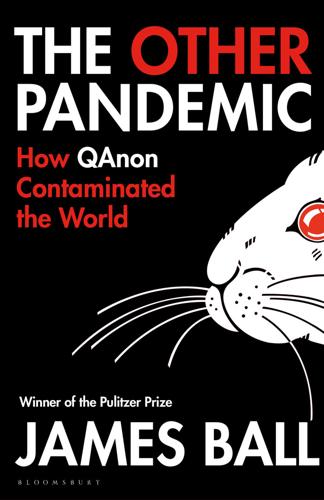
Other Pandemic: How QAnon Contaminated the World
by
James Ball
Published 19 Jul 2023
‘Leftist’ is a handy shorthand for anything conservatives dislike, while ‘Marxist’ bears no relation to Karl Marx or anything he wrote. For this particular crowd, socialism, communism, Marxism and leftism are all interchangeable terms for what’s bad.5 A Republican judge appointed by George W. Bush could just as easily qualify as a socialist as a Black Lives Matter activist.6 The genre of Q influencer and explainer videos became a whole micro-industry of its own, capitalising on the speculation format familiar to conspiracy theorists and mainstream YouTube fans alike. Few took their efforts nearly so far, though, as Dutch filmmaker Janet Ossebaard, who – inspired by Q – created a ten-part online documentary entitled Fall of the Cabal.
…
One man, though, did far more – Native American rapper and model Scotty ‘the Kid’ Rojas, who helped propel #SaveTheChildren into the Instagram mainstream.16 From June 2020 onwards, Rojas revealed he had been following QAnon and said the claims it was a conspiracy were from those ‘too lazy to do their own research’. Rojas went on to wonder whether the summer’s Black Lives Matter protests and accompanying movement had been orchestrated as a distraction to the ‘real’ issue of mass child abuse. Soon afterwards, Rojas announced on Instagram that he would hold a march on Hollywood in late July to ‘save the children’ – believed to be the beginning of that movement. Posters for the event included a ‘WWG1WGA’ logo – an initialism of QAnon’s ‘Where We Go One, We Go All’ mantra.
…
QAnon was now influencing geopolitics as well as multiple countries’ internal affairs, at least to the extent of giving Russia’s extraordinarily malleable information operations a new line to push for a few days. (Of course, Russia likely played a role in playing up QAnon, too – just as it pushes division in Western countries around Black Lives Matter, Antifa, hijab-wearing and any other issues it can find.)55 Inevitably, of course, some QAnons detected Trump’s hand in things, with some suggesting he was working with Putin to destroy Fauci’s Ukrainian labs by targeting them with shelling,56 despite the massive evidence to the contrary. However, the broader biolabs idea predictably – given the platforms it was aired over – won some people over.
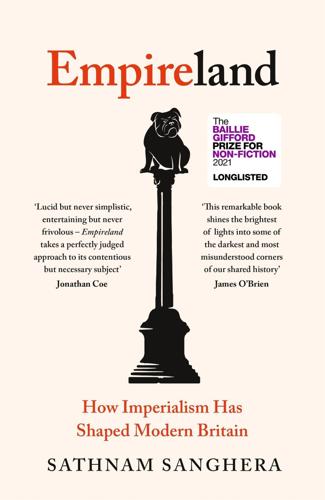
Empireland: How Imperialism Has Shaped Modern Britain
by
Sathnam Sanghera
Published 28 Jan 2021
It happened around the time of Stephen Lawrence’s death, when the Metropolitan Police was declared institutionally racist, and the establishment had a dark night of the soul. It happened around the Windrush scandal of 2018, when there was widespread outrage that black Britons were being deported from a country that had been their home for decades, and to which some had come as citizens. And it happened in 2020 around the Black Lives Matter movement, and around the coronavirus crisis when the public suddenly seemed to appreciate that BAME staff not only accounted for a disproportionate segment of NHS medical staff (44 per cent, when the 2011 Census puts the BAME population in England and Wales at 14 per cent) but were dying at seven times the rate of white colleagues.
…
The common Brexiteer accusation, following Brexit, that Britain has become ‘far too addicted’ to using workers from overseas echoes an economic tradition that goes back centuries, with slave labour, and then indentured labour from Asia, propping up the imperial economy (albeit not in Britain itself). As a result of the self-examination inspired by the Black Lives Matter campaign, a bunch of companies have come forward to announce that they would make amends for their role in the slave trade. They include the insurance giant Lloyd’s of London and the brewer Greene King, the former’s connection to slavery being through Simon Fraser, one of its founding subscribers, who owned at least 162 enslaved people and ran the Castle Bruce estate in Dominica, and the latter company being founded by Benjamin Greene, who operated sugar-cane plantations in the West Indies and owned at least 231 slaves.14 Other institutions which have proffered apologies have included the Bank of England, Lloyds Banking Group, RBS, the law firms Freshfields and Farrer & Co., the University of Glasgow and All Souls College Oxford.
…
If we don’t confront the reality of what happened in British empire, we will never be able to work out who we are or who we want to be. 12. Working Off the Past It has been surreal and exciting to see my concerns, towards the end of my journey into imperial history, inspire national news stories and debate. As the Black Lives Matter movement has encouraged a re-evaluation of imperial monuments, mainstream programmes like the BBC News at Ten have run items on how British empire explains racism not only in Britain but in the USA too, there have been debates across the British media about the economic legacies of empire, and major institutions like the National Trust and the Bank of England have started to assess their colonial heritage out loud.
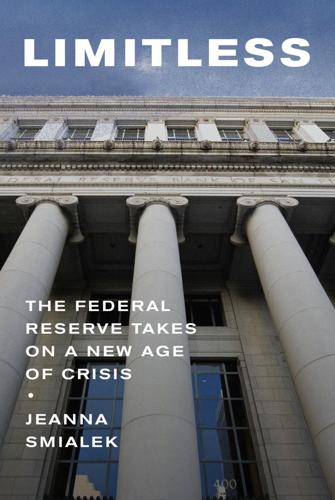
Limitless: The Federal Reserve Takes on a New Age of Crisis
by
Jeanna Smialek
Published 27 Feb 2023
Chauvin was arrested and charged for Floyd’s death on May 29, the same day that Trump posted on Twitter that the Minneapolis protesters were “thugs” and warned that “when the looting starts, the shooting starts.”[7] The phrase, which had a racist history tracing back to the 1960s Civil Rights movement, was widely slammed for glorifying violence.[8] * * * — The 2020 Black Lives Matter protests were an important moment for America. At the Federal Reserve, which had been slowly evolving to fit a changing nation, they marked a sort of tipping point. From his home office setup in Minneapolis, the very epicenter of the unfolding social action, Kashkari was watching the events play out with dismay.
…
Even so, George Floyd’s death was a bright-line moment, one that took the Fed’s growing openness and increasing role in a national conversation about fairness and crystallized them. The Fed had sometimes sided with the political left on divisive but clear-cut issues by 2020 (its officials took the virus seriously and advocated wearing a mask), but it had never weighed in full-throatedly on any button quite as hot as 2020 racial equity discussions and the Black Lives Matter protests would prove to be. Kashkari’s colleagues across the Fed system released their own statements of either condemnation for what had happened in Minneapolis or support for the Black community. Mary Daly in San Francisco wrote on Twitter that “hate thrives when people stay quiet. So, it’s important for all of us to use this moment to speak up.
…
“Powell’s success runs counter to the populist political narrative of our era: The Fed’s wonky technocracy has succeeded while the theoretically more politically accountable arms of our government have failed,” Josh Barro wrote for New York magazine.[16] Opinion polling showed that people were less satisfied with their lives than they had been in nearly a decade, almost rivaling Great Recession–era lows.[17] Then came the 2020 presidential vote, and something subtle but fundamental shifted. * * * — Washington was tense in the days leading up to election Tuesday, prepared for anything after a summer of Black Lives Matter protests and counterprotests and riots that had seen curfews imposed and left local businesses boarded up with graffitied plywood. President Trump had already broadcast that he planned to legally challenge election results as early votes pointed to a Biden victory. Results were inconclusive on Election Day, but it looked bad for Trump from the outset.

Doppelganger: A Trip Into the Mirror World
by
Naomi Klein
Published 11 Sep 2023
Nonetheless, almost all feel duty bound to participate in creating their own digital doubles on social media (as do I). One student shared that she had gotten off Instagram because the pressures to perform an idealized version of herself, and the inundations of images of others doing the same, were ravaging her mental health. But then came the 2020 Black Lives Matter uprisings. “My friends all told me I had to get back on Instagram and post pro-BLM,” she said, “or everyone would think I was racist”—this despite the fact that she had been participating in all the protests in her area, albeit in a quiet, behind-the-scenes way. She logged back on and posted, but reluctantly; she knew there was something wrong with a culture that valued public performances of a virtuous self over more tangible solidarities and relationship building.
…
What many of us who were cringe-following Wolf at the time missed was the extent to which her new messaging had struck a chord—not only with Fox’s audience but also with a sizable cohort of people who identify as leftists or progressives and were terrified of the Black Mirror surveillance world she was describing. Her “slavery forever” video was personally forwarded to me by several sources. One was a known conspiracy theorist who urged me to “study” it and said we had to fight the new threat “with every last ounce of our strength.” One asked if I had advice for deprogramming a loved one, a Black Lives Matter–supporting alternative health practitioner who had taken Wolf’s words as gospel and was in a QAnon-like spiral about this being the last frontier in the fight for “freedom versus slavery.” I went back and looked at the nearly one thousand comments under Wolf’s “slavery forever” YouTube post, bracing for the usual misogynist bile for which the platform is notorious.
…
Of course, it was a bait and switch—Trump filled his administration with former Wall Street executives, made mostly minor changes to trade policy, escalated tensions abroad, and lavished the rich with tax cuts. Of his populist campaign rhetoric, all that really survived was the race baiting—against immigrants, Muslims, Black Lives Matter protesters, and anything having to do with China. It was enough to hold on to his base, but not enough to win reelection, certainly not after his murderous mismanagement of Covid-19. At the time my doppelganger started appearing on War Room, less than three months into the Biden presidency, Bannon was getting serious about sculpting his new MAGA Plus coalition.
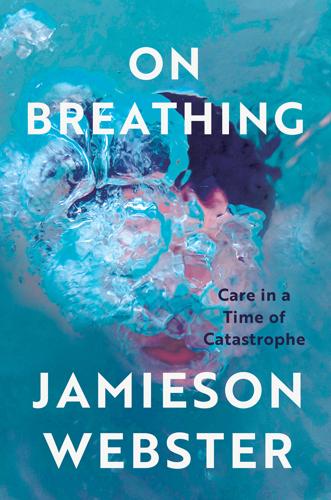
On Breathing
by
Jamieson Webster
Published 20 Feb 2025
During the pandemic, this violence extended into how COVID disproportionately affected racial minorities. This was palpably true in those first months that I was in the hospital, when most of my patients were Black and brown minorities and other immigrants. In the summer of 2020, the politics of breathing took a sudden turn, from COVID to the issue of racism. The Black Lives Matter movement rallied around the slogan “I Can’t Breathe,” the last words spoken by Eric Garner, caught on video, while he was suffocated by a police officer, in 2014, and in 2020 uttered repeatedly by George Floyd over eight minutes while his neck was crushed under the knee of police officer Derek Chauvin.
…
This eruption of sounds—so much more affect-laden than signifying—transformed during COVID from the banging of pans, clapping, and shouting of Manhattan’s one and a half million residents in lockdown for the 6:00 pm shift change of hospital workers, to the sounds of protests in the streets, the repeated cry of “Black lives matter,” and the listing of names of those shot dead by police. The constant sounds of ambulances were drowned out by the sounds of police cars in pursuit of the protesters. What was an intense feeling of pleasure and gratitude, almost collective awe, became a feeling of shock and pain—the sounds of unending grief.
…
With Blackpentecostal practice the congregation is invited to speak, take, yell, praise, eat, drink, share, or remain silent. Appetite or its refusal are both welcomed. Julie Beth Napolin, who works in sound studies, has written that the silence of lockdown was the perfect stage for the eruptions of the Black Lives Matter movement. When else could something that has failed to be heard have a chance of being listened to? It was as if the silence of the analytic atmosphere extended into the world. Likewise, in Alex Ross’s essay “What Is Noise?” he notes that COVID showed us the sonic havoc we wreak as a species.
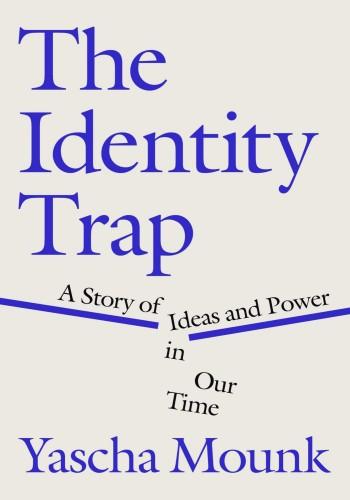
The Identity Trap: A Story of Ideas and Power in Our Time
by
Yascha Mounk
Published 26 Sep 2023
,” Candid (blog), July 24, 2020, blog.candid.org/post/what-does-candids-grants-data-say-about-funding-for-racial-equity-in-the-united-states/?utm. GO TO NOTE REFERENCE IN TEXT channeled donor dollars: See, for example, Sean Campbell, “Black Lives Matter Secretly Bought a $6 Million House,” Intelligencer, April 4, 2022, nymag.com/intelligencer/2022/04/black-lives-matter-6-million-dollar-house.html. See also Ailsa Chang, Jason Fuller, and Kathryn Fox, “Secret $6 Million Home Has Allies and Critics Skeptical of BLM Foundation’s Finances,” NPR, April 7, 2022, https://www.npr.org/2022/04/07/1091487910/blm-leaders-face-questions-after-allegedly-buying-a-mansion-with-donation-money.
…
GO TO NOTE REFERENCE IN TEXT “racist ideas are both false”: Twitter Together (@TwitterTogether), Twitter, June 11, 2020, 7:29 p.m., twitter.com/TwitterTogether/status/1271223142493507584. GO TO NOTE REFERENCE IN TEXT “When is the free speech”: Francesca Truitt, “Black Lives Matter Protests American Civil Liberties Union,” Flat Hat News, Oct. 2, 2017, flathatnews.com/2017/10/02/black-lives-matter-protests-american-civil-liberties-union/. An academic article published in the journal of the American Association of University Professors is even more explicit in its dismissal of free speech: “In the end the issue is less about free speech and more about what we value.
…
GO TO NOTE REFERENCE IN TEXT “The constitutional guarantees of freedom”: David Goldberger, “The Skokie Case: How I Came to Represent the Free Speech Rights of Nazis,” American Civil Liberties Union, March 2, 2020, www.aclu.org/issues/free-speech/rights-protesters/skokie-case-how-i-came-represent-free-speech-rights-nazis. As Goldberger says in the same article, the Illinois law that served as a basis for the original prohibition of the Nazi rally “used language so sweeping that it would justify, for example, criminal prosecution of a Black Lives Matter leader for making a speech blaming white racism for police shootings of African Americans.” GO TO NOTE REFERENCE IN TEXT continues to trumpet: “ACLU History,” American Civil Liberties Union, accessed Dec. 16, 2022, www.aclu.org/about/aclu-history. GO TO NOTE REFERENCE IN TEXT “Once a bastion of free speech”: Lara Bazelon, “The ACLU Has Lost Its Way,” Atlantic, May 10, 2022, www.theatlantic.com/ideas/archive/2022/05/aclu-johnny-depp-amber-heard-trial/629808/.
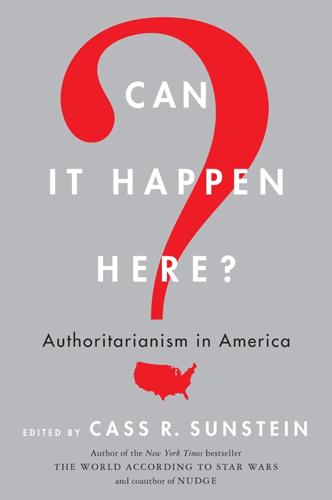
Can It Happen Here?: Authoritarianism in America
by
Cass R. Sunstein
Published 6 Mar 2018
Thus, identitarian communities have framed the Breitbart News Network as a source of malicious stories and destructive policies far outside of mainstream American conservatism.29 Likewise, nativists have lambasted Black Lives Matter as a movement inimical to the US civil rights tradition and a threat to decent whites.30 Many tolerant Americans find both the Breitbart News Network and Black Lives Matter to be extreme. Second, the illiberal activities of intolerant communities can antagonize potential recruits; people sympathetic to their core substantive objectives, whether racial justice or protecting domestic jobs, may find their tactics unacceptable.
…
The third ground for alarm, in 2017, is that any well-financed actor—including not only Super PACs but foreign governments—can harvest data on its target audience, personalize its message to suit the taste of the citizens it aims to reach, and employ this customized propaganda to try to skew a contemporary political debate. The Kremlin-linked Facebook ads reached millions of Americans, and some were geographically directed.34 Many of the Russian ads also appear to have been designed and targeted to influence specific audiences, such as those that stoked fears about Black Lives Matter or highlighted Muslim support for Clinton’s candidacy.35 Senior US intelligence officials have even cited evidence of Russia using algorithms to target the social media accounts of particular reporters and slanting the message in line with what they assess to be the reporters’ political stances.36 An electorate that in the Cold War would have been hard to differentiate today comprises individuals whose particular likes and dislikes are intimately understood by big business, technology companies, and political campaigns—and, seemingly, well-resourced foreign entities with an interest in impacting public opinion.
…
As explained elsewhere (Stenner 2005), this is not to say that authoritarianism is necessarily expressed in a fundamentally different manner depending on race/ethnicity, or majority/minority status, than among whites across Europe and the US. It is just that the demarcation of ingroups and outgroups, and delineation of the norms and authorities to which one owes allegiance, might vary. We would not expect, for example, any authoritarianism among African-American leaders of the Black Lives Matter movement to propel them toward a vote for Donald Trump, nor North African Muslim immigrants in France to be attracted (by any predisposition to authoritarianism) to the National Front. Excluding non-whites left us a sample of 11,161 respondents from twenty-nine countries, with 3,202 of those of special interest in our present search for a common dynamic in populist voting across the US (n=661), UK (n=1,256), and France (n=1,285).
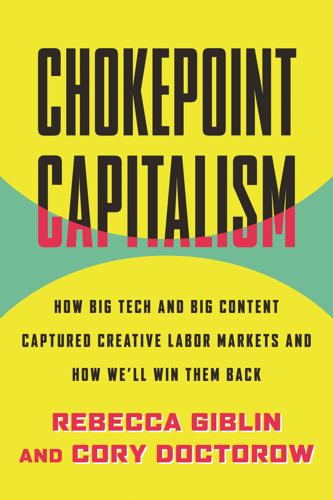
Chokepoint Capitalism
by
Rebecca Giblin
and
Cory Doctorow
Published 26 Sep 2022
For the arts, because there’s little ability to cover any but the biggest books and productions (Scott Timberg, author of Culture Crash, points out that “there are NFL wives who get more mainstream media coverage than every living jazz artist put together”19). For social causes, like Black Lives Matter and #MeToo, which get less nuanced coverage than they need and deserve (this is exacerbated by fears around brand safety, which see advertisers increasingly sheer away from content deemed controversial—including by blocking their ads from being served on content that mentions terms like “Black Lives Matter,” “George Floyd,” and even “Black people”20). For the planet, with too few reporters to do justice to cataclysmic climate change, the biggest, slowest-moving story to ever break.
…
The Beatles’ first EMI deal came with no advance and royalties of just a penny per record (from which they had to pay their manager, then split the rest four ways).10 Radiohead’s deal, signed in 1991, gave them 12 percent.11 A few artists achieve the stratospheric success that gives them the power to renegotiate exploitative old contracts. But most don’t. As a result, huge numbers of heritage artists, including leaders in jazz, R&B, disco, soul, and hip-hop, remain bound to their terrible original deals, even though their labels now pay far less for manufacture and shipping. When record companies professed support for the Black Lives Matter movement in mid-2020, professor and author Josh Kun called out the hypocrisy: if they really wanted to support Black lives, he said, they could “start with amending contracts, distributing royalties, diversifying boardrooms, and retroactively paying back all the black artists, and their families, they have built their empires on.”12 One way in which they could do that is by universally raising all royalties on digital exploitations.
…
Change can be made—as when recording artists worked together to roll back a change the recording industry had snuck into law to steal away their rights. (Keep reading—we dig into that incredible story in the chapter that comes next!) But while top creators use their political and media platforms to support any number of important causes (world peace, world hunger, climate, Black Lives Matter) it’s less common for them to throw their weight behind improving conditions for their less-advantaged brethren. There are plenty of examples where the interests of famous artists happen to coincide with the less well off, like when Bryan Adams advocated for a new reversion right in Canada, but these have an obvious whiff of self-interest.

The Equality Machine: Harnessing Digital Technology for a Brighter, More Inclusive Future
by
Orly Lobel
Published 17 Oct 2022
I’d Blush If I Could: Closing Gender Divides in Digital Skills Through Education (Paris: UNESCO and EQUALS Skills Coalition, 2019), 15, https://unesdoc.unesco.org/ark:/48223/pf0000367416. 5. Kim Parker, Juliana Menasce Horowitz, and Monica Anderson, “Amid Protests, Majorities Across Racial and Ethnic Groups Express Support for the Black Lives Matter Movement,” Pew Research Center, June 12, 2020, https://www.pew research.org/social-trends/2020/06/12/amid-protests-majorities-across-racial-and-ethnic-groups-express-support-for-the-black-lives-matter-movement. 6. “Successful Campaigns,” Coworker.org, last accessed January 3, 2022, https://www.coworker.org/petitions/successful. 7. Jason Sockin, Aaron Sojourner, and Evan Starr, “Non-Disclosure Agreements and Externalities from Silence,” working paper, August 30, 2021, https://papers.ssrn.com/sol3/papers.cfm?
…
Social media serves as a bridge between grassroots activism and policy reform. For the feminist and racial justice movements in particular, digital access has been invaluable. The #MeToo movement gained momentum through the internet and by the famous hashtag that is now synonymous with the cause. The same is true for the Black Lives Matter movement, along with many others. In the early days of social media, men outnumbered women, but participation has increased and women now outnumber men. This altered ratio changes the narrative we’re accustomed to: the more women and other historically underrepresented groups speak up, connect, and share their accomplishments, initiatives, stories, and concerns through hashtags like #MeToo, #TimesUp, #HeForShe, #OscarsSoWhite, and #BLM, the more the world—with its 3.6 billion social media users—is inspired to bring about change.
…
In solidarity, UN Women’s #HeForShe movement has engaged billions of users worldwide in support of advancing gender equity. In the United States, the Women’s March on Washington became the largest globally coordinated public event of all time, born from the 3-million-member Facebook group Pantsuit Nation. Black Lives Matter—with its hashtag #BLM—similarly brought people together, organizing protests and calling for reforms with the support of online campaigns. A bystander’s video of George Floyd’s murder in May 2020 spread over social media, sparking outrage and inspiring tens of millions of Americans to take to the streets in protest.
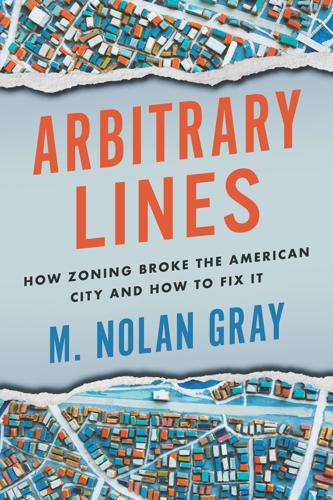
Arbitrary Lines: How Zoning Broke the American City and How to Fix It
by
M. Nolan Gray
Published 20 Jun 2022
To the extent that zoning has made it exponentially more difficult for Americans to move to these hubs of activity—for a software engineer to relocate to San Jose, or for a medical researcher to relocate to Boston—we are all poorer as a result. Even beyond so-called “superstar cities,” zoning shapes American life in many subtle but nefarious ways. As the Black Lives Matter movement has thrown into stark relief, America still has a long way to go in providing equal opportunity for all. And yet, few American cities recognize the fact that their zoning codes were drafted with the express intention of instituting strict racial and economic segregation. To this day, “the wrong side of the tracks” is not merely a saying but a place that is written into law as a zoning district drawn on a zoning map.
…
CHAPTER 5 Apartheid by Another Name Over the summer of 2020, the United States underwent a long-overdue reckoning in the aftermath of the murder of George Floyd at the hands of Minneapolis police officers. Across virtually every city in the country, an estimated fifteen to twenty-six million Americans protested the continued mistreatment of Blacks by the criminal justice system.1 Whether the Black Lives Matter movement will translate into meaningful policy reform remains to be seen. If nothing else, the movement signals an encouraging willingness of many Americans to continue to right past injustices and build a more equitable republic. And yet, for all the good intentions, America remains a profoundly segregated place.
…
NBER Working Paper Series (July 2017), https://www.nber.org/papers/w23609. 26. For a robust defense of growth, see Tyler Cowen, Stubborn Attachments: A Vision for a Society of Free, Prosperous, and Responsible Individuals (San Francisco: Stripe Press, 2018). CHAPTER 5: APARTHEID BY ANOTHER NAME 1. Larry Buchanan, Quotrung Bui, and Jugal K. Patel, “Black Lives Matter May Be the Largest Movement in U.S. History,” New York Times, July 3, 2020, https://www.nytimes.com/interactive/2020/07/03/us/george-floyd-protests-crowd-size.html. 2. Jessica Trounstine, Segregation by Design (Cambridge: Cambridge University Press, 2018), 94. 3. As Rothstein, Color of Law notes, a majority of the committee that drafted the Standard Zoning Enabling Act, as well as many early zoning framers, were vocal segregationists. 4.
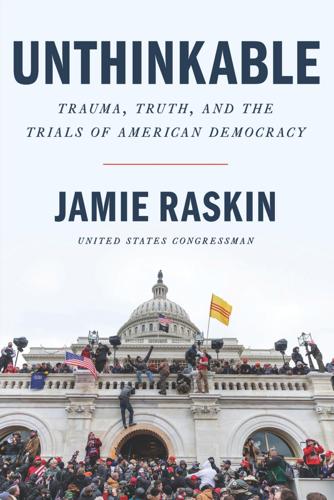
Unthinkable: Trauma, Truth, and the Trials of American Democracy
by
Jamie Raskin
Published 4 Jan 2022
Banks had been trashing the idea of a select committee, saying that we should instead look at the violence that broke out around the Black Lives Matter movement in the summer of 2020—giving us a preview of the diversionary diatribes he would bring to the committee. (Much of the violence he referred to came from right-wing sources, like Kyle Rittenhouse, a seventeen-year-old vigilante from Antioch, Illinois, who traveled to Kenosha, Wisconsin, with an assault rifle and allegedly shot and killed two people participating in a Black Lives Matter protest.) Jordan, of course, was a political intimate of President Trump’s and was present in at least one strategic session with the White House to plan the January 6 offensive.
…
“Are there enough police to stop them?” Tabitha asks me. I hesitate because of the size and apparent volcanic energy of the crowd, but assure her it will be fine. From our window, it looks chaotic, but I tell her that our officers are armed and “ready for this kind of thing.” I think back to a Black Lives Matter protest in DC on June 2, when masked and helmeted National Guardsmen in camouflage massed on the steps of the Capitol in a formidable and awesome display of force. I have not yet seen the National Guard today, but I tell myself that they must be here somewhere, or else they have got to be on the way over.
…
We drove down to Lafayette Square and found lots of elaborate Trumpian military fencing under construction as COVID-safe masked crowds of nonviolent youthful protesters gathered to chant support for the sweeping reforms contained in the George Floyd Justice in Policing Act. The homemade signs were vivid: “If You Don’t Like Wearing Your Mask Every Day, Try Breathing While Black,” “Black Lives Matter/Black Votes Matter,” “Who Do You Call When a Cop Is the Murderer?” and “George Floyd Mattered.” We wended our way through the crowd in our masks, trying to maintain social distance as best as we could, even as we warmly greeted constituents who were excited to bump into me there. There was no organized program happening when we arrived, so we just milled around and talked to people.
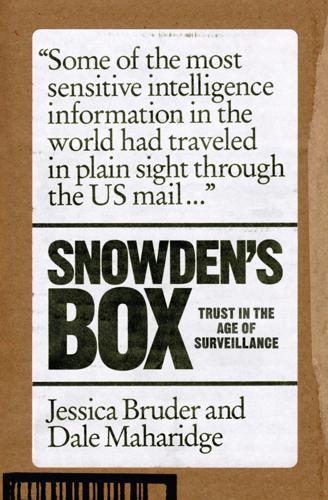
Snowden's Box: Trust in the Age of Surveillance
by
Jessica Bruder
and
Dale Maharidge
Published 29 Mar 2020
In the wake of 9/11, the center challenged local police departments’ overzealous surveillance of Muslim communities and federal agencies’ efforts to have Muslims spy on their own communities. The center also partnered with a newer civil rights group, Color of Change, to file a Freedom of Information Act request with the FBI and the US Department of Homeland Security, demanding documentation of how the government monitored Black Lives Matter activists. In the fall of 2019, Color of Change, which boasts some 1.4 million members, won a major victory when Google booted payday lenders — notorious for targeting low-income Americans with high-interest, predatory financial products — from its app store. And the ACLU, a century old in 2020, continues to add to its storied history of shining a light on institutions that abuse the public trust.
…
p. 144 Amnesty International ranking of tech companies: “Amnesty Int’ls Digital Privacy Assessment on 11 Companies’ Messaging Apps Ranks Facebook and Apple Top and Tencent Last,” Business and Human Rights Resource Centre, Businesshumanrights.org. p. 145 anti-gay witch hunt: “The Egyptian Government,” All Out, https://go.allout.org/en/a/egypt. p. 145 Color of Change: George Joseph and Murtaza Hussain, “FBI Tracked an Activist Involved with Black Lives Matter as They Travelled across the US, Documents Show,” Intercept, March 19, 2018. pp. 145–6 ACLU and doorbell cameras: Jacob Snow, “Amazon’s Disturbing Plan to Add Face Surveillance to Your Front Door,” ACLU, December 12, 2018. p. 146 Natasha Singer: Natasha Singer, “The Government Protects Our Food and Cars.
…
See also Alexa Amazon Echo, 98–9, 102, 104, 105, 131 American Civil Liberties Union (ACLU), 42, 47, 84, 145–6; Mobile Justice App, 142 Amnesty International, 144–5 Apple Computer, 48, 94, 144–5; iCloud, 136 Ardito, John “Buster,” 15 Assange, Julian, 10, 16, 17, 129–30 Astro Noise, 19, 65 Baker, Stewart A., 6 Baron, Marty, 41–2 Barr, William P., 136–7 Bentonville, Arkansas, 104 Bertash, Kate, 142–3 Bezos, Jeff, 104 Biden, Joe, 11 Bill of Rights, 83, 84, 90, 108, 129–30, 134 Binney, William, 18, 49–50, 134 Black Lives Matter, 145 Black Panther Party, 87 Blaze, Matthew, 6 Bloom, Michael, 128 Bork, Robert, 91 Bralow, David, 127, 129 Brandão, Rodrigo, 129 Brown, Michael, 111 The Burglary (Medsger), 86 Cambridge Analytica, 102 Cameraperson (Johnson), 65 Carter, Jimmy, 57, 91 Census Bureau. See US Census Bureau Center for Constitutional Rights, 145 Central Intelligence Agency.
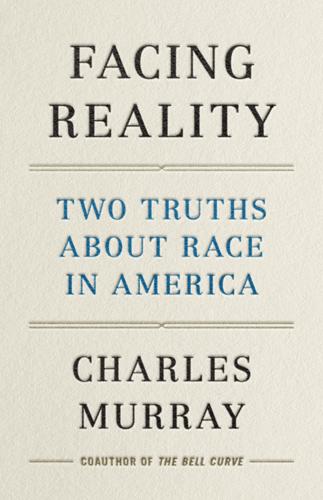
Facing Reality: Two Truths About Race in America
by
Charles Murray
Published 14 Jun 2021
The table on the next page shows the results when we compare New York City ratios based on victims’ reports of a suspect’s race, arrests for violent crimes other than murder (i.e., rape, robbery, and aggravated assaults), arrests for murder, and shootings that did not result in an arrest. Once again, the arrest data are the most conservative estimate of the racial disproportions, with the single exception of Latin suspects in reported violent offenses. The New York database of shootings is also useful as a counterweight to much of the rhetoric from the Black Lives Matter movement. Of course they matter, no matter what the race of the shooters in the New York database may be. That is my final point for this discussion. Many African lives have been taken by violence, but of the 1,906 African deaths in the New York shootings database for which the race of the perpetrator is known, 89 percent were killed by Africans.
…
So far, this effect has been masked because the strategy has worked so well with White elites. Ordinarily, you can’t insult people into agreeing with you, but White guilt is a real thing. In the summer of 2020, many White college students and young adults agreed that they had sinned, even though they hadn’t realized it until now, and joined in Black Lives Matter marches. The New York Times, the Washington Post, NPR, PBS, CBS, NBC, ABC, CNN, and MSNBC gave sympathetic coverage to the protests and, to varying degrees, downplayed the riots and looting. Meanwhile, many middle-class and working-class Whites have not been insulted into agreement. They’re just insulted, and to their minds unfairly insulted.
…
abolitionism achievement tests; bias or predictiveness in; comparative results; g-loading in; longitudinal studies; and school reform; see also cognitive (IQ) tests ACT test; comparative results affirmative action; and anti-Asian discrimination Albuquerque, NM American Community Survey (ACS) American creed American Dilemma, An (Myrdal) American Psychological Association AncestryDNA antidiscrimination law; Civil Rights Act (1964) Armed Forces Qualification Test Armed Services Vocational Aptitude Battery arrest rates; calculation of; for murder; for property crime Asheville, NC Bailyn, Bernard Baltimore, MD. Bell Curve, The (Herrnstein/Murray); controversy over; and outliers; and Red Book data Bennet, James Bias in Mental Testing (Jensen) Biden, Joe Black Lives Matter protests (2020); and White guilt Black-White Test Score Gap, The Bobko, Philip Bush, George W. California Bar Association Capitol siege (Jan. 6) Census Bureau Center for American Progress Certified Public Accountant (CPA) exam Chandler, AZ Charleston, SC Chetty, Raj Chicago; crime rates in childcare workers churches Civil Rights Act (1964) civil rights movement Civil War Clinton, Bill cognitive (IQ) tests; bias or predictiveness in; comparative results; interpretation of; see also achievement tests; IQ Coleman, James S.
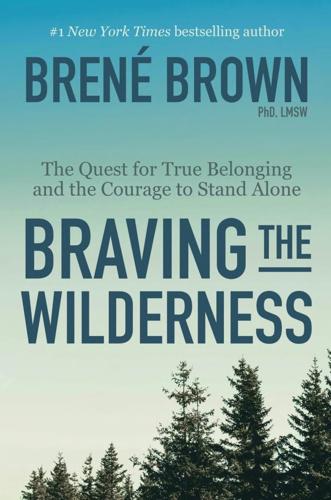
Braving the Wilderness: The Quest for True Belonging and the Courage to Stand Alone
by
Brené Brown
Published 15 Mar 2017
Dehumanizing works because people who speak out against what are often sophisticated enemy image campaigns—or people who fight to make sure that all of us are morally included and extended basic human rights—often face harsh consequences. An important example is the debate around Black Lives Matter, Blue Lives Matter, and All Lives Matter. Can you believe that black lives matter and also care deeply about the well-being of police officers? Of course. Can you care about the well-being of police officers and at the same time be concerned about abuses of power and systemic racism in law enforcement and the criminal justice system?
…
In order for slavery to work, in order for us to buy, sell, beat, and trade people like animals, Americans had to completely dehumanize slaves. And whether we directly participated in that or were simply a member of a culture that at one time normalized that behavior, it shaped us. We can’t undo that level of dehumanizing in one or two generations. I believe Black Lives Matter is a movement to rehumanize black citizens. All lives matter, but not all lives need to be pulled back into moral inclusion. Not all people were subjected to the psychological process of demonizing and being made less than human so we could justify the inhumane practice of slavery. Is there tension and vulnerability in supporting both the police and the activists?

Give People Money
by
Annie Lowrey
Published 10 Jul 2018
In the past few years—with the middle class being squeezed, trust in government eroding, technological change hastening, the economy getting Uberized, and a growing body of research on the power of cash as an antipoverty measure being produced—it has vaulted to a surprising prominence, even pitching from airy hypothetical to near-reality in some places. Mark Zuckerberg, Hillary Clinton, the Black Lives Matter movement, Bill Gates, Elon Musk—these are just a few of the policy proposal’s flirts, converts, and supporters. UBI pilots are starting or ongoing in Germany, the Netherlands, Finland, Canada, and Kenya, with India contemplating one as well. Some politicians are trying to get it adopted in California, and it has already been the subject of a Swiss referendum, where its reception exceeded activists’ expectations despite its defeat.
…
I heard from philosophers convinced that our understanding of work, our social contract, and the underpinnings of our economy were about to undergo an epochal transformation. The more I learned about UBI, the more obsessed I became with it, because it raised such interesting questions about our economy and our politics. Could libertarians in the United States really want the same thing as Indian economists as the Black Lives Matter protesters as Silicon Valley tech pooh-bahs? Could one policy be right for both Kenyan villagers living on 60 cents a day and the citizens of Switzerland’s richest canton? Was UBI a magic bullet, or a policy hammer in search of a nail? My questions were also philosophical. Should we compensate uncompensated care workers?
…
Over the past three decades, the average net worth of white families has climbed more than 80 percent, three times the rate for black families, a study by the Institute for Policy Studies and the Corporation for Enterprise Development has found. Were that pattern to continue for the next three decades, white households would gain $18,000 in wealth a year, with black households gaining just $750. The racial wealth gap would never close. The emergence of the Black Lives Matter movement, the growing calls to end mass incarceration, the sunset of the Obama presidency, the start of the Trump presidency, the furious marching of Nazis and racists on the streets: all of these trends have coalesced as the UBI conversation has come to the fore. In his essay “The Case for Reparations,” the Atlantic writer Ta-Nehisi Coates made a moral argument for trying to repair these injustices.
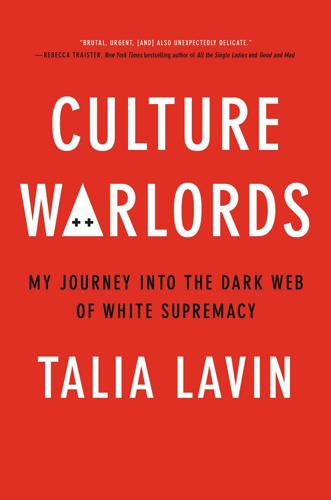
Culture Warlords: My Journey Into the Dark Web of White Supremacy
by
Talia Lavin
Published 14 Jul 2020
In Columbus, Ohio, a man the Anti-Defamation League identified as a member of the National Socialist movement attended a protest, bearing a sign with a Jewish star, a caricature of a Jew, and the slogan THE REAL PLAGUE. Weeks later, during a national uprising over police brutality in June 2020, “Boogaloo” proponents nimbly shifted to menacing protesters with the Black Lives Matter movement. These often-armed incursions were an overt attempt to escalate protest into war. The name Boogaloo is a prime example of the way extremist rhetoric works online, and in its spillover into real-life rallies: Naked desire for violence buried in tongue-in-cheek, memeified rhetoric, spreading among irony-saturated young men.
…
A racist caricature of a black “thug” stood beside her, grabbing his crotch; next to him marched a tattooed, switchblade-wielding man with the word LOCO tattooed on his forehead, meant to represent Latinos as dangerous criminals. Communists, gay-rights advocates, and hippies marched under signs that read “end white pride,” “stop white oppression” and “black lives matter.” At the front of the crowd a hairy woman in a gimp mask with tape-covered nipples bore the words “punish me” on her sagging belly; an obese man chomped on a hamburger; and an antifa flag soared beside a sign that read, “open borders 4 everyone.” Over all this presided the spidery Jew—the architect of what was represented as a scene of chaos, degeneracy, and social disorder.
…
Gun culture on the American right is premised on the idea of having the right to resist “tyranny”—but what, precisely, that tyranny will look like is often left vague. At the heart of conservative culture is an innate respect for soldiers and law enforcement. After the 2013 protests against the killing of unarmed black teen Trayvon Martin gave birth to the Black Lives Matter movement, the protests broadened in scope and intensity the following year after police officer Darren Wilson shot unarmed teenager Michael Brown in Ferguson, Missouri. Conservative backlash rose up in the form of a competing pro–law-enforcement movement that called itself “Blue Lives Matter.”
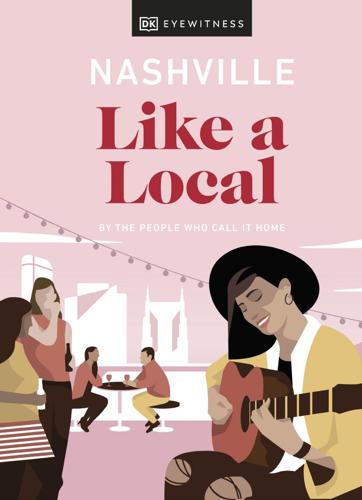
Nashville Like a Local: By the People Who Call It Home
by
Dk Eyewitness
Published 28 Sep 2021
It’s been replicated with pieces that reflect the beauty and diversity of the neighborhood. 132 133 132-135_LAL_Nashville.indd 132 06/08/2021 12:23 132-135_LAL_Nashville.indd 133 06/08/2021 12:23 A R T S & C U L T U R E DOLLY PARTON Map 3; 1006 Forrest Avenue, East Nashville; ///plank.hurray.soap Dolly Parton is Tennessee’s patron saint, and for good reason – her literacy program here has been hugely impactful and, of course, she’s one of the greatest singer-songwriters in music history. Artist Kim Radford was already working on her depiction of Dolly when the queen of country music so eloquently voiced her support of the Black Lives Matter movement: “Of course Black lives matter. Do we think our little white a**es are the only ones that matter?” And with that, her words are now immortalized on the wall of the 5 Spot (p153). WHAT LIFTS YOU Map 1; 302 11th Avenue South, The Gulch; ///evenly.gaps.bonds Love ’em or hate ’em, the What Lifts You wings by Kelsey Montague are a Nashville icon and a bona fide social media phenomenon.
…
she’s one of the greatest singer-songwriters in music history. Artist » Don’t leave without stopping by the Nations Wall on California Kim Radford was already working on her depiction of Dolly when Avenue, a tribute to the neighborhood by 11 different artists. the queen of country music so eloquently voiced her support of the Black Lives Matter movement: “Of course Black lives matter. Do we think our little white a**es are the only ones that matter?” And with FAMILY M ATTERS that, her words are now immortalized on the wall of the 5 Spot (p153). Map 2; 26th Avenue and Clarksville Pike, North Nashville; ///dozed.acted.legal North Nashville served as a base for many activists in the Civil WHAT LIFTS YOU Rights movement, and this powerhouse of a mural by the Norf Art Map 1; 302 11th Avenue South, The Gulch; ///evenly.gaps.bonds Collective pays tribute to that history.
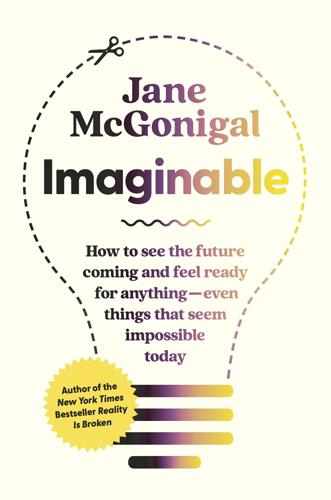
Imaginable: How to See the Future Coming and Feel Ready for Anything―Even Things That Seem Impossible Today
by
Jane McGonigal
Published 22 Mar 2022
We will have to weigh the potential benefits of creating widespread access to this new form of visual power against the potential harms of a creeping encroachment of drones into our everyday, private lives. I found myself holding this tension in my mind on April 20, 2021, the day that Minnesota police officer Derek Chauvin was found guilty of the murder of an unarmed Black man, George Floyd. This crime, which catalyzed a year of global protests as part of the growing Black Lives Matter movement, was documented on video by then seventeen-year-old Darnella Frazier. Her courage to press record and bear witness changed history, leading to the first moment of meaningful accountability for systemic racist violence in US law enforcement. And her access to a technology of visual power was essential to this historic moment.
…
Sometimes described as a “megatrend,” a “driver of change,” or a “macro force,” it usually starts off as a small signal of change—and then it picks up strength over a period of months, years, or decades. Anything with the potential to change the world can be a future force. It might be a quickly advancing area of scientific research, like human genetic modification or artificial intelligence. It might be a social movement, like Black Lives Matter. It might be a new technology entering the mainstream, like Bitcoin and other cryptocurrencies. It might be an increasingly popular policy idea, like lowering the voting age to sixteen. It might be a shift in consumer behavior, like the rise of plant-based diets. It might be a growing threat documented by experts and researchers, like sea-level rise from climate change or the impact of noise pollution on mental health.
…
What identities will bring us together instead of dividing us? How can music, storytelling, and the arts help us forge these new identities? How can we start to see ourselves in ways that will put us all in the same group, and all on the same side? Preexisting Condition #4: Racial Injustice In the summer of 2020, Black Lives Matter protesters around the world held up signs reading “Racism is the real pandemic.” This message was a searing commentary on the unequal risks and disproportionate suffering that people of color in the United States and ethnic minorities worldwide experience every day. The pandemic put this injustice in the spotlight: people of color and ethnic minorities, everywhere in the world, contracted and died from COVID-19 at far higher rates than their white or ethnic-majority counterparts.

The Contrarian: Peter Thiel and Silicon Valley's Pursuit of Power
by
Max Chafkin
Published 14 Sep 2021
The movement was at once trollish, silly, and dangerously extreme. Members of the movement flirted with racism and even Nazism—anything to provoke liberal outrage—and its leaders used social media to attack anyone they saw as part of the center-left mainstream—which included Democratic Party figures, Black Lives Matter activists, and a number of Gawker writers. Thiel proclaimed himself disgusted by this crew. “These people,” he told Holiday. “It’s not that they are willing to do anything in the name of the ideology . . . The similarity is the nihilism: a mask for no ideology at all.” Holiday noted that Johnson had sued Gawker, too, but described him as one of several “people who have nothing to do with Peter Thiel.”
…
Senator Ted Cruz, and John Yoo, the lawyer who’d advocated on behalf of the Bush administration for torture during the Iraq War, all provided quotes endorsing it. He eventually started his own site, GotNews, a sort of Gawker for the right, where he stoked a backlash against Michael Brown, the eighteen-year-old Black man who was shot while unarmed by a police officer in Ferguson, Missouri, setting off a wave of Black Lives Matter protests. Johnson sued St. Louis County for any juvenile court records it might have on Brown—the request was denied because, the judge said, no records of serious felonies existed—and collected screenshots that purported to show the slain man’s “violent streak.” He claimed he had sources that said Brown was a member of a gang.
…
Cernovich, who’d adopted positions on date rape roughly in line with those expressed by Thiel and David Sacks in The Diversity Myth, later deleted the tweet and moved on to politics. Thiel was pleased enough with Johnson’s brand of activism to provide him with financial support. After Johnson was banned from Twitter for suggesting that he was going to raise money for a project aimed at “taking out” DeRay Mckesson, the Black Lives Matter organizer, he started WeSearchr, a crowdfunding company that, unlike Kickstarter, promoted itself as unregulated and, as a result, was open to alt-right content. (Johnson told me he was speaking metaphorically about Mckesson; he said he was planning on publishing a story about the activist.)
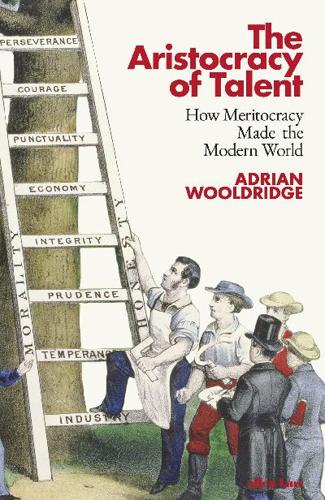
The Aristocracy of Talent: How Meritocracy Made the Modern World
by
Adrian Wooldridge
Published 2 Jun 2021
But it is already gaining traction not just in the ivory tower but also in influential public-policy circles. The criticism comes from a wide range of different sources – from elite academics as well as angry populists. It feeds on some of our most profound anxieties about everything from racial injustice to the psychological strains of hyper-competition. The Black Lives Matter movement is one of the most powerful protest movements of recent years. Its prime target is brutality, particularly police brutality towards African-Americans – it was ignited by the killing of Trayvon Martin in 2012 by a member of the neighbourhood watch and then re-ignited, on an even larger scale, by the killing of George Floyd by a police officer, in 2020.
…
The Trump presidency also radicalized the left to a degree that hasn’t been seen since the late 1960s, with Bernie Sanders making a prolonged bid for the Democratic nomination and young radicals such as Alexandria Ocasio-Cortez trying to set the tone of the Congressional Democratic Party. The killing of an unarmed African-American, George Floyd, by a white police officer, Derek Chauvin, on 25 May 2020 provoked angry riots across America, particularly in the big cities, and turned Black Lives Matter into one of the most powerful forces in the country. The movement pointed out that by all sorts of measures America’s racial disparities were no better than they were when LBJ launched the Great Society – and were in some ways worse. Both the wealth gap and the income gap between blacks and whites are the same as they were in 1968: black households still earn 60 per cent as much as white households.
…
Both the wealth gap and the income gap between blacks and whites are the same as they were in 1968: black households still earn 60 per cent as much as white households. The incarceration rate for African-Americans has more than tripled since 1960. Why continue to pursue the policies of the civil rights era when they had so obviously failed? As well as mobilizing thousands of people on the streets, Black Lives Matter popularized a new cohort of black intellectuals such as Ijeoma Oluo and Ibram X. Kendi and a new set of political terms such as ‘white privilege’, ‘white fragility’ and ‘unconscious bias’. These intellectuals were as hostile to the idea of meritocracy as conservative populists were. They drew on many of the ideas that had been generated in the heat of the 1960s – the emphasis on the ‘social construction of reality’ and the preoccupation with group rights and experiences – and supercharged them with an unyielding focus on power.

We Are All Fast-Food Workers Now: The Global Uprising Against Poverty Wages
by
Annelise Orleck
Published 27 Feb 2018
But for that day they controlled the streets of Midtown Manhattan. They flooded Columbus Circle, dancing beneath the gates to Central Park, poured onto Broadway, marched to Times Square. Singing and cheering, they said their names aloud.5 Bleu Rainer and hundreds of fast-food workers marched wearing “Black Lives Matter: I Can’t Breathe” sweatshirts, tying the movement for higher wages to the struggle against police violence—highlighting the last words uttered by Staten Island street vendor Eric Garner as he was choked to death by police a year earlier. “It’s the same struggle,” says Rainer. “We are the same people.
…
Living-wage marchers in New York wore shirts emblazoned with the last words of Eric Garner, father of six, killed by the NYPD that summer. “We’re the same people,” says Rainer. “We have to hold down three jobs, and when we are done and tired, walking home from work, then we are abused by police, raided by immigration cops.” Sanders says, “I was a Black Lives Matter activist before I was born.” He is the nephew of Chicago Black Panthers who were close to Fred Hampton, the young Panther leader murdered by the FBI and Chicago police in 1969. Sanders’s uncle was in the apartment with Hampton the night he was killed. He grew up on those stories. Police violence, government crackdowns, and charges of corruption also fueled worker protest around the world at the end of 2016.
…
North Carolina minister William Barber and other progressive clergy have linked racial justice to the living-wage campaign. Barber and other clergy fasted with Denise Barlage and Tyfani Faulkner in front of Alice Walton’s building. CLUE (Clergy & Laity United for Economic Justice) have energetically supported Walmart workers’ organizing. Fight for $15 and Black Lives Matter have been thoroughly intertwined. These broad coalitions are a hallmark of twenty-first-century worker justice struggles, distinguishing them from what Durazo calls “institutional unionism.”2 Some argue that social movement unionism is a product of Asian, African, and Latin American labor struggles, but US activists believe that the idea is just as strongly rooted in American labor history.
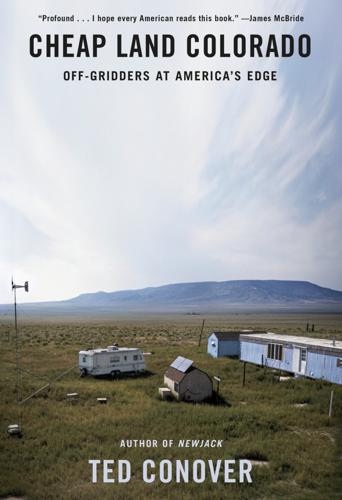
Cheap Land Colorado: Off-Gridders at America's Edge
by
Ted Conover
Published 1 Nov 2022
No, he meant that unnamed global elites had released it expressly to “start a race war” so they could impose further lockdown restrictions “and martial law,” leading to gun confiscation. The evidence was always just something people had read on Facebook. There were some surprises, though. Whereas I had expected people who opposed the Black Lives Matter protests to be pro-police, many were not—including, in their Facebook posts, Frank Gruber and Luke Kunkel. Both, I knew, had spent time locked up, and neither thought police power was the answer. All the same, Luke objected to the message of “Black lives matter.” “Don’t all lives matter?” he asked me. I was reflexively about to tell him that of course all lives mattered, but the protests were about anti-Black racism, not about saying white lives don’t matter, when Luke added some nuance: Black people, in his view, “aren’t just looking for equality, they’re looking for superiority.”
…
Or there will be more riots. Signed, The only Black man in Alamosa, Calvin Brown.” Of course, Calvin Brown was not the only Black man in Alamosa—the mayor was a Black man; Zahra had Black sons—but you could understand how there were times when he might have felt that way. I was not surprised to learn that a Black Lives Matter protest was planned for Alamosa three days later—such demonstrations were happening everywhere. It was to be in the town’s main intersection, where some less-organized sign waving about Floyd’s murder had already taken place. People who attended the protest told me what happened, and I was also informed by two long articles published in the Valley Courier by Susan Greene, a seasoned Denver-based journalist who lent her expertise to small-town newspapers when important stories came up.
…
Rather, they had seen aggrieved posts from Pruitt’s family and supporters. It was as though the pandemic had ushered in a new, expanded role for virtual communities: not only did the fight that brought Marshall and Pruitt together have roots on Facebook, it was now the scene of the aftermath. Ever since George Floyd had been killed and Black Lives Matter protests had begun, I had noticed on social media that the blocking of roads by protestors, the impeding of travel, hit a particular sore spot among conservatives.[*1] Chants like “Whose streets? Our streets!” upset them. At Troy’s annual Fourth of July potluck, I played devil’s advocate a little bit, broaching the idea that Pruitt’s aggressive driving might have contributed to his fate, but this was always rejected.
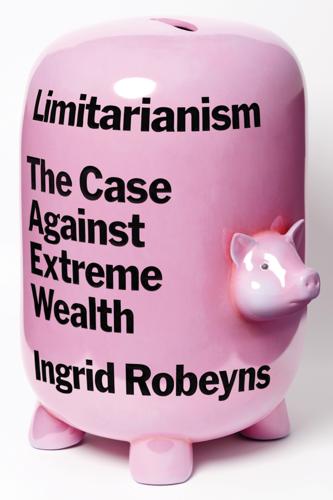
Limitarianism: The Case Against Extreme Wealth
by
Ingrid Robeyns
Published 16 Jan 2024
This horrible, racist murder sparked massive protests and saw the Black Lives Matter movement take root in countries all around the world. The movement has turned into such a political force that discussions about a society’s social contract are much more attuned to the question of racial justice. One of the people I interviewed, who advises US-based philanthropists, mentioned that the death of George Floyd and the rise of Black Lives Matter protests also opened the eyes of some philanthropists, who had not given much thought until then to the pronounced racial nature of wealth inequalities. Thanks to the Black Lives Matter movement, these American philanthropists now understand that, as part of addressing such inequality, empowering Black communities is also urgent and necessary.
…
220 Atlantic 172 Atmosfair 107 attribution bias 129, 174 Auschwitz concentration camp 44 austerity measures 92, 156, 217 Axelsen, David xxii Baal, Mark van 96–7 balance of economic power 219–21 basic income 138, 150–2, 174, 178, 213 Basic Income Grant (BIG) Coalition 150 Benetton 58 Bentham, Jeremy 146 Berlusconi, Silvio 51–2 Beurden, Ben van 6–7 Bezos, Jeff xi, 58, 59, 60, 136, 147, 181, 194, 213 Bhopal disaster (1984) 55–6 Biden, Joe 79, 88, 96 big government 169–72 Bill & Melinda Gates Foundation 18, 181 biodiversity crisis 115, 158, 211, 228 Black Lives Matter movement 191–2 Blair, Tony 38 Bloomberg 58 Bolsa Familia (Family Allowance) 152 Bouazizi, Mohamed 191 Boushey, Heather 39 BP 96 Branson, Richard 181 Brexit 87 Brin, Sergey 137 Brown University 46 Buffet, Warren 165 Buiter, Willem 35 Business & Human Rights Resource Centre 136 business practices, harmful 52 Cambridge University 49, 174 Cameron, David 87 capital addiction to accumulation of 16 capital flight 222 capital gains 28, 37, 161 climate disaster and 94 deregulation and 210 human capital 216 inheritance and see inheritance limiting income from 224–5 returns on 4 social capital 138 taxing 69, 70, 222, 225–6 trickle-down effect and 38 venture-capital 159, 188 capitalism alternative economic systems and 208–14 see also individual system name neoliberal and see neoliberalism poverty and 19, 20–21 predatory 57 success in game of, 6 transnational capitalist class 92 carbon emissions 100–10 allowance/budget 98, 102, 105, 107, 109, 110–11, 112 offsetting 101, 102, 107 rich people and levels of 101–4 Carnegie, Andrew 123 CBS xxv CDA (Dutch Christian-democratic party) 81 CEO (Chief Executive Officer) 39, 66 climate change and 106 luck and 130 pay 3, 6, 126, 127, 128, 133, 142, 145, 205–6, 221, 224 tax and 67, 86, 93 Cerrulli Associates 121 Chancel, Lucas 100, 107 Chang, Ha-Joon 21 charity 167, 175, 185 Chauvin, Derek 191 Chevron 96 childcare xv, 11, 127, 133, 177 child mortality rates 18, 21 Children’s Place 58 Childres, Hody 157 China 2, 20, 24, 25, 99 Chomsky, Noam 23, 35, 172 Chouinard, Yvon xxiii, 218; Let My People Go Surfing 180 Christiano, Thomas 82 “chumocracy” scandal, UK (2020) 52 citizenship commodification of 77–8 democratic 217, 219 civil rights 30 class awareness of 30 dominant class 29, 33, 93, 140, 145, 147, 154, 204 see also super-rich existence of questioned 31 middle class see middle class political candidates and 82 poor or impoverished 29 the rich 29, 32 see also rich, the segregation 30, 217–8 terminology 29–31 transnational capitalist class/Davos class 91–3 working or disadvantaged class see working class Clean Clothes Campaign 58 Clegg, Nick xxi climate change 16, 95, 96–116, 143, 158, 177, 178, 179, 188, 228 air travel/aviation industry and 102 carbon emissions see carbon emissions denialism 90, 104–6, 113 distributive justice and 106 drought and 99 extreme wealth and climate safety, relationship between 96–106 flooding and 99, 113 food consumption and 108 green transition 105–16 greenwashing 115 hunger/famine and 99 moral issue 106 oil company profits 96 Paris Climate Agreement and 104 Patagonia and xxiii philanthropy and 175 polluter pays principle 103–4, 106 refugees 79 shared spaces and 109 tax and 102–3, 110, 112, 114, 115, 116 wildfires and 99, 105 codetermination system 220 Cohen, G.
…
K. 5, 11, 139 Russia 9–10, 24, 27, 39–40, 50–52, 63, 76, 78–9, 96, 104, 211 Rutte, Mark 85 Sachs, Jeffrey 153–4 Sackler family 52–4 Saez, Emmanuel 66, 69 safety regulations 57 Salk, Jonas 137 Sanders, Bernie xx–xxi Satz, Debra 218–19 savings 4, 10, 11–12, 13, 25, 37, 41, 61, 62, 70–71, 82, 115, 121–2, 151, 152, 171, 189, 226 Schimmelpennick, Sander 190 Scott, MacKenzie 136 sea levels 99 Second World War (1939–45) 3, 27, 33–4, 151 Seko, Mobutu Sese 48–9 “self-made” super-rich 5–6, 121 Sen, Amartya 21 shared spaces 108–9 shareholders 6–7, 55, 56, 57, 59–60, 85, 96–7, 104, 135, 135–6, 145, 159, 210, 220–21, 223 Sharman, Jason 49 Shell 6–7, 86, 96, 102, 128 Sherman, Rachel 199–200 silver-bullet strategies 155, 214–15 Simon, Herbert A. 138 ’S Jongers, Tim 140–41 Skidelsky, Edward 201 Skidelsky, Robert 201 Skocpol, Theda 89–90 slavery 20, 21, 28, 43–4, 45–7, 223, 224 smallpox xv Smalls, Chris 59–60 Smith, Adam: The Wealth of Nations 219 Snyder, Timothy 76 SOAS 46 social capital 138 social comparison 197 social contract 31, 32, 68, 119, 120–21, 124, 137, 139, 167, 169, 176, 191–2, 220, 221 social housing 37, 209–210, 217–18 socialism 21, 44, 55, 208, 211 social mobility 33–4, 39, 123, 139–42, 205 social-security 5, 14, 65, 170 social unrest/“threat of the pitchforks” xxi, 77, 176, 187–92 Soros, George xxi–xxii space tourism xi, xii, 6, 60, 101, 103, 114, 147–8, 154, 181 SpaceX xi special obligations 185 stagflation 34 Stanford University 113, 175, 218–9, 231 state capture 76 Stichting Reclame Rood 102 structural action/change xv, xvi, 180–1, 212, 218 stylized facts 26 subsidies 28, 35, 37, 83, 102–3, 159, 176, 211 Süddeutsche Zeitung 63–4 Sullivan, Dylan 22–23, 136 Sunak, Rishi 40 Sunday Times xi super-rich class system and 29–30, 32 climate change and see climate change corporate ladder and 6–7 corrosive effect of extreme wealth on xiii, 193–9 definition of 4–10 democracy and see democracy dirty money and see dirty money distribution of worldwide 24–5 diversity of 4–10 economic growth and 189–90 future of 203–29 good life and 201–2 government, distrust of 172–5 implementing limitarianism in their own lives xxii inheritance and see inheritance insecurity that characterizes affluent societies and 199–200 limitarianism benefits to 187–202 moral limits of inequality, averse to debating xxiv–xxv neoliberalism and see neoliberalism philanthropy and see philanthropy riches line and see riches line “self-made” 5–7, 121 social unrest/“threat of the pitchforks” and 187–92 tax and see tax wealth addiction and 198–9 Switzerland 24–5, 63, 224 taboos 30–31, 32 tax avoidance 60–68, 146, 166, 167, 168, 175, 180, 203, 221, 221–2, 223 breaks 37, 61 climate change and 102, 110–16 confiscatory tax 114, 122 corporation tax 39–40, 60, 65–7, 90, 225 cuts 33, 35, 38, 39–40, 90, 168 deductions xxiv 28, 65–6, 70, 175–6 dividends and 85–6, 225 dodging 60–80 “double” taxation 124 estate tax 8, 90, 121 evasion 37, 51–2, 60–61, 63, 64, 67, 68, 116, 146, 167, 203, 221, 221–2, 223z fraud xiv, 51–2, 64–5, 221 fuel tax 103 government and 119–22 havens 42, 62–8, 121–2, 214, 222, 222–3 highest tax rate xv, xvii, 15–16, 37, 39–40, 69, 95, 160, 161–2, 214, 221 income tax 33, 37, 39–40, 61, 70, 77, 160–61, 186 inheritance tax 8, 68, 82, 121–5, 191, 226–7 international tax differences 166–67, 222 international tax organization 222 jaloesiebelasting (envy tax) xxi labor and capital, income from and 60, 61–62, 69–70, 225 limitarian society and xv lobbying and 69, 85–86 neoliberalism and 33, 34 100 per cent xvi, xvi, 15–16, 22, 95, 160, 214–15 optimal top marginal taxation rate 160 philanthropy and 166–9, 172, 173–4, 175–6, 180–81 profit shifting and 65–7 progressive tax rates xiv, xvii, xx–xxi, 34, 61, 145, 146, 221 property and 70, 120 racial inequality and 28 Reagan tax cuts 33 taxmenow 6, 65 trickle-down effect and 38–40 wealth-defense industry and 67–71, 82, 121, 124, 175, 180, 197 wealth taxes xviii, xx–xxi, 160, 222, 226 technological innovation 30–31, 32, 41, 108, 113–14, 137–8, 144, 158, 159, 177–78, 207 10 percent rule 185–6 Tesla xi Thatcher, Margaret 33, 208 Thiel, Peter 77 think tanks 40, 89, 90, 94–5 “too rich” xii–xiii, xviii Total Energies 96 transnational capitalist class 92–3 Trevelyan family 46–7 trickle-down effect 38–40, 189 Trump, Donald 52, 67, 68, 79, 81, 87–8, 92 Trump, Fred 67 Truss, Liz 40 tuition fees 14 Tuvalu 106 Twitter xi, xii, 5–6 ultra-high-net-worth individuals 24–5 unconditional basic income 138, 150, 174 undeserved wealth 117, 118–43, 184 inheritance 121–2 labor/wage inequalities 126–33 markets/property as social institutions 118–22 social mobility and 140–41 wealth creators/entrepreneurs and investors 133–9 unemployment 14, 34, 39, 65, 146, 150, 158, 170, 200 unequal exchange 23–4 Unilever 86 Union Carbide 55–7 unions, labor/trade 23, 30, 33, 58, 59–60, 83, 135, 160, 180, 220 United Nations (UN) 42, 72 Food Systems Pre-Summit (2021) 154 human development indicators 171 Sustainable Development Solutions Network 153 World Food Program 99 United Russia 50 Universal Declaration of Human Rights 72 universal draft 30 universities 6, 14, 33, 36, 46, 47, 76, 84, 90, 114–5, 165, 166, 169–70, 180, 181, 195, 223, 227 University of Glasgow 46 University of the West Indies 46 unmet needs 144–63, 182 collective-action problems and 159 Covid–19 and 144–146 declining marginal value of money and 146–7 direct cash transfers and 152 entrepreneurial goals and 159 extreme poverty and 149–150 incentives objection 160–3 money, possibility of addressing with 148–50 non-financial incentives 162–3 poverty in rich economies 155–8 USA American Dream 156, 205, 217 asylum seekers in 79 basic income in 174 Black Lives Matter movement 191–2 business practices, harmful 52–7 CEO pay 7, 126, 127, 133 class system 30–32 climate change and 104–5, 108 Covid–19 and wealth in 145 estate tax 8, 90, 121 health deficits in 157 national parks 211 national public service in 218–9 oligarchy 73 philanthropy and 53, 164–8, 192 political donors and 80–84 political polarization in 88–91 poverty in 20, 26–7, 37, 155 presidential election (2020) xxi, xxii, 52, 88–9 race and 45–7, 174 taxes in 8, 33, 62, 64, 68, 69, 90, 121 tuition fees 14 wealth distribution in 24–8, 204–6 utilitarianism 146, 184 Utrecht 1, 15 Utrecht University 11 vaccines 36, 137, 145 Van der Veer, Peter 128, 160 variola virus xv viruses xv, 146 VVD 85 wages Amazon and 59 burden of job and 131–3 equality and 125–6, 131, 132, 223 garment industry 57, 58 globalization and 32 Global South and 23 labor market discrimination and 125 living wage 12, 143, 160, 223 low wages of working poor 156, 223 maximum wage 224 middle classes and 189 minimum wage xv, 160, 174, 176, 211, 224 ratio 224–5 slavery and 45 stagnation of 39 tax and 67 underestimation of 205 unions and 180 Wales, Prince William, Prince of 7 Wall Street 198–9 Walmart 58 Warren, Elizabeth xxi, 38 Washington Center for Equitable Growth 39 wealth addiction 16, 195, 198–9 climate change and see climate change concentration of xii, xiii–xiv, xvi, xviii, xxv, 4, 16, 24–5, 35, 36, 42, 65, 74, 89, 94–5, 100, 109–10, 116, 117, 118, 125, 139, 207, 221, 225, 231 confiscation of xiv, xix, 47, 191, 222 corrosive effect of xiii, 193–9 creators 133–9 see also entrepreneurs defense industry 67–71, 82, 121, 124, 175, 180, 196 democracy and see democracy dirty money and 41–71 distribution of xiii, xv, xxv, 2, 3, 24–9, 32, 35, 97, 100, 141, 169, 172, 183, 189, 204–6, 225 equality/inequality and see equality extreme xx–xxi, xxv, xxvi 2, 3, 4, 5, 16, 17–40, 41, 68, 71, 75, 89, 97, 99–100, 106, 109, 115–7, 121, 125, 133, 139, 148, 161, 182, 185, 188, 192, 194–5, 196, 199, 200, 203, 207, 215, 221 inheritance and see inheritance limiting see limitarianism philanthropy and see philanthropy poverty and se poverty rich lists xi–xii, 2, 133–4 super-rich and see super-rich tax and see tax undeserved 118–43, 184 unmet needs and see unmet needs welfare fraud 65 state 14, 65, 83, 143, 156, 170–71, 190, 201, 213 well-being big government and 169, 172 Covid–19 and 144–5 poverty and 140, 151, 152, 154–5 property rights and 119 super-rich people and 6, 16, 194, 197–8 tax and 146 utilitarianism and 184 well-being economy 213–14 Wellbeing Economy Alliance 213–14 Wenar, Leif: Blood Oil 48 White, Stuart 226 Wiardi Beckman Foundation 141 wildfires 99, 102, 105 Winfrey, Oprah 5, 6, 139 “winner takes all” market 129, 134–5 win-win narrative 18–21, 67 Wirsching, Andreas 44 working class 29, 31–32, 35, 83, 83–4, 164, 217–18 World Bank 18, 21 World Bank Economic Review 21 World Economic Forum (WEF) xxi, 42, 91 Annual Meeting, Davos xxi–xxiii, 17, 91–3, 103, 188 World Health Organization (WHO) xv Zaïre 48–9 Zara 136 Zoomkawala, Huzaifa 22–3, 136 Zucman, Gabriel 62–3, 66, 69 Zwarthoed, Danielle 198 About the Author Ingrid Robeyns currently holds the chair in ethics of institutions at Utrecht University.
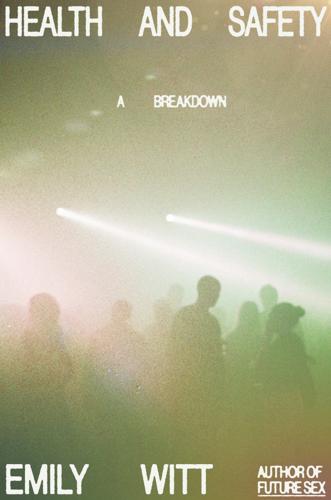
Health and Safety: A Breakdown
by
Emily Witt
Published 16 Sep 2024
After he lost the nomination, I watched Chelsea Clinton’s speech at the Democratic National Convention, where she described her daughter’s fondness for blueberries and how her own mother, Hillary Rodham Clinton, used to read her Goodnight Moon. Clinton lacked the political conviction to even say the words “Black Lives Matter” in a presidential debate. Neither candidate would take any action that threatened the bottom line of even one major American bank or corporation, which would therefore mean no meaningful attention to climate change, health care, the student loan crisis, affordable housing, consumer protections, antitrust regulation, campaign finance reform, income inequality, or any of the issues that kept the country impoverished, indebted, unhealthy, undereducated, housing insecure, stressed-out, and drug addicted.
…
Neglecting to remember that groups of earnest women were the butt of every joke, its participants knit pink hats in reference to Trump’s vulgar comments about sexual harassment and made signs about birth control and the boardroom. They moved along like a giant river and then went home. Aside from Occupy Wall Street six years before, and the Black Lives Matter protests that had started in Ferguson in 2014, street demonstrations in our era had almost always been marked by obedience. While anti-fascist demonstrators had broken the windows of a Bank of America and a McDonald’s the previous day, and two hundred people had been arrested, the attendees of the Women’s March the following morning had discouraged property destruction.
…
David Hogg posted a photo of a corporate donation of granola bars. “Thank you so much @KINDsnacks for their support! I love having so much food .” It quickly became cliché to point out the difference between the way the political establishment and the media paraded the pain of these wealthy suburban children versus their treatment of the young founders of Black Lives Matter a few years earlier. This was the era of quibbling about microaggressions, yet the racism was so obvious. The grief and rage of the white suburban children was treated as sacred and moving. Surviving a school shooting gave them moral supremacy, the right to speak against a society that had failed them, the right to ask for special protection and care in the aftermath of the event, and the adults would perform gestures of care while failing to fix what everyone agreed was a uniquely American problem.
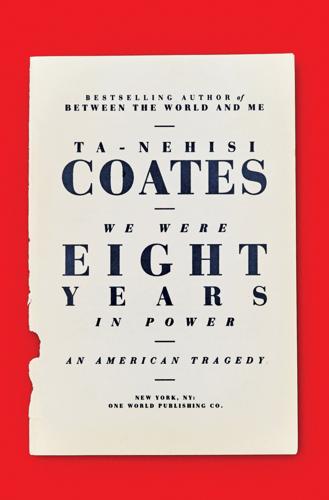
We Were Eight Years in Power: An American Tragedy
by
Ta-Nehisi Coates
Published 2 Oct 2017
“They felt—and I think many of our members felt—there wouldn’t be the depth of discussion that they wanted to have,” Tometi told me. “And if there wasn’t that space to have a real heart-to-heart, and if it was just surface level, that it would be more of a disservice to the movement.” Tometi noted that some other activists allied with Black Lives Matter had been planning to attend the meeting, so they felt their views would be represented. Nevertheless, Black Lives Matter sees itself as engaged in a protest against the treatment of black people by the American state, and so Tometi and much of the group’s leadership, concerned about being used for a photo op by the very body they were protesting, opted not to go.
…
” But I found myself again talking about Baldwin and the beauty of what he’d done in The Fire Next Time. I talked about how I’d read the book in one sitting and the challenge I imagined of crafting a singular essay, in the same fashion, meant to be read in a few hours but to haunt for years. I told him we were in an extraordinary moment—the era of a black president and Black Lives Matter—much like Baldwin had written amid the fight for desegregation. Here he offered this admonition—“The road is littered with knockoffs of The Fire Next Time.” But he still encouraged me to try. To invoke the name James Baldwin, these days, is to invoke the name of both a prophet and a God. More than his actual work, Baldwin, himself, has been beatified.
…
The notion that a president would attempt to achieve change within the boundaries of the accepted consensus is appropriate. But Obama is almost constitutionally skeptical of those who seek to achieve change outside that consensus. — EARLY IN 2016, OBAMA invited a group of African American leaders to meet with him at the White House. When some of the activists affiliated with Black Lives Matter refused to attend, Obama began calling them out in speeches. “You can’t refuse to meet because that might compromise the purity of your position,” he said. “The value of social movements and activism is to get you at the table, get you in the room, and then start trying to figure out how is this problem going to be solved.

Shielded: How the Police Became Untouchable
by
Joanna Schwartz
Published 14 Feb 2023
Politicians and advocacy groups from across the political and ideological spectrums agreed something needed to change. Important reforms got traction at the federal, state, and local levels. But then the nation’s unity and sense of urgency began to slip. Protests died down. Proposed reforms were voted down or abandoned. The Black Lives Matter murals painted in bright colors on city streets began to fade. We cannot wait for another viral video to restart our national conversation about police violence and reform. And we must foreground the realities of civil rights litigation when we do. Myths about the dangers of making it too easy to sue police have made a mess of our system.
…
In 1994, Congress gave the Department of Justice authority to investigate police departments for patterns and practices of unconstitutional policing, and the Department of Justice used that power to unearth evidence of systemic misconduct in cities across the country and oversee important changes in those cities’ police departments. In the 2010s, killings of Black people prompted the birth of the Black Lives Matter movement, refocused national attention on the problem of police violence, and inspired the convening of President Barack Obama’s Task Force on 21st Century Policing. In 2020, the killings of George Floyd and Breonna Taylor prompted ambitious police reform proposals in Congress and statehouses across the country.
…
GO TO NOTE REFERENCE IN TEXT police officers are criminally charged: For data about the frequency with which police are criminally prosecuted, and the decisions by officers, prosecutors, and jurors that lead to low rates of prosecution and conviction, see Kimberly Kindy and Kimbriell Kelly, “Thousands Dead, Few Prosecuted,” Washington Post, April 11, 2015 (noting the scarcity of charges against police officers despite thousands of deaths at their hands between 2005 and 2015), www.washingtonpost.com/sf/investigative/2015/04/11/thousands-dead-few-prosecuted; German Lopez, “Police Officers Are Prosecuted for Murder in Less Than 2 Percent of Fatal Shootings,” Vox, April 2, 2021, www.vox.com/21497089/derek-chauvin-george-floyd-trial-police-prosecutions-black-lives-matter. The Henry A. Wallace Police Crime Database, which tracks prosecutions of police officers and is relied upon by Lopez, can be found at policecrime.bgsu.edu/. GO TO NOTE REFERENCE IN TEXT conducting shoddy investigations: For research about the shortcomings of police internal investigations, see Rachel Moran, “Ending the Internal Affairs Farce,” Buffalo Law Review 64 (2016): 853–68; Joanna C.
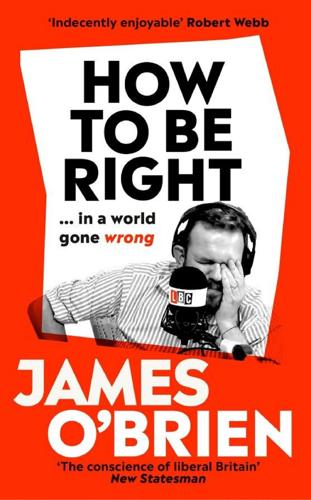
How to Be Right: In a World Gone Wrong
by
James O'Brien
Published 2 Nov 2018
And they do it while claiming to be somehow on the side of tolerance and freedoms, claiming that ‘you can’t give offence, you can only take it’, without realising that they spend their lives being offended by just about everything. Some of this escalating of tensions is deliberate. For example, pretending not to understand that the Black Lives Matter movement seeks a society where black lives matter to law enforcement officers as much as white lives do. Some of it is accidental, such as when stories that appear to support the narrative of censorship and suppression and whatever is meant by ‘cultural Marxism’ achieve currency without being properly examined or understood.
…
Gays, ethnic minorities, Muslims, transgender activists and, most of all, women are apparently favoured by modern society’s structures to an unbearable degree. The ‘traditional’ male, who wants nothing more than sex on demand, the right to determine his partner’s access to contraception and abortion and his dinner on the table when he gets home from work is, in the modern world of equality, feminism and Black Lives Matter, a man indubitably more sinned against than sinning. As a straight, white man I find this completely absurd, but I no longer find it funny. On 23 April 2018, a 25-year-old computer studies graduate called Alek Minassian drove through Toronto trying to kill people with his van. The terror attack left 10 dead and 16 more seriously injured.
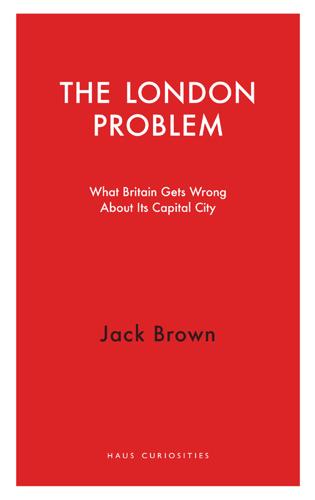
The London Problem: What Britain Gets Wrong About Its Capital City
by
Jack Brown
Published 14 Jul 2021
Nor is anti-Londonism really limited to London. London-based national cultural institutions dominate the national conversation by virtue of being national, rather than being London-based. When a national organisation such as the Premier League or the National Trust takes a ‘liberal’ stance on an issue, as seen recently during the Black Lives Matter movement, it is accused of metropolitan, liberal bias. But it is also possible that these decisions are the result of senior people thinking long and hard and coming to their own conclusions – not simply because they breathe ‘London air’. Indeed, breathing such air did not stop supporters of Millwall FC booing their own players when they ‘took a knee’ in support of racial equality before a game in December 2020.26 As for the National Trust, its headquarters are in Swindon, and yet its decision to review the links between its properties and slavery has led Conservative MP John Hayes to accuse it of being run by an ‘out of touch, bourgeois elite’ which ‘bears no relationship to the sentiments of its members’.27 This may not be an attack on the capital as such, but it certainly rhymes with one.
…
Sandbrook, ‘His policies fill me with dread. But this is what you get when a smug metropolitan elite treat the people with contempt’, Mail Online, 24/5/14. 26.‘Millwall 0–1 Derby: Game overshadowed by fans booing players taking a knee before kick-off ’, BBC, 6/12/20. 27.C. Hope, ‘National Trust faces anger after chairman defends Black Lives Matter movement’, Telegraph, 6/11/20. 28.J. Brown, ‘London, UK’, op. cit. 29.A. Gimson, R. Jolley, S. Katwala, P. Kellner, A. Massie & R. Miranda, ‘This Sceptred Isle: Pride not prejudice across the nations of Britain’, British Future, 5/21. 30.M. Smith, ‘Where is London most and least popular?’

I, Warbot: The Dawn of Artificially Intelligent Conflict
by
Kenneth Payne
Published 16 Jun 2021
Project Maven caused a stink among employees at Google, which was working with the Pentagon on it. Google eventually pledged not to renew its Maven contract with the military. The protest was a concrete illustration of tensions emerging between concerned researchers in the private sector and the national security apparatus. In 2020, as the Black Lives Matter protests spread through America, more followed. Microsoft, Amazon, IBM and others pledged not to work on facial recognition, or at least to pause it pending rigorous legislation about how it could be used. Amnesty International and other campaign groups called for an outright ban on the technology.
…
This transnational ‘epistemic community’ of like-minded scientists might mobilise itself—influencing what companies and research institutions that fund them choose to work on. We already saw Google employees protesting their employer’s decision to support the Pentagon’s work on Project Maven. More recently, we saw companies including IBM, Amazon and Microsoft step away from facial recognition AI, in response to the Black Lives Matter protests. This isn’t inconsequential: norms matter and can act powerfully to shape cultures of national security. They are a key driver of how violence gets used—that’s why states see assassination by poison as odious, even though it’s feasible and highly discriminate. Even where there is no legal prohibition, norms have real world consequences.
…
A-10 Warthog abacuses Abbottabad, Pakistan Able Archer (1983) acoustic decoys acoustic torpedoes Adams, Douglas Aegis combat system Aerostatic Corps affective empathy Affecto Afghanistan agency aircraft see also dogfighting; drones aircraft carriers algorithms algorithm creation Alpha biases choreography deep fakes DeepMind, see DeepMind emotion recognition F-117 Nighthawk facial recognition genetic selection imagery analysis meta-learning natural language processing object recognition predictive policing alien hand syndrome Aliens (1986 film) Alpha AlphaGo Altered Carbon (television series) Amazon Amnesty International amygdala Andropov, Yuri Anduril Ghost anti-personnel mines ants Apple Aristotle armour arms races Army Research Lab Army Signal Corps Arnalds, Ólafur ARPA Art of War, The (Sun Tzu) art Artificial Intelligence agency and architecture autonomy and as ‘brittle’ connectionism definition of decision-making technology expert systems and feedback loops fuzzy logic innateness intelligence analysis meta-learning as ‘narrow’ needle-in-a-haystack problems neural networks reinforcement learning ‘strong AI’ symbolic logic and unsupervised learning ‘winters’ artificial neural networks Ashby, William Ross Asimov, Isaac Asperger syndrome Astute class boats Atari Breakout (1976) Montezuma’s Revenge (1984) Space Invaders (1978) Athens ATLAS robots augmented intelligence Austin Powers (1997 film) Australia authoritarianism autonomous vehicles see also drones autonomy B-21 Raider B-52 Stratofortress B2 Spirit Baby X BAE Systems Baghdad, Iraq Baidu balloons ban, campaigns for Banks, Iain Battle of Britain (1940) Battle of Fleurus (1794) Battle of Midway (1942) Battle of Sedan (1940) batwing design BBN Beautiful Mind, A (2001 film) beetles Bell Laboratories Bengio, Yoshua Berlin Crisis (1961) biases big data Bin Laden, Osama binary code biological weapons biotechnology bipolarity bits Black Lives Matter Black Mirror (television series) Blade Runner (1982 film) Blade Runner 2049 (2017 film) Bletchley Park, Buckinghamshire blindness Blunt, Emily board games, see under games boats Boden, Margaret bodies Boeing MQ-25 Stingray Orca submarines Boolean logic Boston Dynamics Bostrom, Nick Boyd, John brain amygdala bodies and chunking dopamine emotion and genetic engineering and language and mind merge and morality and plasticity prediction and subroutines umwelts and Breakout (1976 game) breathing control brittleness brute force Buck Rogers (television series) Campaign against Killer Robots Carlsen, Magnus Carnegie Mellon University Casino Royale (2006 film) Castro, Fidel cat detector centaur combination Central Intelligence Agency (CIA) centre of gravity chaff Challenger Space Shuttle disaster (1986) Chauvet cave, France chemical weapons Chernobyl nuclear disaster (1986) chess centaur teams combinatorial explosion and creativity in Deep Blue game theory and MuZero as toy universe chicken (game) chimeras chimpanzees China aircraft carriers Baidu COVID-19 pandemic (2019–21) D-21 in genetic engineering in GJ-11 Sharp Sword nuclear weapons surveillance in Thucydides trap and US Navy drone seizure (2016) China Lake, California Chomsky, Noam choreography chunking Cicero civilians Clarke, Arthur Charles von Clausewitz, Carl on character on culmination on defence on genius on grammar of war on materiel on nature on poker on willpower on wrestling codebreaking cognitive empathy Cold War (1947–9) arms race Berlin Crisis (1961) Cuban Missile Crisis (1962) F-117 Nighthawk Iran-Iraq War (1980–88) joint action Korean War (1950–53) nuclear weapons research and SR-71 Blackbird U2 incident (1960) Vienna Summit (1961) Vietnam War (1955–75) VRYAN Cole, August combinatorial creativity combinatorial explosion combined arms common sense computers creativity cyber security games graphics processing unit (GPU) mice Moore’s Law symbolic logic viruses VRYAN confirmation bias connectionism consequentialism conservatism Convention on Conventional Weapons ConvNets copying Cormorant cortical interfaces cost-benefit analysis counterfactual regret minimization counterinsurgency doctrine courageous restraint COVID-19 pandemic (2019–21) creativity combinatorial exploratory genetic engineering and mental disorders and transformational criminal law CRISPR, crows Cruise, Thomas Cuban Missile Crisis (1962) culmination Culture novels (Banks) cyber security cybernetics cyborgs Cyc cystic fibrosis D-21 drones Damasio, Antonio dance DARPA autonomous vehicle research battlespace manager codebreaking research cortical interface research cyborg beetle Deep Green expert system programme funding game theory research LongShot programme Mayhem Ng’s helicopter Shakey understanding and reason research unmanned aerial combat research Dartmouth workshop (1956) Dassault data DDoS (distributed denial-of-service) dead hand system decision-making technology Deep Blue deep fakes Deep Green DeepMind AlphaGo Atari playing meta-learning research MuZero object recognition research Quake III competition (2019) deep networks defence industrial complex Defence Innovation Unit Defence Science and Technology Laboratory defence delayed gratification demons deontological approach depth charges Dionysus DNA (deoxyribonucleic acid) dodos dogfighting Alpha domains dot-matrix tongue Dota II (2013 game) double effect drones Cormorant D-21 GJ-11 Sharp Sword Global Hawk Gorgon Stare kamikaze loitering munitions nEUROn operators Predator Reaper reconnaissance RQ-170 Sentinel S-70 Okhotnik surveillance swarms Taranis wingman role X-37 X-47b dual use technology Eagleman, David early warning systems Echelon economics Edge of Tomorrow (2014 film) Eisenhower, Dwight Ellsberg, Daniel embodied cognition emotion empathy encryption entropy environmental niches epilepsy epistemic community escalation ethics Asimov’s rules brain and consequentialism deep brain stimulation and deontological approach facial recognition and genetic engineering and golden rule honour hunter-gatherer bands and identity just war post-conflict reciprocity regulation surveillance and European Union (EU) Ex Machina (2014 film) expert systems exploratory creativity extra limbs Eye in the Sky (2015 film) F-105 Thunderchief F-117 Nighthawk F-16 Fighting Falcon F-22 Raptor F-35 Lightning F/A-18 Hornet Facebook facial recognition feedback loops fighting power fire and forget firmware 5G cellular networks flow fog of war Ford forever wars FOXP2 gene Frahm, Nils frame problem France Fukushima nuclear disaster (2011) Future of Life Institute fuzzy logic gait recognition game theory games Breakout (1976) chess, see chess chicken Dota II (2013) Go, see Go Montezuma’s Revenge (1984) poker Quake III (1999) Space Invaders (1978) StarCraft II (2010) toy universes zero sum games gannets ‘garbage in, garbage out’ Garland, Alexander Gates, William ‘Bill’ Gattaca (1997 film) Gavotti, Giulio Geertz, Clifford generalised intelligence measure Generative Adversarial Networks genetic engineering genetic selection algorithms genetically modified crops genius Germany Berlin Crisis (1961) Nuremburg Trials (1945–6) Russian hacking operation (2015) World War I (1914–18) World War II (1939–45) Ghost in the Shell (comic book) GJ-11 Sharp Sword Gladwell, Malcolm Global Hawk drone global positioning system (GPS) global workspace Go (game) AlphaGo Gödel, Kurt von Goethe, Johann golden rule golf Good Judgment Project Google BERT Brain codebreaking research DeepMind, see DeepMind Project Maven (2017–) Gordievsky, Oleg Gorgon Stare GPT series grammar of war Grand Challenge aerial combat autonomous vehicles codebreaking graphics processing unit (GPU) Greece, ancient grooming standard Groundhog Day (1993 film) groupthink guerilla warfare Gulf War First (1990–91) Second (2003–11) hacking hallucinogenic drugs handwriting recognition haptic vest hardware Harpy Hawke, Ethan Hawking, Stephen heat-seeking missiles Hebrew Testament helicopters Hellfire missiles Her (2013 film) Hero-30 loitering munitions Heron Systems Hinton, Geoffrey Hitchhiker’s Guide to the Galaxy, The (Adams) HIV (human immunodeficiency viruses) Hoffman, Frank ‘Holeshot’ (Cole) Hollywood homeostasis Homer homosexuality Hongdu GJ-11 Sharp Sword honour Hughes human in the loop human resources human-machine teaming art cyborgs emotion games King Midas problem prediction strategy hunter-gatherer bands Huntingdon’s disease Hurricane fighter aircraft hydraulics hypersonic engines I Robot (Asimov) IARPA IBM identity Iliad (Homer) image analysis image recognition cat detector imagination Improbotics nformation dominance information warfare innateness intelligence analysts International Atomic Energy Agency International Criminal Court international humanitarian law internet of things Internet IQ (intelligence quotient) Iran Aegis attack (1988) Iraq War (1980–88) nuclear weapons Stuxnet attack (2010) Iraq Gulf War I (1990–91) Gulf War II (2003–11) Iran War (1980–88) Iron Dome Israel Italo-Turkish War (1911–12) Jaguar Land Rover Japan jazz JDAM (joint directed attack munition) Jeopardy Jobs, Steven Johansson, Scarlett Johnson, Lyndon Joint Artificial Intelligence Center (JAIC) de Jomini, Antoine jus ad bellum jus in bello jus post bellum just war Kalibr cruise missiles kamikaze drones Kasparov, Garry Kellogg Briand Pact (1928) Kennedy, John Fitzgerald KGB (Komitet Gosudarstvennoy Bezopasnosti) Khrushchev, Nikita kill chain King Midas problem Kissinger, Henry Kittyhawk Knight Rider (television series) know your enemy know yourself Korean War (1950–53) Kratos XQ-58 Valkyrie Kubrick, Stanley Kumar, Vijay Kuwait language connectionism and genetic engineering and natural language processing pattern recognition and semantic webs translation universal grammar Law, Jude LeCun, Yann Lenat, Douglas Les, Jason Libratus lip reading Litvinenko, Alexander locked-in patients Lockheed dogfighting trials F-117 Nighthawk F-22 Raptor F-35 Lightning SR-71 Blackbird logic loitering munitions LongShot programme Lord of the Rings (2001–3 film trilogy) LSD (lysergic acid diethylamide) Luftwaffe madman theory Main Battle Tanks malum in se Manhattan Project (1942–6) Marcus, Gary Maslow, Abraham Massachusetts Institute of Technology (MIT) Matrix, The (1999 film) Mayhem McCulloch, Warren McGregor, Wayne McNamara, Robert McNaughton, John Me109 fighter aircraft medical field memory Merkel, Angela Microsoft military industrial complex Mill, John Stuart Milrem mimicry mind merge mind-shifting minimax regret strategy Minority Report (2002 film) Minsky, Marvin Miramar air base, San Diego missiles Aegis combat system agency and anti-missile gunnery heat-seeking Hellfire missiles intercontinental Kalibr cruise missiles nuclear warheads Patriot missile interceptor Pershing II missiles Scud missiles Tomahawk cruise missiles V1 rockets V2 rockets mission command mixed strategy Montezuma’s Revenge (1984 game) Moore’s Law mosaic warfare Mueller inquiry (2017–19) music Musk, Elon Mutually Assured Destruction (MAD) MuZero Nagel, Thomas Napoleon I, Emperor of the French Napoleonic France (1804–15) narrowness Nash equilibrium Nash, John National Aeronautics and Space Administration (NASA) National Security Agency (NSA) National War College natural language processing natural selection Nature navigation computers Nazi Germany (1933–45) needle-in-a-haystack problems Netflix network enabled warfare von Neumann, John neural networks neurodiversity nEUROn drone neuroplasticity Ng, Andrew Nixon, Richard normal accident theory North Atlantic Treaty Organization (NATO) North Korea nuclear weapons Cuban Missile Crisis (1962) dead hand system early warning systems F-105 Thunderchief and game theory and Hiroshima and Nagasaki bombings (1945) Manhattan Project (1942–6) missiles Mutually Assured Destruction (MAD) second strike capability submarines and VRYAN and in WarGames (1983 film) Nuremburg Trials (1945–6) Obama, Barack object recognition Observe Orient Decide and Act (OODA) offence-defence balance Office for Naval Research Olympic Games On War (Clausewitz), see Clausewitz, Carl OpenAI optogenetics Orca submarines Ottoman Empire (1299–1922) pain Pakistan Palantir Palmer, Arnold Pandemonium Panoramic Research Papert, Seymour Parkinson’s disease Patriot missile interceptors pattern recognition Pearl Harbor attack (1941) Peloponnesian War (431–404 BCE) Pentagon autonomous vehicle research codebreaking research computer mouse development Deep Green Defence Innovation Unit Ellsberg leaks (1971) expert system programme funding ‘garbage in, garbage out’ story intelligence analysts Project Maven (2017–) Shakey unmanned aerial combat research Vietnam War (1955–75) perceptrons Perdix Pershing II missiles Petrov, Stanislav Phalanx system phrenology pilot’s associate Pitts, Walter platform neutrality Pluribus poker policing polygeneity Portsmouth, Hampshire Portuguese Man o’ War post-traumatic stress disorder (PTSD) Predator drones prediction centaur teams ‘garbage in, garbage out’ story policing toy universes VRYAN Prescience principles of war prisoners Project Improbable Project Maven (2017–) prosthetic arms proximity fuses Prussia (1701–1918) psychology psychopathy punishment Putin, Vladimir Pyeongchang Olympics (2018) Qinetiq Quake III (1999 game) radar Rafael RAND Corporation rational actor model Rawls, John Re:member (Arnalds) Ready Player One (Cline) Reagan, Ronald Reaper drones reciprocal punishment reciprocity reconnaissance regulation ban, campaigns for defection self-regulation reinforcement learning remotely piloted air vehicles (RPAVs) revenge porn revolution in military affairs Rid, Thomas Robinson, William Heath Robocop (1987 film) Robotics Challenge robots Asimov’s rules ATLAS Boston Dynamics homeostatic Shakey symbolic logic and Rome Air Defense Center Rome, ancient Rosenblatt, Frank Royal Air Force (RAF) Royal Navy RQ-170 Sentinel Russell, Stuart Russian Federation German hacking operation (2015) Litvinenko murder (2006) S-70 Okhotnik Skripal poisoning (2018) Ukraine War (2014–) US election interference (2016) S-70 Okhotnik SAGE Said and Done’ (Frahm) satellite navigation satellites Saudi Arabia Schelling, Thomas schizophrenia Schwartz, Jack Sea Hunter security dilemma Sedol, Lee self-actualisation self-awareness self-driving cars Selfridge, Oliver semantic webs Shakey Shanahan, Murray Shannon, Claude Shogi Silicon Valley Simon, Herbert Single Integrated Operations Plan (SIOP) singularity Siri situational awareness situationalist intelligence Skripal, Sergei and Yulia Slaughterbots (2017 video) Slovic, Paul smartphones Smith, Willard social environments software Sophia Sorcerer’s Apprentice, The (Goethe) South China Sea Soviet Union (1922–91) aircraft Berlin Crisis (1961) Chernobyl nuclear disaster (1986) Cold War (1947–9), see Cold War collapse (1991) Cuban Missile Crisis (1962) early warning systems Iran-Iraq War (1980–88) Korean War (1950–53) nuclear weapons radar technology U2 incident (1960) Vienna Summit (1961) Vietnam War (1955–75) VRYAN World War II (1939–45) Space Invaders (1978 game) SpaceX Sparta Spike Firefly loitering munitions Spitfire fighter aircraft Spotify Stanford University Stanley Star Trek (television series) StarCraft II (2010 game) stealth strategic bombing strategic computing programme strategic culture Strategy Robot strategy Strava Stuxnet sub-units submarines acoustic decoys nuclear Orca South China Sea incident (2016) subroutines Sukhoi Sun Tzu superforecasting surveillance swarms symbolic logic synaesthesia synthetic operation environment Syria Taliban tanks Taranis drone technological determinism Tempest Terminator franchise Tesla Tetlock, Philip theory of mind Threshold Logic Unit Thucydides TikTok Tomahawk cruise missiles tongue Top Gun (1986 film) Top Gun: Maverick (2021 film) torpedoes toy universes trade-offs transformational creativity translation Trivers, Robert Trump, Donald tumours Turing, Alan Twitter 2001: A Space Odyssey (1968 film) Type-X Robotic Combat Vehicle U2 incident (1960) Uber Uexküll, Jacob Ukraine ultraviolet light spectrum umwelts uncanny valley unidentified flying objects (UFOs) United Kingdom AI weapons policy armed force, size of Battle of Britain (1940) Bletchley Park codebreaking Blitz (1940–41) Cold War (1947–9) COVID-19 pandemic (2019–21) DeepMind, see DeepMind F-35 programme fighting power human rights legislation in Litvinenko murder (2006) nuclear weapons principles of war Project Improbable Qinetiq radar technology Royal Air Force Royal Navy Skripal poisoning (2018) swarm research wingman concept World War I (1914–18) United Nations United States Afghanistan War (2001–14) Air Force Army Research Lab Army Signal Corps Battle of Midway (1942) Berlin Crisis (1961) Bin Laden assassination (2011) Black Lives Matter protests (2020) centaur team research Central Intelligence Agency (CIA) Challenger Space Shuttle disaster (1986) Cold War (1947–9), see Cold War COVID-19 pandemic (2019–21) Cuban Missile Crisis (1962) culture cyber security DARPA, see DARPA Defense Department drones early warning systems F-35 programme Gulf War I (1990–91) Gulf War II (2003–11) IARPA Iran Air shoot-down (1988) Korean War (1950–53) Manhattan Project (1942–6) Marines Mueller inquiry (2017–19) National Security Agency National War College Navy nuclear weapons Office for Naval Research Patriot missile interceptor Pearl Harbor attack (1941) Pentagon, see Pentagon Project Maven (2017–) Rome Air Defense Center Silicon Valley strategic computing programme U2 incident (1960) Vienna Summit (1961) Vietnam War (1955–75) universal grammar Universal Schelling Machine (USM) unmanned aerial vehicles (UAVs), see drones unsupervised learning utilitarianism UVision V1 rockets V2 rockets Vacanti mouse Valkyries Van Gogh, Vincent Vietnam War (1955–75) Vigen, Tyler Vincennes, USS voice assistants VRYAN Wall-e (2008 film) WannaCry ransomware War College, see National War College WarGames (1983 film) warrior ethos Watson weapon systems WhatsApp Wiener, Norbert Wikipedia wingman role Wittgenstein, Ludwig World War I (1914–18) World War II (1939–45) Battle of Britain (1940) Battle of Midway (1942) Battle of Sedan (1940) Bletchley Park codebreaking Blitz (1940–41) Hiroshima and Nagasaki bombings (1945) Pearl Harbor attack (1941) radar technology V1 rockets V2 rockets VRYAN and Wrangham, Richard Wright brothers WS-43 loitering munitions Wuhan, China X-37 drone X-drone X-rays YouTube zero sum games
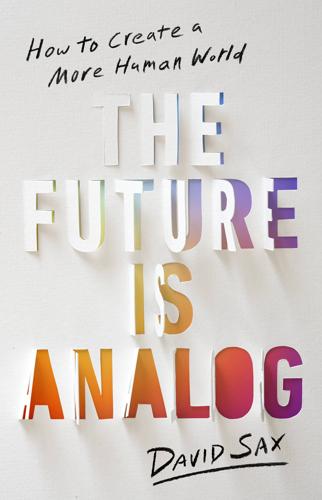
The Future Is Analog: How to Create a More Human World
by
David Sax
Published 15 Jan 2022
After years working in supply chain management with the Department of Defense, Boeing, and Airbus, Boursiquot grew tired of the judgment she faced as a young, Black woman in an overwhelmingly white, male industry. As she shopped for everyday goods and looked to support Black entrepreneurs with her dollars (especially after the rise of Black Lives Matter protests in the summer of 2020), she saw an opportunity to help these Black businesses with her expertise in logistics. “When we say ‘Black-owned business,’ what does that really mean?” Boursiquot asked rhetorically, noting that the expectations for these businesses were mixed. On the one hand you felt good buying from them, but on the other you assumed that because they were small and independent, prices would be high, shipping would be slow, and the shopping experience would require a sacrifice.
…
If race was an artificial creation that propped up this injustice, what did that say about the “races” we felt an identity with? Just because we benefitted unjustly from being born into a “dominant caste,” as Wilkerson put it, did that invalidate everything each of us had achieved in our lives? The careers we built? The homes we bought? What did we really think about Black Lives Matter? How far should a society go to right slavery’s historical wrong? How far was too far? We talked about this, and about Trump, and over the course of that night we got right down to the heart of it. But we never raised our voices. We never accused each other of anything. We spoke as friends and respected one another, so by the end of the night, when we were tucking into Toby’s sweet potato pie (God bless Americans) and warming ourselves with hot toddies, everyone there felt that the first bit of healing had begun after the past four years of chaos.
…
The weekend before we spoke, Riley, who is Black, had traveled to visit his brother in San Diego. One night during dinner, Riley’s brother’s father-in-law, who was white, got into a conversation with Riley about the recent racial justice protests around the United States following the high-profile death of George Floyd at the hands of Minneapolis police. “All that Black Lives Matter stuff is crap,” the father-in-law said. “All lives matter!” Rather than get angry or defensive or walk away, Riley did his best to make this man see his perspective and empathize with him. “I said, ‘Lemme walk you through the history of everything Black people went through in this country, and systematically how it worked.’”

Code Dependent: Living in the Shadow of AI
by
Madhumita Murgia
Published 20 Mar 2024
CHAPTER 3: YOUR IDENTITY 1 Nina Dewi Toft Djanegara, ‘How 9/11 Sparked the Rise of America’s Biometrics Security Empire’, Fast Company, September 10, 2021, https://www.fastcompany.com/90674661/how-9-11-sparked-the-rise-of-americas-biometrics-security-empire. 2 Kashmir Hill, ‘The Secretive Company That Might End Privacy as We Know It’, The New York Times, January 18, 2020, https://www.nytimes.com/2020/01/18/technology/clearview-privacy-facial-recognition.html. 3 Paul Mozur, ‘In Hong Kong Protests, Faces Become Weapons’, The New York Times, July 26, 2019, https://www.nytimes.com/2019/07/26/technology/hong-kong-protests-facial-recognition-surveillance.html; Stephen Kafeero, ‘Uganda Is Using Huawei’s Facial Recognition Tech to Crack Down on Dissent after Anti-Government Protests’, Quartz, November 27, 2020, https://qz.com/africa/1938976/uganda-uses-chinas-huawei-facial-recognition-to-snare-protesters; Alexandra Ulmer and Zeba Siddiqui, ‘India’s Use of Facial Recognition Tech during Protests Causes Stir’, Reuters, February 17, 2020, https://www.reuters.com/article/us-india-citizenship-protests-technology-idUSKBN20B0ZQ. 4 James Vincent, ‘FBI Used Facial Recognition to Identify a Capitol Rioter from His Girlfriend’s Instagram Posts’, The Verge, April 21, 2021, https://www.theverge.com/2021/4/21/22395323/fbi-facial-recognition-us-capital-riots-tracked-down-suspect; James Vincent, ‘NYPD Used Facial Recognition to Track down Black Lives Matter Activist’, The Verge, August 18, 2020, https://www.theverge.com/2020/8/18/21373316/nypd-facial-recognition-black-lives-matter-activist-derrick-ingram. 5 Madhumita Murgia, ‘How One London Wine Bar Helped Brazil to Cut Crime’, Financial Times, February 8, 2019, https://www.ft.com/content/605de54a-1e90-11e9-b126-46fc3ad87c65. 6 Johana Bhuiyan, ‘Ukraine Uses Facial Recognition Software to Identify Russian Soldiers Killed in Combat’, The Guardian, March 24, 2022. 7 Joy Buolamwini and Timnit Gebru, ‘Gender Shades’, MIT Media Lab, 2018, http://gendershades.org/index.html. 8 Kashmir Hill, ‘Another Arrest, and Jail Time, Due to a Bad Facial Recognition Match’, The New York Times, December 29, 2020, https://www.nytimes.com/2020/12/29/technology/facial-recognition-misidentify-jail.html. 9 Kashmir Hill, ‘Wrongfully Accused by an Algorithm’, The New York Times, June 24, 2020, https://www.nytimes.com/2020/06/24/technology/facial-recognition-arrest.html. 10 Antonia Noori Farzan, ‘Sri Lankan Police Wrongly Identify Brown University Student as Wanted Suspect in Terror Attack’, The Washington Post, April 26, 2019, https://www.washingtonpost.com/nation/2019/04/26/sri-lankan-police-wrongly-identify-brown-university-student-wanted-suspect-terror-attack/. 11 Madhumita Venkataramanan, ‘The Superpower Police Now Use to Tackle Crime’, BBC Online, June 11, 2015, https://www.bbc.com/future/article/20150611-the-superpower-police-now-use-to-tackle-crime. 12 Chris Nuttall, ‘London Sets Standard for Surveillance Societies’, Financial Times, August 1, 2019, https://www.ft.com/content/70b35f8a-b47f-11e9-bec9-fdcab53d6959. 13 Madhumita Murgia, ‘London’s King’s Cross Uses Facial Recognition in Security Cameras’, Financial Times, August 12, 2019, https://www.ft.com/content/8cbcb3ae-babd-11e9-8a88-aa6628ac896c. 14 ICO, ‘Information Commissioner’s Opinion: The Use of Live Facial Recognition Technology in Public Places’ (London: June 18, 2021). 15 Yuan Yang and Madhumita Murgia, ‘Facial recognition: how China cornered the surveillance market’, Financial Times, December 6, 2019, https://www.ft.com/content/6f1a8f48-1813-11ea-9ee4-11f260415385. 16 Suresh K.
…
In January 2020, The New York Times published a story about how Clearview AI had taken billions of photos from the web, including sites like LinkedIn and Instagram, to build powerful facial recognition capabilities bought by several police forces around the world.2 The technology was being unleashed from Argentina to Alabama, via Ayrshire, with a life of its own, blowing wild like gleeful dandelion seeds taking root at will. In Uganda, Hong Kong and India, it has been used to stifle political opposition and civil protest.3 In the US it was used to track Black Lives Matter protests and Capitol rioters during the uprising in January 2021, and in London to monitor revellers at the annual Afro-Caribbean carnival in Notting Hill.4 And it’s not just a law enforcement tool: facial recognition is being used to catch pickpockets and petty thieves. It is deployed at the famous Gordon’s Wine Bar in London, scanning for known troublemakers.5 It’s even been used to identify dead Russian soldiers in Ukraine.6 The question of whether it was ready for primetime use has taken on an urgency, as it impacts the lives of billions around the world.
…
Index Abeleira, Carlos (Charlie) ref1, ref2, ref3, ref4, ref5, ref6, ref7, ref8 Abeleira, Pablo ref1, ref2, ref3, ref4, ref5, ref6 abortion ref1, ref2, ref3, ref4, ref5, ref6, ref7 Abrahamic religions ref1, ref2, ref3 Accenture ref1, ref2 Accredited Social Health Activists (ASHAs) ref1, ref2, ref3 adivasis (indigenous people) ref1 Afghanistan ref1, ref2, ref3 African Americans ref1 over-policing of ref1 pain and ref1 agency AI systems impinging on ref1, ref2 Bandura’s description of ref1, ref2 checklist of guiding questions to help reclaim ref1 China, fight to reclaim within ref1, ref2, ref3 collective agency, AI systems lead to strengthening of ref1 data workers and ref1, ref2, ref3 facial recognition and ref1, ref2, ref3 gig workers and ref1, ref2, ref3 growing wellspring of people fighting to recoup collective ref1, ref2, ref3, ref4 healthcare and ref1, ref2 illusion of ref1 pregnant girls and ref1 proxy agents and ref1, ref2 Ajder, Henry ref1, ref2 Alexa ref1, ref2 alignment, AI ref1 algor-ethics and ref1, ref2 Bletchley Park summit (2023) ref1, ref2, ref3 guiding questions checklist ref1 Rome Call ref1 algorithms agency and see agency algor-ethics and ref1, ref2 autonomy and ref1 bias and ref1, ref2 data ‘colonialism’ and ref1 deepfakes and ref1, ref2, ref3 diagnostic ref1, ref2, ref3, ref4, ref5, ref6, ref7, ref8, ref9 discriminatory and unethical ref1 exam grades and ref1 facial recognition ref1, ref2, ref3, ref4, ref5, ref6 ‘fuck the algorithm’ ref1 GANs and ref1 gig-work and ref1, ref2 hateful content and ref1 military targeting and ref1 organ-allocation and ref1 policing and ref1, ref2, ref3, ref4, ref5 social media ref1, ref2 teenage pregnancy and ref1, ref2, ref3, ref4, ref5, ref6, ref7 training ref1, ref2, ref3 UK government use of ref1 working conditions impact quality of ref1 Xinjiang and ref1, ref2, ref3, ref4 Ali, Altab ref1 Alphabet ref1 al Qaeda ref1 Altab Ali Park ref1 Alzheimer’s disease ref1 Amare, Meareg ref1 Amazon ref1 AI diagnostics and ref1 Alexa ref1, ref2 Echo ref1 warehouse workers ref1, ref2, ref3 Web Services ref1 Amnesty International ref1, ref2, ref3, ref4 Amsterdam predictive policing systems in ref1, ref2, ref3, ref4 Uber ruling in ref1, ref2 Andrade, Norberto ref1 Aneja, Urvashi ref1, ref2, ref3, ref4, ref5, ref6 Anthropic ref1 antitrust law ref1 Apostolic Palace, Rome ref1, ref2 App Drivers and Couriers Union ref1, ref2 Appen ref1 Apple ref1, ref2 Aravind Eye Hospital ref1 Arbusta ref1, ref2 Argent ref1 Argentina app delivery platforms in ref1 data-workers in ref1 teenage pregnancy in ref1, ref2, ref3, ref4 Argo.ai ref1 Arrival (film) ref1, ref2 artificial intelligence (AI) algorithms see algorithms alignment/ethics see alignment, AI data annotation/data-labelling see data annotation/data-labelling deepfakes and see deepfakes facial recognition and see facial recognition future of and see China generative AI see generative AI gig workers and see gig workers growth of ref1 healthcare and see healthcare policing and see policing regulation of see regulation teenage pregnancy and see pregnancy, teenage term ref1 Aslam, Yaseen ref1 AstraZeneca ref1 ‘Attention Is All You Need’ (paper) ref1, ref2 automation ref1, ref2, ref3, ref4 Ayup, Abduweli ref1 Azure software ref1, ref2 Bandura, Albert ref1, ref2 Bard ref1 Bayyah, Sheikh bin ref1 B-corp ref1 Benanti, Paolo ref1, ref2, ref3 Bender, Emily ref1 Berk, Richard ref1 Berlin ref1, ref2, ref3, ref4, ref5 Bezos, Jeff ref1 Bhil tribe ref1, ref2, ref3, ref4, ref5, ref6, ref7 bias ref1, ref2, ref3, ref4, ref5 automation ref1 confirmation ref1 facial recognition technologies and ref1 health technologies and ref1 predictive policing and ref1, ref2 racial see race teenage pregnancy and ref1 Big Tech ref1, ref2, ref3, ref4, ref5, ref6, ref7, ref8 Bing ref1 bioethics ref1 Birhane, Abeba ref1 blacklists ref1, ref2 Black Lives Matter ref1 Black Mirror ref1, ref2 Blem (Ghanaian-British entrepreneur) ref1, ref2 Bletchley Park summit (2023) ref1, ref2, ref3 Bletchley Declaration ref1, ref2 Bloomberg ref1 Bokinni, Yinka ref1 Bolt ref1, ref2 Bouvard, Laurence ref1, ref2 Bravo, Ivan ref1 Bridges, Ed ref1 Bridle, James ref1, ref2, ref3 Budweiser ref1 Buenos Aires ref1, ref2, ref3, ref4, ref5 Bulgaria ref1, ref2 Bulger, Whitey ref1 ‘bullshit jobs’ ref1 Buolamwini, Joy ref1, ref2 Burgess, Rick ref1 al-Busti, Abu al-Fath ref1 Cameroon ref1, ref2 Camofleurs ref1 Can You Forgive Me app ref1 Cant, Callum ref1 Capitol riot, US (2021) ref1 cars, self-driving ref1, ref2, ref3, ref4, ref5, ref6, ref7 Cast Away (film) ref1 Castile, Philando ref1 Catholic Church ref1, ref2, ref3, ref4, ref5, ref6, ref7, ref8, ref9 Cattaneo, Paula ref1 Caucasians ref1, ref2, ref3 CCTV Amsterdam ref1 India ref1, ref2 London ref1 Uganda ref1 Xinjiang ref1 Central St Martins ref1 CGI ref1 Channel 4 ref1 ChatGPT ref1, ref2 ‘ChatGPT Is a Blurry JPEG of the Web’ ref1 deep learning and ref1 generative AI and ref1 language used to describe ref1 lawyers and ref1 origins and launch of ref1 Sama and ref1, ref2, ref3 transformer and ref1 chemical structures ref1 Chiang, Ted ref1 ‘ChatGPT Is a Blurry JPEG of the Web’ ref1 ‘Story of Your Life’ ref1 The Lifecycle of Software Objects ref1 Chien-Shiung Wu ref1 China ref1 Covid-19 and ref1, ref2, ref3 deepfakes in ref1 dissidents in ref1, ref2 facial recognition in ref1, ref2, ref3, ref4, ref5, ref6, ref7, ref8 gig workers in ref1, ref2, ref3, ref4 Integrated Joint Operations Platform (IJOP) ref1, ref2 One Card System ref1 Tiananmen Square massacre (1989) ref1, ref2, ref3, ref4 video game artists ref1 Xinjiang, Uyghur Muslims in ref1, ref2, ref3 China Electronics Technology Group Corporation (CETC) ref1 Chinchpada, India, healthcare AI in ref1 Chinchpada Christian Hospital, India ref1 Chinese Communist Party ref1, ref2 CIA ref1 Claude ref1 Clearview AI ref1 Coca Cola ref1 collective bargaining ref1 colonialism ref1, ref2, ref3, ref4, ref5 data colonialism ref1, ref2, ref3, ref4, ref5, ref6, ref7, ref8, ref9, ref10 divide and rule and ref1 gig workers and ref1 resource extraction ref1 technology companies as monopolistic quasi-states ref1 Communications Decency Act, Section ref1 ref1 COMPAS ref1, ref2 Conin ref1, ref2, ref3, ref4 content moderators ref1, ref2, ref3, ref4, ref5, ref6 cookies ref1 Couldry, Nick: The Costs of Connection ref1 Covid-19 ref1, ref2, ref3, ref4, ref5, ref6 AI labelling and ref1 China and ref1 diagnostic algorithms ref1, ref2 exam results during ref1 social media algorithms and ref1 CPI Libertad ref1 Crawford, Kate ref1 creativity ref1, ref2, ref3, ref4 credit-rating agencies ref1 Crider, Cori ref1 Crime Anticipation System (CAS) ref1 culture of secrecy/climate of fear ref1 Curling, Rosa ref1 CV Dazzle ref1 DaimlerChrysler ref1 Dall-E ref1, ref2 Dalrymple, William: The Anarchy ref1 Daoud, Abdullah ref1, ref2 Daoud, Ghazwan ref1, ref2, ref3, ref4, ref5 Daoud, Hiba Hatem ref1, ref2, ref3, ref4, ref5, ref6, ref7 Dark, Martha ref1 Dasgupta, Rana ref1 Dashcam For Your Bike ref1 data annotation/data-labelling ref1 Humans in the Loop ref1, ref2, ref3, ref4 Sama ref1, ref2, ref3, ref4, ref5, ref6, ref7 wages ref1, ref2, ref3, ref4, ref5, ref6 workin conditions impact quality of algorithms ref1 data brokers ref1, ref2 data colonialism ref1, ref2, ref3, ref4, ref5, ref6, ref7, ref8, ref9, ref10 Dazzle Club ref1 De Moeder Is De Sleutel (The Mother Is the Key) ref1 deathworlds ref1, ref2 Decentraland ref1 ‘#DeclineNow’ ref1 deepfakes ref1, ref2, ref3, ref4, ref5 Can You Forgive Me app ref1 data colonialism and ref1 DeepNude ref1 DreamTime ref1 GANs and ref1 Goldberg and fighting ref1, ref2 Martin and ref1, ref2, ref3, ref4, ref5, ref6, ref7 metaverse ref1 Mort and see Mort, Helen nudes-for-hire services ref1 Online Safety Bill and ref1 origins and rise of ref1 PimEyes ref1 regulatory change ref1, ref2, ref3, ref4, ref5, ref6, ref7, ref8, ref9, ref10 term ref1 WITNESS and ref1 deep learning ref1, ref2, ref3 DeepMind ref1, ref2, ref3, ref4 DeepNude ref1 Deliveroo ref1, ref2, ref3, ref4 Department for Work and Pensions ref1 Department of Defense ref1, ref2 diffuse policing ref1 digital colonialism ref1, ref2 Digital Geneva Convention (2017) ref1 Disney ref1 dissidents, Chinese ref1, ref2 divide et impera (divide and rule) ref1 domestic violence ref1, ref2, ref3 DoorDash ref1, ref2, ref3 Douglass, Frederick ref1 DreamTime ref1 driver profiles ref1 Driver’s Seat Cooperative ref1 ‘driving while black’ ref1 drones ref1, ref2, ref3, ref4 Dryhurst, Mathew ref1 East India Company ref1, ref2 el chineo (gang rape) ref1 Ele.me ref1 Electronic Frontier Foundation ref1 Emmanuel Trust ref1 Entregadores Anti-fascistas (Anti-Fascist Couriers) ref1 ethics, AI ref1, ref2, ref3 alignment, AI ref1 algor-ethics and ref1, ref2 Bletchley Park summit (2023) ref1, ref2, ref3 guiding questions checklist ref1 ‘humanist’ ref1 Rome Call ref1 Ethiopia ref1, ref2, ref3 Eubanks, Virginia ref1 European Union ref1, ref2, ref3, ref4, ref5 Artificial Intelligence Act, draft ref1 exam grades ref1 Experian ref1 exports, AI Surveillance ref1, ref2 Eyeota ref1 fabricated sentences ref1 Face++ ref1 Facebook content moderators and ref1, ref2 deepfakes and ref1, ref2, ref3, ref4, ref5 gig workers and ref1 metaverse and ref1, ref2 ‘move fast and break things’ motto ref1 NDAs and ref1, ref2 online hatred and ref1 Sama and ref1, ref2, ref3, ref4 see also Meta facial recognition ref1, ref2, ref3, ref4 Camofleurs and ref1 CCTV and ref1 China and ref1, ref2, ref3, ref4, ref5, ref6, ref7, ref8 confirmation bias and ref1 databases of faces ref1 Dazzle Club/dazzle camouflage techniques and ref1 exporting technologies ref1, ref2 gig workers and ref1, ref2, ref3, ref4 origins of ref1 racial bias and ref1, ref2, ref3, ref4, ref5 regulating ref1 super-recognizers ref1 Fair Trials ref1, ref2 Fallujah, Iraq ref1, ref2 Farrar, James ref1, ref2 Financial Times ref1, ref2, ref3 Floyd, George ref1 forgiveness ref1, ref2, ref3 Forster, E.
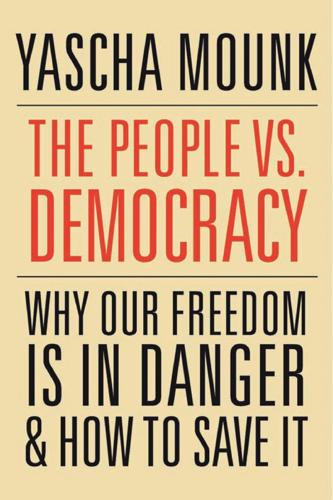
The People vs. Democracy: Why Our Freedom Is in Danger and How to Save It
by
Yascha Mounk
Published 15 Feb 2018
On the Tea Party, see Vanessa Williamson, Theda Skocpol, and John Coggin, “The Tea Party and the Remaking of Republican Conservatism,” Perspectives on Politics 9, no. 1 (2011): 25–43, 28. On Occupy Wall Street and Black Lives Matter, see Monica Anderson and Paul Hitlin, “Social Media Conversations about Race,” Pew Research Center, August 15, 2016, http://assets.pewresearch.org/wp-content/uploads/sites/14/2016/08/PI_2016.08.15_Race-and-Social-Media_FINAL.pdf; Bijan Stephen, “Social Media Helps Black Lives Matter Fight the Power,” Wired, November 2015, https://www.wired.com/2015/10/how-black-lives-matter-uses-social-media-to-fight-the-power/; Michael D. Conover, Emilio Ferrara, Filippo Menczer, and Alessandro Flammini, “The Digital Evolution of Occupy Wall Street,” PLoS ONE 8, no. 5 (2013); and Munmun De Choudhury, Shagun Jhaver, Benjamin Sugar, and Ingmar Weber, “Social Media Participation in an Activist Movement for Racial Equality,” paper presented at the Tenth International AAAI Conference on Web and Social Media, Cologne, May 2016. 14.
…
As Clay Shirky argued in Here Comes Everybody: The Power of Organizing without Organizations, even in countries like the United States the power of many-to-many communication made it much easier for activists to coordinate.12 In the wake of the financial crisis, this greater ease of organizing seemed to play out in myriad forms. On the right, the Tea Party was inspired by a viral rant on CNBC, and made heavy use of online tools from meetup.org to email lists. On the left, Occupy Wall Street and Black Lives Matter heavily relied on social media to assemble and coordinate a loose network of activists all over the country. On both sides of the political spectrum, a reenergized public seemed to testify to the democratizing potential of social media.13 The potential of social media to both deepen and spread democracy seemed beyond doubt—and its boosters began to make ever more ambitious claims about its potential.
…
See Dictatorships Automation, 37–38, 157–158, 219 Baghdad, Iraq, 204 Bahamas, 223 Bailouts, 12 Bangladesh, 219 Bankruptcy: corporate, 159; national, 12, 198 Banks: central, 59–60, 67–70, 77, 92–94; regulation of, 64, 66, 95 Bannon, Stephen, 94 Barro, Robert, 69 BBC, 44, 62 Beck, Glenn, 43 Belgium: ethnic minorities in, 212; EU headquarters in, 8, 11–12, 76, 86, 197, 243 Berlin, Germany, 170, 243 Berlusconi, Silvio, 32, 90, 115, 191 Bern, Switzerland, 32 Bethel School District No. 403 v. Fraser, 246 Bible, 57 Big Brother, 58 Bilingual education, 178 Black Lives Matter, 142 Blagojevich, Rod, 80 Blame, casting of, 7–8, 181 Border controls, 37–38, 176, 213–214, 217 Bots (robots), 239 Breitbart, 144–145 Bretton Woods system, 69–70 Brexit, 25, 46, 120–121, 166, 198, 216–217 Britain, 24, 36, 55, 66, 159, 193, 196–197, 224; attitude toward democracy, 106–107; bureaucrats in, 63; central bank in, 69; Constitution, 71–72; democracy in, 54–55, 110; ethnic minorities in, 212; and European Union, 25, 46, 120–121, 166, 198, 216–217; housing in, 225–226; immigration in, 165; income inequality in, 152; income distribution in, 152–153; judiciary in, 46, 71–73; media in, 44, 46, 90; Parliament in, 46, 54, 61–62, 64–65, 72, 78–79, 87, 90, 241; political radicalism of youth, 121; populism in, 7–8, 50; support for authoritarian leader, 112; support for military rule, 110–111; and tax havens, 223; youth vote, 122–123 British Americans, 200 Brooke, Heather, 138–139 Brooks, David, 250 Brown v.
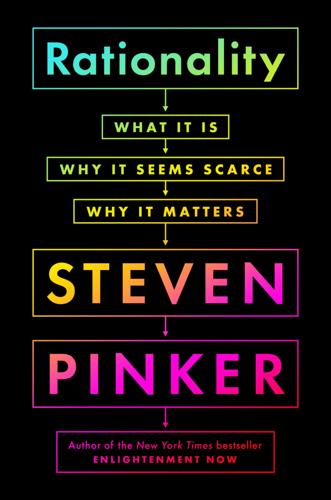
Rationality: What It Is, Why It Seems Scarce, Why It Matters
by
Steven Pinker
Published 14 Oct 2021
Game theory: A very short introduction. New York: Oxford University Press. Binmore, K. 2008. Do conventions need to be common knowledge? Topoi, 27, 17–27. https://doi-org.ezp-prod1.hul.harvard.edu/10.1007/s11245-008-9033-4. Blackwell, M. 2020. Black Lives Matter and the mechanics of conformity. Quillette, Sept. 17. https://quillette.com/2020/09/17/black-lives-matter-and-the-mechanics-of-conformity/. Block, W. 1976/2018. Defending the undefendable. Auburn, AL: Ludwig von Mises Institute. Bloom, P. 2003. Descartes’ baby: How the science of child development explains what makes us human. New York: Basic Books.
…
Respondents judged that it was likelier that Linda was a feminist bank teller than that she was a bank teller: once again, the probability of A and B was judged to be higher than the probability of A alone. The dated vignette, with its baby-boomer “Linda,” backhanded compliment “bright,” passé protests, and declining occupation, betrays its early-1980s vintage. But as any psychology instructor knows, the effect is easily replicable, and today, highly intelligent Amanda who marches for Black Lives Matter is still deemed likelier to be a feminist registered nurse than a registered nurse. The Linda problem engages our intuitions in a particularly compelling way. Unlike the selection task, where people make errors when the problem is abstract (“If P then Q”) and get it right when it is couched in certain real-life scenarios, here everyone agrees with the abstract law “prob(A and B) ≤ prob(A)” but are upended when it is made concrete.
…
Abelson, Robert, 299 abortion, 79, 100–101, 295, 311 academia academic freedom in, 41 ad hominem fallacy and, 91 argument from authority and, 90 confidence in, sinking, 313–14 critical race theory, 123 informal fallacies and intellectual life of, 92–93 left-wing monoculture, 297, 313–14 suppression of opinions in, 43, 313–14 viewpoint diversity, lack of, 313–14 See also education; universities accidental deaths, 120–22, 139–40, 199 Achilles, 38 Active Open-Mindedness, 310–11, 324 See also openness to evidence ad hominem fallacy, 19–20, 90–91, 92–93, 291 adversarial collaboration, 29 Aeneid, 302 affective fallacy, 92–93, 291 affirming the antecedent, 80 affirming the consequent, 83, 85, 139 Afghanistan, US invasion of, 122, 124 African Americans Black Lives Matter, 26, 124–25 as percentage of population, 120 police killings of, 123, 124–25, 141 See also racism; slavery AI. See artificial intelligence algorithm, as term, 346n34 Allais, Maurice, 188 Allais paradox, 188–90 all-or-none causation fallacy, 260, 269 alternative medicine, 258 analytic vs. synthetic propositions, 94 anarchism, 244 and, as logical connector, 75–76 See also conjunction animals, cruelty to, 334–35 anti-vax movement, 284, 287, 304, 304–5, 310, 311, 321 appeal to emotion, 92 a priori–a posteriori confusion.

The Bookshop: A History of the American Bookstore
by
Evan Friss
Published 5 Aug 2024
See Daniel Vaca, Evangelicals Incorporated: Books and the Business of Religion in America (Cambridge, MA: Harvard University Press, 2019), chap. 4. For more on recent radical bookstores generally, see Kimberley Kinder, The Radical Bookstore: Counterspace for Social Movements (Minneapolis: University of Minnesota Press, 2021). GO TO NOTE REFERENCE IN TEXT It sold “Black Lives Matter”: Left Bank Books (website), accessed December 8, 2023, https://www.left-bank.com/black-lives-matter-yard-sign. GO TO NOTE REFERENCE IN TEXT Like many of the newer: Janet Filips, “Portland’s Reed Bookstore Ends an Era of Radicalism,” Seattle Times, April 12, 1992. GO TO NOTE REFERENCE IN TEXT it’s more welcoming: “About Red Emma’s,” Red Emma’s (website), accessed November 19, 2022, https://redemmas.org/about/.
…
The Ranuzzis eventually fled for Montana, claiming they were being harassed. St. Louis’s Left Bank Books was founded in 1969 by a group of leftist Washington University students. They focused on anti–Vietnam War and countercultural material. Over time, the bookstore built up an assortment of titles on feminist, gay, lesbian, trans, and women’s issues. It sold “Black Lives Matter” yard signs, “Say Perhaps to Drugs” pins, and a Marx-inspired “Birthdays Are for the Bourgeoisie. Get Back to Work” card featuring a print of the big-bearded thinker. In 1975, the John Reed Book Store opened in Portland with Communist staples on offer. Like many of the newer radical shops, it was unsustainable as a business, lasting as long as it did (until 1992) in large part because its workers were volunteers, not paid employees.
…
The pandemic only added to indie bookstores’ underdog status and their reputation, in James Daunt’s words, as “bastions of liberal values.” The project was long in the making. Booksellers put out statements when Donald Trump was elected, advertised themselves as “safe spaces,” outwardly supported Black Lives Matter, and were among the first retail shops to shun plastic bags. Every bookstore is, in a way, political. Like publishers, booksellers must make difficult and often public decisions about what crosses the line. Debates about censorship and cancel culture swirled. In 2020, when Publishers Weekly asked two dozen booksellers whether they would carry a hypothetical Trump memoir, the co-owner of Solid State Books responded, “There is absolutely no way we would sell a book by Donald J.

There Is Nothing for You Here: Finding Opportunity in the Twenty-First Century
by
Fiona Hill
Published 4 Oct 2021
The Russian president declined the offer, but later appointed the factory foreman to be his official presidential representative to the Urals region. It was a spectacular piece of political populism. It was also strikingly reminiscent of President Trump’s efforts to solicit support from the far-right Proud Boys militia, who would violently confront Black Lives Matter protesters in the summer of 2020. After public outcry on that occasion, Trump called on the Proud Boys to “stand back and stand by” instead of asking them to cease and desist their activities. They would not stand by for long: on January 6, 2021, in the waning days of Trump’s presidency, the Proud Boys would be among the militia groups and other Trump supporters who stormed the U.S.
…
As in the case of all populists, Trump’s politics were framed around “us” against “them.” With the help of Fox News and other pro-Trump media outlets, enemies were fabricated in the broadest possible brushstrokes: a mishmash of Democrats, liberals, globalists, radical socialists, Communists, Antifa leftists, the Black Lives Matter movement, the “mainstream media,” the billionaire financier and philanthropist George Soros, various other bogeymen and -women, deep-state bureaucrats, and even congressional Republicans who were loyal to their party rather than to Trump personally. Often it was hard to keep up with the list.
…
Floyd’s death, his neck pressed beneath the knee of a police officer during a heavy-handed arrest, sparked nationwide protests against police brutality and highlighted the continued persecution of Black Americans decades after the civil rights movement. The United Kingdom was also swept up in the Black Lives Matter protests, as a younger generation of Brits contemplated the integral role the UK had played in the Atlantic slave trade and its own history of racism and heavy-handed policing. Again I was struck by how inadequate the government-level responses were to address this painful and complex issue, especially against the backdrop of the coronavirus, which hit Black and other minority communities hard in both countries.
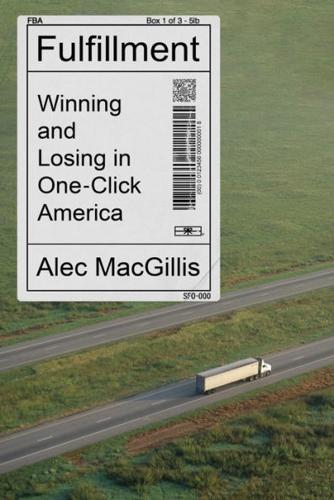
Fulfillment: Winning and Losing in One-Click America
by
Alec MacGillis
Published 16 Mar 2021
The protests stirred Katie’s activist spirit, but she had suffered too much disappointment at the hands of powerful opponents to get her hopes up. “It’s cool,” she said, “but it’s not the revolution.” In Washington, D.C., the huge protests around the city drew, among others, Amazon’s Jay Carney, the head of the public relations operation. He tweeted a selfie of himself near the White House, wearing sunglasses, a face mask, and a Black Lives Matter T-shirt. * * * In Baltimore, a twenty-six-year-old woman named Shayla Melton was trying to decide whether to go back to work at Amazon. She had been working as a picker at the Broening Highway warehouse, where the GM plant used to be, until she had her baby, her second child, just as the pandemic was arriving.
…
For your reference, the terms that appear in the print index are listed below. activism/protests: Amazon Day Expo; Amazon walkout; antitrust law investigations fueled by; Athena coalition; AWS and Dominion Power; Dayton, Ohio, Trump; for Floyd; for Gray; Housing for All coalition; Institute for Local Self-Reliance; Tax Amazon Town Hall; Washington, D.C., Black Lives Matter; workers against robots; see also big-business tax African Americans: Baltimore population of; migration to Seattle; police killings of; Seattle housing discrimination against; Seattle income inequality for; Sparrows Point discrimination fought by; Washington, D.C., gentrification devastating to; see also Carver Road community; Central District Africatown Albuquerque, New Mexico Allen, Mike Allen, Paul: Microsoft co-established in Seattle by; Microsoft co-founded by; South Lake Union campus and All States Amazombies Amazon: annual sales growth at; antitrust law investigations involving; career day; convenience of; coronavirus pandemic and necessity of; coronavirus pandemic benefiting; coronavirus pandemic worker precautionary measures; counterfeit goods sold on; delivery and transportation expansion; drug testing at; employee nondisclosure agreements; employment growth at; on failure; financial institutions compared to; gatekeeper fees collected by; hiring events and introduction for workers; injury report rates; last leg delivery handled by; lobbying spending by; market valuation of; minimum wage announcement; office of economic development; origins of; power and influence of; PR push; public sector division; railroad giants compared to; renewable energy investments of; retail job losses due to; RFPs; Ring doorbell cameras; STAR method for decision-making; start-up ideas for; streaming media service; tax avoidance strategies of; trust and respect for; unions blocked by; wage and working condition concerns at; warehouse expansion nationwide; war zone analogy; worker discontent; as world’s highest-valued company; see also specific locations; specific topics Amazon Associate Virtual Job Tryout Amazon Day Expo: Collins involved in; Gandara, T., protesting; goal of; Grubbs attending; introductions and parameters for; Lee involved in; Marin involved in; naming of; trade-off discussion at; Westin supporting Amazon HQ2 headquarters: arguments for selecting location of; Baltimore bid for; bidding war; bidding war winners; career day for interest in new; Crystal City location; finalists for; need for; public competition for location selection of; resistance to New York City; Rubenstein interest in; secrecy around bids for; victims of selection process for; Washington, D.C., benefiting from new; see also Arlington, Virginia Amazon Web Services (AWS): Columbus, Ohio, as interest of; Columbus, Ohio, suburbs establishment of; Columbus, Ohio, suburbs selected for; community nondisclosure agreements; creation of; in Northern Virginia; Northern Virginia communities protesting; Public Sector Summit; secrecy of; at Virginia Data Center Leadership Awards; Worldwide Public Sector antitrust law hearings/investigations: activism fueling; Athena coalition on; Bezos testifying at; Cicilline speaking at; Congress presiding over; Jayapal speaking at; Khan on; Mitchell on; ruling on; Sutton testifying at; on third-party seller online sale fees antitrust prosecution Apple: antitrust law investigations involving; coronavirus pandemic benefiting Argote, Israel Espana Arlington, Virginia: as Amazon HQ2 headquarters selection; Crystal City in; donations toward housing affordability in; housing prices rising in; National Landing outside; Washington, D.C., benefiting from new site in Armitage, James Art of the Deal, The (Trump) Athena coalition Autor, David Autry, Clint AWS, see Amazon Web Services Baker, James III Ballard, Brian: Amazon hiring; Florida governor campaign work by; Trump support from Baltimore, Maryland: African American population in; Amazon arrival in; Amazon delivery van death near; Amazon employee homicides in; Amazon HQ2 headquarter bid from; Brick + Board company in; brick industry in; Bryant of; coronavirus pandemic in; corruption of city government; demolitions in; discrimination battles improving; drug overdoses in; Gray protests in; heart-pine flooring from; homicide rate in; Humanim in; income decline in; Jackson on demolition in; JLL in; Johnson, D., post-demolition work in; Package Rescue business in; Pollock of; population decline in; post-demolition work in; rail transit line proposal in; road trip from; robotic pickers in; salvage market in; tornado hitting; Washington, D.C., bricks from; Washington, D.C., compared to; see also Bodani, William Kenneth, Jr.; Sparrows Point Baltimore Brick Company bankruptcy: Bethlehem Steel filing for; the Bon-Ton filing for Baron, Marty Barry, Bill Bent, Luther Bethlehem Steel: anti-steelworker union propaganda; bankruptcy filed by; Bodani, W.
…
K. on enjoying work at; Drayton working at; drug problems prevalent at; employment decline at; Grace as chief executive of; growth in early years of; horrors at; Howard on working at; imports of steel impacting; innovation deficiency as downfall of; multi-craft team at; negligence of management at; Pennsylvania Steel Company bought by; pollution problem of; pride for; racial discrimination fought at; reputation of wealth at; sale of; Schwab of; Second World War expanding; Star of Bethlehem ceremony remembering; steelworker union acknowledged by; Taylor searching for remnants of; Taylor working at; as world’s largest steel plant; Bezos, Jeff: antitrust law investigation testimony of; Blue Origin space-exploration company of; Buffett on; climate change pledge from; coronavirus pandemic and increased net worth of; as Economic Club honored guest; Economic Club speech by; on energy consumption; Gates compared to; Hanauer criticism of; idolization of; moral perspective lacking for; philanthropy of; on renewable energy; on sale tax assessment; SAT scores of employees as interest of; Schlossberg, E., email to; Seattle as interest of; Seattle move for; start-up ideas of; Washington, D.C., home bought by; Washington, D.C., home renovation by; The Washington Post bought by Biden, Joe big-business tax: Hanauer on; Herbold supporting; Mosqueda supporting; Mother’s Day compromise for; opposition to passing of; opposition to proposed; proposals for; protester standoff; public opinion shift on; Sawant supporting; Schutzler on repeal of; Tax Amazon Town Hall rallying around; vote in favor of; vote to repeal; Wilson on public opinion shifts around; Wilson on repeal of; Wilson supporting big-business threat bin Laden family Black Lives Matter protest Bloomberg, Michael Blue Origin space-exploration company Blum, Andrew Bodani, Francis Bodani, William Kenneth, Jr.: Amazon hiring; Amazon job quit by; asbestosis diagnosis for; Baltimore move for family of; Bethlehem Steel employment positions of; Bethlehem Steel hiring; Bethlehem Steel injuries of; Bethlehem Steel multi-craft team participation of; Bethlehem Steel retirement of; Bethlehem Steel work enjoyed by; birth of; discrimination toward; forklift driver responsibilities of; forklift training by; grandfather of; health conditions of; in Navy SEALs; relocation to Sparrows Point Amazon facility; reminiscence about Sparrows Point; of Retirees United Local 9477; at Star of Bethlehem ceremony; union literature passed out by; wages at Amazon; work breaks at Amazon; work shifts at Amazon Boeing, William Boeing Company the Bon-Ton: bankruptcy filed by; Charity Day; claw back incentives; e-commerce operation; employee and customer policies; expansion of; in golden era of department stores; Great Recession impacting; Grumbacher, M., managing; Grumbacher, Tim, managing; Grumbacher, Tom, managing; liquidation of; May Company competing with; origins of; perseverance of; public offering from; secondary public offering from The Bon-Ton Family Boetto, Tony Bowser, Muriel Brandt, Richard L.

Artificial Whiteness
by
Yarden Katz
Moreover, it makes criminalization, social reform, and incarceration the purview of technical experts. AI Now’s work on predictive policing exemplifies this turn. AI Now represents the more progressive wing of corporate-backed AI commentary, and it cultivates a critical image. In discussing policing, for instance, the institute has approvingly cited Black Lives Matter and the Marxist cultural theorist and activist Stuart Hall. And unlike many of its corporate sponsors and partners, AI Now doesn’t outright promise to eliminate all bias from computing systems.19 Through this progressive veneer, AI Now offers a critique of policing that nonetheless reaffirms and ultimately calls for the expansion of the carceral system.
…
Davis, Are Prisons Obsolete?, Open Media Series (New York: Seven Stories Press, 2003), 77. 64. Apart from their alliances with academia, various platform companies have appropriated imagery from social justice movements. Fred Turner describes how, when used by Facebook, “images of Dolores Huerta and Black Lives Matter marchers have been hollowed of the hard work of movement organizing. On Facebook’s walls they suggest that the company is so powerful that it can render political dissent into just another mode of self-expression. They make it harder to see the ways in which Facebook’s power continues to depend on the same kinds of contracts and secrecy that characterized the corporate giants of the industrial era.
…
See also rationalistic tradition anthropometry, 7, 160, 278n19, 279n26 AnyVision, 276n45 apartheid, 114 Apple, 68, 71, 74, 285n65 Armer, Paul, 244n37 army, 44, 133, 219, 251n104, 295n55, 299n77 Arpaio, Joe, 179 artificial intelligence (AI): alternatives to, 11, 14, 185–88, 203–10; autonomy of, 52–53, 58–59, 247n72; coining of term, 3, 22–23, 241nn8–9; dissenting views of, 33–34, 44–48, 193–94; expert industry around, 2–3, 9–10, 66–74; as a foil for neoliberalism, 70–78, 119–22, 166, 226–27; “hype” about, 33, 208, 238n17, 255n14; and models of the self, 5–7, 10, 27–32, 154, 157, 165–67; as a site of imperial struggle, 60–61; individual and institutional investment in, 7–11, 20, 79–81, 154, 167–72, 182, 229; militaristic frame of, 35–38, 45–47, 50–59, 245n44; nebulous and shifting character of, 2–3, 5–6, 10, 22–27, 33–38, 42, 45, 52–55, 63–70, 154–55, 164–67; springs and winters of, 4, 48; sponsorship of, 24–26, 59; rebranding of, 12, 65–70, 80–81; relation to psychology and biology, 5, 21; “technical” narratives about, 2–4, 66–68, 261n43; as a technology of whiteness, 8–11, 155, 172, 181–82 artificial life (ALife): and bio-inspired computing, 210, 296n60; and racial narratives, 159, 277n12–14; relation to AI, 159, 277n11 Artificial War, 212–13 ARPA, 24, 96, 249n85; and Behavioral Sciences Program, 98, 265n11 Association for the Advancement of Artificial Intelligence (AAAI), 5, 23, 37–38 Association for Computing Machinery (ACM), 23 Atlantic, The, 61, 104 automata studies, 241nn8–9 automation: and automated systems, 141, 169–70; of industrial production, 25–26, 34, 74–75, 78; of warfare, 43–44, 57–59 autopoiesis, 194–96: and neoliberalism, 201–2; and war, 213 Azoulay, Ariella Aïsha, 300n1 Azoulay, Roger, 15, 300n1 Baldwin, James, 93 Barbrook, Richard, 156 Baudrillard, Jean, 151 Baupost Group, 263n57 Beer, Stafford, 25, 193, 290n30 Belfer Center, 260n40 Bell Labs, 22 Bell, Trudy E., 246n58 behaviorism, 119, 121–22, 166, 267n46, 269n49, 269n51 Benjamin, Ruha, 285n67 Berkman Klein Center for Internet & Society, 66, 260n39, 261n42 bias. See algorithmic bias big data, 12, 67–71, 79–80, 254n3 Black Lives Matter, 138, 284n64 Black in AI, 173–74 Black radical tradition, 173, 178, 181 Black Skin, White Masks, 175, 180–81 Blackstone Group, 81–84, 86, 88 blood quantum, 162, 279n26 Blumenbach, Johann F., 160, 278n18 Boden, Margaret, 259n24 Boeing, 260n39 Bolsonaro, Jair, 82–83 Bostrom, Nick, 76 Brand, Stewart, 293n43 Brazil, 82–83, 86 Bridges, Ruby, 113, 115 Brooks, Fred P., 270n54 Brooks, Rodney, 44, 207–8, 295nn52–53, 296n60 Brown, Michael, 137 Buolamwini, Joy, 175–80, 284n61, 285n65, 285n67 Bush, George W., 58, 131, 209, 216 California Institute of Technology, 242n19 Cameron, Andy, 156 capitalism: and anticapitalism, 45; and capitalist visions of AI experts, 9–10, 35, 65, 74–78, 81–88.

This Is How They Tell Me the World Ends: The Cyberweapons Arms Race
by
Nicole Perlroth
Published 9 Feb 2021
A few months after I left Ukraine, it wasn’t the Russian attacks in Ukraine that stuck in Americans’ memory, but the country’s role in Trump’s looming impeachment. We seemed to have somehow forgotten that, in addition to Russia’s disinformation campaign in 2016—the dumping of Democratic emails, the Russians who posed as Texan secessionists and Black Lives Matter activists to sow discord—they had also probed our back-end election systems and voter registration data in all fifty states. They may have stopped short of hacking the final vote tallies, but everything they did up to that point, American officials concluded, was a trial run for some future attack on our elections.
…
The IRA used their fake personas to communicate with Trump campaign volunteers and grassroots groups who supported his cause. They bought pro-Trump and anti-Clinton Facebook ads and churned out race-baiting and xenophobic memes, aimed at suppressing minority voters’ turnout and steering them toward third-party candidates like Jill Stein. The Russians put up Black Lives Matter pages and Instagram accounts with names like Woke Blacks that tried to convince African Americans, a crucial Clinton demographic, to stay home on Election Day. “Hatred for Trump is misleading the people and forcing Blacks to vote Killary,” their message read. “We cannot resort to the lesser of two devils.
…
But with the 2020 elections fast approaching—and evidence piling up that the Kremlin was back to its old tricks—you had to wonder who in the White House would confront Putin this time. In the four intervening years, the Kremlin only grew more emboldened—albeit stealthier. In 2016 Russia’s influence operation stood out for its brazenness. Social media posts were written in broken English. Facebook ads were paid out in rubles, and self-proclaimed Texas secessionists and Black Lives Matter protesters logged into servers from Red Square. Now Russians were setting up offshore bank accounts, paying real Facebook users to rent their accounts, and obscuring their real locations using Tor, the anonymizing software. Inside IRA headquarters in Saint Petersburg, Russian trolls had far greater command of America’s politics.
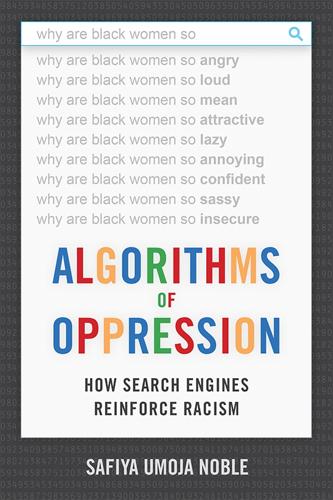
Algorithms of Oppression: How Search Engines Reinforce Racism
by
Safiya Umoja Noble
Published 8 Jan 2018
New, neoliberal conceptions of individual freedoms (especially in the realm of technology use) are oversupported in direct opposition to protections realized through large-scale organizing to ensure collective rights. This is evident in the past thirty years of active antilabor policies put forward by several administrations47 and in increasing hostility toward unions and twenty-first-century civil rights organizations such as Black Lives Matter. These proindividual, anticommunity ideologies have been central to the antidemocratic, anti-affirmative-action, antiwelfare, antichoice, and antirace discourses that place culpability for individual failure on moral failings of the individual, not policy decisions and social systems.48 Discussions of institutional discrimination and systemic marginalization of whole classes and sectors of society have been shunted from public discourse for remediation and have given rise to viable presidential candidates such as Donald Trump, someone with a history of misogynistic violence toward women and anti-immigrant schemes.
…
See advertising companies; algorithms; search engines; Twitter Bitch, 4, 181 Black, Diane, 135 Black feminism, 29–33, 92–93; antipornography rhetoric and scholarship, 100 black feminist technology studies (BFTS), 171–72 Black Girls (rock band), 69 Black Girls Code, 26, 64–65 ‘black girls’ search results, 17–21, 31, 49, 64, 66–68, 103, 160, 192n5; Chicago Urban League, 191n73; first search results, 3–4, 5; improvements, 10, 181–82; pornification, 11, 86 Black Lives Matter, 165 Black Looks (hooks), 92–94 Black Scholar, 11 Blanchette, Jean-François, 125, 128 Brandeis University report, 167 Brin, Sergey, 37, 38, 40–41, 44, 47 Brock, André, 17–21, 91, 151 Brown, Ronald, 104 Cabos-Owen, Julie, 119 Chicago Tribune, 134 Chicago Urban League, 191n73 Chin, Denny, 157 classification schemes, 150; Eurocentrism, 141; misrepresentations of women and people of color, 5, 138; racial classification, 136–37, 149.
…
See also Google telecommunication companies, traffic-routing discrimination, 156 Tettegah, Sharon, 168 Thompson, Myra, 110 Toffler, Alvin, 198n25 transparency, 50, 104; data removal in Google, 130–31; the imagine engine, 180–81; requests to be forgotten, 130–31 Treitler, Vilna Bashi, 79–80 Trump, Donald, 166, 183 Twitter, 80, 110; bias in automated tweets, 29; #Black Lives Matter, 11; #DropTheWord, 135; #NoHumanBeingIsIllegal, 135; “professional/unprofessional hairstyles for work,” 83; racist trolling, 163; “three black teenagers” or “three white teenagers” post, 80 United Nations, 15 universal humanity, 61–62 Urban League, 55 USA Today, 65–66, 80, 119, 134 U.S.
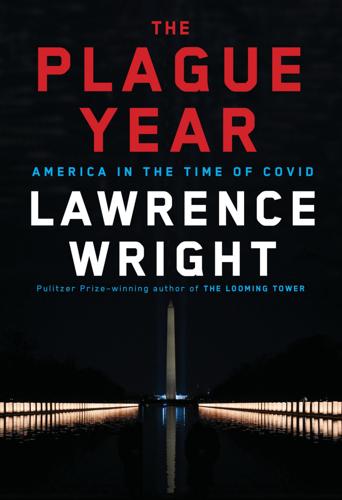
The Plague Year: America in the Time of Covid
by
Lawrence Wright
Published 7 Jun 2021
House of Representatives from Minnesota; when he was elected attorney general, he became the first Black person elected to statewide office in Minnesota, and the first Muslim elected to statewide office anywhere in America. Derek Chauvin became the first white officer in Minnesota to be charged with the death of a Black civilian. * * * — Dr. Ebony Jade Hilton joined a Black Lives Matter protest in Charlottesville on June 7. Hundreds of people marched from the Freedom of Speech Wall on the Downtown Mall to the Rotunda at the University of Virginia, carrying homemade placards saying “Let My People Breathe.” Three years before, Charlottesville had been the site of a “Unite the Right” rally.
…
If you think about that number, that’s what leads Black people to say it’s worth me dying and going out to this protest and saying enough is enough. Police brutality is almost like a pandemic, a generational pandemic. It’s a feeling—I’m going to die anyway, so I might as well risk this virus that I can’t see, to speak about the virus of systemic racism that I can.” * * * — In 2016, during a Black Lives Matter march, a sniper killed five Dallas police officers on downtown streets. Seven other officers and two civilians were injured by the shooter. He intended to kill as many white officers as he could in retaliation for police killings of Black men. The killer was a supporter of the New Black Panther Party, which has encouraged violence against whites and especially Jews.
…
They also considered kidnapping Virginia governor Ralph Northam, who had been similarly targeted by Trump, who also had tweeted “LIBERATE VIRGINIA!” Adam Fox and most of his followers were answering the president’s summons. On the other hand, one of the gang was an anarchist who called the president a tyrant, and another attended a Black Lives Matter protest because he was upset about police killings. What united them was a combination of weakness and grand delusions. The plotters squeezed into Fox’s basement to sort out their plan. Fox made them surrender their cell phones to prevent any monitoring, but two FBI undercover operatives had already penetrated the group, and there were a couple of informers as well, so their schemes were secretly recorded.
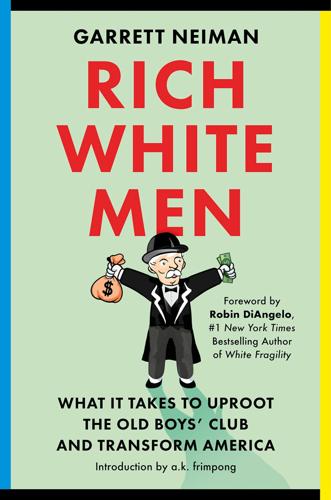
Rich White Men: What It Takes to Uproot the Old Boys' Club and Transform America
by
Garrett Neiman
Published 19 Jun 2023
Here was a rich white man who, I imagine, felt he was doing something extraordinary, even radical: he was trying to build a new, more egalitarian country. Yet two and a half centuries later, wives like mine are still pleading with rich white men like me to see their lives and perspectives as equally valuable. America has made real progress, but in important ways, little has changed. As much as I like to think of myself as an advocate for Black Lives Matter and other social justice movements, I’m embarrassed to say that, in some ways, I am still struggling to value even my own spouse’s life equally. Enough is enough. Change can be scary, but it’s time for us men to chart a new path. CHAPTER 5 INTERSECTIONAL ADVANTAGE We’re throwing down a fat party THIS SUNDAY.
…
“We talk about how many women were raped last year,” Katz emphasizes, “not how many men raped women.”18 Since rich white men understand that there can be backlash if we engage in victim blaming personally, many instead amplify fringe voices within a marginalized group that aligns with our worldview. That includes people like Candace Owens, a conservative Black activist whose platform has been amplified by rich white men who deny that anti-Black racism exists. These rich white men relish Owens’s claims that Black culture is “broken,” Black people are “pretending to be oppressed,” and Black Lives Matter activists are “domestic terrorists.”19 Owens is a spokesperson for Turning Point USA, a conservative nonprofit organization led by Charlie Kirk, a wealthy white man who has called George Floyd a “scumbag” and characterized Democratic immigration policies as “diminishing and decreasing white demographics in America.”20 Turning Point’s board of directors is composed exclusively of rich white men.
…
Taking that seriously, as I understand it, requires that the Advantaged 1 Percent put our wealth and power behind the leadership of the Marginalized 1 Percent and those working in close solidarity with them. That includes efforts like the Movement for Black Lives—which from the beginning has had transgender Black women in its leadership and been reminding the public that trans Black lives matter—and the Missing and Murdered Indigenous Women, Girls, and Two Spirit movement. If even a small percentage of rich white men supported institutions, campaigns, and movements led by such people—with our time, skills, financial resources, and full collaboration as unpaternalistic partners—I’m confident that progress toward equity in the United States would greatly accelerate.
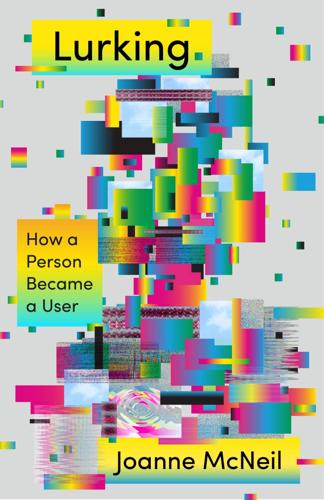
Lurking: How a Person Became a User
by
Joanne McNeil
Published 25 Feb 2020
Three black community organizers, Alicia Garza, Opal Tometi, and Patrisse Cullors, founded the movement as an online campaign in response to the injustice of George Zimmerman’s acquittal for the murder of Trayvon Martin, and it germinated into demonstrations against other instances of police brutality, such as the killings of Eric Garner and Mike Brown in 2014. Black Lives Matter activists coordinated online and offline protests; networks of people connected through the hashtag could also unite in activism on the street. The murder of Mike Brown was particularly galvanizing, because the Black Lives Matter movement would not let anyone forget. Moreover, legacy media could no longer ignore police brutality in America, as social media, newly dominant in the lives of everyday Americans, provided constant reminders.
…
These users had to go through intense check-ins with Facebook customer service, sending in passport photos and other official documents, an absurd overreach from something that was not a government body, but a private internet company run by a dude in a hoodie. Notice which communities were singled out when the platform cracked down on “inauthenticity.” Facebook had no similar hard line against the widespread practice of law enforcement creating actual fake profiles as a tactic to infiltrate activist communities like Black Lives Matter. The real names policy was a tool for harassment, but this harassment was structural, too. White supremacist groups flagged Native Americans and others for deletion as a form of abuse, but the platform’s indifference bore out the consequences of this harassment. “Facebook workers—particularly those who live outside of the United States and Canada—may not be familiar with Native naming conventions.

Listen, Liberal: Or, What Ever Happened to the Party of the People?
by
Thomas Frank
Published 15 Mar 2016
See also investment banks; Wall Street bailout of Bill Clinton and blue states and deregulation of Hillary Clinton and McCain and microlending and mortgage crisis and Obama and subprime lending and too big to jail Barkan, Al Barofsky, Neil Bateman, Milford Baucus, Max Begala, Paul Bell, Daniel Benton, Thomas Hart Bernanke, Ben Bernstein, Carl Beta Boston Bezos, Jeff Biden, Joe Biewald, Lukas big data Bill & Melinda Gates Foundation bipartisan consensus Black Lives Matter Blueprint blue states Blumenthal, Sidney Bono Born, Brooksley Bosnia Boston Globe Boston University Bowles, Erskine Bowles-Simpson Commission Breuer, Lanny Brint, Steven Brock, David Brooks, Clem Brooks, David Brown, John Bruni, Frank Bryan, William Jennings Bukowski, Charles Bull Run (Gross) Bush, George H.
…
Bush, Jeb Callahan, David Canada Caribbean Free Trade Initiative (CAFTA) Carney, Jay Carter, Ashton Carter, Jimmy Caterpillar CEO compensation Changing Sources of Power (Dutton) charter schools Chicago Christensen, Clayton Citibank Citicorp Foundation Civil Rights Act (1964) Civil Rights Division, Department of Justice Clinton, Bill appointees and big government and change and consensus and counter-scheduling and crime bill and deficit and deregulation and DLC and economy and education and election of 1992 and election of 1996 and GOP attacks on health care and impeachment of Martha’s Vineyard and meritocracy and microlending and NAFTA and Social Security and tax cuts and Wall Street and welfare reform and Clinton, Chelsea Clinton, Hillary Arkansas career of Bill Clinton presidency and Black Lives Matter and Clinton Foundation and health care and inequality and Iraq War and mass incarceration and meritocracy and microlending and presidential campaign of 2007–8 and presidential campaign of 2015–16 and as Secretary of State Senate career of Wall Street and welfare reform and women’s rights and Clinton Foundation Clinton Presidential Library Cluetrain Manifesto, The (Locke) Coca-Cola cocaine-crack disparity colleges and universities Commerce Department Commodities Futures Trading Commission Commodity Futures Modernization Act (2000) complexity Consumer Financial Protection Bureau (CFPB) Cool Cities Initiative COPE Council of Economic Advisers counter-scheduling Cowie, Jefferson Craig, Gregory cramdown creative class credit-default swaps crime.
…
* According to a 2014 study of the age of mass incarceration, big increases in sentence length have “no material deterrent effect” on crime and do not reduce the crime rate. See The Growth of Incarceration in the United States: Exploring Causes and Consequences, a study by the National Research Council of the National Academies, 2014, p 140. Additionally, the violent-crime rate peaked in 1991 and was already on its way down by 1994. * A Black Lives Matter activist, confronting Hillary Clinton about her husband’s crime policies in August of 2015, used the unfortunate words “unintended consequences” to describe mass incarceration. In fact, it was widely known at the time that the consequence of the crack/cocaine sentencing disparity was the mass incarceration of black drug users.

How Democracies Die
by
Steven Levitsky
and
Daniel Ziblatt
Published 16 Jan 2018
This resistance could lead to escalating confrontation and even violent conflict, which, in turn, could bring heightened police repression and private vigilantism—in the name of “law and order.” For a sense of how such a crackdown might be framed, watch recent NRA recruitment videos or listen to how Republican politicians talk about Black Lives Matter. Such a nightmare scenario isn’t likely, but it also isn’t inconceivable. It is difficult to find examples of societies in which shrinking ethnic majorities gave up their dominant status without a fight. In Lebanon, the demographic decline of dominant Christian groups contributed to a fifteen-year civil war.
…
In addition, whereas a narrow (urban, secular, progressive) anti-Trump coalition would reinforce the current axes of partisan division, a broader coalition would crosscut these axes and maybe even help dampen them. A political movement that brings together—even if temporarily—Bernie Sanders supporters and businesspeople, evangelicals and secular feminists, and small-town Republicans and urban Black Lives Matter supporters, will open channels of communication across the vast chasm that has emerged between our country’s two main partisan camps. And it might help foster more crosscutting allegiances in a society that has too few of them. Where a society’s political divisions are crosscutting, we line up on different sides of issues with different people at different times.
…
Both Bernie Sanders and some moderates argued passionately that Democrats must win back the elusive blue-collar voters who abandoned them in the Rust Belt, Appalachia, and elsewhere. To do this, many opinion-makers argued, the Democrats needed to back away from their embrace of immigrants and so-called identity politics—a vaguely defined term that often encompasses the promotion of ethnic diversity and, more recently, anti-police-violence initiatives, such as Black Lives Matter. In a New York Times op-ed, Mark Penn and Andrew Stein urged Democrats to abandon “identity politics” and moderate their stance on immigration to win back white working-class votes. Though rarely voiced, the core message is this: Democrats must reduce the influence of ethnic minorities to win back the white working class.

Infinite Detail
by
Tim Maughan
Published 1 Apr 2019
“It’ll be the protest.” “What protest?” Rush turns to look at him, slightly incredulous. “You’ve not heard? It’s all over the timelines.” “Ah, I never check them.” He smiles. “Got my algos to do that.” Rush shakes his head, lets out a reluctant chuckle, then instantly feels guilty. “It’s a Black Lives Matter march. They’re protesting the shooting of a seventy-eight-year-old woman in Queens.” “Jesus. What’d she do?” “Nothing.” Rush grits his teeth. “That’s the whole fucking point. She didn’t do anything. Cops got a tip-off from their predictive software that there was a mugging in one of the housing projects in Flushing.
…
I’m so pleased to see you. I was hoping I was going to bump into you, man. I owe you big.” It is clear that Brad is fucking hyped about something. Hyped and loud. “You changed my life. Thank you!” Brad is aware that the other customers in the line are backing away from them. “I—” “The protests, man! Prescience! Black Lives Matter!” “You—you went to the protests?” “Ah shit, no, no. I didn’t go. Can’t do crowds. But after the party I went home. Stuck on the news, checked my feeds. Shit was crazy. And I started looking into Prescience, the company?” “Okay…” “Man.” Brad pauses, takes a breath, tries to calm himself but fails.
…
Beyond that there’s an almost infinite list of friends and people who helped me, influenced me, paid me, bought me lunch, or encouraged me along the way—of which this is (in no particular order) just a tiny selection: Simon Ings, Liam Young, Kate Davies, Lydia Nicholas, Sumit Paul-Choudhury, Brian Merchant, Brendan Byrne, Black Lives Matter, Ingrid Burrington, Frank Swain, Justin Pickard, Craig Willingham, Mike Wolf, Cory Doctorow, Jack Womack, Alan Tabrett, Bobi Richardson, Forsaken, Superflux, Jonathan Wright, Urmilla Deshpande, the crew of the Maersk Seletar (July 2014), Veronica Goldstein, Daniel Vazquez, everyone at FSG. And the people of Brooklyn and Bristol.
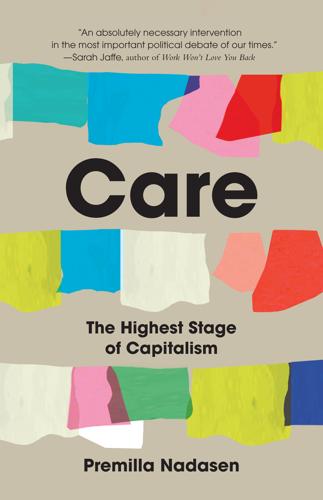
Care: The Highest Stage of Capitalism
by
Premilla Nadasen
Published 10 Oct 2023
Reese and Dara Cooper, “Making Spaces Something Like Freedom: Black Feminist Praxis in the Re/Imagining of Just Food System,” ACME: International Journal for Critical Geographies 20, no. 4 (2021): 456. 34. Barbara Ransby, Making All Black Lives Matter: Reimagining Freedom in the Twenty-First Century (Oakland: University of California Press, 2018), 3. 35. Deva Woodly et. al, “The Politics of Care,” Contemporary Political Theory 20, no. 4 (2021): 890–925; Deva R. Woodly, Reckoning: Black Lives Matter and the Democratic Necessity of Social Movements (Cambridge: Oxford University Press, 2021). 36. Hil Malatino, Trans Care (Minneapolis: University of Minnesota Press), 25. 37.
…
Caffentzis and Federici, “Commons against and beyond Capitalism,” 101. 41. Christopher Paul Harris, “(Caring For) The World That Must be Undone,” in The Politics of Care, ed. Deva Woodly, et al., 905. 42. Davis, et. al, Abolition. Feminism. Now., 129. 43. Spade, Mutual Aid. 44. Barbara Ransby, Making All Black Lives Matter, see chapter 8. 45. Nadine Naber, “‘The U.S. and Israel Make the Connections for Us’: Anti-Imperialism and Black-Palestinian Solidarity,” Critical Ethnic Studies 3, no. 2 (2017): 17. 46. Miriam Ticktin, “Care and the Commons,” quoted in Deva Woodly, et. al., The Politics of Care, 918. See also Malatino, Trans Care. 47.

Radical Technologies: The Design of Everyday Life
by
Adam Greenfield
Published 29 May 2017
This, for example, is how Buterin conceptualizes human sociation: “In general, a human organization can be defined as combination of two things: a set of property, and a protocol for a set of individuals, which may or may not be divided into certain classes with different conditions for entering or leaving the set, to interact with each other including rules for under what circumstances the individuals may use certain parts of the property.” Here is where the danger of trying to reconstruct the furniture of the world from first principles becomes clearest. Because as it happens, that’s not at all how a great many human organizations are defined. Consider contemporary movements like 15M, Occupy, or Black Lives Matter, each of which has surely been able to make some increment of change occur in the world without property or a formal membership register; consider all of the many groups, as various as ACT UP and Alcoholics Anonymous, that have historically been able to operate effectively without recourse to these things.
…
The geographer Ben Anderson makes this uncomfortably plain in his account of the way these systems work: “Certain lives may have to be abandoned, damaged or destroyed in order to protect, save or care for life” that is considered to be more valuable.43 This is an explosive thing to admit, especially at a time when the Black Lives Matter movement is bringing sustained attention to bear on issues of structural injustice, reflexive overpolicing of communities of color, state violence, and impunity for state actors implicated in that violence. We can be sure that in no society will the terms of this bargain ever be spoken aloud by the parties proposing it, and certainly not in so many words.
…
We’re history’s actors … and you, all of you, will be left to just study what we do”; Ron Suskind, “Faith, Certainty and the Presidency of George W. Bush,” New York Times, October 17, 2004. 73.Alex Tabarrok, “The Rise of Opaque Intelligence,” Marginal Revolution, February 20, 2015. 74.Travis Mannon, “Facebook Outreach Tool Ignores Black Lives Matter,” Intercept, June 9, 2016. 75.This is easier to do than it is to explain. See rednuht.org/genetic_cars_2/. 76.August C. Bourré, Comment, Speedbird blog, May 28, 2014, speedbird.wordpress.com/2014/05/28/weighing-the-pros-and-cons-of-driverless-cars/#comment-23389. 77.David Z. Morris, “Trains and Self-Driving Cars, Headed for a (Political) Collision,” Fortune, November 2, 2014. 9Artificial intelligence 1.Jeff Hawkins, keynote speech, “Why Can’t a Computer Be More Like a Brain?
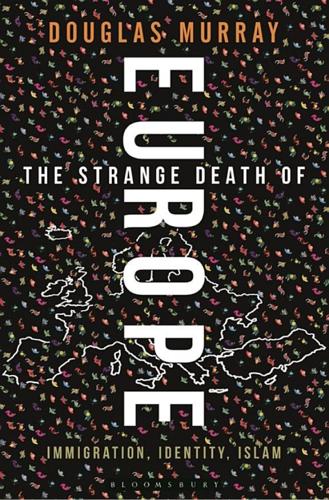
The Strange Death of Europe: Immigration, Identity, Islam
by
Douglas Murray
Published 3 May 2017
For instance, in Britain it might have been thought that since the 1980s at least, racial divisions have significantly diminished. Yet thanks to the internationalising of societies, nobody can predict the consequences of events happening anywhere in the world and their effect on domestic politics. For example, the Black Lives Matter movement that started in the United States in 2012, as a result of a number of killings by police of unarmed black men, eventually spread to Britain and other European countries. Whatever the rights and wrongs of the BLM movement in America, almost none of the circumstances for such a movement exist in Britain.
…
Houellebecq) here, here Australia here, here Austria here, here, here, here Aznar, José María here baby name statistics here Bacho, Aras here Baksh, Abdul Qadeer here Ban Ki-moon here banlieues riots here, here Bardot, Brigitte here Bascilica Cathedral, Saint-Denis here, here Bataclan theatre, Paris here Battle of Tours (AD 732) here Bawer, Bruce here BBC (British Broadcasting Corporation) here, here, here, here, here, here Belgium here, here, here, here, here, here, here Belloc, Hilaire here Benedict XVI, Pope here, here benefits, state here, here, here, here, here see also welfare states, European Bergh, Lise here Bible here bin Laden, Osama here bin Zayad, Tariq here birth rates here, here, here, here, here, here, here, here, here Black Lives Matter here Blair, Tony here, here, here blasphemy, Islamic here, here, here, here, here Bloomberg here boats, abandoned here, here Böckenforde, Ernst-Wölfgang here Bolkestein, Frits here border agreements, European here, here, here Bosnians here Boufarkouch, Mohamed here Boumedienne, Houari here Bouyeri, Mohammed here, here Bradford, West Yorkshire here, here, here Brecht, Bertolt here Britain 20th century discrimination here, here, here 20th century immigration here, here acceptable levels of ‘diversity’ here, here action against illegal immigrants here, here baby name statistics here birth rates here, here Black Lives Matter here Bradford here, here, here Calais migrant camp here colonisation of India here cost of immigration (1995-2011) here demographic predictions here English Defence League (EDL) here female genital mutilation here historically static population here, here immigration under New Labour here liberal rights here London car bombs (2007) here London Transport terror attacks (2005) here loss of Christian faith here Luton here, here, here as ‘mongrel nation’ here, here murder of Lee Rigby here, here national identity here, here, here net migration figures (post-2011) here opinion polls here, here, here, here, here, here, here, here, here parallel communities here, here population of London here, here, here, here protests at Danish Embassy here ‘punished’ for history here British Future think tank here British National Party (BNP) here, here British Nationality Act (1948) here British Union of Fascists here Bruckner, Pascal here Bulgaria here Burke, Edmund here burkinis here ‘burnout,’ German here Calais migrant camp here Cameron, David here, here, here, here, here Camp of the Saints (J.
…
Houellebecq) here, here Australia here, here Austria here, here, here, here Aznar, José María here baby name statistics here Bacho, Aras here Baksh, Abdul Qadeer here Ban Ki-moon here banlieues riots here, here Bardot, Brigitte here Bascilica Cathedral, Saint-Denis here, here Bataclan theatre, Paris here Battle of Tours (AD 732) here Bawer, Bruce here BBC (British Broadcasting Corporation) here, here, here, here, here, here Belgium here, here, here, here, here, here, here Belloc, Hilaire here Benedict XVI, Pope here, here benefits, state here, here, here, here, here see also welfare states, European Bergh, Lise here Bible here bin Laden, Osama here bin Zayad, Tariq here birth rates here, here, here, here, here, here, here, here, here Black Lives Matter here Blair, Tony here, here, here blasphemy, Islamic here, here, here, here, here Bloomberg here boats, abandoned here, here Böckenforde, Ernst-Wölfgang here Bolkestein, Frits here border agreements, European here, here, here Bosnians here Boufarkouch, Mohamed here Boumedienne, Houari here Bouyeri, Mohammed here, here Bradford, West Yorkshire here, here, here Brecht, Bertolt here Britain 20th century discrimination here, here, here 20th century immigration here, here acceptable levels of ‘diversity’ here, here action against illegal immigrants here, here baby name statistics here birth rates here, here Black Lives Matter here Bradford here, here, here Calais migrant camp here colonisation of India here cost of immigration (1995-2011) here demographic predictions here English Defence League (EDL) here female genital mutilation here historically static population here, here immigration under New Labour here liberal rights here London car bombs (2007) here London Transport terror attacks (2005) here loss of Christian faith here Luton here, here, here as ‘mongrel nation’ here, here murder of Lee Rigby here, here national identity here, here, here net migration figures (post-2011) here opinion polls here, here, here, here, here, here, here, here, here parallel communities here, here population of London here, here, here, here protests at Danish Embassy here ‘punished’ for history here British Future think tank here British National Party (BNP) here, here British Nationality Act (1948) here British Union of Fascists here Bruckner, Pascal here Bulgaria here Burke, Edmund here burkinis here ‘burnout,’ German here Calais migrant camp here Cameron, David here, here, here, here, here Camp of the Saints (J.

The Survival of the City: Human Flourishing in an Age of Isolation
by
Edward Glaeser
and
David Cutler
Published 14 Sep 2021
In a place with abundant demand, more space requires only the elimination of the land-use regulations that prevent the construction of taller, denser buildings. But there are sources of urban strife other than constraints on urban space. Many of these are battles between insiders and outsiders. In chapter 9 we turn to two conflicts that do not have the same simple legislative solution as the gentrification wars: policing and schools. The Black Lives Matter protests in the summer of 2020 were motivated by police brutality, but this requires executive reform, not a simple legal fix like defunding the police. We need police protection, but we also need respect for all. The solution lies in a robust reform program that embraces two policy goals: safety and accountability for civil rights.
…
As of December: Taken from the YouTube website, December 1, 2020. “little to end the war”: “The Flu in Boston,” PBS. “in the eight”: Valentine, Valentine, and Valentine, “Relationship of George Floyd Protests to Increases in COVID-19 Cases Using Event Study Methodology.” “no evidence that urban”: Dave et al., “Black Lives Matter Protests and Risk Avoidance: The Case of Civil Unrest During a Pandemic.” Mistrust of the police: Murphy, “Police Forcibly Eject Man without Face Mask from SEPTA Bus.” friends Raj Chetty: Chetty et al., “Where Is the Land of Opportunity?” Children who grow: Chetty et al., “The Opportunity Atlas: Mapping the Childhood Roots of Social Mobility.”
…
“Maecenas and the Poets” Phoenix 10, no. 4 (Winter 1956): 151–62. https://doi.org/10.2307/1086017. Daschle, Tom, Scott S. Greenberger, and Jeanne M. Lambrew. Critical: What We Can Do about the Health-Care Crisis. New York: St. Martins Griffin, 2009. Dave, Dhaval M., Andrew I. Friedson, Kyutaro Matsuzawa, Joseph J. Sabia, and Samuel Safford. “Black Lives Matter Protests and Risk Avoidance: The Case of Civil Unrest During a Pandemic.” NBER Working Paper Series 27408, National Bureau of Economic Research, Cambridge, MA, June 2020. Revised January 2021. https://doi.org/10.3386/w27408. Davenport, Romola J. “Urbanization and Mortality in Britain, c. 1800–50.”
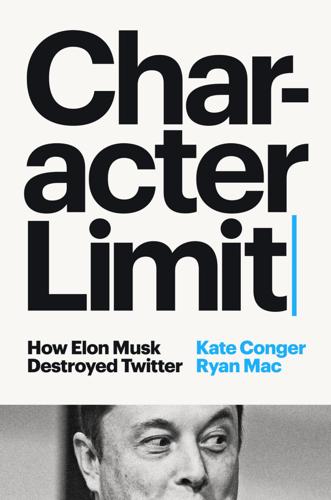
Character Limit: How Elon Musk Destroyed Twitter
by
Kate Conger
and
Ryan Mac
Published 17 Sep 2024
Louis Cardinals cap, and handed out blooming red roses to demonstrators as they marched down Florissant Road, a thoroughfare within walking distance of where Brown had been shot. He chafed at the unfairness of the police and the media. “Heartbreaking: witnessed the St. Louis County police run up to a woman, throw her to the ground, & arrest her. For standing still,” Dorsey tweeted the night of August 19. Ferguson became a foundation for the larger Black Lives Matter movement that grew in the following years. But it was also pivotal for Twitter, and for Dorsey himself. His live tweets of the protests spotlighted the demonstrators and emerging citizen journalists who were also tweeting from the ground, and news outlets flocked to write about the white billionaire tech founder who had come back to his home state to engage with issues of Black racial justice.
…
Issues with toxic content and misinformation continued. The company had never truly known how to harness its influence over politics nor the ways its platform could be manipulated. Russian intelligence agents set up sock puppet accounts that tweeted divisively about hot-button political issues, including Black Lives Matter, during the 2016 U.S. presidential election. The platform had also been essential to Donald Trump’s political career—he leveraged his bombastic Twitter personality to secure constant media attention and outrage, rising from reality TV star to Republican nominee to president. “Such a beautiful and important evening!”
…
The shirts had been created after the Ferguson protests by Blackbirds, a Black employee resource group, and had been popularized by Dorsey, who proudly wore one at public events to bring attention to the disproportionate amount of police violence faced by African Americans. Musk cut off funding for employee resource groups like Blackbirds, while also making other symbolic changes. He ordered the teardown of a Black Lives Matter mural, which had been put in the San Francisco office following the George Floyd protests. Musk’s team put up their own decorations. Near the tenth-floor conference room that he often inhabited while in the office, they put up a Galerie de Meme, or meme gallery, framing printouts of some of the billionaire’s favorite juvenile internet jokes.

The Hype Machine: How Social Media Disrupts Our Elections, Our Economy, and Our Health--And How We Must Adapt
by
Sinan Aral
Published 14 Sep 2020
For example, two days before the election, supporters of the Black Lives Matter movement were drawn to voter suppression memes that encouraged them not to vote. The account @woke_blacks posted a meme to its Instagram account that read, “The excuse that a lost Black vote for Hillary is a Trump win is bs. Should you decide to sit-out the election, well done for the boycott,” while @afrokingdom_ posted that “Black people are smart enough to understand that Hillary doesn’t deserve our votes! DON’T VOTE!” New Knowledge estimated that 96 percent of the Instagram content linked to the Internet Research Agency focused on Black Lives Matter and police brutality, spreading “overt suppression narratives.”
…
They amassed a following, coordinated with other accounts, rooted themselves in real online communities, and gained the trust of their followers. Then they created fake news intended to suppress voting and to change our vote choices, in large part toward Republican candidate Donald Trump and away from Democratic candidate Hillary Clinton. The fake news included memes about Black Lives Matter, the mistreatment of American veterans, the Second Amendment and gun control, the supposed rise of sharia law in the United States, and well-known falsehoods like the accusation that Hillary Clinton was running a child sex ring out of the basement of a pizza shop in Washington, D.C. (known as “PizzaGate”).
…
It analyzed the performance of these activities by tracking the size of the audiences they reached, the engagement they produced (e.g., likes, comments, shares, reposts), their virality, and their correlation with marketing activities, like the channels they used (e.g., Facebook versus Twitter), the communities they engaged (e.g., Black Lives Matter), the accounts they promoted (e.g., Heart of Texas), and their content specifications (e.g., the ratio of text to images in persuasive messages). In my research, I study how these kinds of influence campaigns change behaviors and how these behaviors spread through society with the help of social media.
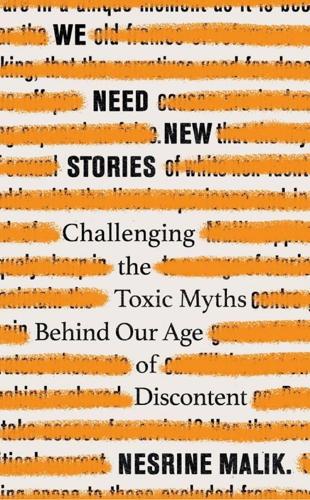
We Need New Stories: Challenging the Toxic Myths Behind Our Age of Discontent
by
Nesrine Malik
Published 4 Sep 2019
He believes that ‘feminism is a cancer’ and that ‘rape culture is a myth’. In 2016, he was permanently banned from Twitter for conducting a coordinated abuse campaign against US actor Leslie Jones. ‘With the cowardly suspension of my account,’ Milo stated, ‘Twitter has confirmed itself as a safe space for Muslim terrorists and Black Lives Matter extremists, but a no-go zone for conservatives.’ In 2017, Milo was offered $250,000 to write a book for the publisher Simon & Schuster. When faced with public outcry, the publisher defended its decision by releasing a statement in which it described Milo as simply someone with ‘controversial’ opinions, who will take his place among their stable of other authors, many of whom are also ‘controversial’, who appeal to ‘many audiences of readers’.
…
The entire existence of a functioning society is predicated on the business of drawing lines and distinctions between things where there are only shades of difference, often in extremely complicated and emotive areas. But somehow, according to the freedom of speech crisis logic, our ability to do so will collapse when trying to draw a line between the KKK and Black Lives Matter. The slippery slope is also often presented as a ‘what if’ hypothetical, as opposed to pointing out something that has already happened (which would be helpful in validating the premise). If so many freedom of speech transgressions are already being made (and according to some, this has been happening for decades), then surely a very clear slippery slope example should be evident?
…
He adds, ‘White Americans are encouraged to invest in whiteness to remain true to an identity that provides them with resources, power and opportunity.’ A white identity is a trust fund, and its currency is grievance that is stolen from others. The tool – universalism If there was a pithy way to summarise the damaging identity politics myth, it would be with the anti-Black Lives Matter slogan, ‘All Lives Matter’. Like the heavily memed ‘economic anxiety’ trope, ‘All Lives Matter’ has become facetious shorthand, an eye-roll, calling out logic that swerves the issue by using whataboutery. This is the tool of universalism. It sidesteps specific concerns by dismissing them as special treatment tantrums, thus avoiding engaging with, or invalidating them.
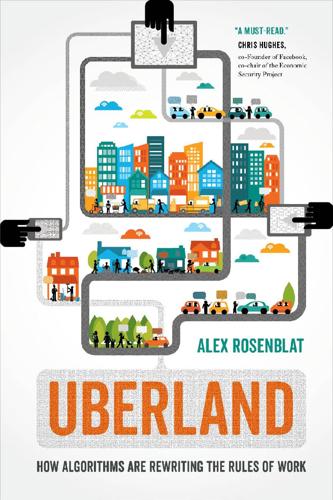
Uberland: How Algorithms Are Rewriting the Rules of Work
by
Alex Rosenblat
Published 22 Oct 2018
The City of Baltimore, the State of Illinois, and the Pennsylvania Human Rights Commission, among other, bigger victims of foreclosures, sued the notorious lending institutions whose high-risk lending fueled the Great Recession—institutions like Wells Fargo—and settled for hundreds of millions.13 Predatory lending practices targeted racial minorities during the subprime boom, highlighting the role of finance in social injustice. Emergent social movements that advocate for social equity, like Occupy Wall Street, organized activists with a common desire to re-center society around a moral economy. While Occupy Wall Street activists formed a tent city in Zuccotti Park on Wall Street, members of Black Lives Matter were staging protests across the country to advocate a political agenda that could address the root causes of inequality.14 Soon, more voices joined the chorus, this time from the top. Facebook cofounder and philanthropist Chris Hughes dedicated his intellectual thought leadership to promoting a universal basic income,15 and Mark Zuckerberg, his former roommate, mentioned it in the commencement speech he gave at Harvard.16 This quasi-moral solution to income inequality—and to expanding the definition of equality for this generation—finds its strongest American proponents in Silicon Valley.
…
Ted is an Uber and Lyft driver whose license plate on his car doesn’t match the identification I have for his car in the passenger app. I double-check his driver app to ensure I’m the correct passenger before we depart. “Why are you visiting? Are you Mormon?” he asks, before launching into a tirade of conspiracy theories about black supremacy, Black Lives Matter riots, and illegal aliens, whom he asserts comprise 90 percent of the employees in factories. With a practiced mental calm, I gently meet his provocations with light, curious inquiries and answer questions he has about socialized medicine in Canada. Ted generously concedes it must work better in its Canadian form, though he’s aggressively derisive of Obamacare.
…
See also algorithmic technology Atlanta, Georgia, 1, 12, 40, 42, 43, 45, 59, 61, 71, 84, 85, 144, 197, 212, 219, 220n17 Attoh, Kafui, 68 Austin, Texas, 80, 88, 91, 175–76, 181, 205, 223n17 Australia, 156 automobile insurance, 4, 26, 45, 65, 66, 169 autonomous technology. See self-driving cars autonomy, 25, 31, 58, 83, 85, 102, 106; and control, 92; illusion of driver, 9, 91–98 Baltimore, Maryland, 23 bathroom challenges, 82, 193 Bhuiyan, Johana, 14 Black Girls Code, 189 Black Lives Matter, 23, 194 bloggers and blogs, 33, 51, 55, 81, 83, 85, 164, 235n12. See also online driver forums; The Rideshare Guy (blog) Bloomberg, 105, 164, 221n1 Brazil, 111–12, 205 Bryant, Kimberly, 189 Burch, Jessica, 228n48 Buzzfeed, 28, 45, 61 California Department of Fair Employment and Housing, 175 California Department of Motor Vehicles, 173–74 Calo, Ryan, 16, 121 Campbell, Harry, 83, 122, 220, 231n73, 232n3.
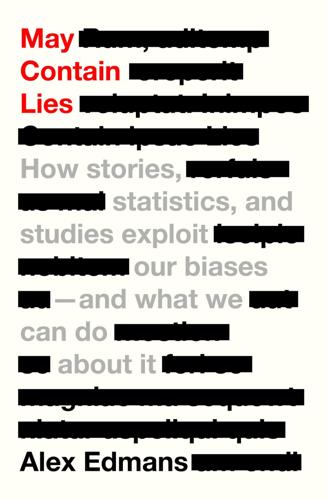
May Contain Lies: How Stories, Statistics, and Studies Exploit Our Biases—And What We Can Do About It
by
Alex Edmans
Published 13 May 2024
A study may misportray not just whether the data shows a link but what the data is actually capturing. It might measure something quite different, miss a big piece of the picture, be self-reported or be circular. As an example of where the data measures something different, after George Floyd’s murder in May 2020 there were numerous Black Lives Matter protests to fight for racial justice. Some worried that mass protests might increase the spread of COVID-19, but a study claimed that ‘cities which had protests saw an increase in social distancing’.8 It was widely covered by the media, because their readers wanted this result to be true. Yet the researchers didn’t measure social distancing but the amount of time spent at home (captured by mobile-phone location).
…
Later on in the chapter, he writes, ‘there is an easy way to test this theory’, where the ‘theory’ refers to the hypothesis that you needed to be born in 1954 or 1955 to be a successful computer entrepreneur as you’d have accumulated 10,000 hours of practice by the start of the IT revolution. 4 Edmans, Alex (2021): ‘What stakeholder capitalism can learn from Jensen and Meckling’, ProMarket, 9 May 2021. 5 Milewski, Matthew D. et al. (2014): ‘Chronic lack of sleep is associated with increased sports injuries in adolescent athletes’, Journal of Pediatric Orthopaedics 34, 129–33. 6 Two out of the ninety results were significant at the 10% level, but the standard threshold is 5%. 7 Minerva Analytics (2021): ‘Boardroom diversity improves financial performance’, 23 July 2021. 8 Dave, Dhaval M. et al. (2020): ‘Black Lives Matter protests, social distancing, and COVID-19’, IZA Institute of Labor Economics, Discussion Paper 13388. 9 Thomas, Chloe et al. (2022): ‘The health, cost and equity impacts of restrictions on the advertisement of high fat, salt and sugar products across the Transport for London network: a Health economic modelling study’, International Journal of Behavioral Nutrition and Physical Activity 19, 93. 10 Snowdon, Christopher (2022).
…
Index academic journals ask an expert 223–4 assessing balance 224 evaluation 223 sources 223 see also articles academic studies 69 academics 225 Academy of Management 195 Academy of Music 61 Action Man 7 adjunct professors 227 adoption 93–4, 102 Aesop 276–7 Affordable Care Act ‘Obamacare’ (2010) 80–81 Age of Discovery 170 Aggarwal, Ishani 240 Allen, David 229 alternative hypotheses 23–5, 33, 34, 98–9 Amazon 161, 246, 251–2 American Economic Review 221 amygdala 29, 30, 34, 38, 232, 276 Andersen, Arthur 219–20 anonymous brainstorming 246, 258 Apple 90–92, 93, 94, 106, 107, 200 Apple Watch 18 Aptamil Profutura First Infant Milk 147 Arabesque 79 Aristotle 214–15 On the Art of Cutting Metals (Taylor) 194 Art of War, The (Sun Tzu) 11 articles accuracy of 231–2 peer-reviews of 217–18 sharing 230–31 see also academic journals Atkins diet 40–42, 46, 51 Atkins, Robert Coleman 39–42 Attenborough, Sir David 86 attention-grabbing numbers 154 authors bias 225–6 of books 228–9 credentials 226–8, 229–30, 234 autism 221 awareness 259–60 Bacon, Francis 25 Bad Blood (Carreyrou) 219 Balloun, Joe 34 Barber, Brad 97–8 Batty, David 145–6 Bay of Pigs invasion 235–7, 244 Bayesian inference 23–4, 216 Bayesian updating 216 BBC Verify 270 Beast Barracks 202–3 Beatles, The 66 belief polarization 32, 38 Bennedsen, Morten 182 Bertrand, Marianne 175–6 best-fit lines 136, 160 see also regression best practice 273–4 Bethlehem Steel 194–5 Bezos, Jeff 102 biased interpretation 33, 35, 37 biased search 33, 34–5, 36–7, 38 biases 9–10 of academics 225 awareness of 259–60 of organizations 225 sources of 225–6 systematic inspection of 225–6 see also confirmation bias; twin biases bilirubin 144 binarization 137–8 binary inputs 139–40, 141 binary thinking 42–5, 46–7, 55 black-and-white thinking 11, 39–56, 200 Atkins diet 40–42, 46, 51 binary thinking 42–5, 46–7, 55 categorical thinking 51–3, 56 caveman logic 43–5 dangers of 45–55 good and bad 42, 46–7, 51, 53, 54, 55–6, 76, 93, 140 granular world 45, 51–2, 56 hunter gatherers 43–4 marbled world 45, 53–5, 56 moderate world 45–50, 55 positive and negative effects of 48–9 rules 44 shades of grey 42, 45, 49 10,000-hours rule 59–61, 62–4, 64–6 Black Lives Matter 75 bladder effect 27–8 Blair, Tony 259 blinkered scepticism 27–8, 32, 37–8 blue-sky thinking 245, 257 BMC Pregnancy and Childbirth 143–4 boardroom diversity 74–5, 79 see also gender diversity Bobbitt, John Franklin 196 body language 221 Boer, Peter 249 Bolton, Patrick 252–3 books 228, 282 author credentials 228–9 best-selling 268–9 code of conduct 273–4 endorsements 274 evidence 67 fact-checking websites 270–71, 277, 282 health warning 272, 282 peer-reviews of 223 publication process 273–4 self-help genre 229 single big ideas 105 Bootle, Roger 213–14 Boston Globe 176 Bower, Joe 290–91 Bown, Stephen 171 brain, components of 92–3 see also amygdala brainstorming 245, 248, 257 breast milk, natural 144 breastfeeding 143 benefits 143, 147–8 bottle feeding and 143–4, 147, 148 challenges of 146 child IQ 143–4, 145–7 common causes 146–7, 148 formula and 143–5, 148 mother’s IQ 146–7 studies in 144, 145, 148 Breitbart News 231 Brexit 6, 213–15 British Medical Journal 145–6, 208, 218 Brock, Timothy 34 Built to Last (Collins and Porras) 110–12, 201, 224, 270 Bundy, McGeorge 235 Burke, Arleigh 239, 240 Busemeyer, Jerome 48 Bush, George W. 29–30 Business Insider 219 Cabell 218 cadets 202–3, 206 Cameron, David 160, 161 Capital Economics 213, 214 carbohydrates 41–2, 46–7, 51 Card, David 183–5 careers 108, 110 Carney, Dana 269 Carreyrou, John 219 Casino de Monte-Carlo 101 Castro, President Fidel 235, 244 categorical thinking 51–3, 56 causation 142–67, 166 breastfeeding studies 143–8 correlation and 148–54, 163–6, 173 instruments 179 randomized control trials (RCTs) 173, 174–6, 177 cause and effect 86, 105–6, 113, 114 caveman logic 43–5 CEOs bonuses and innovation 78–9 executive pay report 67–9 remuneration packages 78–9 certification 219–20 chess 34 Scholar’s Mate 32–3 Chicago Tribune 176 choices 279–80 cholesterol 51 CIA (Central Intelligence Agency) 235, 236, 237 civil discourse 275–80 Clement, Russell 52 climate change 53–4, 256, 265–6, 267–8 clock changes 127–8 Cochrane Reviews 222 codes of conduct 273–4 cognitive diversity 238–9, 240, 244 building groups 241 Cold War 235 Coleman, Robert see Atkins, Robert Coleman collective intelligence 240 Collins, Jim 110–12 colostrum 145 Columbus, Christopher 171 common causes 146–7, 148, 149, 152, 166 dividends 157 employee satisfaction 157 equality/inequality 160 instruments 178–9 momentum 157 regression 158–9 unobservable 162 common sense 124, 163, 187–9, 202, 207–8 confirmation bias 11, 17–38, 161, 199, 200 Bayesian inference 23–4 Belle Gibson story 17–20, 103–4 biased interpretation 33, 35, 37 biased search 33, 34–5, 36–7, 38 blinkered scepticism 27–8, 32, 37–8 Bruce Lisker story 21–3, 24 denial 25–8 effects of 30–32 Elizabeth Holmes story 20–21, 219 emotion-based advice 20 evidence 28–32 knowledge backfiring 35–7 motivated reasoning 27–8 naïve acceptance 25–7, 32, 37–8 origins of 28–30 truth 21–6 wrongful convictions 24–5 Conservative Climate Caucus 267 consider the opposite technique 260, 261 constructive criticism 253–5 continuous choices 52 continuous inputs 139–40, 141 control groups 111–13, 139 natural experiments 185–6 randomized control trials (RCTs) 174–5, 177 control samples 99, 102 controls 158 Cook, Scott 250 cooking the books 138–40 Cornell University Medical School 39 correlation 148, 166 causation and 148–54, 163–6, 173 common causes 170 inputs and outputs 162–3 reverse causation 167, 170 counterarguments 214–16 counterfactual 98 Covey, Stephen 216 COVID-19 75, 78, 150, 151 credentials, of authors 226–7, 234 exaggeration of 229–30 quality of institution 227–8 research qualifications 226–7 track record 227 Cribsheet: A Data-driven Guide to Better, More Relaxed Parenting, from Birth to Preschool (Oster) 147 critical thinking 261–5, 281 cross-sectional studies 31 Cruz, Ted 265, 266 Cuban Missile Crisis 235, 237–8, 239–40, 244–5 Cuddy, Amy 221, 269, 274 cultural cognition hypothesis 266, 281 Cultural Cognition Project (Yale Law School) 267 curiosity 263–4, 281 Curtis, John 267 Darwin, Charles 111 data 12, 13 absence of 78–9 circular 77–8 is evidence 168–91 common sense 187–9 instruments 177–83 natural experiments 185–6, 190 randomized control trials (RCTs) 173, 174–6, 189–90 unnatural experiments 186–7 is not evidence 119, 140, 148–9, 166 causation see causation cooking the books 135–40 data mining see data mining measurement of 75 partial picture 76 self-reported 76, 77 smarter thinking 286–8 data mining 140–41, 220 choosing inputs and outputs 119–25 common sense 124 cooking the books 138–40 dangers of 127, 131 defence against 129–30 definition 119 discretization or binarization 137–8 guarding against 123–5 hypothesis 129–30 measuring inputs and outputs 125–30 robustness 123 sample mining 131–5 DBS 254–5 Deepwater Horizon 25–8 default decisions 248 degrees, university 108–9 DeLosh, Edward 48 Delphi method 246, 248, 258 Democratic Party (US) 80 demographic diversity 238, 243, 244 denial 25–8 Denning, Steve 69, 70–71 Der, Geoff 145–6 descriptions 151, 152, 167 detailed opinions 251 devil’s advocates 254–7 difference-in-differences calculation 185 disclosure 218–19 discretization 137–8 discussants 253–5 disgust research 51–2 disputes 275–7 dissenting viewpoints 214–16, 255–6, 282 diversity 75, 135, 243 Best Company status 116–18 research on 117–19 see also boardroom diversity; cognitive diversity; demographic diversity; gender diversity; social diversity dividends 157 doctorates 227 dopamine 30 Dorchester Hotel 115–16 Dr Atkins’ Diet Revolution 40–41 Dreary, Ian 145–6 Duckworth, Angela 203–6, 207 EBITDA 74 Economist 50, 160 Ederer, Florian 60 Edison, Thomas 34 Edmans, Professor Alex 68 education priority of grades 197 school curriculum 196 scientific management 196–7 scripted curriculum 197 standardized tests 196 teachers’ initiative 198 Eichler, Joseph 90 Eisenhower, Dwight 235, 236, 239 Ellison, Larry 20, 102 emotion 93 employee satisfaction common causes 157 control groups 158 100 Best Companies to Work for list 156–7, 189 regression 158 endogenous inputs 149, 166–7 outcome of another process 150–51, 166 traits 149–50 voluntary choices 149 endogenous parts of instruments 178–9, 180, 182 endorsements 274–5, 281 endorsers 274–5, 282 energy sector 53–4 Engineers Without Borders 251 Enron 219–20 equality 159–61 Ericsson, K.
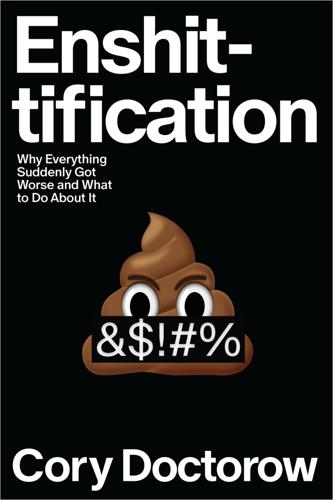
Enshittification: Why Everything Suddenly Got Worse and What to Do About It
by
Cory Doctorow
Published 6 Oct 2025
For example: Maybe you think that Facebook used commercial surveillance to build a kind of Big Data mind-control ray to sell your nephew fidget spinners, only to have evil conservative billionaires hijack it and use it to turn your grampy into a conspiracy-addled QAnon follower. Or maybe you think Instagram turned your teenager anorexic. Or that TikTok brainwashed a bunch of millennials into quoting Osama bin Laden. Or maybe you’re worried about Black Lives Matter protesters whose identities were swept up by Google’s constant location-based surveillance and who were then reported to law enforcement after a “reverse warrant.” Or maybe that doesn’t worry you, but you are pissed about the same thing happening to the January 6 rioters. Or you’re angry that people of color are being discriminated against by algorithms that determine hiring, lending, and housing based on surveillance data.
…
To the extent that tech workers have addressed these issues in their workplace, it has been through social movements, not labor organizing. Social movements do important work; I’ve devoted most of my life to them. But social movements tend to thrive under liberal regimes, even when those regimes let down their goals. Think of how Black Lives Matter and Occupy arose under Barack Obama. His administration was hardly a friend to working people, but it didn’t threaten daily survival the way the Trump administration did. People who tried to form social movements under Trump—like the Women’s March—found themselves splitting their time between just trying to get through the day and trying to hold Trump’s feet to the fire.
…
So those same bosses, with the same moral and psychological flaws, doing the same thing they always have, are producing a wildly different outcome. The enshittification lever that was once stuck fast can now be moved with a fingertip, all the way to 100. This has real, material consequences for our comrades in the struggle for a better world. The internet that spawned Occupy and Black Lives Matter has become profoundly hostile to the ongoing maintenance of radical political movements and is inimical to the founding of new ones. That really matters. Not because the internet is the most important issue facing us today. Far from it. Compared with the climate emergency, genocide, inequality, corruption, democratic backsliding, authoritarianism, and the sustained racist, homophobic, misogynist, and transphobic attacks on our comrades, sisters, and brothers, the internet is just a sideshow.
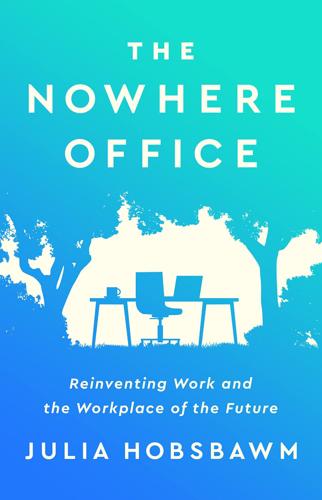
The Nowhere Office: Reinventing Work and the Workplace of the Future
by
Julia Hobsbawm
Published 11 Apr 2022
Race identity also took centre stage during the first wave of the pandemic, triggered by the death of George Floyd and the rise of Black Lives Matter as a campaigning force, which included a challenge to existing workplace culture in many institutions, not just the police. In the summer of 2021, Dame Vivian Hunt, a senior partner of McKinsey and one of the most prominent black women in business, reposted a quote on LinkedIn by seventeen-year-old Darnella Frazier who filmed the police attack on George Floyd and tagged it with the stark prediction: ‘Change come fast and change come slow but change come.’ Alicia Garza, co-founder of Black Lives Matter, is right when she says that ‘identity politics hold us accountable to ask more questions about for whom progress is being made’.
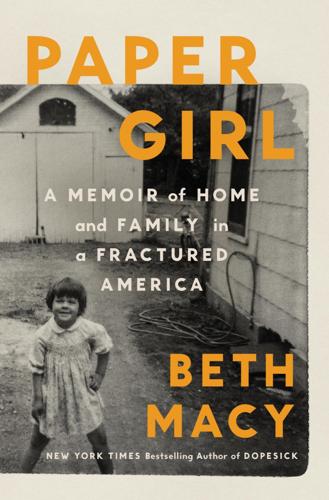
Paper Girl: A Memoir of Home and Family in a Fractured America
by
Beth Macy
Published 6 Oct 2025
See also absenteeism church, 174 schools, 91, 198, 209, 213, 214, 217, 222, 295 Atwater, Lee, 118 Australia, 92, 201 authoritarianism, 186, 196, 291 autism, 189, 263 automotive industry, 26, 91–92, 115, 157, 187, 202 aviation industry, 7, 26, 27, 33, 40, 47, 49, 72 Axelrod, David, 47, 308 B bachelor’s degrees, 44, 83, 84, 86, 95, 212 Backpage, sexual exploitation, 56 “backward mobility,” 11 Baldwin, James, 54, 153 “bandwidth tax,” 72, 190, 309 Bannon, Steve, 81 bans books, 67, 74, 197 cell phones, 223 Bean, Bill, 242, 249 as Urbana mayor, 88, 88, 144, 154, 159, 253, 267, 270, 297 as Urbana Youth Center critic, 270–71 behavior internet, 175 students, 90, 148, 218, 219, 296 Bell, Andrew, 112 Bennett, William J., 79 Berkshire Hathaway, 54 bicycles, 8, 33, 39, 75–76, 149, 220, 265 Biddle, Catharine, 213, 214 Biden, Joe, 56, 75, 200 negative views of, 172–73, 253, 307 presidential elections, 62, 187, 203, 204, 247, 252, 295 The Big Sort (Bishop), 69 billionaires, 69, 149, 198, 211, 301, 309 bipolar disorder, 94, 102, 190 birth-control pills, 120 Bishop, Bill, 69 Black History Month, 224–25, 227–28 Black Lives Matter (BLM), 163, 205 Blake, William, 66 BlazeTV, 293 BLM. See Black Lives Matter Blondin, Jo, 200, 211–12 blue-collar workers, 47, 113, 211 The Body Keeps the Score (Van der Kolk), 131 Bolsonaro, Jair, 178 books, 67, 74, 90, 154, 197 Booth, John Wilkes, 176 Bosnia, civil war, 293 Bowling Green State University, 7, 43, 43 Branch, Taylor, 80 bribery scandal, 176–77 Brookings Institution, 74, 288 Brown, Bud, 63 Brown, Charlie, 254 Brown, Clarence J., 63 Brown, Sherrod, 254, 254 Bry, John, 147–48, 270 Buchanan, Pat, 117 Buckler, Kenley, 269 Buckley, David, 255 Buffett, Warren, 54 “Build Back Better,” 56 Bullard, Pamela Stokes.
…
Later, she claimed that George Floyd didn’t die from having a police officer’s knee pressed against his neck for nine minutes, and when I questioned the accuracy of that statement, another link was promised. But the links never came. “I’m Black, but I’m not racially triggered,” she said, decrying the “lack of home raising” she ascribed to Black Lives Matter activists in the wake of Floyd’s murder. “Look, I know we don’t agree on a lot of stuff, and that’s okay because I love you enough to love you and not push myself,” she said. At a restaurant during one of my earlier trips, when she challenged the integrity of mainstream news organizations like The New York Times, I tried to explain how thorough and rigorous the Times’s fact-checking department was: One fact-checker I worked with had managed to track down a homeless addicted person I’d interviewed who no longer had the same phone number; then she talked to him for an hour to confirm my account of his story.
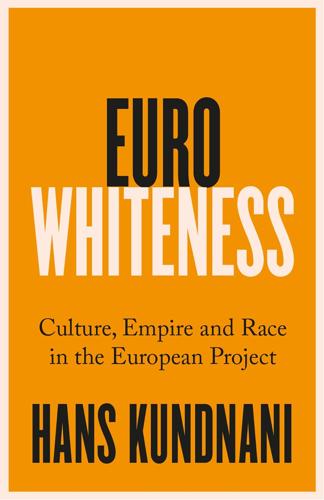
Eurowhiteness: Culture, Empire and Race in the European Project
by
Hans Kundnani
Published 16 Aug 2023
Why Ethnic Minorities See Immigration Differently”, Runnymede Trust, December 2015, https://www.runnymedetrust.org/publications/this-is-still-about-us-why-ethnic-minorities-see-immigration-differently (last accessed 31 March 2023), p. 4. 17.Neema Begum, “Is being European a white identity? Brussels needs deep reflection in the wake of the Black Lives Matter movement”, The Conversation, 8 July 2020, https://theconversation.com/is-being-european-a-white-identity-brussels-needs-deep-reflection-in-the-wake-of-the-black-lives-matter-movement-141902 (last accessed 31 March 2023). 18.“What Does Brexit Mean for Black and Asian Britain?”, discussion at the Mile End Institute, Queen Mary University of London, 28 November 2018, https://www.youtube.com/watch?

Facebook: The Inside Story
by
Steven Levy
Published 25 Feb 2020
* * * • • • AFTER THE TRENDING Topics fiasco, Kaplan suggested that Facebook invite a slate of right-wingers to Menlo Park so the company could convince them that it was giving them a fair shake. Some Facebookers found this an insulting contrast to the virtual snub Facebook had given Black Lives Matter some weeks earlier. Members of the civil rights group had asked for a meeting to air out issues, including Facebook Live’s streaming of violent crime and police killings. Another sticking point: that February at Facebook HQ, employees had crossed out the words “Black Lives Matter” from a graffiti wall and replaced it with “All Lives Matter,” a response associated with racism. Zuckerberg had condemned the action. But neither Zuckerberg nor Sandberg attended the session in the DC office.
…
Nor did Joel Kaplan, the top policy person in the office. Facebook sent Monika Bickert, who was in charge of Content Standards; a Facebook policy director who works with Democrats; and an African American staffer whose work wasn’t relevant to the subject matter. (Higher Facebook executives, including Sandberg, have met with Black Lives Matter at other times.) In contrast, Facebook was treating a motley lineup of right-wing pundits like rock stars, flying them out to Menlo Park to listen to Zuckerberg and Sandberg’s explanation of how respectfully their posts were treated, even the shrill conspiracy charges from Rush Limbaugh and Glenn Beck.
…
On the day: Heather Kelly, “Facebook Ditches Humans in Favor of Algorithms for Trending News,” CNN, August 26, 2016. “anti-Kelly fan fiction”: Abby Ohlheiser, “Three Days after Removing Human Editors, Facebook Is Already Trending Fake News,” Washington Post, August 29, 2016. “All Lives Matter”: Jessica Guynn, “Zuckerberg Reprimands Facebook Staff Defacing ‘Black Lives Matter,’” USA Today, February 26, 2016. the thought was: Thompson and Vogelstein, “Inside the Two Years.” “home run”: “Facebook CEO Mark Zuckerberg: Philippines a Successful Test Bed for Internet.org Initiative with Globe Telecom Partnership,” Globe Telecom, February 25, 2014. Maria Ressa: The definitive story on Facebook, the Philippines, and Maria Ressa is from Davey Alba, “How Duterte Used Facebook to Fuel the Philippine Drug War,” BuzzFeed, September 4, 2018.
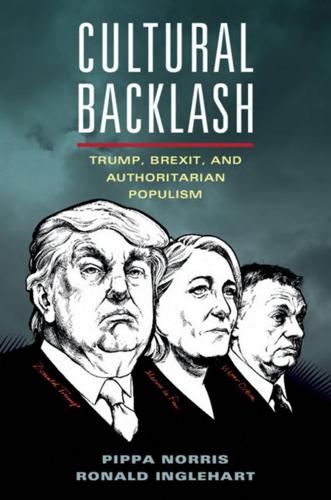
Cultural Backlash: Trump, Brexit, and Authoritarian Populism
by
Pippa Norris
and
Ronald Inglehart
Published 31 Dec 2018
Campaigning as outsiders, this appeal is likely to mobilize Labour Party members favoring Jeremy Corbyn, Bernie Sanders supporters in Democratic primaries, voters for Jean-Luc Mélenchon’s La France Insoumise, the Five Star Movement in Rome, and community activists engaged in Pablo Iglesias’ Podemos in Spain.28 Political parties usually attract older voters, but by adopting digital tools, some like the Five Star Movement (M5S) in Italy, have succeeded in attracting a relatively young membership.29 At the same time, levels of youthful enthusiasm are rarely translated into equivalent levels of voting turnout at the ballot box.30 The Millennial generation in the US and Europe are more likely than their elders to participate in direct protest politics, community volunteering, new social 44 The Cultural Backlash Theory movements, and online activism, but they are usually far less engaged through conventional electoral channels such as voting.31 Libertarian- Populist parties seeking the support of younger, college-educated voters therefore face stiff competition from social movements championing the progressive agenda on issues such as environmental protection and climate change, LGBTQ rights, gender equality, Black Lives Matter, the ‘Me-too’ movement against sexual harassment, gun control, immigration rights, human rights and democracy, international development, and social justice. Populists advocating a socially liberal agenda also face competition at the ballot box from mainstream center-left parties and from Green parties, which have became established throughout Western Europe, such as Groen!
…
Data are from the WVS-6 (2010–2014) in the following seven post-industrial societies: Australia, Germany, Netherlands, New Zealand, Spain, Sweden, and United States. Source: World Values Survey 2010–2014, Wave 6. N. 10,576. LGBTQ rights to employment in the military, adoption, and same sex marriage; civil rights for minorities like the Black Lives Matters movement; feminist networks with global mobilization on behalf of gender quotas in elected office; anti-domestic violence, and anti-sexual harassment, international assistance for humanitarian disasters and economic development, and human rights around the world.24 Drawing on data from seven post- industrial societies from the World Values Survey (6th wave), Figure 4.2 shows the strong association between socially liberal attitudes, as measured on scales monitoring tolerance of homosexuality, abortion, divorce, and pre-marital sex, with the 12-item scale of post-material values.
…
Several economists have argued that globalization, in particular the effects of the import of cheap Chinese goods in electronics and textiles, has had a devastating effect upon employment in American factories and mills, and that communities most affected by the loss of economic opportunities swung decisively toward populist leaders such as Trump.39 Social individualization and fragmentation have eroded the grassroots membership of traditional collective organizations, social networks, and mass movements that once mobilized workers’ cooperatives and trade unions.40 Collective movements and organized labor, which in the past mobilized the expression of working- class grievances, have found their negotiating powers undermined by open labor markets and multinational corporations. Movements like Black Lives Matter have mobilized strongly around issues of social justice, including the appropriate use of police violence – but this has divided poorer communities around issues of race. The Democratic Party has found its traditional electoral base depleted by the shrinking numbers of industrial workers in the Rust Belt states, forcing them to widen their electoral appeals as catch-all parties to attract public-sector professionals and liberal coastal communities focused on issues such as environmental protection.41 Socially disadvantaged groups are most prone to blame ethnic minorities and migrant populations for deteriorating conditions, loss of manufacturing jobs, and inadequate welfare services.
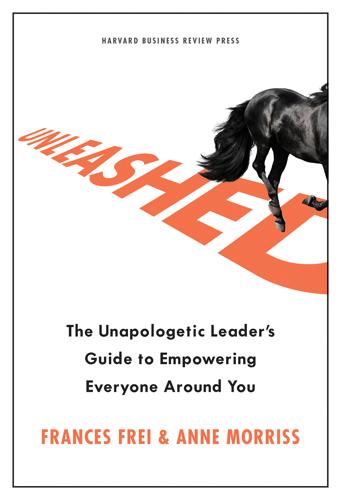
Unleashed
by
Anne Morriss
and
Frances Frei
Published 1 Jun 2020
Paul Revere earned glory by tearing through the Massachusetts countryside, but the real plot point in leadership history is what happened next, the men and women who stepped out into the streets of Lexington and Concord to determine their own destinies.d We believe you can trace a line from their courage to the hundreds of civil rights marchers in Selma, Alabama, to the thousands who lined up behind Gandhi and marched for self-rule, to the millions of global supporters of movements like #MeToo and Black Lives Matter and their assertions of a universal right to dignity, regardless of who you are. What will be the focus of your own leadership story? Will it be about the power you stockpiled and protected? Or about how much more you achieved by using that power to unleash the people around you? This book is about choosing the second path, unapologetically.
…
INDEX absence leadership, 131–132 culture and, 165–192 strategy and, 135–163 Adams, John, 3 Advanced Micro Devices (AMD), 62 after-action reviews, 79 agony of the super smart (ASS), 40 AirBnB, 102 “A” leaders, 132 Amazon, 158 Anheuser-Busch, 107–108 Apple, 113, 143 Aristotle, 34 attribute maps, 137, 139–140 auftragstaktik, 17 authenticity in digital age, 52–54 triggers, 52–53 trust and, 34–37, 47–54, 57 Average You, 139 Azzarello, Patty, 139 “balanced slates,” 103–104 Basch, Michael, 165–166 Bee, Samantha, 102–103 belonging, 12, 13, 87, 89–127 Bezos, Jeff, 158 bias, 47, 92, 93, 115, 116 Bird, Larry, 45 Black Googlers Network, 5 Black Lives Matter, 24 black working moms, 126–127 Blendoor, 103 blind submissions, 102 bro culture, 180 Brown-Philpot, Stacy, 5, 148–152, 161 Bummer You, 139 Burns, Ursula, 101 Carlzon, Jan, 159–160 change beginning, 90–91 to culture, 167, 182–185, 186–190 managing, 152 resistance to, 92–94 Chouinard, Yvon, 42 Coleman, Debi, 77 common information effect, 48–49 communal workspaces, 40 communication of change, 152 of devotion, 82–84 directness in, 22–23 effective, 45–46 of strategy, 156–161 communication triangle, 46, 56 compensation, 121–122, 146–148 constructive advice, 75–76 Corning, 80–81 Costco, 44 cultural fit, 102–104 cultural values, 166–172 at Netflix, 168–169, 172 at Riot Games, 124, 181 at Uber, 32, 55 culture, 12–14, 132, 165–192 changing, 167, 182–185, 186–190 defined, 166–169, 172 examining your, 176–178 humor and, 170–172 of inclusion, 104–108 problems, 172–182 role of, 165–166 Culture Change Playbook, 182–185 culture of inclusion, creating, 104–107 culture warrior, 168, 177, 182 Curl-Mix, 157 deeply/simply communication, 158 #deleteUber, 31 DeLong, Tom, 90–91 Dempsey, Martin, 16–17 development, 109, 112–114 devotion, 62–67, 72–73, 74, 81, 82–84 diverse teams, 48–49 diversity, 89–90 attracting diverse talent, 95–104 celebrating, 105, 107 cherishing, 105, 107–108 Doukeris, Michel, 107–108 Drucker, Peter, 132 Drybar, 157 Dunaway, Cammie, 96–97, 102 Duolingo, 96–97 Dweck, Carol, 72–73, 74, 191 Edmondson, Amy, 107 1844 organization, 96 empathy constructive advice and, 75 future of work and, 42–44 trust and, 34–41, 51, 57 empathy wobble, 39–41, 42 employees attracting diverse, 95–104 development of, 109, 112–114 firing, 84, 85–86 investment in, 44, 55–56 outside lives of, 83–84, 100–101 promotion process for, 114–115, 116 retaining, 120–122 selection of, 102 supporting queer, 110–113 toxic, 123 wages of, 146–148 empowerment leadership, 4–5, 10–15, 18–21 in action, 16–18 belonging and, 90 commitment to, 116 development of, 71–87 getting started with, 22–23 Endeavor, 121 equal opportunity, 104–114 equal pay, 121–122 Escobari, Marcela, 43–44 exit interviews, 175 Facebook, 102 FedEx, 165–166 feedback giving effective, 22–23 positive, 73–76 fidelity, 61, 63, 64, 66, 73 firing, with respect, 85–86 forgiveness, 123 Fowler, Susan, 31, 174 Franco-Prussian War, 17 Freire, Paulo, 44 Gandhi, Mohandas, 24 Gelb, Scott, 124–126 gender bias, 117–118 gender equity, 91, 115 gender identities, 110–112 gig economy, 148 GLAAD, 110 good jobs research, 147–148 Google, 5, 79 grace, 123, 124–126 Grace Hopper Celebration, 96 Gross, Terry, 82 growth mindset, 72–73, 191 Hannenberg, Emily, 17–18 Harvard Business School, 91, 115, 122, 186–190 Hastings, Reed, 169, 172 high standards, 77–81 hiring quotas, 104 Hoffman, Reid, 9, 11 Hogan, Kathleen, 116, 191 Holder, Eric, 51 homogenous teams, 48–49 Hoobanoff, Jamie, 98 HP, 139 Hsieh, Tony, 146 Huffington, Arianna, 7, 32 human resources life cycle, 90 Human Rights Campaign, 110 humor, 170–172 identity gender, 110–112 letting go of, 71–72 implicit bias, 116 improv, 20–21 inclusion, 50, 89–91 attracting diverse talent and, 95–104 commitment to, 116 culture of, 104–108 dial, 104–105 equal opportunity to thrive and, 104–114 growth and, 124 levels of, 104–108 promotions process and, 114–115, 116 of queer people, 110–112 resistance to, 92–94 at Riot Games, 124–126 talent retainment and, 120–122 working toward full, 126–127 inclusive hiring, 97 inclusive meetings, 108–109, 112–114 inclusive teams, 49, 89 “indignities” list, 101 informal development, 112–114 information common information effect, 48–49 learning from new, 54 Innova Schools project, 69–70 Intel, 79 Intercorp, 67–70 Isaac, Mike, 172–173 Isaacson, Walter, 77 JetBlue, 44, 167 Jobs, Steve, 77, 80–81 Johnson, Claire Hughes, 14 jokes, 170–172 Jordan, Michael, 3 Joyce, Meghan, 31 justice, 60–61, 63, 65, 66, 67, 71, 87, 122–123 Kalanick, Travis, 31–32, 51, 54, 172–176, 178–179 Kelleher, Herb, 136–138, 161 Khosrowshahi, Dara, 55, 56, 178–179 Krause, Aaron, 157 Landit, 14 language, “I” vs.
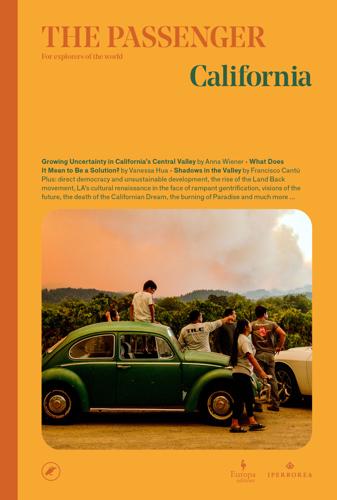
The Passenger
by
AA.VV.
Published 23 May 2022
Since middle school, she had worked to ensure a future other children already inherited.” Jimmy Bounphengsy, a member of Asians With Attitudes, a movement that wants to unite all Asian Americans in the fight against racism, at the start of a patrol in Oakland’s Chinatown. Two young Asians hold fortune cookies asserting the Asian-American community’s support of the Black Lives Matter protests. By contrast, Vinh’s life has been more chaotic, and he ends up in a gang with his foster brothers, who prey on other Vietnamese. They know people in the community keep large sums of cash at home because they don’t trust the banking system and are also afraid to go to the police for any reason.
…
The three artist and activist founders of the Crenshaw Dairy Mart in Inglewood have a vision of abolition, liberation from structural racism and food apartheid, and the creation of complete self-sustenance. The center is a gallery and abolitionist healing organization created in 2018 and launched in 2020 by Black Lives Matter co-founder and artist Patrisse Cullors along with fellow artists/activists noé olivas and alexandre ali reza dorriz. The Geffen Contemporary at the Museum of Contemporary Art in downtown LA invited the artists to exhibit in the summer of 2021, and at the same time they were asked to do the WeRise event sponsored by the Los Angeles County Department of Mental Health.
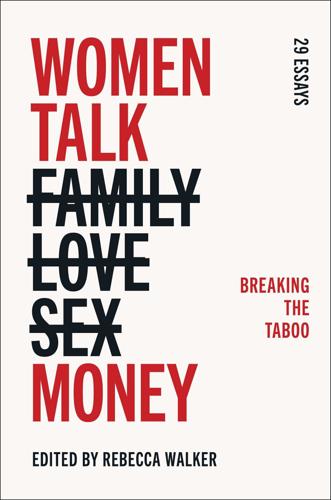
Women Talk Money: Breaking the Taboo
by
Rebecca Walker
Published 15 Mar 2022
If I posted a photo of a fancy brunch or frothy green smoothie, I’d reach tens of thousands of people. But if I shared my thoughts about white supremacy, the post’s reach would be cut by half or more. The only difference? The algorithm decided that my audience would rather see the delectable eats than the calls to stand with the Black Lives Matter movement. I was, as they say on the interwebs, shadowbanned.VIII Ultimately, nobody—except for the robotic mechanism running the algorithm from the shelter of Silicon Valley—knew why certain accounts and posts were favored over others. Perhaps the best explanation is that, “The Instagram algorithm is designed for one thing: [to] convince more people to spend more time [on the app] so Instagram can show more ads and make more money.”IX Every attempt I made to outsmart this system felt not just like a business failure, but a personal one: building an income stream dependent on the behavior of a privately owned app with its own fiscal aims was a swift path both to losing money and to betraying my own core values and interests.
…
They didn’t give me an answer when I asked why. Whether it was the result of my outspokenness itself or that the outspokenness meant decreased engagement on Instagram, I’ll never know. * * * All of this, of course, happened before the summer of 2020, when millions took to the streets for months of Black Lives Matter uprisings in the wake of George Floyd’s brutal murder. Before the meme activism of #BlackOutTuesday and the tidal wave of white tears shed by influencers and businesses suddenly committed to being actively antiracist. It happened before it was cool to be political on social media, before the algorithm (and corporate responsibility) rewarded whiteness for taking accountability for its privilege.
…
But the truth was that I felt sick: my toes pressed into the plastic shoes, my earlobes burning, the beaded acrylic sweater, the kind I knew required a human to do the handiwork, brutally hot in the July sun. And then the question, again, ringing like a siren in my mind: Should I be selling this? * * * I continued to model, but at night I became an activist. I went to Occupy Wall Street and Black Lives Matter protests. I organized artists and for a few years edited an indie publication aimed at bringing media resources to marginalized storytellers. Rarely did my activism and fashion careers intersect. When I was asked to speak at the launch of a fashion development initiative, an effort to invest in burgeoning garment industries in ten different countries, I was conflicted.
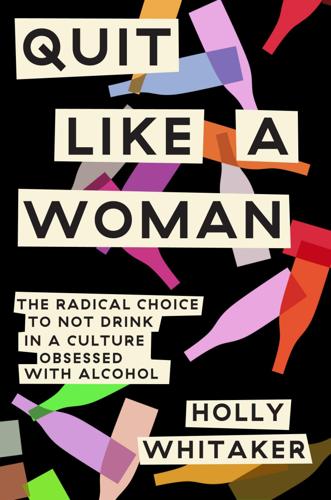
Quit Like a Woman: The Radical Choice to Not Drink in a Culture Obsessed With Alcohol
by
Holly Glenn Whitaker
Published 9 Jan 2020
What I didn’t quite know was exactly how I would do that, or that this revolution would become stronger with the strands of activism and energy woven into other major social forces: fourth-wave and intersectional feminism, the reaction to the Trump election, the legalization of marijuana in several states, the Black Lives Matter movement, the opioid crisis, and the growing and vocalized dissent against a very racist, classist, imperialist—and failed—War on Drugs. This journey has been an evolving one. At first, it was the story of a dead woman walking, of all the women in this world who try to conform to a life they are told they should want—one that looks good on paper.
…
At the same time our democracy is crumbling, our collective sense of power is erupting. Civil rights movements that have been going on for centuries, decades, years, started by radical activists on the margins of society—from Sojourner Truth to Rosa Parks to Sylvia Rivera at Stonewall to Patrisse Cullors and Alicia Garza, who started the Black Lives Matter movement—finally crashed into the mainstream. Women of privilege are finally waking up en masse to their collective oppression, and their anger has gone viral. The last few years have seen many things, from the #MeToo movement (a second wave of a movement started by Tarana Burke) to our vocalized outrage during the Brett Kavanaugh hearings to the election of our first Muslim woman to Congress, and an unprecedented number of women, people of color, and LGBTQIA folks elected to positions of power throughout the country.
…
As I became more educated, I couldn’t help but stitch these issues together on social media, something white women applauded me for as I spoke in the wake of the 2016 election about misogyny and rape and its ties to alcohol-centric culture. I got little to no pushback as I posted Rebecca Solnit quotes, or my own #MeToo story, or spoke about alcohol as a rape drug, but when I started to learn more about the racism inherent in the War on Drugs, or about restorative justice, or Black Lives Matter, or racism at all, and talk about those issues on social media, I found that some of the same women who applauded me for making connections between the alcohol industry and rape culture could not abide me talking about racism or white privilege. Some white women voiced their displeasure at my taking what seemed to be a hard right turn from addiction: “I wish you’d stick to sobriety.”
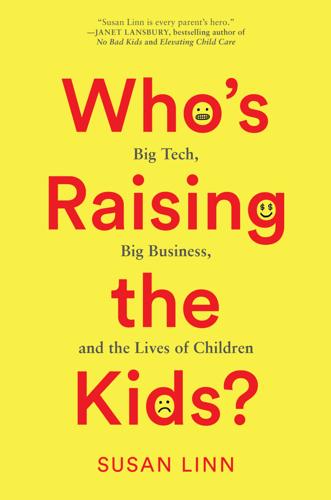
Who’s Raising the Kids?: Big Tech, Big Business, and the Lives of Children
by
Susan Linn
Published 12 Sep 2022
People view Google as an unassailable source of credible and reliable information. Yet, what’s often missing in search results that are not curated by a thoughtful hand, say a librarian or teacher: awareness of gender stereotypes and racial biases.19 Like so many companies responding to George Floyd’s murder and the ensuing Black Lives Matter protests, Google put out a statement touting its commitment to “racial equity” and detailing its plan to achieve it. The plan included admirable goals like increasing minority hiring, committing funds to antibias education, and creating products that will be useful to the Black community. Missing from the statement, however, is any mention of how Google will ensure going forward that its search algorithms do not perpetuate or encourage racism.20 Meredith Broussard, an AI researcher at New York University, said it so well in the New York Times: “Computers are excellent at doing math, but math is not a social system.
…
The company has introduced a new feature claiming to help them learn to read.23 Of course, search engines aren’t the only platforms where algorithms have been found to encourage and inculcate racism. Social media sites are also culpable. Take Meta, which also owns Instagram and has sometimes been lauded for promoting social justice movements like Me Too and Black Lives Matter.24 Yet the company has also been under fire for its long history of encouraging hate speech and perpetuating the growth of white supremacy groups.25 Within a week of George Floyd’s murder, a video claiming that his murder was faked reached 1.3 million Facebook users—mostly in groups run by avowedly white supremacists.26 To understand how the racism promoted by social networks and other popular tech platforms is linked to commercialism, we need to remember that algorithms governing what content we see and don’t see are created by people who, in addition to having their own biases, often work for huge conglomerates whose primary priority is to generate profits for their stockholders.
…
(American Speech-Language-Hearing Association), 238 Beanie Babies, 84 BEGIN (early learning tech company), 136 behavioral advertising, 46, 136, 195 Benford, Criscillia, 44n, 46n, 183–84 Benjamin, Ruha, xv Bequelin, Nicholas, 68 Bernays, Edward, 168–69 Bezos, Jeff, 77 Biden, Joe, 203 Big Food, 198. See also food industry Big Tobacco, 198 Bill and Melinda Gates Foundation, 233, 234 Bill of Rights Institute, 172 Billboard charts, 90 Bisiewicz, Amy, 245n Black Barbie, 157 Black Lives Matter movement, 150, 152 The Bluest Eye (Morrison), 155 Bollywood films, 157 Boninger, Faith, 197 Bookis, Deborah, 245n books. See e-books; reading books boredom the “Alexa, I’m bored” feature, 139–40 providing opportunities to generate tech-free solutions to, 224–25 Boss Baby (film), 139 Boston Children’s Hospital, 3, 27–28 Bowling Alone (Putnam), 132 boyd, danah, 221 BP (British Petroleum), 165, 171 Brand Strategy (magazine), 47 branding, 5, 13–14, 57–76, 89 brand-licensed children’s products and toys, 13–14, 29–30 brand-loyalty, 66–68, 134, 164, 165, 172, 184 churches/religious institutions, 71 corporate-financed advertising in schools, 164, 165, 172, 184 differentiating brand impression from reputation, 66 and edtech, 71, 184 presidential, 67, 69–7 social media and brand tribes, 63–65 social media and self-branding, 5, 72, 76, 219 social media influencers, 72 Toys “R” Us marketing, 58–61 young children and, 89–90 Bratz dolls, 59, 85 Brazil, 160–61 Britain adoption of Age-Appropriate Design Code, 200–201, 203 Quakers’ efforts to end of slavery, 230 screen time recommendations, 21 studies of touch screen-use by babies and toddlers, 42 British Food Journal, 116 British Medical Journal, 103 Bronfenbrenner, Urie, 65, 91 Broussard, Meredith, 150 Brown, Pat, 175 Buffett, Warren, 174 Bush, George H.W., 69 Bush, George W., 69, 91 BuzzFeed, 74 campaign finance reform, 199 Campaign for a Commercial-Free Childhood (CCFC), 3.
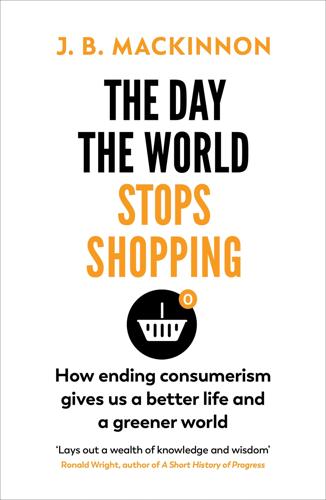
The Day the World Stops Shopping
by
J. B. MacKinnon
Published 14 May 2021
It is the nature of intrinsic values, after all, to be felt inwardly and expressed privately rather than put in the klieg lights for others’ applause. Instead of waning, the shift may have been deepening. In late May 2020, with the first wave of the coronavirus raging around the world, a police officer in Minneapolis knelt on George Floyd’s neck until he died, with video cameras rolling. The Black Lives Matter movement soon erupted into a national, and then international, reckoning on racial injustice. It was an unlikely turn of events. The middle of a global pandemic was not a natural moment for millions of protesters to take to the streets. Neither was there any clear reason why the incident should have been anything more than another brief flashpoint: police brutality against black citizens was unfortunately nothing new, videos of similar deaths had circulated multiple times, riots had followed some of them, and even Floyd’s desperate words—“I can’t breathe”—disturbingly echoed earlier killings.
…
Neither was there any clear reason why the incident should have been anything more than another brief flashpoint: police brutality against black citizens was unfortunately nothing new, videos of similar deaths had circulated multiple times, riots had followed some of them, and even Floyd’s desperate words—“I can’t breathe”—disturbingly echoed earlier killings. Yet in 2020, Black Lives Matter became perhaps the largest protest movement in American history, and changes seemingly unthinkable only a few weeks earlier came cascading: statues memorializing slave traders toppled; the state flag of Mississippi shed its slave-era symbols; the Washington Redskins football team agreed to change its racist name; and cities as large as Los Angeles and Minneapolis made moves toward a dramatically different approach to policing.
…
See also “Don’t Buy This Jacket”; Patagonia avoiding, 116–17 critics, 116–17 demarketing, 111–14 and extrinsic values, 120 industry, 114–15, 123 role, debate on, 108–9 spending less on, 108 “agrowth,” 174 air-conditioning, 198–203, 205 aiyosha, 265 akiya, 261 al Maher, Abdullah, 157 Albini Group, 161 Alexander the Great, 212 Alexander, Jon, 186–87, 191 Alliesthesia, 200 Amazon, 20, 27, 37, 128, 135 Animal Crossing, 250, 252 anti-consumer, 117, 211, 241, 243, 246–47 anti-consumer, versus consumer consumption, control over, 241 and material desires, 241–42 happiness, seeking, 243 anti-consumerism, 45, 110 anti-consumption, 114, 241, 247 anti-materialism, 212 Arnould, Eric J., 283 ARPANET, 179 authenticity, 245–46 automation, 173 Awazu, 181–83 backfire, 216–17 Badruzzaman, Fakir, 158 Bakken Shale, North Dakota, 71–72 Bangladesh, 6, 26–27, 70, 157–63, 176, 288 Barking and Dagenham (borough), 188, 190–93 Barro, Robert, 95 Bataille, Georges, 119–20 Beretta, 174 Bergen County, New Jersey, 43–44, 51–52, 54 Bergh, Chip, 137–38 Bialik, Chaim Nachman, 45–46 Bibron’s stiletto snake, 277 big-picture causes, 98 Black Friday, 13, 109–10, 112 “black holes,” 256 Black Lives Matter, 129 Blade Runner 2049, 153 blue laws, 44, 51 boat noise, 226 Bramell, Tom, 143–44 breathing room. See yutori Britton, Tessy, 187–88 Brizard, Marie, 172 brownout, 203 Brûlé, Tyler, 269 Brussels, 17 buen vivir, 39–40 Burawoy, Michael, 131–36 Bush, George W., 9–10, 28 Businessweek, 95 buy-less-buy-better economy, 212 C&A, 157 Cabanac, Michel, 200 California, 17, 26, 39, 58, 111, 131, 134, 143, 175 Canada, 33, 35, 37, 39, 70, 81, 87–90, 160, 224–25, 227 Caplow, Deborah, 241–44, 247 Carapungo, 33–34, 40–41 carbon dioxide, 8, 57–63, 65–66, 75 carbon emissions, 59–60, 62–66, 70, 91, 150, 160, 207, 288–89 Carrier, Willis, 198–99 Carter, Jimmy, 21 cash economy, 270, 280–81 Chaillet, Adolphe, 143 Changi, 47 Chennai, India, 135 China, 7, 9, 13, 20, 26, 59, 61–63, 76, 85, 122, 138, 148, 156–57, 176, 203, 211, 233, 263 Chittagong, 160 Circle Economy, 167 circular economy, 167–68 CITES, 233 Clark, Chris, 226 Clark, Jonas, 161 classical economic theory, 241 climate change, 6, 9, 11–12, 57–67, 91, 109, 116, 147, 160, 172, 177, 191, 197, 225, 247, 256 as externality, 288–89 clothes, clothes-making, in Bangladesh, 158 clothing revolution, 158 modifying, impact of, 28 proliferation of, 156 reuse, 137 statistics of, 28–29 Club of Rome, 60 CO2, 57–58, 60–62.
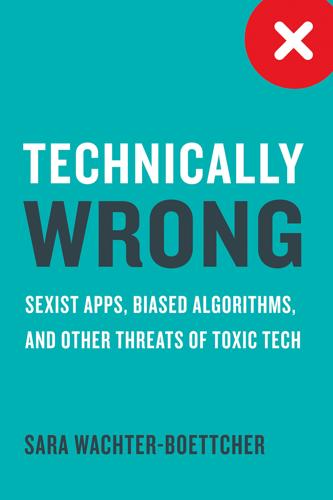
Technically Wrong: Sexist Apps, Biased Algorithms, and Other Threats of Toxic Tech
by
Sara Wachter-Boettcher
Published 9 Oct 2017
Why do they care so much about shoving skulls and Frankensteins into our lives at awkward or sad moments? Why do they want us to relive funerals and tragedies? Why do we need to constantly be congratulated along the way? Why won’t our technology just leave us alone? CELEBRATE THE WORST TIMES On July 9, 2016, DeRay McKesson, one of the most prominent activists in the Black Lives Matter movement, was in Baton Rouge, Louisiana. He was there to protest the death of Alton Sterling, a thirty-seven-year-old black man who had been held down by police in front of a convenience store and shot at close range just a few days before. McKesson—perhaps best known as @deray, the Twitter handle he uses to communicate with his several hundred thousand followers—had spent the day tweeting from the protests.
…
Abler, Erin, 32–33 Acxiom data brokers, 104 advertising and collection of gender information, 65–66 Facebook’s selections for users, 10 and filtering, 65 and proxy data, 110–112 and Reddit, 162 and value of user data, 96 Airbnb, 20 Alciné, Jacky, 129–130, 132–133, 135, 137–138 alcohol use, 17–18 algorithms biases in, 144–145, 176 and clean design aesthetic, 143 and COMPAS, 120–121, 125–129, 145 and debiasing word-embedding systems, 140 described, 121–123 and edge cases, 137 and Facebook’s use of proxy data, 112 and Friends Day Facebook feature, 84 and Google, 123, 136, 144 and neural networks, 131–133 and News Feed Facebook feature, 168 and social media trends, 10 and training data, 145–146, 171 and Trending Facebook feature, 149, 166–167, 169 and Yelp, 123–125 Allen, Paul, 182 AltaVista, 2 alt-right movement, 153, 164 Apple and emoji suggestions, 80 iPhone location settings, 105–108 and Siri’s female voice, 36 and Siri’s responses to crises, 6–7, 7 and Siri’s teasing humor, 88–89 smartwatches from, 13 and use of personas, 27 and workforce diversity, 19–20 artificial intelligence and failure to understand crises, 6–7 and loss of jobs, 192 Siri as, 88–89 word-embedding systems, 139–140 Automattic, 183 “average” users, 38–44, 47 Barron, Jesse, 114–115 Batman, Miranda, 57 Bawcombe, Libby, 40–42 Beyoncé, 55 bias. See also gender bias; political bias; racial bias in algorithms, 144–145, 176 in default settings, 35–38, 61 of Facebook’s creators, 168–172 of Twitter’s creators, 150, 158–160 binary choices, 62 Black Lives Matter movement, 81 Bouie, Jamelle, 61 Brown, Mike, 163 Brown Eyes, Lance, 54 Butterfield, Stewart, 190–191 BuzzFeed, 157, 165–166 cares about us (CAU) metric, 97 caretaker speech, 114–115 celebrations. See misplaced celebrations and humor COMPAS (Correctional Offender Management Profiling for Alternative Sanctions), 119–121, 125–129, 136, 145 computer science, and tech industry pipeline, 21–26, 181–182 Cook, Tim, 19 Cooper, Sarah, 24 Correctional Offender Management Profiling for Alternative Sanctions (COMPAS), 119–121, 125–129, 136, 145 Costolo, Dick, 148 Cramer, Jim, 158 Creepingbear, Shane, 53–56 Criado-Perez, Caroline, 156 criminal justice and COMPAS, 119–121, 125–129, 136, 145 predictive policing software, 102 sentencing algorithms for, 10 culture fit, 24–25, 25, 189 curators, of Trending Facebook feature, 165–169, 172 daily active users (DAUs) metric, 74, 97–98 Daniels, Gilbert S., 39 Dash, Anil, 9, 187 data.
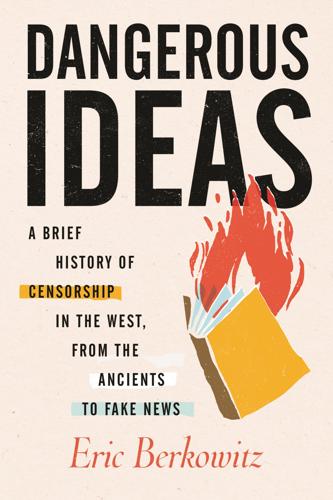
Dangerous Ideas: A Brief History of Censorship in the West, From the Ancients to Fake News
by
Eric Berkowitz
Published 3 May 2021
In May 2020, Zuckerberg, looking to placate one of his best advertisers, said that Twitter was wrong to fact-check Trump’s patently false posts, adding that digital platforms should not act as “arbiters of truth.”70 The following month, under the pressure of an advertiser boycott as well as employee discontent and threats from legislators, Facebook added additional measures to police content. But while it took down pages connected to a network of Trump-supporting racist insurrectionists, it did not remove a post by Trump himself about shooting Black Lives Matter marchers.71 Even if it had, though, the same issues driving harmful content would remain. “The architecture of [Facebook]—its algorithmic mandate of engagement over all else, the advantage it gives to divisive and emotionally manipulative content—will always produce more objectionable content at a dizzying scale,” writes Warzel.72 This is true across all major platforms.
…
AFTERWORD As this book went to press, censorship-related news—information lockdowns worldwide about the coronavirus; agitation by members of the US Republican Party against social media platforms for “censoring” conservative voices; China’s co-opting of the Zoom communications platform to stifle dissent outside its borders; torrents of misinformation unleashed to confuse the American electorate about the Black Lives Matter movement; and more—was coming in so fast and furious that this book would never have been finished if I hadn’t called an arbitrary halt to the intake of information. That is quite something for a work that begins with a Roman execution and includes Byzantine iconoclasm, the American Civil War, and the suppression of gay- and Communist-themed films during the Weimar Republic.
…
See also Constitution (US) Bird’s Head Haggadah, 19 birth control, censorship of literature on, 10, 35, 145, 152, 162–63 The Birth of a Nation (film), 239 The Birth of Venus (Botticelli), 63 Black, Hugo, 212 Black Consciousness Movement (South Africa), 203–4 “Black Hawk Down” incident, 199–200 Black Lives Matter, 224, 253 Blackstone, William, 83–84, 91 blasphemy, 18, 95, 126–27, 129–30. See also religious censorship Blyth, Herbert, 161 Boccaccio, Giovanni, 62 Bolsonaro, Jair, 217, 223 Bond, Julian, 210 “bonfires of the vanities,” 62–63 Boniface VIII (pope), 61 book burning: in Ancient Greece, 24–25; in Ancient Rome, 10, 31–34, 36, 40, 48, 50–51; in Brazil, 203; in Chile, 203; in China, 1–2; in early Christianity, 42–44; in England, 88, 94, 101, 152; of Florentines, 61–63; in France, 90; in Germany, 187; of Jewish texts, 15–16, 30, 58–60, 73, 188; by Roman Catholic Church, 69, 72; in US, 87–88, 160.

Border and Rule: Global Migration, Capitalism, and the Rise of Racist Nationalism
by
Harsha Walia
Published 9 Feb 2021
Black People Don’t,” Washington Post, August 24, 2015, www.washingtonpost.com/news/post-nation/wp/2015/08/24/white-people-in-new-orleans-say-theyre-better-off-after-katrina-black-people-dont/; Richard Florida, “How Natural Disasters Can Spur Gentrification,” Citylab, February 12, 2019, www.citylab.com/environment/2019/02/gentrification-causes-new-orleans-natural-disasters-hurricane-katrina/582499/. 53.Fred Moten, Stolen Life (Durham: Duke University Press, 2018), 135. 54.Black Alliance for Just Immigration, The State of Black Immigrants: Black Immigrants in the Mass Criminalization System, State of Black Immigrants, http://stateofblackimmigrants.com, 15. 55.Alex Anfruns, “1996–2016: 20 Years after the Harshest Immigration Laws Ever Approved in the US,” Investig’Action, June 22, 2016, www.investigaction.net/en/1996-2016-20-years-after-the-harshest-immigration-laws-ever-approved-in-the-us/. 56.Juliana Morgan-Trostle, Kexin Zheng, and Carl Lipscombe, The State of Black Immigrants, NYU Law School and Black Alliance for Just Immigration, January 22, 2016, www.stateofblackimmigrants.com/assets/sobi-fullreport-jan22.pdf. 57.Jamila Osman, “Do Black Lives Matter in the Immigrant Rights Movement?” Al Jazeera, December 10, 2017, www.aljazeera.com/indepth/opinion/black-lives-matter-immigrant-rights-movement-171210095207677.html. 58.Saidiya Hartman, Lose Your Mother: A Journey along the Atlantic Slave Route (New York: Farrar, Strauss, & Giroux, 2007), 6. 59.Ju-Hyun Park, “The Alien and the Sovereign: Yellow Peril in Pandemic Times,” Evergreen Review, Spring 2020, https://evergreenreview.com/read/the-alien-and-the-sovereign-yellow-peril-in-pandemic-times/. 60.Nikhil Pal Singh, “The Pervasive Power of the Settler Mindset,” Boston Review, November 26, 2019, http://bostonreview.net/war-security-race/nikhil-pal-singh-pervasive-power-settler-mindset. 61.Gary Clayton Anderson, The Conquest of Texas: Ethnic Cleansing in the Promised Land (Norman: University of Oklahoma Press, 2019). 62.Kelly Lytle Hernández, Migra!
…
Brecher and the Editors of Consumer Reports Magazine, “The 1969 Marijuana Shortage and ‘Operation Intercept,’” in Licit and Illicit Drugs (New York: Little, Brown & Company, 1972). 8.Greg Grandin, The End of the Myth: From the Frontier to the Border Wall in the Mind of America (New York: Metropolitan Books, 2019). 9.Ana Raquel Minian, Undocumented Lives: The Untold Story of Mexican Migration (Cambridge: Harvard University Press, 2018). 10.Dawn Paley, Drug War Capitalism (Oakland: AK Press, 2015). 11.David Harvey, “Neoliberalism Is a Political Project,” interview by Bjarke Skærlund Risager, Jacobin Magazine, July 2016, www.jacobinmag.com/2016/07/david-harvey-neoliberalism-capitalism-labor-crisis-resistance/. 12.Jordan T. Camp and Christina Heatherton, Policing the Planet: Why the Policing Crisis Led to Black Lives Matter (London and New York: Verso, 2016). 13.Michelle Alexander, The New Jim Crow: Mass Incarceration in the Age of Colorblindness (New York: New Press, 2010), 101. 14.National Association for the Advancement of Colored People, “Criminal Justice Fact Sheet,” www.naacp.org/criminal-justice-fact-sheet/. 15.Victoria Law, Resistance behind Bars: The Struggles of Incarcerated Women (Oakland: PM Press, 2012), 165. 16.Jenna M.
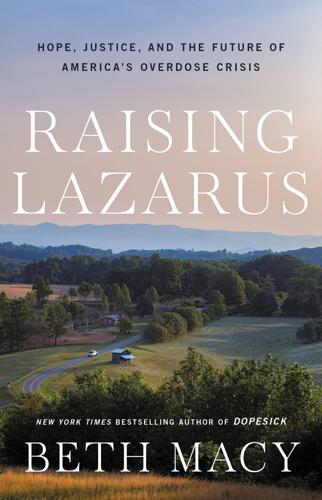
Raising Lazarus: Hope, Justice, and the Future of America’s Overdose Crisis
by
Beth Macy
Published 15 Aug 2022
Olive Branch was beginning to shift the way officials treated people with SUD in western North Carolina’s foothills. In 2016, Hickory named a new police chief just as syringe exchange became legal in the state. Years before, Mathis and Lowe trained local police to carry and use naloxone, the overdose antidote. At the same time, Black Lives Matter–led protests were drawing attention to the police killing of Keith Lamont Scott in nearby Charlotte, and Mathis was organizing Unity in the Community gatherings around the state to facilitate discussions between law enforcement and marginalized groups. Mathis told the new police chief that Olive Branch planned to expand services in light of the state’s new needle exchange law.
…
Social change typically starts on the periphery and picks up steam by way of close ties—not via chance encounters or geographic proximity but through what University of Pennsylvania sociologist Damon Centola calls “complex contagions.” It can take decades before an idea eventually gathers enough support to cause a full-throated shift in social norm. But when that shift finally takes place, it often seems to have occurred overnight. Think of the acceptance of same-sex marriage or growing support for Black Lives Matter—both movements took years before change-makers mustered enough support for their ideas to become mainstream. Centola has calculated that ideas reach such a critical mass not when a majority or 51 percent of minds are changed—as economic theorists had long claimed—but when just 25 percent of people are committed to changing the status quo.
…
Curtis Wright, the FDA medical review officer who approved OxyContin, reportedly had a web camera that directly connected him to Purdue’s Stamford headquarters and pledged to “go to bat” for Purdue—two years before tripling his salary by going to work for the company. Boston-based AIDS historian Dr. Joe Wright believed that the West Virginians’ best bet was to draw upon parallel movements shepherded by coal miners’ unions and Black Lives Matter organizers. But he worried that the recovery movement was too geographically and philosophically splintered, especially among twelve-steppers who remained opposed to bupe. “It can’t just be the moms of the dead leading the way—you also need the credibility of lived experience,” said Wright, who directs addiction treatment for Boston Healthcare for the Homeless.
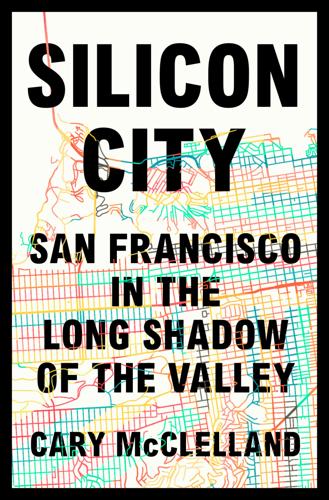
Silicon City: San Francisco in the Long Shadow of the Valley
by
Cary McClelland
Published 8 Oct 2018
And once you surround yourself with those people, then you get what you deserve. I mean, you get what you want. * On January 1, 2009, at the Fruitvale BART Station, Oscar Grant was handcuffed by the police, forced to lie facedown, and was shot in the back. His death sparked protests throughout the Bay Area, anticipating the Black Lives Matter movement. † A measure passed in 2002, sponsored by then Mayor Gavin Newsom, that cut direct cash assistance to the homeless in favor of funding shelters and other programs. PART V IF WE CAN MERGE THE TWO WORLDS “Tech” is not a monolith, the public sector is not a single body, and those who fight for social justice do not speak in a common voice.
…
Many of the solutions that will bring about racial-social justice, put an end to police violence, do those kinds of things—need to have, at their root, technology. Technology, to scale. Technology, for accessibility. Technology, for low-cost solutions and low barriers to entry. Technology in and of itself is going to be a critical part of the movement. Twitter itself has been a critical part of bringing Black Lives Matter to the forefront. That was in spite of what Twitter thought it was doing! This is the place where stuff is scalable, where we will start to build apps that are about access to clean water and not delivering food to my doorstep. This is the moment when we can merge the amazingness of Silicon Valley technology and the Bay Area’s roots in protest politics and social justice.
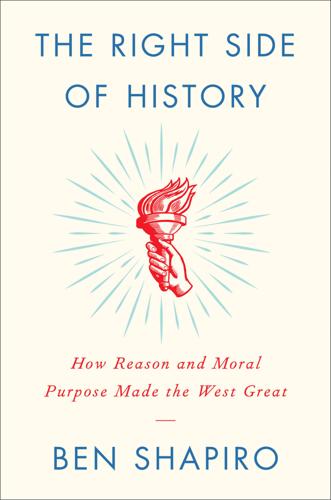
The Right Side of History
by
Ben Shapiro
Published 11 Feb 2019
It came from my sense—widely reflected, I think—that we’re tearing each other apart. That realization hit me on a precise date: February 25, 2016. Late in 2015, I’d started a speaking tour on college campuses, heading first to the University of Missouri. That campus exploded into the national news after Black Lives Matter protests against the administration; the football team vowed not to take the field for a scheduled game, despite the administration’s overzealous response to vague reports of isolated racist incidents, some of which were completely unsubstantiated. Student protesters declared a hunger strike, formed an encampment, and refused access to journalists.
…
Abel, 32 abolitionism, 94, 179, 180 abortion, 167 Abraham, 24, 29, 35, 55, 212–13 Achilles, 42 Adam, 32, 45 Adams, John, 14, 88, 92 Adorno, Theodor, 189–90 Akkad, 31 Alexievich, Svetlana, 153 Al-Farabi, 67 allegory of the cave, 42, 58 alt-right, xvi, 184, 202–3, 208 Alzheimer’s, 9 American Astronomical Society, 204 American dream, 187–88 American Enlightenment, 121–23, 127 American exceptionalism, 131 Amos, 180 Anaxagoras, 46 Anti-Defamation League, xxiii Antigone, 42 Antiochus IV, 57 anti-Semitism, xxiii, 146–48 Apsu, 23 Aquinas, Thomas, 67–71, 74–75, 90, 170, 212 Arab world, 65–66 Aristotle, 5–7, 14, 42–45, 48, 50–53, 55, 66–67, 69–71, 76–77, 80, 82–83, 87–88, 90, 102, 106–7, 162, 188, 216 Aryanism, 146 astronomy, 68–69 atheism, 10, 100, 104–5, 114–15, 123, 133, 140, 180 Augustine, Saint, 59–61, 63–64, 69–71, 88 Augustus Caesar, emperor of Rome, 31 Austria, 130, 149 autocracy, 152 Babbitt (Lewis), 187–88 Babeuf, Gracchus, 134 Babylonians, 28 Bach, Johann S., 216 Bacon, Francis, 77–79, 107, 111, 165, 170 Bacon, Kevin, 16 Bacon, Roger, 69 Baumeister, Roy, 207 Beauvoir, Simone de, 198 Becket, Thomas, 63 Beethoven, Ludwig van, 216 Benedict, Saint, 64 Bentham, Jeremy, 110 Bible, 5, 7, 9–10, 20, 24, 27–31, 34, 36–37, 47, 65, 81, 87–89, 101, 103, 106, 123, 133, 160, 180–82, 212, 216 Bill for Establishing Religious Freedom in Virginia, 91 Bismarck, Otto von, 145–46 Black Lives Matter, xix Black Panther Party, 198 Black Power (Carmichael and Hamilton), 198 blacks, xiv, xvi–xvii, 93–94, 187, 189, 198–201, 203, 206 Blackstone, 123 Bloom, Allan, 50 Boethius, 64 Boniface VIII, Pope, 74 Boreing, Jeremy, xx Bouie, Jamelle, 203 Branden, Nathaniel, 195 Brandt, Karl, 156 Breitbart News, xxii Britain, 121, 127 Brookhiser, Richard, 11 Brothers Karamazov, The (Dostoyevsky), 116 Browder, Sue Ellin, 168 Brubaker, William Rogers, 129 Buck v.

Internet for the People: The Fight for Our Digital Future
by
Ben Tarnoff
Published 13 Jun 2022
Shapiro, even found that polarization—defined here as a composite of eight measures, from how ideologically consistent someone’s views are to how rarely they split their votes across the two parties—has “increased the most among the demographic groups least likely to use the Internet and social media,” which is to say, people older than sixty-five. The polarization frame has a further problem: it evokes a false equivalence between Left and Right. It is certainly true that left-wing movements have benefited from social media. Occupy Wall Street, Black Lives Matter, and the candidacies of Bernie Sanders probably wouldn’t have reached the scale they did without Twitter and Facebook. The power shift from traditional media to the more distributed informational worlds of social media has created more room for social- democratic, socialist, and abolitionist ideas to circulate.
…
The advertising materials in the campaign for Proposition 22 struck a similar note, promoting the narrative that gig companies offer economic opportunities to Black and Latino workers; see Levi Sumagaysay, “Race Has Played a Large Role in Uber and Lyft’s Fight to Preserve Their Business Models,” MarketWatch, October 19, 2020. 133, On a spring morning … Noble, Algorithms of Oppression, 17. 134, In the 1990s, the idea … Television commercials: Lisa Nakamura, Cybertypes: Race, Ethnicity, and Identity on the Internet (New York: Routledge, 2002), 87–99. Prominent pundits: Ibid., 13, 106–7. “Ours is a world …”: Barlow, “A Declaration of the Independence of Cyberspace.” 134, Yet it was abundantly clear … “It wasn’t a question …”: Charlton McIlwain, Black Software: The Internet and Racial Justice, From the Afronet to Black Lives Matter (Oxford: Oxford University Press, 2020), 96. See ibid., 95–97, for a discussion of racism on Usenet. There is also the notorious case discussed by journalist Julian Dibbell in his piece “A Rape in Cyberspace,” initially published in the Village Voice in December 1993 and later included in revised form in My Tiny Life: Crime and Passion in a Virtual World (New York: Henry Holt and Company, 1998).
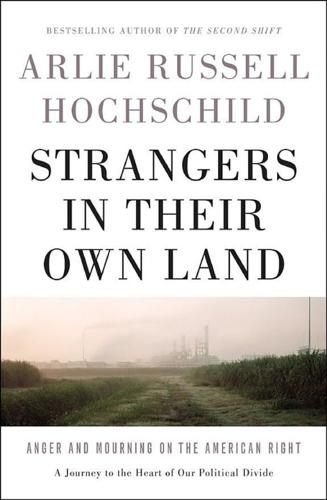
Strangers in Their Own Land: Anger and Mourning on the American Right
by
Arlie Russell Hochschild
Published 5 Sep 2016
A wiry older man in a black suit with a red tie holds up a sign, “KKK FOR TRUMP,” and flips it over to reveal, “TRUMP, DUKE FOR 2016.” At first I think he is a protestor, but looking at his face more closely, surmise he’s KKK. He flicks a security guard away with his arms but is finally escorted out. Black Lives Matter protestors also appear, having marched in along with other protestors whose signs say things like: “THIS VET IS NOT 4 TRUMP”; “SMALL HANDS, SMALL HEART”; “NO TRUMP, NO KKK, NO FASCIST USA.” Seeing these, Trump orders security, pointing to a man, “Get that guy out. Get him out.” Others in the crowd point to the dissenter.
…
In speeches to large, excited crowds, over the days to come, Trump tells his fans what he offers them. “I’ve been greedy. I’m a businessman . . . take, take, take. Now I’m going to be greedy for the United States” (wild cheers). He also draws a clear dividing line between Christians, to whom he promises the return of Christian public culture on one hand, and Muslims and protestors holding Black Lives Matter signs on the other. Some protestors he refers to as “bad, bad people. . . . They do nothing . . . you hear that weak voice out there? That’s a protestor. . . . They aren’t protestors. I call them disruptors.” In other speeches Trump said, in reference to a protestor, “I’d like to punch him in the face” (February 23, 2016).
…
People of the right tend to empathize with the rich; those of the left, with the poor worker (Donald Trump and Bernie Sanders being favorites). During the summer of 2015, I found the Facebook pages of my right-wing interviewees to be filled with positive stories of white police officers, and those of my Bay Area friends to be discussing the Black Lives Matter movement. Each side has its own empathy map. See “Empathy Maps” in my book, So How’s the Family? and Other Essays (Berkeley and Los Angeles: University of California Press, 2012 [1983]). 633 percent of Democrats and 40 percent of Republicans answered “yes” Shanto Iyengar and Sean Westwood, “Fear and Loathing Across Party Lines: New Evidence on Group Polarization,” American Journal of Political Science 59, no. 3 (2014): 45; Shanto Iyengar, Gaurav Sood, and Yphtach Lelkes, “Affect, Not Ideology: A Social Identity Perspective on Polarization,” Public Opinion Quarterly 76, no. 3: 405–31. 6partyism, as some call it, now beats race Cass R.
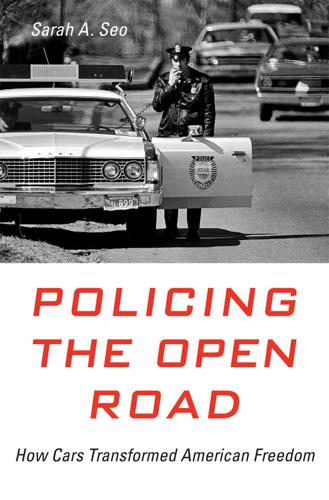
Policing the Open Road
by
Sarah A. Seo
Although Bland was not killed during the traffic stop, in 2015, the year of her death, 27 percent of police killings of unarmed citizens began with a traffic stop, according to one survey. Bland herself had been increasingly vocal on social media against police abuse and violence against African Americans, especially when the Black Lives Matter movement gained momentum after a police officer fatally shot eighteen-year-old Michael Brown. It turned out that what had happened in Ferguson, Missouri, on August 9, 2014, was part of a larger trend. The US Department of Justice opened an investigation of the Ferguson Police Department and found “a pattern of unconstitutional policing” that skewed along racial lines.
…
Journalists and policymakers have already announced the decline of the car’s central role in American life as younger generations prefer urban lifestyles and Uberization. Concerns about the arbitrary policing of Everyman sound out of touch with a racialized War on Drugs, Driving While Black, and Black Lives Matter. Public discussion is now focused on discriminatory policing.1 Although the concerns of the past may seem distant today, we are still grappling with the fallout from developments that occurred in the first few decades of the twentieth century. In response to the automotive revolution, American society shifted to policing as a mode of governance and updated its laws to sanction police discretion.
…
See Common law of arrests; Search incident to arrest Associational governance. See Voluntarism Automobile exception, 137–140. See also Carroll v. United States Beat policing, 104–106, 110 Beck, James, 114–115, 124, 127, 269 Berkeley Police Department, 31, 64–68, 81, 98 Black drivers, 31–32 Black Lives Matter, 5–6, 267 Black on Black, 214–216 Blackmun, Harry, 152–153, 253 Bland, Sandra, 5–7 Boyd v. United States, 125, 136 Brandeis, Louis, 17, 18, 130–132, 136 Brennan, William, 194, 251–252 Bright-line rules, 226, 242–243, 250–252 Brinegar v. State, 232–236, 247, 252, 254, 261, 262 Brinegar v.
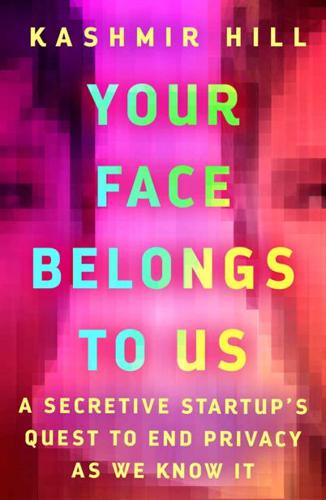
Your Face Belongs to Us: A Secretive Startup's Quest to End Privacy as We Know It
by
Kashmir Hill
Published 19 Sep 2023
Brown’s death sparked a national uproar amid a building Black Lives Matter movement. The officer claimed that the unarmed Brown had posed a threat to his life. In defense of the officer, Johnson published photos from Brown’s Instagram account that he said suggested a violent streak, and sued unsuccessfully to get Brown’s juvenile court records. That was all chum in the alt-right water, and it worked. GotNews got views. Johnson’s investigations frequently targeted Black men. In 2015, Johnson was banned from Twitter after saying he wanted to raise money to “take out” Black Lives Matter activist DeRay McKesson. He claimed to have proof that Barack Obama was gay and that Cory Booker, who was then the Democratic mayor of Newark, did not actually live in Newark.
…
See also facial recognition; fingerprints/fingerprinting Abrams case and, 209, 211, 212 care with in Illinois, 151, 158 communities of color and, 239 lack of laws regarding, 100 legislation protecting, 82–87, 223, 240 orders to delete information on, 192 possible expansion of use of, 194 use of in United Kingdom, 215–220 BIPA (Biometric Information Privacy Act; Illinois) Clearview AI and, 158, 204, 205, 206, 213 lawsuits filed under, 151–152 passage of, 86 SceneTap and, 122 Bitcoin, 81, 222–223 Black Hat, 108, 110 Black Lives Matter, 11 Blackwater, 51–52 Bledsoe, Woody, 37, 38, 39, 40, 125 Bloomberg LP, 81 Blue Lives Matter, 232 BMI predictors, 32 Booker, Cory, 11 border walls, sensor-based, 57 Borthwick, John, 112–113 Boston Marathon bombing, 287n106 Bosworth, Andrew “Boz,” 243–244 Brandeis, Louis D., viii, 204–205 Bratton, William, 129–130 Bridges, Ed, 308n219 Brill, Julie, 122, 125 Broderick, Matthew, 117 “broken windows” policing, 129 Brown, Dan, 247 Brown, Michael, 11 Brululo, Bridget, 292n134 Buckby, Jack, 272n50 Buolamwini, Joy, 156 Burning Man, 8–9, 10 Bush, George W., ix, 11, 64, 157, 209 Buzz, 102 BuzzFeed News, 165–166 C Cagle, Matt, 137–138 Cahill Gordon & Reindel, 205–206 Cambridge Analytica scandal, 6, 92 cameras.

Empire of AI: Dreams and Nightmares in Sam Altman's OpenAI
by
Karen Hao
Published 19 May 2025
Around the same time, new concerns emerged from a third group of employees worried about the impact that spectacular text-generation abilities could have in the midst of major political, social, and economic upheaval in the US. By May 2020, the pandemic had already created a faster rise in unemployment than during the Great Recession. In the same month, Derek Chauvin, a police officer in Minneapolis, murdered George Floyd, a forty-six-year-old Black man, setting off massive Black Lives Matter protests around the country and the rest of the world. The team was also concerned about the impending US presidential election. But rumors began to spread within OpenAI that Google could soon release its own large language model. The possibility was plausible. Google had published research at the start of the year about a new chatbot called Meena, built on a large language model with 1.7 times more parameters than GPT-2.
…
In 2018, the book Algorithms of Oppression by Safiya Umoja Noble, a professor of information, gender, and African American studies at the University of California, Los Angeles, had extensively documented the replication of racist worldviews in Google’s search results, such as by showing far more sexually explicit and pornographic content for “Black girls” than “white girls” and tropes about Black women being angry. Google at the time had used an older generation of language models to curate those results, which in extreme cases, Noble argued, may have also provoked racial violence. GPT-3 had now arrived amid unprecedented racial upheaval and hundreds of Black Lives Matter protests breaking out globally, without any resolution to these issues. OpenAI had simply admitted in its research paper describing the model that GPT-3 did indeed entrench stereotypes related to gender, race, and religion, but the measures for mitigating them would have to be the subject of future research.
…
“Or does it just happen to people like me who are constantly dehumanized?” At Google, she had grown used to colleagues minimizing her expertise, she continued, but now she wasn’t even being allowed to add her voice to the research community. After all of Google’s talk about diversity in the aftermath of the Black Lives Matter upheaval, what had it amounted to? “Silencing in the most fundamental way possible,” she wrote. The following evening, in Austin, Texas, Gebru received a panicked message from a direct report. “You resigned??” Gebru had no idea what her report was talking about. In her personal email, she found a response from Kacholia: “We cannot agree to #1 and #2 as you are requesting.
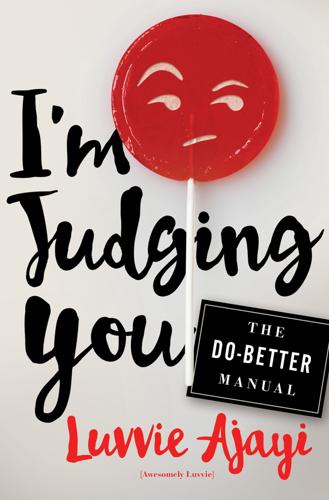
I'm Judging You: The Do-Better Manual
by
Luvvie Ajayi
Published 12 Sep 2016
Being able to move and navigate in the world unaware of how race impacts people of color must give life a rosy tint that makes it easier to deal with. However, it makes it harder for those of us who do not have that setting. It’s the well-meaning, yet offensive aunty of the “All Lives Matter” crew, the folks who have to respond with that anytime we say “Black Lives Matter.” We know all lives should matter, but ALL lives cannot matter until Black lives matter, too. I’m not sure who I side-eye more, though: Team I Don’t See Color or Team Let Me Honor You by Painting My Face Black for Halloween. One group thinks they’re laudable for not acknowledging racial differences, and the other thinks being represented by face paint should make us feel appreciated.
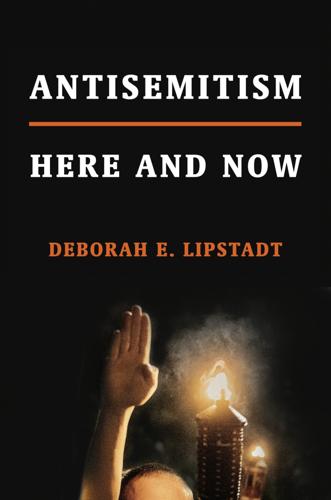
Antisemitism: Here and Now
by
Deborah E. Lipstadt
Published 29 Jan 2019
Both were described as “forms of racial supremacy” that are merging “seamlessly.” During the protest, the participants chanted: “No justice! No peace! No war in the Middle East! No Zionists, no KKK, resisting fascists all the way.”1 In April 2017 at the University of Michigan, a group of students associated with Black Lives Matter hung posters on campus decrying an array of prejudices. There was no mention of antisemitism. This absence was not lost on Jewish students, who had been targeted by antisemitic incidents earlier that year. In a sad bit of irony, that night a local (probably nonstudent) white nationalist, alt-right group tagged the posters with Happy Merchant stickers.
…
PROGRESSIVISM AND ZIONISM: ANTISEMITISM BY SUBTERFUGE? 1. Matthew Stein, “Students for Justice in Palestine Defends Violence against Pro-Israel Groups, Calls Them ‘Fascists,’ ” College Fix, September 17, 2017. 2. Colin Beresford and Alon Samuel, “White Nationalist Group Puts Up Anti-Semitic Stickers on Black Lives Matters Posters,” University of Michigan Daily, April 26, 2017; Tilly Shames, Director, University of Michigan Hillel, email, April 19, 2018. 3. Diane Lederman, “More than 200 UMass Students Call for Free Education, $15 Minimum Wage, Greater Diversity at Rally,” Mass Live, November 12, 2015. 4.
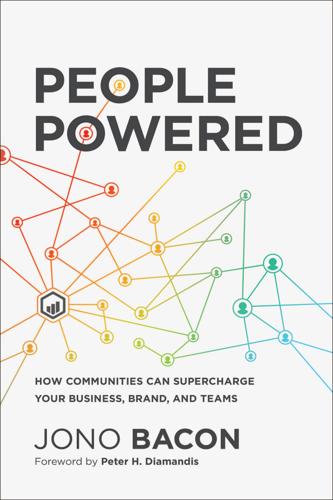
People Powered: How Communities Can Supercharge Your Business, Brand, and Teams
by
Jono Bacon
Published 12 Nov 2019
He felt his work didn’t have meaning. We need our work to have meaning, and the communities that succeed the most are clearly able to draw a connection between the work of their members and the broader mission of the overall community. This is why activist groups such as Amnesty International, the Sierra Club, and Black Lives Matter generate so much devotion: their members feel their work has much broader meaning. Somewhat magically, when we do feel our work has meaning, it gives us a turbo boost of confidence to step up and have impact. This is where the big, brave ideas come from, emboldened by the respect we now have in the community.
…
Index Abayomi, 1–3, 7, 9, 19, 35, 278 abuse of system, 158, 217, 233, 234 access, 7–8, 16–17, 54–55, 225, 226 accountability, 139, 146, 148, 149 actions, tracking, 158–59 active participation, 109 adaptability, 176–77, 268–69 Adobe, 244 advertising, 195–96 advocacy, 23–24, 49, 111 Airbnb, 57 ambiguity, 155–56 American Physical Society, 139 Amnesty International, 18 Anderson, Chris, 46, 47 Android platform, 65 Ansari XPRIZE, xviii Apache, 6, 26 Apple, 6, 58, 128 approachability, 69–70 Ardour, 44, 52, 66 Areas of Expertise, 172–75 Ariely, Dan, 17 assets, building, 68–69 assumptions, 137, 271 asynchronous access, 54 attendance, 157 attendees, summit, 247–49 audience personas, 100, 108–19 in Bacon Method, 33 choosing, 109–12 content for, 194–95 creating, 114–16 examples of, 116–19 on Incentives Map, 230–32 On-Ramp Model for, 131, 135–38 Participation Framework for, 130 prioritizing, 112–13 productive participation by, 162–67 and relatedness, 107 audience(s) access to, 7–8 assumptions about, 137 and community strategy, 13 irrational decision making by, 101–8 for local communities, 5 surprising, 73–74 understanding your, 33, 99–100 authenticity, 75, 111, 183, 224 authority, 55–56, 200–201 Author persona, 166–67 automated measuring of condition, 217–18 autonomy, 105–6, 123 awareness, 22–24, 59–61, 192 Axe Change service, 14 Axe-Fx processors, 49–50 backlog, 150–51 Bacon Method, 32–34 Bahns, Angela, 47 Bassett, Angela, 237 Battlefield, 24, 128, 228 behavioral economics, 102–4 Bell, Alexander Graham, 153 belonging, sense of, 15, 18, 20, 143, 187, 215 Bennington, Chester, 183, 184 Big Rocks, 33, 88–96 and cadence-based cycles, 168–70 in community strategy, 94–95 and critical dimensions, 157, 161 defined, 88–89 departmental alignment on, 263 examples of, 91–94 format and key components of, 89–91 and Quarterly Delivery Plan, 34, 145–46, 148, 149 realistic thinking about, 95–96 Black Lives Matter, 18 blocked (status), 147 blogs, 193, 275 Bosch, 13 brand awareness, 24, 59–60 brand recognition, 85 Branson, Richard, 190 Buffer, 214 Build Skills stage, 132, 136, 137 business cards, 241–42 buy-in, 67, 85 cadence, operating on, 34, 264–66 Cadence-Based Community Cycle, 167–70, 264 Canonical, 1, 121, 151, 167, 245 capabilities, persona, 114, 116–18 Capital One, 13 career experience, 83 CasinoCoin, 244 Casual members, 129, 140–42 advancing, 196–97 engagement with, 198–99 incentivizing, 219, 221, 226–27 maturity model for, 166 mentoring, 203 CEOs, reporting to, 260 certainty, 105 Champions model, 49–52, 63–64, 66–67, 113, 260 chat channel, 250 check-ins, 267 civility, 187 clarity, 69–72, 138–39, 234 closing party, 250 coaching, 82–83, 205–6 Coca-Cola, 57 Coffee Bean Rewards app, 145 Colbert, Stephen, 73–74 collaboration, 8–9, 74–75, 185–86 Collaborators model, 52–56, 64–67, 86, 260, see also Inner Collaborator community; Outer Collaborator community commitment, 122 communication, 121 Community Associate, 255 Community Belonging Path, 16–20 community building, 14 additional resources on, 274–76 Bacon Method of, 32–34 as chronological journey, 127–28 consultations on, 276–77 continuing to learn about, 272–74 defining your value for, 77–78 end-to-end experience in, 125–26 fundamentals of, 15–16 getting started with, 37–38, 62 key principles of, 67–74 monitoring activities related to, 206–8 risks associated with, 154–55 tools for, 8 see also successful community building community–community engagement, 157 community culture, 30–31, 70–72, 179–88 Community Director, 254–58, 260 Community Engagement Model(s), 49–67 in Bacon Method, 33–34 Champions model, 49–52 Collaborators model, 52–59 and Community Value Statement, 80 Consumers model, 45–48 importance of selecting, 43–45 and marketing/public awareness, 59–61 scenarios for selecting, 61–67 Community Evangelist, 255 community(-ies) defined, 13–15 digital, 2–3, 5–13, 237 experimenting in, 123 foundational trends in, 7–9 future of, 35, 277–79 local, 3–5 power of, 7 social dynamics of, 15–16 value generated by, 20–29 Community Launch Timeline Template, 191 Community Leadership Summit, 179, 239 community management staff, 254–61 Community Managers, 78, 125, 126, 195, 255–56, 260–61 Community Mission, 40–43, 169 Community Mission Statement, 42, 80, 113 Community On-Ramp Model, 33–34, 130–38 community overview cards, 241–42 Community Participation Framework, 128–45 building community based on, 151–52 and building engagement, 138–44 Community On-Ramp Model in, 130–38 described, 128–30 engagement strategy to move members along, 196–206 focusing on creativity and momentum in, 209 incentives and rewards in, 145 incentives on, 211–13 incentivizing transitions in, 218–22, 226–27 mentoring in, 202–6 Community Personal Scaling Curve, 184 Community Persona Maturity Model, 163–67 Community Promise, 70–71 Community Specialist, 255 community strategy, 30 Big Rocks in, 94–95 changing, 96, 208 control over and collaboration on, 74–75 Core members’ contributions to, 201 execution of, 253–54 importance of, 13 integration of, in organization, 261–68 learning from implementation of, 268–69 planning, 39 Regular members in, 143 risks with, 29–32 and SCARF model, 105–8 variability in, 30 community summits, 245–51 finalizing attendees and content for, 247–49 follow through after, 250–51 running, 249–50 structure for, 246–47 community value, 164–67 Community Value Proposition, 175 Community Value Statement, 80–88 and Big Rocks, 89, 95 in cadence-based cycle, 169 maintaining focus on, 97 and on-ramp design, 135–36 prioritizing audience personas based on, 113 updating, 83–84, 87–88 value for community members in, 80–84 value for organization in, 84–88 company–community engagement, 157 competitions, 194 complete (status), 147 CompuServe, 5 conditions, for incentives, 216–18, 230–32 Conference Checklist, 241 conferences, 194, 195, 239, 240–43 connection(s) desire for, 9 for Regular members, 200 constructive criticism, 122–23 consultations, on community building, 276–77 Consumers model, 45–48, 62–63, 260 content for community summits, 247–49 in Growth Strategy, 192–95 for launch, 189 as source of value, 82 Content Creators (persona), 110–11, 113–15 content development in Champion communities, 49–50 in Collaborator communities, 52–56 by communities, 26–27 as source of value, 82, 86–87 contests, 194 contributions, to communities, 17, 19 control over community strategy, 74–75 over Regular members, 143 co-organizing events, 239 Core members, 129, 140 advancement for, 196–97 characteristics of, 143–44 at community summits, 242 engagement with, 201–2 incentivizing, 215, 219–20, 222, 227 maturity model for, 165, 166–67 mentoring for, 203, 205 percentage of, 141 creativity, 209 critical dimensions, 156–58, 161 criticism, 122–23, 176 cross-functional communities, 88 crowdfunding, 23–24 Cruz, Ted, 73–74 culture, community, see community culture Culture Cores, 181–88 customer engagement, 20–22 customer growth, as source of value, 85 Customer Relationship Management (CRM) system, 21 Cycle Planning, 168 Cycle Reviews, 268 dashboards, 160–61 data analysis, 207, 208 Davis, Miles, 182 Debian, 6, 26 decision making irrationality of, 101–8 pragmatism about, 184 SCARF model of behavior, 104–8 System 1 and 2 thinking, 102–3 unpopular decisions, 186 decision paralysis, 38, 106 dedicated events, organizing, 239–40 delayed (status), 147 delivery commitment to, 263–64 successful, 162, 167–70 delivery, as critical dimension, 157 delivery plans, see Quarterly Delivery Plan demonstrations, 194, 244 departmental alignment, 263–64 developer community, Big Rocks for, 93–94 Developer Relations personnel, 255 Developers (persona), 111, 114, 115 Diamandis, Peter, 40 Dickinson, Emily, 211 difficulty, of condition, 217 diffusion chain, 54 Digg, 12–13 digital communities early, 5–7 evolution of, 9–13 foundational trends in, 7–9 in-person events for, 237 as local and global communities, 2–3 digital interaction, and in-person events, 251 digital training, 243–44 dignity, 17 discipline, for community building, 31 Discourse, 66, 228, 233, 267 discovery, in gamification, 233 discussion forums, 49 Disney, 128 Docker, 12, 56 documentation, 274 domain expertise, 256, 257 Dreamforce conference, 22 Drupal, 204 Early Adopter program, 189–90 Editorial Calendar, 192–95 education (about product or service) in communities, 24–25 as source of value, 82 efficiency, as critical dimension, 157 ego calibration, 234–35 empathy, 186–87 employees openness for, 182–83 training and mentoring for, 266–68 empowerment, 55–56, 222 end-to-end experience, 59, 125–26 engagement as Area of Expertise, 174 Big Rocks related to, 93–94 with community, 72 in Community On-Ramp Model, 133–34, 136, 137 and Community Participation Framework, 138–44 in Community Participation Framework, 129 at conferences, 242 critical dimensions related to, 157 customer and user, 20–22 and Growth Strategy, 192 positivity and, 185 quality of, 159 rules for engaging with community members, 119–22 and submarine incentives, 226 and understanding audience, 99–100 Engagement Strategy, 181, 196–206 engineering department, community leadership staff reporting to, 260 equal opportunity, in Collaborator communities, 55, 58–59 estimated units, on Incentives Map, 231, 232 Event Evolution Path, 238–40 Event Organizers (persona), 111, 114–15, 117–18 events in-person, see in-person events online, 193 Everett, Noah, 224 execution of community strategy, 253–54, 268 successful, 162, 167–70 expectations clear, 70–72 in gamification, 234 in great experience, 127 related to Big Rocks, 95–96 experience, of audience persona, 114, 116, 118 experimentation, 123, 171 to build organizational capabilities, 206–8 with events, 251 expertise of community leadership staff, 256, 257 of community members, 28 in digital communities, 8 as source of value, 83 Exploding Kittens game, 24 extrinsic rewards, 214, 215, 216 on Incentives Map, 231 submarine incentives for, 224–25 Facebook, 13, 24 failure, as opportunity for improvement, 151 fairness in SCARF model, 107–8 of submarine incentives, 225 Fans as audience persona, 110, 113 community model for, 44, 62–63 fears, of audience persona, 114–15, 117, 118 Fedora, 66, 264 feedback about audience personas, 116 on Big Rocks, 94–95 from communities, 72–73 and community culture, 186 from Core members, 202 on mission statement, 41 on Organizational Capabilities Maturity Model, 176 in peer-based review, 204 from Regular members, 143, 200 Figment community, 10 Final Fantasy, 128 financial commitment, and creating value, 96 Firefox, 23, 209 Fitbit, 139, 145 focus for community building, 31 on Community Value Statement, 97 follow through after community summits, 250–51 after conferences, 242–43 formal experience, 114 forums, 91–92, 158 founders, community leadership staff reporting to, 260 Four Rules for Measuring Effectively, 156–61 Fractal Audio Systems, 14–15, 49–50 freeloaders, 54 fun, in community experience, 84 gamification, 232–35 Garmin, 190 GitHub, 24 global communities, digital communities as local and, 2–3 Global Learning XPRIZE Community, 189 GNOME, 26 GNU community, 6 goals for community summit sessions, 249 of Core members, serving, 202 for employee participation with community, 267 in incentives, 214 on Incentives Map, 230–32 for new hires, 259 Google, 13, 57, 58, 65, 128 Gordon-Levitt, Dan, 11–12 Gordon-Levitt, Joseph, 11–12, 219 governance, in Inner Collaborator communities, 66 gratification, 120, 127 group dynamics, 100, 119–22 group experiences, referral halo for, 61 grow, willingness to, 257 Growth (Area of Expertise), 174 growth, as critical dimension, 157 Growth Strategy, 181, 188–96 growth plan, 192–96 launch plan, 189–91 guest speakers, 238–39 habits, building, 142, 267 HackerOne, 69–70, 194, 214 Harley Owners Group, 132 help asking community members for, 120, 144 as source of value, 82 high-level objectives, see Big Rocks hiring, 27–29, 256 hiring away approach, 258–59 HITRECORD, 11–12, 219 Hoffman, Reid, 152 HomeRecording.com community, 81 humility, 187, 257 hypothesis testing, 207–8, 271–72 IBM, 6 idealism, 153–54 IGN (Imagine Games Network), 47–48 Ikea Effect, 101–2 impact in Community Belonging Path, 18 and Engagement Strategy, 199 multiplying, with communities, 2, 3, 9 imperfections, 188 imposter syndrome, 142 inauthentic participation, 233 incentives, xvii–xviii, 197 in Community Participation Framework, 145 on Community Participation Framework, 211–13 components of, 213–18 in Growth Strategy, 196 maintaining personal touch with, 235 in Outer Collaborator communities, 65 power of offering, 213–18 stated vs. submarine, 218–27 Incentives Map, 34, 229–32 Incentive Transition Points, 218–19 stated incentives for, 221–22 submarine incentives for, 226–27 incentivization building engagement with, 140 in Community Participation Framework, 130 Incubation stage, 171, 172 independent authenticity, 111 Indiegogo, 23 individual value, 164–67 influence, psychological importance of, 71 Influencing phase (Product Success Model), 52 information in community, 121 in digital communities, 8 infrastructure, for launch, 189 Inner Collaborator community, 56–58, 65–67, 86, 229 Inner Developers (persona), 111 in-person events community summits, 245–51 conferences, 240–43 and digital training vs. training workshops, 243–45 Event Evolution Path and strategy for, 238–40 fusion of digital interactions and, 251 in Growth Strategy, 195 launch, 190–91 in local communities, 4–5 managing, 237–38 value of, 77–78 in progress (status), 147 insight, from communities, 28, 72–73 intangible value, 78–79, 83 Integration stage, 171–72 Intel, 57 intentionality, 39, 69–70, 187 Intention stage, 171, 172 internal communities, 13 Community Engagement Model for, 66–67 importance of culture for, 180 personal interaction in, 185 value of, for community members, 83 Internet, 5–7, see also digital communities Internet Explorer, 23 intrinsic rewards, 215, 224–25 involved teams, on Quarterly Delivery Plan, 147, 148 Iron Maiden, 39 Jeep, 139 Jenkins, 26 job candidates, community members as, 27–29 job descriptions, community leadership staff, 258 Jokosher, 199 jQuery, 204 Kahneman, Daniel, 102 karma (Reddit), 228 Key Initiatives, for Big Rocks, 90, 91–93 keynote addresses, 245–47 Key Performance Indicators (KPIs), 90–94 cadence-based cycles for delivery of work on, 169, 170 on Quarterly Delivery Plan, 146, 148–50 tracking progress on, 159–60, 160–61 Kickstarter, 12, 23 Kubernetes, 26, 53, 66, 134, 204 labor, community members as source of, 120 The Late Show with Stephen Colbert (television series), 73–74 launch event, 190–91 launch plan, 189–91 leaders, community, 3, 4 leadership as Area of Expertise, 174 and autonomy in organizations, 123 clear and objective, 69–70 in community culture, 186 community involvement by, 262 by Core members, 144 in Inner Collaborator communities, 66 leadership value, 165, 167 lead generation, 28–29 A League of Their Own (film), 39 learning about community building, 272–74 from community strategy implementation, 268–69 Learning phase (Product Success Model), 51 Lego, 9, 10 Lego Ideas, 10 Lenovo, 57 Leonardo da Vinci, 37 Lindbergh, Charles, xvii Linkin Park, 183 Linux, 6, 26, 273–74 Linux Foundation, 26, 74 live stream, 250 local communities decline of, 3–5 digital communities as global and, 2–3 The Long Tail (Anderson), 46 Ma, Jack, 77 Ma Jian, 125 Make:, 195 Management (Area of Expertise), 173–74 marketing, 22–24 audience personas in, 108–9 and Community Engagement Model, 59–61 as source of value, 85 marketing department, community leadership staff reporting to, 260 Mastering phase (Product Success Model), 51–52 Mattermost, 214 maturity models, 34 Community Persona Maturity Model, 163–67 Organizational Capabilities Maturity Model, 171–76 meaningful work, 9, 17–18, 27, 41 measurable condition, 217 measurable goals, 160 measurable value, in Community Persona Maturity Model, 164–65 measuring effectively, rules for, 156–61 meeting people, as source of value, 82 meetings after conferences, 242–43 with conference attendees, 241 in local communities, 4–5 Meetup.com, 133 meetups, organizing, 239 mentoring for Casual members, 142 for community-building employees, 267–68 for community leadership staff, 256 by community members, 29 in Community Participation Framework, 202–6 of new hires, 259 as source of value, 82–83 meritocracy, 55 message boards, 5–6 Metal Gear Solid, 128 Metrics (Area of Expertise), 175 Mickos, Mårten, 69–70, 74, 262 Microsoft, 6, 13, 23 Minecraft, 25 Minecraft Forum, 25 Minecraft Wiki, 25 Minimum Viable Product, 68–69 mission statements, 32, 42, 80, 113 momentum, in Engagement Strategy, 198 momentum effect, 209 in Growth Strategy, 188, 195 in marketing and brand/product awareness, 60–61 motivations for audience persona, 114, 117, 118 for community members, 119–20 Mozilla, 23 MySpace, 12–13 NAMM music show, 239 need, for community, 30 networking, 28–29, 242 New York Times, 23 Nextcloud, 134 niche interests, 45–47 Nintendo, 9, 228 norms, cultural, 70, 130, 180, 182 notification, 147, 148 not started (status), 147 objectives, see also Big Rocks objectivity, of leadership, 69–70 onboarding, 107 in Community Participation Framework, 129 Community Persona Maturity Model for members in, 164, 165–66 gamification for, 233 importance of, 130–31 in Outer Collaborator communities, 65 online events, 193 On-Ramp members, incentivizing, 218–19, 221, 226–27 openness, 182–84 open-source code, 26, 53 open-source communities, 57–58, 261 Open Source community, 10 OpenStack, 26 optimization, in Engagement Strategy, 199–200 Optimizing phase (Product Success Model), 51 organizational capabilities building, with communities, 27–29 cadence-based cycles for building, 265–66 executing strategy to build, 253–54 experimentation to build, 206–8 success in terms of building, 162, 171–76 organizational experience, of community members, 122 organizational values, and community culture, 182–88 organizations community members as labor for, 120 identifying value for, 84–88 integration of community strategy in, 261–68 internal communities at, 13 leadership and autonomy in, 123 Orteig Prize, xvii Outer Collaborator community, 56–59, 64–65, 86 Outer Developers (persona), 111–12, 136–37 Owner of Big Rocks, 90, 91 in cadence-based cycles, 168–69 on Incentives Map, 231, 232 on Quarterly Delivery Plan, 147, 148 Participant Rewards Peak, 215–16 participation active, 109 audience personas and types of, 109 by Casual members, 142 in Consumer communities, 48 inauthentic, 233 productive, 162–67 PayPal, 13, 57 Pebble Smartwatch, 23 peer-based review, 203–5 peer-review process, 55 peer support, 139–40 peer value, 164–67 Peloton, 133, 233 Penney, James Cash, 253 people person, 256–57 perfection, 268–69 performance review, community engagement in, 262 permanence, of communities, 14 personal interaction, 184–85, 199 personal touch with incentives, 235 and submarine awards, 222–26 personal validation, 120, 224–25 personas, audience, see audience personas Photoshop “Magic Minute” videos, 244 PlayStation, 233 podcasts, 194 Pop!
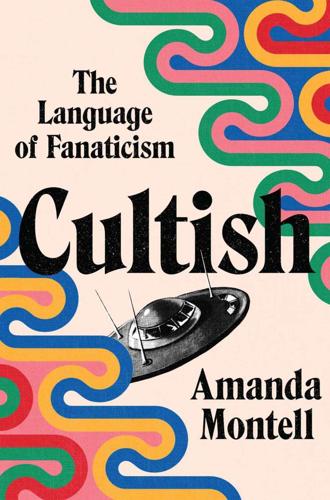
Cultish: The Language of Fanaticism
by
Amanda Montell
Published 14 Jun 2021
Commodifying the language of Eastern and Indigenous spiritual practices for an elitist white audience while erasing and shutting out their originators might not seem “culty”—it might just seem commonplace, which is exactly the problem. For years, CrossFit HQ denied any suggestion that its culture was unwelcoming to Black members. But during the Black Lives Matter protests in June 2020, Greg Glassman shot off a series of racist emails and tweets (in one, he responded to a post about racism as a public health crisis with “It’s FLOYD-19”), prompting white CrossFitters to finally start coming around to what many Black folks had known for decades: The place was not really “for everyone.”
…
It very well might bring you fulfillment and connection for forty-five minutes at a time, but you’d still be you without it. You’re already blessed with all you need. Part 6 Follow for Follow i. It’s June 2020, one of the most contentious months in contemporary American history, and my Instagram algorithm is on the fritz. Amid posting about the global COVID-19 pandemic and Black Lives Matter, while keeping up with all the New Age swamis, MLM recruiters, and conspiracy theorists I’ve followed over the past year, my Explore page can’t seem to tell whether I’m a social justice warrior, a Plandemic truther, an antivaxxer, a witch, an Amway distributor, or just really obsessed with essential oils.
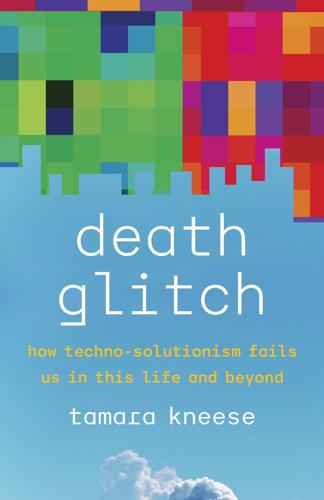
Death Glitch: How Techno-Solutionism Fails Us in This Life and Beyond
by
Tamara Kneese
Published 14 Aug 2023
After the shootings faded from the news cycle, the victims’ profiles remained well-visited shrines for people who knew them. Turning social media platforms into mourning sites exceeds their utilitarian purpose. Deeming who is counted as a legitimate user affects who is remembered online and who is not. Over the past several years, online memorials have become part of larger social movements like Black Lives Matter. As the sociologist and STS scholar Ruha Benjamin put it, calling upon the recent dead “is a call for solidarity and an insistence that Black Afterlives Matter. It is part of a broader repertoire of invoking the slain to vivify collective action.”22 Hashtags like #SayHerName became calls for Black women, especially Black trans women, to be counted among the dead and memorialized alongside murdered Black men.23 Online memorials are now intimately connected to hashtag activism, in addition to providing the scaffolding for individual remembrance.24 Grassroots efforts around memorialization can be a form of resistance—such as when hashtags and viral videos increase the visibility of the victims of police shootings—even if memorialization is simultaneously reinscribed by late capitalism’s demands for constant connectivity.
…
See also Singularity Aspen, Bina, (i) attention economy, (i), (ii), (iii), (iv) Bain, Vanessa, (i) Banner, Olivia, (i)n51 Barbeau, Joshua, (i)n9 Barbo, Cody, (i), (ii) Barbrook, Richard, (i) Barlow, John Perry, (i), (ii)n24 Barthes, Roland, (i) Baym, Nancy, (i)n26 Beirut bombings (2015), (i) Bell, Gordon, (i), (ii) Benjamin, Ruha, (i) Berlant, Lauren, (i) Bezos, Jeff, (i), (ii) Bhattacharya, Tithi, (i) Bialecki, Jon, (i)n71 Bina48, (i) Bitmark, (i) Black Lives Matter, (i) Black Mirror (sci-fi series), (i) Black Panther (Okorafor), (i) Boas, Franz, (i) bodies, (i) Bonchek Adams, Lisa, (i) Borchard Foundation on Law and Aging, (i) Boston Estate Planning Council, (i) Bouk, Dan, (i)n50 Bowker, Geoff, (i)n44 Bradbury, Ray, (i) Brand, Stewart: Eagleman and, (i)n4; Long Now Foundation and, (i), (ii), (iii), (iv), (v); power relations and, (i); WELL (electronic community) and, (i), (ii) “A Brief History of Death Switches” (Eagleman), (i) Brilliant, Larry, (i) Brock, André, (i)n21 Brooks, Lonny, (i)n44 Brubaker, Jed, (i) Buolamwini, Joy, (i)n72 Bureau of Labor Statistics, (i) Butler, Octavia, (i) Californian Ideology.
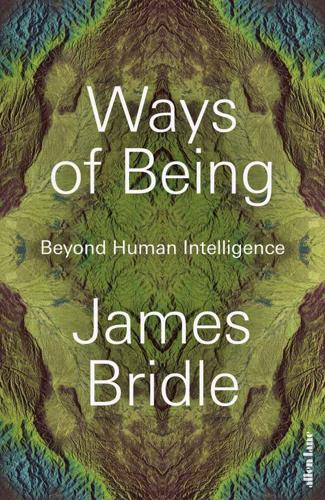
Ways of Being: Beyond Human Intelligence
by
James Bridle
Published 6 Apr 2022
To say nothing of the existential dread imposed by a system freeze, malfunction, or loss of data, or of the vast amounts of heat, carbon dioxide and manufacturing wastes pumped into the atmosphere. This continuity between technology, the body and the biosphere – this ecology – is perceptible in language, as it is in culture, sociality and our relationships with one another and the more-than-human world. One of the impacts of the Black Lives Matter movement has been a reassessment of computational language. Back in 2003, the County of Los Angeles asked that manufacturers, suppliers and contractors stop using the terms ‘master’ and ‘slave’ on computer equipment. The request followed a discrimination complaint by a county employee who objected to seeing such terms being applied to machines – in this case, a videotape replicator.21 Historically, such terms have been used by computer scientists to designate primary and secondary repositories of stored data.
…
In 2020, the debate gained renewed attention when Regynald Augustin, a Black engineer at Twitter, pushed for the platform to change its coding guidelines after receiving an email notifying him about an ‘automatic slave rekick’. Twitter also dropped the use of the term ‘blacklist’ to denote banned users or terms, partly in response to pressure from the Black Lives Matter movement.22 The software-development platform GitHub, with 50 million users, and the ubiquitous database system MySQL, among others, followed suit. While changes to language are often dismissed as performative at best, and pointless at worst, they come from meaningful origins and have meaningful consequences.
…
Ross 181–3, 185 aspens 77 astrobiology 87 atomic bomb 224–5 Augustin, Regynald 156 Australopithecus 88 Author of the Acacia Seeds, The 169–71 automatic machine see Turing machine Autonomous Trap 26–7, 26, 204 autonomous vehicles 23–6, 65, 275 avocados 108 Babbage, Charles 30 baboons 32, 52–55, 64, 74 bacteria 17, 87–8, 104–10, 236–7, 248, 300 badgers 291 Barabási, Albert-László 81 Barad, Karen 84–6, 130, 249 Basilicata 138, 140–43 bears 1, 89–90, 92, 266, 290–91, 293–4 beavers 256 BeeAdHoc (computer programme) 262 beech 125, 142 Beer, Stafford 184–91, 211, 214–15, 230 bees 145, 187, 258–62 Bergson, Henri 279 Berners-Lee, Tim 81 birch 60, 118, 124, 138, 279 Black Language 168 Black Lives Matter 155 Blake, William 16 Blas, Zach 208 Boeing X-37 136 Bonner, John Tyler 238–9 bonobos 37, 50, 98 Boran (people) 146 Bornmuellera tymphaea 309 Boulez, Pierre 229 Boulle, Marcellin 90 Bouvet, Joachim 234 bow-wow theory 148 Brainfuck (programming language) 161–2 Brassica juncea 310 Bruniquel cave 92 buen vivir 268 cacti 64, 235, 294 Cage, John 227–35, 241, 242, 312 Cambridge Analytica 155 cantu a tenòre 148 capuchin monkeys 163 Caputo, Francesco 143 Caputo, Matteo 143 caribou 120 Carrol, Lewis 180 Carson, Rachel 12, 15 Castro, Eduardo Viveiros de 18 caterpillars 65 Cecilia (chimpanzee) 265 cedars 138 cephalopods 47–51 CERN 81 Charlotte (gibbon) 32 Chassenée, Bartholomew 252 Chaucer, Geoffrey 152 Chernobyl 293 Chesapeake Bay Model 202, 203, 204 chestnuts 61, 118 Children of Time 49 chimpanzees 36–37, 50, 55–6, 88, 98, 145 choice machine see oracle machine Christ Stopped at Eboli 140 Christmas Island 293, 295 Chua, Leon O. 194 Chucho (bear) 266 Churchill, Winston 18 Citizens’ Assembly 243–5 Clarke, Arthur C. 158 climate change 5–6, 121–4, 242–5, 282, 301–2 climate modelling 78–9 Cloud (computing) 111–12, 158–9 Cochran, William 285, 297 cockatoos 163 Cockroach Controlled Mobile Robot see Roachbot cockroaches 212, 258 cognitive diversity 246–8 Colossus (computer) 220 ‘Computing Machinery and Intelligence’ 29 Conway’s Game of Life 161 corn 75 Corraro, Rosina 143 cougars 290 Covid-19 114 cows 140, 143, 149, 265, 302 crabs 48, 195–7, 256, 293, 293–5, 293, 307, 312 cuckoos 118 cuttlefish 47, 49 Cybernetic Factory 185, 186, 189–90 Cybernetic Serendipity 231 cybernetics 181–90, 214 Dallol see Danakil Depression Danakil Depression 86–8, 104 Daphnia 188–9, 191, 198 Darwin, Charles 12, 34–6, 72, 89, 127–30, 129, 235, 239 Darwin, Francis 127–30, 129 De Anima 122 de Martino, Ernesto 141–2 de Waal, Frans 39 Debord, Guy 24 decentralization 49, 208–10, 213, 280 DeepMind 8, 275 deer 65, 77, 258, 290–93, 298–9, 299 Delphi 174, 177 demilitarized zone (DMZ) 292 Denisova Cave 96 denisovans 96–8, 100 Denny (denisovan) 97, 100 Descartes, René 16 Descent of Man, The 36 Dimkaroski, Ljubem 90 ding-dong theory 147 Dinkinesh (Australopithecus) 88 distributed computing 209 Divje Babe 90–91, 91 DNA 95–7, 103–7 dodder vine 75 dogs 147–8, 163, 302 spinal dog 184, 212 Dolphin Embassy 165–6, 165 dolphins 37–8, 41–2, 145, 166, 170, 263, 286 Doolittle, Ford 109–10 Duchamp, Marcel 128–31, 129 ducks 256 earthquakes 302–3 Ebonics 168 EDVAC (computer) 223, 230 Eglash, Ron 156 elephants 34, 38–9, 40–44, 41, 64, 250–51, 263–5, 278, 291–2, 296, 312 Elmer (robot tortoise) 180 Elsie (robot tortoise) 180 email apnea 155 Emojicode (programming language) 161, 173 endosymbiosis 108 ENIAC (computer) 225, 230 Epirus 1–5, 308–9, 311 Epstein, Jean 138 ERNIE (computer) 220–22, 221, 222, 226, 236 Euglena 188–91 Euler, Leonhard 81 European Green Belt 292 evolution 12, 54, 67, 71, 96, 102, 146, 164, 235, 241, 247, 311 of computers 222 convergent evolution 42, 51, 231, 262 Darwin’s theories 36, 89, 128, 132, 235, 256 process 107–12 randomness 235–40 tree of evolution 47, 50–51, 96, 100 Explanation of Binary Arithmetic 234 Facebook 154, 275 ethics 277 gender categories 111–12, 208 language applications 167–9, 173 Fensom, Harry 220 finches 132, 235, 239 firs 60, 142, 279 Flowers, Tommy 220 Folding@home 209 Forte, Giovanni 143, 144 fossil fuels 3–6 Franklin, Benjamin 248 Fredkin, Edward 195 Frisch, Karl von 259 fungi 11, 17, 60–63, 78–82, 106–8, 128, 192, 290 Gagliano, Monica 71–5, 127, 303, 319 Gaia (goddess) 174, 190, 215 Gaia theory 190 Gallup, Gordon G., Jr 36, 39 Ganges River 266 gannets 132 Gates, Bill 8, 275 Gaup, Ingor Ántte Áilu 150 Gebru, Timnit 277 geese 164, 170 General Morphology of Organisms 11 ghost populations 88, 98 gibbons 32–4, 33, 38–9, 42, 52, 64, 312 goats 1, 140, 143, 148, 293, 302 Göbekli Tepe 93–4, 93 Godfrey-Smith, Peter 50 Gombe Stream National Park 55 gomphotheres 108 Goodall, Jane 55–6, 263 Google 8, 111, 154, 211, 241, 269, 275 ethics 156, 277 oil and gas applications 5–6 language applications 163, 167, 169 gorillas 44–7, 44, 98 Grant, Peter 236 Grant, Rosemary 236 graph theory 81 Great Chain of Being 123 Greece 1–5, 114, 216 Greenpeace 5 Griffith, Frederick 105 grouse 150 Grumpy (elephant) 40 Guantánamo Bay 296 Gudynas, Eduardo 268 gulls 133, 256 habeas corpus 41, 264–6, 270, 296 Hadza (people) 146 Haeckel, Ernst 11–12, 105, 239–40, 240 Hagenback, Karl 254 Half-Earth Project 305–6 Happy (elephant) 39–41, 41, 263–5, 273, 296 Haudenosaunee see Iroquois Confederacy Hawira, Turama 267 hawks 256 hawthorn 118 Heritage Foundation 277 Herodotus 3 Hertz, Garnet 212–13 Hilbert, David 178 Hiller, Lejaren 230–31, 233 Hofstadter, Douglas 262 Holmes, Rob 203 homeostat, 181–3, 182, 187, 206, 215 honey 143–6 honeyguides 143–6, 164 horizontal gene transfer 105–7 hornbeam 118 Hotbits 222 HPSCHD (composition) 230–32 Hribal, Jason 253–5 Hubble Space Telescope 135 HUGO Gene Nomenclature Committee 154 Humboldt, Alexander von 239 Huxley, Aldous 113, 208 hyenas 257 hyperaccumulators 308–10 I Ching 228–231, 228, 234, 242 IBM 4–5 ICARUS (animal tracking) 284, 300, 302–3 ICHING (computer programme) 230–31 iguanas 296 ILLIAC (computer) 230 IM see instant messaging Inky (octopus) 48 instant messaging 152–3, 172–3 Institute of Contemporary Art 231 International Meridian Conference 116 International Space Station (ISS) 284 internet 80–82 Iroquois Confederacy 248 Island (novel) 113 Israeli Defense Forces 295 jackdaws 163 jaguars 294 jaguarundi cats 294 James Webb Space Telescope 135 jellyfish 180 Jenny (orang-utan) 34–6, 35 joik 149–50, 312 Keyhole (satellite) 136 Khan-Dossos, Navine 140 khoomei 149 Kidder, Tracy 117 King, William 89 King Solomon’s Ring 163 klepsydra 216–17, 217 klerotereion 218–19, 243 Koko (gorilla) 44, 45, 47 Konstantinou, Maria 309 Kowalsczewski, Bruno 91 Kropotkin, Peter 256–7, 279 Kunstforum der Natur 239, 240 Lack, David 132–3, 285 Land Art 203 Landsat 137, 137–9, 139 lapwing 256 laurel 174 Lavarand 222 Le Guin, Ursula 13, 169–71 Leakey, Louis 56 Lederberg, Esther 105 Lederberg, Joshua 105 Legg, Shane 8, 275 lemurs 163 Leptoplax emarginata 309 Levi, Carlo 141 lichens 107, 171 Liebniz, Gottfried 234 Lindauer, Martin 259–60, 284 lions 77, 257 Lord, Rexford 285, 297 Lorenz, Konrad 163–4 Lovelace, Ada 30 Lovelock, James 190 LUCA (last universal common ancestor) 103 Lucy (Australopithecus) see Dinkinesh Lukyanov, Valdimir 199–200, 199 lynx 290 macaques 42–4, 64, 254 machine learning 30, 63 Mandelbrot, Benoit 102 mangroves 138 Mansfield, Lord (William Murray) 264 Margulis, Lyn 108, 110, 112 Marino, Lori 38 Marsham, Robert 118 Marsham record 118–21 Matera 140 Maxine (elephant) 39 Maxwell, Sarah 301 McLuhan, Marshall 18 memristors 124–5 Merleau-Ponty, Maurice 150 Metropolis, Nick 225 mice 187 Michael (gorilla) 45, 47 Microsoft 5, 8, 154 Million Random Digits with 100,000 Normal Deviates, A 226, 226 mimosa 71–4, 127–8, 192, 195, 303 Mimosa pudica see mimosa Ministry for the Future, The 282 mirror test 36–46, 181 Mississippi Basin Model 201–2, 204 Mondrian, Piet 161 MONIAC 205, 205–7 Monte Carlo 225–7, 242 Moore, Michael 135 Morgan-Mar, David 161 moths 180 mouse-eared cress see rock cress Muir, John 11 Müller, Max 146–8 Müller, Urban 161 Museum of the Ancient Agora 216–18 Musk, Elon 8, 158, 275 Mutual Aid: A Factor in Evolution 256 mycorrhiza 60–62, 77–9, 81–2, 194 mynah birds 113 NASA see National Aeronautics and Space Administration Nasser, Ramsey 160–61 National Aeronautics and Space Administration (NASA) 135, 137–9, 284, 286 National Oceanic and Atmospheric Administration (NOAA) 137–8, 286 National Reconnaissance Office (NRO) 135 neanderthals 89–92, 94–8, 100 network theory 81 neural networks 24–5, 25, 82, 166, 275, 312 NEXRAD (Next-generation radar) 133, 134 Niassa National Reserve 143 nightingales 118 nightjars 118 non-binary activism 208 computing 208–9, 213, 312 identity 112 Nonhuman Rights Project 41, 263–5, 296 nutation 128, 197 oak 118–19, 124 ocelots 294 octopuses 111, 47–51, 73, 197, 209 oil industry 4–6 oleander 174 On the Origin of Species 11, 36, 89 Ook!
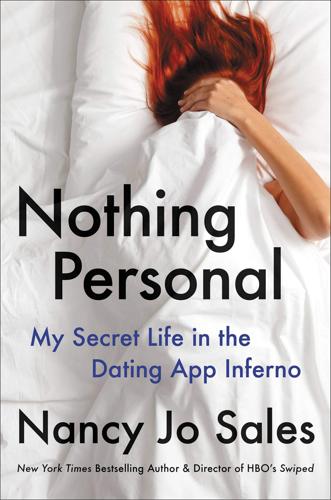
Nothing Personal: My Secret Life in the Dating App Inferno
by
Nancy Jo Sales
Published 17 May 2021
A 2019 study reported that from 2001 to 2017 the suicide rate for African American girls ages thirteen to nineteen skyrocketed 182 percent, and 60 percent for boys the same age. There was an increasing amount of blatant racism online during this time, on top of the continued systemic racism and police brutality which led to the 2013 founding of the Black Lives Matter movement by three young Black women. I should have asked Alyson more about what she was going through. I wish I had. I couldn’t stop crying for a couple of days after she died. I couldn’t think, couldn’t hold a conversation. Zazie and I lay next to each other in bed, just holding each other.
…
“First of all, it was like 80 percent white people. Like ghetto white people looking for some jungle fever. My inbox was flooded with white dudes saying things like, ‘I got four Black baby mamas. Wanna be the fifth?’” She frowned. “They think that’s what Black people are like,” said Bianca. “It’s bad.” In June of 2020, Bianca organized a Black Lives Matter protest in Plainfield. Jaylin and Bree were there, as well as nearly a hundred others in the mostly white community. * * * Online dating can be bad for people in the LGBTQ+ community as well, as we heard from other characters in the film. At UC Santa Cruz, when I spoke to Vin, who identifies as bisexual, nonbinary, and trans, they told us about the harassing messages they routinely received on dating apps.
…
So I agreed to get on another call with a hot young writer, someone whom a certain producing team was considering to be the creator and showrunner of the show about my life. He was in his late twenties. Hollywood’s track record on hiring women is abysmal, especially women of color. Which makes it—even to this day, in a feminist wave, amid global protests for Black Lives Matter—a highly sexist and racist industry. Which is all the more troubling considering the outsized influence it has on the way people think and act. The statistics are shocking: Of the one hundred top grossing films of 2019, women made up only 12 percent of the directors, 20 percent of the writers, 2 percent of the cinematographers, and 26 percent of the producers (a small sample of industry jobs overall).
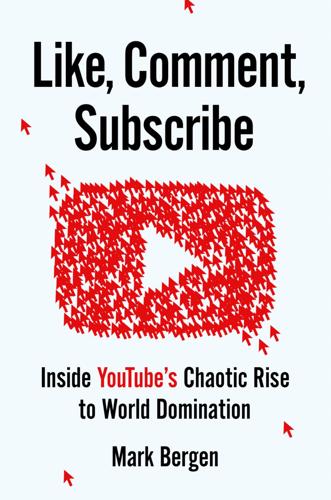
Like, Comment, Subscribe: Inside YouTube's Chaotic Rise to World Domination
by
Mark Bergen
Published 5 Sep 2022
Ingrid Nilsen, who sat in the audience, had grown more worried about online invective. No one had doxed her yet, but it seemed like only a matter of time. “YouTube just didn’t have an answer,” she recalled. “They knew the mess was a really big one.” * * * • • • Milo: “Milo Yiannopoulos denies Black Lives Matter protester special mic privileges.” April 27, 2016. 3:30. Milo Yiannopoulos, a Brit with frosted tips and a tired shtick as a gleeful troll, worked for Breitbart News. Here he is speaking at American University, part of his “Dangerous Faggot Tour” of college campuses, where he holds forth against feminists, SJWs, and “cuckservatives.”
…
When it did, those affected by the answer, as usual, found it capricious and unfair. Others felt it came far too late. * * * • • • America’s tense summer began when a Minneapolis police officer knelt on George Floyd’s neck and took his life, igniting the nation’s largest mass protests since Vietnam. YouTube attempted to rise to the occasion. It put “Black Lives Matter” on its home page and managers spoke to the historic moment. (Sometimes clumsily: in one company meeting about the protests a white executive recruited to lead Trust and Safety told staff that he loved John Legend and that one of his groomsmen was Black.) The company earmarked $100 million for Black creators.
…
See also problematic/troubling content “bad baby” videos, 304, 307, 308–9, 312 banner ads, 73, 197, 200 Bannon, Steve, 263 Barberini, Ed, 334–35 Bardan, Tala, 291–93, 359–60, 380–81 Bardin, Ariel, 252–53, 258, 339, 392 Barlow, John Perry, 37 BBC, 87, 109, 299, 307–8, 323 beauty gurus, 188–89 Beckett, Miles, 41, 42 Benator, Max, 181 Benjamin, Carl (Sargon of Akkad), 223, 264, 294–95, 299, 378–79 Bennett, Graham, 323–24, 384, 392–93 Berg, Jeben, 112–13 bestiality videos, 7 Biden, Joe, 387, 397, 398, 399 Bieber, Justin, 56, 57, 108 Big Boys (website), 21 Big Frame, 158–59 bigoted content, 86 billion-hours-of-viewing goal, 228, 270 Bisognin, Marzia, 218 Black Americans “Black Lives Matter,” 378 as creators, 261–62, 293, 338–39, 378 and recommendation engine applied to racism, 235 and Yiannopoulos, 263–64 Black Ops project, 132–34 blip.tv, 78 Blitzer, Wolf, 137, 141 Blogger, 84 blogging, 58 BluCollection, 167 “Blurred Lines” (Thicke), 143–44 board of YouTube, 28, 30, 108 Bock, Laszlo, 179, 199, 203, 212–13, 349 bodybuilders, 256 boh3m3, 67 Bohner, Kate, 59 Bohrman, David, 89 Bolsonaro, Jair, 366, 371 Boorstin, Bob, 92, 143 borderline footage, 32, 309, 310, 368, 398.

England: Seven Myths That Changed a Country – and How to Set Them Straight
by
Tom Baldwin
and
Marc Stears
Published 24 Apr 2024
Johnson ended his speech by misquoting Alfred, Lord Tennyson, the laureate of the Victorian Imperial age, as he declared: ‘There lies the port, the vessel puffs her sail … the wind sits in the mast.’7 These twenty-first-century Brexiteers were not, however, the only people fixated about what the English did at sea long ago. In 2020, after the murder of George Floyd by police in the United States, Black Lives Matter protests erupted around the world. A hundred miles to the north of Plymouth, a crowd in Bristol pulled to the ground a statue of Edward Colston, whose eighteenth-century philanthropy meant he had been celebrated with schools, a concert hall and even special buns named after him. The protesters tied a rope around the statue’s feet, sprayed the word ‘prick’ down its side and rolled it through the streets and into the city’s harbour.
…
For instance, when a Black graduate returned to visit a friend at the university, CCTV images of him were issued to all students at that college along with a warning to ‘remain vigilant’ as he might be a danger to their ‘wonderful and safe environment’.6 The Oxford Union, the university’s debating society, advertised an event on the legacy of empire with a flyer featuring a pair of Black hands in manacles that offered a cut-price cocktail called ‘the Colonial Comeback’.7 And, in the midst of all this, it was revealed that Oriel College had admitted just one Black British student in the previous six years.8 In the summer of 2020, the Black Lives Matter movement across the world reignited Oxford’s campaign. Protesters declared a ‘Freedom Summer’, with no fewer than six sit-in demonstrations outside Oriel. Simukai Chigudu, a Zimbabwean-born professor teaching at Oxford, explained that the statue represented a nineteenth-century colonialism that was still infecting England’s identity.
…
Index Abbot, Russ, here Abercrombie, Patrick, here abortion, here Abramovich, Roman, here Acland, James, here Act of Union, here, here Adonis, Andrew, here, here Aethelred the Unready, here Aethelstan, King, here Afghanistan, here, here–here, here Agbetu, Toyin, here Aherne, Caroline, here AJ Tracey, here Akala, here Alan, Lord of Galloway, here Albarn, Damon, here Alexandria, here Alfred, King, here, here, here Ali, Tariq, here Allcock, Peter, here Allen, Lily, here al-Qaeda, here ‘Amazing Grace’, here, here American Civil War, here American Declaration of Independence, here, here, here–here American War of Independence, here Andrew, Prince, here Anglo-Saxon liberties, here–here, here, here Anne, Princess, here Antigua, here Arkwright, Julie, here Arsenal FC, here, here, here Arthur, King, here Arts and Crafts movement, here Ashworth, David, here Astor, Nancy, here asylum seekers, here, here, here–here, here–here, here–here, here–here, here, here Attlee, Clement, here Aung San Suu Kyi, here, here Austen, Jane, here austerity, here–here, here, here–here, here, here Baddiel, David, here Baden-Powell, Robert, here, here Bakshi, Balbir Singh, here Baldwin, Stanley, here–here Ball, Alan, here Ball, Zoe, here Balls, Ed, here Bamping, Danny, here–here Bank of England, here, here Banks, Arron, here Baptists, here, here Barakat, Sheikh Ali, here Barbados, here, here Barber, Lynn, here Barnes, John, here Batson, Brendan, here Batth, Danny, here BBC, here, here–here, here, here, here, here–here, here, here, here–here Beatles, the, here–here, here Beckham, David, here, here Bede, here Belgian Congo, here, here benefit fraud, here–here Bengal Famine, here–here, here Benn, Tony, here, here Bennett, Alan, here Benton, Scott, here–here, here, here Beowulf, here Berezovsky, Boris, here Berlin, Isaiah, here Berlin Wall, here Berners-Lee, Sir Tim, here, here Betjeman, John, here Bevan, Aneurin, here Beveridge Report, here Bevin, Ernest, here Bible, the, here, here, here, here, here, here, here, here Bill of Rights, here, here Bilocca, Lillian, here Bingham, Geoff, here Bingham, Tom, here Bingley, Richard, here–here Black, Cilla, here Black, Heather, here Black and White Minstrel Show, The, here Black Country, here, here, here, here, here–here, here–here, here Black Lives Matter, here, here Black Panthers, here Blackpool, here–here, here and austerity, here, here–here, here–here, here–here, here–here Censorship Board, here deck chairs, here Grundy Art Gallery, here Metropole hotel, here–here old railway station, here, here, here Showtown exhibition, here–here, here Tower Ballroom, here–here, here Winter Gardens, here, here–here Blackpool FC, here, here Blair, Tony, here, here–here, here, here, here, here and Iraq War, here–here, here and Millennium Dome, here–here and New Labour project, here–here and Wilberforce, here–here Blanchflower, Danny, here Blavatnik, Leonard, here–here Bleasdale, Alan, here Blitz, the, here, here–here, here–here, here Bloodworth, James, here Bloody Assizes, here Blower, Joey, here–here, here–here, here Blur, here Boer War, here, here Book of Common Prayer, here Booth, William, here Boy Scout movement, here Boyle, Danny, here Bragg, Billy, here Bragg, Melvyn, here–here Brand, Jo, here Braverman, Suella, here Brazil, here, here Brexit, here, here, here, here, here, here, here, here, here, here, here, here, here, here, here–here, here–here, here–here, here, here–here, here, here–here, here–here, here, here, here, here, here, here and Magna Carta, here, here, here and Sir Francis Drake, here–here trade deals, here–here, here Brexit Party, here, here, here Bright, John, here British Empire, here, here, here, here–here, here–here, here, here, here, here, here, here, here British Empire Exhibition, here British Leyland, here British Library, here British Museum, here, here British Telecom, here Britpop, here Brontë sisters, here Brooke, Rupert, here Brown, Gordon, here, here, here–here, here Brown, Hope, here Brown, Jane, here Brown, Roy ‘Chubby’, here–here, here, here Brownies, here, here–here, here Buckland Abbey, here, here, here, here Bull, Steve, here, here Bullingdon Club, here, here Burchell, Thomas, here–here Burnard, Trevor, here Bush, George W., here–here Butler, Rab, here Butterworth, Jez, here Buxton, Thomas Foxwell, here Caine, Michael, here Calatrava, Santiago, here California, here, here Callaghan, James, here Calvert, Josie, here–here Cameron, David, here–here, here, here, here, here, here, here, here–here, here, here, here–here, here, here, here Campbell, Alastair, here, here Canary Wharf, here–here, here, here, here, here, here ‘cancel culture’ (the phrase), here Canning, George, here Cape of Good Hope, here capital punishment, here, here, here ‘Captain Swing’, here car ownership, here Carey, William, here Carlebach, Rabbi Ephraim, here Carlyle, Thomas, here Carmichael, Stokely, here Carr, Jimmy, here–here Carroll, Lewis, here Case, Simon, here Cash, Bill, here Castle, Barbara, here Cato Street Conspiracy, here Centre for Brexit Policy, here Ceylon, here Chadwick, Helen, here Chamberlain, Darryl, here Chamberlain, Joseph, here, here Chamberlain, Neville, here Channel Tunnel, here Charlecote Park, here Charles I, King, here–here, here, here Charles II, King, here Charles III, King, here, here, here Charter 88 movement, here Charter of the Forests, here Chartists, here–here, here, here–here, here Chartwell, here Cheng, Simon, here Chesapeake Bay, Battle of, here Chichester, Francis, here Chigudu, Simukai, here Chilcot Inquiry, here child chimney sweeps, here children taken into care, here–here China, here–here, here, here, here–here, here, here, here, here Choi, Richard, here Church of England, here, here, here, here, here–here, here, here, here, here, here, here Churchill, Winston, here, here, here–here, here, here, here, here, here citizenship ceremonies, here–here City of London deregulation, here Civil Service, here, here, here–here, here Clapham Sect, here, here, here, here, here Clarke, Andy, here Clarkson, Eliza Ann, here Clarkson, Thomas, here–here ‘class war’, here Clibery, Ken, here climate change, here, here, here–here, here–here, here, here, here, here, here, here, here Clinton, Bill, here Clive, Robert, here–here, here Clowes, Will, here–here Cobbett, William, here Cobden, Richard, here, here Cod Wars, here Coel, Michaela, here, here Coke, Sir Edward, here–here Coldplay, here Coleman, Jenna, here, here Coleridge, Samuel Taylor, here College of Europe, here Colley, Linda, here, here Collier, Paul, here Colston, Edward, here Combination Acts, here common law, here–here, here, here, here, here, here–here Commonwealth War Graves Commission, here concentration camps, here Concorde, here condoms, Italian, here Confucius, here Connery, Sean, here Conrad, Joseph, here Conservative Party Cameron government, here–here, here, here–here and culture wars, here–here, here–here and defence spending, here and English identity, here–here, here, here, here–here, here, here, here and Enoch Powell, here, here, here, here, here, here and Europe, here, here–here, here–here, here and immigration, here, here–here, here, here, here and imperial preference, here and khaki election, here and Millennium Dome, here–here and Plymouth City Council, here–here and Red Wall, here–here and Thatcher, here, here, here Constable, John, here contraception, here, here Cook, Captain James, here Cooper, Tommy, here, here Cooper, Yvette, here Corbyn, Jeremy, here, here, here, here, here Corbyn, Piers, here Corn Laws, here–here, here, here, here Cosey Fanni Tutti, here Cottam, Hilary, here Cotterill, Drucilla, here Cottrell-Boyce, Frank, here Coum, here Counter-Reformation, here–here Countryside Alliance, here, here Covid pandemic, here, here, here, here–here, here, here, here, here, here, here vaccination programme, here–here Coward, Noël, here Cox, Jo, here Cranmer, Thomas, here Crawford, Martha, here cricket, here, here, here Cromwell, Oliver, here, here, here Crooks, Wade, here Cross of St George, here Cuba, here Cugoano, Ottobah, here ‘culture wars’ (the phrase), here–here Cumberbatch, Benedict, here, here Cummings, Dominic, here, here, here Cunningham, Lawrie, here Curtis, Richard, here Dad’s Army, here Danegeld, here Daniels, Phil, here darts, here Darwin, Charles, here, here Davey, Ed, here Davie, Tim, here Davies, Mike, here Davies, Norman, here Davis, David, here, here Dawson, Les, here Dayil, Tyler, here debt cancellation, here Defoe, Daniel, here democracy, here, here, here, here–here, here, here–here, here, here, here, here, here, here, here, here, here, here folkmoot democracy, here, here ‘industrial democracy’, here Demos, here Denham, John, here Denmark, abolition of slavery, here devolution, here, here, here, here, here–here Diana, Princess of Wales, here, here, here, here Dickens, Charles, here–here, here, here Diggers, here, here Disraeli, Benjamin, here, here Dodd, Ken, here Dodds, Anneliese, here Dogger Bank incident, here domestic servants, here Doughty, Thomas, here Drake, Sir Francis, here–here, here–here, here–here, here–here, here, here, here, here, here ‘Drake’s drum’, here and piracy, here, here–here, here–here, here, here, here–here drugs, here–here, here Dublin, Nelson’s Pillar, here Duffy, Gillian, here Duncan Smith, Iain, here Dunkirk, here, here, here Duran Duran, here Dury, Ian, here Dvořák, Antonín, here East India Company, here, here, here, here, here, here Edward VII, King, here Einstein, Albert, here–here electoral reform, here Elford, William, here Elgar, Edward, here Elgin Marbles, here Eliot, T.
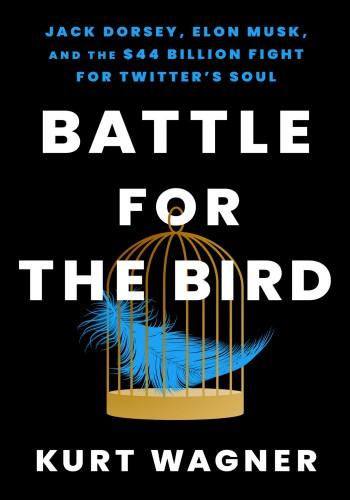
Battle for the Bird: Jack Dorsey, Elon Musk, and the $44 Billion Fight for Twitter's Soul
by
Kurt Wagner
Published 20 Feb 2024
Twitter ran video ads that tried to explain what the service was for—and how it was different than other social networks, like Facebook. The ads jumped between video clips of Donald Trump and Hillary Clinton giving campaign speeches, LeBron James blocking a shot during the NBA playoffs, and Black Lives Matter protesters. “What’s everyone talking about?” the video’s narrator asked. “What’s trending? How did it start? When will it end?” The idea was that Twitter was the place you went to discover what was happening in the world around you. It was a free global news source in your pocket. The campaign got positive reviews.
…
Twitter had resource groups for Black, Latin, and LGBTQ employees and set public hiring goals to diversify the company’s workforce; Dorsey, the CEO, wore T-shirts emblazoned with the hashtag #StayWoke, and had marched a few years prior in Ferguson, Missouri, after police officers there shot and killed an eighteen-year-old black man, Michael Brown. One of Dorsey’s friends, DeRay Mckesson, was an unofficial leader of the Black Lives Matter movement; when he was arrested during a protest in the summer of 2016, Dorsey emailed the company with pictures of Mckesson being handcuffed in a #StayWoke Twitter T-shirt. “It’s important everyone at Twitter feels safe and supported,” Dorsey wrote at the time, recommending folks reach out to the HR department if needed.
…
A ABC, 199 Adeshola, TJ, 87, 103 advertising, 277 civil rights groups and, 238, 240 direct response, 119–20, 152 on Facebook, 120, 152, 234, 238 advertising on Twitter, 2, 5, 10–11, 33, 47–50, 53, 59, 72, 86–87, 108, 111, 119–20, 147, 152–53, 157, 164, 187, 188, 199, 218, 228, 258, 272, 276, 279, 289 Musk and, 232–36, 238–40, 243, 245–46, 248–52, 254, 264, 267, 284–85 Affleck, Ben, 57 Africa, 86–89, 91, 97, 103, 107–8, 139, 140 Agrawal, Parag, 5–6, 87, 88, 126, 143–44 executives fired by, 193, 199, 201 Mudge and, 207 Musk and, 148, 158, 159, 161–65, 180–81, 190, 191, 195, 199, 200, 202, 210, 220 Musk’s firing of, 221 as Twitter CEO, 143–48, 151–53, 157, 159, 161, 165, 180–84, 187, 190–93 and Twitter’s lawsuit against Musk, 202 Ahrendts, Angela, 24 Airbnb, 101 Ai Weiwei, 20 Al Adham, Mo, 82–83, 119 Alexander, Ali, 73, 284 Alibaba, 102 Allen & Company, 37 annual retreat of, 198–200 All-In, 190–91, 282 Al-Mahmoud, Mansoor Bin Ebrahim, 277 Alphabet, 4, 148 Amazon, 3, 24, 33, 37, 50, 62, 106 Alexa, 81 Web Services, 24 Amnesty International, 59 Andreessen, Marc, 205–6 Andreessen Horowitz, 186–87, 205–6, 217 Anti-Defamation League, 232, 238 antisemitism, 56, 232, 268, 284–85 AOL, 14, 24 Apple, 3, 24, 37, 50, 91, 233, 254, 285 App Store, 32–33 iPhone, 21, 152 iTunes, 16 Apprentice, The, 44 Arab Spring, 4, 10, 38 Ardern, Jacinda, 85 Argentina, 99 Armstrong, Tim, 24 artificial intelligence, 287 AT&T, 99 Athenahealth, 99 Atlantic, 209 Axel Springer SE, 160 B Babylon Bee, 153–54, 179, 271 Bain, Adam, 23, 25, 37, 40, 48 Baker, Jim, 124 Bankman-Fried, Sam, 174, 185 Baron Cohen, Sacha, 171 Barstool Sports, 138 Barton, Joe, 76–77 Bates, Tony, 24 Benioff, Marc, 35–36, 38, 158–59 Benson, Guy, 71, 72 Berland, Leslie, 65–67, 73, 195, 205, 213–14, 218, 236, 239, 280 Berlin, Erik, 240–42 Beykpour, Kayvon, 34, 81–83, 87, 119–21, 141, 152, 205, 224 firing of, 193, 199, 201, 224 Bezos, Jeff, 24, 50, 81, 199 Biden, Hunter, 123–25, 180–82, 220, 270 Biden, Joe, 123–24, 126–27, 206, 248, 270, 286 Bieber, Justin, 163 Biles, Simone, 92, 153 Bilton, Nick, 20 Birchall, Jared, 159, 161, 189, 217, 260 Bitcoin, 5, 88, 137–43, 147, 206, 209 Blackburn, Jeff, 37 Blackburn, Marsha, 72 Black Lives Matter, 4, 34, 46 Blair, Tony, 253 blockchain, 88, 139, 144, 176, 185 Blogger, 15, 19 Bloomberg, 33, 100, 206 Bluesky, 88, 136–37, 141, 142, 144, 288–89 Boko Haram, 92 Boring Company, 171, 176, 186, 217, 231, 281 Borrman, Brandon, 125 Box, 277 Brady, Tom, 95 Brand, Dalana, 103 Bravo, Orland, 185 Brazil, 223 Bridgewater Associates, 85 Brown, Michael, 46, 85 Buffett, Warren, 198 Burisma, 123, 270 Burke, Steve, 37 Bush, George W., 99, 253 Bush, Jeb, 45 Bush, Jonathan, 99 Business Insider, 193 ByteDance, 80 C Café Milano, 71–73 Calacanis, Jason, 174, 186, 190, 209, 217, 234, 282 Cape Coast Castle, 87 Carell, Steve, 9 Carlson, Tucker, 284 Carter, Flora, 138 CBS, 33, 162 CDC, 112, 113 celebrities, 10, 25, 57–59, 74, 92, 138, 141, 229, 250 Chancery Daily, 202–3 Chappelle, Dave, 273–74 Charlottesville white supremacist rally, 51, 59, 75 Charter Communications, 202 Chastain, Jessica, 57, 58 Chen, Jon, 225, 259 China, 196, 220 Christchurch mosque shootings, 85 Christie, Ron, 73 Cisco, 24 Citadel, 160 civil rights groups, 238, 240 Clinton, Hillary, 20, 34, 41, 42, 47–48, 50, 72, 86, 124 Clubhouse, 119 CNBC, 100, 224 CNN, 51, 72, 275 Coby, Gary, 48–49 Coca-Cola, 47 Code Conference, 47 Cohn, Jesse, 95, 99–101, 104–9, 143, 147, 156 Color of Change, 238 Comcast, 37, 198–99 Compaq Computer, 168 Compton, Kyle Wagner, 202 Congress, U.S., 83, 127, 134 Dorsey’s testimony before, 76–78, 125, 137–38, 140 conservatives, Republicans, 71–77, 84, 114, 125, 181, 196, 248, 269, 270, 284 conspiracy theories, 75, 233, 248 Consumer Price Index, 186 Conway, Kellyanne, 116, 272 Cook, Tim, 50 Cooper, Bradley, 25 Cornet, Manu, 215, 227–28 Costolo, Dick, 9–12, 20, 21, 53, 105, 181 Covid-19 pandemic, 106–8, 110–13, 115, 117–20, 124, 141, 142, 146, 147, 152, 153, 193, 196, 230, 232, 245, 267, 284 Cramer, Jim, 100 Crawford, Esther, 230–31, 242, 288 Crowell, Colin, 52, 84 Cruz, Ted, 45, 125 cryptocurrencies, 144, 172, 174, 176, 185 Bitcoin, 5, 88, 137–43, 147, 206, 209 Dogecoin, 176 Cue, Eddy, 37 Culbertson, Lauren, 84 Currie, Peter, 23, 25 Curtis, Jamie Lee, 57 D Daily Mail, 224 Dalio, Ray, 85 Daly, Carson, 31 DARPA, 206 Davis, Dantley, 119 Davis, Steve, 176, 217, 231, 237–38, 281 Deadmau5, 138 Defense Department, 206 Delaware Court of Chancery, 200–210 Dell, 101 Democrats, 73, 77, 83, 84, 92, 114, 127, 196, 248 DeSantis, Ron, 173 Dictator, The, 171 Dillon, Seth, 154 Diplo, 142 Disney, 36–38, 96, 177, 199, 285 Dispatch Management Services, 13–14 DNet, 14 Dogecoin, 176 Döpfner, Mathias, 160 Dorsey, Jack, 21–25, 223, 288–89 Africa trip and plans of, 86–89, 91, 97, 103, 107–8, 139, 140 Analyst Day and, 118–22 Bitcoin as interest of, 5, 88, 137–43, 147, 209 Bluesky service of, 88, 136–37, 141, 142, 144, 288–89 at Café Milano dinner, 71–73 celebrities and, 25, 74, 138, 141 childhood of, 12–13, 66, 110 as coder, 13, 16, 139 as college student, 13 in congressional hearings, 76–78, 125, 137–38, 140 conservative outreach of, 71–74 Covid-19 pandemic and, 110, 112 early internet use of, 13 Elliott Management and, 96, 99–109, 118, 121, 143, 145–47, 156, 157, 228, 273, 289 first tech job of, 13 forty-second birthday of, 79 Gadde and, 53, 54, 84, 129–30, 172–73, 180–82 as introvert, 12, 15, 26, 66, 101 Kidd and, 13–15 lifestyle of, 26, 64–65, 79–80 Loomer and, 77, 140 management style of, 19, 31–32, 85–86, 109, 142, 182 meditation practice of, 26, 64, 66, 79, 86, 90 Miami trip of, 138–41 move to New York, 13–14 move to San Francisco, 14 Mudge and, 206–7 Musk and, 1–3, 68, 92–94, 103–4, 109, 142, 148, 155–57, 159, 161, 165, 172–73, 176, 179, 80–81, 186, 194, 209–10, 244–45, 263, 288–89 and Musk’s acquisition of Twitter, 1–3, 5, 176, 179, 180–82, 186, 210, 244–45, 288, 289 at Odeo, 15–17 political views of, 73 Rogen and, 58–59 as Square CEO, 12, 21–23, 25, 26–27, 74, 86–88, 96, 97, 100, 101, 105, 139, 141, 145, 147 STAT.US idea of, 14 Storytime and, 110, 182 on Today show, 31, 32 travels and meetings in 2019, 85 Trump and, 46–47, 49–50, 54, 73, 84 “Trust” email of, 40–41 Twitter acquisition bids and, 35–41 Twitter Blue and, 228 Twitter board’s relationship with, 3, 101, 109, 145, 176, 182, 194 as Twitter CEO, 4, 9–12, 18–25, 26–29, 31–32, 35, 37–38, 40, 45, 54, 76, 79, 80, 96, 97, 100–109, 110, 118, 126, 135, 141, 143–45, 147–48, 153, 169, 182, 261 as Twitter chairman, 19, 20, 147 Twitter content moderation policies and, 54, 56, 58–61, 71–72, 112, 125, 129, 130, 135–37, 140, 155–57, 181–82, 268, 272–73, 288 Twitter Files and, 272 and Twitter lawsuit against Musk, 205 Twitter resignation of, 141–48, 151, 155, 156, 161, 273 at Twitter retreats, 28–30, 64–68, 85–86, 90–94 and Twitter’s banning of Trump, 130, 132, 133, 135–37, 147 Twitter’s transition from idea to company as viewed by, 1–2 Twitter three-year business plan and, 119–21 Dorsey, Marcia, 27, 64, 66, 73, 76, 90, 135 Dorsey, Tim, 66, 73, 90, 135 Dot Collector, 85 Dotcom, Kim, 267, 277 Duke, David, 51 Duncan, Jeff, 77 Durban, Egon, 101–6, 108, 157, 158 Duysak, Bahtiyar, 61–62 Dweck, Carol, 28 E eBay, 99–100, 169 Edgett, Sean, 117, 221 Ehrenpreis, Ira, 162 elections2016 presidential, 34, 41, 42–52, 61–63, 77, 86, 114, 124, 125 2020 presidential, 73, 87, 111, 113–16, 118, 123–29, 131, 152, 270, 284 2022 midterm, 238, 243, 248, 254 Eli Lilly, 253–54 Elliott Management, 95–109, 118, 121, 126, 143, 145–47, 156, 157, 158, 228, 273, 289 Ellison, Larry, 163, 175, 177, 185, 186, 205, 209 ElonJet, 266, 275 email, 136 engineers, 217–18, 224–26, 243, 247, 261–65 Erdogan, Recep Tayyip, 277 ESPN, 38 Ethiopia, 87–88 Ezekwesili, Obiageli “Oby,” 92 F Facebook, 23, 28, 29, 32, 33, 36, 50, 57, 75, 77, 78, 80, 81, 85, 91, 106, 112, 119, 137, 158, 177, 277 advertising on, 120, 152, 234, 238 revenues of, 4, 98, 148 size of, 10 stock of, 98 Trump and, 49, 51–52, 134, 135 Falck, Bruce, 67, 90, 119–21, 152–53, 205 firing of, 193, 199, 201 FBI, 270 Federal Trade Commission, 177, 207, 208, 258–60, 281 Ferguson protests, 45–46, 85 Fidelity, 279 Fiorina, Carly, 45 Flores, Mayra, 196, 197 Floyd, George, 117 Fogarty, Marianne, 259 Ford Motor Company, 238, 239 Fortune, 35 Fox, Martha Lane, 98, 158, 161 Fox & Friends, 116 Fox News, 71, 73, 116, 271, 284 free speech, 2, 5, 46, 47, 53–54, 59, 60, 154–57, 173, 196, 238–40, 246, 268, 269, 271, 275, 278, 284, 288 Fridman, Lex, 277, 279 Friedberg, David, 282 FriendFeed, 158 Frohnhoefer, Eric, 261–62 FTC, 177, 207, 208, 258–60, 281 FTX, 174, 185 Fuentes, Nick, 284 G Gadde, Vijaya, 37, 46, 53, 54, 60, 84, 117, 128–29, 132, 172–73, 192, 199 Biden laptop story and, 124, 125, 180–82, 220 Musk and, 180–81, 220–21 Musk’s firing of, 221–23 Trump ban and, 129–30, 135, 220 Gates, Bill, 95 Gates, Melinda, 153 G-Eazy, 138 General Electric, 198–99, 239 Ghana, 87, 99 Ginsburg, Ruth Bader, 201 Giuliani, Rudy, 123, 124 Gizmodo, 74–75 Glass, Noah, 17–18 Goldman, Jason, 5, 289 Goldman Sachs, 30, 37, 99, 104, 105, 178 Goodell, Roger, 33, 235, 240 Google, 3, 4, 9, 15, 24, 25, 37, 50, 99, 106, 120, 136, 137, 148, 158, 177, 234 GoPro, 24 Gracias, Antonio, 217, 226, 237, 260 Graham, Donald, 199 Graham, Lindsey, 125, 134 Graham, Paul, 277 Greene, Marjorie Taylor, 232–33 Greenfield, Ben, 79–80 Griffin, Ken, 160 Grimes (musician), 274–75 Grimes, Michael, 185, 188, 209 Gross, Andy, 257 Grutman, David, 138, 139 H hackers, 13, 206, 207, 258, 267 Hamas, 286 Hannity, Sean, 73 Harris, Kamala, 153 Harvey, Del, 52–54, 60, 67, 112, 117, 129, 132, 133 Hatching Twitter (Bilton), 20 hate speech, 38, 71, 114, 232, 233, 238, 245 Hawkins, Tracy, 231 Hayes, Julianna, 225, 259 Health and Human Services Department, 153 Ho, Ed, 60 Hoffman, Reid, 185 Horizon Media, 234 House Energy and Commerce Committee, 137 Huffington, Arianna, 45 Hulu, 24, 36 Hurricane Harvey, 92 I IBM, 285 Iger, Bob, 36, 38–39 Instagram, 29, 33, 39, 57, 80, 82, 98, 141, 275, 277, 278, 286, 287 International Space Station, 10, 91, 142 IPG, 238 iPhone, 21, 152 Iraq, 20 Isaacson, Walter, 151, 159, 214, 227, 281 ISIS, 11 Israel, 286 iTunes, 16 J James, LeBron, 34 Jamil, Jameela, 92 January 6 United States Capitol attack, 127–29, 131–33, 134–35, 197, 284 Jassy, Andy, 24, 25 Jay-Z, 1, 74, 204 Jeremy’s, 16 Jobs, Laurene Powell, 103 Jobs, Steve, 16, 103 Johnson, Peggy, 37 Jolly, David, 61 Jones, Alex, 75–77 JP Morgan, 178 Justice Department, 177, 206 K Kaiden, Robert, 237 Kardashian, Kim, 184 Kennedy, John F., 184 Kennedy, Trenton, 125 Kessler, Jason, 75 Kidd, Greg, 13–15 Kieran, Damien, 259, 281 Kilar, Jason, 24 Killian, Joseph, 280–81 Kim Jong-un, 54–55, 63 King, Gayle, 162, 173–74, 209 King, Stephen, 229 Kirk, Charlie, 73 Kissner, Lea, 259, 281 KKR, 201 Koenigsberg, Bill, 234–35 Kordestani, Omid, 24, 25, 37, 39, 74, 95, 97–99, 104, 108 Kraft, Robert, 204 Krishnan, Sriram, 217 Ku Klux Klan, 51 Kushner, Jared, 277 Kutcher, Ashton, 10 L Labor Department, 244 Lady Gaga, 91 Lamar, Kendrick, 210 Lauer, Matt, 31 Lawdragon, 202 Legend, John, 92 Leib, Ben, 261, 262 Lemkau, Gregg, 99, 101–2, 104, 105 Levchin, Max, 169 Levie, Aaron, 277 Levine, Rachel, 153–54 LinkedIn, 35, 37, 185 Lively, Blake, 184 Lonsdale, Joe, 160, 173 Loomer, Laura, 77, 140 López Obrador, Andrés Manuel, 134 Lord, Sierra, 87 Lucasfilm, 38 M Macron, Emmanuel, 85, 134–35, 266, 267 Mad Money, 100 Maheu, JP, 67, 235, 236, 239 Mars, 169–71, 183, 196, 200, 256, 271, 274 Massachusetts Institute of Technology, 14 Mastodon, 248, 275, 277 Maxwell, Ghislaine, 253 Mayer, Kevin, 36 Mayweather, Floyd, 138 Mbappé, Kylian, 277 McCain, John, 42 McConnell, Mitch, 116 McCormick, Kathaleen, 203, 204, 207–9 McGowan, Rose, 56–59, 71 McKelvey, Jim, 21 Mckesson, DeRay, 46 Merkel, Angela, 134 Merrill, Marc, 174 Messi, Lionel, 277 Messinger, Adam, 34 Meta, 3, 91 Met Gala, 184–86, 191 MeToo movement, 4 Miami, FL, 138–41, 190 Microsoft, 24, 35, 37, 136, 233 Middle East, 4, 10, 38 midterm elections of 2022, 238, 243, 248, 254 Milano, Alyssa, 57 Mindset (Dweck), 28 Minneapolis protests, 117–18 Monroe, Marilyn, 184 Montano, Mike, 87 Morgan Stanley, 107, 174, 185 Mudge, 206–9, 222 Mujica, Maryam, 43 Murdoch, Rupert, 198 Musk, Andrew, 217, 226, 262 Musk, Elon, 50, 67–68, 103–4, 142, 166–71, 206 advisors of, 216–17, 224, 226, 282 Agrawal and, 148, 158, 159, 161–65, 180–81, 190, 191, 195, 199, 200, 202, 210, 220 Agrawal fired by, 221 at Allen & Company retreat, 198–200 Boring Company of, 171, 176, 186, 217, 231, 281 Calacanis and, 174, 186, 190, 209, 217, 234, 282 at Chappelle’s show, 273–74 childhood of, 166–68 children of, 171, 214, 216, 222, 234, 274, 283 college years of, 168 Dorsey and, 1–3, 68, 92–94, 103–4, 109, 142, 148, 155–57, 159, 161, 165, 172–73, 176, 179, 180–82, 186, 194, 209–10, 244–45, 263, 288–89 Dorsey and Twitter acquisition of, 1–3, 5, 176, 179, 180–82, 186, 210, 244–45, 288, 289 Ellison and, 175, 177, 185, 186, 205, 209 engineers and, 217–18, 247, 261–65 Gadde and, 180–81, 220–21 Gadde fired by, 221–23 journalists suspended by, 275, 276, 278 at Met Gala, 184–86, 191 move to Canada, 168 net worth of, 151, 171, 186, 189, 191, 192 Neuralink company of, 171 “pedo guy” tweet of, 93, 162, 172, 204 political views of, 196, 197, 217, 248 private plane of, 266–67, 275–76 Riley and, 154, 157, 179 Roth and, 222–23, 271–72, 287 sense of humor of, 162, 171–72, 182, 194, 213, 247–48 sexual harassment allegations against, 193–95 sink stunt of, 213, 218, 220, 251, 280, 282, 283 SpaceX company of, 2, 142, 151, 169–72, 186, 193, 200, 217, 226, 257, 260, 264, 266, 278, 281–82, 288 stalker and, 274–75 Taylor and, 158–59, 164–65 Tesla company of, see Tesla text messages of, 208–10 Trump reinstatement and, 234–35, 238, 239, 267–69, 278 Twitter acquired by, 1–6, 171–79, 180–97, 210, 213–15, 217, 221, 222, 224, 241, 244–45, 269, 271, 275, 277, 279, 287–89 Twitter acquisition as idea for, 154, 157, 164, 165 Twitter acquisition termination attempt, 5, 189–91, 195, 199–210, 213 Twitter advertising and, 232–36, 238–40, 243, 245–46, 248–52, 254, 264, 267, 284–85 Twitter all-hands meeting held by, 255–56, 259, 260, 262 Twitter Blue and, 218–19, 228–30, 249–55, 260, 285 Twitter board of directors and, 103–4, 109, 156–65, 173, 175, 177–79, 186, 200, 210, 221, 281 Twitter content moderation and, 154–57, 160, 196, 222–23, 225, 233, 238–40, 243–46, 249, 266–72, 275–78, 284, 288 Twitter criticized by, 5, 164, 172–73, 175, 181, 190, 192, 195, 244 in Twitter due diligence meeting, 187–88 Twitter employees fired by, 262–63 Twitter employees’ view of, 162–63, 183, 193–97, 219, 241, 244–45, 264 Twitter Files and, 269–72 Twitter investment of, 151, 155, 157–61, 168, 173, 174, 179, 195, 199 Twitter lawsuit against, 200–210, 213, 221, 222, 269, 280 Twitter layoffs under, 196, 197, 216, 224–27, 231, 236–37, 240–45, 247, 254, 258–60, 264 Twitter office spaces turned into hotel rooms by, 280–81 Twitter #OneTeam appearance of, 92–94 Twitter plans and vision of, 174–75, 194–97, 217–18, 256–57, 269, 283–84, 287 in Twitter Q&A session, 194–97 Twitter remote workers and, 196, 197, 216, 226, 252, 255, 257, 260, 264 Twitter rent payments not paid by, 280 Twitter resignation poll conducted by, 278–79 Twitter senior leaders ousted by, 221 Twitter servers cut by, 280 Twitter under ownership of, 213–31, 232–46, 247–65, 266–82, 283–89 as Twitter user, 93–94, 103–4, 148, 151, 154–55, 159, 162–64, 171, 172, 181, 188–91, 194, 195, 215, 219, 220, 223, 225, 233–36, 240, 244, 245, 247–49, 255, 261–62, 267–68, 271–72, 274, 277, 278, 281, 284–87 work habits and expectations of, 227, 230, 257, 258, 260, 263, 265 at World Cup, 276–78 X.com company of, 169, 186, 283 Zip2 company of, 168–69, 227 Zuckerberg and, 287 Musk, Errol, 167 Musk, James, 217, 226, 262 Musk, Justine, 168, 169 Musk, Kimbal, 163, 168, 281 Musk, Maye, 166–68, 184, 185, 234 Musk, X, 214, 216, 222, 234, 274, 283 Myanmar, 78–79 N NAACP, 238 Nadella, Satya, 37 NASA, 10, 90–91 Navaroli, Anika, 131 Nawfal, Mario, 267 NBA, 33, 34, 235 NBC, 33, 53, 239 NBCUniversal, 37, 198–99 Netflix, 36 Neuralink, 171 Nevo, Vivi, 25 New England Patriots, 204 Newman, Omarosa Manigault, 59 Newsom, Gavin, 111, 114 Newsweek, 261 Newton, Casey, 81 New Yorker, 56, 99 New York Post, 123–24, 126, 183, 270 New York Stock Exchange, 1, 10, 27, 178 New York Times, 20, 51, 56, 75, 79, 83, 85, 100, 202, 203, 275, 286 NFL, 30, 33–35, 40, 62, 63, 80, 204, 235 Nigeria, 87, 92 Norquist, Grover, 71 North Korea, 54–55, 63 Noto, Anthony, 30, 33, 34, 37, 39, 40, 80 Novak, Kim, 45 NPR, 100 O Obama, Barack, 10, 43 Observer, 203 Ocasio-Cortez, Alexandria, 185 Odeo, 15–18 Okonjo-Iweala, Ngozi, 87 Olbermann, Keith, 275 Omnicom Group, 254 Oracle, 175 Owens, Candace, 73 Owens, Rick, 85 P Pacini, Kathleen, 226 Page, Larry, 50 Palantir, 160 Paltrow, Gwyneth, 79 Paris Fashion Week, 85, 142, 210 Paul, Logan, 138 PayPal, 169, 186, 206, 216, 257 Pelosi, Nancy, 233 Pelosi, Paul, 233 Pence, Mike, 84, 128 Perica, Adrian, 37 Periscope, 34, 59 Perry, Katy, 163 Personette, Sarah, 236 Perverted Justice, 53 Philadelphia Eagles, 286 Pichai, Sundar, 137 Pichette, Patrick, 99, 101, 104, 108, 146 Pixar, 38 podcasts, 15–17 Podesta, John, 124 Politico, 286 Portnoy, Dave, 138–39 presidential election of 2016, 34, 41, 42–52, 61–63, 77, 86, 114, 124, 125 presidential election of 2020, 73, 87, 111, 113–16, 118, 123–29, 131, 152, 270, 284 Principles (Dalio), 85 Pringle, Lauren, 202–3 Project Veritas, 205 Putin, Vladimir, 188 Pyin Oo Lwin, 78 Q QAnon, 197 Qatar, 276–77 Qatar Investment Authority, 277 Quip, 158 R racism, 38, 46, 54, 56, 71, 80, 136, 232, 233, 245, 284–85 Raiyah bint Al-Hussein, Princess, 154 Read, Mark, 233–35, 238, 240 Reddit, 134 Republicans, conservatives, 71–77, 84, 114, 125, 181, 196, 248, 269, 270, 284 Rezaei, Behnam, 247, 260 Rice, Kathleen, 137–38 Riley, Talulah, 154, 157, 179 Riot Games, 174 Roberts, Brian, 37 Rock, Jay, 65 Roetter, Alex, 28 Rogan, Joe, 160, 172, 181, 209 Rogen, Seth, 58–59 Rohingya people, 78 Roth, Yoel, 113–17, 124, 129, 132, 239, 244, 246, 247, 249, 251, 254, 259 Musk and, 222–23, 271–72, 287 resignation of, 258, 260 sexual consent tweet of, 271–72, 287 Rubin, Rick, 25, 142 Rubio, Marco, 45 Ruffalo, Mark, 57 Russia, 51–52, 124, 186, 188 S Sabet, Bijan, 19 Sacks, David, 186, 190, 206, 216–17, 224, 237, 282 Salesforce, 35–39, 98, 145, 158, 177 Salon, 271 Salt Bae, 277 Sandberg, Sheryl, 23, 50, 77–78 Sandy Hook Elementary School shooting, 75 SAP, 99 Saturday Night Live, 9 Savitt, Bill, 201–2 Scarborough, Joe, 83 Scavino, Dan, 84 Schlapp, Mercedes, 71–73 Second City, 9 Securities and Exchange Commission, 93, 155, 160, 172, 173, 177, 186, 195, 199 Segal, Ned, 67, 96, 97, 102, 108, 121, 187, 200, 221 Sequoia Capital, 186 Shevat, Amir, 197, 227, 242 Silver Lake, 101–6, 108, 109, 118, 157 Singer, Paul, 99 Snapchat, 80, 82, 98, 134, 141 Snowdon, Edward, 277 social networking protocol, 136–37 SoFi, 80 Solomon, Sasha, 262 Sotheby’s, 201 South Africa, 86, 87 South by Southwest, 18 Space Balls, 171 SpaceX, 2, 142, 151, 169–72, 186, 193, 200, 217, 226, 257, 260, 264, 266, 278, 281–82, 288 Spark Capital, 19 Spencer Stuart, 23–24 Spicer, Sean, 48–49, 51 Spiegel, Evan, 80 Spiro, Alex, 172–73, 189, 204, 207–8, 217, 235, 259–60 Squad, 230 Square, 21–22 Bitcoin and, 139, 141, 147 Dorsey as CEO of, 12, 21–23, 25, 26–27, 74, 86–88, 96, 97, 100, 101, 105, 139, 141, 145, 147 Stalin, Joseph, 148 Stanton, Katie, 28 Starbucks, 47 Starlink, 220 State Department, 20 STAT.US, 14 Steinberg, Marc, 99 stocks, 98 Tesla, 185, 186, 206, 257, 279 Twitter, 27, 28, 30, 35, 37, 39, 86, 87, 96, 98, 102, 109, 122, 143, 151, 55, 157–62, 173, 178, 199–200, 237 Stone, Biz, 17, 20 Stone, Roger, 72 Stop the Steal rally, 73, 284 Sullivan, Jay, 184 Sun Valley, ID, 198–200 Super Bowl, 286 Sweeney, Jack, 275 Swift, Taylor, 10, 163 Systrom, Kevin, 29 T Taibbi, Matt, 269 Taylor, Bret, 98, 145, 146, 157–59, 164–65, 200, 205, 221 Teigen, Chrissy, 57, 58, 92 Terrell, Alphonzo, 242 Tesla, 2, 50, 67, 93–94, 158, 163, 169–75, 177, 182, 217, 219, 220, 224, 226, 227, 234, 239, 256, 257, 264, 266, 278, 281–82, 288 imposter account and, 253 stock of, 185, 186, 206, 257, 279 Thiel, Peter, 169 Threads, 286–87 Tidal, 1, 74 TikTok, 39–40, 80–81, 256 Timberlake, Justin, 95 Time Warner, 202 Today, 31, 32 Toff, Jason, 28 transgender people, 153–54, 162 Trump, Donald, 65, 71–73, 75, 92, 217, 277 Biden laptop story and, 123–24 Covid-19 pandemic and, 110, 111 Dorsey and, 46–47, 49–50, 54, 73, 84 Facebook and, 49, 51–52, 134, 135 Minneapolis protests and, 117–18 in presidential election of 2016, 34, 41, 42–52, 61–63 in presidential election of 2020, 73, 111, 114–16, 118, 123–29, 131, 152, 284 tweets of, 4, 41, 42–49, 51, 52, 54–55, 57, 59, 62–63, 75–77, 80, 83–87, 92, 111, 113–18, 123–24, 127–33, 219, 235, 248, 284 Twitter account deactivated by employee, 61–62, 223 Twitter offices visited by, 42–43, 46 Twitter’s banning of, 5, 129–33, 134–37, 147, 180, 192, 200, 220, 225, 270, 272–73 Twitter’s reinstatement of, 234–35, 238, 239, 267–69, 278 Trump Tower, 43, 50 Truth Social, 277 Turner, Sylvester, 92 Turning Point USA, 73 Twitteradvertising on, 2, 5, 10–11, 33, 47–50, 53, 59, 72, 86–87, 108, 111, 119–20, 147, 152–53, 157, 164, 187, 188, 199, 218, 228, 258, 272, 276, 279, 289 advertising on, and Musk, 232–36, 238–40, 243, 245–46, 248–52, 254, 264, 267, 284–85 Agrawal as CEO of, 143–48, 151–53, 157, 159, 161, 165, 180–84, 187, 190–93 algorithms of, 28, 32, 63, 78, 80, 144, 218 alternatives to, 286–87, 289 Babylon Bee and, 154, 179, 271 Biden laptop story and, 124–25, 180–82, 220, 270 Big Sur event of, 85–86, 143 blue check verification on, 58, 162, 219, 229–30, 249–51, 253–55, 285–86 Bluesky offshoot of, 88, 136–37, 141, 142, 144, 288–89 Blue subscription service of, 152, 218–19, 228–30, 249–55, 260, 285 board of directors of, 3–5, 11–12, 19–21, 23–25, 27, 37–40, 74, 89, 96–98, 100–104, 106, 108, 109, 110, 120, 126, 143–47, 156–65, 173, 175–79, 182, 183, 186, 194, 200, 210, 221, 281, 288 bot and spam accounts and, 38, 71, 84, 93–94, 103, 114, 172–73, 187–91, 199–201, 204, 205, 207–8, 223, 229, 250, 252, 254, 267, 278 celebrity users of, 57–59, 229, 250 character limit imposed by, 1, 17, 28, 31 conservatives’ accusation of bias from, 71–77, 125, 181, 269, 270, 284 content moderation policies of, 2, 38, 46, 52–55, 56–63, 71–72, 75, 77, 112–13, 128–32, 135–37, 140, 144, 180–82, 191–92, 220, 273, 288 content moderation policies of, and Musk, 154–57, 160, 196, 222–23, 225, 233, 238–40, 243–46, 249, 266–72, 275–78, 284, 288 corporate culture of, 5, 45–46, 72, 162, 182, 194, 230–31, 252, 262, 283 cost-cutting at, 39, 96, 175, 187, 192–93, 204, 216, 231, 237–38, 257, 260, 280–81, 288 Costolo as CEO of, 9–12, 20, 21, 105 Covid-19 and, 106–8, 110–13, 115, 118–20, 141, 142, 146, 147, 152, 153, 193, 196, 230, 245, 267, 284 disappearing post features on (Scribbles; Fleets), 82–83, 119, 141–42 Dorsey as CEO of, 4, 9–12, 18–25, 26–29, 31–32, 35, 37–38, 40, 45, 54, 76, 79, 80, 96, 97, 100–109, 110, 118, 126, 135, 141, 143–45, 147–48, 153, 169, 182, 261 Dorsey as chairman of, 19, 20, 147 Dorsey’s Africa plans and, 86–89, 91, 97, 107–8 Dorsey’s management style and, 19, 31–32, 85–86, 109, 142, 182 Dorsey’s resignation from, 141–48, 151, 155, 156, 161, 273 Dorsey’s “Trust” email on, 40–41 doxing and, 57, 275 Elliott Management and, 95–109, 118, 121, 126, 143, 145–47, 156, 157, 158, 228, 273, 289 emoji hashtag feature on, 47–49 engineers at, 217–18, 224–26, 243, 247, 261–65 founding and launch of, 1, 17–18 growth of, 1, 17–19, 62–63, 66, 80, 147 hacking of, 206, 207, 258 hiring at, 120–21, 153, 193, 201, 205 impersonator accounts and, 253–55, 260 important accounts at, 223, 229 influence of, 3–4, 10, 50, 147 Influence Council of, 239, 240, 248 investor Analyst Days of, 118–22, 137, 152 investors in, 1, 2, 10–11, 19, 28, 95–109, 118–22, 160, 162, 179, 183, 188, 199 layoffs at, 27, 28, 35, 37, 39, 40, 65, 96, 153, 175, 187, 192, 196, 197, 216, 224–27, 231, 236–37, 240–45, 247, 254, 258–60, 264 links to other social media sites on, 277–78 live content on, 32–36, 62, 80, 119 “lonely birds” problem of, 219 misinformation flagging by, 112–18, 127, 222, 232, 238, 243, 267, 284 Mudge’s whistleblower complaint against, 206–9, 222 Musk as user of, 93–94, 103–4, 148, 151, 154–55, 159, 162–64, 171, 172, 181, 188–91, 194, 195, 215, 219, 220, 223, 225, 233–36, 240, 244, 245, 247–49, 255, 261–62, 267–68, 271–72, 274, 277, 278, 281, 284–87 Musk as viewed by employees at, 162–63, 183, 193–97, 219, 241, 244–45, 264 Musk’s acquisition of, 1–6, 171–79, 180–97, 210, 213–15, 217, 221, 222, 224, 241, 244–45, 269, 271, 275, 277, 279, 287–89 Musk’s acquisition as possibility, 154, 157, 164, 165 Musk’s acquisition termination attempt, 5, 189–91, 195, 199–210, 213 Musk’s all-hands meeting at, 255–56, 259, 260, 262 Musk’s conversion of office spaces into hotel rooms at, 280–81 Musk’s criticisms of, 5, 164, 172–73, 175, 181, 190, 192, 195, 244 Musk’s due diligence meeting at, 187–88 Musk’s firing of employees at, 262–63 Musk’s investment in, 151, 155, 157–61, 168, 173, 174, 179, 195, 199 Musk’s nonpayment of bills of, 280 Musk’s ownership of, 213–31, 232–46, 247–65, 266–82, 283–89 Musk’s plans and vision for, 174–75, 194–97, 217–18, 256–57, 269, 283–84, 287 Musk’s Q&A session at, 194–97 Musk’s removal of servers at, 280 Musk’s resignation poll on, 278–79 Musk’s sink entrance at, 213, 218, 220, 251, 280, 282, 283 Musk’s suspensions of journalists on, 275, 276, 278 Musk sued by, 200–210, 213, 221, 222, 269, 280 Musk’s work expectations and, 227, 230, 257, 258, 260, 263, 265 as news source, 3, 4, 32–34, 41, 62, 283, 285–87 office space reductions at, 231 #OneTeam events of, 64–68, 74, 90–94, 96, 106, 143, 144 Periscope app of, 34, 59 presidential election of 2016 and, 34, 46–50, 77, 86, 114, 124, 125 privacy programs of, 207, 258–60, 281 as private company, 2, 3, 5, 161–62, 164–65, 173, 179, 237 product organization of, 80–83, 105 Project Saturn at, 191–92, 220 as public company, 1, 10, 109, 121, 161–62, 164–65, 176, 179, 289 rebranded as X, 283–88 remote work and, 107, 121, 128, 174, 196, 197, 216, 226, 252, 255, 257, 260, 264 resignations of leaders at, 28–30, 258–61, 263 retreats for executives of, 28–30, 64–68, 74, 85–86, 90–94, 96, 106, 143, 144, 182 revenues of, 10, 23, 39, 86, 96–98, 108, 109, 111, 118–21, 147, 152–53, 162, 178, 204, 208, 228, 251, 279, 285 sale possibility and offers, 30, 35–41, 65, 177 shadow-banning by, 75–77, 220, 225, 270 Silver Lake and, 101–6, 108, 109, 118 size of, 4, 10, 50 Spaces feature of, 119, 242, 249, 251, 267 spike in offensive tweets and, 232–33, 238, 245 stock of, 27, 28, 30, 35, 37, 39, 86, 87, 96, 98, 102, 109, 122, 143, 151, 155, 157–62, 173, 178, 199–200, 237 succession plan at, 108, 126 Tea Time meetings of, 29, 30, 40 three-year plan of, 119–21, 147, 152, 192, 193 topic following as feature on, 83, 119 Trump banned by, 5, 129–33, 134–37, 147, 180, 192, 200, 220, 225, 270, 272–73 Trump reinstated by, 234–35, 238, 239, 267–69, 278 Trump’s account deactivated by employee at, 61–62, 223 Trump’s use of, 4, 41, 42–49, 51, 52, 54–55, 57, 59, 62–63, 75–77, 80, 83–87, 92, 111, 113–18, 123–24, 127–33, 219, 235, 248, 284 Trump’s visit to offices of, 42–43, 46 Trust and Safety team of, 52, 60, 61, 67, 112–15, 117, 124, 128, 131, 132, 192, 217, 222, 223, 239, 243–44, 246, 247, 254, 271 tweet view counts on, 219–20 Twitter Files dump and, 269–72 user base of, 1, 3, 10, 17, 18, 23, 28, 31, 53, 65, 82, 96, 98, 108, 109, 111, 118–21, 147, 152, 165, 178, 179, 187, 190, 191, 195, 196, 199–201, 204, 207, 208, 248, 276 Vine app of, 28, 35, 39–40, 81, 218, 256 World Cup and, 47, 48, 276–77, 279 Twitter, Inc. v.
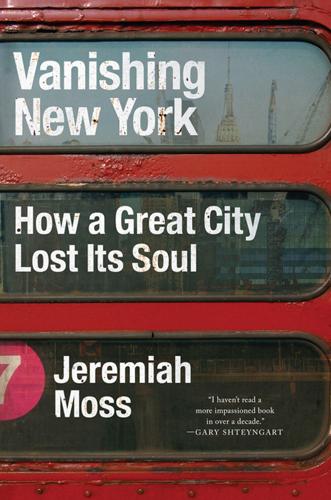
Vanishing New York
by
Jeremiah Moss
Published 19 May 2017
Imagine what would happen to the creative and iconoclastic character of the city—and the nation—without these populations. As Rebecca Solnit wrote, “A city without poets, painters, and photographers is sterile. . . It’s undergone a lobotomy.” The system today is such that even the most compassionate young queer poet—imagine her: dedicated to social justice, organizing with Occupy Wall Street and Black Lives Matter, working as a barista in the feminist cooperative bookshop—even she finds herself with little choice but to be a gentrifier, moving to a low-income neighborhood because that’s what she can afford and her social network is there. And what about me? I’m a white, educated, middle-class professional.
…
and waved signs that read “I ♥ Immigrant NY.” Once again, the insurgent heart of the city has a beat. And so, as I write this in unstable and uncertain January 2017, I dare to hope. Today’s violent convulsions may be signs that the New Gilded Age is thrashing in its death throes. Over the past few years, the Occupy movement, Black Lives Matter, and Bernie Sanders have energized a new generation of activists. The mainstream media finally started talking about economic inequality. Even the International Monetary Fund, a major champion of neoliberalism, admitted that free-market policies hinder growth, concluding, “The evidence of the economic damage from inequality suggests that policymakers should be more open to redistribution.”
…
H., 27 Auletta, Ken, 105 AVA High Line, 240, 242–43 AvalonBay Communities, 91–92, 240, 242 Avalon Bowery, 91–92 Avalon Chrystie Place, 91–92 Baby Dee, 25, 360 Baby strollers, 230, 329–30 Baccarat Hotel & Residences, 182–83 Bachom, Sandi, 127 Bacon’s Rebellion, 61 Badalucco, Michael, 29 Badillo, Herman, 77–78 Bagatelle, 190–91 Bailey, Marlene (“Hot Dog”), 25 Balazs, André, 94 Baldwin, James, 65, 66 Ballarò, 21–22 B&H Dairy, 31 Bank of America Tower, 266 Banksy, 403 Barad, Ulo, 275–78 Barclays Center, 352, 353–54 Bard, Stanley, 216, 223 Barnes, Djuna, 130, 140 Barnes & Noble, 18 Barney, Matthew, 187 Barrison, Steven, 283 Barron, James, 51 Barry, Dan, 95, 167, 264–65, 364 Bartkoff, Regina, 51 Basquiat, Jean-Michel, 87, 95 Baum, Dan, 74 Bay Ridge, 354, 355 Beame, Abraham, 76, 78, 249–50 Beast of the Feast, 126, 146 Beatrice Inn, 143 Becker, Serge, 87–89 Bedford-Atlantic Armory, 347 Bedford-Stuyvesant (Bed-Stuy), 161, 343–45 Bellafante, Ginia, 256 Bella’s Luncheonette, 121 Bellevue South, 22 Bendix Diner, 219 Benepe, Adrian, 252 Berger, Joseph, 394 Berman, Marshall, 131, 392 Berrigan, Ted, 86 Bike lanes, 324, 340 Bill’s Gay 90s, 146 Biography Bookshop, 174 Blackburn, Paul, 358 Black Lives Matter, 325, 416 Blandalism, 232 Blarney Cove, 26 Bleecker Street, 171–76 Blesh, Rudi, 88 Bliss, George, 88 Blockbusting, 68–69 Bloomberg, Michael, 7, 8, 39, 155–67, 179, 205 Bronx and, 393–94 Brooklyn and, 337, 344, 346, 348, 350, 352, 354, 367–68 creative talent recruitment and, 324 de Blasio and, 169 East Village and, 21 Harlem and, 296–99, 308, 310, 313 homelessness and, 204 Hudson Yards and, 244–45 Lower East Side and, 53 luxury vision of city, 2, 37, 159–60, 200, 220 nanny state and, 166–67 Queens and, 376–77, 382, 384–85 rezonings and, 159–62 September 11 attacks and, 115, 137, 156–58 term limits and, 165–66 Times Square and, 265–66, 273–74 tourism and, 118, 250–52, 254, 258 West Chelsea and, 236, 239 Bloomberg Associates, 169 Bloomberg’s New York (Brash), 105, 115, 158–59 Blue & Cream, 92, 99–100 Blue Residential Tower, 50 Bobby’s Happy House, 299–300, 301–2 Bohemianism, 57–58, 60, 140–41, 142, 152–53 Boissevain, Jeremy, 257 Bonfire of the Vanities (Wolfe), 392 Bono, Jake, 382–84 Bono Sawdust Supply Company, 382–84 Bookmarc, 174–75 Borowitz, Andy, 167 Boulud, Daniel, 92–93 Bourgeois, Louise, 352 Bouwerie Lane Theater, 94 Bowery, 81–102 Bowery Bar, 87–90 Bowery Hotel, 93 Bowery House, 95 Bowery Residents’ Committee (BRC), 82 Bowery Wine Company, 92, 96 Bowles, Paul, 252 Bowman, David, 17 Boyer, M.
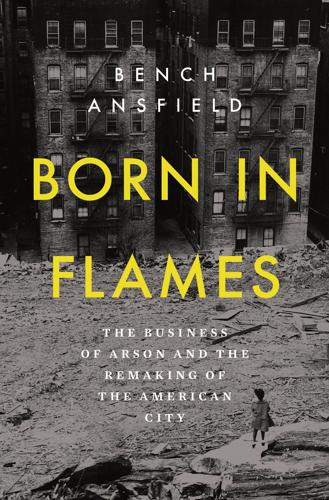
Born in Flames
by
Bench Ansfield
Published 15 Aug 2025
Brenner, “Why the World Reinsurance Market Has the Jitters,” 177. 60Rob Nixon, Slow Violence and the Environmentalism of the Poor (Cambridge, MA: Harvard University Press, 2013). On the dialectic between “slow death” and state-sanctioned violence, see Robin D. G. Kelley, “Thug Nation: On State Violence and Disposability,” in Policing the Planet: Why the Policing Crisis Led to Black Lives Matter, ed. Jordan T. Camp and Christina Heatherton (Brooklyn: Verso, 2016), 32. Six: Out of the Shadows and into the Streets 1William Wolf, “Paul Newman Breaks the Mold,” New York, February 9, 1981. 2Grandmaster Flash and the Furious Five, “The Message,” by Duke Bootee, Melle Mel, and Sylvia Robinson, Sugar Hill Records, 1982. 3Lee Dembart, “Carter Takes ‘Sobering’ Trip to South Bronx,” New York Times, October 6, 1977, 1; “Carter Takes Unscheduled Tour of Blighted Bronx Area,” Los Angeles Times, October 5, 1977, A2.
…
Fried, “Housing Project a Fiscal Victim,” New York Times, November 2, 1975, 1. 51James Q. Wilson and George L. Kelling, “Broken Windows: The Police and Neighborhood Safety,” Atlantic Monthly, March 1982; Jordan T. Camp and Christina Heatherton, eds., Policing the Planet: Why the Policing Crisis Led to Black Lives Matter (New York: Verso, 2016); Bernard E. Harcourt, Illusion of Order: The False Promise of Broken Windows Policing (Cambridge, MA: Harvard University Press, 2001), chapter 1; Tanya Erzen, “Turnstile Jumpers and Broken Windows: Policing Disorder in New York City,” in Zero Tolerance: Quality of Life and the New Police Brutality in New York City, ed.
…
For more on this signifying work, see Bench Ansfield, “The Broken Windows of the Bronx: Putting the Theory in Its Place,” American Quarterly 72, no. 1 (March 2020): 103–27. 56This line of argumentation was not new for Wilson—he had been dismissing charges of racism within the criminal legal system since at least the 1970s. Wilson and Kelling, “Broken Windows.” Hinton, From the War on Poverty to the War on Crime, 270–71; Robin D. G. Kelley, “Thug Nation: On State Violence and Disposability,” in Camp and Heatherton, Policing the Planet: Why the Policing Crisis Led to Black Lives Matter; Ruth Wilson Gilmore and Craig Gilmore, “Restating the Obvious,” in Indefensible Space: The Architecture of the National Insecurity State, ed. Michael Sorkin (New York: Routledge, 2008), 141–62; Robert J. Sampson and Stephen W. Raudenbush, “Seeing Disorder: Neighborhood Stigma and the Social Construction of ‘Broken Windows,’” Social Psychology Quarterly 67, no. 4 (2004); Nikhil Pal Singh, “The Whiteness of Police,” American Quarterly 66, no. 4 (2014): 1091–99. 57Janice Simpson and Derek Reveron, “Ghetto Landscape: On Gutted Kelly Street, Vandalism and Arson Aren’t Anything New,” Wall Street Journal, July 20, 1977, 19.
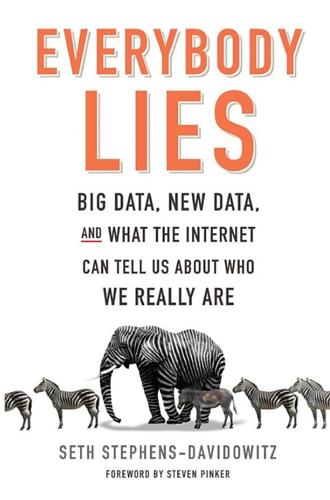
Everybody Lies: Big Data, New Data, and What the Internet Can Tell Us About Who We Really Are
by
Seth Stephens-Davidowitz
Published 8 May 2017
People frequently lie—to themselves and to others. In 2008, Americans told surveys that they no longer cared about race. Eight years later, they elected as president Donald J. Trump, a man who retweeted a false claim that black people are responsible for the majority of murders of white Americans, defended his supporters for roughing up a Black Lives Matters protester at one of his rallies, and hesitated in repudiating support from a former leader of the Ku Klux Klan. The same hidden racism that hurt Barack Obama helped Donald Trump. Early in the primaries, Nate Silver famously claimed that there was virtually no chance that Trump would win. As the primaries progressed and it became increasingly clear that Trump had widespread support, Silver decided to look at the data to see if he could understand what was going on.
…
See Jews anxiety data about, 18 and truth about sex, 123 AOL, and truth about sex, 117–18 AOL News, 143 art, real life as imitating, 190–97 Ashenfelter, Orley, 72–74 Asher, Sam, 202 Asians, and truth about hate and prejudice, 129 asking the right questions, 21–22 assassinations, 227–28 Atlantic magazine, 150–51, 152, 202 Australia, pregnancy in, 189 auto-complete, 110–11, 116 Avatar (movie), 221–22 Bakshy, Eytan, 144 Baltimore Ravens-New England Patriots games, 221, 222–24 baseball and influence of childhood experiences, 165–69, 165–66n, 171, 206 and overemphasis on measurability, 254–55 predicting a player’s future in, 197–200, 200n, 203 and science, 273 scouting for, 254–55 zooming in on, 165–69, 165–66n, 171, 197–200, 200n, 203 basketball pedigrees and, 67 predicting success in, 33–41, 67 and socioeconomic background, 34–41 Beane, Billy, 255 Beethoven, Ludwig von, zooming in on, 190–91 behavioral science, and digital revolution, 276, 279 Belushi, John, 185 Benson, Clark, 217 Berger, Jonah, 91–92 Bezos, Jeff, 203 bias implicit, 134 language as key to understanding, 74–76 omitted-variable, 208 subconscious, 132 See also hate; prejudice; race/racism Big Data and amount of information, 15, 21, 59, 171 and asking the right questions, 21–22 and causality experiments, 54, 240 definition of, 14, 15 and dimensionality, 246–52 and examples of searches, 15–16 and expansion of research methodology, 275–76 and finishing books, 283–84 future of, 279 Google searches as dominant source of, 60 honesty of, 53–54 importance/value of, 17–18, 29–33, 59, 240, 265, 283 limitations of, 20, 245, 254–55, 256 powers of, 15, 17, 22, 53–54, 59, 109, 171, 211, 257 and predicting what people will do in future, 198–200 as revolutionary, 17, 18–22, 30, 62, 76, 256, 274 as right data, 62 skeptics of, 17 and small data, 255–56 subsets in, 54 understanding of, 27–28 See also specific topic Bill & Melinda Gates Foundation, 255 Billings (Montana) Gazette, and words as data, 95 Bing (search engine), and Columbia University-Microsoft pancreatic cancer study, 28, 30 Black, Don, 137 Black Lives Matter, 12 Blink (Gladwell), 29–30 Bloodstock, Incardo, 64 bodies, as data, 62–74 Boehner, John, 160 Booking.com, 265 books conclusions to, 271–72, 279, 280–84 digitalizing, 77, 79 number of people who finish, 283–84 borrowing money, 257–61 Bosh, Chris, 37 Boston Globe, and A/B testing, 214–17 Boston Marathon (2013), 19 Boston Red Sox, 197–200 brain, Minsky study of, 273 Brazil, pregnancy in, 190 breasts, and truth about sex, 125, 126 Brin, Sergey, 60, 61, 62, 103 Britain, pregnancy in, 189 Bronx Science High School (New York City), 232, 237 Buffett, Warren, 239 Bullock, Sandra, 185 Bundy, Ted, 181 Bush, George W., 67 business and comparison shopping, 265 reviews of, 265 See also corporations butt, and truth about sex, 125–26 Calhoun, Jim, 39 Cambridge University, and Microsoft study about IQ of Facebook users, 261 cancer, predicting pancreatic, 28–29, 30 Capital in the 21st Century (Piketty), 283 casinos, and price discrimination, 263–65 causality A/B testing and, 209–21 and advertising, 221–25 and Big Data experiments, 54, 240 college and, 237–39 correlation distinguished from, 221–25 and ethics, 226 and monetary windfalls, 229 natural experiments and, 226–28 and power of Big Data, 54, 211 and randomized controlled experiments, 208–9 reverse, 208 and Stuyvesant High School study, 231–37, 240 Centers for Disease Control and Prevention, 57 Chabris, Christopher, 250 Chance, Zoë, 252–53 Chaplin, Charlie, 19 charitable giving, 106, 109 Chen, M.
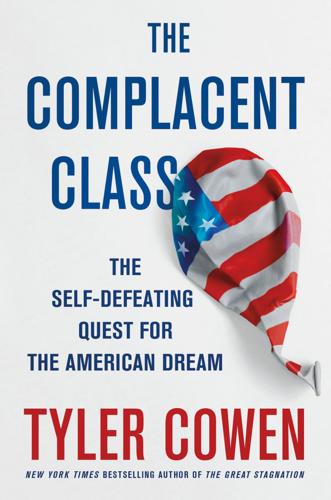
The Complacent Class: The Self-Defeating Quest for the American Dream
by
Tyler Cowen
Published 27 Feb 2017
But today’s protests, at least so far, occur mostly within the law, with exceptions that are notable precisely because they are so rare. A disgruntled teenager might lunge at a cop in a moment of frustration and imprudence, a crowd might even burn down a pharmacy, but in neither case are participants likely to join a public group dedicated to a violent revolution to overthrow the capitalist system. “Black Lives Matter” is notable for avoiding any particular kind of political endorsement, and it is also more positive than destructive in its orientation. It favors inclusiveness, gender equality, and justice and peace rather than revolution. It’s possible that the 2016 police officer shootings in Dallas may signal a change, but so far we’ve seen a pretty peaceful version of protest for a considerable period of time.
…
See also health care Airbnb Allen, Woody Amazon.com Andreessen, Marc antidepressants anti-establishment insurgence assortative mating. See also matching attention-deficit/hyperactivity disorder (ADHD) Attica prison riots Austen, Jane authenticity automation Babcock, Kendrick Charles Baltimore riots bank bailouts Bausum, Amm behavioral economics Bell, Daniel big data Birmingham Children’s March Black Lives Matter Black Panthers book sellers Bowling, Julia Brexit Brin, Sergei building restrictions business morale Canada capital services car culture Carter, Jimmy change and the Complacent Class and crime decelerating and dynamic society and education and gay culture and global affairs and government and higher education and innovation job switching and matching and mobility and politics and race relations resistance to and segregation and social protest chaos.
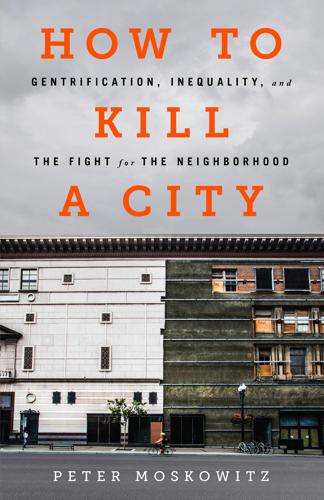
How to Kill a City: The Real Story of Gentrification
by
Peter Moskowitz
Published 7 Mar 2017
But I believe that while there are ways to ameliorate gentrification under lightly restrained capitalism (which is what I’d call the current US economic system), there will be no solution to the crisis without true economic and racial equality. As I wrote this book, tremendous strides were being made in that fight. The Black Lives Matter protests made police violence and continued racial oppression a daily topic in the news. Movements for queer and trans rights have recentered gender and sexuality at the forefront of social justice conversations. Even mainstream politicians are beginning to preach racial and economic justice.
…
See also public housing demolition of, 52 lack of government support for, 21, 134, 169, 179 land banking and, 211 in New Orleans, 29 in New York City, 145, 169, 173, 179–180, 190, 199–200, 203–204, 212 racial segregation and, 110 in San Francisco, 131–134=135 SROs as, 135 Airbnb, 61–62, 134, 136, 211 Angotti, Tom, 210 Aristil, Tim, 129 Atlantic Yards (Brooklyn), 174, 202 Back to the City Conference, 32 Baker, Richard, 53 Baldwin, James, 168 ballot initiatives, 211 Beame, Abraham, 191–192 Berlin, 142–143, 184, 214 Berni, Ryan, 43 Bigard, Ashana, 19–23, 26–30, 64 Bing, Dave, 83 Black Lives Matter movement, 214 Blanco, Kathleen, 18, 26, 48–49, 50 de Blasio, Bill, 144, 170, 175, 187–188, 202–203 gentrification and, 201 zoning laws and, 190 Bloomberg, Michael, 41, 169–170, 179, 201–204 Bolaños, Annabelle, 131, 144, 148 Boston, MA, 107 Boyd, Alicia, 198–200, 207, 210 Brash, Julian, 215 Bratton, Bill, 175 Brinkley, Kenny, 103–104 Broder & Sachse, 74, 76 “broken windows” policing, 175 Brooklyn, NY, 8, 176–180, 197–198, 217.
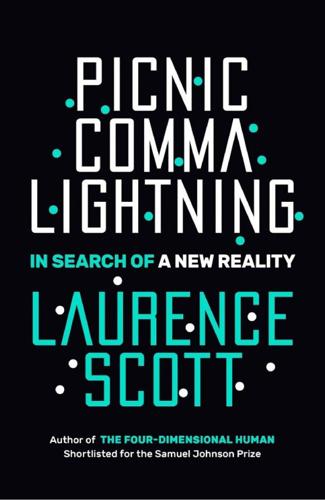
Picnic Comma Lightning: In Search of a New Reality
by
Laurence Scott
Published 11 Jul 2018
In its original sixteenth-century, Middle French context, to dismantle meant ‘to tear down the walls of a fortress’. It can signal an assault on our security or a raid against the seat of power, or both. On the progressive Left, dismantling is the framing device in the fight against oppression. In an article for USA Today, scholar Sirry Alang urged her readers to support Black Lives Matter and similar activism, in order to ‘help expose and11 dismantle structural racism’. The recent proliferation of the #MeToo movement has seen its aims both celebrated and contested, with some arguing that it ‘does little to dismantle the underlying problem’ of sexual abuse. Many others, meanwhile, cheer its attack on that ancient fortress of misogyny.
…
These various collisions and mergers between the real and the unreal are definitive of our times. But they are also creating promising kinds of disenchantment and disillusionment. As what we might once have confidently called everyday life comes to seem increasingly unreal, our incredulity can be harnessed into progressive forms of scrutiny. Radical movements – such as Black Lives Matter and Me Too, to name just two – are rising from perspectives that have always stood in some way at odds to the mainstream view. They are demanding the resolution of those blurred skulls that have always been central to our social orders. We’re learning to stand at new angles in relation to our everyday normalcy, to question its assumptions and our place within it.

AIQ: How People and Machines Are Smarter Together
by
Nick Polson
and
James Scott
Published 14 May 2018
But for many people the alarm bells started to go off in the wake of the 2016 presidential election, when it became clear just how cleverly Russia had exploited Facebook’s ad-targeting system to sow discord among American voters. Russian agents, for example, zeroed in on a group of users who’d gone on Facebook to express solidarity with police officers in the wake of protests by the Black Lives Matter movement. They targeted these users with an ad containing a picture of a flag-draped coffin at a policeman’s funeral, along with the caption: “Another gruesome attack on police by a BLM movement activist. Our hearts are with those 11 heroes.” They targeted a group of conservative Christian users with a different ad: a photo of Hillary Clinton shaking hands with a woman in a headscarf, together with a caption rendered in pseudo-Arabic script, “Support Hillary.
…
See robot cars availability heuristic Baidu base-rate neglect Bayes’s rule coin flips and discovery of as an equation investing and mammograms and medical diagnostics and robot cars and search for Air France Flight 447 and search for USS Scorpion and usefulness of Bayesian search essential steps of posterior probabilities prior beliefs and revised beliefs prior beliefs and search for USS Scorpion prior probabilities Bel Geddes, Norman Belichick, Bill Bell Labs BellKor’s Pragmatic Chaos Berglund Scherwitzl, Elina Bernoulli, Johann big data. See data science; data sets birth control. See contraception and birth control bisphosphonates Black Lives Matter Borges, Jorge Luis: “The Library of Babel” Bornn, Luke brachistochrone curve Brooklyn Nets Buffett, Warren cancer bisphosphonates and breast cancer colorectal cancer esophageal cancer lymphoma medical imaging skin cancer surgery targeted therapy car accidents Cardwell, Chris Carnegie Mellon University cars.
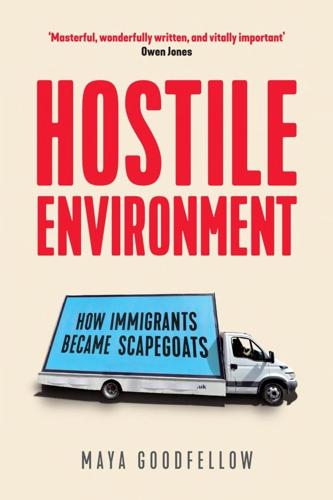
Hostile Environment: How Immigrants Became Scapegoats
by
Maya Goodfellow
Published 5 Nov 2019
Vaughan Robinson and Jeremy Segrott, Understanding the Decision-Making of Asylum Seekers, Home Office Research Study, vol. 243, London: Home Office Research, Development and Statistics Directorate, 2002, p. viii; Heaven Crawley, Change or Choice? Understanding Why Asylum Seekers Come to the UK, London: Refugee Council, 2010. 41. Nicholas De Genova, ‘The “Migrant Crisis”’ as Racial Crisis: Do Black Lives Matter in Europe?’, Ethnic and Racial Studies, vol. 41, issue 10, 2018, pp. 1765–82. 42. For instance, see Harmit Athwal, ‘Roll Call of Deaths of Asylum Seekers and Undocumented Migrants, 2005 Onwards’, irr.org.uk, 29 October 2010, last accessed 24 June 2019. 43. ‘Nottingham Asylum Seeker Fell from Balcony “After Taunts”’, BBC News, 5 October 2011; Corin Faife, ‘Modern Times: Osman Rasul – In Memory’, Ceasefire, 3 August 2010. 44.
…
When I interviewed Professor Gurminder Bhambra she made this point about the relationship between borders and anti-colonial movement. 19. Toni Morrison, Black Studies Center public dialogue, Portland State, Special Collection: Oregon Public Speakers, 30 May 1975, available at pdxscholar.library.pdx.edu/orspeakers/90/, last accessed 25 May 2019. 20. Nicholas de Genova, ‘The “Migrant Crisis” as Racial Crisis: Do Black Lives Matter in Europe?’, Ethnic and Racial Studies, vol. 41, issue 10, p. 1778.
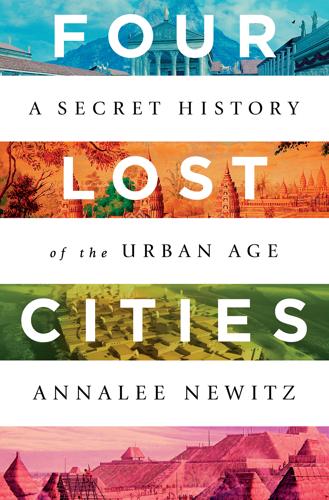
Four Lost Cities: A Secret History of the Urban Age
by
Annalee Newitz
Published 2 Feb 2021
The tall grass around my ankles was blinking with fireflies, and the air was cool. Below me I could see the clean ground of the Great Plaza, emptied of its ancient public. Across the river were the lights of St. Louis, a city whose citizens recently rose up to protest police brutality in Ferguson during the birth of the Black Lives Matter movement. Those protesters walked over Cahokian land whose Great Mound had been torn down over a century before, but they continued the Mississippian tradition of questioning authority. The thick air smelled like damp soil and farmland. With my feet atop an ancient megalopolis and my eyes on distant skyscrapers, it felt as if cities were almost a natural product of this place.
…
See also specific locations Aspara National Authority, 187–88 assimilation, 62 astronomy, 217 Atakuman, Çigdem, 36, 37–38 Augustales, 95, 101–2, 137 Augustus, 92–93, 101, 113 aurochs, 29, 30, 36, 46 authoritarianism, 259, 261 Aymonier, Étienne, 173 Ayutthaya, Thailand, 196 Baires, Sarah, 9–10, 227–33, 242, 246, 247, 248, 249 Baltus, Melissa, 9–10, 227–33, 241, 242, 246, 247, 248, 249 barley, 219–20 Bar-Yosef, Ofer, 39, 64 Battambang, 157–58 Bay of Naples, 83, 90, 102, 103, 127, 133, 136 Bayon temple, 190–92 BBB Motor Site, 219, 221, 222, 249 “beaded burial,” 243–45 Beng Melea, 178–81, 197 Benz, Marion, 33, 34, 35, 36 Biehl, Peter, 39 Big Mound, 228 “Birdman,” 244 birds, 29 Birger figurine, 219, 220–21 “Black Drink,” 215, 231 Black Lives Matter movement, 254 bones, 45–46, 243 of ancestors, 45, 49, 57, 61, 74, 216 “lick check” and, 233 borrow pits, 9, 208, 212, 225, 235, 242, 245–46, 248 bricks, 56, 74, 86–87, 102 Buddha, 154, 190 Buddhism, 158, 192, 199 Mahayana, 198 Building of Eumachia, 95 buildings, “closing up,” 224–25 bulls, 37 burial, of ancestors, 32, 243, 250 burial mounds, 243–45, 252 Cahokia, 8–10, 12, 13, 204–61 abandonment of, 210, 225, 241–54 astronomy and, 217 celebrations in, 224–25 centralized belief system in, 250 Classic Cahokia, 234 “closing up” in, 224–25 collapse hypothesis and, 236–40, 250 compared to Angkor, 211–12 cooking in, 220, 251 courtyard neighborhood layouts in, 208, 229, 230–31, 234–36, 247–48 decentralization in, 248–50 democratization of, 233–36 environmental crises in, 249–50 expansion of, 225, 250 farming in, 218–24, 251 farmlands of, 218, 223–24, 249 figurines from, 219, 220–21, 251 fragmentation of, 248–50 granted World Heritage status, 228 heterarchy in, 242 immigrants in, 215, 217–18, 223, 224 Lohmann phase, 234 migration and, 250–54 monuments in, 208–9, 210 (see also specific monuments and kinds of monuments) Moorehead phase, 234, 235–36, 239, 248 mounds in, 208–10, 211–12 organized around nonmarket principles, 237 paintings in, 251 phases of, 234–40, 239, 247, 248 political struggles in, 245 public life in, 253 “rejuvenation period” in, 248–50 return to old practices in, 248–50 return to small-town life in, 260 revitalization of, 248–50 revival in, 227–40 ridge top mounds in, 243 rise and fall of, 209–10 rituals in, 224–25, 243–48 shift in layout of, 229 Siouan tribes and, 250–54 social change in, 229, 234–35, 237 social movements in, 210, 249–50, 253 social structure in, 242 souvenirs from, 213 spirituality in, 212–13, 222–23, 242. 253 Stirling phase, 234, 235, 247, 248, 249 survivance in, 250–54 transformative power of water in, 245–46 transition in, 229, 234–35, 237 urban plan of, 212–13, 229, 234, 243 Cahokia Mounds State Historic Site, 228 Caligula, 93 Cambodia, 1–4, 5, 145, 156, 158, 198 climate extremes and, 147, 161 France and, 183 Campania, 134, 137 Campbell, Stuart, 73, 75 Carston, Janet, 38 Carter, Alison, 157–58, 175, 181, 197 Carthage, 86, 131 Çatalhöyük, 5–7, 10–13, 15–75, 16–17, 104, 124, 137, 148–50, 155, 160, 198, 209, 257, 260, 261 8.2k event in, 62–66, 73 4040 excavation, 22, 25, 42, 44 abandonment of, 60, 61, 64, 68–71, 73, 103, 250 afterlife of, 129 cemeteries at, 60 change in, 36, 59–60, 61, 66–71, 73, 258 as city, 71–72, 73 climate change in, 63–66, 73, 258 “closing up” houses and buildings in, 224–25 collapsing structures in, 72 cooking in, 42, 54, 61 crisis points in, 59–60 Death Pit in, 71–75 doorways in, 31–32 drought in, 258 egalitarianism in, 66–68, 69–70, 75 farming in, 61, 73 final phase of its occupation, 62–66 food insecurity and, 73 founding of, 27 graves in, 22–23 hierarchy in, 66–71, 72 housebuilding in, 24 as mega-village, 66 migration within, 62–63 mobility and, 70–71 privacy in, 31–32 private property in, 66 as proto-city at best, 71, 73 sea level rise and, 63 signs of inequality in, 70 skyline of, 42–43 social change in, 66–71 social stratification in, 66–71, 75 social structure in, 66–71 stamps in, 36–40, 70–71 trade and, 71 urban design of, 22, 31, 66–68 urban grid of, 22, 66–67 urbanism and, 40 wall art in, 56 Çatalhöyük dig, 21, 32 Çatalhöyük Dig House, 21 Catlin, George, 275n9 cattle, 65.
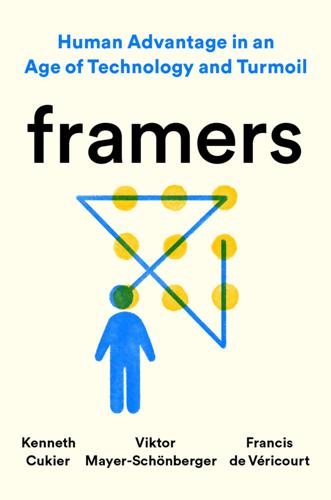
Framers: Human Advantage in an Age of Technology and Turmoil
by
Kenneth Cukier
,
Viktor Mayer-Schönberger
and
Francis de Véricourt
Published 10 May 2021
Seven years later, when American cities were up in flames, literally, over the murder of George Floyd by a Minneapolis police officer and protesters chanted “Defund the police,” Camden was cited as a success story. Murders were down 60 percent, crime had almost halved, and complaints of excessive force by police had fallen by a stunning 95 percent. The reframing had worked. A symbolic moment came in June 2020. A new Camden police chief, Joseph Wysocki, not only authorized a big Black Lives Matter street protest—he asked the organizers if he could join them at the head of the procession. It made national news. The television cameras framed an indelible image of what a new mental model of policing can look like. A New Way of Seeing the World Whether they plunder their repertoire, repurpose a frame from elsewhere, or reinvent an entirely new frame, all successful reframers share certain things in common.
…
She profiled the “intellectual dark web” of non-mainstream thinkers and denounced the censorship, microaggressions, and safe spaces that typify the culture wars. Her work generated animosity on both sides of the aisle. Jewish, she was labeled a Nazi by trolls. In June 2020, after the op-ed section published a piece calling on Trump to use the military to quell incidents of looting and rioting that were happening alongside some of the Black Lives Matter protests, a staff insurrection forced out Bennet, the op-ed editor who had recruited Weiss. The heat on her increased, and she left five weeks later. “My own forays into Wrongthink have made me the subject of constant bullying by colleagues who disagree with my views,” she wrote in her resignation letter.
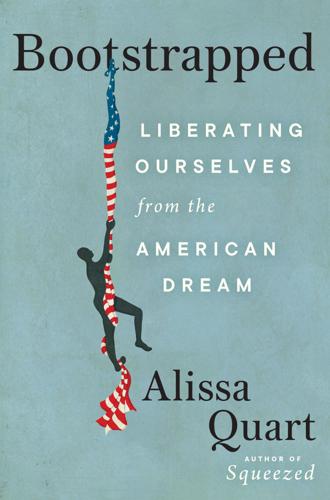
Bootstrapped: Liberating Ourselves From the American Dream
by
Alissa Quart
Published 14 Mar 2023
“There’s really no other word to use other than ‘self-made,’” she said, defining herself, ignoring how illusory the category was, “because that is the truth.” By 2020, however, the tide had turned. The girlbosses had an unapologetic relationship to wealth and luxury. In the wake of a wave of activism led by Black Lives Matter, their actions were suddenly exposed to greater scrutiny (and, admittedly, often a far closer examination than men occupying the same station would receive). As a result, a number of the women associated with girlboss-ery fell—or were pushed—off their perches. Their number included Gelman, Aflalo, and Girl, Wash Your Face author Hollis, the archetype that specialized in obliviousness toward others’ realities, to the point at times of being exploitative toward employees, fans, and even consumers.
…
Gary, 198, 259n Bezos, Jeff, 58–59, 162 bias, ix, 79, 124, 187, 199, 222 racial, 32, 64, 82, 156, 182, 206, 237n in self-made myth, 64, 95–96, 144, 259n Biden, Joseph R., Jr., 9–11, 69, 133, 158, 219–20, 251n election of, 74, 78, 245n Billionaires Club, 243n, 254n, 260n birth circumstances, x, 5, 11, 40, 48, 84, 170–71 inborn privileges and, 33, 55–56, 72, 76, 129, 230 “success” and, 4, 8–9, 35, 60–62, 69, 217, 223 Black collectives, 186–90, 212, 223 Black landlessness, 33–34, 184–90, 241n Black Lives Matter, 63, 82, 162–63, 175–76 enslavement and, 14, 19, 28, 33, 83–84, 124, 185–86, 237n Bliss, Eula, 253n Bloomberg, Michael, 40, 60, 161 Boebert, Lauren, 218 bonobo apes, 173–74, 257n bootstrap ideology in Adverse Childhood Experiences (ACE), 191–95, 258n vs. community, 10, 174, 209, 222–25, 228–30, 259n as corporate mindfulness, 86–99 counternarratives, 133, 141–42, 147–48, 167, 218, 231, 260–61n defined, ix, 3–4 deservedness and, 4–5, 15, 55–60, 197, 236n, 261n influencers, 29, 35, 39–50 as ludicrous myth, 5–6 in politics, viii, 9–10, 19, 28, 59–60, 73–78, 247n in Trumpism, 7, 13, 36, 74, 78–81, 243n as victim blaming, 42, 57, 65–66, 83, 96, 203, 244n vs. women, 122–25, 127–29 bootstrapped.
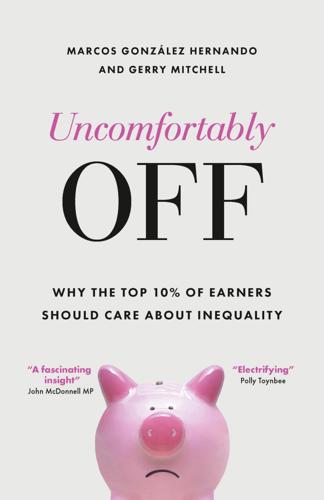
Uncomfortably Off: Why the Top 10% of Earners Should Care About Inequality
by
Marcos González Hernando
and
Gerry Mitchell
Published 23 May 2023
As Piketty puts it, wealth grows more rapidly than the rate of growth of income and output,53 ‘capital reproduces itself faster than output increases. The past devours the future.’54 This can be seen in the historical injustices of legacies that have started to gain salience. Movements such as Black Lives Matter have begun to put a spotlight on how the wealth of the truly wealthy in the UK is based on a long history of exploitation of non-White people.55 The dominance of capital in the UK isn’t only useful for wealthy Brits. According to Oliver Bullough, in his celebrated book Butler to the World, Britain ‘operates as a gigantic loophole, undercutting other countries’ rules, massaging down tax rates, neutering regulations, [and] laundering foreign criminals’ money’.56 We are now seeing the consequences in sectors including energy, banking and care of having become a ‘paradise’ for disaster capitalists.
…
A abortion, top 10% attitudes towards 6, 16 academics/academia 5, 9–10, 54 knowledge production and enabling of the wealthy 132–3 acceleration, of the pace of life 128–9 accountancy firms 67, 68, 108, 109, 126 accumulation 135–6 Advani, A. 179, 180 affluence 22, 144, 162, 180 see also top 1%; top 10%; wealth age profile of the top 10% 8 agency 49 Alamillo-Martinez, Laura 73 Amazon 180 Ambler, L. 132–3 anti-elitism 12, 46, 96 anxiety 72, 130, 150 and status 135, 165 see also mental health ‘anywheres’ 96 ascriptive identities 153 attitudes to cultural issues 42, 84 to economic issues 6, 8, 11, 16, 18–19, 42, 42, 77, 92–3, 161–4 to political issues 8, 16–17, 42, 76–99 to social issues 6, 8, 16, 18–19, 42, 65–71, 77, 92, 92–3, 161–3, 164–6 austerity policies 10, 11, 13, 16, 76, 78–9, 105, 115–16, 169–70 automation 79, 158, 160 B Bangladeshi ethnicity, in the top 10% 30 Bank of England 78, 105, 164, 175 ‘bank of mum and dad’ 29, 111 Barber, Rob 1, 2, 4, 181 Barclay family 121 BBC 11 Beck, U. 64 Bell, Torsten 2, 6 Berman, Y. 34 Berry, C. 82 Bezos, Jeff 144 Biden, Joe 142 Big Four accountancy firms 67, 68 see also accountancy firms Bill of Rights 121 Bitcoin 143 Black African/British/Caribbean ethnicity, in the top 10% 30 Black Lives Matter 113 Black Report 1977 115 Blair, Tony 9, 84, 185 Blakeley, Grace 139, 176 Bolsonaro, Jair 96, 98 ‘boundary work’ of elites 45 Bourdieu, Pierre 40 Brahmins 38, 41–2, 43, 44, 45, 46, 47, 50, 51, 59, 61, 68, 73, 74–5, 84, 96, 167, 185 ‘brain drain’ 124 see also mobility Brexit 11, 16, 76, 80, 86–7, 97, 101–2, 125 Brown, Gordon 175 Bullough, Oliver 113–14 bunkers 130, 131, 144, 187 Burgon, Richard 1, 3, 6 business support schemes, COVID-19 pandemic 15, 104, 126–7, 140, 151 C Cambridge University 28–9, 119 Cameron, David 84 capital, income from 33–4 capital flight 124 capital tax, global 180 car ownership 153 carbon emissions 54, 114–15, 135, 143, 145, 171, 172, 178 see also climate change 236 Index care see social care Centre for Economic Performance 163 Chancel, L. 176–7 charitable donations 70–1 charitable sector 132 child poverty 170 see also poverty children of the top 10% 27, 35–6, 100–1, 109, 111–12, 183–4, 186 ‘bank of mum and dad’ 29, 111 childcare costs 135–6 downward social mobility 31–2, 162 social reproduction 135–7 US 57 Chinese ethnicity, in the top 10% 30 class 39–40 cultural signifiers of 39, 40–1 ‘death of ’ 39 and education 40–1, 46, 51, 58–9 inherited nature of 148 middle class 33, 39, 40, 133, 136, 148 and social mobility 57–8 terminology of 38–9 upper class 38–9, 133 upper-middle class 4, 16, 27, 31–2, 38–54, 39 (see also top 10%) working class 24, 39, 57, 101–2, 148 climate change 54, 100, 101, 114–15, 125, 135, 141, 171–2 carbon emissions 54, 114–15, 135, 143, 145, 171, 172, 178 need for collective action on 122–3 net zero 174, 176–7 coalition government (Conservative/ Liberal Democrat) 78 collective denial 139–42 common sense 11, 19, 74, 89, 90, 108, 126, 130, 147 community gender and community involvement 70 top 10%’s lack of awareness of/ involvement in 45–6, 49–50, 127–31, 131, 150–1, 154–7, 164–6 ‘compensatory consumption’ 129, 134 Conservative Party/Conservatives 3, 16, 53, 76–7, 84, 85, 88, 97, 99, 120, 179 leadership election, 2022 39 taxation policy 3, 53 traditional supporters 44 consumption 152–4, 169, 171, 178 ‘compensatory consumption’ 129, 134 environmental impact of 135 luxury consumption, and climate change 114–15 Corbyn, Jeremy 11, 16, 80, 84, 85, 87, 96, 97 corporate governance 174 corporate responsibility 70–1 corporate sector 46, 51, 59, 64, 65–6, 67–8, 71, 88–9, 108, 128, 153 corporation tax 105–6, 113, 180 cost of living crisis 14, 52, 76, 101, 104, 106, 127, 177–8 council tax 110, 180 COVID-19 pandemic 13, 15, 72–3, 103–4, 116, 126, 134, 142, 144, 151 furlough and business support schemes 15, 104, 126–7, 128, 140, 151 political impact of 87–8 Coyle, Diane 145 crises cost of living crisis 14, 52, 76, 101, 104, 106, 127, 177–8 of democracy 119–21 global financial crisis, 2008 31, 77–9, 126, 140 cryptocurrencies 143–4 cultural attitudes of the top 10% 42, 84 cultural capital 40, 41, 46, 51 cuts, in public services 78–9, 105, 117, 170 D deindustrialisation 28 democracy crisis of 119–21 erosion of 76, 81–2 demographic profile of the top 10% 8 depression 130, 150 see also mental health ‘deserving’, the 23, 57, 74 see also ‘undeserving’, the disability and social mobility 58 welfare benefits 78, 79, 175 Disability Rights UK 175 diversity and inclusion targets 57 domestic work see unpaid work Dorling, Danny 35, 146–7, 156, 183 downward orientation 35, 46, 47 downward social mobility 14, 36, 73, 136, 152, 162, 182 237 Uncomfortably Off children of the top 10% 31–2, 162 income and status insecurity 51–2 Dubai 133 Durose, Oly 39–40 E Earth4All 177 economy economic attitudes of the top 10% 6, 8, 11, 16, 18–19, 42, 42, 77, 92–3, 161–4 economic common sense 89, 90 GDP, as indicator of success 176 Economy 2030 Enquiry 109 EDF 106 Edmiston, Daniel 49 education and class 40–1, 46, 51, 58–9 inequalities 17, 100–1, 117–19, 136 Ofsted ratings and league tables 137 and political attitudes 41, 42 and social capital 60 and social mobility 58–60, 147–8 state education 36, 60, 119, 136, 137, 148, 170 see also higher education; private education Ehrenreich, Barbara 152 Elections Bill 2021 120 Electoral Calculus 173 Electoral Commission 120 electoral system reform 172–3 Eliasoph, Nina 81 elites 39, 44–5, 77 anti-elitism 12, 96 employment 151 blue-collar 28 good jobs 55–61 hard work 48, 50, 61–73, 162 impact on society of 65–71 inequalities 17, 100, 107–9 low-wage work 62, 127 precarity 61, 107–9 presenteeism 64 public sector 109 and purpose 66–7, 71, 75, 162 and self-respect 55–6 and status 55–7, 68, 74 structural labour market change 27–8, 158 top 10% 6, 16, 24, 25, 26–8, 55–75 total British employed 2 white-collar 28 work-life balance 18, 171 workplace reform 71–2 see also unpaid work energy costs 101, 104, 105–7, 175 energy industry privatisation of 177–8 windfall taxes 177 environmental issues 54, 161 carbon emissions 54, 114–15, 135, 143, 145, 171, 172, 178 net zero 174, 176–7 equality of opportunity 57, 153 equality of outcome 57 ESS (European Social Survey) 89, 92 ethnicity see race and ethnic origin Eton College 26, 119 EU-SILC (European Union Statistics on Living Conditions) 24, 28, 29–30, 32, 33 Eurofound 27–8, 36–7 European Convention on Human Rights 121 European Social Survey (ESS) 89, 92 European Union Statistics on Living Conditions (EU-SILC) 24, 28, 29–30, 32, 33 experts, anti-elitist attitudes towards 12 Extinction Rebellion 84 ‘extraction capitalism’ 112 F Farage, Nigel 96 ‘fear of falling’ 152, 182 see also downward social mobility feminism 56 financial sector 51–2, 88–9 food food banks 93, 175 ‘right to’ 178 foreign policy, top 10% attitudes towards 6, 42 formal work see employment ‘fortification mentality’ 134–5 Frank, Robert H. 48 Friedman, Sam 27, 29, 31, 40, 57 furlough scheme, COVID-19 pandemic 15, 104, 128, 140, 151 G Gallup Poll, US 22, 26 Gates, Bill 144 GDP, as indicator of success 176 gender gender profile of the top 10% 8, 29–30 inclusivity 152–3 social mobility 57–8 general election, 2019 1, 76, 97, 120, 173 Generation Z 17, 100, 118 gentrification 133–4 238 Index Germany 159, 169 Gethin, Stephen 121 Ghosh, J. 132–3 Giddens, A. 64 Gilens, Martin 42–3 gilets jaunes (yellow vest) movement, France 115 global financial crisis, 2008 31, 77–9, 126, 140 global warming see climate change globalisation 39 offshoring 79, 109, 158 Good Friday Agreement 121 good jobs 55–61 see also employment Goodhart, David 96–7 Gove, Michael 84 government debt 140 government employees, as members of the top 10% 5 government spending 169–70 see also public services; welfare state Graeber, David 46, 66, 75, 129, 157 Great British Class Survey 2013 39 Green, Duncan 184 Green New Deal 176 Green Party 87, 120, 178 Guinan, J. 82 H House of Commons Committee for Business, Energy and Industrial Strategy 107 household debt 152 housing 52 and climate change 114 house prices 33 housing costs 110, 111 inequalities 17, 100, 107–9, 133–4 insulation grants 176 mortgages 33, 52, 106, 110 and state education 137 see also home ownership; homelessness human rights 121 Human Rights Act 1998 121 I Haldane, Andy 164 hard work 48, 50, 61–73, 162 HC-One 107 healthcare 144, 168 inequalities 112–14, 138, 139 NHS 91, 94, 116, 137, 138, 170 private healthcare 116, 137, 140, 159, 167–8, 182 Hecht, Katharina 62 higher education 30–1, 58, 136, 147–8, 183 elite 17, 26, 28–9, 73, 74, 100 and employment 57, 61 inequalities 17, 100, 117–19 mental health issues 73 post-1992 28 and social capital 118 student debt 37 US 57, 74 Hills, John 168 HMRC, income survey 5–6 hoarding 135–6, 144 home ownership 33, 52, 110, 111 see also housing homelessness 93 see also housing immigration, top 10% attitudes towards 6, 16, 42, 43 income distribution 133, 168 misconceptions around 1–4 Palma ratio 22–3 UK breakdown, 2019/20 7 income from capital 33–4 income tax 178–9, 181 Indian ethnicity, in the top 10% 30 inequalities 53, 77–8, 92–3, 100–23, 129–30, 153–4, 165–6, 183 and the COVID-19 pandemic 127 and education 17, 100–1, 117–19, 136 and employment 17, 100, 107–9 global 177 growth of 14, 32–3 healthcare 112–14, 138, 139 higher education 17, 100, 117–19 housing 17, 100, 107–9, 133–4 intergenerational 14, 17, 100, 109, 111–12, 117–18 labour market 60–1 and politics 87 private sector responsibility 69–71 and the top 10% 8, 17, 101–23 and the ‘undeserving’ 148–50 inflation 101, 105 Inflation Reduction Act 2022, US 169 informal work 56–7 inheritance, and housing inequality 111 Institute for Fiscal Studies 26, 105 Institute for Government 104 insulation 125–7, 130, 144 interdependence 175–6 Intergenerational Commission 118 intergenerational inequalities 14, 17, 100, 109, 111–12, 117–18 International Labour Organization 56 interview panels 40 239 Uncomfortably Off IPCC (Intergovernmental Panel on Climate Change) 114 Ireland 5, 13, 33, 155 isolation 127–31, 131, 144, 150–1 Ivy League universities, US 57 J jobs see employment Johnson, Boris 11, 26, 76, 84, 87, 97, 119, 121 Johnson, Paul 105 Jones, Owen 133, 148 K Kawachi, I. 116–17 key workers 127, 144, 150, 165 Khan, Shamus 152–3 King’s Fund 138 Kwarteng, Kwasi 3, 105 L labour market 60–1, 79–80 Labour Party/ Labour 1, 2, 44, 76, 80, 82–3, 84, 85, 89, 120, 122, 180, 194 New Labour 9, 78, 85 Lamont, Michèle 44–5 land values 110 Lansley, Stewart 112, 114, 151 Laurison, Daniel 27, 29, 31, 40, 57 Lawson, Neal 154 Le Pen, Marine 96, 98 left, the and Brahmins 41 social attitudes of the top 10% 16, 4 2 LGBTQ+ people, top 10% attitudes towards 43 Liberal Democrat Party 76, 84, 85, 86, 102, 120 liberalism small-l liberalism 96, 98, 182 life expectancy 79, 115, 138 Lindner, Christian 169 living standards 23–4 see also cost of living crisis local government 81–3, 117 local politics 81, 82–3 low-wage work 62, 127 luck 48, 59, 61 luxury consumption, and climate change 114–15 Lynch, Mick 178 M Major, John 60 Make Votes Matter 84 management consultants 47, 59, 70, 86, 90, 108, 126, 130, 147 Mandler, Peter 148 manners elite 45 market failures 105–7, 141 marketisation 137–9 Markovits, D. 20 Marmot reports, 2010 and 2020 115–16, 117 Mason, Paul 142 May, Theresa 84, 87 Mazzucato, Mariana 173–4 mean-tested benefits 77, 93–4, 159 media control of 120 as members of the top 10% 5, 26 Members of Parliament (MPs) 5, 76 men community involvement 70 see also gender mental health anxiety 72, 130, 135, 150, 165 depression 130, 150 higher education 73 unequal societies 130 working hours reduction 171 Merchants 38, 41–2, 43, 45, 46, 47, 48, 50, 53, 61, 65, 68, 69, 72, 73, 88–9, 96, 98, 160, 162, 174 meritocracy 6, 11, 18, 19, 20, 39, 47, 58, 65, 68, 74, 100, 109, 111, 118, 146–9, 165, 170, 181, 184–5, 186 middle class 33, 39, 40, 133, 136, 148 Mijs, Jonathan 118, 155–6, 156–7 Milanovic, Branco 14, 34 Millennials 17, 100, 117, 118 minority rights, top 10% attitudes towards 6, 43 mobility 17–18, 124–5, 144, 148, 167 money, cultural taboos around 3 money elite 45 monopolies 140 and energy market failure 106–7 morals elite 45 mortgages 33, 52, 106, 110 MPs (Members of Parliament) 5, 76 multinational companies, taxation of 180 Murdoch, Rupert 120 N NatCen Social Research 24, 39 National Union of Rail, Maritime and Transport Workers 178 240 Index Nationality and Borders Bill 2021 120 neoliberalism 142 net zero 174, 176–7 networking 63 see also social capital New Labour see Labour Party/Labour NFTs (non-fungible tokens) 143–4 NHS 91, 94, 116, 137, 138, 170 Nietzsche, F. 46 Nixon, B. 82 Northern Ireland 121 O Obama, Barack 96 occupation see employment Occupy movement 181 OECD (Organisation for Economic Co-operation and Development) data 23, 31 Office for National Statistics (ONS) 24, 29 offshoring 79, 109, 158 Olson, Dan 144 online shopping, and the COVID-19 pandemic 134 online working see working from home ONS (Office for National Statistics) 24, 29 Organisation for Economic Cooperation and Development (OECD) data 23, 31 overwork 69, 75 see also working hours Oxford Brookes University 29 Oxford University 28–9, 119 P Pakistani ethnicity, in the top 10% 30 Palma ratio 22–3 Parra, Nicanor 32 Parsons, Tony 3 participation, political 80–5, 172–3 ‘partygate’ scandal 76 Paugam, Serge 49–50 pensions, state 138 performance management 72 Personal Independence Payment 79 PFIs (private finance initiatives) 139 Piketty, Thomas 5, 14, 31, 38, 41, 42, 113, 180 Polanski, Jack 178 polarisation, political 14, 85–6, 98, 102, 172 Policing Bill 2021 120 politicians, as members of the top 10% 5, 26 politics 76–99, 181 centre ground 85–8 contemporary context 77–80 party membership 82–3, 84 political change 184–5 political participation 80–5, 172–3 political polarisation 14, 85–6, 98, 102, 172 political reform 172–3 and trust 76, 82 populism 11, 14, 16, 76, 77, 98, 102 positionality of authors 8–11 poverty 59, 78, 93, 151, 174, 175 child poverty 170 and education 118 and the ‘undeserving’ 148–50 precarity, of employment 61, 107–9 presenteeism 64 private education 54, 118–19, 136, 137, 147–8, 159, 162, 167, 170, 182 school fees 26, 33, 35, 36, 37 and social capital 60, 118 see also education private finance initiatives (PFIs) 139 private healthcare 116, 137, 140, 159, 167–8, 182 see also healthcare private sector 19–20 corporate sector 46, 51, 59, 64, 65–6, 67–8, 71, 88–9, 108, 128, 153 financial sector 51–2, 88–9 insecurity in 109 involvement in public services 139, 170 raising expectations of 171 privatisation excess profits of privatised companies 101 of utility companies 177–8 professionals anti-elitist attitudes towards 12, 46, 96 professionals and managers 24, 25, 26–8, 39, 55 see also top 10% property tax 180–1 protest, right of 120 Protestant work ethic 50 public sector employment 109 public services 159, 173 cuts in 78–9, 105, 117, 170 destigmatisation of 170 and marketisation 137–8 private sector involvement in 139, 170 and the top 10% 8, 19, 56, 77, 91–2, 138–9, 140, 144, 159, 163, 166–8, 183 universal 56, 77, 93–5, 144, 159 241 Uncomfortably Off Putnam, Robert 81, 129, 157, 158 Q Question Time, BBC 1, 2, 181 R race and ethnic origin and inclusivity 152–3 and social mobility 58 of the top 10% 8, 30 Raworth, Kate 135 redistribution 139, 161, 163, 182 top 10% attitudes towards 6, 42, 42, 43, 77 Reed, Howard 151 Reich, Robert 141 relocation see mobility renewable energy 141 see also climate change; energy costs Resolution Foundation 2, 34, 112, 163 rich, the see top 1%; top 10% richness 47 right, the 16 and Brexit 102 centre right 89, 97 and control of the media 121 far right 15, 97–8 and Merchants 41 political attitudes of the top 10% 16, 42 rights and responsibilities 158–60 Rivera, Lauren 57, 119 Rosa, Hartmut 129 Rothermere, Lord 120 Russell Group universities 57 Russia-Ukraine war 76, 104, 105–6 S Saez, E. 31 Salvini, Matteo 98 same-sex marriage, top 10% attitudes towards 6, 16, 42 Sandbu, Martin 179 Sandel, Michael 142, 150–1 Sanders, Bernie 96 Savage, Mike 183 savings levels of the top 10% 36 school fees, private education 26, 33, 35, 36, 37 Schor, Juliet 171 Scotland, devolved government 121 Scottish Greens 121 Scottish National Party 121 self-respect, and employment 55–6 Sherman, Rachel 35, 45–6 Shrubsole, Guy 110 ‘sink’ schools 137 Sinn Féin 121 small-l liberalism 96, 98, 182 ‘smart’ working 64 social capital decline in 157–8 and private education 60, 118 social care 117 low pay of care workers 103 market failure in 107 Social Democratic Party of Germany, Programme for the Future 159 social media ‘echo chambers’ 128 social mobility 19, 28, 36, 57–9 downward 14, 36, 73, 136, 152, 162, 182 children of the top 10% 31–2, 162 income and status insecurity 51–2 and education 58–60 meritocracy 6 and networking 63 structural barriers to 62 upward 18, 36, 50, 64, 136 Social Mobility Commission 60 social reproduction 135–7 social security top 10% attitudes towards 77 see also welfare benefits; welfare state society, attitudes to impact of work on 65–71, 74–5 sociological imagination 13, 49, 128, 160 solidarity 94, 127, 142, 157, 158, 159, 170 ‘somewheres’ 96 Soper, Kate 74 Spain 5, 73, 149, 155, 169 stamp duty 110–11 Starmer, Keir 87 state, the 161 raising expectations of 173–6 top 10% attitudes towards 91–5, 92 state education 36, 60, 119, 136, 137, 148, 170 status and employment 55–7, 68, 74 status anxiety and insecurity 14, 51–2, 135, 165 Stevenson, Gary 15 stigma, and unemployment 56 Streib, Jessi 31–2 structure 49 student debt 37 suburbia 40 Summers, A. 179, 180 Sutton Trust 29 Sweden 5, 23, 155 242 Index T tactical voting 172–3 taxation 97, 161, 163, 164, 178–81, 182 corporation tax 105–6, 113, 180 council tax 110, 180 income tax 2, 105–6, 178–9, 181, 185 property tax 180–1 stamp duty 110–11 tax avoidance/evasion 178, 181 tax cuts 169 tax fraud 181 top 10% attitudes towards 8, 42, 43, 77, 88–91, 92 Truss government tax cuts 105–6 wealth tax 179 windfall taxes, energy industry 177 technology and acceleration of the pace of life 129 automation 79, 158, 160 Thatcher, Margaret 105, 180 third sector, as members of the top 10% 5 Thomas, Mark 120 top 1% 2, 4, 13, 14, 15, 32, 41, 52, 64, 65, 93, 126, 128, 162 and employment 58–9 enabling of 131–4 inequality in 155 top 10% 4–7, 8, 11–13, 18, 33 accumulation and hoarding 135–6, 144 and austerity policies 1, 11, 13, 16 barriers to sense of belonging 18, 146–60 collective denial 139–42 contradictory isolation of 53–4 cost of living pressures 14, 15 and the COVID-19 pandemic 13, 15, 18, 127 furlough and business support schemes 15, 104, 126–7, 128, 151 cultural attitudes 42, 84 demographic profile 8 economic attitudes 6, 8, 11, 16, 18–19, 42, 42, 77, 92–3, 161–4 education 28–9, 30–1 employment 6, 16, 24, 25, 26–8, 55–75 enabling the wealthy 131–4 future prospects for 34–7, 95–9, 98, 182-7 gender profile 8, 29–30 HMRC income data 5–6 income and status insecurity 14, 51–2 inequalities 8, 17, 101–23 insulation 125–7, 130, 144 internal diversity of 32 isolation/lack of awareness of others’ lives 45–6, 49–50, 127–31, 131, 150–1, 154–7, 164–6 location 8, 29 and marketisation 137–9 and meritocracy 6, 11, 18, 19, 20, 39, 47, 58, 65, 68, 74, 100, 109, 111, 118, 146–9, 165, 170, 181, 184–5, 186 mobility 17–18, 124–5, 144, 148 overview and profile of 13–15, 21–37, 154–5 perceptions of income distribution 38, 47–51 political attitudes 8, 16–17, 42, 76–99 political participation 80–5 political influence of 5, 11, 76 and public services 8, 19, 56, 77, 91–2, 138–9, 140, 144, 159, 163, 166–8, 183 qualitative analysis of 15–16, 38–54 race and ethnic origin 8, 30 response to social and economic pressures 17–18, 124–45 rights and responsibilities 158–60 and the role of the state 91–5, 92 savings levels 36 social attitudes 6, 8, 16, 18–19, 42, 65–71, 77, 92, 92–3, 161–3, 164–6 social reproduction 135–7 uncertainty and insecurity of 68–9 Törmälehto, Veli-Matti 36–7 Toynbee, P. 89 trade unions 165, 172 membership 72, 157, 158, 163 Trump, Donald 11, 47, 96, 97, 98 Truss, Liz 105, 141, 186 Trussell Trust 175 trust 130–1 and politics 76, 82 Trust for London 23–4 U UBI (Universal Basic Income) 160 UK devolved government 121 Palma ratio 23 UKIP 87 Ukraine-Russia war 76, 104, 105–6 ‘undeserving,’ the 23, 148–50, 163 see also ‘deserving’, the 243 Uncomfortably Off unemployment 56 welfare benefits 138 Universal Basic Income (UBI) 160 universal welfare benefits 93, 168 see also welfare benefits universal public services 56, 77, 93–5, 144, 159 see also public services universities/university education 30–1, 58, 136, 147–8, 183 elite 17, 26, 28–9, 73, 74, 100 and employment 57, 61 inequalities 17, 100, 117–19 mental health issues 73 post-1992 28 and social capital 118 student debt 37 US 57, 74 Unlock Democracy 83 unpaid work 56, 150, 175–6 upper class 38–9, 133 upper-middle class 4, 16, 27, 31–2, 38–54, 39 see also top 10% upward orientation 35, 45–6, 47, 50, 51 upward social mobility 18, 36, 50, 64, 136 US and the COVID-19 pandemic 141 downward social mobility 31–2 elitism in higher education 150–1 employment and social class 57 inequalities and social segregation 156–7 Inflation Reduction Act 2022 169 middle class 33 universities/university education 57, 74 utility companies, privatisation of 177–8 V volunteering 69, 70–1 W Walker, D. 89 water industry, privatisation of 178 wealth distribution of 142 enabling of the wealthy 131–4 historical accumulation of 113 inequalities 112–14 unequal distribution of 14 wealth tax 179 Weber, Max 50 welfare benefits 138, 159–60, 167–8 cuts in 78, 79, 169 increasing of in line with inflation, 2022 175 mean-tested 77, 93–4, 159 universal 93, 168 welfare state 167, 174 anti-welfare attitudes 42, 42–3 top 10% attitudes towards 42, 93–4 and the ‘undeserving’ 149–50 see also public services well-off, the social attitudes and perceptions of 21–2 see also top 1%; top 10% White ethnicity, in the top 10% 30 Whitmarsh, Lorraine 114 Whyte, William 55–6 Williams, Zoe 134, 178 women anti-exclusion policies 43 community involvement 70 gender pay gap 30 life expectancy, decrease in 115 and online working 64 top 10% 8, 29–30 trade union membership 72 unpaid work 56, 150, 175–6 working class, and employment 57 see also gender Woodward, A. 116–17 work hard work 55, 61–73 see also employment work-life balance 18, 171 working class 24, 39, 148 and Brexit 101–2 and employment 57 working from home 27, 64, 104, 126, 128, 165 working hours 64 reduction in 171 World Bank 47 World Inequality Database 13, 32, 54 Wren-Lewis, Simon 78–9, 90 Y yellow vest (gilets jaunes) movement, France 115 Young, Michael 184–5 Younge, Gary 181 Z Zahawi, Nadim 107 244

Active Measures: The Secret History of Disinformation and Political Warfare
by
Thomas Rid
Higher numbers merely translated into higher perceived confidence in assessments, thus creating an even more seductive illusion of metrics. “Measuring the actual impact of trolling and online influence campaigns is probably impossible,” said Kate Starbird, one of the world’s leading researchers of online disinformation campaigns, who examined the influence of digital disinformation on the Black Lives Matter movement. “But the difficulty of measuring impact doesn’t mean that there isn’t meaningful impact,” she added.11 Online engagement figures can be staggering, and new bureaucratic politics can make these figures even more staggering. One New York Times headline in late 2017 stated, “Russian Influence Reached 126 Million Through Facebook Alone.”12 In reality the preelection reach of the Internet Research Agency was far less, for two reasons: only about 37 percent of Facebook’s number of “impressions” were from before November 9, 2016 (the rest was after), and “impressions” are not engagements, only what a user may have scrolled past, perhaps absentmindedly.
…
Berecz, János Berlin Airlift Berliner Zeitung Berlin Operations Base (BOB) Berlin Tunnel Bernadsky, Gregory Berry, Frank Bertrand Russell Peace Foundation BfV Biedenkopf, Kurt Bigot, Yves Biological Weapons Convention of 1972 Bit.ly Bittman, Ladislav; on AM; defection of; on disinformation; NEPTUN operation and; as painter; on Strasbourg cigar box bomb; on Who’s Who in CIA Black Boomerang (Delmer) Black Lake Black Lives Matter movement BlackToLive (sock puppet) Bleep the Police (sock puppet) Blitz BND (Bundesnachrichtendienst) BOB (Berlin Operations Base) Bogdanov, Peter Bohnsack, Günter Boiko, Arkady Boston Globe, The Brandt, Willy Brattain, Steven Michael Bräunig, Werner Breaking3Zero Breedlove, Philip Breuer, Klaus Brezhnev, Leonid Bronze Soldier conflict BStU Buckley, William F., Jr.
…
(Tretyakov) Concord Congressional Record Congress of Cultural Freedom Counterspy Covert Action Information Bulletin COZY BEAR (APT29) Cramer Advertising Office, see LCCASSOCK Cramer Werbung, see LCCASSOCK Crimea annexation CrowdStrike Cryptome Cuba Cuban Missile Crisis Cumhuriyet Curious Camera TV show Current Affairs Monthly cyb3rc.com CyberBerkut CyberCaliphate CyberGuerrilla cypherpunks Czechoslovakia D Daily Mail Davis, John (sock puppet) DCCC (Democratic Congressional Campaign Committee) DCITA (Defense Cyber Investigations Training Academy) DCLeaks Deception Game, The (Bittman) Defense Cyber Investigations Training Academy (DCITA) Defense Intelligence Agency (DIA) Delmer, Sefton Democratic Congressional Campaign Committee (DCCC) Democratic National Committee (DNC) dengue fever DENVER operation Department 8, see Státní bezpečnost Department D Department X (the X): Active Measures of Eastern Intelligence Services report and; agent-report forms and; civil war fought by; internal newsletters and; legacy of; origins of; professionalism of; RIGAS operation of; scientist defectors and; secrecy of; Wagner, L., and; Wolf, M., and; ZEUS operation of Deriabin, Peter Dethloff, Walter DEVASTATION operation Devil and His Dart Devil’s Lake DGI (Dirección General de Inteligencia) DIA (Defense Intelligence Agency) digital leaks: AM and; Assange on Clinton’s emails and; Crimea annexation and; Cryptome and; CyberBerkut and; CyberGuerrilla and; DCLeaks and; DNC hack and; EU and U.S. exposed in; forgery and; Guccifer 2.0 and; journalism and; Malaysia Airlines disaster and; Merkel and; of NSA hacking tools; Panama Papers and; Podesta’s emails and; Protsyk’s forged emails and; Schneier on; of Shadow Brokers; Snowden and; Ukraine and Russian-orchestrated; WikiLeaks and; see also Anonymous; hacking operations Dirección General de Inteligencia (DGI) disinformation: accurate information in; Artuzov and; Bittman on; Black Lives Matter movement and; data and; East and West divide on; election interference of 2016 and; emotion and; four waves of; goals of; HVA’s focus on; imperfection of; KgU and; learning from past; misconceptions about; oral; passage of time and; postmodernism and; self-; skill set for; targets of; see also active measures DNC (Democratic National Committee) Dobbert, Andreas Dobbins, Jim Dobrynin, Anatoly Dodd, Thomas Dönitz, Karl DOUBLEPULSAR “double-track decision” Drummond, Roscoe DTLINEN Dulles, Allen Dulles, John Foster Dulles Memorandum Dumov, Aleksei Dunne, Kenneth Durenberger, David Dzerzhinsky, Feliks Dzhirkvelov, Ilya E economic inequality Economist, The Edwards, Bob Eichner, Klaus Eisenhower, Dwight D.
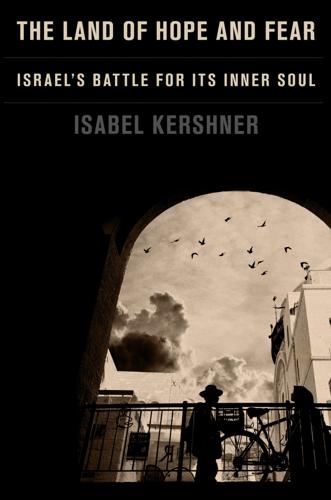
The Land of Hope and Fear: Israel's Battle for Its Inner Soul
by
Isabel Kershner
Published 16 May 2023
“In the past, throughout my activism, when Palestinians were usually interviewed on TV, the key line was, When is the international community coming in to save us? When will Israel be held accountable? When will the Arabs come and rescue us? Now the discourse of the young is, We’ve got this,” he told me. Buoyed by the international momentum of rights and social justice movements like Black Lives Matter, he said, and working quietly to avoid attention or arrest by the Palestinian Authority or Israel, each small victory was consciousness-building and each celebrity social media post was empowering. There was a new unity that cut across factionalized Palestinian politics and society. “It’s not about how it looks in the end, but how to get there,” he said.
…
Net income was about 20 percent lower in households of Ethiopian descent compared to the rest of the population. So once again, in 2019, more stormy protests broke out around the country, sparked this time by the fatal police shooting of an unarmed Ethiopian Israeli teenager near Haifa. Drawing energy from the Black Lives Matter movement in the United States, angry young Ethiopian Israelis took to the streets again, joined by community professionals and political activists, crying out against overpolicing, racial profiling, and being treated as “automatic suspects.” Ethiopian parents spoke of the fear they harbored for their children at the hands of the police, a sentiment not generally felt by other Israelis.
…
A B C D E F G H I J K L M N O P Q R S T U V W X Y Z A Abbas, Mahmoud, 129, 184 Abbas, Mansour, 172, 185–86, 195 Abdulbari, Youssef, 319 Abedi, Abed, 174 Abergel, Reuven, 67 Abraham Accords, 143, 319–21 Abu Akleh, Shireen, 257–58 Abu Dis, 129 Abuhatzeira, Israel, 91 Abu Krinat, 309–12 Abu Seif family, 187 Abu Shakra, Abed, 194 Abu Shakra, Asim, 195–96 Abu Shakra, Maryam, 193–94, 196 Abu Shakra, Said, 193–99 Abu Shakra, Siham, 198 Abu Shakra, Walid, 195 Adam, Omer, 294 Adelson, Sheldon, 94, 110 Africa, 8, 321, 325 Afula, 192 Agrint, 319 Agudat Yisrael, 203, 204, 206 Aharish, Lucy, 193 Ahmad, Bayan Sayed, 172–78 Airbnb, 120, 121, 125, 149 Aklum, Ferede, 325 Al Aqsa Martyrs’ Brigades, 176 Al Arz, 184 Al Atawneh, Daham, 191 Alene, Eden, 341 Al Ghawarina tribe, 115 Aliyah Day, 341–42 Al Lajoun, 194, 196, 199 Allon, Yigal, 134, 148 Almheiri, Mariam bint Mohammed Saeed Hareb, 315 Almoz, Moti, 250–54, 263 Al Nahyan, Hamad bin Khalifa, 40 aloe vera, 21 Al Said, Hisham, 339 Alsheich, Roni, 337 Altalena, 29–35, 41, 56 Alterman, Natan, 54, 59 America Online, 299 Amichai, 153–54 Amir, Yigal, 24 Amona, 149–54 Amsalem, Avi, 278 Amsellem, Chaim, 207 Ancestral Sin, The (Saleh, This Is the Land of Israel), 78–81, 93, 95 Anna Loulou, 72 antisemitism, 36, 47, 324, 325 Aqsa Mosque, 54, 142, 156 Arab citizens, 17, 37, 155–99, 242, 284–85, 304, 307, 308 Netanyahu and, 171–72, 178, 179, 185 police and, 186–89 Arabic language, 17, 41, 103, 166, 168, 171, 175, 177–79, 192 Arab-Israeli wars of 1948, 32, 36, 48, 54, 80, 115, 158, 180 Six-Day War (1967), 8, 11, 18, 53, 107, 122, 134–35, 156, 245, 286 War of Independence, 7, 18, 38, 50, 57, 65, 196, 261 Yom Kippur War (1973), 56, 67–68, 134, 245–46, 287 Arab Revolt of 1936–1939, 101, 170 Arab riots of 1929, 37, 170 Arab Spring, 87, 314 Arab uprising of 1929, 37 Arafat, Yasser, 23 Arava, 5–11, 15–16, 19–21, 25, 28 Arbel, Uki and Shulamit, 118 Arens, Moshe, 30, 38, 41 Argov, Zohar, 68, 69, 73 Ariel, 132, 135, 149, 283, 288 Armoush, Muhammad, 186–87 Arsim and Frehot, 72 Ars Poetica, 72, 276 Aseli, Nardine, 181 Ashdod, 278 Ashkenazi, Amitai, 118–19 Ashkenazi Jews, 10, 60, 62, 64–66, 68, 69, 71–76, 80, 85–87, 90, 92, 95, 96, 106, 108, 167, 206, 231, 248, 275, 282 Asi Stream, 61–62, 65–66, 83, 95–97, 107 Atias, Daniel, 278 Auschwitz, 46, 244, 302 Avodah Aravit, 159 Ayalon Institute, 115 Ayyash, Yehuda, 94–95 Azaria, Elor, 256–59, 268 Azariyahu, Pesach, 52 Azrieli Center, 329 B Baba Sali, 91 “Bab el Wad” (Gouri), 50–51, 53, 58, 59 Bab el Wad (Shaar Hagai), 50–52, 58–59 Bahrain, 12, 143, 296, 316 Balad, 74, 182, 183 banking, 187 Bank of Israel, 308 Barak, Ehud, 24, 240 Barazani, Moshe, 85–86 Barbivai, Orna, 262–63 Barkan, 288 Barkan, Pola, 275–76, 281, 285, 295 Barkat, Nir, 96 Bar-Lev, Omer, 190 “Basic Law: Israel—The Nation State of the Jewish People,” 41, 178–80, 198 Bedouin, 19, 63, 110, 157, 158, 160, 179, 184, 190–93, 242, 309–13, 319 Beersheba, 158, 309–12 Beer Tuvia, 95 Be Free Israel, 280 Begin, Menachem, 23, 31–35, 38–40, 55, 56, 58, 60–62, 66, 68, 74, 83, 85–87, 92, 107, 246, 325 Barazani and Feinstein and, 85–86 Ben-Gurion and, 29, 31–34, 38, 55–57 death of, 86 kibbutzim and, 107–8 Behadrei Haredim, 200, 208, 209, 210, 237 Beitar Illit, 123, 224 Beitar Jerusalem, 40–41, 156 Beit El, 160–61 Beit Shean, 61, 63–66, 83, 85, 96–97, 280 Beit Shemesh, 230, 292–93 Belensky, Ola, 271–72 Ben-David, Dan, 304 Ben Dov, Itzak, 286–88 Ben-Eliezer, Benjamin, 88 Ben-Gurion, David, 7, 8, 12, 15, 27, 29, 31–34, 36–39, 45, 54–57, 62, 68, 115, 122, 158, 160, 276, 298 early life of, 36 Begin and, 29, 31–34, 38, 55–57 IDF and, 31, 33, 34, 241, 242, 244–45, 260 letter to Gouri from, 55–57 at Sde Boker, 25, 108–10 ultra-Orthodox and, 204–6 Ben-Gurion, Epilogue, 25 Ben-Gurion, Paula, 25, 109, 110 Ben-Gvir, Itamar, 148 Ben Haim, Avishay, 92, 93 Ben-Hamozeg, Yehonatan, 318–19 Bennett, Naftali, 17–18, 93, 129, 144–45, 172, 185–86, 190, 202, 208, 228, 240, 267–69, 286, 295, 345–46 Shmueli family and, 268, 269 Ben Uliel, Amiram, 142 Ben Zikri, Michael, 184 Berlinski, Eliyahu, 44–45 Berlinski, Tova, 44–47 Beta, 145 Beta Israel, 323, 324 see also Ethiopian immigrants Betar, 30, 32, 35, 36, 38, 39, 44, 45, 55 Bezeq, 219 Biadga, Yehuda, 333 Biden, Joe, 144 BIG, 278 Binyamina, 115 birth rates, 197, 201, 207, 304, 308 Bishara, Azmi, 182 Biton, Benny, 80 Biton, Erez, 78 Black Lives Matter movement, 130, 333 Black Panthers (Israel), 67, 70, 72–74, 182, 334 Black Panthers (U.S.), 67, 70 Bnei Brak, 202–3, 207, 212–15, 220, 221, 226, 227, 233, 236, 237, 267 Bogoslaviz, Dima, 292–93 Bolsonaro, Jair, 13 Boycott, Divestment and Sanctions movement, 198 Braun, Walter, 102 Breaking the Silence, 259 Brigada Tarbutit (Cultural Brigade), 276–79, 281, 292, 294 British Mandatory Palestine, 36, 101, 102, 115, 158, 169, 170, 194 Brodsky, Joseph, 279 Bronfman, Roman, 282, 285 B’Tselem, 95, 123, 256, 259 Buaron, Avichay, 150–54 Buaron, Ofra, 150 burial laws, 274, 279–80 Bush, George H.

The Quiet Coup: Neoliberalism and the Looting of America
by
Mehrsa Baradaran
Published 7 May 2024
TO MANY AMERICANS, the game is rigged against the average person and in favor of a powerful, unseen force. YouTube videos and viral “news” stories promise to “expose the plot to destroy America.” They blame the “deep state,” Russian operatives, pedophile rings, “social justice warriors,” immigrants, terrorists, Chinese scientists, “globalists,” drug companies, the Fed, George Soros, Antifa, Black Lives Matter, “cultural Marxism,” critical race theory, Anthony Fauci, and others. Protesters accuse school boards of racial indoctrination, “patriots” attack the Capitol to save America from traitors, and many denounce vaccines and masks as state tyranny. The viral success of these conspiracy theories is not just a consequence of shameless politicians or of social media algorithms that have hooked us on sensationalism and lunacy.
…
Congress, Senate, Committee on the Judiciary, Hearing on Nomination of Thurgood Marshall of New York to Be Associate Justice of the Supreme Court of the United States, 90th Cong., 1st sess., 1967, vol. 261 (Washington: GPO, 1967). 11. Report of the National Advisory Commission on Civil Disorders (Kerner Commission Report, 1968); see also Julian E. Zelizer, “Fifty Years Ago, the Government Said Black Lives Matter: The Radical Conclusions of the 1968 Kerner Report,” Boston Review, May 2016. 12. Report of the National Advisory Commission on Civil Disorders; Julian Zelizer, The Kerner Report (Princeton, NJ: Princeton University Press, 2016), Introduction. 13. Ronald Reagan, “April 29, 1967 Speech by Governor Ronald Reagan Before the University of Southern California Law Day Luncheon, Los Angeles,” Ronald Reagan Presidential Library, Simi Valley, California. 14.
…
See contraceptives and contraception bitcoin, 333–36, 341, 342 Black Americans, xxxi, xxxii, 5–14, 16, 17, 20–22, 25–27, 39–40, 46, 73, 84, 95, 101, 116, 117, 125–27, 132–33, 138, 144, 158, 189, 200–202, 216, 226, 228, 315–17, 326 Black capitalism, 26–27, 30, 53, 60, 73–76 black imperialism, 51 Black Lives Matter, xxiii Blackmun, Harry, 100, 107, 113, 119, 124, 127 Black Panthers, 39, 87, 317 Black power, 5, 26, 27 BlackRock, 348 Blackstone Group, 306 Blair, Tony, 294 “blame and shame,” 217 blockchain, 330, 333, 335–42, 345, 361 Bloom, Allan The Closing of the American Mind, 90 Bloomberg News, 214 Boeing, 361 Bolsheviks, 184 Bolton, John, 89 bond traders, 272 bonuses, 286 “boomerang,” imperial, 35, 51, 70 boomers, 349 Bork, Robert, 109, 120, 125, 138–41, 145, 154, 157, 207, 225, 239, 256, 323 The Antitrust Paradox, 157 Bork, Robert (continued) Slouching Toward Gomorrah: Modern Liberalism and American Decline, 139 Bowen, Howard The Social Responsibilities of the Businessman, 83 Bowen, Matt, 332 boycotts, 10, 21 Bozell, Brent McCarthy and His Enemies, 185 The Warren Revolution, 185 Bradley family, 89, 187, 307 Bradley Foundation, 89 Bradley Prize, 216 brain trust, 81 Brandeis, Louis, 133, 254–57, 351 Other People’s Money and How the Bankers Use It, 254–55 Brando, Marlon, 6 Brazil, xvii, 39 “breaking the bank,” 292 Brennan, William J., Jr., 109, 111–12, 124, 148, 207 Bretton Woods Agreement and system, 42, 50, 57, 58, 60–63, 69, 70, 261, 276 Breyer, Stephen, 147, 151, 210 Bridges, Ruby, xxxii Brimmer, Andrew, 14, 16 British Empire, xxix, xxx, 27, 39, 49, 53, 57, 70, 172, 193, 354.
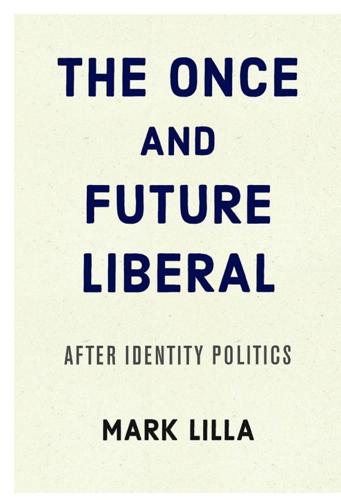
The Once and Future Liberal: After Identity Politics
by
Mark Lilla
Published 14 Aug 2017
I am not a black male motorist and never will be. All the more reason, then, that I need some way to identify with one if I am going to be affected by his experience. And citizenship is the only thing I know we share. The more the differences between us are emphasized, the less likely I will be to feel outrage at his mistreatment. Black Lives Matter is a textbook example of how not to build solidarity. There is no denying that by publicizing and protesting police mistreatment of African-Americans the movement mobilized supporters and delivered a wake-up call to every American with a conscience. But there is also no denying that the movement’s decision to use this mistreatment to build a general indictment of American society, and its law enforcement institutions, and to use Mau-Mau tactics to put down dissent and demand a confession of sins and public penitence (most spectacularly in a public confrontation with Hillary Clinton, of all people), played into the hands of the Republican right.

War for Eternity: Inside Bannon's Far-Right Circle of Global Power Brokers
by
Benjamin R. Teitelbaum
Published 14 May 2020
“We condemn in the strongest possible terms this egregious display of hatred, bigotry, and violence on many sides—on many sides.” President Donald Trump’s statement came from his golf club in Bedminster, New Jersey, shortly after the events in Charlottesville unfolded. And instead of focusing his criticism on the white nationalist protesters, he widened the lens to also condemn leftist counterprotesters, Black Lives Matter and Antifa (Anti-Fascist Action) in particular. That was more than people like Richard Spencer would have hoped to hear from previous presidents. It was unbelievable. And after a period of near silence amid heated outcry over the weekend, Trump offered extended commentary the following Tuesday during a press conference held in Trump Tower in Manhattan.
…
See also Breitbart News; nationalism; Traditionalism alt-right movement and, 208–12, 213–23 autobiography of, 80 background of, 19–27, 30–32 on Bagley, 262–65 Brazilian government and, 127, 163–71, 256–57, 275 (see also Carvalho, Olavo de) Cambridge Analytica and, 34, 60–63, 75 characterization of, 5, 29–30, 76, 163–64, 273–74 on China, 94–96, 154, 155, 160–61, 173, 192–93, 275–76 Dugin’s meeting in Rome (2018) with, 1–3, 92–96, 153–61, 213, 274–75, 295n “gladiator school” (Italy) of, 94, 213, 262 Guénon followed by, 27 on immigration, 84, 187–99, 261–62 Jorjani and, 14–16, 199, 265–67 Morgan’s interest in, 87–89 NSC ouster, 225–34 on Spencer, 266, 267 on time cycle concept, 109–24 (see also time cycles) on Traditionalism, 5–8, 16–18, 30, 34–38, 92, 279 as Trump’s campaign manager, 71, 73–75, 80–81 White House ouster, 170–71, 235, 241–43 on Williamson, 282 Bannon & Co., 31–32 Baranyi, Tibor, 58, 64–68, 292n Beattie, Darren, 164, 166, 199 Benoist, Alain de, 144, 231–32 Bergson, Henri, 111 Bismarck, Otto von, 95 Black Lives Matter, 239 Blackwater, 205–6 Blavatsky, Helen, 26 Bolsonaro, Eduardo, 127 Bolsonaro, Jair, 125–29, 163–71, 185, 250, 255 Brant, Gerald, 164–65, 167 Brazil. See also Carvalho, Olavo de Bannon and government of, 127, 163–71, 213, 275 Bolsonaro’s election, 125–29, 250 Bolsonaro’s visit to D.C., 170–71 China’s alliance with, 250, 253, 257 education and culture funding by, 255 military of, 254 Olavo appointed minister of education, 163–70 Olavo’s tariqa in, 138–40 Breitbart News alt-right movement and, 211, 215, 241, 304n Bannon as CEO, 34 Bannon on alt-right and, 241, 304n Bannon’s departure from, 155 Breitbart (Andrew) and, 32 Charlottesville rally and, 241 Burke, Raymond, 295n Bush, George W., 40 Cambridge Analytica, 34, 60–63, 75 capitalism.

Hiding in Plain Sight: The Invention of Donald Trump and the Erosion of America
by
Sarah Kendzior
Published 6 Apr 2020
Millions and millions flowing through the hands of these organizations in the name of Mike Brown yet we don’t see any of it coming into our community or being used to help our youth. I’ve been calling out this shit for months. People see this as an opportunity to not only build a name but make bank at the expense of the lives of people like me.”22 Seals complained about how out-of-town NGOs and online celebrities associated with Black Lives Matter had gained attention off the Ferguson brand, used that attention to raise money, and then left with the resources meant to help St. Louis—a slight St. Louis regional activists, who had suffered severe psychological and economic hardship as a result of the protests, never forgot, as it devastated their community even further.
…
Abramovich, Roman academia Access Hollywood tape Acosta, Alexander Afghanistan Agalarov family Ailes, Roger Akin, Todd Allen, Woody al-Qaeda “alternative facts” American exceptionalism danger of definition of and The End of History and the Last Man (Fukuyama) illusion of and normalcy bias Andrew, Prince, Duke of York Apprentice, The Arab Spring Arendt, Hannah Arif, Tevfik Arpaio, Joe Assange, Julian authoritarianism adult children of authoritarian leaders American authoritarianism asylum seekers from and conspiracy narratives and digital media and fear in former Soviet republics in Hungary and the judiciary and kinship rivalries networked authoritarianism and pageantry of branding and protest scholars of and Trump, Donald and voice of individual conscience See also autocracy; dictatorship autocracy abdication of vigilance as bedrock of and The Apprentice autocratic consolidation and black Americans and climate change definition of expecting versus accepting and hope in Hungary international axis of autocrats and Karimov, Islam and kleptocracy in Kyrgyzstan and loss of sense of time and nepotism predictability of and propaganda and the Republican Party in Russia state recovery from and technological change traits and warning signs transition to and transnational criminal networks and Trump, Donald and writers See also authoritarianism; dictatorship Bannon, Steve Baquet, Dean Barak, Ehud Barr, Donald Barr, William Barrett, Wayne “battleground states” Bayrock Group Ben-Menashe, Ari Bezos, Jeff Biegun, Stephen “Big Lie” (Third Reich technique) Billy Bush Principle bin Laden, Osama Black, Charles Black Lives Matter Blavatnik, Len Bloom, Lisa Bloomberg, Michael Blunt, Matt Blunt, Roy Bogatin, David Bogatin, Jacob “both-sidesing” Bouazizi, Mohamed Boyle, Matthew Breitbart (website) Breitbart, Andrew Browder, Bill Brown, Julie K. Brown, Michael Brzezinski, Mika Buchanan, Pat Burnett, Mark Bush, Billy Bush, George W.

SEDATED: How Modern Capitalism Created Our Mental Health Crisis
by
James. Davies
Published 15 Nov 2021
While the private schools delivered daily online teaching to pupils (sparing their families the many stresses of forced home-schooling), nearly half of all state school pupils received almost no teacher contact at all during the first major lockdown.7 And as the lowest home-schooling rates were found in the most disadvantaged homes, the attainment gap widened further. These imbalances were compounded by the A level algorithm debacle, which lowered the grades of university-bound disadvantaged students more than it did those who were privately educated. As major social inequalities were foregrounded by COVID, protest movements like Black Lives Matter highlighted the linked themes of racism and social injustice, especially in the US. The killing of George Floyd symbolised the wide structural violence of racism and urban poverty. These iniquities were compounded by black, Asian and minority ethnic (BAME) people being dramatically over-represented in the COVID-19 death statistics.8 Their distress was not caused by strictly biomedical factors, as some would have it.
…
INDEX A4e, 134, 144 advertising, 318 Advisory, Conciliation and Arbitration Service (ACAS), 98–101 age discrimination, 146 agricultural multinationals, 231–2 alcohol, 235, 250 alexithymia, 253 Amazon, 9 American Journal of Psychiatry, 53, 55 Amess, David, 213–15 Anatomy of an Epidemic (Whitaker), 58–60, 61, 62, 65 Anderson, Malcolm, 85–6, 101 Andreasen, Nancy, 62 antibiotics, 194 antidepressants, 11, 13, 36, 43, 52–4, 55, 61–5, 68–71, 280, 284–5 children and, 159 clinical trials, 206 farmer suicides and, 231–2, 234 materialism and, 253–5 questionnaires and, 287–91 thalidomide crisis (1956–61), 191–3, 197 therapy and, 117 withdrawal, 69–71 antihypertensives, 194 antipsychotics, 11, 13, 44–5, 46–7, 51–2, 54–5, 60–61, 233 brain shrinkage and, 62–3 marketing of, 208 anxiety, 3 disability and, 47, 48 drugs and, 45, 48 education and, 159 GAD-7 questionnaire, 287–91 IAPT and, 116 materialism and, 249, 250, 252 mindfulness and, 93 status and, 315–18 unemployment and, 139 work and, 107, 108 anxiolytics, 13 Argos, 136 Aristotle, 267 Arsenal FC, 142 Asda, 136 Asperger’s, 159 asthma, 142 AstraZeneca, 208 Asylum Magazine, 230 Atkinson, Paul, 126, 228–30, 231 attention deficit hyperactivity disorder (ADHD), 159 Auburn University, 16 austerity, 135, 137, 179, 180, 222, 326, 339, 342 Australia, 13, 47, 49, 192 autism, 323 automation, 39 autonomic drugs, 194 back-to-work policies, 2, 95, 106, 124–9, 274 Barron, Kevin, 214 Baudrillard, Jean, 307 Beck, Martha, 316 behaviourism, 267 being mode of living, 239–40 Belgium, 308 Benefits Street (2014 documentary), 154 Berger, Peter, 185 Biden, Joseph, 345 Binnie, James, 121 biomedical approach, 14–15, 104, 171, 172, 322–31 bipolar disorder, 48, 52, 53 Black Lives Matter, 341 Blair, Anthony ‘Tony’, 105, 159, 201, 334 Bolsonaro, Jair, 341 Bowles, Samuel, 317–18 Boycott Workfare, 139 brain shrinkage, 62 Brazil, 341 British Journal of General Practice, 52, 69 British Medical Journal, 62, 212, 312 British Psychological Society, 118 Brown, James Gordon, 215 Burns, Mary, 30 Butt, Ronald, 22 Cameron, David, 123, 147, 148, 216, 334 Canada, 13, 47, 95–8, 180–81 cancer, 1, 275–6 capitalism, 4–5, 12, 22–36, 73, 227, 234–57, 291–303, 304–35 consumerism, 3, 35, 39–40, 43, 75, 220, 224–5, 234–57, 304–7, 318 COVID-19 pandemic (2020–21), 339–47 financial crisis (2007–8), 43, 135, 217, 219, 222, 326 functional dissatisfaction, 234–5 inequality, 307–20 Keynesian period (c. 1950–73), 26–7, 75, 259, 270, 279, 291–5 individualism, 291–303 materialism, 186, 220, 234–57, 265, 333 productivity and, 27, 34, 80, 83, 122, 258–79, 333, 334, 338 status and, 241–3, 245, 247, 248, 251, 304–7, 315, 318 Thatcher/Reagan revolution (1980s), 22–9, 39, 75, 259, 266, 295–6 cardiovascular drugs, 194 cars, 142, 218, 238, 241 chemical imbalance theory, 15, 254, 285 Chomsky, Noam, 41–2 Christianity, 32 Cipriani, Andrea, 64–5 civil rights movement (1954–68), 270, 278 Clark, David, 106–9, 128 clinical trials, 11, 60, 64, 193, 205–10 cognitive behavioural therapy (CBT), see under therapy Cohen, Patricia and Jacob, 249 Colombia, 55 Columbia University, 236 commodification, 224 communism, 293, 294, 328–9, 330–32 compliance doubt, 152 conduct disorder, 159 consumerism, 3, 35, 39–40, 43, 75, 224–5 materialism, 186, 220, 234–57, 265, 304–7, 333 status and, 241–3, 245, 247, 248, 251, 304–7, 315, 318 Cooke, Anne, 179–80 Corbyn, Jeremy, 328 cosmetics industry, 3 counselling, 269 COVID-19 pandemic (2019–21), 18, 26, 37–8, 129, 140, 169, 305, 339–47 credit, 38–43 cultures of worklessness, 154–5 debt, 38–43, 72–3 dementia, 14 Denmark, 50, 60 Department of Health, 86, 166, 194, 198 Department of Work and Pensions (DWP), 132, 143, 144, 147, 148–9, 150, 154–5 depoliticisation, 3, 12, 18, 34, 73, 186, 230, 277–9, 333, 338 of childhood distress, 179, 180 of work distress, 91, 101, 103, 108, 231–2, 234, 271–4 of unemployment, 153–4 depression chronic status, 48, 69 drugs and, 47, 48, 52, 53, 54, 64–5 economic burden, 107 education and, 159 inequality and, 318 ketamine treatment, 211 materialism and, 249, 250, 252, 253–5 PHQ-9 questionnaire, 287–91 stigma, 16 therapy and, 115, 118 unemployment and, 139 work and, 89 deregulation, 41, 123, 186, 189–220 Dewey, John, 269 Diagnostic and Statistical Manual of Mental Disorders, 5–12, 14, 271–2, 274, 297 diagnostic labels, 7, 16–17, 126, 158–60, 167, 285, 286, 323, 333 diagnostic overshadowing, 13 diet industry, 3 disability, 4, 47, 49–50, 59–60 drugs and, 63, 69 employment and, 132, 136, 137 Disabled People Against Cuts, 139 discrimination, 146–7 diuretics, 194 domestic abuse, 281 Douglass, Frederick, 269 drugs, 4, 10–12, 13–14, 36, 43–71, 105, 189–220, 233, 280, 284–5, 322 brain, effect on, 62 children and, 159 COVID and, 343 DSM and, 10–12 early intervention and, 172 efficacy of, 13–14, 43–71 marketing, 10–12, 190, 204, 205, 208, 231–2, 234, 254–5, 272–3 materialism and, 253–5 post-marketing surveillance, 211 productivity and, 272–4 questionnaires and, 287–91 regulation, 193–220 research, 11, 60, 64, 193, 205–10, 325 withdrawal from, 69–71 Duncan Smith, Iain, 154 Durham University, 141 early intervention, 171–6 economics, 2–5, 23 education, 157, 158–86, 327, 333 early intervention, 171–6 exams, 179, 182, 183, 184 special needs, 158–61, 170 mental health interventions, 169–79 resilience, 176–9, 185 target culture, 162–7, 179, 180–83 Effexor, 289 Eli Lilly, 70, 273 energy sector, 218 Engels, Friedrich, 29–31 Eton College, Berkshire, 161 European Union (EU), 212, 216 fever therapies, 46 financial crisis (2007–8), 43, 135, 217, 219, 222, 326 Finland, 47 Floyd, George, 341 food banks, 139, 151 food industry, 218 Fortune 500 companies, 78 Foucault, Michel, 334 Fraser, Giles, 226–8, 234, 255–6 Frayne, David, 79–80, 151 Free to Choose (Friedman), 196 Friedli, Lynne, 141–3, 147, 150, 152 Friedman, Milton, 195–8, 200, 219, 266, 293–5 Fromm, Erich, 236–40, 243, 250, 251, 261, 274 Frontiers in Psychology, 54 Full Monty, The (1997 film), 135 functional dissatisfaction, 234–5 GAD-7 questionnaire, 287–91, 297, 303 Geneva, Switzerland, 320, 329–31 Germany, 191–2, 245 GlaxoSmithKline, 210 Global Institute for Advanced Study, 79 Goldman Sachs, 149 Gothenburg, Sweden, 168, 183 Graham, Jack, 304–7 Gregory, Elizabeth ‘Liz’, 180–83 guard labour, 318 Guardian, 312, 326–7 Haloperidol, 208 Halton, Cheshire, 137 Hardy, Thomas, 278 Harrow, Martin, 44, 45, 46–7, 51 Harry, Duke of Sussex, 161 Harvard University, 43, 46, 56 Hattersley, Roy, 312 ‘having mode of living’, 237, 239 Hayek, Fredrick, 33, 266, 294, 295 HeadStart, 170 Health and Social Care Information Centre, 115 Healthy Minds, 173 Hearing Voices, 67 Heddell, Gerald, 209 Heinemeyer, Catherine, 176–8 herd immunity, 341 Hinchliffe, David, 200–206, 212–16, 218, 219 Høies, Bent, 67 Holy Family, The (Marx and Engels), 30 homelessness, 139 House of Commons Health Select Committee, 200–206, 212–16, 218, 219 House of Lords, 21–4 household debt, 38–43, 72–3 Hudson, Ian, 209 Hugo, Victor, 277 human-rights-based approach, 320–32 humanism, 266–70, 274, 276 von Humboldt, Wilhelm, 267, 269 Hutton, William, 312 Iceland, 13, 47, 50, 60 Imperial College London, 301 Improving Access to Psychological Therapies (IAPT), 109–29, 150, 164, 178, 274 India, 55, 231–2, 247 individualism, 186, 279, 280–303 inequality, 307–20, 340 inflation, 39 Ingeus, 149, 152 Inner Level, The (Pickett and Wilkinson), 312–20 Insel, Thomas, 61 insulin-coma therapy, 46 International Monetary Fund (IMF), 312 Iraq War (2003–11), 203, 212 Janssen, 211 Jayadev, Arjun, 318 Johnson, Alexander Boris, 123, 212, 215, 216, 341 Joseph Rowntree Foundation, 154 Journal of Nervous and Mental Disease, 44 Journal of the American Medical Association, 60, 62 Kahlil, Zabar, 130–34, 144, 155–6 Kasser, Tim, 235, 240, 243–54, 265, 274–9, 319 Kefauver, Carey Estes, 189–91, 193, 194, 197, 198, 204, 205, 216, 219 Kennedy, Jayne, 214 Kennedy, John Fitzgerald, 193 ketamine, 211 Keynes, John Maynard, 259–62, 266, 267, 268, 270, 274, 275, 276, 279 Khanna, Shivani, 247 Koksal, Izzy, 143–7, 152 Krause, Robert, 273 Kroenke, Kurt, 289 labels, 7, 16–17, 126, 158–60, 167, 285, 286, 323, 333 Lagarde, Christine, 312 Lancet, The, 64, 192–3, 312 Lawson, Nigel, 22–6 Layard, Peter Richard, Baron, 106–9, 128 Lenz, Widukind, 192 leukaemia, 1, 276 Lewisham, London, 137 life expectancy, 12–13 lobotomies, 46, 57 Locke, John, 267 London Review of Books, 312 London School of Economics (LSE), 106, 343 London Underground, 81–2, 83 Mad in America (Whitaker), 46 major mental disorders, 56 Major, John, 201 Manchester, England, 30 manufacturing sector, 75 marketisation, 2–5, 217, 224–5 Marmot, Michael, 320 Marx, Karl, 29–33, 260, 269 materialism, 186, 220, 237–57, 265, 333 Matrix, The, 145 May, Theresa, 123, 215 McCarthy, Eugene, 236 medicalisation, 4, 6, 10, 12, 14–18, 35, 68, 186, 229, 231–5, 297, 302 of childhood distress, 171, 172, 174, 175, 179, 180 of COVID distress, 343–4 therapy and, 108, 230 of work distress, 84–104, 231–2, 233, 271–4 Medicines Act (1968), 194 Medicines and Healthcare Regulatory Agency (MHRA), 205–16 mental health disability, see under disability Mental Health First Aid (MHFA), 86–95, 98, 101, 104, 124, 129, 170 Mentally Healthy Schools, 170 Milburn, Alan, 201 Miliband, Edward, 312 Mill, John Stuart, 267 Mills, China, 230–33, 234 mindfulness, 93 Misérables, Les (Hugo), 277 Moore, Charles, 258–66 National Health Service (NHS), 1, 12, 14, 43 COVID-19 pandemic (2020–21), 344 drug prescription, 71 internal market, 123, 127, 201–2 questionnaires, 287–91, 297, 303 therapy services, 71, 106, 108, 109–29, 150, 164, 274, 285 National Institute for Clinical Excellence (NICE), 106 National Institute of Mental Health, 61 Nature, 312 neo-liberalism, see under capitalism neurodegenerative diseases, 14 new managerialism, 163, 164, 166 New Statesman, 312 New York University, 79, 223, 249 Nigeria, 55 Norway, 65–8, 308, 318 Nudge (Thaler and Sunstein), 147 nudging, 147–52, 334 O’Toole, Bartholomew, 132 Obama, Barack, 312 Obama, Michelle, 345 Occupy movement (2011–12), 221–35 off-rolling, 161 Office of National Statistics, 343 Ofsted, 159–61, 162, 166–7 oil crisis (1973–4), 25 Olympic Games, 328 Open Democracy, 143 Open Dialogue, 67 Osborne, George, 129 outsourcing, 39, 152, 309 Owen, David, 297–300 Pankhurst, Emily, 269 Paris, France, 29 personal debt, 38–43, 72–3 personality tests, 77–81, 83, 84 Petrarch, Francesco, 267 Pfizer Pharmaceuticals, 289–90 pharmaceutical industry, 10–12, 46, 189–220, 325, 334 marketing, 10–12, 190, 204, 205, 208, 231–2, 234, 254–5, 272–3 post-marketing surveillance, 211 questionnaires and, 287–91 regulation, 193–220 research, 11, 60, 64, 193, 205–10, 272–3, 325 thalidomide crisis (1956–61), 191–3, 197 phony empowerment, 151–2 PHQ-9 questionnaire, 287–91, 297, 303 Pickett, Kate, 310–20 Pico della Mirandola, Giovanni, 267 placebos, 54, 64, 65, 69, 116, 117, 206, 207, 211 Plant, Raymond, 123 positive psychology, 148–52 privatisation, 28, 123, 127, 215 productivity, 27, 34, 80, 83, 122, 258–79, 333 DSM and, 271–2, 274 education and, 163, 164 workplace programmes and, 84, 87, 92, 93, 98, 102, 107, 124, 125 Promote Positive Mental Health at Work, 98 Prozac, 70 psycho-compulsion, 141–53 psychoanalysis, 267 Psychotherapy and Psychosomatics, 61 psychotherapy, see under therapy Public Health England, 93, 344 public sector inefficiency, 122, 127, 163 Pulitzer Prize, 43 Pūras, Dainius, 320–32 questionnaires, 287–91, 297, 303 race discrimination, 146 Reagan, Ronald, 28, 266, 271, 274, 276 relapse rates, 14 religion, 31–2 research spending, 1 resilience, 176–9, 185 retail therapy, 245–6 revolving-door policies, 209, 212, 218 Rizq, Rosie, 121–2 Royal College of Psychiatrists, 71, 103–4, 343 Russell, Emma, 120, 124–5 Safra Center, 43 Samaritans, 270 Samuels, Andrew, 233–4 Sanders, Bernard, 227 SANE, 170 schizophrenia, 16, 44–5, 46–7, 51, 54, 57 Scott, Michael, 110–17 self-help industry, 151 semisynthetic antibiotics, 194 Seroquel, 208 sertraline, 289 service sector, 75–6 sexual abuse, 233, 281 sexual dysfunction, 14 Smith, Adam, 23–4, 260, 267 smoking, 201, 250 social democratic capitalism, 26–7, 75, 259, 270, 279, 291–5 social sciences, 32–3 Social Security Act (1986), 134 Soteria House, 67 Soviet Union (1922–91), 191, 293, 294, 328–9, 330–32 special educational needs, 158–61 de Spinoza, Benedictus, 267 Spirit Level, The (Pickett and Wilkinson), 310–12 Spitzer, Robert, 10 Stanford University, 250 status, 241–3, 245, 247, 248, 251, 304–7 anxiety over, 315–18 Stearn, Robert, 141, 142, 147, 150, 152 stigma, 4, 15–17 Strathern, Marilyn, 162–7 strikes, 25, 136 student debt, 42 suicide, 12, 85–6, 231–2 Sunstein, Cass, 147 Superdrug, 136 surveillance, 166, 168 Sutcliffe-Braithwaite, Florence, 134 Sweden, 47, 50, 60, 168–9, 183, 308, 318 Switzerland, 320, 329–31 target culture, 119–29, 132, 162–7, 179, 180–83 taxation, 35, 43, 222, 223, 291, 292, 300, 309–10, 327 tennis, 245 Thaler, Richard, 147 thalidomide, 191–3 Thatcher, Margaret, 22–9, 258–66, 268, 295, 297 Thatcherism, 163, 258–66, 272, 295–300 deregulation and, 195–200 ‘heart and soul’ and, 22–9, 36, 40 individualism and, 295–300 privatisation, 28, 123, 127 productivity and, 258–66, 268, 271, 272, 274 public sector inefficiency and, 122, 163 trade unions and, 39, 271 unemployment and, 134, 136, 153–4 Therapists for Social Responsibility, 228 therapy, 71, 228–30, 274, 280–87, 334 education and, 173, 178 employment and, 105–29, 150, 156–7, 164, 229, 274 humanists and, 269 materialism and, 253, 254 third force, 266–70 Timimi, Sami, 169–77 trade unions, 25, 39, 136, 271, 309 tranquilisers, 11 Trump, Donald, 341, 345 2 Sisters, 136 unemployment, 129, 130–57, 333 United Kingdom COVID-19 pandemic (2020–21), 37–8, 339–47 United Kingdom (j258.)
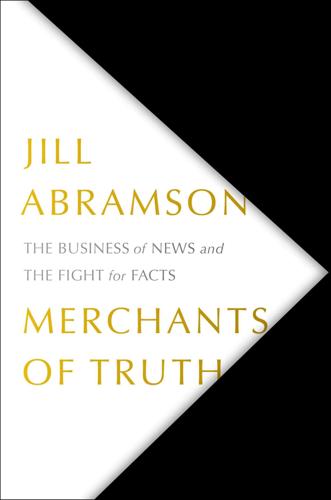
Merchants of Truth: The Business of News and the Fight for Facts
by
Jill Abramson
Published 5 Feb 2019
Publishers should do their best, BuzzFeed counseled, to accentuate the “emotional” elements of stories and to showcase controversy and scandal whenever possible. News stories often had this kind of emotional charge. As an example, BuzzFeed pointed to the killing of Trayvon Martin in 2012, one of the early cases that fueled the rise of the Black Lives Matter movement among young people. In the aftermath of the tragedy, BuzzFeed flooded the zone with posts like “10 Reasons Everyone Should Be Furious about Trayvon Martin’s Murder” (sub-headline: “Get Angry”) by Stopera. Another Stopera post spotlighted a Florida state representative’s “emotional speech about Trayvon Martin’s shooting.”
…
Anderson Cooper had cornered Trump with K-File footage of him supporting the invasion of Iraq in 2002, contrary to his claim throughout the campaign that he opposed it. Then Don Lemon put the screws to Clinton by citing the 1996 clip surfaced by the K-File in which she labeled young men who join gangs “super-predators.” The “super-predators” line would figure into Russia’s efforts to defeat Clinton and be recycled by various fake Black Lives Matter sites to depress the black vote in battleground states like Michigan. For the Republican National Convention, held in Cleveland in July 2016, BuzzFeed planned a party that would do their 2012 mermaid bash one better. The rooftop soiree, geared toward similarly banned publishers, was called “Red, White & Blacklisted” and brought together the leading lights of the new-media vanguard; in the words of Gawker’s correspondent at the event, “It felt like every single person I follow on Twitter was together in one room.”
…
Petersburg, had been powering an array of Facebook interest groups, strategically using psychographic intel to exacerbate preexisting fissures between American political groups. A sampling of the groups’ posts revealed the malicious potential of targeting technology. One Russian-made Facebook group, called Blacktivist, for example, had amassed a following larger than the authentic Black Lives Matter group it intended to imitate and was, in the eleventh hour, calling upon its supporters to break with Clinton and vote for third-party candidate Jill Stein instead. As the revelations broke on Capitol Hill, Zuckerberg announced in his earnings call that he would invest in the site’s security with a vengeance.

A Generation of Sociopaths: How the Baby Boomers Betrayed America
by
Bruce Cannon Gibney
Published 7 Mar 2017
US Department of Agriculture, 3 Dec. 2012, www.ers.usda.gov/amber-waves/2012-december/rising-concentration-in-agricultural-input-industries-influences-new-technologies.aspx#.Vxf2yzArKM8. Chapter 16: The Myth of Boomer Goodness 1. Mamet, David. The Secret Knowledge: On the Dismantling of American Culture. Penguin, e-books edition, 2001, pp. 281–282. 2. Bradner, Eric. “Bill Clinton Spars with Black Lives Matter Protesters.” CNN, 8 Apr. 2016, www.cnn.com/2016/04/07/politics/bill-clinton-black-lives-matter-protesters/index.html. 3. Ibid. 4. Ibid. 5. 570 U.S. __ 2013, Docket No. 12–96. 6. Serwer, Adam. “Chief Justice Roberts’ Long War Against the Voting Rights Act.” Mother Jones, 27 Feb. 2013, www.motherjones.com/politics/2013/02/john-roberts-long-war-against-voting-rights-act; see also Rutenberg, Jim.
…
Rising debt, melting ice sheets, crumbling freeways, and faltering schools are just small-minded entries in a spreadsheet with no cell large enough to contain Boomer goodness. If anything, the sociopaths believe it is we who should be thanking them, our betters, without the ungrateful backtalk. In 2016, when young Black Lives Matter protestors dared to question Bill Clinton about his 1994 crime bill, legislation whose carnage was covered in Chapter 14, Clinton lashed out. Not only were the protestors wrong, Clinton argued, they were “defending the people who killed the lives you say matter.”2 In Clinton’s view, he was the savior, and the protestors just confused apologists for the sort of scum Hillary Clinton referred to in 1996 as “super-predators.”
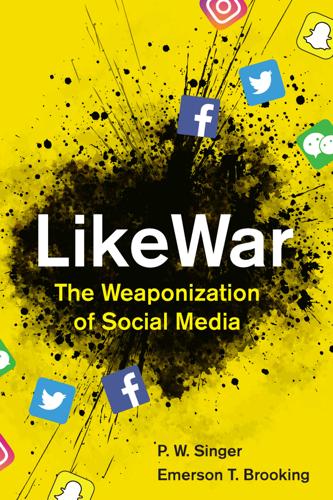
Likewar: The Weaponization of Social Media
by
Peter Warren Singer
and
Emerson T. Brooking
Published 15 Mar 2018
Guillory, and Jeffrey T. Hancock, “Experimental Evidence of Massive-Scale Emotional Contagion Through Social Networks,” PNAS 111, no. 24 (2014): 8788–90. 162 “emotional contagion”: Ibid. 163 “Our lives matter”: Elazar Sontag, “To This Black Lives Matter Co-founder, Activism Begins in the Kitchen,” Washington Post, March 26, 2018, https://www.washingtonpost.com/lifestyle/food/to-this-black-lives-matter-co-founder-activism-begins-in-the-kitchen/2018/03/26/964ec51a-2df1-11e8-b0b0-f706877db618_story.html?utm_term=.150be2273ebc. 163 adding the hashtag #BlackLivesMatter: Jon Schuppe and Safia Samee Ali, “Cities Don’t Want Justice Department to Back Off Police Reforms,” NBC News, April 5, 2017, http://www.nbcnews.com/news/us-news/cities-dont-want-justice-department-back-police-reforms-n742661. 163 “trolling for MiGs”: Andy Bodle, “Trolls: Where Do They Come From?
…
As counterprotesters poured into the streets to oppose what became a vivid expression of hate and white nationalism, a far-right terrorist drove his car into the crowd, killing one young woman and wounding three others. When public sentiment turned against President Trump (who claimed “both sides” were to blame for the violence), Dixson furiously leapt to his defense. “Dems and Media Continue to IGNORE BLM [Black Lives Matter] and Antifa [anti-fascist] Violence in Charlottesville,” she tweeted, including an image of demonstrators with the caption “DEMOCRAT TERROR.” In the days that followed, her tweets grew even more strident, publicizing supposed cases of left-wing terrorism around the country. But none of the cases were real—and Dixson wasn’t either.

American Gun: The True Story of the AR-15
by
Cameron McWhirter
and
Zusha Elinson
Published 25 Sep 2023
By the end of 2021, that number jumped to more than 20 million. During the protests and riots of the summer of 2020, self-appointed sentinels claiming they were working to restore order armed themselves with AR-15s. Many worried it was only a matter of time before those guns went off. In early August 2020, during Black Lives Matter protests in Portland, Oregon, people called police to report a man in tactical gear pointing a semiautomatic rifle at protesters. One person told police, “He definitely has an AR-15.” In fact, the man carried a pellet gun made to look like an M4. The man called police for help when protesters confronted him.
…
The governor banned any guns on the state capitol grounds, but they were allowed outside barricades. An estimated twenty-two thousand people attended, including people carrying AR-15s and an enormous black banner that read: COME AND TAKE IT. The Boogaloo Bois, antigovernment extremists, showed up at Black Lives Matter marches wearing Hawaiian shirts and carrying AR-15s. The Boogaloo Bois’ long-term goal was to push the country into civil war, which they referenced among themselves with the phrase “Let’s boogie.” In late May 2020, Steven Carrillo, an active U.S. Air Force sergeant, wrote on Facebook that the protests were a “great opportunity” to attack federal agents.
…
E., defining; language in gun control legislation ATF, see Bureau of Alcohol, Tobacco, and Firearms atomic bomb Australia automatic guns: AR-15 switch for semiautomatic to; bullet usage in combat; semiautomatic guns mimicking; “walking fire”; see also specific guns background checks; Bennett on; Biden on; Brady Bill on; Connecticut gun law on; ghost guns loophole for; Manchin-Toomey bill on; mass shooter profile and; mental illness and failures in; Obama on; Paddock Las Vegas massacre and; for private sales; sales without; Sandy Hook massacre and debates on; 2022 gun legislation on Banks, George barrels: AR-10; early cannon and gun Barrett, Amy Coney Bay of Pigs BB guns Benitez, Roger Bennett, Matt Betts, Connor Biden, Joe: on background checks; gun control efforts as president; gun control efforts as senator; gun control efforts as vice president; on Sandy Hook massacre Bihun, Robert G. Bipartisan Safer Communities Act (2022) Black Lives Matter Black Panthers Black people Black Rifle Coffee bolt-action rifles; gas-powered, 24, 25, 26, 117, 387nn; invention of; M1 Garand flaws as; Stoner, E., gas operated, xv, 387nn Borey, David C. Boutelle, Richard (Dick): AR-15 promotion role of; ArmaLite support from; big-game hunt in Africa; character and reputation; death of; Fairchild company beginning and career of; Fairchild company resignation of; Godfrey friendship with; LeMay friendship with; military service and political connections; Sullivan, G., gun venture beginnings with; on Sullivan, G., and Stoner, E., contract Bowers, Robert Bowman, Harry Brady, James Brady Bill Bray, William breech-loading guns British military Browning, John Moses Brucker, Wilber Bryant, Martin Buckles, Brad bullets: AR-15; automatic guns in combat usage of; bodily damage with smaller; close-quarters combat and; invention of; M14; size and accuracy; temperature and accuracy of testing; velocity relation to damage Bureau of Alcohol, Tobacco, and Firearms (ATF); Bushmaster XM-15 green-lighted by; gun ban definitions and; gun sales and; Waco massacre and; on weapons used in crime Bush, George H.
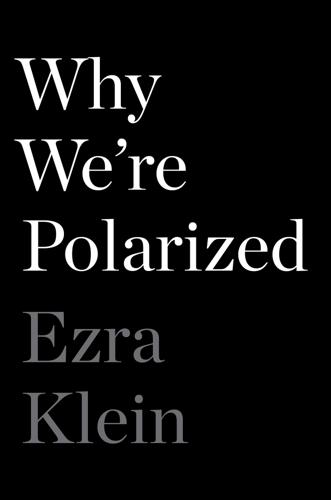
Why We're Polarized
by
Ezra Klein
Published 28 Jan 2020
The answer, attested to in mountains of studies and visible everywhere in our politics, is this: change of this magnitude acts on us psychologically, not just electorally. It is the crucial context uniting the core political conflicts of this era: Obama’s and Trump’s presidencies, the rise of reactionary new social movements and thinkers, the wars over political correctness on campuses and representation in Hollywood, the power of #MeToo and Black Lives Matter, the fights over immigration. There is nothing that makes us identify with our groups so strongly as the feeling that the power we took for granted may soon be lost or the injustices we’ve long borne may soon be rectified. “An identity is questioned only when it is menaced,” wrote James Baldwin, “as when the mighty begin to fall, or when the wretched begin to rise, or when the stranger enters the gates, never, thereafter, to be a stranger: the stranger’s presence making you the stranger, less to the stranger than to yourself.”11 Demographic change, and the fears and hopes it evokes, is one of the tectonic forces shaping this era in American life.
…
The connective tissue of the “intellectual dark web”—the anxiety that has made a coalition of new atheist Sam Harris, conservative pundit Ben Shapiro, Canadian psychologist Jordan Peterson, and others—is fear that the boundaries of acceptable discourse are being narrowed, that PC culture and identity politics are choking free speech. There’s a whole subgenre of punditry arguing that Trump’s rise is a regrettable, but predictable, backlash to political correctness, and thus the blame for his emergence properly belongs to campus activists and Black Lives Matter protesters. These fears can seem bizarre at first glance. Given all the other things available to worry about in the world, who cares what happened at this or that college? But the speed with which these clashes go viral on Twitter and Facebook, the enthusiasm with which they’re covered on cable news and traffic-hungry websites and celebrated podcasts, all reflect the reality that something deeper and more fearful in us is being activated.
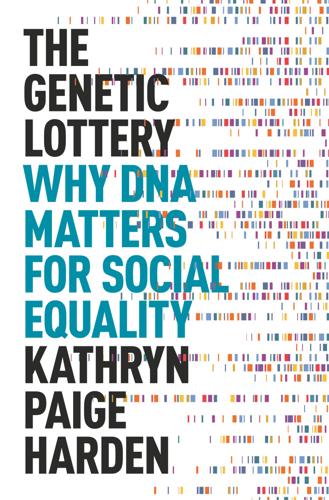
The Genetic Lottery: Why DNA Matters for Social Equality
by
Kathryn Paige Harden
Published 20 Sep 2021
Instead, if we are interested in making our commitment to racial equality “genetics-proof,” I think we must dismantle the false distinction between “inequalities that society is responsible for addressing” and “inequalities that are caused by differences in biology.”35 The mistaken idea that genetic causes operate as a boundary for social responsibility was evident in Sam Harris’s comments toward the end of our podcast conversation. We were speaking in the middle of a summer rocked by the murders of George Floyd and Breonna Taylor at the hands of police, with Black Lives Matter protests happening in cities around the world. The books White Fragility and So You Want to Talk about Race topped the New York Times bestseller list,36 signs of a national conversation that was happening about racial disparities in policing, housing, health care, education, wealth, and political power in America.
…
INDEX 23andMe, 114 Affordable Care Act (ACA), 244–245 Ainsworth, Mary, 97 ancestry and race, 72–73, 93–95; antiracism and responsibility in postgenomic world, 89–93; common ancestors of today’s people and, 73–75; differences between, 77–82; Eurocentric bias of GWAS and, 84–85; genealogical versus genetic ancestors, 76–77; genome-wide association study (GWAS) and, 82–84, 94–95 Anderson, Elizabeth, 18, 213, 227 anti-eugenic policies, 232–233; and luck in meritocracy, 246–251; to stop wasting time, money, talent, and tools, 234–235; structuring society to advantage of those least advantaged, 251–255; using genetic information for equity, not exclusion, 242–246; using genetic information to improve opportunity, not classify people, 235–242; veil of ignorance and, 251–255 anti-eugenic project, 20 antiracism, 89–93, 232 Appelbaum, Paul, 197 attachment, 97 autism spectrum disorders (ASDs), 27–28, 63, 228–229 Awad, Germine, 221 bacteria, 31 Barth, Daniel, 41–43, 44 Bell Curve, The, 16–17, 18, 78, 123 Belsky, Dan, 43, 127, 188 Benjamin, Ruha, 175, 179, 233 Bessey, Sarah, 255 Bezos, Jeff, 7 Binet, Alfred, 216 bioannotation, 136–137 bioethics, 213–215 bioRxiv, 22 Black Lives Matter, 92 Bliss, Catherine, 236 Blueprint, 15 Bourdain, Anthony, 50 Bowlby, John, 97 Box, George, 44 Bradley, Shawn, 38, 42, 63, 222 brain: bioannotation and, 136–137; executive functions and, 138–140 Brigham, Carl, 80 Bronfenbrenner, Urie, 106–107 Buck, Carrie, 14, 15 Buck v. Bell, 14 California Genetic Information Nondiscrimination Act (CalGINA), 244 candidate gene study, 51–53 Carlson, Jedidiah, 21–22 Case, Anne, 171–172, 254, 255 causation, 96; counterfactuals and, 99–100; genetic, 103–108; long causal chain of inequality, 170–172; observing what could have been, 101–103; random genes and, 109; sex education example, 180–183; thick and thin, 108–109 CFH gene, 31–32 CFTR gene, 83 children, attachment and deprivation in, 97–98 Clinton, Bill, 19 Clinton Foundation, 183 Coates, Ta-Nehisi, 218–219 Cokley, Kevin, 221 colorblindness, 232 Columbus, Christopher, 19 Conley, Dalton, 159, 188 cookbook-wide-association study, 53–57 Coop, Graham, 75 counterfactuals, 99–100; observing what could have been, 101–103 COVID-19 pandemic, 255–256 criminal behavior, 193–194; factors blamed for, 197–199, 207–209; genetics of, 194–197; identical twins and free will coefficient, 200–202 cult of the smart, 6 Dangerous Idea, A, 155 Darwin, Charles, 12 datafication of injustice, 175 Davenport, Charles B., 13 Deaf in America: Notes from a Culture, 223 deafness, 222–227, 229 Deaton, Angus, 171–172, 254 deBoer, Freddie, 6 DeJarnette, Joseph, 14 Dennett, Daniel, 202 depression, 52–53, 63 designer babies, 224 determinism, 22, 105, 133–135, 171, 186 Diversity Delusion, The, 205 DNA, 31, 40, 42; ancestry and, 76–77; in genetic recipes, 48, 49; genome-wide association study (GWAS) and, 57–58; identity by descent, 113–114 Dobzhansky, Theodosius, 129, 155 Domingue, Ben, 188 Dostoevsky, Fyodor, 141 Down’s syndrome, 108–109 Draper, Wickliffe Preston, 15 Duchesneau, Sharon, 223–224 Duckworth, Angela, 141 ecological fallacies, 85–89 education: free will coefficient in, 202–204; greater transparency in, 167–170; kindergarten, 3–4; Montessori, 3; sex, 180–183; for unskilled versus skilled jobs, 5–6, 209; word gap and, 183–184 educational attainment: bioannotation and, 136–137; causation in, 96; equity versus equality and, 159–164; executive functions and, 138–140; family expectations of, 130–131; genetic variants associated with, 46; inequalities in, 5; intelligence tests and, 16–17, 18, 89; interactions among people and, 144–148; non-cognitive skills and, 141–144; polygenic index and, 9–10, 63–71; timing of gene activation and, 137–138; when the worst environments produce the most equal outcomes, 156–159 egalitarianism, 11; genetics and, 16–20 egg donation, 34–35 environmental racism, 220 epilepsy, 27 equality, 21, 23.
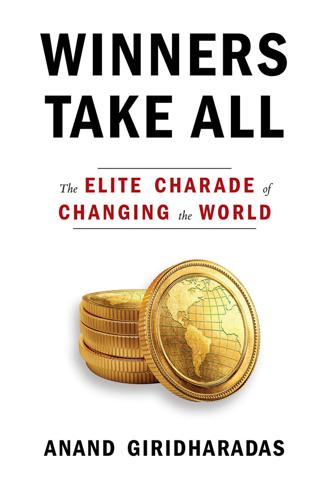
Winners Take All: The Elite Charade of Changing the World
by
Anand Giridharadas
Published 27 Aug 2018
The Hoya observed that these words ringing out of Rome were reverberating on campus. A Jesuit priest and political science professor named Matthew Carnes, with whom Cohen would soon work on a philanthropic project, told the newspaper that longtime critics of inequality on campus felt “vindicated” by the pope. And in the summer before Cohen’s senior year, Black Lives Matter was born, drawing many of her classmates into one of the more trenchant critiques of inequality in modern American history. As Cohen’s graduation neared, a little-known French economist named Thomas Piketty published the surprise bestseller Capital in the Twenty-First Century—a two-and-a-half-pound, 704-page assault on inequality.
…
Starting companies and pursuing socially minded businesses like Toms Shoes or impact investment funds were more respected in her circles. While Cohen had trouble with this view, she didn’t exactly resist it either. After the Hill, she interned at an educational technology company. Then, in the summer before senior year, as Black Lives Matter was getting under way, she followed many other aspiring do-gooders to a summer job as an analyst at Goldman Sachs. It might seem an improbable choice for someone aspiring to help people. But it was not at all an unusual one in her circles. Cohen was hardly the first person to be impressed by an oft-heard view, espoused by firms like Goldman, that the skills they teach are vital preparation for change-making of any sort.
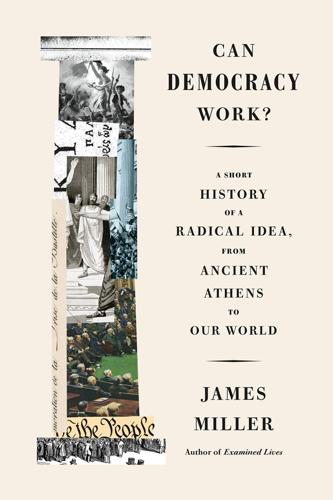
Can Democracy Work?: A Short History of a Radical Idea, From Ancient Athens to Our World
by
James Miller
Published 17 Sep 2018
Recall the hopes for a wider and more direct popular participation in politics briefly raised in the presidential election of 2008, when Barack Obama rallied previously indifferent voters on a platform of social change—and then recall the rapid fading of these hopes, and the subsequent rise of grassroots movements that saw themselves as battling for more democracy, such as the Tea Party on the right and the Occupy Wall Street and the Black Lives Matter movements on the left, climaxed by the populist revolt in 2016 against the established political elites led, improbably enough, by the billionaire showman Donald J. Trump. What is at stake in these contradictory and often controversial political developments? What, if anything, do modern representative democracies have in common with the dictatorial democracies of contemporary communist regimes, or with such avowedly direct democratic movements as Occupy Wall Street or Spain’s Indignados?
…
Anonymous (hacker collective) Antigone (Sophocles) Antipater antiwar movement antiwar protesters, Huntington reviled by Apprentice, The (TV show) Arab Spring Arendt, Hannah aristocracy, in ancient Athens Aristotle; Athenian political institutions described by; democracy criticized by; on elections vs. lotteries arms race Athenian democracy; Aeropagus in; Aristotle’s criticism of; Aristotle’s description of; Assembly (Ekklesia) in; civic tribes in; Cleisthenes and, see Cleisthenes; as community of self-governing citizens; concept of human rights as lacking in; conformity emphasized in; Council of 500 in; criteria for citizenship in; decline of; election of generals in; election of treasurers in; festivals in; in fourth century; jury system in; lotteries as defining feature of; Mytilene revolt and; nativism and; ostracism in; Pericles and, see Pericles; Plato’s criticism of; presupposed norms of; slavery and; Thucydides’ criticism of; as tyranny of the majority Athens, ancient: as aggressive regional power; aristocracy in; City Dionysia in; compulsory military service in; hegemony of; infantry of; military reforms in; naval powers of; plague in; population of; slaves in; Solon’s reforms and; Thirty Tyrants regime in; tyrants in; women in Atlantic Charter Attwood, Thomas Augustus, emperor of Rome Azoulay, Vincent Babeuf, Gracchus Babeuf’s Conspiracy for Equality (Buonarroti) Bakunin, Mikhail bandwagon effect Barber, Benjamin Barère, Bertrand Bartels, Larry Bastille; fall of Beaumont, Gustave de, at Albany Fourth of July celebration Berlin Wall, fall of Bernays, Edward; on public opinion Bernstein, Eduard Birmingham, England, Chartist Convention in Birmingham Political Union Bismarck, Otto von Black Lives Matter Blanqui, Auguste Blight, David Bodin, Jean Bolsheviks; soviet executive committees takeover by Bonaparte III, emperor of France Boston, Mass., French Revolution celebration in bounded rationality bourgeoisie Bowen, Sayles Jenks Brecht, Bertolt Brexit Brissot, Jacques-Pierre Brown, John Brunswick Manifesto Brussels Bryce, James Brzezinski, Zbigniew Buonarroti, Philippe Burckhardt, Jacob bureaucracies, power of Bush, George H.

Messing With the Enemy: Surviving in a Social Media World of Hackers, Terrorists, Russians, and Fake News
by
Clint Watts
Published 28 May 2018
American- and European-looking accounts among the troll army gained momentum, increasing their organic following among real Americans. Heckler accounts pounced on any issue, liberal or conservative, always taking a divisive tack—fomenting divides between rich and poor, black and white, immigrants and non-immigrants, and all those harboring antigovernment angst. If a Black Lives Matter protest broke out in a U.S. city, the trolls were there, pushing a mix of true and false messages with a conspiratorial bent. Remnants of the Occupy movement or conservative gun owners—it didn’t matter to the trolls; they repurposed existing inflammatory messages or helped seed new conspiracies tearing down the U.S. government.
…
And we were watching—the “Jewish Asshole” Weisburd, the “Loud Shaytan” Berger, and I, “Big Watty Kafir.” Similar to how Soviet intelligence had exploited race issues during the Cold War to divide American audiences, Russian influence efforts showcased violence and chaos all across the United States in the summer of 2015 as protests against police brutality broke out. Black Lives Matter demonstrations would be promoted and simultaneously scorned by the troll army, increasing distrust among the populace, law enforcement, and the government. Allegations of government misconduct might be seeded to agitate antigovernment groups. Government standoffs at the Bundy ranch, in Oregon, Jade Helm 15, and abortion protests all were showcased to fuel contempt among competing American factions.
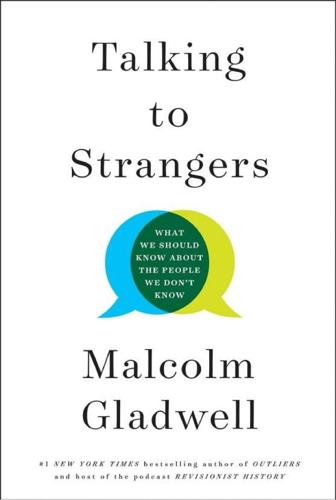
Talking to Strangers: What We Should Know About the People We Don't Know
by
Malcolm Gladwell
Published 9 Sep 2019
The interlude began in the late summer of 2014, when an eighteen-year-old black man named Michael Brown was shot to death by a police officer in Ferguson, Missouri. He had just, allegedly, shoplifted a pack of cigars from a convenience store. The next several years saw one high-profile case after another involving police violence against black people. There were riots and protests around the country. A civil rights movement, Black Lives Matter, was born. For a time, this was what Americans talked about. Perhaps you remember some of the names of those in the news. In Baltimore, a young black man named Freddie Gray was arrested for carrying a pocket knife and fell into a coma in the back of a police van. Outside Minneapolis, a young black man named Philando Castile was pulled over by a police officer and inexplicably shot seven times after handing over his proof of insurance.
…
For Walter Scott, see Michael Miller, Lindsey Bever, and Sarah Kaplan, “How a cellphone video led to murder charges against a cop in North Charleston, S.C.,” Washington Post, April 8, 2015, https://www.washingtonpost.com/news/morning-mix/wp/2015/04/08/how-a-cell-phone-video-led-to-murder-charges-against-a-cop-in-north-charleston-s-c/?utm_term=.476f73934c34. “Good morning…and still be killed”: “Sandy Speaks—April 8th 2015 (Black Lives Matter),” YouTube, April 8, 2015, https://www.youtube.com/watch?v=CIKeZgC8lQ4. Confrontation between Cortés and Montezuma: William Prescott, History of the Conquest of Mexico (New York: Modern Library, 1980). “When we saw so many cities”: Bernal Diaz del Castillo, The Discovery and Conquest of Mexico (London: George Routledge & Sons, 1928), p. 270, https://archive.org/details/in.ernet.dli.2015.152204/page/n295.
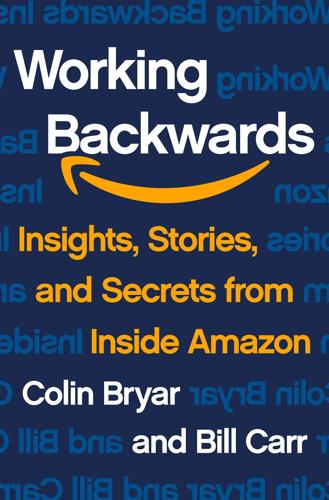
Working Backwards: Insights, Stories, and Secrets From Inside Amazon
by
Colin Bryar
and
Bill Carr
Published 9 Feb 2021
This director’s insightful solution provides a great example of how simple enhancements to the hiring process can improve outcomes without damaging the core principles that it was designed to protect. It’s also a good reminder to always be on the lookout for those places where bias can go undetected and undermine your results. Bar Raiser and Diversity As of the completion of this book (June 2020), the Black Lives Matter movement is bringing issues of racism, diversity, equity, and inclusion to the forefront of our national conversation in unprecedented ways. Achieving a diverse workforce that operates in an equitable and inclusive manner has become one of the most important goals for any company or institution today.
…
See being Amazonian Andon Cord Andrulevich, Robin annual planning process OP1 OP2 S-Team goals Anthony, Felix application program interfaces (APIs) Amazon Product API Amazon Seller API definition of dependencies and Green Corp. example two-pizza teams and Are Right, A Lot leadership principle Baker & Taylor Bar Raiser (Amazon’s hiring process) Behavioral Interviewing Debrief/Hiring Meeting diversity and Hire and Develop the Best leadership principle and hiring at Amazon before Bar Raiser history and origins of In-House Interview Loop Job Description (JD) Offer Through Onboarding Phone Screen purpose of Reference Check resistance to Résumé Review STAR (Situation, Task, Action, Result) interviewing method steps in variations on Written Feedback See also hiring process, conventional Bar Raiser Core Bar Raisers Barnes & Noble Behavioral Interviewing being Amazonian Amazon Web Services and anecdotes and exception reporting Bar Raiser (hiring process) and budgets and company culture and compensation and controllable input metrics and core competencies customer obsession Day One mentality and flywheel and Just Do It Award leadership principles and long-term thinking morale and operational excellence patience and PowerPoint and pricing and Prime and “relentlessly” single-threaded leadership and S-Team goals and “strong general athlete” (SGA) suggestions for getting started “Unless you know better ones” “unreasonably high” willingness to invent Working Backwards and Bell, Charlie Best Buy Bewkes, Jeff Bezos, Jeff on Amazon as “invention machine” on “Amazon flywheel” Amazon Web Services and application program interfaces (APIs) and Colin as Jeff’s shadow on corporate culture on Day One mentality feedback given by Fire Phone and hiring process and job descriptions written by Kindle and on long-term thinking metrics and on missionaries origins of Amazon origins of Amazon Leadership Principles on perfection and high standards Press Release/Frequently Asked Questions process and Prime and Prime Video and single-threaded leadership and S-Team and on tenets two-pizza teams and on underpromising and overdelivering Working Backwards and Bezos, MacKenzie. See MacKenzie Scott Bias for Action leadership principle Black Lives Matter movement BlackBerry Blu-ray player Brethes, Thierry brick-and-mortar stores Brown, Alan Butterfield, Stewart Buy Now button Career Choice cashierless stores Child, Jason click-to-ship cognitive biases confirmation bias personal bias urgency bias Collins, Jim compensation as foundational mechanism of Leadership Principles long-term equity structure long-term thinking reinforced by misalignment and performance and confirmation bias Contribution Profit (CP) corporate culture Customer Connection Customer Obsession leadership principle customer service Dalzell, Rick Day One mentality DB Cabal (review team) Debrief/Hiring Meeting (Bar Raiser step) decision-making 262 Deliver Results leadership principle delivery services, third-party dependencies definition of example of New Project Initiatives (NPI) and organizational dependencies Press Release/Frequently Asked Questions process and relational database single-threaded leadership and software code technical dependencies two-pizza teams and Digital Media.
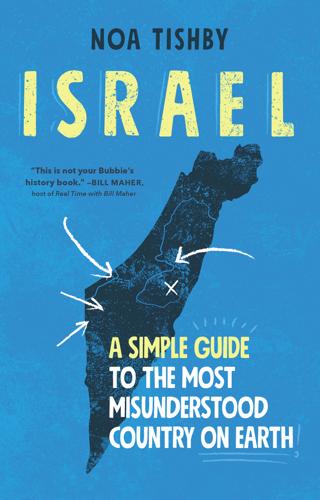
Israel: A Simple Guide to the Most Misunderstood Country on Earth
by
Noa Tishby
Published 5 Apr 2021
Again, this is not by mistake. The boycott movement uses intersectionality as a tactic to co-opt legitimate social grievances and win public legitimization by association. Following the horrific shooting of Trayvon Martin and the acquittal of his killer, George Zimmerman, an incredible grassroots movement emerged: Black Lives Matter. After another shooting shocked the nation, that of Michael Brown Jr. in Ferguson, Missouri, BDS activists reached out to the BLM leaders and offered to lend their support. After all, they said, Palestinian Lives Matter as well. BLM welcomed those BDS activists, to the shock and disappointment of people in the know, not to mention the American Jewish community, which by and large is a huge supporter of BLM.
…
Abbas, Mahmoud, 170, 181–82, 187 Abdullah I, King of Jordan, 111 Ables, Otto, 84 Abraham Accord (2020), 134, 136 Abu-Bakar, 32 Abu Srour, Mohammad, 120 Abu Toameh, Khaled, 208 Act for Israel, 14–15 Ahmed, Salim “Dahoum,” 39–40 Ajyal, 253 Alami, Musa, 106 Al-Aqsa, 139 Al-Aqsa Mosque, 134 Alexander II, Tsar of Russia, 58 Alexander the Great, 30 Alexandra, Tsarina, 51–52 Algeria, 40, 113, 129, 130 aliyah, 65, 301 Alkalai, Rabbi, 69 Allenby, Edmund, 42 Aloba, Abiodun, 275 Alon, Yigal, 154–55 Alon Shavut settlement, 155 Altalena, bombed by Ben-Gurion, 109 Altneuland (An Old/New Land) (Herzl), 65–66, 267 American Muslims for Palestine (AMP), 213–15 Americans for Justice in Palestine Educational Foundation (AJP), 214–15 Amnesty International, 278 Annan, Kofi, 272 Anti-Defamation League, 279 Antiochus III, 30 Antiochus IV Epiphanes, Judaism outlawed by, 30 Antipater, 23–24 Antiquity of the Jews, The (Josephus), 279 antisemitism, 29, 57–59, 104, 205–6, 277–82, 299 see also Holocaust anti-Zionism, 57, 276–81, 299 see also Zionist movement, Zionists Aqaba, 42, 84 Arab Higher Committee, 204 Arab-Israeli conflict, 12, 26–36, 105, 126–36, 141, 299 Bi-Communal Conflict in (1860–1948), 126 Interstate Conflicts in (1948–1973), 126–27 “no further demands” issue in, 138–39, 141 Non-State Actor Conflict in (1973–present), 127 Palestinian right of return as issue in, 89, 137–38, 141, 200 religious underpinnings of, 163–66 Two-State Solution for, 135–36 Arab League, 119, 134, 140, 204–5 Arab Liberation Army (ALA), 107 Arab Peace Initiative (2002), 134 Arabs, in British Mandate of Palestine, 89, 94–95, 105, 106 displaced during Israeli War of Independence, 110–13, 137, 200, 203, 296; see also Palestinian refugees UN granting of state refused by, 12, 97, 100, 104, 108, 110, 112, 153, 201, 266, 283, 296 see also Palestinian people Arabs, in State of Israel, see Israel, State of, Arab citizens of Arab Spring, 26, 173, 249 Arafat, Yasser, 115, 132, 140–41, 159, 185 and Camp David Summit, 134, 158–60, 298 see also Palestine Liberation Organization Artzi, Fania, 51–56, 69, 83, 94, 141, 142, 146, 189 as member of Degania kibbutz, 4, 75, 79–82 in move to Jaffa, 56–57, 69, 77–78, 89 Artzi, Isaac (Aki), 80, 142, 145, 291 Artzi, Joel, 80 Artzi, Roni, 80 Artzi-Krystal, Michal, 142 Artzi-Padan, Mira, 80, 124, 142 Ashkenazi Yahadut Ha’Torah party, Israeli, 237 Assad, Bashar al-, 249–50 assimilation, 30, 60, 61, 225, 228 Assyrian Empire, 29 Austria, and onset of World War I, 41 Bahrain, Israeli peace deal with, 136, 146, 162, 210 Balfour Declaration, 42, 103, 138 Ban Ki-moon, 271–72 Barak, Ehud, and Camp David Summit, 133–34, 158 Barghouti, Omar, 199, 205, 206, 210 Bar Giora, Simon, 245, 246, 247 Barhoum, Masad, 250–51 Bar Kokhba, Shimon, 169 Bar Shalom, Adina, 239–40 Bashar, Lamiya Haji, 252–53 Bashrat, Nabil, 209–10 BDS (Boycott, Divestment, Sanctions) movement, 197–221, 200–203, 205–13, 264, 281, 282 elimination of Israel as goal of, 207, 208, 212, 216, 221, 299 pro-terrorist funders of, 213–16, 299 Bedouins, 38, 227 Begin, Menachem, 109–10, 130–31, 140, 155–56, 162, 233–34, 285 Beham, Mordechai, 100 Beit Surik, 187 Ben-Gurion, David, 85, 98–99, 100–102, 104, 105–6, 109, 236, 256, 272 assimilation agenda of, 227–31 Mapai Party of, 98, 108–9 Ben Zvi, Itzhak, 98 Bergman, Ronen, 178, 180 Berkowitz, Hans, see Yavor, Hanan Bible, see New Testament; Old Testament; specific books Birnbaum, Daniel, 209 Birnbaum, Nathan, Zionism term coined by, 60 Black Lives Matter, 219–20 Black Panthers, Israeli, 233 Bolsheviks, 51–52, 54–55 British Mandate of Palestine, 33, 45, 86, 93, 103, 184, 295 Arab boycott of Jewish businesses in, 204–5 Arab emigration to, 89 Arab population in, 94–95, 104, 171, 189–90 Bi-Communal Conflict in, 126 end of, 95, 97, 99, 100, 104 first Zionists in, 88–89 Holocaust survivors’ migration to, 93–95 Jewish emigration to, 104, 272–73 UN Partition Plan for, see United Nations Partition Plan for Palestine Brunei, Sharia law in, 270 Bunche, Ralph, 107, 220 Caesar, Julius, 23 Caesarea, 23, 31 Camp David Accords (1978), 130–31 Camp David Summit (2000), 133–34, 158 Canaanites, Canaan, 27, 34, 170, 296 Carchemish archaeological site, 39, 40 Carter, Jimmy, 130–31 Catch-67 (Goodman), 219 Catherine II “the Great,” Empress of Russia, 57–58 “Changing East, The” (Lawrence), 48 Charedi Academy (Jerusalem), 239 Charedim, 226, 235–42 China, 270 Christianity, Christians, 26, 163 Church of the Holy Sepulcher, 32 Clinton, Bill, and Camp David Summit, 133–34, 157–58 Cold War, 127 Congress, US, 88, 212 Constantine, Emperor of Rome, 32 Constitution, US, 282 Corbyn, Jeremy, 57, 198 Crosby, David, 224 Crusades, Crusaders, 32–33, 35, 86, 116 Cunningham, Alan, 100 Cyrus the Great, King of Persia, 29–30 Daher Al Omar, Sheikh of Galilee, 126 Dahri, Noor, 159 Daoudi, Mohammed Dajani, 208–9 David, King, 27–28 Davidowitz, Harry Solomon, 100 Declaration of Independence, Israeli, 100, 101–2, 112, 174 Declaration of Independence, US, 100 Degania kibbutz, 4, 71–72, 74, 80, 87, 123–24 author’s summers in, 75–77, 123–24 Fania Artzi as member of, 4, 75, 79–82 Dreyfus, Alfred, 61 Druze community, 176, 226, 227 East Jerusalem, annexed by Israel, 154 Eban, Abba, 115–16 Egypt, 40, 204 Gaza Strip and, 129, 297 Israeli peace deal with, 140, 146, 298 in Israeli War of Independence, 103, 107 Jews expelled from, 113 Sinai Peninsula and, 129, 131, 162, 297, 298 in Six Day War, 128–29 in War of Attrition, 129–30 in Yom Kippur War, 130, 297 Egyptian Army, Fedayeen unit of, 128 Egyptian Islamic Jihad, 131, 141 Eitan, Rafael, 285 Elazar settlement, 155 Elect (organization), 240 Elizabeth, Empress of Russia, 57–58 el-Zoubi, Seif el-Din, 174 Enlightenment, Age of, 59, 236 Enlightenment, Jewish, 59, 60 Eretz Israel (Ben-Gurion and Ben Zvi), 98 Eshkol, Levi, 155 ethnic cleansing, 111, 112, 200, 201, 206, 283–84 Etzel, 99, 109, 110–11 Europe, 40, 41, 47, 59, 235–36 antisemitism in, 61, 90, 93–94, 104; see also Holocaust Ezra, Book of, 29 Facts on the Question of Palestine (Husseini), 114 Faisal I, King of Iraq 43–44 Lawrence and, 41, 42, 43–44 Fatah, 115 Fertile Crescent, 26 First Intifada (1987–1993), 131, 186 First Jewish-Roman War (66–73), 86, 242–48 First Lebanon War (1982), 131 First Zionist Congress, 63–65, 96, 103 Flexigidity (Grinstein), 235 Floyd, George, 279 Ford, Henry, 58 Foundation for Defense of Democracies, 212 France, 39, 40, 128 Franz Ferdinand, Archduke of Austria, assassination of, 41 Freedland, Jonathan, 57 French Mandate of Syria and Iraq, 33, 45 Friedman, Thomas, 173 Fritzlan, David, 118–19 Froman, Hadassah, 166 Froman, Menachem, 164–65 Galilee, province of, 24 Galilee Medical Center, 250–51 Gandhi, Indira, 75 Gaza Strip, 108, 132, 177–84, 193, 200, 206 Hamas coup in, 182–83, 188, 285, 298 Israeli and Egyptian blockades of, 13, 182, 193, 202, 299 Israeli occupation of, 131 Jewish settlements in, 162 in Second Intifada, 134 and Six Day War, 129, 297 Geneva Convention, 153, 185 Ghana, 17, 274–75 Golan Heights, 76, 129, 297 Goodman, Micah, 219 Great Britain, 40–41, 95, 128 see also British Mandate of Palestine Green Line, 108, 128, 152, 184–85, 186–87, 296 Grinstein, Gidi, 61, 68, 235, 241, 282 Gulf War (1990–91), 132 Gunness, Chris, 120 Günsberg, Osher, 24, 31 Gush Emunim, 155–56, 164 Gush Katif, 162 Hadassah, 275 Hadid, Mohammad, 118 Hadrian, Emperor of Rome, 169 Haganah, 99, 110, 112, 302 Ha-Halootz (The Pioneer), 53 Ha’Kohen, Yosef Ben Matityahu, see Josephus, Titus Flavius Hamas, 16, 127, 164, 179, 200, 203, 206, 214, 219, 271, 298 charter of, 13, 179–80 Gaza coup of, 181, 182–83, 188, 193, 201, 298 Iran’s support of, 183, 299 rockets launched into Israel by, 13, 182, 201–2, 203, 286, 298 terrorist attacks of, 133, 174, 180 Haqa’iq an Qadiyat Falastin (Facts on the Question of Palestine) (Husseini), 114 Harris, Sam, 278 Hashomer Hatzair, 253 Hasmonean dynasty, 24, 30–31, 35 Hebrew language, 55, 65 Hebrews, 27, 170 Hebron, 106, 150–51 Hejaz desert, 33, 44, 89, 103, 171 Helena, 32 Herod the Great, 23–24 Herter, Christian, 119–20 Herzl, Theodor, 73, 96, 267, 282 and Zionist movement, 60–66, 98, 103, 265 Heschel, Abraham Joshua, 220, 282 Hess, Moshe, 59 Hezbollah, 114, 127, 134–35, 292, 299 hijabs, 11, 176 Hilltop Youth, 164 Hinkle, Ari, 71 Hinkle, Ross, 71, 188 Hirsch, Baron, 62 Hizb-ut-Tahrir, 278 Holocaust, 12, 33, 66, 94, 104, 106, 109, 203 denial of, 67–68, 279 Holy Land Foundation (HLF), 215 Hussain-McMahon Correspondence, 42 Hussein, King of Jordan, 133, 147, 184–85 Hussein, Saddam, 132 Husseini, Mohammed Amin al-, 114, 171, 267 Ibenbuim, Racheli, 240 ibn al-Khattab, Omar, 32 Ibrahim, Hisham, 175 IMPACT-se, 121 Inbar, Buma, 147 “Incidents, The,” 106 India, 30, 41, 95, 251, 254 indigenous rights, 34 Indursky, Estee Ryder, 240 International Monetary Fund (IMF), 159 Iran, 136, 165, 178, 204, 270 terrorism supported by, 183, 299 Iraq, 29, 33, 103, 107, 113, 128–29, 130, 132, 204 ISIS, 219, 252–53 Islam, Muslims, 33, 163, 170, 176, 226 Jerusalem as third holiest city in, 26, 139 jihad in, 178–80, 202, 302 radical extremist, 13, 156, 158, 166, 177–79, 203; see also specific groups Sharia law in, 177–78, 193, 201, 206, 214, 270, 278, 298 Shia, 46, 127, 176, 178 Sunni, 46, 177 Islam and the Future of Tolerance (Nawaz and Harris), 278 Islamic Association for Palestine, 215 Islamic Resistance Movement, see Hamas Islamic Theology of Counter Terrorism, 159 IsraAID, 252–53 Israel, ancient kingdom of, 27, 295 archaeological remains of, 28, 295 conquered by Assyrian Empire, 29 Hebrews in, 27 twelve Jewish tribes in, 27 see also Judea Israel, land of: archaeological richness of, 24–25 British control of, see British Mandate of Palestine Caliphate renaming of Judea, 32 foreign conquerors of, 29-33 granted to Jews by UN, see United Nations Partition Plan for Palestine Hasmonean period of, 30–31 Jewish people as indigenous to, 34 Jews exiled from, 29, 31, 296 Ottoman period in, see Ottoman Empire, Palestine province in Roman rule in, 24, 31, 35, 169, 242–48, 295, 296 Roman renaming of, 295 see also Palestine region Israel, State of, 10–12, 61–62, 73 Arab citizens of, 112, 167–69, 173–76, 193, 199–200, 201, 226, 227, 283–84, 299 Arab political parties in, 12, 176, 284 attacked by surrounding Arab countries, see War of Independence, Israeli; Yom Kippur War “brand” of, 263–64 countries recognizing, 102–3 early assimilation agenda in, 227–31 Egyptian peace deal with, 140, 146, 298 established as secular, culturally Jewish democratic state, 101, 166, 236 establishment of, 33, 89, 100–102, 104, 126 freedom of religion in, 101, 166, 262, 264 Holocaust survivors’ emigration to, 109 humanitarian efforts of, 251–54 Jordanian peace agreement with, 133, 146, 298 naming of, 99 natural resources lacking in, 26 population of, 173, 226, 228, 237 as refugee state, 12, 225, 283 security as constant concern in, 137, 140 in Sinai War, 128 size of, 25–26, 153 technological and medical innovation in, 256–60 terrorist attacks on, 134, 156; see also Hamas; Hezbollah UN resolutions against, 268, 271 water desalination in, 26 world economic contributions of, 254–56 Israel Defense Forces (IDF), 14–15, 16, 98, 109–10, 159, 185, 211, 250, 302 Arabs serving in, 175, 201, 227, 284 author’s service in, 3, 4–5, 149–51 Charedim exempt from service in, 237 roof knock policy of, 202 service in, as mandatory for most Israelis, 4, 143 Israeli American Council, 16 Israeli Antiquity Authority, 25 Israeli identity, 223–48 Sabra, 234–35 Israeli-Palestinian conflict, see Arab-Israeli conflict Israeli-Palestinian Memorial Day Services, 147 Izz ad-Din al-Qassam Brigades, 178–79, 181–82 Jabari, Ahmed al-, 16 Jabotinsky, Ze’ev, 85, 161–62 Jarjora, Amin-Salim, 174 Jerusalem, 33, 43, 47, 82, 143, 171, 227, 239, 260 archaeological findings in, 25, 28 Black Panthers movement in, 233 Church of the Holy Sepulcher in, 32 destruction of First Temple in, 29 destruction of Second Temple in, 31, 139, 246–47, 248, 295 First Temple in, 28, 235 Old City of, 129, 154 Roman control of, 31–32, 242–48 Second Temple in, 30, 242 in Six Day War, 129, 154 terrorism in, 137 as third holiest city in Islam, 139 in War of Independence, 107 Zion as second name of, 60 see also East Jerusalem Jerusalem’s Traitor (Seward), 247 Jewish Agency, 83, 97, 98, 111 Jewish National Fund, 71 Jewish State, The (Herzl), 62–63 Jewish Wars, The (Josephus), 245 Jews: assimilation of, 60–61 conversions forced on, 30, 32, 33 discriminations and persecutions against, 30, 57–57, 63, 94, 126, 204, 220, 280, 296; see also antisemitism; Holocaust expelled from Arab countries, 109, 113, 203, 232, 297 Faisal and, 44–45 in first exile from Judea, 29 first Zion Return of, 30 as indigenous to land of Israel, 34–35 Lawrence and, 43–45, 49 in migration to British Mandate of Palestine, 88–90, 94–95, 104, 105 in migration to Ottoman Palestine, 103, 105 Mizrahi, 232–34, 239 and Protocols of the Elders of Zion, 58–59, 287 racism among, 231–35 resiliency of, 235, 241, 282 under Roman rule, 242–48, 296 in second exile from Judea, 31 secular, 19, 101, 161, 226, 237, 238, 239–40, 243, 248; see also Zionist movement, Zionists terrorism against, see Hamas; Hezbollah two thousand year exile of, 62 ultra-Orthodox, see Charedim UN granting of state to, 12, 33, 96–98, 104, 201, 203, 266, 296; see also Israel, State of in West Bank, 208, 209 see also Judaism jihad, 178–80, 202, 302 John of Giscala, 245, 246, 247 Jordan, 103, 107, 128–29, 130, 184, 204 Israeli peace agreement with, 133, 146, 298 West Bank and, 108, 129, 150, 152, 297 Jordan River, 45, 76 Jordan Valley, 75 Josephus, Titus Flavius, 31, 242–48, 279 Josephus Permutation, 244 Judah the Maccabee, rebellion led by, 30 Judaism, 26, 30, 31, 61–62, 129, 163, 243, 246 culture of debate and dissent in, 20, 241–42, 281 resilience of, 235 see also Jews Judea, 23–24, 29 Jews exiled by Nebuchadnezzar from, 29 name changed to Syria Palaestina by Hadrian, 169 Judea Mountains, 150, 164 Justinian I, Byzantine emperor, 32 Kaaba, Faras, 177 Kafkafi, Yaron, 19, 24, 25 Karine A, 158 Karra, George, 173, 175 Katznelson, Berl, 79 Kfar Etzion kibbutz, 155 Kfar Etzion settlement, 155 Kfar Maccabi kibbutz, 272 Kfar Yasif, 217 Khamenei, Ayatolla Ali, 277 Khayyal, Abdullah al-, 119–20 Khomeini, Ayatollah Ruhollah, 165, 178 kibbutzim, 4, 12, 72, 73–75, 80, 105, 106 see also specific kibbutzim KindHearts, 215 King, Martin Luther, Jr., 220 Kings, Second Book of, 28 Kiryat Arba settlement, 150 Knesset, 174–75, 176, 237, 303 Kook, Zvi Yehuda, 155, 164 Kuntar, Samir, 174 Kushner, Jared, and Trump Peace Plan, 135–36 Kuwait, invaded by Iraq, 132 Labor Party, Israeli, 79, 98, 156, 227, 229, 232, 234 Labor Party, UK, 57 Landmark Education, 144–45 Land of Peace, 164 Lapid, Yair, 176 Lawrence, T.
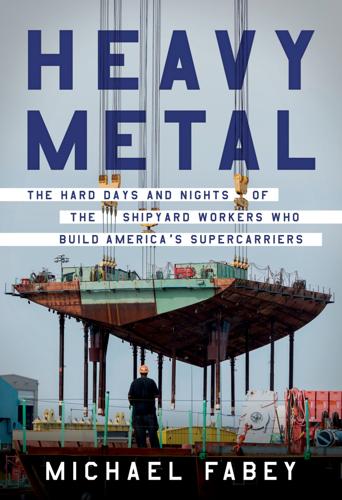
Heavy Metal: The Hard Days and Nights of the Shipyard Workers Who Build America's Supercarriers
by
Michael Fabey
Published 13 Jun 2022
Then, a White police officer in Minneapolis named Derek Chauvin knelt on the neck of a Black man named George Floyd for eight minutes and forty-six seconds on May 25 while Floyd lay handcuffed on the ground in custody, at least two minutes after he stopped breathing—all of this captured on iPhone video, which every media outlet in the country, if not the world, broadcast by that evening. After that, the world outside the shipyard gates seemed to shift into a whole new higher gear of crazy. Around the country—and then the world—city streets erupted in protests led by Black Lives Matter, opposed by counterprotesters of self-appointed “militias.” Addressing the naval community through self-recorded video about the death of George Floyd and the subsequent unrest, CNO Admiral Michael Gilday on June 3 said, “We need to listen. We have Black Americans in our Navy and in our communities that are in deep pain right now.
…
Even though Sunderland had paid no dues to Local 8888 for about a year, the union still sent a rep to quietly sit in on the meeting between the worker and the HR official. The local rep wanted to ask the yard to give Sunderland another chance but was told the Trump supporter didn’t want that. Spivey never wanted to see anybody fired over these kinds of things, and the yard had been cracking down—supervisors told another steelworker to turn a Black Lives Matter shirt inside-out. As for Sunderland, the fifty-five-year-old had no regrets about sticking to his guns. His story made the national news. He was featured on Fox and even wound up talking to the White House. Spivey wanted to file a grievance and possibly get Sunderland’s job back, but the union didn’t hear back from him on those offers either.
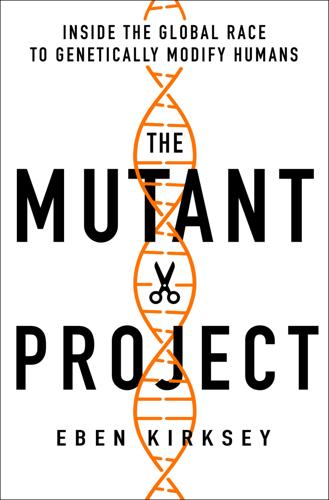
The Mutant Project: Inside the Global Race to Genetically Modify Humans
by
Eben Kirksey
Published 10 Nov 2020
He began working with a renegade chemist who attended AIDS conferences, took pictures of new drugs’ chemical structure and formula, and then showed the HIV activists how to re-create the compounds. Matt Sharp joined the San Francisco chapter of ACT UP. The activist group was a leaderless collective, pioneering an organizational structure that was later adopted by Occupy Wall Street and Black Lives Matter. The AIDS activists could see that diseases impacting the mainstream were garnering the lion’s share of research dollars. A “war on cancer” had been declared by Richard Nixon in 1971, and the disease was enjoying ongoing government support at the National Cancer Institute. When Matt Sharp flew to Washington for the “Storm the NIH” event in May 1990, the goal was to demand more government support for HIV research.
…
.; Jain, Lochlann; Lee, Sharon Heijin; Maggic, Mary; Martin, Emily; Pertamina, Tamara; Rapp, Rayna; Roberts, Dorothy; Roof, Judith; science fiction; Thompson, Charis; Uretsky, Elanah; Wong, Alice; Wray, Britt Ferrell, Ryan (consultant to Jiankui He) Firestone, Shulamith (feminist writer and activist) Floyd, George (Black Lives Matter icon) follistatin (muscle-enhancing hormone). See also myostatin Food and Drug Administration (FDA) Frankenstein (Shelley) Franklin, Rosalind (chemist) Franklin, Sarah (sociologist) Fuentes, Agustín (anthropologist) Fuller, Buckminster (futurist) Fu Manchu (fictional mad scientist).
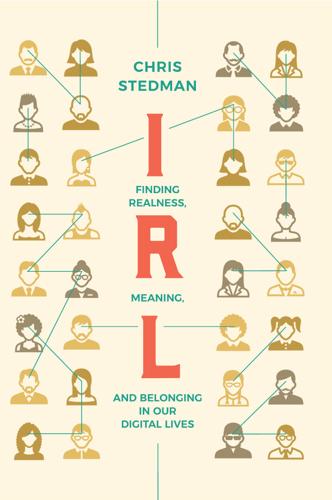
IRL: Finding Realness, Meaning, and Belonging in Our Digital Lives
by
Chris Stedman
Published 19 Oct 2020
A philosophical map, then, would chart the ephemeral events of everyday life and invest them with new significance, documenting experiences and increasing the possibility of their communication. That sounds a lot like social networks at their best, right? Marginalized communities are more able than ever before to map their lives online and document the things people in power wish to deny or erase. Platforms like Twitter have been critical to the growth of movements like Black Lives Matter. In the wake of the death of Michael Brown, an unarmed teenager shot by a police officer in Ferguson, Missouri, people used Twitter to organize on the ground, share their locations with one another, and broadcast evidence of systemic injustice to the nation. Similarly, hashtags like #DisabledAndCute and #BlackGirlMagic empower members of disenfranchised communities to do more than just document their trauma and pain—they are ways of mapping and sharing their joys with a world that is less inclined to tell those kinds of stories.
…
“That is what keeps us scrolling, scrolling, pressing our lever over and over in hopes of getting some fleeting sensation—some momentary rush of recognition, flattery, or rage.” Driven in our posting by what algorithms reward, even our digital “downtime” can sometimes leave us feeling the opposite of renewed—like life in digital space is about always doing, rather than existing. I am reminded of a story a friend told me about being engaged in Black Lives Matter organizing. She is also a Christian involved in a faith community, and she described friends of hers who do not have a faith or philosophical community—who are “nones” or, more specifically, “nothing in particulars”—finding their sense of community, belonging, and identity in activism instead.
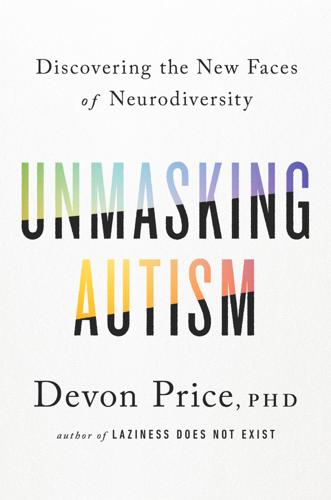
Unmasking Autism: Discovering the New Faces of Neurodiversity
by
Devon Price
Published 4 Apr 2022
She closed her store and pared down her partnerships to just a few key collaborators. She and her husband separated, and she came out as queer. She started boxing, and getting more muscular, and began dressing in baggy, masculine clothing more often. On Instagram her follower count dropped. She started posting about Black Lives Matter, her struggles with depression, and her queerness, and more followers disappeared. Many of the white, straight women who loved Moorea’s old brand were put off by the real her. The more Moorea embraced her true self, the more she lost. But it didn’t exactly feel like a loss. She had gained a greater understanding of who she really was.
…
See defining Autism terminology, 46–50 use of term, 46, 67 Autism Diagnostic Observation Schedule (ADOS), 42 Autism National Committee, 225 Autism Speaks, 6, 225, 229 Autistic brains, 20–23, 70, 114, 206–7 Autistic identity, 44, 85–88, 139–40 identity-first language, 46–47 integration and, 254–62 Autistic life, building an, 164–90 divergent design, 168–73 doing your own thing, 179–82 Mariah’s experience, 168–69 Marta Rose’s experience, 168–70, 171, 173, 177–78 Moorea Seal’s experience, 164–67, 170 radical visibility, 183–90 reimagining success and time, 173–78 Rhi’s experience, 180–81 Rory’s experience, 179–80 Sue’s experience, 173–74 Autistic relationships, cultivating, 191–228 communicating clearly and honestly, 207–13 cultivating unmasked friendships, 200–207 finding and making your community, 218–28 James Finn’s experience, 191–93, 195 letting go of neurotypical expectations, 213–17 Reese Piper’s experience, 213–14, 224–25 self-disclosing, 195–200 standing up for yourself, 190, 191–93 Tisa’s experience, 218–19, 223–24 Autistics Against Curing Autism, 28, 85, 86, 221–22 Autistic Self-Advocacy Network (ASAN), 83, 85, 86, 87, 222, 225, 236 awkwardness, 5, 20, 39, 51, 57, 93, 94, 102, 107, 148, 158, 174, 185, 186, 194, 195, 219 B Baron-Cohen, Simon, 77 belief systems, adherence to, 112, 129–33, 159, 229 Andrew’s experience, 129–30 Bobbi’s experience, 52 warning signs of high-control groups, 132–33 biases, 24, 40, 43, 56–57, 134, 186, 195, 239–40 Big Bang Theory (TV series), 4, 37, 133, 134 biological markers, 20–23 Bipolar Disorder, 55, 73, 113 Bird, Geoff, 126 Black Autistics, 9, 36, 60–67, 194, 197, 232, 240, 246–47 Anand Prahlad’s experience, 49, 53, 65–66, 67 Catina Burkett’s experience, 63, 64, 67 Mariah’s experience, 64, 168–69 racial disparities in diagnosis, 33, 36–37, 40, 61–62 Timotheus Gordon’s experience, 28, 65–66, 68, 86, 92–93, 94, 97, 222–23, 247 Black Lives Matter, 166 Bleuler, Eugen, 46, 67 Blume, Harvey, 30 Borderline Personality Disorder (BPD), 9, 29, 53, 55, 75–77 bottom-up processing style, 24–25, 114 Braille signs, 231, 234, 235–36 brain injuries, 11, 30, 80 Bridges, Dorian, 119–20, 121, 123 brown Autistics, 36, 40, 60–67, 194, 222, 246–47 Burkett, Catina, 63, 64, 67 burnout, 3, 11, 18, 75, 176, 199, 238 Burns, Pete, 150–51 C calorie restriction, 55, 108, 110 camouflaging, 15–16, 39, 96–98, 108, 140, 163, 167–68 ABA therapy and, 100–103 as an overcorrection, 104–5 gender and, 8, 57 Thomas’s case, 119, 128 capitalism, 81–82, 85, 152, 177 chewelry, 141, 187 child development, 21, 32–33 childishness, 93–94, 102, 107, 124, 145, 148 Cliffe, Nicole, 7, 196 clothing and radical visibility, 183–89 cluelessness, 57, 89, 107, 139, 148 code switching, 63–64 cognitive behavioral therapy (CBT), 74, 118 cold and unfeeling, 63, 68, 102, 106, 147, 192 collaborative contact, 238–40 collectibles, 170–71 coming out, 32, 145, 195–200 communication needs, 207–13, 208–9 community, finding your place in, 85–88, 218–28 Community Emergency Services and Support Act (CESSA), 222–23, 247 comorbid conditions, 72–81 compensation, 37, 96–98, 100, 108, 140, 163, 167–68, 179, 182 ABA therapy and, 100–103 connective tissue disorders, 28 conspiracy theory groups, 129, 131 cooking, 214, 217 costs of masking, 109–38 adherence to rigid rules and belief systems, 112, 129–33 Andrew’s experience, 129–30 Angel’s experience, 123–24 detachment and dissociation, 111, 123–28 Dorian Bridges’s experience, 119–20, 121, 123 eating-disordered behavior, 111, 119–23 fawning and compulsive people pleasing, 112, 133–37 problematic coping strategies, 111–12, 112 problem drinking and substance use, 111, 113–19 Thomas’s experience, 109–10, 113–14, 118–19 courage, 158, 259 standing up for yourself, 143, 147, 190, 191–93, 259, 260 COVID-19 pandemic, 183, 210–11 “crazy,” 30, 115, 125, 252–53 “creepiness,” 57, 181, 185 criminal justice system, 246–47 crying, 34, 55, 92, 93, 114, 165 Cubacub, Sky, 183–84, 186–87 cults, 108, 110, 129–30, 130, 132–33 Cumberbatch, Benedict, 4 D Dale, Laura Kate, 59–60 Deaf people, 46, 212, 230–31, 288n defining Autism, 19–32 bottom-up processing style, 24–25 deliberative processing style, 23–24 diversity, 31–32 neurodivergence, 29–31 neurological markers, 20–23 repetitive behaviors, 26–27 risk factors, 28–29 touching every part of Autistic person’s life, 25–26 deinstitutionalization, 239 deliberative processing style, 23–24 depression, 11, 23, 29, 55, 72–73, 118 detachment, 111, 123–28 diagnosis, 9, 39–46, 244 access to, 9, 33, 40–41, 44–45, 53, 62 gender and racial disparities in, 6–7, 33, 35–39, 53–54, 61–62 identifying specialists, 41–42 misdiagnosis, 53, 62, 75–78 positive experience with, 41, 42–45 questions to ask, 41 rate, 40, 40–41, 244 white Autistic boys, 6–7, 35–39 Diagnostic and Statistical Manual of Mental Disorders (DSM), 27, 82–83, 151 disability accommodations and benefits, 43, 234–38, 242, 245 comorbid and overlapping conditions, 72–81 medical model of, 229–30 social model of, 230–31 use of term, 46–47, 48 “disability first” language, 47 discernment, 125, 146, 193 discounting, 197 discrimination, 42–43, 234–38 dissociation, 111, 123–28 Angel’s experience, 123–24 distractibility, 21, 31, 70, 72, 78, 114, 144, 170, 175, 179, 236 divergent design, 168–73 Mariah’s experience, 168–69 Marta Rose’s experience, 168–70, 171, 173, 177–78 diversity of Autism, 31–32 domestic abuse, 110, 129, 136 drinking.
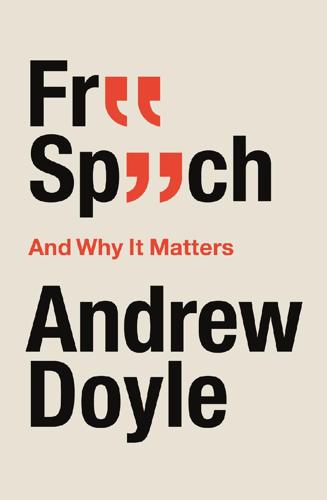
Free Speech And Why It Matters
by
Andrew Doyle
Published 24 Feb 2021
This was misinterpreted as racist because he was replying to a black Twitter user, even though it was a phrase he had used previously in conversation with white people. In June 2020, Nick Buckley, the founder of charity organisation Mancunian Way, which is committed to helping young people from ethnic minority backgrounds to find work, was ousted for criticising the radical politics of the Black Lives Matter movement (most notably their calls to defund the police and abolish capitalism). Although Buckley’s opposition to racism was never in doubt, the charity capitulated to pressure from online campaigners who smeared him as racist and demanded his dismissal. It was only after a petition and counter-campaign that the decision was reversed.

Belgium - Culture Smart!: The Essential Guide to Customs & Culture
by
Bernadett Varga
Published 14 Aug 2022
Former foreign minister Louis Michel, appointed a European Commissioner in 2004, has tried to atone for the colonial past by helping to reactivate the economy of the Democratic Republic of Congo and its neighbors Rwanda and Burundi, and to support the resolution of Central Africa’s ongoing conflicts. In 2002 he formally acknowledged Belgium’s share of the moral responsibility for the killing in 1961 of Patrice Lumumba, the father of Congo’s independence. In 2020 the Black Lives Matter movement reached Belgium and protests spread across Brussels, where a crowd of about 10,000 people demonstrated against racism. This was followed by a letter from the Belgian king to the president of the Democratic Republic of Congo expressing his deepest regrets over his country’s exploitation of the DRC.
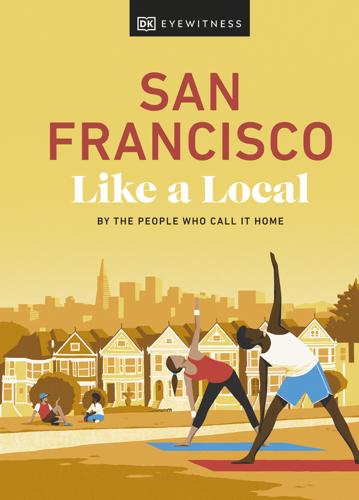
San Francisco Like a Local: By the People Who Call It Home
by
Dk Eyewitness
Published 5 Apr 2023
Sign up to Mortified’s newsletter to get advance notice of upcoming events before tickets sell out. g Spoken Word g Contents Google Map MANNY’S Map 4; 3092 16th Street, The Mission; ///noon.rested.coherent; www.welcometomannys.com A nightly calendar of Q&As with politicians, activists, journalists, and thought leaders – past speakers include Black Lives Matter founder Alicia Garzer and Speaker of the House Nancy Pelosi – draws a mixed bunch of hippies and hipsters to this civically minded spot. By day, it’s MacBooks and macchiatos; by night, spirited debates on hot-button issues like colorism and homelessness. Entry to events is free, but register on the website beforehand. » Don’t leave without trying the food; the kitchen is run by Farming Hope, who train up the homeless and formerly incarcerated.
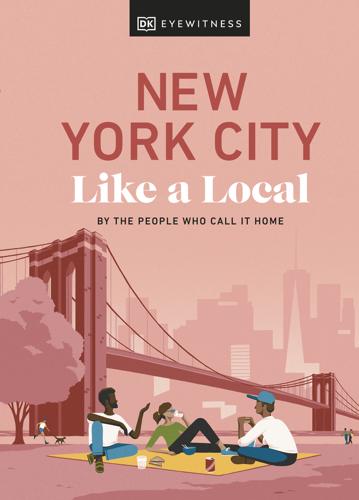
New York City Like a Local
by
Dk Eyewitness
Fast-forward to what would have been Haring’s 50th birthday, in 2008, and the wall was officially earmarked for the use of street artists to create public artwork. And so an icon of urban art was born. Every year, a new mural appears; 2020 saw Ecuadorean Raul Ayala create an emotive composition around Black Lives Matter, which captured his hope for a unified, peaceful future in spray paint. g Street Art g Contents Google Map THE AUDUBON MURAL PROJECT Map 6; 149th Street and Broadway, Washington Heights; ///dollar.skills.junior; www.audubon.org Traipse around West Harlem and you’ll spot a whole horde of bird-themed murals.

#Republic: Divided Democracy in the Age of Social Media
by
Cass R. Sunstein
Published 7 Mar 2017
As one activist put it, “Getting something on Twitter means that people are talking, they are conscious. And that consciousness can lead to action.”25 Freelon and his coauthors found that social media posts played a large role in spreading identifiable narratives and accounts of killings by the police. The Black Lives Matter movement had a significant impact on both opinion and action in many cities as well as at the national level. #BlackLivesMatter mattered. Similar polarization can be seen with the use of #AllLivesMatter, a hashtag whose purpose was to offer a competing narrative to that reflected in #BlackLivesMatter, to the effect that it is partisan or parochial, or even racist, to single out “black lives” for special emphasis.
…
M., 243–44 Berners-Lee, Tim, 183 best practices, 223–25 bias: appropriately slanted stories and, 62–63; citizens and, 169; confirmation, 123; cybercascades and, 123–25, 135; elitism and, 151–53; Facebook and, 15, 123; freedom of speech and, 205; general-interest intermediaries and, 148; groupism and, 63–68; homogeneous society and, 135; magazines and, 152; newspapers and, 151–52; polarization and, 63, 92, 97; prejudices and, 43; radio and, 64; scandals and, 43; social media and, 135; spreading information and, 148, 151–53, 155; television and, 64, 151–52 biased assimilation, 92, 97 bicameralism, 47 Big Brother, ix, 257 Bill of Rights, 50–52 bin Laden, Osama, 234, 239 Black Lives Matter movement, 59, 79–80, 154, 259 blogs: conservatives and, 231; cybercascades and, 124; decline of, 22–23; diversity and, 231; improving, 231; liberals and, 231; microblogs and, 22; polarization and, 63, 79; popularity of, 22–23; spreading information and, 154–55 Bobadilla-Suarez, Sebastian, 127 Bohnett, David, 60 bombs, 192, 235–37 books, Amazon and, 22, 31–33, 150, 188, 222, 229; consumption and, 3, 19, 27, 31–33, 98, 104, 118, 140, 150, 153, 171, 192, 256–57; long tail and, 171; public sphere and, 153; shared experiences and, 140 Bosnia, 239 boyd, dana, 81 Brandeis, Louis: constitutional doctrine and, 52–56, 145, 203, 220, 228, 247–48, 250–51; freedom of speech and, 55–56, 203–4, 248; inert people and, ix, 56, 145, 204, 261; on sovereignty, 52–57 Brave New World (Huxley), x, 21 Brexit, 7, 11 British Broadcasting Network, 64 browsing habits, 5, 21–22, 116, 124 Bush, George W., 93–94, 104 campaign finance, 193–94 Carnegie, Dale, 160 CBS, 19, 152, 179–81, 185, 197–98, 228 censorship: authoritarianism and, 11; China and, 160–62; citizens and, 160–61, 164; regulation and, 6, 11, 34, 160–61, 164, 200, 208, 246, 248, 256, 261 CERN (European Organization for Nuclear Research), 183 chance encounters, 7–8, 19, 24, 32 Chechnya, 239 checks and balances, 11, 46–47, 51 Chicago school of economics, 151 child-support issues, 133 China, ix, 63, 107, 137, 139, 159–62 choice architecture, 7 Christians, 185 citizens: behavior and, 160–62, 167–68; bias and, 169; Bill of Rights and, 50–52; Colorado experiment and, 68–70, 77; communications and, 157–60, 163–64, 166, 168–70, 175; conservatives and, 162; constitutional doctrine and, 157; consumers and, 25, 115–16, 157–62, 166–75, 223, 231, 256–59; crime and, 172; deliberative democracy and, 169; discrimination and, 167, 175; echo chambers and, 163; education and, 167, 170; Facebook and, 163; filtering and, 157; freedom of speech and, 159, 164; general-interest intermediaries and, 166; Internet and, 158, 160, 164, 169, 171–74; judgment and, 167, 169–70; limited options and, 164–67, 174; majority rule and, 169–70; must-carry rules and, 215, 226–29; preferences and, 157–60, 162–70, 174–75; producers and, 171; public forums and, 13, 34–44, 58, 84, 88, 142, 156, 166, 204–5, 226–27, 256–57, 267; radio and, 165–66; shared experiences and, 158; social media and, 157, 160–65, 168; television and, 158, 165–66, 169, 173; terrorism and, 163; Twitter and, 162, 166; unanimity and, 169–70 Citizens United case, 193–94 civic virtue, 5, 23, 46, 260 civility, 217–18 climate change: cybercascades and, 97, 107, 127–31; environmental issues and, 1, 3–4, 7, 9, 11, 35, 42, 57, 67, 74, 96–97, 99, 107, 127–31, 217; global warming and, 68–69, 88, 217; greenhouse gases and, 9, 127, 130–32, 218 Clinton, Bill, 104, 109 Clinton, Hillary, 15, 59, 75, 117 CNN, 62, 64–65, 115, 126, 228–29 Cole, Benjamin, 237 Cole, Jon, 237 Colorado experiment, 68–70, 77 commercial speech, 193, 205, 207 common experiences, 7, 34, 140–41, 144–45, 147, 214, 254 communications: advertising and, 28 (see also advertising); baseline for, 23–24: citizens and, 157–60, 163–64, 166, 168–70, 175; consumer sovereignty and, 260; curation and, 1; cybercascades and, 119, 134–35; deliberative democracy and, 228; disclosure policies and, 215, 218–23; diversity and, 18, 23, 214; evaluating market of, 53–54; fairness doctrine and, 84–85, 207, 221, 227; FCC and, 84, 179, 198, 219–20, 227; fewer shared experiences and, 144–46; filtering and, 6, 28 (see also filtering); forms of neutrality and, 207–10; fragmentation and, 5, 7, 11, 13, 16, 23, 51, 57, 64, 77, 83–86, 98, 140–41, 146, 149, 151–55, 213, 221, 230, 253, 259, 266n14; freedom of speech and, 193–98, 204, 207, 209; free society and, 18; future of, 261; gated, 8; improving, 214–15, 219–20, 223, 226–28; Internet and, 19 (see also Internet); Jacobs on, 12–13; legal issues and, 177–79, 220, 227; manipulation and, 17, 28–29, 95, 164; mass media and, 19 (see also mass media); must-carry rules and, 226–29; net neutrality and, 29; opposing viewpoints and, 71, 84, 207, 215, 231–33, 255; overload and, 63–68; personalized market for, 1, 155–56, 257, 259; plethora of options in, 5; polarization and, 25, 60, 63–64, 70, 75, 84–86, 89–92; politics and, 54; President’s Advisory Committee on the Public Interest Obligations of Digital Television Broadcasters and, 196–98; producers and, 28, 215; public forums and, 13, 34–44, 58, 84, 88, 142, 156, 166, 204–5, 226–27, 256–57, 267; Putnam on, 267n2; Red Lion Broadcasting v.

Don't Be Evil: How Big Tech Betrayed Its Founding Principles--And All of US
by
Rana Foroohar
Published 5 Nov 2019
Instead, law enforcement can turn to data and technologies provided by Google, Facebook, Amazon, and the intelligence group Palantir, who have become such big users of data tools that the reality of data-driven crime fighting in the United States has come to mirror dystopian science fiction. Facebook ad tools, for example, have been used to gather data on people who expressed an interest in Black Lives Matter, data of the sort that—as the ACLU has exposed—was then sold to police departments via a third-party data-monitoring and sales company called Geofeedia.21 This is far from unusual; the collection and sale of data from not only Big Tech firms but myriad other companies via third-party data brokers is a common practice—indeed, it’s the fastest growing part of the U.S. economy.22 A 2019 report from the Democratic strategy group Future Majority found that “thousands of companies gather personal information that their customers or clients provide in the course of doing business with them, and then sell their information to large data brokers, such as credit bureaus.23 In turn, those data brokers analyze, package and resell the information, often as personal profiles.
…
Further, the new generation of wifi-based home devices that respond to people’s voice commands—led by Amazon’s Alexa, Echo, and Dot, and Google Nest and Google Home—can capture not only personal information about the people who buy and install them but what they say in the range of those devices.”24 In short, the American surveillance state isn’t science fiction—it’s already here. The fact that Silicon Valley companies portray themselves as uber-liberal and praise groups like Black Lives Matter while also monetizing their surveillance is a rich and dark irony, but by no means the only one. Consider Amazon’s Orwellian-sounding Rekognition image processing system, which the ACLU recently called upon Jeff Bezos to stop selling to law enforcement officials, saying it was “primed for abuse in the hands of government.”
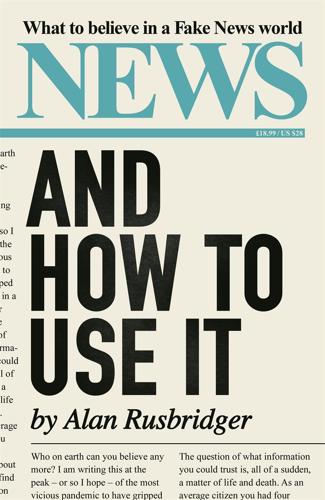
News and How to Use It: What to Believe in a Fake News World
by
Alan Rusbridger
Published 26 Nov 2020
Local residents welcomed reporters, instead of regarding them as hostile intruders. The lack of British media diversity was painfully highlighted by the sight of so many white reporters suddenly visible in one of the most ethnically and culturally mixed areas of the capital (and reinforced all over again by the Black Lives Matter summer of 2020). The discovery by reporters that the residents of Grenfell were, and had been, pillars of the community – artistic, altruistic, working in key parts of London’s economy, skilled, thoughtful and organised – was treated as a revelation. To people from BAME and working-class backgrounds this was a given.
…
‘From the broadsheets to the BBC, the British press has stoked racism and xenophobia, cynically exploited them for clicks and eyeballs – or hidden behind cowardly equivocation about the sacred right of racists to be heard in weekly columns. And everyone involved is still getting away with it. Editors who happily published Katie Hopkins are today cheerleading for wokeness; others are still working with people who think Black Lives Matter has “a racist agenda”, and telling themselves free speech requires nothing less.’ There was a degree of soul-searching in many companies. Within weeks of Floyd’s murder Anna Wintour, editor-in-chief of Vogue, emailed her staff, acknowledging that ‘It can’t be easy to be a Black employee at Vogue’, and that the magazine had ‘not found enough ways to elevate and give space to Black editors, writers, photographers, designers and other creators’.
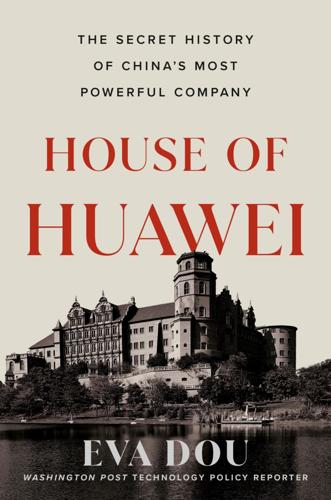
House of Huawei: The Secret History of China's Most Powerful Company
by
Eva Dou
Published 14 Jan 2025
“Ensuring public safety is crucial to cities’ quality of life,” IBM CEO Sam Palmisano said in Shanghai during a speech about Smarter Cities. “This no longer appears to be a losing battle. New York and other cities are using advanced data analysis to achieve historic reductions in crime.”[20] Later on, during the Black Lives Matter protests and amid scrutiny over ingrained racial bias in policing, IBM would walk back its marketing about its technology’s ability to predict crimes. But at the time, the idea was alluring to many governments. As IBM traveled around China promoting Smarter Cities in 2009, China’s premier, Wen Jiabao, also gave the concept his seal of approval.[21] That year, Huawei launched its own versions, which it called “Smart Cities” and “Safe Cities
…
A B C D E F G H I J K L M N O P Q R S T U V W X Y Z A Aaronson, Susan Ariel, 328 Advancement Bookstore, 3 Afghanistan, 145–46, 164–65, 206, 255, 256, 375 agriculture, 29, 32, 301 Ahmadinejad, Mahmoud, 165 Aid, Matthew M., 143 air-pressure generators, 33, 33–36, 369 Al-Ahram, 310 Albania, 240 Alcatel, 105, 109, 381 Iraq and, 147 Lucent joint venture, 168, 203, 211, 250 submarine cable, 168 Algeria, 234 Alouette Correctional Centre for Women, 291, 301 Amerilink, 197–98 Ametek, 27, 34 Android, 134, 202, 303–4, 329, 346–47 Annan, Kofi, 129 Anshun, 18 Anshun Daily, 17–18 anxiety, 136, 176 ANZ Bank, 235 Apple, xl, 244, 246, 262, 264, 265, 329 Arab Spring, 205–9, 251 Argentina, 158, 286, 289, 291, 311 Arıkan, Erdal, 269, 270–71 Arsenal Football Club, 262 artificial intelligence (AI), 120, 265–66, 275–77 Asiacell, 148, 154, 169, 375 Associated Press, 301 Athens Olympic Games (2004), 187 atomic bombing of Hiroshima and Nagasaki, 6 AT&T, 138, 194, 278, 351, 369, 380 No. 5 switch, 61, 68 Australia, 156, 187, 267, 278–79, 328 Huawei ban, 227–28, 281, 378 Australian Strategic Policy Institute (ASPI), 267, 278–79, 380 Avansys Power, 137, 375 B Babiš, Andrej, xxvii back doors, 154–55, 169–70, 201, 278–79, 350–54 House investigation, 217–28 Baghdad, 103–4, 116, 143–44 Bahrain, 205, 207 baijiu, 82–83 Bain Capital, 170–72, 227, 377 Balding, Christopher, 312 Bamford, James, 241–42 Bannon, Steve, 302 Bao Fan, 295 Barber, Lionel, 207, 285 Barr, William, 325 Barton, Dominic, 335, 338 Base 011, 17–20, 23–24 Battle of Triangle Hill, 55 Battle of Waterloo, 310–11 BBC, xli, 314 Beihai Park, 8 Beijing Netcom, 188, 191–92 Beijing Olympic Games (2008), 187–93 Beijing Research Institute of Information Technology, 86–87 Belarus, 106 Belgrade, bombing of 1999, 114–15 Bell, Alexander Graham, 61 Bell Canada, 326–27 Bell-Northern Research, 330 Bell Telephone Company, 59–60, 105 Belt and Road, 250–51 Ben Ali, Zine el-Abidine, 208 Berkman Klein Center, 327–28 Best Buy, 202 Beto-Huawei, 107, 373 BH-01, 43–44, 47, 128 BH-03, 47–48 Biden, Joe, 337, 346, 347 big data, 209, 239, 253–58 biometric scanners, 273 Black Lives Matter, 210 black-swan events, xli, 261, 353–54 black swans, xli, 261, 310 Blair, Tony, 96 Blaker, Peter, 32 Bloomberg Businessweek, 304 Bocelli, Andrea, 264 Boeing B-52H Stratofortress, 103 Bolton, John, 280–81, 282, 293, 307 Bouyei, 5–8, 368 Bo Xilai, 251–52 Brazil, 112 Brezhnev, Leonid, 330 bribery, 83–84, 251–52 Britain.

The Bill Gates Problem: Reckoning With the Myth of the Good Billionaire
by
Tim Schwab
Published 13 Nov 2023
Raveendran is founder of the Duke Decolonizing Global Health Working Group at Duke University, one of a growing number of campus activist groups working on this issue. “They want to participate in these conversations because it’s the hot thing. It’s the popular thing to be a part of, especially after the Black Lives Matter Movement,” she said. “They’re using this platform or conversation to prove that, ‘Hey, we care about “diversity” or “representation,” without really understanding what the movement is really standing for or trying to push for.’” In our interview, Raveendran spoke at length about her own experience—she grew up in Sri Lanka, a former British colony, but completed a graduate degree at Duke University, a prestigious private school in the United States (where Melinda French Gates also attended).
…
Look at the Covid-19 pandemic, which exposed how grotesquely inefficient and inequitable our economic system is, prioritizing the needs of the rich over those of the poor and prioritizing the patent rights of Big Pharma over the public health and economic well-being of the planet. Look at political and social movements like Occupy Wall Street and Black Lives Matter—on which the Gates Foundation remained deadly silent—which call for reorganizing our society in ways that directly challenge the excess wealth and “white savior” mentality that drives Bill Gates’s philanthropic work. And look at climate change, where Bill Gates’s shameless efforts to assert his leadership—preposterously proposing that his own new, untested technologies will one day save the planet—have been fairly widely panned, even in mainstream publications.
…
See also specific grant recipients; and projects administrative costs and advocacy groups funded by annual letter annual reports board of “Board Service Policy” catalytic role of chameleon nature of colonial and racial dynamics and dark money and divorce of Bill and Melinda and donations to private companies donations to governments endowment and evaluations and female employees and focus on people of color forward funding and founding of future of global access agreements and Goalkeepers gala and government agencies and grant management by grants database and headquarters and investment income and lawsuits and lives saved claims and lobbying and media and micromanagement and Microsoft overlap and organizational culture and PR and priorities of private-sector partners and regulation and oversight of size and wealth of spending requirements and sub-grants and surrogates taxes and transparency and Bill & Melinda Gates Medical Research Institute Billions (TV show) Bio Farma Biological E Limited Biolyse BioNTech biotechnology Britt, Glenn Black Enterprise Black Lives Matter Bloomberg Bloomberg, Michael Blumberg, Alex Blunt, Roy Boeing Bomba, Khalid Bono Booker, Cory Borlaug, Norman Bornstein, David Bose, Niranjan Boston College Boston Consulting Group Breakthrough Energy Bridge International Academies British Medical Journal Broken (podcast) Brookings Institution Brooks, Susan Brunswick Group Buffett, Peter Buffett, Warren Bulgaria Bureau of Investigative Journalism Bureau of Labor Statistics Burkina Faso Burma Bush, George H.
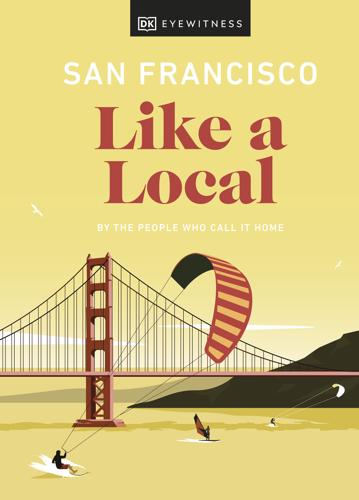
San Francisco Like a Local
by
DK Eyewitness
Published 4 Oct 2021
Sign up to Mortified’s newsletter to get advance notice of upcoming events before tickets sell out. g Spoken Word g Contents Google Map MANNY’S Map 4; 3092 16th Street, The Mission; ///noon.rested.coherent; www.welcometomannys.com A nightly calendar of Q&As with politicians, activists, journalists, and thought leaders – past speakers include Black Lives Matter founder Alicia Garzer and Speaker of the House Nancy Pelosi – draws a mixed bunch of hippies and hipsters to this civically minded spot. By day, it’s MacBooks and macchiatos; by night, spirited debates on hot-button issues like colorism and homelessness. Entry to events is free, but register on the website beforehand. » Don’t leave without trying the food: the kitchen is run by Farming Hope, who train up the homeless and formerly incarcerated.
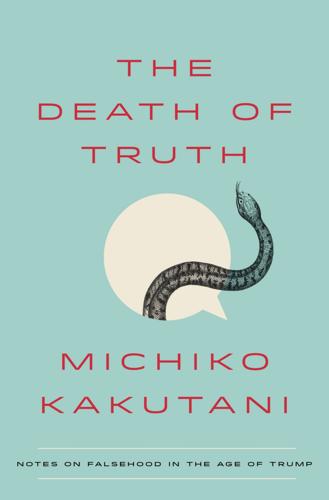
The Death of Truth: Notes on Falsehood in the Age of Trump
by
Michiko Kakutani
Published 17 Jul 2018
Much of his agenda, for that matter, is driven by negativity—by an urge to undo President Obama’s legacy, including health care and environmental protection, and also to dismantle the broader safety net and civil liberties protections implemented since Lyndon B. Johnson launched the Great Society back in the mid-1960s. “Make America Great Again” translates into turning the clock back to the 1950s, before the civil rights movement, before the women’s movement, before LGBT rights, before Black Lives Matter. But Trump is hardly alone in his negativity and nihilism. Many Republicans in Congress have also abandoned reason, common sense, and the deliberative process of policy making. Some freely acknowledged that they voted for the tax bill because of their big-money donors. Representative Chris Collins said, “My donors are basically saying, ‘Get it done or don’t ever call me again.’ ” Congress has failed to act on immigration reform again and again, and it’s refused to act on gun control year after year, tragedy after tragedy.
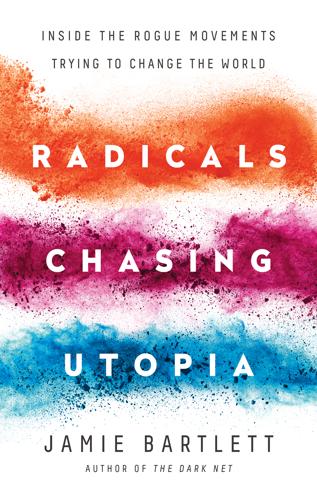
Radicals Chasing Utopia: Inside the Rogue Movements Trying to Change the World
by
Jamie Bartlett
Published 12 Jun 2017
Anti-capitalist movements like Occupy are only mentioned in passing because there are plenty of books written about them, and although important, they don’t have a monopoly on the channels of frustration.* Other significant movements are absent because I wasn’t sure I could do them justice, such as those that mobilise on identity markers—sexuality, race, gender—for example, Black Lives Matter. But I’ve tried to follow a wide variety of contemporary radical thinking I think is both interesting and important. I approached each group with the intention of assessing them as honestly and objectively as I could. To listen to their ideas and immerse myself in their worlds in order to tell their stories as faithfully as possible.
…
See artificial intelligence Aktionsanalytische Organisation (AAO), 203–204 Alentejo, Portugal, 189–190 Allied Irish Bank, 65 Alpert, Richard (Ram Dass), 104 Amazon, eBay and, 299–300 Amici di Beppe Grillo (Friends of Beppe Grillo), 159–160 anarcho-capitalists, 271, 275, 281, 292, 314 Anderson, David, 136 Andrews, Lori, 38 Annas, George, 38 anti-ageing research centre, 33 anti-fascism, 66, 70–76 Antifascistisk Aktion (AFA), 67–70, 74, 81–82 anti-fracking movement, 258 Cuadrilla lawsuit and, 255, 263 Nanas, 255–257, 260–263 US, 259–260 anti-Islam movements, in Europe, 49, 52–53, 55–56, 59, 65–66, 88 media portrayal of, 83 See also English Defence League; Pegida-UK arrests, 248 Jedlicˇka, 269–270 Robinson, 87 artificial intelligence (AI), 36–38, 308 Asimov, Isaac, 11 al-Assad, Bashar, 129 Austria, Pegida-Graz event in, 89 ayahuasca, 97, 106 Bachmann, Lutz, 50, 51, 52, 74 Baillie, Douglas, 206–207 Benyahia, Rasheed, 129–130 Berlusconi, Silvio, 159, 163–164, 166 bio-hacking Grinders, 22–23 lab, 20–27 organizations and movement, 22–23 biology, Grinders approach to, 24 Birmingham, Pegida-UK demonstration in, 86–93 bitcoin, 282, 287, 291 mining, 288 Bitnation, 285–286 citizenship, 290–292 reputation system of, 293–294 Black Lives Matter, 6 Black Mirror (Brooker), 293–294 Blair, Tony, 133, 180 Blake, William, 95 blindness, Lee’s technology for, 23 Bloc Against Islam (Blok protiislámu), 55–56, 59, 88 blockchains, 288–290, 299, 308 blog, of Grillo, 159, 163, 178 staff and control of, 181–184 The Book (Watts), 100, 110 border police, 283, 295 Bostrom, Nick, 12 Bottici, Laura, 168 Boxer, Barbara, 46 Bradbury, Paul, 295 brain mapping, 34 Breivik, Anders, 75–76 British Muslims laser focus on, 147–148 Prevent and, 136, 138, 147 Prevent classes for, 139 UK nationals drawn to Syria or Iraq, 129–130 British National Party, 62 Brooker, Charlie, 293–294 Busher, Joel, 73 Byrne, Liam, 81 CAGE, 145–146 Cameron, David, 150, 254 capitalism anarcho-, 271, 275, 281, 292 Marx predictions about, 8 carbon dioxide, 232 cars, self-driving, 36 Casaleggio, Gianroberto, 158–160, 182, 183 Cataldo, Fabio Massimo, 173 Centre for Experimental Culture Design, 194–195 Channel Panel, 140–144, 148, 149, 150 Chicago Journal of International Law, 278 children, in Tamera commune, 195 Christian Climate Action, 248 citizenship, Bitnation, 290–292 civil disobedience, 264–265 climate change Paris deal and, 236 predictions, 231–232 radicalism and, 308–309 climate-change activism, 229–230, 231, 241–242 civil disobedience and, 264–265 Climate Camps, 234–237, 240 journalists and, 237 moots and gatherings, 236, 237 paradox, 234 undercover police problem in, 238, 239 Clinton, Bill, 176, 180 Clinton, Hilary, 43, 180 coal, 252, 264 fracking compared to, 254 coal mines direct actions against UK, 252 open-cast, 247–248, 249 See also Ffos-y-fran coal mine Collins, Matt, 138, 141, 144 Colombian government, FARC and, 210, 213 communes, 206 control and coercion issues in, 217, 218–219 failure of, 223 of 1970s, 205 size of, 226 thought-conformity trait of, 218–219 See also Tamera commune confirmation bias, 73 CONTEST, as UK response to al-Qaeda, 132, 134 conveyor-belt model, of radicalisation, 137–138 Copenhagen, demonstration in, 67–70, 74, 81–82 Corbyn, Jeremy, 260, 261–262, 306 Corrao, Ignazio, 169–173 counterculture movement, psychedelics and, 104 Countering Violent Extremism, 132, 147 Counter-Terrorism and Security Act, 135 counter-terrorism strategies, 131–134 as cottage industry, 134, 147–148 See also Prevent Cowell, Simon, 33 Craxi, Bettino, 158, 159, 163, 165 Grillo’s TV show banned by, 177 Croatia, 268, 270, 296, 298–299 war with Serbia, 269 Cryonic Institute, 33 CTIA Super Mobility 2015, 26–27, 29, 30–36 Cuadrilla, 255–257, 262, 263 cultural framing, of activists, 257–258 cultural hegemony, in activist dictionary, 243 Cyber Party, 46 Cyphernomicon (journal), 284 Czech Republic, 56, 57–59 Velvet Revolution in, 54–55 Däbritz, Siegfried, 54 Dakota Access Pipeline, 265–266 decentralisation, radical, 289–290 democracies checks and balances in, 186 decline of, 4 direct, 154, 160–161, 187 Grillo’s blog and, 182–183 liberal, 131, 151, 312, 313–314, 316 nation-state model and, 300 received wisdoms of Western, 3 Tarkowski Templehof on, 292 See also Western democracies Democrat Party, 5 demonstrations Paris Climate Talk, 241–242 Reclaim Australia, 88 demonstrations, Pegida-UK, 88–89 in Birmingham, 86–93 in Copenhagen, 67–70, 74, 81–82 Denmark, anti-Islam movement in, 66–67 Department of Homeland Security, 132 Descartes, René, 110 Di Battista, Alessandro, 166 digital politics direct democracy as enabled by, 154, 160–161, 187 emotions and, 178 Grillo on, 155 Meetups and, 167–168 problem with, 185–186 prophets, 178 rise of, 156–157 Trump and, 179–180 digital populism, 156–158 digital reputation systems, 293–294, 299–300 direct democracy, Internet as enabling, 154, 160–161, 187 direct-action activism, 233, 263 culture of secrecy, 237 decision making, 244–245 demographic of, 241 diversity issue for, 241–242 End Coal Now, 238–246 right wingers disdain of, 245–246 against UK coal mines, 252 See also Ffos-y-fran coal mine divorce, UK and US rates, 221 DIY biology.
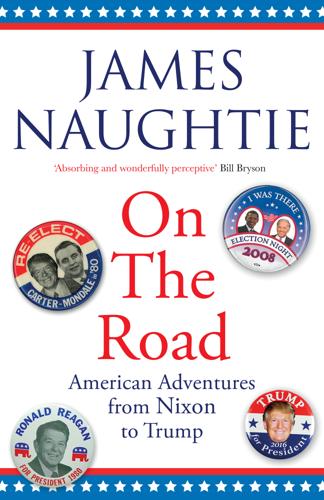
On the Road: Adventures From Nixon to Trump
by
James Naughtie
Published 1 Apr 2020
When the Ku Klux Klan and other white segregationist and nationalist groups held a ‘Unite the Right’ rally in Charlottesville, Virginia, in August 2017 – in a row over a statue of the military leader of the Confederacy, Robert E. Lee – they fought a bloody pitched battle with liberal protestors, one of whom was killed. Hawk Newsome, who leads the New York chapter of the campaign group Black Lives Matter, was there. He described the scene to me. ‘When we went to protest, we saw men in camouflage gear with huge guns, and neo-Nazis with signs saying “Kill Jews”, “Kill Niggers”. The Ku Klux Klan and skinheads had shields, sticks, guns, knives, pepper spray, goggles – they were prepared. I looked down at my phone and – boom!
…
INDEX Aaron, Hank, 105 ABC, 102 Abedin, Huma, 188 Abernathy, Ralph, 155 abortion, 119, 175, 176, 203–4, 204, 265, 274, 276–7 Abourezk, James, 80 Abramsky, Jenny, 110 Accidental American, The, 143 Afghanistan, 112, 132, 159, 258 Agnew, Spiro, 44, 49, 51 al-Qaeda, 132 Alda, Alan, 45 Alexander, Bobby and Gloria, 175, 176 All the President’s Men, 57 Allen, Gavin, 155 Allen, Woody, 16 Amash, Justin, 199 America, vi, 280 American Conservative Union (ACU), 146, 197 American Enterprise Institute, 98 American Spectator, 120 America’s Crisis of Leadership, 111, 113, 114 Ames, Aldrich, 93 Andy (student), 24 Annan, Kofi, 131 anthrax scare, 139 anti-communism, 38, 98, 145 anti-Semitism, 14, 16, 216 Apprentice, The, 177 Arafat, Yasser, 115 Assange, Julian, 290 assassination, 49, 71, 72, 78, 82, 198, 202, 219 assimilation, 9–10, 15 Associated Press (AP), 34 Atlanta Constitution, 56 The Atlantic, 81–2, 202 Audacity of Hope (Obama), 154 automaticity, 141 Baker, Howard, 42 Baker, James, 126 Baltimore Sun, 56 Balz, Dan, 82 Barenboim, Daniel, 95 Barnum & Bailey, 62 BBC, 38, 50, 63, 106–12 passim, 115, 122, 154, 155, 169, 183, 241, 271, 280 M Street offices of, 116, 191–2, 299 Naughtie joins, 5 Radio 4, 5, 75, 95, 110, 111–12, 125, 153 Radio 5 Live, 111, 154 World Service, 50, 241 Beach Boys, 78, 79 Beame, Abe, 32 Bear Stearns, 158–9 Beck, Glenn, 176 Becker, Daniel, 104–5 Begin, Menachem, 69 Benenson, Joel, 190 Benn, Tony, 84 Berkowitz, Mr and Mrs, 16 Berle, Milton, 15 Berlin Wall, 95–6 Bernstein, Carl, 38, 57, 80 Bernstein, Leonard, 31 Bess (dog), 207 Biden, Hunter, 291 Biden, Joe, 168, 269, 291 Bingham, Joan, 83 Birch, John, 98 Black Lives Matter, 216 Blair House, 84, 122 Blair, Tony, 120, 121, 122, 129–33, 141–3, 147–51 Blitzer, Wolf, 121 Bluestone, Irving, 89 Blumenthal, Sidney, 120, 124 Bobbitt, Phil, 215–16 Bolton, John, 143, 144, 146 Borscht Belt, 9, 14, 15, 20 Boston Globe, 56 Bradlee, Ben, 79, 80–1 Breasted, Mary, 134, 299 Brexit, 197, 242 Broder, David, 42, 87–8, 120 Brooks, Mel, 15 Brown, Gordon, 120 Brown, Jerry, 88, 205–7, 208–9 Brunson, Doyle, 173–4 Buckley, William F., 98 BUNAC, 6, 10–11 Bureau of International Security and Nonproliferation, 203 Burke, James Lee, 6 busboys, 12, 13 Bush, Barbara, 108, 181 Bush, Billy, 275 Bush, George H.
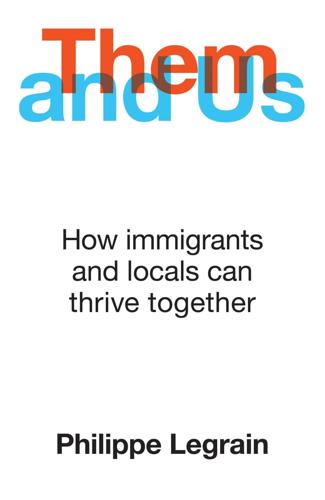
Them and Us: How Immigrants and Locals Can Thrive Together
by
Philippe Legrain
Published 14 Oct 2020
In our globalised world of easyJet and Erasmus, Facebook, foreign holidays and fusion food, people have an increasingly wide range of international connections. Politics too now cuts across borders, and not just through international institutions such as the EU and the UN. ‘Climate strikes’ now mobilise schoolchildren across Europe, North America and the world. Black Lives Matter protests have erupted around the globe. Facebook groups bring together people with common passions from all over. People follow on Twitter, and are followed by, people in different countries. Their favourite pop stars and footballers are often foreign. People increasingly join chosen communities based on common values and interests that cut across national borders.
…
Welfare systems can also be reformed to increase incentives to work and tie some benefits more closely to previous contributions. Overall, then, the picture tends to be mixed but improving. Immigrants and even more so their children tend to fit into society and are accepted by many locals. As the global Black Lives Matter protests have highlighted, racism is still far too prevalent; at the same time, it is not as bad as a few decades ago. Economically, the children of immigrants typically do much better than their parents. But of course societies can do much better. A good place to start is by persuading more sceptics of the merits of immigration and diversity.
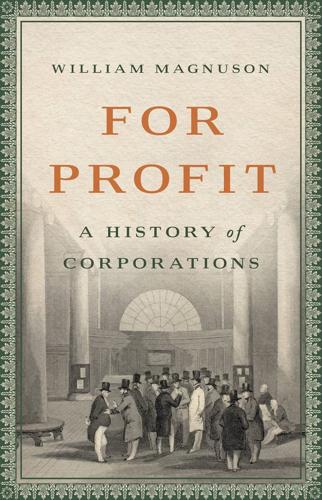
For Profit: A History of Corporations
by
William Magnuson
Published 8 Nov 2022
Facebook and other social networks had steadily eroded our realms of individual privacy. Companies now had access to enormous caches of information about more or less everyone, and they were using those caches for more and more purposes. In 2016, a news report came out that a group had gathered data on Facebook users expressing interest in Black Lives Matter and then sold it to police departments (the group was later banned). ProPublica found that Facebook’s advertising options allowed property owners to discriminate based on race and gender in violation of the Fair Housing Act (the Department of Housing and Urban Development later sued Facebook over the practice).
…
Fortunately, there was no violence that day, but for several hours, around a dozen Confederate-flag-bearing citizens and a slightly larger group of Muslims and their supporters shouted at each other from opposing sidewalks. Other Russian accounts targeted other minority groups. One account, Blacktivist, shared content intended to outrage its audience, posting videos of police violence against African Americans. The page was more popular than the official Black Lives Matter page. It also encouraged its followers to vote for the third-party candidate: “Choose peace and vote for Jill Stein,” one post read. “Trust me, it’s not a wasted vote.”42 In the end, after a long and bruising campaign, Trump won a shock victory over Clinton. All the polls had suggested that Clinton had a strong lead, and, in fact, Clinton won more total votes than Trump.
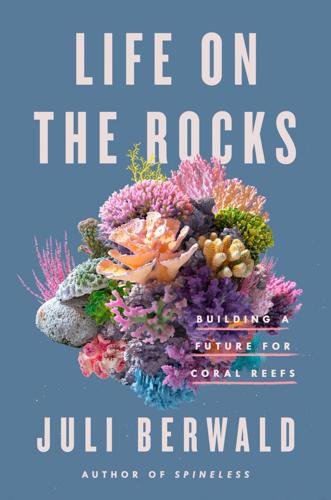
Life on the Rocks: Building a Future for Coral Reefs
by
Juli Berwald
Published 4 Apr 2022
They are also words that characterize the future for so many who will contend with the worst that climate change has in store if we don’t address it. The people affected will be disproportionately people of color. Coral bleaching is visible evidence of climate change and our dependence on fossil fuels—problems in no way disconnected from the Black Lives Matter movement. Ocean justice is inextricably bound to social justice. During Isy’s stay in residential treatment, the doctors said they weren’t sure Isy had PANDAS. And maybe she didn’t. But what is a mental disorder if not an autoimmune disease, the body turning against itself? What is racism if not humanity turning against itself?
…
See also Great Barrier Reef Australian Institute of Marine Science, 42, 262 autoimmune disease, 76–77 axial polyps, 168 B baboons, 45 bacteria and coral farming techniques, 187 and cryopreservation of coral, 192 and living rocks, 95 and settlement of coral larvae, 213 and stony coral tissue loss disease, 102 strep infections and PANDAS, 76, 78–79 and symbiosis with corals, 79–82, 161, 213 Badi (Indonesian island), 135, 142 Bahamas, 5, 186, 216–19, 225, 231 Bali, Indonesia and coral bleaching events, 64 and coral restoration efforts, 146, 155, 164–65, 169–70, 176, 286 and coral trade, 164–65, 166–71 earthquake, 174–75 family trip to, 125, 174–77 and Indonesian Through Flow, 131 Bali Aquarium, 165 Bay, Line, 18, 271–75 Bayahibe, Dominican Republic, 193, 204–5, 208, 211, 212 “Beat It (the Heat): Combating Stress in Coral Reefs” (symposium), 71–74 Belize, 12–13, 93, 103, 181–82 Ben (son) attitudes on environmental issues, 250 diving trips, 291–92 family travels, 104, 174–75 and Isy’s struggles with OCD, 214–15, 251–52 and onset of COVID-19 pandemic, 254, 256 benefits of corals and aquarium trade, 94–97, 123, 130, 159–65, 171–73 economic value, 7, 11, 159–65, 181–82, 185, 238 “ecosystem services” approach to determining, 126–27 environmental, 7, 11, 184, 285 fishery support, 15, 123, 135–38 flood and storm protection, 7, 11, 104, 126, 171, 218–19, 241–42 Bermuda, 184 Biden, Joe, 288 biodiversity and Acropora genus, 167 and aesthetic value of corals, 7 and algal symbiosis, 69 and aquarium trade, 159 in Caribbean, 93–94 in Coral Triangle, 42, 117–18 and cryopreservation of corals, 188–92 in Dominican Republic, 202 and economic value of coral reefs, 127 ethnic diversity parallels, Scott on, 266 and 50 Reefs study, 231, 233 of Florida reef, 22 of Flower Garden Banks National Marine Sanctuary, 292–93 and genetic mixing, 44 and Indonesian Through Flow, 131, 167 and land restoration projects, 185 and Low Isles expeditions, 59–60 measuring reef health, 143 monoculture threat, 96 and stony coral tissue loss disease, 225 Black, Kristina, 265 Black Lives Matter, 267 Blanco, Macarena, 188, 193, 204–5 blast fishing, 23, 139–42, 232, 240, 313n141 bleaching of corals, 6–7 in Arabian Gulf, 62 and bacterial infections, 80–81 and Chasing Coral, 84 and Coral Reef Watch, 253 early research on, 55–60 etymology of term, 267, 268 in Florida and Caribbean, 62–63, 65, 94 at Flower Garden Banks National Marine Sanctuary, 292 and genetics research, 273–76, 277 global bleaching events, 6–7, 25, 64–67, 132 Great Barrier Reef, 11, 65, 66, 254, 258, 259–60 Gulf of Mexico, 107 in Hawai`i, 61–66 origins of research on, 61–66 patchiness of, 270 in Red Sea, 65 and reef acoustics, 146 satellite imagery, 233 in Seychelles, 240 and storm damage, 218 Bloomberg Philanthropies, 231 blue bonds, 237, 239–40 bluehead wrass (Thalassoma bifasciatum), 196 BNP Paribas, 284, 322n284 Bonaire, 88 Bontasua, 135–38, 148–54 boulder corals, 60, 64, 93, 96–98, 143, 199–200 BP, 288 branching corals and aquarium trade, 161, 164 and changing environmental conditions, 60 and coral farming, 168–69 and Indonesian restoration sites, 138, 143 and natural history collections, 42 propagation by fragmentation, 96 and reef tract disease, 21 and restoration projects, 182 and storm damage, 218 varied morphology of, 43–44 See also elkhorn corals; staghorn corals branding programs, 25–27, 147, 226 Brandt, Karl Andreas Heinrich, 67, 305n67 BRCA gene, 273 Brown, Margaret “Molly,” 235 Bruckner, Andrew, 101 Buddy Dive Resort, 181 Bugis people, 128–29 bumphead parrotfish, 176 C cactus coral (Mycetophyllia lamarckiana), 209 calcium carbonate, 50–52, 65, 86 Caldiera, Ken, 250 Cannery Row (Steinbeck), 116 carbon emissions and algae/coral symbiosis, 38 author’s offset practices, 300n9 and cloud-brightening proposals, 20 and coral bleaching, 7, 73 and geoengineering proposal, 248–50 impact of COVID-19 pandemic, 262 methane compared with, 247 Montreal Protocol on, 300n9 and ocean acidification, 50–53 and Paris Climate Accords, 288, 322n284 reduction efforts, 14 and Tragedy of the Commons model, 116 Caribbean and coral bleaching, 62, 64, 65 and evolution of corals, 93–94 reef damage in, 5–6, 94, 218–19 and tourism industry, 181–82 and tropical storms/hurricanes, 216–17 white band disease, 94 Carnegie Institute, 55 Cayman Islands, 65, 108–9 Center for Tropical Island Biodiversity Studies, 266 Centers for Disease Control and Prevention (CDC), 87, 256 Chalias, Vincent, 165, 166–71, 314n171 Chasing Coral (film), 24, 26, 27, 84 Chasing Ice (film), 26 China, 119, 162 chlorofluorocarbons (CFCs), 300n9 chlorophyll, 36, 38, 39, 68 chloroplasts, 82 Chozin, Muhammad, 141 Cladocopium, 69–70 clams, 52 Clean Air and Water Acts, 62, 116 climate change and global warming and coral bleaching, 6–7, 25, 64–67, 132 and coral genetics research, 34–35 Coral Reef Watch program, 253 and coral spawning, 131 and coral symbionts, 70 and ethical issues of coral restoration, 230 and 50 Reefs study, 231 financial impacts of, 240–42 and geoengineering proposals, 9, 18–20, 247–55, 258–59, 261–62 and Great Barrier Reef damage, 17 and heat waves, 291 and lessons of coronavirus pandemic, 287–88 and prioritization of environmental efforts, 131–32, 226–28, 234–35, 285, 289 and Reef Futures meeting, 9 and reticulated evolution, 45 See also carbon emissions climate change mitigation, 12, 18–20 cloud brightening and dust storms, 281–82 initial testing program, 251, 252–54, 258–59, 261–62 promise of, 300n17 and Reef Futures meeting, 19–20 viability of, 249–50 Wadhams on, 247–49 clown fish (Amphiprioninae), 143, 196 Club Méditerranée (Club Med), 203 Cocos Island, 48 Coles, Steve, 62, 66 Colombia, 64 colonialism, legacy of, 140–41, 203, 266 Columbia University, 273–74 Columbus, Christopher, 202 conservation ethic, 110 container ships, 99 continental drift, 47–48, 93 Convention on International Trade in Endangered Species (CITES), 162–64 Cook Islands, 64 coral atolls, 47–49, 52, 57, 134, 240 coral farming, 166–73 and aquarium trade, 159–65 and hospitality industry, 181–84, 204 and Reef Futures meeting, 12, 14, 20 and reef restoration, 94–98 and spawning, 205–9 See also aquarium trade Coral Probiotic Hypothesis, 80–82 Coral Reef Conservation Program, 102 Coral Reef Watch program, 253 Coral Restoration Consortium, 10–16 coral restoration efforts algae’s role in, 149, 188, 212–13 at Bontasua, 135–37, 148–51 and climate change, 231 cost of, 127 criteria for, 15 and financial innovations, 239–42 and genetics research, 35 Indonesia’s advantages, 131–32, 167, 176 and Mars, Inc., 122–24, 128–32 and measuring reef health, 143 and Reef Futures meeting, 11–12, 28–30 scale of, 17–22 and tetrapod structures, 211–14 See also coral farming; funding for coral research and restoration Coral Restoration Foundation, 96, 98, 225, 228, 284 Coral Sea, 253 coral trade.
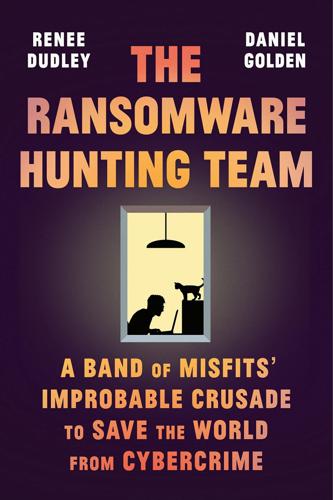
The Ransomware Hunting Team: A Band of Misfits' Improbable Crusade to Save the World From Cybercrime
by
Renee Dudley
and
Daniel Golden
Published 24 Oct 2022
On January 6, 2021, rioters urged on by Trump stormed the U.S. Capitol in a deadly attempt to disrupt the joint session of Congress assembled to formalize Biden’s victory. In a post that he “borrowed from a friend who stole from a friend,” Mark equated the assault on the citadel of American democracy to the Black Lives Matter protests that had swept the country the previous summer. In a comment on the post, one of Mark’s Facebook friends raised a question. “Any possibility antifa was involved today?” the friend wrote, referring to far-left protesters whom Trump had blamed for inciting violence. “Very good chance,” Mark replied.
…
Augenbaum, Scott Augustine, John Aunt Beast autism AXA Babuk backdoors bait files Ballod, Christopher Baltimore, Md. Baltimore City Information & Technology (BCIT) Baltimore County Public Schools (BCPS) banking Trojans Bates, Jim Baum, L. Frank Beazley Bendersky, Eduard Benge, Terry Beverwijk Biden, Joe Binary Defense bitcoin tumblers Bitdefender BitPaymer Black Lives Matter BlackMatter Blanch, Beth Hall Blanch, Bobby Blanch, Rita BleepingComputer; DDoS attack on; founding of; Maze and; TeslaCrypt and block ciphers BloNo (Bloomington-Normal metropolitan area) BloodDolly Blount, Joseph BlueVoyant Blundell Brown, Nicky Bonczoszek, Noel Botezatu, Bogdan botnets Bottoms, Keisha Lance Boyce Technologies, Inc.
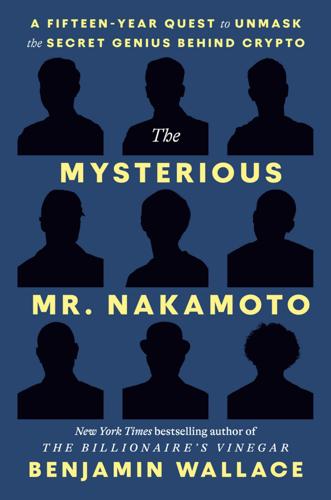
The Mysterious Mr. Nakamoto: A Fifteen-Year Quest to Unmask the Secret Genius Behind Crypto
by
Benjamin Wallace
Published 18 Mar 2025
In June 2020, after someone tweeted, “let’s not elevate him to sainthood just yet” about a Bitcoin YouTube influencer, Nakamoto usual suspect Adam Back had replied: “Maybe we should get mentally prepared to disown Satoshi. Nuke the nym from orbit, just to be safe.” Donald wasn’t the only Nakamoto candidate who could cause blowback. Nick Szabo, in recent years, had become an intemperate figure on Twitter, retweeting Tucker Carlson and raging about election fraud and Black Lives Matter. Eventually he’d left Twitter and started posting on Gab, an alt-right Twitter alternative where Donald, as “Jim,” also posted. “The decline of Nick Szabo,” Ethereum’s Vitalik Buterin had written, “has been truly sad to watch. We even named our 10^6 subunit after him…[tearful emoji].” Tim May, after the cypherpunks’ heyday, had lived alone with his cat—Nietzsche—and a large gun collection in the foothills of the Santa Cruz Mountains, becoming increasingly unhinged.
…
GO TO NOTE REFERENCE IN TEXT “let’s not elevate him to sainthood just yet”: @bergealex4, Twitter, June 12, 2020. GO TO NOTE REFERENCE IN TEXT “Nuke the nym from orbit”: @adam3us, Twitter, June 13, 2020. GO TO NOTE REFERENCE IN TEXT raging about election fraud and Black Lives Matter: @NickSzabo4, Twitter, November 5 and December 18, 2020. GO TO NOTE REFERENCE IN TEXT “The decline of Nick Szabo”: @VitalikButerin, Twitter, August 6, 2020. GO TO NOTE REFERENCE IN TEXT lived alone with his cat—Nietzsche: Andy Greenberg, This Machine Kills Secrets: Julian Assange, the Cypherpunks, and Their Fight to Empower Whistleblowers (New York: Plume, 2013), 56, 58, 82.
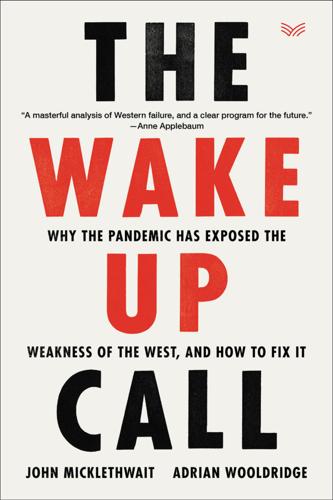
The Wake-Up Call: Why the Pandemic Has Exposed the Weakness of the West, and How to Fix It
by
John Micklethwait
and
Adrian Wooldridge
Published 1 Sep 2020
Mill, Autobiography, 156, Project Gutenberg e-book (first published 1874, this edition 2003). 19.Boyd Hilton, A Mad, Bad and Dangerous People? England 1783–1846 (Oxford: Oxford Univ. Press, 2006), 558. 20.Speech to the House of Commons, March 19, 1850; https://www.gladstoneslibrary.org/news/volume/a-statement-from-gladstones-library-black-lives-matter. 21.Gimson, Gimson’s Prime Ministers, 133–34. 22.William Ewart Gladstone (by H.C.G. Matthew), Dictionary of National Biography, 22:389. 23.Martin Daunton, State and Market in Victorian Britain: War, Welfare and Capitalism (Woodbridge: Boydell Press, 2008), 73–74. 24.A. V. Dicey, Lectures on the Relations Between Law and Opinion in England During the Nineteenth Century (London: Macmillan, 1920), 430–31. 25.Bertrand Russell, The Autobiography of Bertrand Russell, 1872–1914 (London: Allen & Unwin, 1967), 1:107. 26.Quoted in W.
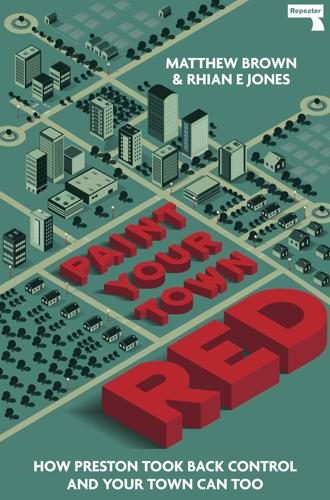
Paint Your Town Red
by
Matthew Brown
Published 14 Jun 2021
Like any necessary task neglected for so long, this won’t be easy. Current centres of political and economic power extend beyond the nation state, as does the urgent issue of climate change. The alter-globalisation and international protest movements of the past few decades, from the WTO protests in Seattle in 1999 to Occupy, Black Lives Matter, and the numerous movements against environmental destruction, have played an important role in making visible the crisis’ global scale. Additionally, the organisational capacity of working people has been disrupted by decades of direct attacks on trade unions and privatisation of industries, and by the shift in the labour market towards casualised and precarious employment and the gig economy, meaning that established ways of defending jobs and conditions are decreasingly effective, or even possible.3 However, as shown in the resurgence of autonomous and non-traditional unions like the IWW and IWGB, and their inclusion of many traditionally non-unionised sectors and workers including young people and migrants, these conditions can be met by adapting methods of organising and pressure rather than by giving up.
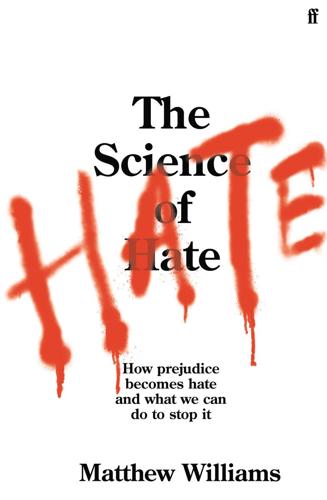
The Science of Hate: How Prejudice Becomes Hate and What We Can Do to Stop It
by
Matthew Williams
Published 23 Mar 2021
From this content it learned how to converse with humans online in a light-hearted way (improvisational comedians assisted in the design of its code). Tay began its first day with the tweet ‘hellooooooo world!!!’, followed with a raft of polite messages, avoiding political issues that were prevalent online, such as Black Lives Matter. But it wasn’t long before Tay gave up the cute and daft posts for the racist, xenophobic and anti-Semitic. Only sixteen hours after its launch Tay was taken offline. Microsoft claims its AI was targeted by Twitter trolls who fed it with hateful content, not helped by the seemingly unpoliced ‘repeat after me’ feature that enabled users to dictate the bot’s exact words, resulting in some of the most offensive tweets.
…
Abdallah, Abdalraouf, 1 Abedi, Salman, 1, 2, 3, 4 abortion, 1, 2 Abu Sayyaf Group, 1 abuse, 1, 2, 3, 4, 5 accelerants to hate, 1, 2, 3, 4, 5, 6, 7, 8, 9, 10 accelerationists, 1 addiction, 1, 2, 3, 4 Admiral Duncan bar, 1 adolescence, 1, 2, 3, 4, 5, 6, 7 advertising, 1, 2, 3, 4, 5 African Americans, 1, 2, 3, 4, 5, 6, 7 afterlife, 1, 2 age, 1, 2 aggression: brain and hate, 1, 2, 3, 4, 5; false alarms, 1; group threat, 1, 2, 3, 4, 5, 6; identity fusion, 1; mortality, 1; pyramid of hate, 1; trauma and containment, 1, 2 AI, see artificial intelligence Albright, Jonathan, 1 alcohol, 1, 2, 3, 4, 5, 6, 7, 8 algorithms: far-right hate, 1, 2, 3, 4; filter bubbles and bias, 1, 2; Google, 1, 2, 3; online hate speech, 1, 2, 3, 4, 5, 6; Tay, 1, 2; tipping point, 1, 2; YouTube, 1 Algotransparency.org, 1 Allport, Gordon, 1, 2, 3, 4 Al Noor Mosque, Christchurch, 1 al-Qaeda, 1, 2 Alternative für Deutschland (AfD), 1 alt-right: algorithms, 1, 2; brain and hate, 1; Charlottesville rally, 1, 2; counter-hate speech, 1; definition, 1n; Discord, 1; Facebook, 1, 2, 3; fake accounts, 1; filter bubbles, 1, 2; red-pilling, 1, 2; social media, 1, 2; Trump, 1, 2; YouTube, 1 Alzheimer’s disease, 1 American Crowbar Case, 1 American culture, 1 American Nazi Party, 1, 2 Amodio, David, 1n amygdala: brain and signs of prejudice, 1, 2; brain tumours, 1; disengaging the amygdala autopilot, 1; hate and feeling pain, 1, 2; and insula, 1; neuroscience of hate, 1n, 2, 3, 4; parts that edge us towards hate, 1; parts that process prejudice, 1; prepared versus learned amygdala responses, 1, 2; processing of ‘gut-deep’ hate, 1; recognising facial expressions, 1n, 2; stopping hate, 1, 2; trauma and containment, 1, 2; unlearning prejudiced threat detection, 1 anger, 1, 2, 3, 4, 5, 6, 7, 8 anonymity, 1, 2 anterior insula, 1n Antifa, 1, 2n, 3 anti-gay prejudice, 1, 2, 3, 4, 5, 6, 7, 8 anti-hate initiatives, 1, 2 antilocution, 1 anti-Muslim hate, 1, 2, 3, 4, 5, 6 anti-Semitism, 1, 2, 3, 4, 5, 6 anti-white hate crime, 1 Antonissen, Kirsten, 1, 2 anxiety: brain and hate, 1, 2, 3, 4; harm of hate speech, 1; intergroup contact, 1, 2; subcultures of hate, 1, 2; trauma and containment, 1; trigger events, 1, 2 Arab people, 1, 2, 3, 4, 5, 6 Arbery, Ahmaud, 1 Arkansas, 1, 2 artificial intelligence (AI), 1, 2, 3, 4 Asian Americans, 1, 2 Asian people, 1, 2, 3, 4 assault, 1, 2, 3 asylum seekers, 1, 2, 3, 4 Athens, 1 Atlanta attack, 1 Atran, Scott, 1, 2 attachment, 1 attention, 1, 2, 3 attitudes, 1, 2, 3, 4, 5, 6 Aung San Suu Kyi, 1 austerity, 1 Australia, 1 autism, 1 averages, 1, 2 avoidance, 1, 2, 3 Bali attack, 1 Bangladeshi people, 1 BBC (British Broadcasting Corporation), 1, 2, 3 behavioural sciences, 1, 2 behaviour change, 1, 2, 3 beliefs, 1, 2, 3 Bell, Sean, 1, 2 Berger, Luciana, 1 Berlin attacks, 1 bias: algorithms, 1; brain and hate, 1, 2, 3, 4, 5, 6, 7; filter bubbles, 1; Google Translate, 1; group threat, 1, 2, 3, 4; police racial bias, 1; predicting hate crime, 1; stopping hate, 1, 2, 3; unconscious bias, 1, 2, 3, 4 Bible, 1 Biden, Joe, 1 ‘Big Five’ personality traits, 1 biology, 1, 2, 3, 4, 5, 6, 7 Birstall, 1 bisexual people, 1 Black, Derek, 1, 2 Black, Don, 1, 2, 3 blackface, 1 Black Lives Matter, 1 Black Mirror, 1n black people: author’s brain and hate, 1, 2, 3, 4, 5; brain and signs of prejudice, 1, 2; brain parts that edge us towards hate, 1; brain parts that process prejudice, 1; Charlottesville rally, 1, 2; disengaging the amygdala autopilot, 1; Duggan shooting, 1; feeling pain, 1; Google searches, 1, 2; group threat, 1, 2, 3, 4; online hate speech, 1, 2, 3, 4; police relations, 1, 2; predicting hate crime, 1, 2; prepared versus learned amygdala responses, 1; pyramid of hate, 1, 2, 3n; recognising facial expressions, 1, 2; South Africa, 1; steps to stop hate, 1, 2, 3, 4; trauma and Franklin, 1, 2, 3, 4; trigger events, 1, 2, 3; unconscious bias, 1; unlearning prejudiced threat detection, 1, 2; white flight, 1 BNP, see British National Party Bolsonaro, Jair, 1 Bosnia and Herzegovina, 1, 2 bots, 1, 2, 3, 4, 5 Bowers, Robert Gregory, 1 boys, 1, 2 Bradford, 1 brain: ancient brains in modern world, 1; author’s brain and hate, 1; beyond the brain, 1; the brain and hate, 1; brain and signs of prejudice, 1; brain damage and tumours, 1, 2, 3, 4; brains and unconscious bias against ‘them’, 1; brain’s processing of ‘gut-deep’ hate, 1; defence mechanisms, 1; disengaging the amygdala autopilot, 1; figures, 1; finding a neuroscientist and brain scanner, 1; group threat detection, 1, 2; hacking the brain to hate, 1; hate and feeling pain, 1; locating hate in the brain, 1; neuroscience and big questions about hate, 1; overview, 1; parts that edge us towards hate, 1; parts that process prejudice, 1; prepared versus learned amygdala responses, 1; recognising facial expressions, 1; rest of the brain, 1; signs of prejudice, 1; steps to stop hate, 1, 2; tipping point to hate, 1, 2, 3, 4, 5; trauma and containment, 1, 2; unlearning prejudiced threat detection, 1; where neuroscience of hate falls down, 1 brain imaging: author’s brain and hate, 1; beyond the brain, 1; the brain and hate, 1; brain and signs of prejudice, 1, 2; brain injury, 1, 2; Diffusion MRI, 1; disengaging the amygdala autopilot, 1; finding a neuroscientist and brain scanner, 1; fusiform face area, 1; locating hate in the brain, 1; MEG, 1; neuroscience of hate, 1, 2, 3; parts that process prejudice, 1; prepared versus learned amygdala responses, 1; processing of ‘gut-deep’ hate, 1; subcultures of hate, 1, 2; unconscious bias, 1 brainwashing, 1, 2 Bray, Mark, 1n Brazil, 1, 2, 3 Breivik, Anders, 1, 2 Brexit, 1, 2, 3, 4n, 5, 6, 7, 8, 9 Brexit Party, 1, 2 Brick Lane, London, 1 Britain First, 1, 2 British identity, 1, 2 British National Party (BNP), 1, 2n, 3, 4, 5 Brixton, 1 Broadmoor Hospital, 1, 2 Brooker, Charlie, 1n Brooks, Rayshard, 1 Brown, Katie, 1, 2 Brown, Michael, 1, 2 Brussels attack, 1 Budapest Pride, 1 bullying, 1, 2 Bundy, Ted, 1 burka, 1, 2, 3 Burmese, 1 Bush, George W., 1 Byrd, James, Jr, 1 California, 1, 2n, 3 Caliskan, Aylin, 1 Cambridge Analytica, 1, 2 cancer, 1, 2 Cardiff University Brain Research Imaging Centre (CUBRIC), 1, 2, 3, 4 caregiving motivational system, 1 care homes, 1, 2 Casablanca, 1 cascade effect, 1, 2 categorisation, 1, 2, 3, 4 Catholics, 1 Caucasian Crew, 1 causality, 1, 2 celebrities, 1, 2, 3, 4 censorship, 1, 2 Centennial Olympic Park, Atlanta, 1 Centers for Disease Control (CDC), 1 change blindness, 1 charity, 1, 2, 3 Charlottesville rally, 1, 2, 3n, 4 chatbots, 1, 2, 3 Chauvin, Derek, 1 Chelmsford, 1 Chicago, 1 childhood: attachment issues, 1; child abuse, 1, 2, 3; child grooming, 1; child play, 1; failures of containment, 1, 2, 3, 4; group threat, 1, 2; intergroup contact, 1, 2; learned stereotypes, 1; online hate speech, 1, 2; predicting hate crime, 1; trauma and containment, 1, 2, 3, 4, 5, 6, 7, 8, 9, 10; trigger events, 1, 2; understanding the ‘average’ hate criminal, 1; understanding the ‘exceptional’ hate offender, 1, 2, 3 China, 1, 2, 3, 4 Chinese people, 1, 2, 3 ‘Chinese virus,’ 1, 2 Cho, John, 1 Christchurch mosque attack, 1 Christianity, 1, 2, 3 cinema, 1 citizen journalism, 1 civilising process, 1 civil rights, 1, 2, 3, 4 class, 1, 2 cleaning, 1 climate change, 1, 2 Clinton, Hillary, 1, 2 cognitive behavioural therapy, 1 cognitive dissonance, 1 Cohen, Florette, 1, 2 Cold War, 1 collective humiliation, 1 collective quests for significance, 1, 2 collective trauma, 1, 2 colonialism, 1n, 2 Combat 1, 2 comedies, 1, 2, 3 Communications Acts, 1, 2 compassion, 1, 2, 3 competition, 1, 2, 3, 4, 5, 6, 7, 8 confirmation bias, 1 conflict, 1, 2, 3, 4 conflict resolution, 1, 2, 3, 4, 5 Connectome, 1 Conroy, Jeffrey, 1 Conservative Party, 1, 2, 3 conspiracy theories, 1, 2, 3 contact with others, 1, 2 containment: failures of, 1; hate as container of unresolved trauma, 1; understanding the ‘exceptional’ hate offender, 1, 2, 3 content moderation, 1, 2, 3 context, 1, 2, 3 Convention of Cybercrime, 1 cooperation, 1, 2, 3, 4, 5, 6 Copeland, David, 1, 2, 3, 4, 5, 6, 7 coping mechanisms, 1, 2, 3, 4, 5, 6, 7 Cordoba House (‘Ground Zero mosque’), 1 correction for multiple comparisons, 1, 2n ‘corrective rape’, 1, 2 cortisol, 1 Council of Conservative Citizens, 1n counter-hate speech, 1, 2, 3, 4 courts, 1, 2, 3, 4, 5, 6 COVID-19 pandemic, 1, 2, 3 Cox, Jo, 1, 2, 3 Criado Perez, Caroline, 1 crime, 1, 2, 3, 4, 5, 6, 7 Crime and Disorder Act 1998, 1n crime recording, 1, 2, 3, 4 crime reporting, 1, 2, 3, 4, 5, 6, 7 Crime Survey for England and Wales (CSEW), 1 criminal justice, 1, 2, 3 Criminal Justice Act, 1, 2n criminal prosecution, 1, 2 criminology, 1, 2, 3, 4, 5, 6 cross-categorisation, 1 cross-race or same-race effect, 1 Crusius, Patrick, 1, 2 CUBRIC (Cardiff University Brain Research Imaging Centre), 1, 2, 3, 4 cultural ‘feeding’, 1, 2, 3, 4, 5 cultural worldviews, 1, 2, 3, 4, 5, 6, 7 culture: definitions, 1; group threat, 1, 2, 3; steps to stop hate, 1, 2, 3; tipping point, 1, 2, 3, 4, 5; unlearning prejudiced threat detection, 1 culture machine, 1, 2, 3, 4, 5 culture wars, 1 Curry and Chips, 1 cybercrime, 1 dACC, see dorsal anterior cingulate cortex Daily Mail, 1, 2 Dailymotion, 1 Daily Stormer, 1, 2n Daley, Tom, 1, 2 Darfur, 1 dark matter, 1 death: events that remind us of our mortality, 1; newspapers, 1; predicting hate crime, 1; religion and hate, 1, 2; subcultures of hate, 1, 2; trigger events, 1, 2 death penalty, 1, 2 death threats, 1 decategorisation, 1 De Dreu, Carsten, 1, 2, 3, 4 deep learning, 1, 2 defence mechanisms, 1 defensive haters, 1, 2 dehumanisation, 1, 2, 3, 4, 5, 6 deindividuation, 1, 2 deindustrialisation, 1, 2, 3, 4 Democrats, 1, 2, 3 Denny, Reginald, 1 DeSalvo, Albert (the Boston Strangler), 1 desegregation, 1, 2, 3 Desmond, Matthew, 1 Dewsbury, 1, 2, 3 Diffusion Magnetic Resonance Imaging (Diffusion MRI), 1, 2 diminished responsibility, 1, 2 Director of Public Prosecutions (DPP), 1 disability: brain and hate, 1, 2; group threat, 1, 2, 3, 4, 5, 6; intergroup contact, 1; Japan care home, 1, 2; online hate speech, 1; profiling the hater, 1; suppressing prejudice, 1; victim perception, 1n Discord, 1, 2, 3, 4 discrimination: brain and hate, 1, 2; comedy programmes, 1; Google searches, 1; Japan laws, 1; preference for ingroup, 1; pyramid of hate, 1, 2, 3; questioning prejudgements, 1; trigger events, 1, 2, 3 disgust: brain and hate, 1, 2, 3, 4, 5, 6; group threat detection, 1, 2, 3; ‘gut-deep’ hate, 1, 2; Japan care home, 1; what it means to hate, 1, 2 disinformation, 1, 2, 3 displacement, 1, 2 diversity, 1, 2, 3 dlPFC, see dorsolateral prefrontal cortex domestic violence, 1, 2, 3, 4, 5, 6, 7, 8, 9, 10 Doran, John, 1, 2, 3 dorsal anterior cingulate cortex (dACC), 1, 2, 3n, 4, 5, 6, 7, 8, 9 dorsolateral prefrontal cortex (dlPFC), 1n, 2, 3 Douglas, Mary, Purity and Danger, 1 drag queens, 1 drugs, 1, 2, 3, 4, 5, 6, 7, 8, 9 Duggan, Mark, 1 Duke, David, 1 Dumit, Joe, Picturing Personhood, 1 Durkheim, Emile, 1 Dykes, Andrea, 1 Earnest, John T., 1 Eastern Europeans, 1, 2, 3 Ebrahimi, Bijan, 1, 2, 3, 4, 5, 6 echo chambers, 1, 2n economy, 1, 2, 3, 4, 5, 6 EDL, see English Defence League education, 1, 2, 3, 4 Edwards, G., 1 8chan, 1, 2 elections, 1, 2, 3, 4, 5, 6 electroencephalography, 1n elites, 1 ELIZA (computer program), 1 The Ellen Show, 1 El Paso shooting, 1 Elrod, Terry, 1 Emancipation Park, Charlottesville, 1 Emanuel African Methodist Church, Charleston, 1 emotions: brain and hate, 1, 2, 3, 4n, 5, 6, 7, 8, 9; group threat, 1; subcultures of hate, 1; trigger events and mortality, 1; what it means to hate, 1, 2, 3, 4 empathy: brain and hate, 1, 2, 3, 4, 5, 6; feeling hate together, 1; group threat, 1, 2; steps to stop hate, 1, 2, 3; subcultures of hate, 1; trauma and containment, 1 employment, 1, 2, 3, 4, 5, 6, 7 English Defence League (EDL), 1, 2n, 3 epilepsy, 1, 2, 3, 4, 5 Epstein, Robert, 1 equality, 1, 2 Essex, 1 ethnicity, 1, 2n, 3, 4 ethnic minorities, 1, 2, 3, 4, 5, 6 ethnocentrism, 1 EU, see European Union European Commission, 1, 2 European Digital Services Act, 1 European Parliament, 1, 2 European Social Survey, 1 European Union (EU): Brexit referendum, 1, 2, 3, 4n, 5; Facebook misinformation, 1; group threat, 1, 2; online hate speech, 1, 2, 3; trigger events, 1 Eurovision, 1 evidence-based hate crime, 1 evolution, 1, 2, 3, 4, 5, 6, 7, 8 executive control area: brain and hate, 1, 2, 3, 4, 5, 6, 7, 8; disengaging the amygdala autopilot, 1, 2; extremism, 1; recognising false alarms, 1; trauma and containment, 1; trigger events, 1 exogenous shocks, 1 expert opinion, 1 extreme right, 1, 2, 3, 4, 5 extremism: Charlottesville and redpilling, 1, 2; feeling hate together, 1; online hate speech, 1; perceiving versus proving hate, 1; quest for significance, 1, 2, 3; subcultures of hate, 1, 2, 3, 4, 5, 6, 7; trauma and containment, 1; trigger events, 1, 2, 3 Facebook: algorithms, 1, 2; Charlottesville rally, 1, 2; Christchurch mosque attack, 1; far-right hate, 1, 2, 3, 4, 5; filter bubbles, 1, 2; how much online hate speech, 1, 2; Myanmar genocide, 1; online hate and offline harm, 1, 2, 3; redpilling, 1; stopping online hate speech, 1, 2, 3, 4 facial expression, 1, 2, 3, 4 faith, 1, 2 fake accounts, 1, 2; see also bots fake news, 1, 2, 3, 4 false alarms, 1, 2, 3 Farage, Nigel, 1, 2 far left, 1n, 2, 3, 4 Farook, Syed Rizwan, 1 far right: algorithms, 1, 2, 3, 4; brain injury, 1; Charlottesville rally, 1, 2, 3n, 4; COVID-19 pandemic, 1, 2; Facebook, 1, 2, 3, 4, 5; filter bubbles, 1, 2; gateway sites, 1; group threat, 1, 2; red-pilling, 1; rise of, 1; stopping online hate speech, 1; subcultures of hate, 1, 2, 3, 4, 5; terror attacks, 1, 2, 3; tipping point, 1, 2; trauma and containment, 1, 2, 3, 4n; trigger events, 1, 2; YouTube, 1 fathers, 1, 2, 3 FBI, see Federal Bureau of Investigation fear: brain and hate, 1, 2, 3, 4, 5, 6, 7; feeling hate together, 1; group threat, 1, 2, 3, 4, 5; mortality, 1; online hate speech, 1, 2, 3; steps to stop hate, 1, 2; trauma and containment, 1, 2; trigger events, 1, 2, 3 Federal Bureau of Investigation (FBI), 1, 2, 3, 4, 5, 6, 7 Federation of American Immigration Reform, 1 Ferguson, Missouri, 1 Festinger, Leon, 1 fiction, 1 Fields, Ted, 1 50 Cent Army, 1 ‘fight or flight’ response, 1, 2, 3 films, 1, 2 filter bubbles, 1, 2, 3, 4 Finland, 1, 2, 3, 4, 5, 6 Finsbury Park mosque attack, 1, 2, 3 first responders, 1 Fiske, Susan, 1 Five Star Movement, 1 flashbacks, 1 Florida, 1, 2 Floyd, George, 1, 2, 3 Flynt, Larry, 1 fMRI (functional Magnetic Resonance Imaging), 1, 2, 3, 4, 5, 6, 7 football, 1, 2, 3, 4, 5 football hooligans, 1, 2 Forever Welcome, 1 4chan, 1, 2 Fox News, 1, 2 Franklin, Benjamin, 1 Franklin, Joseph Paul, 1, 2, 3, 4, 5, 6, 7, 8 Fransen, Jayda, 1 freedom fighters, 1, 2 freedom of speech, 1, 2, 3, 4, 5, 6 frustration, 1, 2, 3, 4 functional Magnetic Resonance Imaging (fMRI), 1, 2, 3, 4, 5, 6, 7 fundamentalism, 1, 2 fusiform face area, 1 fusion, see identity fusion Gab, 1 Gadd, David, 1, 2n, 3, 4 Gaddafi, Muammar, 1, 2 Gage, Phineas, 1, 2 galvanic skin responses, 1 Gamergate, 1 gateway sites, 1 gay people: author’s experience, 1, 2, 3; brain and hate, 1, 2; Copeland attacks, 1, 2; COVID-19 pandemic, 1; filter bubbles, 1; gay laws, 1; gay marriage, 1, 2, 3; group associations, 1; group threat, 1, 2, 3, 4, 5; hate counts, 1, 2, 3, 4; physical attacks, 1, 2; profiling the hater, 1; Russia, 1, 2, 3, 4, 5; Section 1, 2, 3, 4; steps to stop hate, 1, 2, 3; trigger events, 1, 2; why online hate speech hurts, 1; see also LGBTQ+ people gay rights, 1, 2, 3, 4 gender, 1, 2, 3, 4, 5, 6, 7 Generation Identity, 1 Generation Z, 1, 2 genetics, 1n, 2, 3 genocide, 1, 2, 3, 4, 5, 6 Georgia (country), 1 Georgia, US, 1, 2, 3, 4 Germany, 1, 2, 3, 4, 5, 6, 7 Gilead, Michael, 1 ginger people, 1 girls, and online hate speech, 1 Gladwell, Malcolm, 1 Global Project Against Hate and Extremism, 1 glucocorticoids, 1, 2 God, 1, 2 God’s Will, 1, 2 Goebbels, Joseph, 1 Google, 1, 2, 3, 4, 5, 6, 7, 8 Google+, 1 Google Translate, 1 goth identity, 1, 2, 3, 4 governments, 1, 2, 3, 4, 5, 6 Grant, Oscar, 1 gravitational waves, 1 Great Recession (2007–9), 1 Great Replacement conspiracy theory, 1 Greece, 1, 2 Greenberg, Jeff, 1, 2, 3 Greene, Robert, 1 grey matter, 1 Grillot, Ian, 1, 2 Grodzins, Morton, 1 grooming, 1, 2, 3 ‘Ground Zero mosque’ (Cordoba House), 1 GroupMe, 1 groups: ancient brains in modern world, 1; brain and hate, 1, 2, 3, 4; childhood, 1; feeling hate together, 1; foundations of prejudice, 1; group threat and hate, 1; identity fusion, 1, 2, 3; intergroup hate, 1; pyramid of hate, 1; reasons for hate offending, 1; steps to stop hate, 1, 2; tipping point, 1, 2, 3, 4; warrior psychology, 1, 2, 3; what it means to hate, 1, 2 group threat, 1; beyond threat, 1; Bijan as the threatening racial other, 1; context and threat, 1; cultural machine, group threat and stereotypes, 1; evolution of group threat detection, 1; human biology and threat, 1; neutralising the perception of threat, 1; overview, 1; society, competition and threat, 1; threat in their own words, 1 guilt, 1, 2, 3, 4 guns, 1, 2 ‘gut-deep’ hate, 1, 2, 3, 4 Haines, Matt, 1 Haka, 1 Halle Berry neuron, 1, 2 harassment, 1, 2, 3, 4, 5 harm of hate, 1, 2, 3, 4, 5, 6, 7 Harris, Brendan, 1 Harris, Lasana, 1 Harris, Lovell, 1, 2, 3, 4 hate: author’s brain and hate, 1; the brain and hate, 1; definitions, 1, 2; feeling hate together, 1; foundations of prejudice and hate, 1, 2, 3; group threat and hate, 1; ‘gut-deep’ hate, 1, 2; hate counts, 1; hate in word and deed, 1; profiling the hater, 1; pyramid of hate, 1; rise of the bots and trolls, 1; seven steps to stop hate, 1; subcultures of hate, 1; tipping point from prejudice to hate, 1; trauma, containment and hate, 1; trigger events and ebb and flow of hate, 1; what it means to hate, 1 hate counts, 1; criminalising hate, 1; how they count, 1; overview, 1; perceiving versus proving hate, 1; police and hate, 1; rising hate count, 1; ‘signal’ hate acts and criminalisation, 1; Sophie Lancaster, 1; warped world of hate, 1 hate crime: author’s experience, 1, 2, 3; brain and hate, 1, 2, 3, 4, 5; definitions, 1; events and hate online, 1; events and hate on the streets, 1, 2; the ‘exceptional’ hate criminal, 1; far-right hate, 1, 2, 3; foundations of prejudice and hate, 1, 2, 3, 4; group threat, 1, 2, 3, 4, 5, 6, 7, 8; hate counts, 1, 2, 3, 4, 5; laws, 1n, 2, 3, 4, 5; number of crimes, 1, 2; online hate speech, 1, 2, 3, 4; predicting hate crime, 1; profiling the hater, 1; steps to stop hate, 1, 2, 3; trauma and containment, 1, 2, 3, 4; trigger events, 1, 2, 3, 4, 5, 6; understanding the ‘average’ hate criminal, 1; understanding the ‘exceptional’ hate offender, 1; what it means to hate, 1, 2, 3 hate groups, 1, 2, 3, 4, 5 hate in word and deed, 1; algorithmic far right, 1; Charlottesville rally, 1, 2, 3n, 4; extreme filter bubbles, 1; game changer for the far right, 1; gateway sites, 1; overview, 1; ‘real life effort post’ and Christchurch, 1; red-pilling, 1 HateLab, 1, 2, 3, 4, 5 hate speech: far-right hate, 1, 2, 3; filter bubbles and bias, 1; harm of, 1; how much online hate speech, 1; Japan laws, 1; pyramid of hate, 1; stopping online hate speech, 1; Tay chatbot, 1; trigger events, 1, 2, 3; why online hate speech hurts, 1 hate studies, 1, 2 ‘hazing’ practices, 1 health, 1, 2, 3, 4 Henderson, Russell, 1 Herbert, Ryan, 1 Hewstone, Miles, 1 Heyer, Heather, 1 Hinduism, 1, 2 hippocampus, 1, 2, 3, 4 history of offender, 1 Hitler, Adolf, 1, 2, 3, 4, 5, 6, 7 HIV/AIDS, 1, 2, 3, 4, 5, 6, 7 hollow mask illusion, 1, 2 Hollywood, 1, 2 Holocaust, 1, 2, 3, 4 Homicide Act, 1n homophobia: author’s experience, 1, 2, 3, 4; brain and hate, 1, 2, 3; evidence-based hate crime, 1; federal law, 1; jokes, 1; online hate speech, 1, 2; Russia, 1, 2; Shepard murder, 1; South Africa, 1; trauma and containment, 1; victim perception of motivation, 1n Homo sapiens, 1 homosexuality: author’s experience, 1; online hate speech, 1; policing, 1; questioning prejudgements, 1; Russia, 1, 2; trauma and containment, 1, 2; see also gay people hooligans, 1, 2 Horace, 1 hormones, 1, 2, 3 hot emotions, 1 hot-sauce study, 1, 2 housing, 1, 2, 3, 4, 5, 6 Huddersfield child grooming, 1 human rights, 1, 2, 3 humiliation, 1, 2, 3, 4, 5, 6 humour, 1, 2 Hungary, 1 hunter-gatherers, 1n, 2 Hustler, 1 IAT, see Implicit Association Test identity: author’s experience of attack, 1; British identity, 1, 2; Charlottesville rally, 1, 2; children’s ingroups, 1; group threat, 1, 2; online hate speech, 1, 2, 3, 4; steps to stop hate, 1, 2 identity fusion: fusion and hateful murder, 1; fusion and hateful violence, 1; fusion and self-sacrifice in the name of hate, 1; generosity towards the group, 1; tipping point, 1, 2; warrior psychology, 1, 2, 3 ideology, 1, 2, 3, 4 illegal hate speech, 1, 2, 3, 4 illocutionary speech, 1 imaging, see brain imaging immigration: Forever Welcome, 1; group threat, 1, 2, 3, 4, 5, 6, 7; hate counts, 1n, 2; HateLab Brexit study, 1; identity fusion, 1; intergroup contact, 1; negative stereotypes, 1; online hate speech, 1; Purinton, 1, 2; trauma and containment, 1, 2, 3; trigger events, 1, 2n, 3, 4, 5, 6, 7; YouTube algorithms, 1 immortality, 1, 2 Implicit Association Test (IAT), 1, 2, 3, 4, 5, 6, 7, 8, 9 implicit prejudice: author’s brain and hate, 1, 2, 3, 4; brain and hate, 1, 2, 3, 4, 5, 6; online hate speech, 1, 2 India, 1 Indonesia, 1 Infowars, 1, 2 Ingersoll, Karma, 1 ingroup: brain and hate, 1, 2, 3, 4; child play, 1; group threat, 1, 2, 3, 4, 5, 6, 7; HateLab Brexit study, 1; identity fusion, 1, 2; pyramid of hate, 1; reasons for hate offending, 1; trigger events, 1, 2, 3; what it means to hate, 1, 2, 3, 4, 5 Instagram, 1, 2, 3 Institute for Strategic Dialogue, 1 institutional racism, 1 instrumental crimes, 1 insula: brain and signs of prejudice, 1, 2, 3; facial expressions, 1, 2; fusiform face area, 1; hacking the brain to hate, 1; hate and feeling pain, 1; neuroscience of hate, 1n, 2, 3, 4, 5; parts that edge us towards hate, 1; parts that process prejudice, 1; processing of ‘gut-deep’ hate, 1, 2 Integrated Threat Theory (ITT), 1, 2, 3 integration, 1, 2, 3, 4 intergroup contact, 1, 2, 3 Intergroup Contact Theory, 1, 2, 3 intergroup hate, 1, 2, 3, 4 internet: algorithms, 1, 2; chatbots, 1; counterhate speech, 1; COVID-19 pandemic, 1; far-right hate, 1, 2, 3, 4, 5, 6, 7; filter bubbles, 1, 2, 3; Google searches, 1; hate speech harm, 1; how much online hate speech, 1; online news, 1; reasons for hate offending, 1; rise of the bots and trolls, 1; stopping online hate speech, 1; tipping point, 1, 2, 3; training the machine to count hate, 1; why online hate speech hurts, 1 interracial relations, 1, 2, 3, 4 intolerance, 1, 2 Iranian bots, 1 Iraq, 1 Irish Republican Army (IRA), 1 ISIS, 1, 2, 3, 4, 5, 6, 7, 8, 9 Islam: group threat, 1; online hate speech, 1, 2, 3, 4, 5; steps to stop hate, 1, 2, 3; subcultures of hate, 1, 2, 3, 4; trigger events, 1, 2, 3 Islamism: group threat, 1; online hate speech, 1, 2, 3, 4; profiling the hater, 1; subcultures of hate, 1, 2, 3; trigger events, 1, 2, 3 Islamophobia, 1, 2, 3, 4 Israel, 1, 2, 3 Italy, 1, 2 ITT, see Integrated Threat Theory James, Lee, 1, 2, 3, 4, 5, 6 Japan, 1, 2, 3 Jasko, Katarzyna, 1 Jefferson, Thomas, 1 Jenny Lives with Eric and Martin, 1 Jewish people: COVID-19 pandemic, 1, 2; far-right hate, 1, 2, 3, 4, 5; filter bubbles, 1; Google searches, 1, 2; group threat, 1; Nazism, 1, 2; negative stereotypes, 1 2 online hate speech, 1; pyramid of hate, 1; questioning prejudgements, 1; ritual washing, 1; subcultures of hate, 1, 2; trauma and Franklin, 1, 2, 3 jihad, 1, 2, 3, 4, 5 jokes, 1, 2, 3, 4, 5, 6, 7 Jones, Alex, 1 Jones, Terry, 1 Josephson junction, 1 Judaism, 1; see also Jewish people Jude, Frank, Jr, 1, 2, 3, 4, 5 Kansas, 1 Kerry, John, 1 Kik, 1 King, Gary, 1 King, Martin Luther, Jr, 1, 2 King, Rodney, 1, 2, 3 King, Ryan, 1 Kirklees, 1, 2 KKK, see Ku Klux Klan Kuchibhotla, Srinivas, 1, 2, 3, 4 Kuchibhotla, Sunayana, 1, 2 Ku Klux Klan (KKK), 1, 2, 3n, 4, 5, 6, 7 Labour Party, 1, 2, 3 Lancaster, Sophie, 1, 2 language, 1, 2, 3, 4, 5, 6, 7 LAPD (Los Angeles Police Department), 1 Lapshyn, Pavlo, 1 Lashkar-e-Taiba, 1 Las Vegas shooting, 1, 2 Latinx people, 1, 2, 3, 4, 5, 6, 7 law: brain and hate, 1, 2, 3; criminalising hate, 1; hate counts, 1, 2, 3; Kansas shooting, 1; limited laws, 1; online hate speech, 1; pyramid of hate, 1 Law Commission, 1 Lawrence, Stephen, 1 learned fears, 1, 2, 3 Leave.EU campaign, 1, 2 Leave voters, 1, 2, 3n Lee, Robert E., 1, 2, 3 left orbitofrontal cortex, 1n, 2n Legewie, Joscha, 1, 2, 3, 4 lesbians, 1, 2 Levin, Jack, 1 LGBTQ+ people, 1, 2, 3, 4, 5, 6, 7, 8, 9, 10, 11, 12, 13, 14, 15, 16, 17; see also gay people LIB, see Linguistic Intergroup Bias test Liberman, Nira, 1 Liberty Park, Salt Lake City, 1, 2 Libya, 1, 2, 3, 4 Light, John, 1 Linguistic Intergroup Bias (LIB) test, 1 Liverpool, 1, 2 Livingstone, Ken, 1, 2 Loja, Angel, 1 London: author’s experience of attack, 1; Copeland nail bombing, 1, 2; Duggan shooting, 1; far-right hate, 1; group threat, 1, 2, 3; online hate speech, 1, 2; Rigby attack, 1; terror attacks, 1, 2, 3, 4, 5, 6 London Bridge attack, 1, 2, 3 London School of Economics, 1 ‘lone wolf’ terrorists, 1, 2, 3, 4 long-term memory, 1, 2, 3, 4 Loomer, Laura, 1 Los Angeles, 1 loss: group threat, 1; subcultures of hate, 1, 2, 3, 4; tipping point, 1; trauma and containment, 1, 2, 3, 4, 5 love, 1, 2 Love Thy Neighbour, 1 Lucero, Marcelo, 1, 2 Luqman, Shehzad, 1 ‘Macbeth effect’, 1 machine learning, 1 Madasani, Alok, 1, 2, 3 Madrid attack, 1, 2 Magnetic Resonance Imaging (MRI): Diffusion MRI, 1, 2; functional MRI, 1, 2, 3, 4, 5, 6, 7 magnetoencephalography (MEG), 1, 2, 3 Maldon, 1 Malik, Tashfeen, 1 Maltby, Robert, 1, 2 Manchester, 1, 2 Manchester Arena attack, 1, 2, 3, 4, 5, 6 marginalisation, 1, 2 Martin, David, 1 Martin, Trayvon, 1, 2 MartinLutherKing.org, 1, 2 martyrdom, 1, 2, 3, 4n masculinity, 1, 2, 3, 4, 5 The Matrix, 1 Matthew Shepard and James Byrd Jr Hate Crimes Prevention Act, 1n, 2n Matz, Sandra, 1 Mauritius, 1 McCain, John, 1 McDade, Tony, 1 McDevitt, Jack, Levin McKinney, Aaron, 1 McMichael, Gregory, 1 McMichael, Travis, 1 media: far-right hate, 1, 2; group threat, 1, 2, 3; steps to stop hate, 1, 2, 3, 4, 5, 6; stereotypes in, 1, 2; subcultures of hate, 1; trigger events, 1 Meechan, Mark, 1 MEG (magnetoencephalography), 1, 2, 3 memory, 1, 2, 3, 4, 5, 6, 7 men, and online hate speech, 1 men’s rights, 1 mental illness, 1, 2, 3, 4, 5, 6 mentalising, 1, 2, 3 meta-analysis, 1 Metropolitan Police, 1 Mexican people, 1, 2, 3, 4 micro-aggressions, 1, 2n, 3, 4, 5, 6 micro-events, 1 Microsemi, 1n Microsoft, 1, 2, 3, 4, 5, 6 micro-targeting, 1, 2 Middle East, 1, 2 migration, 1, 2, 3, 4, 5, 6, 7; see also immigration Milgram, Stanley, 1 military, 1 millennials, 1 Milligan, Spike, 1 Milwaukee, 1, 2, 3 minimal groups, 1 Minneapolis, 1, 2, 3 minority groups: far-right hate, 1, 2; group threat, 1, 2, 3, 4, 5; police reporting, 1; questioning prejudgements, 1; trauma and containment, 1; trigger events, 1, 2 misinformation, 1, 2, 3, 4, 5, 6 mission haters, 1, 2, 3 mobile phones, 1, 2, 3 moderation of content, 1, 2, 3 Moore, Nik, 1 Moore, Thomas, 1 Moores, Manizhah, 1 Moore’s Ford lynching, 1 Moradi, Dr Zargol, 1, 2, 3, 4, 5, 6 Moral Choice Dilemma tasks, 1, 2, 3 moral cleansing, 1, 2, 3 moral dimension, 1, 2, 3, 4 moral outrage, 1, 2, 3, 4, 5 Moroccan people, 1, 2 mortality, 1, 2, 3 mortality salience, 1, 2, 3, 4, 5 Moscow, 1 mosques, 1, 2, 3, 4, 5, 6, 7 Moss Side Blood, 1 mothers, 1, 2, 3, 4, 5, 6 motivation, 1n, 2, 3, 4, 5, 6 Mphiti, Thato, 1 MRI, see Magnetic Resonance Imaging Muamba, Fabrice, 1 multiculturalism, 1, 2, 3, 4 murder: brain injury, 1, 2; group threat, 1, 2, 3; hate counts, 1; identity fusion and hateful murder, 1; police and hate, 1, 2; profiling the hater, 1; trauma and containment, 1, 2, 3, 4, 5 Murdered for Being Different, 1 music, 1, 2, 3 Muslims: COVID-19 pandemic, 1; far-right hate, 1, 2, 3, 4; Google searches, 1; group threat, 1, 2, 3, 4, 5, 6; negative stereotypes, 1; online hate speech, 1, 2; profiling the hater, 1, 2; Salah effect, 1; subcultures of hate, 1, 2, 3; trigger events, 1, 2, 3, 4, 5; and Trump, 1, 2, 3, 4n, 5, 6n Mvubu, Themba, 1 Myanmar, 1, 2 Myatt, David, 1 Nandi, Dr Alita, 1 National Action, 1 National Consortium for the Study of Terrorism and Responses to Terrorism, 1 national crime victimisation surveys, 1, 2 National Front, 1, 2, 3 nationalism, 1, 2 National Socialist Movement, 1, 2, 3, 4 natural experiments, 1, 2 Nature: Neuroscience, 1 nature vs nurture debate, 1 Nazism, 1, 2, 3, 4, 5, 6, 7, 8 NCVS (National Crime Victimisation Survey), 1, 2 negative stereotypes: brain and hate, 1, 2; feeling hate together, 1, 2; group threat, 1, 2, 3, 4, 5, 6; steps to stop hate, 1, 2, 3, 4, 5; tipping point, 1 Nehlen, Paul, 1 neo-Nazis, 1n, 2, 3, 4, 5, 6 Netherlands, 1, 2 Netzwerkdurchsetzungsgesetz (NetzDG) law, 1 neuroimaging, see brain imaging neurons, 1, 2, 3, 4, 5, 6, 7 neuroscience, 1, 2, 3, 4, 5, 6, 7, 8, 9 Newark, 1, 2 news, 1, 2, 3, 4, 5, 6, 7 newspapers, 1, 2, 3, 4 New York City, 1, 2, 3, 4, 5, 6 New York Police Department (NYPD), 1 New York Times, 1, 2 New Zealand, 1 n-grams, 1 Nimmo, John, 1 9/11 attacks, 1, 2, 3, 4, 5, 6, 7 911 emergency calls, 1 Nogwaza, Noxolo, 1 non-independence error, 1, 2n Al Noor Mosque, Christchurch, 1 Northern Ireland, 1 NWA, 1 NYPD (New York Police Department), 1 Obama, Barack, 1n, 2, 3, 4, 5, 6 Occupy Paedophilia, 1 ODIHR, see Office for Democratic Institutions and Human Rights Ofcom, 1 offence, 1, 2, 3, 4 Office for Democratic Institutions and Human Rights (ODIHR), 1, 2 Office for Security and Counter Terrorism, 1 office workers, 1 offline harm, 1, 2 Oklahoma City, 1 O’Mahoney, Bernard, 1 online hate speech: author’s experience, 1; COVID-19 pandemic, 1; far-right hate, 1, 2, 3, 4, 5; hate speech harm, 1; how much online hate speech, 1; individual’s role, 1; law’s role, 1; social media companies’ role, 1; steps to stop hate, 1; tipping point, 1, 2; training the machine to count hate, 1; trigger events, 1 Ono, Kazuya, 1 optical illusions, 1 Organization for Human Brain Mapping conference, 1 Orlando attack, 1 Orwell, George, Nineteen Eighty-Four, 1 Osborne, Darren, 1 ‘other’, 1, 2, 3, 4, 5, 6 Ottoman Empire, 1 outgroup: author’s brain and hate, 1, 2, 3; brain and hate, 1, 2, 3, 4, 5, 6, 7; child interaction and play, 1, 2; evolution of group threat detection, 1; feeling hate together, 1; group threat, 1, 2, 3, 4, 5, 6; ‘gut-deep’ hate, 1; HateLab Brexit study, 1; human biology and threat, 1; identity fusion, 1; prejudice formation, 1; profiling the hater, 1; push/pull factor, 1; pyramid of hate, 1; society, competition and threat, 1; steps to stop hate, 1, 2; tipping point, 1; trauma and containment, 1, 2, 3, 4, 5; trigger events, 1, 2, 3, 4, 5, 6, 7, 8 outliers, 1 Overton window, 1, 2, 3, 4 oxytocin, 1, 2, 3, 4 Paddock, Stephen, 1 Paddy’s Pub, Bali, 1 paedophilia, 1, 2, 3, 4, 5 page rank, 1 pain, 1, 2, 3, 4, 5, 6, 7 Pakistani people, 1, 2, 3, 4, 5 Palestine, 1 pandemics, 1, 2, 3, 4 Papua New Guinea, 1, 2, 3 paranoid schizophrenia, 1, 2 parents: caregiving, 1; subcultures of hate, 1; trauma and containment, 1, 2, 3, 4, 5; trigger events, 1, 2, 3 Paris attack, 1 Parsons Green attack, 1, 2 past experience: the ‘average’ hate criminal, 1; the ‘exceptional’ hate criminal, 1; trauma and containment, 1 perception-based hate crime, 1, 2 perception of threat, 1, 2, 3, 4, 5 perpetrators, 1, 2 personal contact, 1, 2 personality, 1, 2, 3 personality disorder, 1, 2 personal safety, 1, 2 personal significance, 1 perspective taking, 1, 2 PFC, see prefrontal cortex Philadelphia Police Department, 1 Philippines, 1 physical attacks, 1, 2, 3, 4, 5, 6, 7, 8 play, 1 Poland, 1, 2, 3 polarisation, 1, 2, 3, 4, 5 police: brain and hate, 1, 2; Duggan shooting, 1; group threat, 1, 2, 3; and hate, 1; NYPD racial bias, 1; online hate speech, 1, 2, 3, 4; perceiving versus proving hate, 1; police brutality, 1, 2, 3, 4; predicting hate crime, 1; recording crime, 1, 2, 3, 4; reporting crime, 1, 2, 3; rising hate count, 1, 2, 3; ‘signal’ hate acts and criminalisation, 1; steps to stop hate, 1, 2, 3; use of force, 1 Polish migrants, 1 politics: early adulthood, 1; far-right hate, 1, 2; filter bubbles and bias, 1; group threat, 1, 2, 3; online hate speech, 1, 2; seven steps to stop hate, 1, 2, 3, 4; trauma and containment, 1; trigger events, 1, 2, 3, 4, 5; Trump election, 1, 2 populism, 1, 2, 3, 4, 5 pornography, 1 Portugal, 1, 2 positive stereotypes, 1, 2 post-traumatic stress disorder (PTSD), 1, 2, 3, 4, 5 poverty, 1, 2, 3 Poway synagogue shooting, 1 power, 1, 2, 3, 4, 5 power law, 1 predicting the next hate crime, 1 prefrontal cortex (PFC): brain and signs of prejudice, 1; brain injury, 1; disengaging the amygdala autopilot, 1; feeling pain, 1; ‘gut-deep’ hate, 1; prejudice network, 1; psychological brainwashing, 1; recognising false alarms, 1; salience network, 1; trauma and containment, 1; trigger events, 1; unlearning prejudiced threat detection, 1, 2 prehistoric brain, 1, 2 prehistory, 1, 2 prejudgements, 1 prejudice: algorithms, 1; author’s brain and hate, 1, 2, 3, 4, 5, 6, 7; brain and hate, 1, 2, 3, 4, 5, 6, 7; brain and signs of prejudice, 1; cultural machine, 1; far-right hate, 1, 2; filter bubbles and bias, 1; foundations of, 1; Google, 2; group threat, 1, 2, 3, 4, 5, 6, 7, 8, 9; human biology and threat, 1; neuroscience of hate, 1, 2; online hate speech, 1, 2, 3; parts that process prejudice, 1; prejudice network, 1, 2, 3, 4; prepared versus learned amygdala responses, 1; pyramid of hate, 1; releasers, 1, 2; steps to stop hate, 1, 2, 3, 4; tipping point from prejudice to hate, 1; trauma and containment, 1, 2, 3, 4, 5; trigger events, 1, 2, 3, 4, 5, 6, 7, 8; Trump, 1, 2; unconscious bias, 1; unlearning prejudiced threat detection, 1; what it means to hate, 1, 2, 3, 4, 5 prepared fears, 1, 2 Prisoner’s Dilemma, 1 profiling the hater, 1 Proposition 1, 2 ProPublica, 1n, 2 prosecution, 1, 2, 3 Protestants, 1 protons, 1 psychoanalysis, 1 psychological development, 1, 2, 3, 4 psychological profiles, 1 psychological training, 1 psychology, 1, 2, 3, 4 psychosocial criminology, 1, 2 psy-ops (psychological operations), 1 PTSD, see post-traumatic stress disorder Public Order Act, 1 pull factor, 1, 2, 3, 4, 5 Pullin, Rhys, 1n Purinton, Adam, 1, 2, 3, 4, 5, 6, 7 push/pull factor, 1, 2, 3, 4, 5, 6 pyramid of hate, 1, 2 Q …, 1 al-Qaeda, 1, 2 quality of life, 1 queer people, 1, 2 quest for significance, 1, 2, 3 Quran burning, 1 race: author’s brain and hate, 1, 2, 3, 4; brain and hate, 1, 2, 3, 4, 5, 6, 7; brain and signs of prejudice, 1; far-right hate, 1, 2, 3; Google searches, 1; group threat, 1, 2, 3, 4, 5, 6, 7, 8, 9, 10; hate counts, 1, 2, 3; online hate speech, 1; predicting hate crime, 1; pyramid of hate, 1; race relations, 1, 2, 3; race riots, 1, 2; race war, 1, 2, 3, 4, 5; steps to stop hate, 1, 2, 3; trauma and containment, 1, 2, 3, 4n, 5, 6; trigger events, 1, 2; unconscious bias, 1; unlearning prejudiced threat detection, 1 racism: author’s experience, 1; brain and hate, 1, 2, 3, 4, 5, 6; far-right hate, 1, 2; group threat, 1, 2, 3, 4, 5, 6, 7, 8; Kansas shooting, 1; NYPD racial bias, 1; online hate speech, 1, 2, 3, 4; steps to stop hate, 1n, 2, 3; Tay chatbot, 1; trauma and containment, 1, 2, 3, 4, 5, 6, 7; Trump election, 1; victim perception of motivation, 1n; white flight, 1 radicalisation: far-right hate, 1, 2, 3; group threat, 1; subcultures of hate, 1, 2, 3, 4, 5; trigger events, 1 rallies, 1, 2, 3; see also Charlottesville rally Ramadan, 1, 2 rape, 1, 2, 3, 4, 5 rap music, 1 realistic threats, 1, 2, 3, 4, 5 Rebel Media, 1 rebels, 1 recategorisation, 1 recession, 1, 2, 3, 4, 5 recommendation algorithms, 1, 2 recording crime, 1, 2, 3, 4 red alert, 1 Reddit, 1, 2, 3, 4 red-pilling, 1, 2, 3, 4 refugees, 1, 2, 3, 4, 5 rejection, 1, 2, 3, 4, 5, 6 releasers of prejudice, 1, 2 religion: group threat, 1, 2, 3; homosexuality, 1; online hate speech, 1, 2, 3; predicting hate crime, 1; pyramid of hate, 1; religion versus hate, 1; steps to stop hate, 1, 2; subcultures of hate, 1, 2; trauma and containment, 1n, 2; trigger events, 1, 2, 3, 4, 5; victim perception of motivation, 1n reporting crimes, 1, 2, 3, 4, 5, 6, 7 repression, 1 Republicans, 1, 2, 3, 4, 5 research studies, 1 responsibility, 1, 2, 3 restorative justice, 1 retaliatory haters, 1, 2, 3 Reuters, 1 Rieder, Bernhard, 1 Rigby, Lee, 1 rights: civil rights, 1, 2, 3, 4; gay rights, 1, 2, 3, 4; human rights, 1, 2, 3; men’s rights, 1; tipping point, 1; women’s rights, 1, 2 right wing, 1, 2, 3, 4, 5, 6; see also far right Right-Wing Authoritarianism (RWA) scale, 1 riots, 1, 2, 3, 4 risk, 1, 2, 3 rites of passage, 1, 2 rituals, 1, 2, 3 Robb, Thomas, 1 Robbers Cave Experiment, 1, 2, 3, 4, 5, 6 Robinson, Tommy (Stephen Yaxley-Lennon), 1, 2, 3, 4 Rohingya Muslims, 1, 2 Roof, Dylann, 1, 2 Roussos, Saffi, 1 Rudolph, Eric, 1 Rushin, S,, 1n Russia, 1, 2, 3, 4, 5, 6, 7, 8 Russian Internet Research Agency, 1 RWA (Right-Wing Authoritarianism) scale, 1 Rwanda, 1 sacred value protection, 1, 2, 3, 4, 5, 6, 7, 8 Saddam Hussein, 1 safety, 1, 2 Sagamihara care home, Japan, 1, 2 Salah, Mohamed, 1, 2, 3 salience network, 1, 2 salmon, brain imaging of, 1 Salt Lake City, 1 same-sex marriage, 1, 2 same-sex relations, 1, 2, 3 San Bernardino attack, 1n, 2, 3 Scanlon, Patsy, 1 scans, see brain imaging Scavino, Dan, 1n schizophrenia, 1, 2, 3, 4 school shootings, 1, 2 science, 1, 2, 3 scripture, 1, 2 SDO, see Social Dominance Orientation (SDO) scale Search Engine Manipulation Effect (SEME), 1 search queries, 1, 2, 3, 4 Second World War, 1, 2, 3 Section 1, Local Government Act, 1, 2, 3 seed thoughts, 1 segregation, 1, 2, 3 seizures, 1, 2, 3 selection bias problem, 1n self-defence, 1, 2 self-esteem, 1, 2, 3, 4 self-sacrifice, 1, 2, 3 Senior, Eve, 1 serial killers, 1, 2, 3 7/7 attack, London, 1 seven steps to stop hate, 1; becoming hate incident first responders, 1; bursting our filter bubbles, 1; contact with others, 1; not allowing divisive events to get the better of us, 1; overview, 1; putting ourselves in the shoes of ‘others’, 1; questioning prejudgements, 1; recognising false alarms, 1 sexism, 1, 2 sexual orientation, 1, 2, 3, 4, 5, 6, 7 sexual violence, 1, 2, 3, 4, 5 sex workers, 1, 2, 3, 4 Shakespeare, William, Macbeth, 1 shame, 1, 2, 3, 4, 5, 6, 7, 8, 9 shared trauma, 1, 2, 3 sharia, 1, 2 Shepard, Matthew, 1, 2 Sherif, Muzafer, 1, 2, 3, 4, 5, 6, 7 shitposting, 1, 2, 3n shootings, 1, 2, 3, 4, 5, 6, 7, 8 ‘signal’ hate acts, 1 significance, 1, 2, 3 Simelane, Eudy, 1 skin colour, 1, 2, 3n, 4, 5, 6, 7 Skitka, Linda, 1, 2 slavery, 1 Slipknot, 1 slurs, 1, 2, 3, 4, 5, 6 Snapchat, 1 social class, 1, 2 social desirability bias, 1, 2 Social Dominance Orientation (SDO) scale, 1 social engineering, 1 socialisation, 1, 2, 3, 4, 5 socialism, 1, 2 social media: chatbots, 1; COVID-19 pandemic, 1; far-right hate, 1, 2, 3, 4; filter bubbles and bias, 1; HateLab Brexit study, 1; online hate speech, 1, 2, 3, 4, 5; online news, 1; pyramid of hate, 1; steps to stop hate, 1, 2, 3; subcultures of hate, 1; trigger events, 1, 2; see also Facebook; Twitter; YouTube Social Perception and Evaluation Lab, 1 Soho, 1 soldiers, 1n, 2, 3 Sorley, Isabella, 1 South Africa, 1 South Carolina, 1 Southern Poverty Law Center, 1n, 2 South Ossetians, 1 Soviet Union, 1, 2 Spain, 1, 2, 3 Spencer, Richard B., 1 Spengler, Andrew, 1, 2, 3, 4 SQUIDs, see superconducting quantum interference devices Stacey, Liam, 1, 2 Stanford University, 1 Star Trek, 1, 2, 3 statistics, 1, 2, 3, 4, 5, 6, 7, 8 statues, 1 Stephan, Cookie, 1, 2 Stephan, Walter, 1, 2 Stephens-Davidowitz, Seth, Everybody Lies, 1 Stereotype Content Model, 1 stereotypes: brain and hate, 1, 2, 3, 4, 5, 6, 7; cultural machine, group threat and stereotypes, 1; definitions, 1; feeling hate together, 1, 2; group threat, 1, 2, 3, 4; homosexuality, 1; NYPD racial bias, 1; steps to stop hate, 1, 2, 3, 4, 5; study of prejudice, 1; tipping point, 1; trigger events, 1 Stoke-on-Trent, 1, 2 Stormfront website, 1, 2, 3 storytelling, 1 stress, 1, 2, 3, 4, 5, 6, 7, 8 striatum, 1, 2, 3n, 4 subcultures, 1, 2, 3, 4, 5 subcultures of hate, 1; collective quests for significance and extreme hate, 1; extremist ideology and compassion, 1; fusion and generosity towards the group, 1; fusion and hateful murder, 1; fusion and hateful violence, 1; fusion and self-sacrifice in the name of hate, 1; quest for significance and extreme hatred, 1; religion/belief, 1; warrior psychology, 1 subhuman, 1, 2 Sue, D.
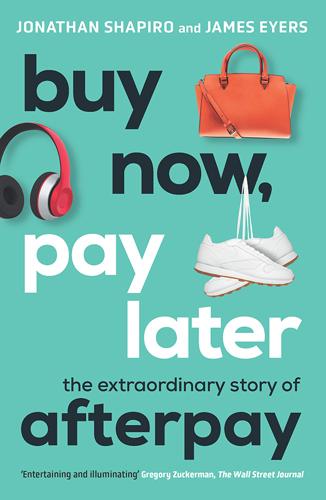
Buy Now, Pay Later: The Extraordinary Story of Afterpay
by
Jonathan Shapiro
and
James Eyers
Published 2 Aug 2021
Nick and Gabi Molnar were expecting their second child in August, so they had returned from the United States, which was being ravaged by the virus, to be closer to family. This made it tougher for Nick to manage Afterpay’s US staff, who were becoming restless as COVID-19 spread like wildfire. Then the country erupted after the killing by police of George Floyd, which had triggered massive Black Lives Matter protests. In mid-June, Molnar, Eisen and the Afterpay board dialled in to a briefing, where staff in San Francisco demanded that Afterpay support the movement by ensuring its US workforce become more diverse. ‘The US is obviously going through a difficult time at the moment,’ Molnar said. ‘We have people in the business who are vocal about what they expect … It became very clear our team in the US wanted to have a conversation.
…
Morgan 53, 120, 162, 251 Juul Labs 237–8 Kardashian, Kim 189 the Kardashians 188 Karzis, Sophie 116 Kassabgi, Damian 196, 207, 299, 304, 322 Katsalidis, Nona 57 Kaufman, Lilly 1–2 Kaufman, Susie 2, 3 Kaufman, Zoltan 1, 2 Kell, Peter 144, 163, 202, 207 Kelly, Rachel 129, 130–1, 135, 136 Khalifa, Mia 311 Kidman, Matthew 18, 95 King, Phil 185 Kingston, Beverley Basket, Bag and Trolley 45 Kitney, Damon 194 Klarna 81, 133, 187, 245, 279, 284, 291, 316, 317 Commonwealth Bank and 247–8, 337–8 United States launch 190 Kohler, Alan 209 Laffont, Philippe 234–5, 257, 258, 295, 335 Langley, Ron 83 Latitude Financial 118, 256–7 Lau, Sarah 128 Lawrence, Martin 149 lay-by 41, 44, 45, 46–7 costs to retailer 48–9 digitising of 47–8 Leeser, Julian 304 Lehman Brothers 177 Leibovich, Gabby Catch of the Day 89 Leigh, Andrew 287, 288 Lennie, Nadine 116 Lenton, Shane 88 Letts, Darren 175, 176 Levchin, Max 81, 190, 284, 312 Levis, Justin 87 Levis, Rod 87, 88 Lew, Solomon 129, 133, 270 Lindenberg, Brad 131, 279 Lipski, Simon 8 Little, Jason 11 Liu, Jun Bei 160 Livewire 240, 292 Lone Pine Capital 235, 236, 281, 295, 311 Loton, Brian 71 Lowde, Rebecca 289 Lowe, Philip 204, 205, 206, 260, 261, 266, 301, 341 Lowy, Frank 6, 7, 9, 31, 174 Lowy, Hugo 6 Lu, Janet 95 Lululemon 161 Lustig, Ted 9 McAllister, Jenny 146, 329 McBain, John 85 McCann, Edwina 305 Macaulay, Louise 142 McClelland, Colin 309 McCrohan, Sharon 197–8 McGarry, Ben 261, 267, 289–90 MacGraw, Beth 305 MacGraw, Tessa 305 McKenzie, Mark 262 McNamara, Peter 205, 206 Madden, Steve 191 Malek, Ron 23 Mandel, Steve 236, 295 Marshall, David 83 Mastercard 46, 108, 219, 220, 255, 263, 302, 339 Masters of the Market 18, 31 Matrix 157, 172, 173, 242, 331–2 Mawhinney, Simon 292 Maxsted, Lindsay 258 Maxwell, Robert 28 May, Rob 48–9 Mayne, Stephen 258 Medcraft, Greg 142, 144 Melbourne Jewish community 5 Melvin Capital 308–9 Meriton 6 Messara, Mike 127 Mickey Mouse report 148–51, 167, 227 millennials, Gen Z, Gen X 208–9, 331 credit cards and 40, 41, 52, 73, 208, 217, 222 trend makers, as 308, 311 Mitchell, Jacob 177 Mitchell, James 275 Mitchell, Paula 87 Moar, Max 9 Molnar, Michele 4, 13, 40, 76, 134 Molnar, Nick 3, 4, 11, 38, 73, 194 Afterpay see Afterpay Banking and Wealth Summit 2020 303 bar mitzvah 12 Eisen, meeting 39–40 fortune, personal 277, 333 Ice Online see Ice Online marriage and family 88, 194, 210, 277, 303 online jewellery sales 13, 14, 38–9 real estate purchases 343 rugby 11, 12, 13 Senate inquiry appearance 210–11 Shmuel Gniwisch 14, 16, 40, 172 TEDxYouth@Sydney 2017 171 United States expansion 172–3, 187, 190, 188, 226, 244–5 Molnar, Ronald 3–4, 12, 38–9, 108, 134, 168 Molnar, Simon 4, 13, 40 Ice Online see Ice Online Molnar, Vivian 3, 4 Montgomery, Roger 181, 182 Moore, Daniel 291 Mordant, Simon 23, 117 Moreno, Antonio 244 Morgan Stanley 97, 282 Moriah War Memorial College 4, 5–6, 10, 100, 131, 343 Morrison, Scott 145, 225, 226, 250, 260 pro-fintech position 250, 302–3 Mott, Jonathan 252, 255 Mulcahy, Julian 136, 336 Mumbrella 153 Murdoch, Rupert 126 Musk, Elon 176–8, 309, 311 Myer 44 MYOB 24, 30, 34, 96 Nadella, Satya 302 Nagley, Harold 4, 5, 10 Narev, Ian 217–18, 247 Nasdaq index 101, 102, 180, 232–3 National Australia Bank Afterpay financing 108–10, 121, 123, 168, 216, 251 Hayne Royal Commission 141, 142, 216 National Consumer Credit Protection Act 146, 203, 205, 212, 223, 326 National Debt Helpline 144, 201 National Press Club 260 Netflix 182 Ng, Jeffery 84 Ng, Wendy 58, 116, 117, 159, 267 Nguyen, John 55 Ngwe, Donald 244 Nixon, Blake 28, 31 Ocasio-Cortez, Alexandria 310 O’Connor, Debbie 153 O’Dwyer, Kelly 143 O’Halloran, Xavier 151 O’Neil, Clare 146 online classified platforms 126, 127 Openpay 251 Ord Minnett 175, 246, 251 Orr, Rowena 141 Ovienrioba, Oghosa 319–20 Ownership Matters 148–51, 167, 241, 242 Paatsch, Dean 149, 150–1 Packer, James 126 Packer, Kerry 27, 126 Padley, Marcus 160, 192, 282–3 Pagantis 286 Pape, Scott The Barefoot Investor 154 Paulson, Hank 302 payday lending 146, 212, 320 PayPal 54, 77, 166, 172, 187, 285, 302, 314 Peloton 313–14 Phillpot, Rob 155 Pichai, Sundar 302 Piper, Tim 315 platform companies 128, 240, 263 Plotkin, Gabe 308, 310 Portnoy, Dave 278, 309, 310 Poseidon bubble 96 Powell, Jerome 186, 207 Press, Danielle 202 Princess Polly 76, 77, 79, 106 property development 7, 20 Prunty, Chris 128, 129 Quadpay 131, 187, 270, 315 QVG 128 rag trade 9, 19 REA Group 126, 127 Rechtman, Andrew 76 Redrup, Yolanda 156 regulation of BNPL sector 201 ASIC inquiry 137, 140, 144, 145, 148, 191 ASIC reports 202–4, 297, 298, 299 Reserve Bank 206, 254, 296 Bragg inquiry see Select Committee on Financial Technology and Regulatory Technology Senate inquiry see Senate Economics References Committee inquiry United Kingdom 288, 320–2 regulators, role 287, 296, 297, 298, 300–1 research analysts 252, 253, 280 risk-averse 271 Reserve Bank 206, 254, 295, 302, 341 bond-buying program 269 no-surcharge rules 254, 255, 262, 295, 301, 302, 341 Richardson, Tom 311, 316 Roberts, Matt 251 Robertson, Hugh Walter 58, 67, 133 Afterpay 78, 84, 90, 93, 99 background and early career 70 private investors 71, 72, 84 Touchcorp IPO and 67, 72–3, 85 Robertson, Julian 232 , 233, 235, 245, 295 Robinhood trading app 278, 310 Rose, Nicole 228 Rosenberg, Cliff 84, 90 Rosenblum, Rupert 12 Roth, Mike 94 Rubin, Elana 67, 116, 229, 262 Rudd, Kevin 134, 196, 205, 226, 326 Ryan, Tony 28, 29 Saadat, Michael 139, 143, 144, 202, 212, 213, 221 Afterpay role 229, 248 code of conduct 324–6, 328 Salt, Bernard 208 Sams, Lauren 306, 307, 311, 312 Samson, James 241–2 Samway, Tim 156 Saunders, John 6, 7, 9, 174 Saville, Duncan 63, 65, 68, 84 Afterpay Touch shareholding 118, 175 Scheinberg, Albert 9 Schulman, Daniel 314 Schwarz, Stephanie 10–11, 343 Seafolly 8 SEEK 126 Select Committee on Financial Technology and Regulatory Technology 249 Afterpay presentation to 262–3 report 286–7, 296, 297 Senate Economics References Committee inquiry 145–8, 154, 186 hearings 209, 210–12 report 223 scope 200–1 Serjeant, Tim 187 Sezzle 131, 175, 187, 267, 285, 315 ASX listing 246, 247 share market banks and mining, dominance of 91, 92 day traders 278–9, 308–10 dual-class share structure companies 102 founders, sale of shares by 156, 281, 333 short-sellers 156, 165, 167, 175, 176–7, 185, 186, 276, 289, 308–9 tech companies 96, 101 value 91 Shein, David 90 Sher, Steve 84 Shervington, Laurie 65 Shipton, James 142, 143 Shopify 282, 284, 313 Shorten, Bill 139, 145, 198, 225, 226, 249 Showpo 95 Shulman, Gabi 86, 88 Sidereal Holdings 83, 117 Siemiatkowski, Sebastien 190 Simmonds, Julian 287 Singer Sewing Machines 42 Skamvougeras, Paul 84 Smith, Steve 197 Snapchat 98 Solution 6 23, 24 Soros, George 232, 233 Sotiriou, Lafitani 113, 121, 133, 162, 164–5, 166, 224 Spiro, Dov 24 Splitit 246 Stadnik, Andrei 282 Stalder, Dana 157, 172, 187, 242, 243 Stevens, Chris 289 Stockland Trust 9 Stocks Down Under 276, 284 Stouffer, Tracy 133 Strachman, Daniel 233 Strasser, Nicole 5 Sugar, Brian 188 PopSugar 188 Sullivan, Angus 338 Summers, Larry 249 superannuation 182, 270 Surowiecki, James 47 Surry Hills 19–20 Swanson, Eleanor 272, 292 Sydney Jewish community 3, 5, 7–8 Sydney Morning Herald 40 Sykes, Trevor 29, 30 Tabakoff, Nick 23 TAFMO 61, 63, 64, 84 Tagliaferro, Anton 291 ‘tap and go’ payments 120 Tate, Diane 325, 326, 329 Taub, Stephen 295 Taylor, Mike 114 tech-stock bubble 15, 16, 23, 98, 180, 183, 232–3 Telstra privatisation 21, 22 Temple Emanuel 4 Tencent 274–6, 280, 289 Ters, Jason 36, 83 Tesla 176–8, 268, 275, 295 Textor, Mark 340 Thiel, Peter 122, 176, 284 Thompson, Sarah 168 Thorburn, Andrew 141, 216 Thread Together 307, 308 Tiger Cubs 233, 234, 235, 236, 239, 258, 275, 295, 311 Tiger Global 234, 282, 295, 311 Tiger Management 228, 232, 233, 235 TikTok 307 Touch Payments 82 Touchcorp 54, 58, 59 Afterpay payment platform 54–5, 59 Intellect and 62 Touchcorp Holdings Pty Ltd 64, 66, 104, 116 Afterpay, merger with see Afterpay Touch (APT) IPO 58, 59, 67–8, 84 Treasury 296, 297, 300, 301 ‘responsible lending’ laws 326–7 Triguboff, Harry 6 Trump, Donald 112 Turnbull, Malcolm 140, 145, 197, 213, 225, 249 Twitter 98, 102 Tyabji, Hatim 63–4, 66 Tyler, Chris 23 Uber 140, 196, 242, 263, 289, 299 UBS investment conference 2016 110, 111 October 2019 report 252, 253, 255–6 ‘unicorn’ status 120, 183 United Kingdom Afterpay expansion into 184, 224, 264 Financial Conduct Authority (FCA) 320, 321, 323 regulation of BNPL sector 288, 320–2 United States Black Lives Matter 277 election 2016 111–12 expansion into 157–8, 173–4, 190, 243–4, 265 fashion market 158 Federal Reserve COVID-19 response 273 regulatory risks in 267 Uphold & Recognise 304 Valmorbida, Val 57 van den Berg, Stefan 184 van Dongen, Yvonne 27 Vanguard 293, 294 venture funds 98, 99 Veronika Maine 107, 111, 113 Verrender, Ian 152 Verwer, Peter 302 VGI Partners 186–7 Visa 46, 108, 219, 220, 246, 263, 279, 302, 339 WAAAX stocks 182 Waislitz, Alex 71, 112, 183, 274, 342 Walburgh, Fetzie 55 Walker, Gavin 35 The Wall Street Journal 295 Wallis, Stan 220 Walsh, Michael 110 Warner, David 198 Warren, Elizabeth 310 Waters, Tony 128, 129 WeChat 275 The Weekend Australian 194 Weiss, Gary 17, 18, 19, 24, 35, 63, 125 background 25–6 ClearView 36 Coats acquisition 31–2 GPG see Guinness Peat Group (GPG) Industrial Equity Limited (IEL) 26 Westfield 6–7, 90, 174, 306–7, 310–11 Westpac Banking Corporation 51, 247, 327 Afterpay Money and 290–1, 338, 339, 340 anti-money laundering breaches 258–9 White, Richard 97, 281 Whitlam Turnbull bank 18 Whittaker, Marc 240 Wilson, Geoff 18, 94, 125, 225 Future Generations fund 125, 126 Wilson, Matthew 336 Wilson, Tim 225 Wilson Asset Management 93, 94, 125, 251 Wilson HTM 67, 68, 72, 93, 113, 184 Winkler, Craig 34 Winters, John 101 WiseTech Global 97, 182, 281 Women’s Wear Daily 188, 226 Wonga pay day loan scandal 322 Woodson Capital 238–9, 295, 311 Woolard, Christopher 320, 321, 322 World Health Organization 261 World Maccabiah Games 12 World War II 1 Wran, Neville 18 Wylie, John 13, 22, 39 Xenita, Natalie 307 Xero 34, 96, 182 Xu, Nesta 55 Yahoo!
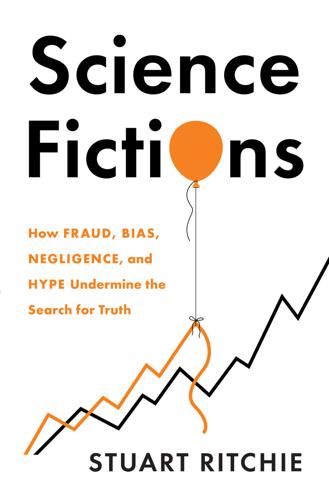
Science Fictions: How Fraud, Bias, Negligence, and Hype Undermine the Search for Truth
by
Stuart Ritchie
Published 20 Jul 2020
The results were paradoxical: although black and Hispanic people were over 50 per cent more likely than white people to have non-lethal force used against them during arrests, it was the opposite way round for lethal force: ‘blacks [were] 23.8% less likely to be shot by police, relative to whites.’80 The preprint reached public attention via a front-page article in the New York Times (‘Surprising New Evidence Shows Bias in Police Use of Force but Not in Shootings’), which quoted Fryer saying it was ‘the most surprising result of my career’.81 It quickly became a talking point for conservative commentators displeased with the Black Lives Matter movement, which campaigns against police violence. One wrote that Fryer’s study ‘proves’ that the movement was ‘built on lies’.82 Fryer’s 23.8 per cent figure was based on a straightforward look at the raw data. There was a lot more to the study than just the raw data, but this sadly became lost in the media coverage – especially after Fryer himself had highlighted that very specific number to journalists.
…
ABC News abortion Abu Ghraib prison abuse (2003) accidental discoveries Acta Crystallographica Section E acupuncture Afghan hounds Agence France-Presse AIDS (acquired immune deficiency syndrome) Alchemist, The (Bega) Alexander, Benita Alexander, Scott algorithms allergies Alzheimer, Aloysius Alzheimer’s Disease Amazon American Journal of Potato Research Amgen amygdala amyloid cascade hypothesis anaesthesia awareness Fujii affair (2012) outcome switching Anaesthesia & Analgesia animal studies antidepressants antipsychotics archaeology Arnold, Frances arsenic artificial tracheas asthma austerity Australia Austria autism aviation Babbage, Charles Bacon, Francis bacteria Bargh, John Bayer Bayes, Thomas Bayesian statistics BDNF gene Before You Know It (Bargh) Bega, Cornelis Begley, Sharon Belgium Bell Labs Bem, Daryl benzodiazepines bias blinding and conflict of interest De Vries’ study (2018) funding and groupthink and meaning well bias Morton’s skull studies p-hacking politics and publication bias randomisation and sexism and Bik, Elisabeth Bill & Melinda Gates Foundation Biomaterials biology amyloid cascade hypothesis Bik’s fake images study (2016) Boldt affair (2010) cell lines China, misconduct in Hwang affair (2005–6) Macchiarini affair (2015–16) meta-scientific research microbiome studies Morton’s skull studies Obokata affair (2014) outcome switching preprints publication bias replication crisis Reuben affair (2009) spin and statistical power and Summerlin affair (1974) Wakefield affair (1998–2010) biomedical papers bird flu bispectral index monitor black holes Black Lives Matter blinding blotting BMJ, The Boldt, Joachim books Borges, Jorge Luis Boulez, Pierre Boyle, Robert brain imaging Brass Eye vii British Medical Journal Brock, Jon bronchoscopy Broockman, David Brown, Nick Bush, George Walker business studies BuzzFeed News California Walnut Commission California wildfires (2017) Canada cancer cell lines collaborative projects faecal transplants food and publication bias and replication crisis and sleep and spin and candidate genes carbon-based transistors Cardiff University cardiovascular disease Carlisle, John Carlsmith, James Carney, Dana cash-for-publication schemes cataracts Cell cell lines Cell Transplantation Center for Open Science CERN (Conseil Européen pour la Recherche Nucléaire) chi-squared tests childbirth China cash-for-publication schemes cell line mix-ups in Great Famine (1959–1961) misconduct cases in randomisation fraud in chrysalis effect Churchill, Winston churnalism Cifu, Adam citations clickbait climate change cloning Clostridium difficile cochlear implants Cochrane Collaboration coercive citation coffee cognitive dissonance cognitive psychology cognitive tests coin flipping Colbert Report, The Cold War collaborative projects colonic irrigation communality COMPare Trials COMT gene confidence interval conflict of interest Conservative Party conspicuous consumption Cooperative Campaign Analysis Project (CCAP) ‘Coping with Chaos’ (Stapel) Cornell University coronavirus (COVID-19) Corps of Engineers correlation versus causation corticosteroids Cotton, Charles Caleb creationism Crowe, Russell Csiszar, Alex Cuddy, Amy CV (curriculum vitae) cyber-bullying cystic fibrosis Daily Mail Daily Telegraph Darwin Memorial, The’ (Huxley) Darwin, Charles Das, Dipak datasets fraudulent Observational publication bias Davies, Phil Dawkins, Richard De Niro, Robert De Vries, Ymkje Anna debt-to-GDP ratio Deer, Brian democratic peace theory Denmark Department of Agriculture, US depression desk rejections Deutsche Bank disabilities discontinuous mind disinterestedness DNA (deoxyribonucleic acid) domestication syndrome doveryai, no proveryai Duarte, José Duke University duloxetine Dutch Golden Age Dutch Organisation for Scientific Research Dweck, Carol economics austerity preprints statistical power and effect size Einstein, Albert Elmo Elsevier engineering epigenetics euthanasia evolutionary biology exaggeration exercise Experiment, The exploratory analyses extrasensory perception faecal transplants false-positive errors Fanelli, Daniele Festinger, Leon file-drawer problem financial crisis (2007–8) Fine, Cordelia Fisher, Ronald 5 sigma evidence 5-HT2a gene 5-HTTLPR gene fixed mindset Food and Drug Administration (FDA) Food Frequency Questionnaires food psychology Formosus, Pope foxes France Francis, Pope Franco, Annie fraud images investigation of motives for numbers Open Science and peer review randomisation Freedom of Information Acts French, Chris Fryer, Roland Fujii, Yoshitaka funding bias and fraud and hype and long-term funding perverse incentive and replication crisis and statistical power and taxpayer money funnel plots Future of Science, The (Nielsen) gay marriage Gelman, Andrew genetically modified crops genetics autocorrect errors candidate genes collaborative projects gene therapy genome-wide association studies (GWASs) hype in salami-slicing in Geneva, Switzerland geoscience Germany Getty Center GFAJ-1 Giner-Sorolla, Roger Glasgow Effect Goldacre, Ben Goldsmiths, University of London Golgi Apparatus good bacteria Good Morning America good scientific citizenship Goodhart’s Law Goodstein, David Google Scholar Górecki, Henryk Gould, Stephen Jay Gran Sasso, Italy grants, see funding Granularity-Related Inconsistency of Means (GRIM) grapes Great Recession (2007–9) Great Red Spot of Jupiter Green, Donald Gross Domestic Product (GDP) Gross, Charles ground-breaking results groupthink ‘Growth in a Time of Debt’ (Reinhart and Rogoff) growth mindset Guzey, Alexey gynaecology h-index H5N1 Haldane, John Burdon Sanderson Hankins, Matthew HARKing Harris, Sidney Harvard University headache pills heart attacks heart disease Heathers, James height Heilongjiang University Heino, Matti Henry IV (Shakespeare) Higgs Boson Hirsch, Jorge HIV (human immunodeficiency viruses) homosexuality Hong Kong Hooke, Robert Hossenfelder, Sabine Houston, Texas Hume, David Huxley, Thomas Henry Hwang, Woo-Suk hydroxyethyl starch hype arsenic life affair (2010) books correlation versus causation cross-species leap language and microbiome studies news stories nutrition and press releases spin unwarranted advice hypotheses Ig Nobel Prize images, fraudulent impact factor India insomnia International Journal of Advanced Computer Technology Ioannidis, John IQ tests Iraq War (2003–11) Italy Japan John, Elton Journal of Cognitive Education and Psychology Journal of Environmental Quality Journal of Negative Results in Biomedicine Journal of Personality and Social Psychology journals conflict of interest disclosure fraud and hype and impact factor language in mega-journals negligence and Open Science and peer review, see peer review predatory journals preprints publication bias rent-seeking replication studies retraction salami slicing subscription fees Jupiter Kahneman, Daniel Kalla, Joshua Karolinska Institute Krasnodar, Russia Krugman, Paul Lacon, or Many Things in Few Words (Cotton) LaCour, Michael Lancet Fine’s ‘feminist science’ article (2018) Macchiarini affair (2015–16) Wakefield affair (1998–2010) language Large Hadron Collider Le Texier, Thibault Lewis, Jason Lexington Herald-Leader Leyser, Ottoline Lilienfeld, Scott Loken, Eric Lost in Math (Hossenfelder) low-fat diet low-powered studies Lumley, Thomas Lysenko, Trofim Macbeth (Shakespeare) Macbeth effect Macchiarini, Paolo MacDonald, Norman machine learning Macleod, Malcolm Macroeconomics major depressive disorder Malaysia Mao Zedong MARCH1 Marcus, Adam marine biology Markowetz, Florian Matthew Effect Maxims and Moral Reflections (MacDonald) McCartney, Gerry McCloskey, Deirdre McElreath, Richard meaning well bias Measles, Mumps & Rubella (MMR) measurement errors Medawar, Peter medical research amyloid cascade hypothesis Boldt affair (2010) cell lines China, misconduct in collaborative projects Fujii affair (2012) Hwang affair (2005–6) Macchiarini affair (2015–16) meta-scientific research Obokata affair (2014) outcome switching pharmaceutical companies preprints pre-registration publication bias replication crisis Reuben affair (2009) spin and statistical power and Summerlin affair (1974) Wakefield affair (1998–2010) medical reversal Medical Science Monitor Mediterranean Diet Merton, Robert Mertonian Norms communality disinterestedness organised scepticism universalism meta-science Boldt affair (2010) chrysalis effect De Vries’ study (2018) Fanelli’s study (2010) Ioannidis’ article (2005) Macleod’s studies mindset studies (2018) saturated fats studies spin and stereotype threat studies mice microbiome Microsoft Excel Milgram, Stanley Mill, John Stuart Mindset (Dweck) mindset concept Mismeasure of Man, The (Gould) Modi, Narendra money priming Mono Lake, California Moon, Hyung-In Morton, Samuel Motyl, Matt multiverse analysis nanotechnology National Academy of Sciences National Aeronautics and Space Administration (NASA) National Institutes of Health National Science Foundation Nature cash-for-publication and cell line editorial (1981) impact factor language in Obokata affair (2014) Open Access and open letter on statistical significance (2019) replication research Schön affair (2002) Stapel affair (2011) Nature Neuroscience Nature Reviews Cancer NBC negligence cell line mix-ups numerical errors statistical power typos Netflix Netherlands replication studies in Stapel’s racism studies statcheck research neuroscience amyloid cascade hypothesis collaborative projects Macleod’s animal research studies replication crisis sexism and statistical significance and Walker’s sleep studies neutrinos New England Journal of Medicine New York Times New Zealand news media Newton, Isaac Nielsen, Michael Nimoy, Leonard No Country for Old Men Nobel Prize northern blots Nosek, Brian Novella, Steven novelty Novum Organum (Bacon) Nuijten, Michèle nullius in verba, numerical errors nutrition Obama, Barack obesity Obokata, Haruko observational datasets obstetrics ocean acidification oesophagus ‘Of Essay-Writing’ (Hume) Office for Research Integrity, US Oldenburg, Henry Open Access Open Science OPERA experiment (2011) Oransky, Ivan Orben, Amy Organic Syntheses organised scepticism Osborne, George outcome-switching overfitting Oxford University p-value/hacking alternatives to Fine and low-powered studies and microbiome studies and nutritional studies and Open Science and outcome-switching perverse incentive and pre-registration and screen time studies and spin and statcheck and papers abstracts citations growth rates h-index introductions method sections results sections salami slicing self-plagiarism university ranks and Parkinson’s disease particle-accelerator experiments peanut allergies peer review coercive citation fraudulent groupthink and LaCour affair (2014–15) Preprints productivity incentives and randomisation and toxoplasma gondii scandal (1961) volunteer Wakefield affair (1998–2010) penicillin Peoria, Illinois Perspectives in Psychological Science perverse incentive cash for publications competition CVs and evolutionary analogy funding impact factor predatory journals salami slicing self-plagiarism Pett, Joel pharmaceutical companies PhDs Philosophical Transactions phlogiston phosphorus Photoshop Physical Review physics placebos plagiarism Plan S Planck, Max plane crashes PLOS ONE pluripotency Poehlman, Eric politics polygenes polyunsaturated fatty acids Popper, Karl populism pornography positive feedback loops positive versus null results, see publication bias post-traumatic stress disorder (PTSD) power posing Prasad, Vinay pre-registration preclinical studies predatory journals preprints Presence (Cuddy) press releases Prevención con Dieta Mediterránea (PREDIMED) priming Princeton University Private Eye probiotics Proceedings of the National Academy of Sciences prosthetic limbs Przybylski, Andrew psychic precognition Psychological Medicine psychology Bargh’s priming study (1996) Bem’s precognition studies books Carney and Cuddy’s power posing studies collaborative projects data sharing study (2006) Dweck’s mindset concept Festinger and Carlsmith’s cognitive dissonance studies Kahneman’s priming studies LaCour’s gay marriage experiment politics and preprints publication bias in Shanks’ priming studies Stanford Prison Experiment Stapel’s racism studies statistical power and Wansink’s food studies publication bias publish or perish Pubpeer Pythagoras’s theorem Qatar quantum entanglement racism Bargh’s priming studies Morton’s skull studies Stapel’s environmental studies randomisation Randy Schekman Reagan, Ronald recommendation algorithms red grapes Redfield, Rosemary Reflections on the Decline of Science in England (Babbage) Reinhart, Carmen Rennie, Drummond rent-seeking replication; replication crisis Bargh’s priming study Bem’s precognition studies biology and Carney and Cuddy’s power posing studies chemistry and economics and engineering and geoscience and journals and Kahneman’s priming studies marine biology and medical research and neuroscience and physics and Schön’s carbon-based transistor Stanford Prison Experiment Stapel’s racism studies Wolfe-Simon’s arsenic life study reproducibility Republican Party research grants research parasites resveratrol retraction Arnold Boldt Fujii LaCour Macchiarini Moon Obokata Reuben Schön Stapel Wakefield Wansink Retraction Watch Reuben, Scott Reuters RIKEN Rogoff, Kenneth romantic priming Royal Society Rundgren, Todd Russia doveryai, no proveryai foxes, domestication of Macchiarini affair (2015–16) plagiarism in salami slicing same-sex marriage sample size sampling errors Sanna, Lawrence Sasai, Yoshiki saturated fats Saturn Saudi Arabia schizophrenia Schoenfeld, Jonathan Schön, Jan Hendrik School Psychology International Schopenhauer, Arthur Science acceptance rate Arnold affair (2020) arsenic life affair (2010) cash-for-publication and Hwang affair (2005) impact factor LaCour affair (2014–15) language in Macbeth effect study (2006) Open Access and pre-registration investigation (2020) replication research Schön affair (2002) Stapel affair (2011) toxoplasma gondii scandal (1961) Science Europe Science Media Centre scientific journals, see journals scientific papers, see papers Scientific World Journal, The Scotland Scottish Socialist Party screen time self-citation self-correction self-plagiarism self-sustaining systems Seoul National University SEPT2 Sesame Street sexism sexual selection Shakespeare, William Shanks, David Shansky, Rebecca Simmons, Joseph Simonsohn, Uri Simpsons, The skin grafts Slate Star Codex Sloan-Kettering Cancer Institute Smaldino, Paul Smeesters, Dirk Smith, Richard Snuppy social media South Korea Southern blot Southern, Edwin Soviet Union space science special relativity specification-curve analysis speed-accuracy trade-off Spies, Jeffrey spin Springer Srivastava, Sanjay Stalin, Joseph Stanford University Dweck’s mindset concept file-drawer project (2014) Prison Experiment (1971) Schön affair (2002) STAP (Stimulus-Triggered Acquisition of Pluripotency) Stapel, Diederik statcheck statistical flukes statistical power statistical significance statistical tests Status Quo stem cells Stephen VI, Pope stereotype threat Sternberg, Robert strokes subscription fees Summerlin, William Sweden Swift, Jonathan Swiss Federal Institute of Technology Sydney Morning Herald Symphony of Sorrowful Songs (Górecki) t-tests Taiwan taps-aff.co.uk tax policies team science TED (Technology, Entertainment, and Design) Texas sharpshooter analogy Thatcher, Margaret theory of special relativity Thinking, Fast and Slow (Kahneman) Thomson Reuters Tilburg University Titan totalitarianism toxoplasma gondii trachea translational research transparency Tribeca Film Festival triplepay system Trump, Donald trust in science ‘trust, but verify’ Tumor Biology Turkey Tuulik, Julia Twitter typos UK Reproducibility Network Ulysses pact United Kingdom austerity cash-for-publication schemes image duplication in multiverse analysis study (2019) National Institute for Health Research pre-registration in Royal Society submarines trust in science university ranks in Wakefield affair (1998–2010) United States Arnold affair (2020) arsenic life affair (2010) austerity Bargh’s priming study (1996) Bem’s precognition studies California wildfires (2017) Carney and Cuddy’s power posing studies Center for Nutrition Policy and Promotion climate science in creationism in Das affair (2012) De Vries’ drug study (2018) Department of Agriculture Dweck’s mindset concept Fryer’s police brutality study (2016) image duplication in Kahneman’s priming studies LaCour affair (2014–15) Morton’s skull studies Office for Research Integrity Poehlman affair (2006) pre-registration in public domain laws Reuben affair (2009) Stanford Prison Experiment Summerlin affair (1974) tenure Walker’s sleep studies Wansink affair (2016) universalism universities cash-for-publication schemes fraud and subscription fees and team science University College London University of British Columbia University of California Berkeley Los Angeles University of Connecticut University of East Anglia University of Edinburgh University of Hertfordshire University of London University of Pennsylvania unsaturated fats unwarranted advice vaccines Vamplew, Peter Vanity Fair Vatican Vaxxed Viagra vibration-of-effects analysis virology Wakefield, Andrew Walker, Matthew Wansink, Brian Washington Post weasel wording Weisberg, Michael Wellcome Trust western blots Westfall, Jake ‘Why Most Published Research Findings Are False’ (Ioannidis) Why We Sleep (Walker) Wiley Wiseman, Richard Wolfe-Simon, Felisa World as Will and Presentation, The (Schopenhauer) World Health Organisation (WHO) Yale University Yarkoni, Tal Yes Men Yezhov, Nikolai Z-tests Ziliak, Stephen Zimbardo, Philip Zola, Émile About the Author Stuart Ritchie is a lecturer in the Social, Genetic and Developmental Psychiatry Centre at King’s College London.

Surveillance Valley: The Rise of the Military-Digital Complex
by
Yasha Levine
Published 6 Feb 2018
Egypt, Russia, Syria, and even the United States—millions downloaded Signal, and it became the communication app of choice for those who hoped to avoid police surveillance. Feminist collectives, anti–President Donald Trump protesters, communists, anarchists, radical animal rights organizations, Black Lives Matter activists—all flocked to Signal. Many were heeding Snowden’s advice: “Organize. Compartmentalize to limit compromise. Encrypt everything, from calls to texts (use Signal as a first step).”130 Silicon Valley cashed in on OTF’s Internet Freedom spending as well. Facebook incorporated Signal’s underlying encryption protocol into WhatsApp, the most popular messaging app in the world.
…
Gerry Smith, “How Police Are Scanning All of Twitter to Detect Terrorist Threats,” Huffington Post, June 25, 2014, http://www.huffingtonpost.com/2014/06/25 /dataminr-mines-twitter-to_n_5507616.html. 13. In 2014, police departments all across the country used it. Indeed, at the same time that Oakland was trying to push through the Domain Awareness Center, the city’s police department purchased a Geofeedia license and used it to monitor protests, including the Black Lives Matter movement. “Social media monitoring is spreading fast and is a powerful example of surveillance technology that can disproportionately impact communities of color,” warned the American Civil Liberties Union, which obtained a copy of Geofeedia’s marketing materials to law enforcement. “We know for a fact that in Oakland and Baltimore, law enforcement has used Geofeedia to monitor protests.”

The Controlled Demolition of the American Empire
by
Jeff Berwick
and
Charlie Robinson
Published 14 Apr 2020
In 2017, Soros transferred $18 billion of his fortune into his Open Society to fund his dystopian fantasies, and through his foundation, $11 billion has already been spent to shape global society in a way that he sees fit, like financing uprisings like the Arab Spring, and the mobilization of hundreds of thousands of displaced Libyans into Europe.215 In the United States, Soros was the financial backer for Black Lives Matter and other social movements meant to appear organic in nature but clearly had his fingerprints all over them. Part of the problem that these foundations create is that they are desperate to make the social uprisings appear to be authentic and real, when they usually are not, then use the organizations to change society in a way that suits them.
…
Democracy Alliance donors have long maintained an air of secrecy, and little is known about most of them. Major Democratic donors who have been identified as members include Soros and Tom Steyer, hedge fund magnate Donald Sussman and technology entrepreneur Tim Gill. Those are the ones that can be proved. Is Soros the only boss brain behind Black Lives Matter? Of course not. But he does fund the #BLM movement and riots every time the globalists decide they need a new race war started. Trump blamed Antifa by name for the violence, along with violent mobs, arsonists, and looters. As The President Who Holds The Record For The Most Tweets In The World (not really, but he should), he also tweeted that the US will designate the movement as a terrorist organization.

The People vs Tech: How the Internet Is Killing Democracy (And How We Save It)
by
Jamie Bartlett
Published 4 Apr 2018
I’m calling it re-tribalisation. There is a very natural and well-documented tendency for humans to flock together – but the key thing is that the more possible connections, the greater the opportunities to cluster with ever more refined and precise groups. Recent political tribes include Corbyn-linked Momentum, Black Lives Matter, the alt-right, the EDL, Antifa, radical veganism and #feelthebern. I am not suggesting these groups are morally equivalent, that they don’t have a point or that they are incapable of thoughtful debate – simply that they are tribal. What transforms a group of like-minded people into a motivated, mobilised tribe is a sense of shared struggle and common grievance.
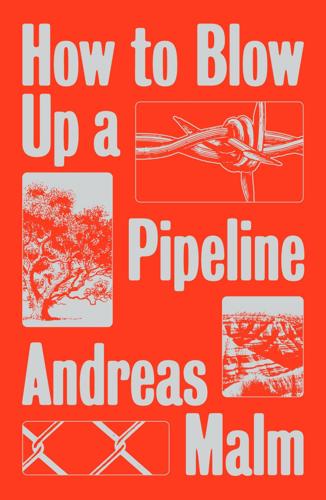
How to Blow Up a Pipeline
by
Andreas Malm
Published 4 Jan 2021
Cf. e.g. pp. 30–37; Engler and Engler, This Is, pp. 26, 246–47. p. 115. In the handbook, we learn … J. S. Rafaeli with Neil Woods, ‘Fighting the Wrong War’, in Farrell et al., This Is Not, p. 41; Griffiths, ‘Courting’, p. 96. p. 115. As pointed out in an open letter to XR … The Wretched of the Earth, Argentina Solidarity Campaign, Black Lives Matter UK et al., ‘An Open Letter to Extinction Rebellion’, Red Pepper, redpepper.org.uk, 3 May 2019. Cf. Damien Gayle, ‘Does Extinction Rebellion Have a Race Problem?’, Guardian, 4 October 2019. p. 116. Taken from the reading of movements … See e.g. Chenoweth and Stephan, Why Civil, pp. 60–61, 202–7.
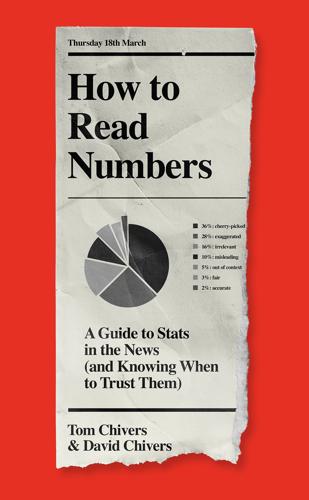
How to Read Numbers: A Guide to Statistics in the News (And Knowing When to Trust Them)
by
Tom Chivers
and
David Chivers
Published 18 Mar 2021
J., ‘The health risks and benefits of cycling in urban environments compared with car use: Health impact assessment study’, British Medical Journal, 343 (2011), d4521–d4521. 5. Kaisha Langton, ‘Deaths in police custody UK: How many people die in police custody? A breakdown’, Daily Express, 2020 https://www.express.co.uk/news/uk/1292938/deaths-in-police-custody-uk-how-many-people-die-in-police-custody-UK-black-lives-matter 6. ‘Police powers and procedures, England and Wales’, year ending 31 March 2019, 24 October 2019 https://www.gov.uk/government/collections/police-powers-and-procedures-england-and-wales 7. Arturo Garcia and Bethania Palma, ‘Have undocumented immigrants killed 63,000 American citizens since 9/11?’
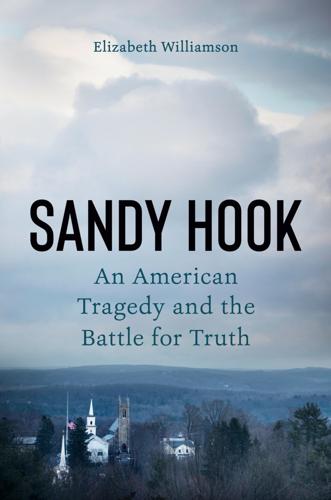
Sandy Hook: An American Tragedy and the Battle for Truth
by
Elizabeth Williamson
Published 8 Mar 2022
As news cameras whirred, Riches knelt among the flowers, candles, and homemade cards on the sidewalk, as if to pray. Riches landed back in jail. By then his Newtown YouTube video had circled the world. Released three years later, he has scammed press attention by impersonating a “Muslim for Hillary,” wearing a MAGA cap at a Trump rally, and protesting in support of both sides during Black Lives Matter demonstrations. In 2021 he traveled with groups mobilizing in support of Trump’s election lies. * * * — The self-styled investigators toured Newtown with cameras, showing up outside the firehouse and the fenced-off, guarded, and empty school. Their presence was a factor in the town’s decision to demolish Sandy Hook Elementary.
…
While misinformation, menace, and calls to violence circulate among the hundreds of millions of videos viewed each day on Google’s YouTube, the company accepted plaudits for building “global community.”[13] Twitter publicly celebrated its role in linking activists during the pro-democracy Arab Spring protests and the nascent Black Lives Matter movement in the early 2010s while racist and misogynist attacks skyrocketed. “We suck at dealing with abuse and trolls on the platform and we’ve sucked at it for years,” former chief executive Dick Costolo wrote in an internal memo in 2015.[14] A year later, Charlie Warzel, then a senior tech writer for BuzzFeed, investigated Twitter’s abuse problem in an article titled “ ‘A Honeypot for Assholes’: Inside Twitter’s 10-Year Failure to Stop Harassment.”[15] Several women and people of color had left the platform in 2016, amid torrents of abuse and threats, including Leslie Jones, then at Saturday Night Live.
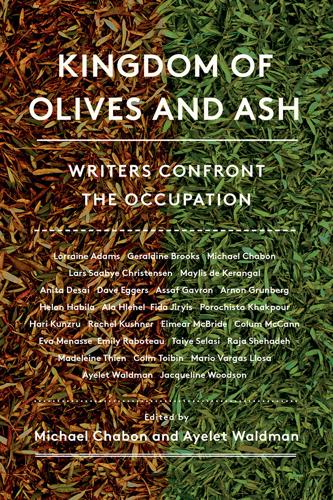
Kingdom of Olives and Ash: Writers Confront the Occupation
by
Michael Chabon
Published 29 May 2017
Guy referred to the annual tradition of “the March of Flags” as “the March of Hate.” He’s an activist with Ta’ayush (it means “living together” in Arabic), a group that uses nonviolent direct action to fight for Palestinian rights. Earlier this year he was arrested in connection with his activity, and spent some time in jail. As with the Black Lives Matter movement in the United States, filming unethical behavior is one of Ta’ayush’s most effective tactics in battling state-sanctioned violence. We trekked past Prime Minister Netanyahu’s residence on Balfour Street, winding our way through the thickening crowd toward the nerve center of the Old City.
…
Then he directed his lens at a unit of armed Israeli border police who’d blocked off a street entrance to an Arab neighborhood with a tank that would use its cannon to spray their bodies and homes with “skunk water” if they dared try exiting to protest the march. Skunk water is a putrid-smelling form of nonlethal crowd control developed in Israel to keep demonstrations in check. (Several police departments in US cities, including Saint Louis, are reported to have recently bought it in the wake of protests organized by the Black Lives Matter movement.) “That’s the smell of the occupation,” said Guy. “It’s worse than a skunk. It stinks like raw sewage and rotting corpses. It doesn’t go away for days. It can make you sick. The term Israel uses for this is sanitize.” I thought of the fire hoses police targeted on nonviolent protestors, including children, in Birmingham in 1963.

Amazon Unbound: Jeff Bezos and the Invention of a Global Empire
by
Brad Stone
Published 10 May 2021
“Make him the most interesting part of the story, and if possible, make him the face of the entire union/organizing movement.” Zapolsky, who said he didn’t know Smalls’s race at the time, later went to considerable lengths to apologize publicly for the remark, including sending out an email to his staff expressing support for the Black Lives Matter movement that gained momentum from the murder of George Floyd that May. “I should never have let my emotions get to me,” he told me. “I shouldn’t have used that characterization for any Amazon employee. It was incredibly regrettable.” But the company’s opposition to anything that even whiffed of union organizing was now cast starkly into the open, in cynical and arguably prejudicial terms.
…
(AMI), 32–35, 337–42, 345, 347 Anagram Genius, 34 Android, 24, 34, 38, 40, 41 Anker, 176–77, 375 A9, 70, 255, 258 Annapurna Labs, 103 antitrust issues, 351–52, 364, 377–78 Amazon and, 9, 10, 174, 307, 351, 353, 363–80, 381, 406 Bezos’s Congressional testimony and, 369–71 Google and, 259, 353, 366, 377 Microsoft and, 363, 378 Antitrust Paradox, The (Bork), 365 AOL, 7 Apollo program, 266, 272 Appen, 43 Apple, 9, 34, 42, 52, 71, 95, 111, 145, 158, 173, 229, 350, 359, 366, 377 Apple News+, 129 iPad, 40, 129 iPhone, 38, 41, 96, 129 Siri, 26, 27, 30, 32, 34 voice technology of, 37, 42 Washington Post and, 129–30 Arc Publishing, 129 Arendt, Hannah, 365 artificial intelligence and machine learning, 13, 22, 23, 36–37, 50, 55, 68 deep learning, 35, 36 see also virtual assistants Asimov, Isaac, 23 AT&T, 378 Atlas Air, 234 Atomic Energy Commission, 266 ATSG, 234 Aubrey, Colleen, 253, 402 automakers, 219 Axel Springer, 124, 281 Axis Management, 327 Bain & Company, 262 Baldwin, Alec, 48 Ballmer, Steve, 94–96, 115 Bansal, Binny, 70, 73–74, 88, 91 Bansal, Sachin, 70, 73–74, 87–91 Barnes & Noble, 6 Barnett, David, 367–68 Baron, Marty, 123, 126–27, 130–32, 154 Barron’s, 12 Bart, Peter, 136 Barton, Bill, 36 BBC, 145 BBN Technologies, 35–36 BDO, 311 Beauchamp, Christine, 402 Beaudoin, Cathy, 180–81 Beck, 136 Beckinsale, Kate, 136 Bell, Charlie, 98, 101, 102 Bellevue, Wash., 304, 305 Bennet, Susan, 30 Berkshire Hathaway, 16, 128, 320, 379 Berman, Craig, 41, 106–7, 120 Betas, 142 Bezos, Christina (sister), 162, 244 Bezos, Jackie (mother), 5, 162, 244, 266, 325 Bezos, Jeff Amazon founded by, 5–6, 322 awards won by, 297, 343 biological father of, 12, 329 childhood home visited by, 161–63, 263 Congressional testimony of, 369–71 divorce of, 16–17, 318–21, 334, 345, 346, 349 fame of, 244, 249, 323, 324 homes of, 132–33, 135, 306, 322, 323, 347, 405 image makeover of, 15–16, 116, 244–45, 323 leadership style of, 10–12, 21–22, 167 musical tastes of, 31 National Enquirer story on Sanchez’s relationship with, 17, 319, 328–42, 344 phone hacking incident, 321, 344–45 portrait of, 1–2, 382 salary of, 112 Sanchez’s meeting of, 326 Sanchez’s relationship with, 17, 283, 318–19, 321, 324, 326–28, 344–47 as science fiction fan, 23, 30–31, 52, 266, 274 shareholder letters of, 6, 12, 22, 24, 39–41, 68, 182, 206, 268, 356, 373–77 60 Minutes interview with, 233 technical advisors to, 23–25, 71 transition to executive chairman position, 17, 405 wealth of, 2, 11, 15, 19, 95, 108, 112–13, 159, 163, 244, 245, 249, 263, 266, 282, 285, 288, 299, 306, 323, 346, 349, 355, 357, 384, 401, 404 Bezos, George, 161–62 Bezos, MacKenzie (wife), see Scott, MacKenzie Bezos, Mark (brother), 162, 244, 245, 322 Bezos, Mike (father), 5, 162, 215, 244, 266, 275, 325 Bezos, Preston, 1, 382–83, 384 Bezos Day 1 Fund, 49, 324, 406 Bezos Earth Fund, 402–4, 406 Biden, Joe, 110, 354–55, 402 Big Billion Day, 78 Big Little Lies, 154 big tech companies, 401 government scrutiny of, 366–67 mergers of, 378 suspicion of and backlash against, 290, 305, 349–53, 364, 380 see also antitrust issues Bill and Melinda Gates Foundation, 403 Bing, 193 bin Laden, Osama, 117, 118 Birkenstock, 180 Blackburn, Jeff, 136, 139, 147, 152, 155–57, 251–53, 322, 402 Black Friday, 84, 104, 105, 226 Black Lives Matter, 395 Black Ops Aviation, 283, 310, 326 Blizzard Challenge, 29 Bloomberg, Bloomberg News, 95, 187, 223, 295, 360 Blue Origin, 16, 17, 120, 130, 244, 245, 264–83, 288, 310, 326, 327, 346, 387, 406 Bezos’s funding of, 278 Blue Moon project of, 279 budget of, 276–77 employees of, 265, 274–76, 278, 280–81 fuel mixes and, 269, 270 Kármán line and, 273, 282 Kent headquarters of, 264, 274–75, 277, 281 motto and coat of arms of, 268 New Glenn rocket of, 264, 272, 274, 277–79 New Shepard rocket of, 264, 267, 269–71, 273, 274, 276, 278, 280, 283, 288, 310, 327 as philanthropic enterprise, 269, 281–82 secrecy at, 268 test rocket failure of, 270 Texas ranch facilities of, 275, 281 Welcome Letter for new employees at, 267–70, 277, 278, 281 Blumenthal, Richard, 214 Boeing, 270–71, 272, 280, 290, 293, 294, 309 Bon Jovi, Jon, 325 Borat Subsequent Moviefilm, 401 Borders, 169, 188 Borders, Louis, 188 Bork, Robert, 365 Bosch, 143 Bourdain, Anthony, 131 Bowden, Courtney, 397 Bowen, Sam, 23 Boyle, Sean, 249 Boys, The, 158, 401 Bradlee, Ben, 133 Branson, Richard, 6 Bray, Tim, 398–400 Brazil, 110, 231 Brennan, Megan, 358 Breuer, Lanny, 368 Brin, Sergey, 359 Brown, Dan, 34 Brownstein, Carrie, 154 Buffett, Warren, 128, 186, 320, 345 burgers, 206–9 Burgess, Tim, 290, 291 Burnett, Mark, 145 Burnett, T Bone, 136 Burnham, John, 149 Business Council, 16 Business Insider, 240 Business Today, 78 Businessweek, 99 Buy Box Experts, 377 BuzzFeed, 154, 237, 240 Bystander Revolution, 323–24, 346 Callamard, Agnes, 345 Campfire, 153–55, 324–25 Canada, 80 Cape Canaveral, 272, 280 carbon emissions, 2–3, 381 Carlson, Teresa, 359, 362 Carnegie Mellon University, 29 Carney, Jay, 110, 118–20, 208, 263, 297, 311, 314, 315, 339, 351, 356, 357, 369, 390, 391 Carr, Bill, 138–40 Carrefour, 190 Catz, Safra, 360 CBS This Morning, 126, 144 CCDev, 270–71 Cengiz, Hatice, 347 Center for Investigative Reporting, 224 Centers for Disease Control (CDC), 394 Chapman, Gary, 64 Charlie Rose, 94 Chatham Asset Management, 331 Cheng, Albert, 157 Chicago, Ill., 303 China, 13, 70–73, 75–76, 78, 82, 86, 95, 104, 170, 189, 379 Communist Party in, 73 Marketplace sellers based in, 171–81, 183, 248, 254, 260, 287 Christensen, Clayton, 10 CIA, 359–60 Cicilline, David N., 366–69, 371, 377 Cincinnati/Northern Kentucky International Airport, 235, 293 Clarkson, Ian, 188 Clarkson, Jeremy, 145 Clancy, Tom, 149 Clark, Dave, 193, 194, 213–18, 221–35, 239–43, 355, 387–89, 392, 397, 399, 402, 405 Clark, Leigh Anne, 217 Clarke, Arthur C., 23 Climate and Clean Energy Equity Fund, 403 climate change, 2–4, 17, 381, 402–4 Climate Pledge, 2, 17, 381–82, 388 Clinton, Hillary, 1 cloud computing, 4, 13, 14, 22, 24, 25, 55, 96–98, 102 Amazon’s original products for, 97 Defense Department’s JEDI contract for, 351, 359–63, 381 see also Amazon Web Services Cloudtail, 77, 88 CNET, 67 CNN, 353 Coca-Cola, 260 Coen, Joel, 135 Cohen, Michael, 331, 335 Collins, Doug, 367 Columbia Pictures, 141 Comcast, 139–40 Comic-Con, 145 Communications Decency Act, 379 computer speech recognition, 28, 36, 55 in Alexa, 28, 33, 36, 37 computer-synthesized speech, 28–29 computer vision, 13, 54–55, 57–58, 62–64, 68 Conscious Capitalism (Mackey), 185 Consumer Financial Protection Bureau, 353 ContextLogic, 171 Cook, Tim, 132, 345, 359, 369 “cookie licking,” 233 Corden, James, 2 Cornell, Brian, 231 Costco, 185, 192, 198 Coulter, Kristi, 60, 65 Covid-19 pandemic, 1, 4, 18, 348, 367, 369, 385–402 Amazon Pharmacy and, 404 Bezos’s public prominence during, 387–88 Bezos’s wealth and, 18, 401 customer demand during quarantine, 380, 387, 388, 391 essential item sales during, 389, 391, 392 face shields and masks during, 388–89 grocery delivery and, 68, 243, 391 labor unions and, 316, 392, 394 S-team and, 386–87, 390 testing and contact tracing in, 390, 396–97, 400–401 vaccines in, 402 Whole Foods and, 390, 391, 397 Covington & Burling, 368 Cox, Braden, 312–14, 316 Crisis in Six Scenes, 13, 149 Crow, Bill, 298 Cruise, Tom, 168 Cucinelli, Brunello, 346 Cunningham, Michael, 154 Cuomo, Andrew, 306, 310, 314–15 Curry, Stacey Hayes, 237 Daily Beast, 336, 342 Dallas, Tex., 292, 295, 296, 299–302, 308 Damon, Matt, 135, 325 databases, 97–99 see also cloud computing Daudon, Maud, 290, 304 Da Vinci Code, The (Brown), 34 Davis, Alicia Boler, 402 Days Inn, 290 Deadline, 136 Dead of Winter Productions, 327 de Becker, Gavin, 64, 323, 334–39, 341, 342, 344, 346–47 de Blasio, Bill, 306, 310, 313–15 De Bonet, Jeremy, 63 Defense Department, U.S., 359, 361 JEDI contract with, 351, 359–63, 381 Deliveroo, 260 Delrahim, Makan, 366 Delta Air Lines, 301 democracy, 124, 133, 365 De Niro, Robert, 152 DePalo, Joe, 102 D.
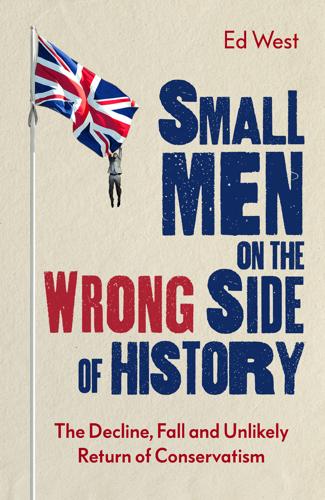
Small Men on the Wrong Side of History: The Decline, Fall and Unlikely Return of Conservatism
by
Ed West
Published 19 Mar 2020
Stenner, in her book The Authoritarian Dynamic, defined authoritarianism not as a personality type but something triggered by ‘normative threats’, things that threaten the moral order: ‘authorities unworthy of respect, nonconformity to group norms or norms proving questionable, lack of consensus in group values and beliefs and, in general, diversity and freedom “run amok”’.3 The behaviour of anti-Trump campaigners, whether it was Black Lives Matter, campus activists or actors getting naked to encourage people to vote against him, all seemed designed only to reinforce this not entirely irrational fear. There is also good evidence that the sort of radical activism seen on campus increased support for Trump, pushing away more people than it attracted.4 But then politics comes down to who’s on your side, or as former political strategist Kevin Phillips said, ‘knowing who hates who’.5 Negative partisanship, defining oneself in opposition to another party or group, is very important to how we vote.6 As America’s upper-middle class became far more radical on issues of race and culture in the 2010s, and far more hostile to the lower class and rural whites, so more people have pushed towards the other side in response.
…
Norton, 1979). 25 http://anepigone.blogspot.com/2018/06/centrists-find-politics-boring-wish-it.html. 26 https://medium.com/@ryanfazio/politics-are-not-the-sum-of-a-person-378102f25334. 27 Burton Egbert Stevenson, The Macmillan Book of Proverbs, Maxims, and Famous Phrases (London: Macmillan, 1948) INDEX 28 Days Later (2002) 185 Abbott, Jack 121 abortion 166, 168, 202, 217, 241, 363 Abortion Act 217 Abramson, Lyn Yvonne 30 academia 7–8, 12, 16–17, 136–8, 319–26 activism 7, 316–17, 326 actors 186–7 Adam 33, 219 Adam, Corinna 18 Adams, Henry 90–1 Adams, John 281 Adams, Samuel 281, 331 Adorno, Theodor 135 The Authoritarian Personality 104–7, 143 Aesop’s Fables 260 Africa 15 Agamemnon 187 Agnew, Spiro 154 agnostics 216 agreeableness 108 Aids 125 Ailes, Roger 313, 346 al-Qaida 13, 125, 201 al-Sahaf, Mohammed Saeed 353 alcohol consumption 112–13, 133 Aldred, Ebenezer 61 Alexander, Scott 118, 315–16, 342–3 Allen, William 92 Allen, Woody 102 Alloy, Lauren 30 ‘Alt-Right’ 345, 347 Altemeyer, Bob 107, 333 American Beauty (1999) 106, 184 American Civil Liberties Union 201–2 American constitution 345 American independence 53, 55, 305 American National Election Studies 303 American Political Science Association 300 ‘American Religion’ 222 American Revolution 55, 280–1 Amnesty International 99, 201, 202, 212 ANC 16, 89, 189 ancien régime 178, 333, 358–9 Andrews, Helen 176 Anglicanism 13, 37, 64, 65, 202, 214, 222 Communion 220 High Church 50, 51 norms 79 supremacy 292 anti-apartheid movement 16 anti-Catholicism 232 anti-communism 22, 211 anti-humanitarianism 74 anti-social behaviour orders (ASBOs) 163 Antichrist 64 Antonia, Lady Fraser 42 apartheid 89, 174 Apollo 29 Aquinas, Thomas 326 Arabs 362 Arbuthnot, Norman 312 aristos 31 Arnold, Matthew 279 art, degenerate 98 Arts Council 197 Aryans 89 ASBOs see anti-social behaviour orders Ashley Madison website 107 Asquith, Robert 168 atheism 52–3, 214–16, 292, 294 see also New Atheism Athelstan, King 126 Athens 31 Atlantic magazine 341, 348, 366 Attenborough, David 195 Attlee, Clement 175 Attlee era 177 Augustine of Hippo 31–3, 35, 349 Augustine, St 110, 291 Auschwitz 98 authoritarian personality 104–7, 118, 334 authoritarianism 140, 148, 208, 262, 329–30, 333–4, 338, 350 autism 138 Ayres, Bill 236 Babeuf, François-Noël 60–1 baby boomers 44, 83, 131, 155 Bad Religion 102 bad-thinkers 144–5, 146, 150, 152 Baldwin, Alec 24 Balfour, Arthur 265 Bank of England 331 Bannon, Steven 152, 309, 347 Baptists 59, 145 barbarism 65, 66, 84 barbarians 12, 131 Bargh, John 115 Barlow, Joel 109 Baron-Cohen, Sacha 333 Barrès, Maurice 95 Basics, Baxter (Viz character) 86, 267 Bastille, storming of the 55, 59, 331 Batbie, Anselme 274 Batek 131 BBC 3, 149, 165, 186, 190–7, 265, 266, 313–14, 337 Beatles 166, 287 beatnik poetry 127 Becker, Ernest 115 Beeching Axe 285 Belgium 303 Belle Époque era 126, 175, 184–5 Benedict, St 373 Benedict XVI, Pope 218, 232, 233 Benn, Tony 18, 21, 42 Bentham, Jeremy 78, 92, 223–4 Berenger, Tom 110 Berlin 20–1, 23, 41–2 Berlin Wall 21, 22, 23, 86 Betjeman, John 285 Bevan, Nye 230 Beyoncé 24 Beyond the Fringe 191 Bible 50, 219, 229, 294 Bible Belt 228 Big Five personality traits 108–13, 137, 363 ‘Big Sort, The’ 295 Bill of Rights 305–6 biological determinism 139 birth control 364 birth rates 362–4 Bishop, Bill 295 Black Death 34–5 Black Lives Matter 338 Black Wednesday 154 Blackadder 331 Blair, Tony 21, 24, 79, 153, 156, 158–61, 163–4, 183, 189, 192, 213, 266–7, 270 Blair era 167, 203–4, 205, 281 ‘Blob, the’ 271 Bloom, Allan 98 Bloom, Paul 321 Bloomsbury 18 ‘blue wave’ 2006 274 Blumenberg, Hans 67 Boas, Franz 133–4 ‘Bobo’ (bohemian bourgeois) 244, 308 Bogart, Humphrey 24 Bolshevik Revolution 303 Bolshevism 226, 246 Borat 333 Bosnia 214 bourgeois 132, 246 bourgeoisie 9, 97, 127, 135 see also Ruling Class Boy Scouts 197 Bradbury, Malcolm 39 brain 116–17 Brando, Marlon 24, 341 Brazil 164 Brecht, Bertolt 186 Breitbart (website) 308, 309, 314, 315, 317–18, 347 Breitbart, Andrew 181, 308 Brennan, Mr 47 Brent, David 192 Brexit 4, 26–7, 103, 186, 195, 270, 346, 353–60, 365, 370 Brexit Referendum (2016) 3, 173, 222, 270, 275, 302, 354–5, 357, 359 Brief Encounter (1945) 162, 168 British Army 9 British Empire 57 British National Party 87 British Potato Council 203 ‘broken windows’ theory 69 Brook 241 Brooke, Heather 298 Brooker, Charlie 249 Brooks, Arthur 82, 191, 299 Who Really Cares 237 Brooks, David 244 ‘brotherhood of man’ 71, 100 Brown, Dan 213 Brown, Gordon 203, 265, 281 Brown era 203–4 Bruinvels, Peter 194 B’Stard, Alan 89 Buchanan, Pat 154–9, 313 Buckley, William F. 68, 295–6, 313 Bullingdon Club 267 Burke, Edmund 47, 53–5, 57–9, 61–3, 65, 66, 68, 70–2, 82, 89–90, 159, 163, 181, 190, 191, 198, 230, 274, 279, 280, 345, 365 Burleigh, Michael 88 Bush, George, Sr 86, 156 Bush, George W. 27, 201, 236, 248, 313 buttons 34–5 Byrne, Liam 266 C2DE social class 5 cable TV 311 Cafod 233 California 4, 320 Calvin, John (Jean) 48, 49, 293 Calvinism 45, 49, 64 Cambridge 49 Cambridge University 52, 55, 145, 151, 326, 348 Camden Labour Party 18 Cameron, David 237, 265, 266, 267, 270, 272, 359 Cameron faction 266, 270, 359 Campaign for Nuclear Disarmament (CND) 81 Campbell, Alistair 159–60 Camus, Albert 226 Canada 178, 201 capitalism 15, 64, 78, 93, 97, 280, 339 Caplan, Bryan 275 Capra, Frank 123 Captain America comics 237 Carlson, Tucker 365 Carlyle, Thomas 41, 75, 76 cars 285–6 Cash, Johnny 24 Cassandra 28–9, 62, 373 Catharism 254–5 Cathedral, the 202–3, 271 Catholic Church 48, 116, 212, 212–14, 217–18, 232, 233, 269, 333 Catechism 137 Catholic Emancipation Act 289 Catholic Herald (newspaper) 212, 213, 216, 219, 233, 241, 272, 307, 339 Catholicism 11–13, 33, 37, 41–3, 45, 49, 51–2, 54, 57, 62, 64, 75, 134–5, 142, 155, 158, 176, 199, 202, 211–13, 217–18, 222, 230–1, 241, 243, 272–3, 291–2, 294, 296, 339, 363 see also anti-Catholicism Cato Institute 324 Cavaliers 53, 57 Ceauşecu 46 censorship 148, 166, 188–9, 290, 331 Central Intelligence Agency (CIA) 61 ‘centrist dad’ 8 Chagnon, Napoleon 147 Change 3 Change UK 3 Channel 4 168, 232 charities 57, 199–202, 233, 237 Charles I 49, 55 Charles II 36, 37, 52 Charles-Roux, Fr Jean-Marie 210–11 Chartists 175 Chelsea FC 47 Chesterton, G.

American Girls: Social Media and the Secret Lives of Teenagers
by
Nancy Jo Sales
Published 23 Feb 2016
And the police called this ‘reasonable.’ I think that one affected me the most because I have a little brother who is thirteen. He was twelve at the time, same as Tamir.” She’d been following stories about the Black Lives Matter movement that had been growing in the wake of more police shootings. She’d been reading tweets with the hashtag #blacklivesmatter on Twitter. The Black Lives Matter movement, which would prove to be so effective in the coming months, was begun by three black women—community organizers and activists Alicia Garza, Opal Tometi, and Patrisse Cullors—as an online campaign. “And that’s another thing about social media, okay?”

Blood in the Machine: The Origins of the Rebellion Against Big Tech
by
Brian Merchant
Published 25 Sep 2023
By exploiting the media technologies of the day—printing handbills and declarations, writing threatening letters, adopting a meme for a figurehead—the Luddites were able to make their uprising seem limitless. Think of modern decentralized movements animated more by an idea than a leader: Occupy Wall Street, Black Lives Matter. That the Luddites were faceless and monolithic helped excite people about their program; they really were a Robin Hood phenomenon. They also offered a mechanism for joining in, if you shared their grievances. After all, Luddism was based not on a specific platform or a list of demands (though there certainly were demands), or a charismatic leader.
…
“Not for a nicer Silicon Valley. No, Silicon Valley is rotten to the core. The problem is structural. Which necessitates a Luddite response.” That Luddite response is bubbling up in ways that are not always recognized. TMK cited the yellow-vest movement in France, where participants smashed surveillance cameras. And the Black Lives Matter movement, which erupted into a series of some of the most momentous days of civil unrest in recent American history, in the summer of 2020, saw both orderly, peaceful protest and the burning of police departments and smashing of department stores. “That stuff is really important; we need stuff that legitimatizes vandalism as a form of political action,” Sadowski said.
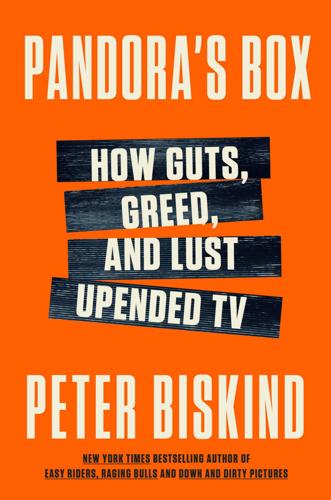
Pandora's Box: How Guts, Guile, and Greed Upended TV
by
Peter Biskind
Published 6 Nov 2023
Female prisoners, no matter what they looked like, had permission to be funny. For all Kohan’s dismissal of political correctness, Orange is steeped in contemporary, real-world conflict. In 2016, two years after Eric Garner died in a choke hold and four years before the death of George Floyd, Kohan devoted Season 4 to Black Lives Matter. Fan favorite Poussey Washington (Samira Wiley), a tiny Black woman, is crushed to death by a large white male guard who places his knee on her back. Still, in Kohan’s universe, character and the integrity of the story—that is, entertainment—come first, not issues. If the prisoners are more than their crimes, so are the most sadistic and racist guards.
…
See also good-bad girls; good-bad guys Balian, Gina, 94, 102 Ball, Alan, 37–39, 83 Baltimore Sun, 45 Band of Brothers, 70, 78, 111 Barmack, Erik, 196–197 Barnes, Van, 236 Barris, Kenya, 212, 310 basic cable, 101 Batgirl, 271 Baumbach, Noah, 90, 207 Bay, Michael, 300 Beaver, Jim, 63, 65 Beggs, Kevin, 125, 147, 199, 238 Beletsky, Monica, 223 Belloni, Matthew, 261, 272 Benioff, David, 83–88, 168–170, 212 Berney, Bob, 205, 207 Better Call Saul, 158 Beverly Hills Cop franchise, 300 Bewkes, Jeff on Albrecht’s departure, 77 awakened to streaming threat, 246 executive shuffling, 79 Fuchs on, 18 joining HBO, 18 on Netflix purchase plan, 92 position on original programming, 18 regretting sale to AT&T, 251 replacing Albrecht, 83 on The Sopranos, 33, 70 Zaslav on, 268 Bezos, Jeff, 61, 204–205, 210, 239, 241 Biden, Joe, 117 The Big C, 149 Big Little Lies, 295 Big Love, 78, 162 Big Sky, 307 Big Tech, 294 binge-watching, 193–196 Black Lives Matter, 202 Black Widow, 262, 265 Black women’s place on television, 282–283 Blackburn, Jeff, 226 Blackwell, Simon, 195 Blank, Matt, 149 Blockbuster, 137 Bloodline, 203–204 Bloys, Casey, 185–186, 251–252, 276–277, 282, 295, 303–304 Blumhouse, 272 Boardwalk Empire, 96–98, 171–172 Boardwalk Empire (Johnson), 95–96 Bochco, Steven, 3, 53 Bock, Jeff, 303 “bomb theory,” 118 Bored to Death, 78 Boyd, Jenna, 197–198 The Boys, 241 Bracco, Lorraine, 43 Braun, Lloyd, 29, 31, 32 Breaking Bad, 109, 133–137, 140.
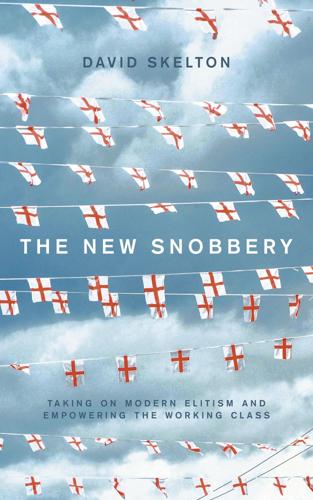
The New Snobbery
by
David Skelton
Published 28 Jun 2021
, Arts and Humanities Research Council. 27 James Heale and Chris Hastings, ‘Outrage at BBC Horrible Histories Brexit show for “trashing Britain” with song that says “your British things are from abroad and most are stolen” on day UK left EU’, Mail on Sunday, 1 February 2020. 28 ‘The Londoner: I’m not afraid of “kill whitey” joke critics, says Sophie Duker’, Evening Standard, 21 October 2020. 29 Craig Simpson, ‘Exclusive: British Library’s chief librarian claims “racism is the creation of white people”’, Daily Telegraph, 29 August 2020. 30 Adam White, ‘British Museum removes bust of slave-owning founder Sir Hans Sloane: “We have pushed him off the pedestal”’, The Independent, 25 August 2020; ‘Let’s create: strategy 2020–2030’, Arts Council England; David Sanderson, ‘Staying neutral impossible after Black Lives Matter, says National Gallery chief’, The Times, 3 November 2020; Craig Simpson, ‘William Hogarth out of favour as British cartoon museum says its displays are over-represented by “white, cisgender men”’, Daily Telegraph, 13 December 2020; ‘Tate vision 2020–25’, The Tate; Jack Malvern, ‘Kew Gardens plant signs will acknowledge links to slavery’, The Times, 11 March 2021. 31 ‘Britain’s choice: common ground and division in 2020s Britain’, More in Common, October 2020.

Futureproof: 9 Rules for Humans in the Age of Automation
by
Kevin Roose
Published 9 Mar 2021
And those of us who don’t bear the burden of code switching and room reading should try to cultivate these skills in other ways, because we’ll need them. Resting One of my favorite social media follows is an Instagram account called “The Nap Ministry.” It’s run by Tricia Hersey, a Black performance artist and poet from Atlanta, Georgia. Several years ago, while studying in divinity school during the early days of what became the Black Lives Matter movement, Hersey found herself exhausted and worn down by both her studies and the well-publicized videos of police brutality against Black people. She decided to start taking daily naps. And after observing the effect these naps were having on her mental health, she dubbed herself the “Nap Bishop,” and started The Nap Ministry, with the goal of teaching other people—and especially other emotionally exhausted Black people—about the transformative potential of taking naps.

Don't Burn This Book: Thinking for Yourself in an Age of Unreason
by
Dave Rubin
Published 27 Apr 2020
“Nine hundred and sixty-five people were shot by cops [in 2015]. [Only] four percent of them were white cops shooting unarmed blacks. Half the homicides in this country are committed by (and against) black people. Last year there were fourteen thousand homicides. Ninety-six percent of them were black-on-black. Where are the Black Lives Matter people on that?” He added: “In Chicago, in 2011, twenty-one [black] people were shot and killed by [white] cops. In 2015 there were [just] seven. [Chicago’s population] is a third black, a third white, and a third Hispanic, yet seventy percent of the homicides are black-on-black, so the idea that a racist white cop is a peril to black people is total BS.”
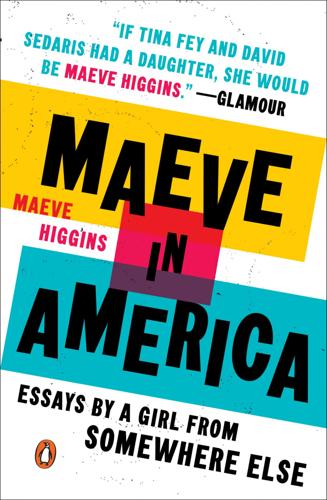
Maeve in America: Essays by a Girl From Somewhere Else
by
Maeve Higgins
Published 6 Aug 2018
In 2015, a white supremacist named Dylann Roof hoped to start a “race war” by murdering nine black people in the Emanuel African Methodist Episcopal Church, a two-hundred-year-old church that played an important role in the history of South Carolina throughout slavery, the Civil Rights movement, and the more recent Black Lives Matter movement. I used to think that the early days of immigration to the U.S. happened during a “different time,” but hatred unchecked has a way of collapsing time, trapping us all until we deal with it. I still go home for the holidays. I call Ireland home, but America is my home too. In 2016 I stood on the darkening quayside in Cobh on Christmas Eve, and looked at a statue of Annie there.
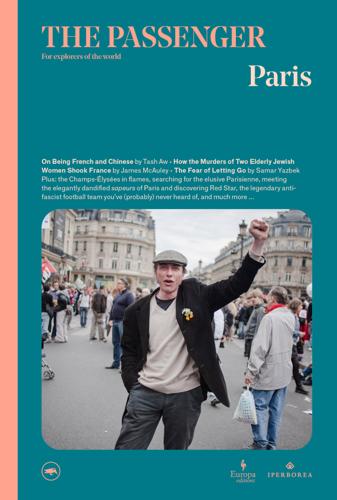
The Passenger: Paris
by
AA.VV.
Published 26 Jun 2021
In the wake of the protests that broke out in the USA following George Floyd’s death in 2020, the Comité Adama’s struggle gained resonance at a national level and beyond. Tens of thousands of people came out on the streets to protest about police violence, with banners repeating the slogans seen in the USA: ‘BLM – Black Lives Matter’ and ‘Je n’arrive plus a respirer’ (‘I can’t breathe’), the last words of both Adama and George Floyd. ‘Walter Benjamin wrote in The Arcades Project that the “mighty seek to secure their position with blood (police), with cunning (fashion), with magic (pomp)”. The Champs-Élysées is a concentrate of these three ingredients.’
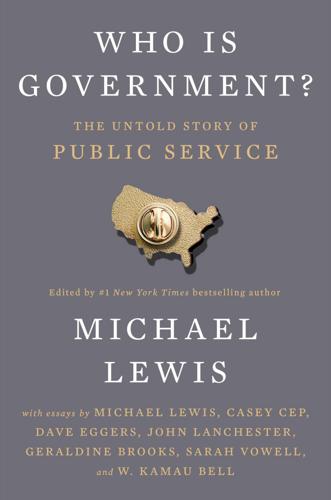
Who Is Government?: The Untold Story of Public Service
by
Michael Lewis
Published 18 Mar 2025
And growing up in Oakland, a child—especially a Black child—can’t help but be politicized. Her elementary school taught the history of Oakland’s Black Panther Party, featuring a visit from former BPP leader and Oakland resident Ericka Huggins. In 2013, Oakland’s own Alicia Garza co-founded the 21st-century civil rights movement Black Lives Matter. And then in 2015, marriage equality became the law of the land. “When the Supreme Court announced that gay marriage was going to be legalized, it was late June 2015. And my family, we were at home, but we ran out into the street, and it was Pride Month. So someone had painted the crosswalk rainbow.
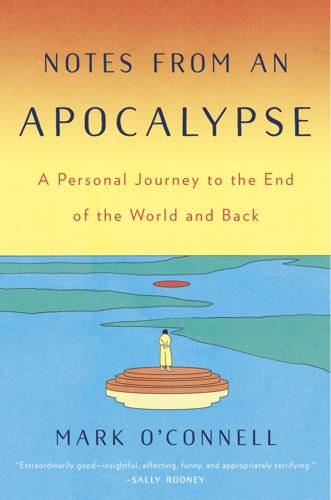
Notes From an Apocalypse: A Personal Journey to the End of the World and Back
by
Mark O'Connell
Published 13 Apr 2020
Example: in the immediate aftermath of the civil unrest in Baltimore, a website called The Prepper Journal posted an article whose title posed the presumably rhetorical question “What Would a WROL World Look Like?” If the photograph that appeared on top of the post could be taken as its own kind of answer, a WROL world would look like a group of young black men, hooded and masked, jumping on the roof of a police cruiser. The article itself never mentioned Baltimore or Freddie Gray or the Black Lives Matter movement, but the photograph’s provenance was obvious. (The side of the police car, for one thing, bore the words “Baltimore Police.”) Farther down the page was another lawlessness-themed photo, depicting a hooded black man in the act of hurling an unseen object, behind him a parked car engulfed in flames.
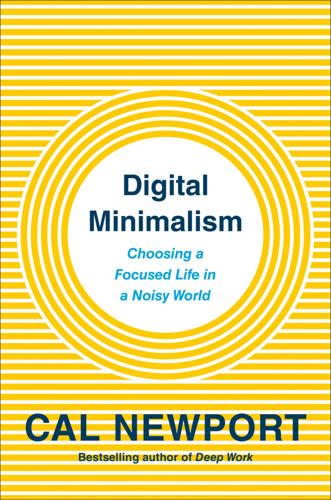
Digital Minimalism: Choosing a Focused Life in a Noisy World
by
Cal Newport
Published 5 Feb 2019
In some cases, Jennifer will deploy a desktop tool called TweetDeck to aid this process. TweetDeck allows them to perform sophisticated searches to better understand Twitter trends. One important search function provided by this tool, for example, is thresholding. Here’s how Jennifer explains it: I can search for a certain topic, say Black Lives Matter, and then set a threshold in TweetDeck that allows me to listen to this topic, but only see tweets with 50 likes or retweets. I can then refine this and say just show me the verified accounts. Thresholding is just one type of advanced search allowed by TweetDeck, and TweetDeck is just one tool among many that allow this style of more advanced filtering (for this purpose, big companies often rely on expensive software suites that integrate with their customer relationship management systems).
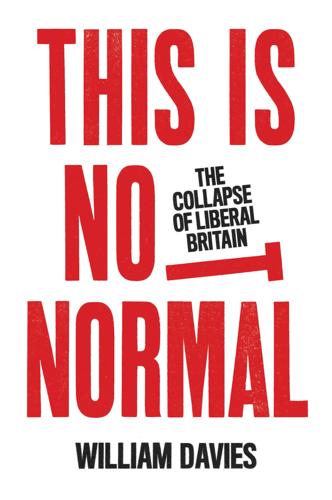
This Is Not Normal: The Collapse of Liberal Britain
by
William Davies
Published 28 Sep 2020
And yet by summer 2020, with public trust in government’s handling of the crisis plummeting (especially in the honesty of their information), the scale of the social, economic and racial crises across British – and especially English – society was more than government propaganda could hide.1 As Johnson and his band of Brexiteers set about attacking the institutions of the liberal establishment, they themselves had precious few alternative grounds for legitimacy, beyond the best efforts of a desperately struggling print media industry. In the summer of 2020, the Black Lives Matter protests, and the accompanying reckoning of historic institutions and wealth, brought an extraordinary flowering of political expression and criticism. Surreally, in the context of an ongoing lockdown of much of the economy and public space, new protest movements filled the void, where previously there were the rigours and routines of everyday capitalist society.
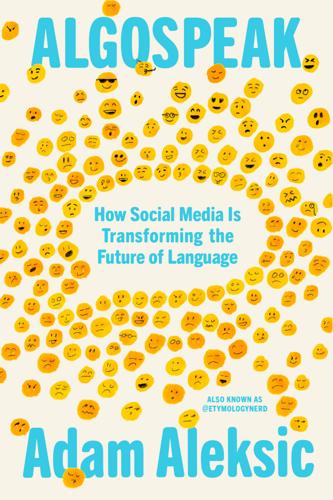
Algospeak: How Social Media Is Transforming the Future of Language
by
Adam Aleksic
Published 15 Jul 2025
People began replacing the flag with the watermelon emoji, , in reference to its historical representation of Palestine during the Six-Day War. Due to its similar colors to the Palestinian flag, the emoji became a widespread symbol of solidarity and defiance. Starting primarily with the 2020 Black Lives Matter protests, creators talking about race have similarly been abstracting their language online. It can be risky to say the words “Black” or “white,” since TikTok has a policy suppressing or removing videos “exaggerating the ethnic conflict between black and white.” Instead, influencers find loopholes like spelling “white” as “yt” and using the emoji.

Whiplash: How to Survive Our Faster Future
by
Joi Ito
and
Jeff Howe
Published 6 Dec 2016
But the largest chunk, by far, would seem to be dead, victims of heart disease and diabetes and the worst epidemic of all, homicide, which may have accounted for a sobering two hundred thousand dead black men in the age bracket demographers rightly call “prime age.” The median black woman in America is likely to live in a community in which there are only forty-three men for every sixty-seven women. The gender gap is worst, the Times discovered, in Ferguson, Missouri—the same community that became the locus of the Black Lives Matter movement after a police officer killed an unarmed black teenager in 2014. The gap is also greater in North Charleston, where the police killed an African American suspect, Walter Scott, also unarmed, as he tried to run away. Taking so many people out of circulation cripples communities that are often already facing challenges to their schools, businesses, and social structure.

Cogs and Monsters: What Economics Is, and What It Should Be
by
Diane Coyle
Published 11 Oct 2021
From first discussions in April, it was launched on 1 June and had posted 100 articles summarising a vast amount of old research and new Covid19-related research by mid-August. Similar co-operative initiatives occurred across the global economics profession. What about the internal challenges, described in the Introduction? The Black Lives Matter protests in 2020 put real energy into the debate, both about the lack of diversity among economists and the monoculture of the top journals and departments. But the energy will need to be sustained to bring about significant and lasting culture change. As I have argued through this book, economics and economists shape the economy and society through their ideas and their influence on policy decisions.
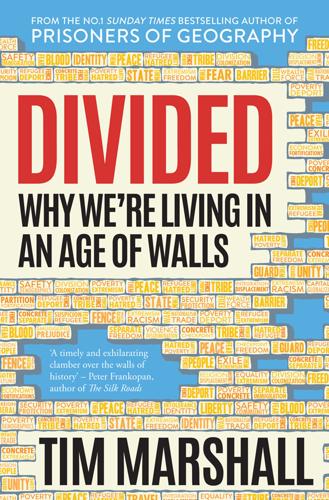
Divided: Why We're Living in an Age of Walls
by
Tim Marshall
Published 8 Mar 2018
No wonder the life expectancy of black Americans is four years less than that of whites. Together with a number of shootings of unarmed black men in recent years, these stark figures have caused unrest and protests across the country – for example the riots in Ferguson in 2014 – and have given rise to movements such as Black Lives Matter. And with the reactions of both officials and communities under great scrutiny in the aftermath of each incident, this has become an increasingly divisive issue. The stats highlighting the problems are easy to find. Explaining their cause is more difficult, but it is clear that racism still plays a part in American society.

Worth Dying For: The Power and Politics of Flags
by
Tim Marshall
Published 21 Sep 2016
The flag is still sometimes used to express the belief that there is something rotten in the state as well as something great. For example, in May 2016 anti-Donald Trump activists burnt the Stars and Stripes outside a Trump rally in Albuquerque, New Mexico, and several have been desecrated at ‘Black Lives Matter’ rallies. But to reconcile these different aspects is not so difficult: there are many positives to the American way of life. Like people everywhere, the flag’s unique symbolism, its aspirations, speak to Americans, as national flags do to people everywhere; just because the country, the world, is not perfect, it doesn’t mean you can’t dream.
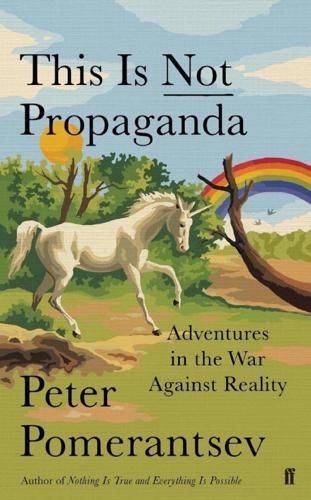
This Is Not Propaganda: Adventures in the War Against Reality
by
Peter Pomerantsev
Published 29 Jul 2019
When authoritarians create their own versions of protests, the effect is almost satirical, taunting and undermining the originals. Two could play at people protests, Moscow seemed to be saying. In America one of the tricks of the St Petersburg troll farm was to take on the personas of American civil liberties campaigns – Black Lives Matter, for instance – and then use them to raise the vote for the more pro-Russian presidential candidate, Donald Trump, or depress it for his rivals. The troll farm even organised protests in US cities, both for and against Trump, each chanting against the other. One protest in particular reminded me of a really crap copy of Srdja’s political street theatre: when a troll posing as a Donald Trump supporter in a fake Facebook group called Being Patriotic convinced a woman in Florida to hire an actor to wear a rubber Hillary Clinton mask and then lock the actor in a makeshift jail cell and wheel them about as if in a carnival procession.19 And it’s when the Kremlin’s efforts are unveiled that they have perhaps their most significant effect.

The New Nomads: How the Migration Revolution Is Making the World a Better Place
by
Felix Marquardt
Published 7 Jul 2021
Biteback (2019). 2 https://www.independent.co.uk/news/uk/politics/british-emigrants-europe-continental-brexit-deal-latest-leave-uk-a9166136.html 3 https://bibliothek.wzb.eu/pdf/2020/vi20-102.pdf 4 The eighteen-year-old, unarmed African American whose death after being shot by police in Fergusson, Missouri, led to prolonged unrest and the national recognition of the Black Lives Matter movement. 5 https://www.nytimes.com/2015/03/01/opinion/sunday/the-next-great-migration.html 5. Get Out! 1 ‘The Best Hope for France’s Young? Get Out.’ New York Times (29 June 2013). 2 See also Ronald Lee and Andrew Mason, ‘Population Aging and the Generational Economy – A Global Perspective’. 3 As in ‘all about the Benjamins’ – the face of Benjamin Franklin adorns American hundred-dollar bills; Mao Zedong’s adorns hundred-yuan bank notes. 4 ‘India is not being overrun by immigrants.’

How Boards Work: And How They Can Work Better in a Chaotic World
by
Dambisa Moyo
Published 3 May 2021
And there is a credible sense that the frequency of corporate mishaps and malfeasance in the years following the 2008 financial crash has far surpassed that of the previous decade. This backdrop has galvanized a growing sense that global businesses are self-interested, corrupt, and do not work for much of society. The anti-corporate spirit has inspired employee revolts and environmental activism, and it has even influenced movements such as Black Lives Matter and #MeToo, the latter of which is estimated to have ousted over four hundred high-profile executives within an eighteen-month period. The last two decades of business history are littered with examples of challenged and even disgraced companies. Boeing, Enron, General Electric, Kmart, PG&E, Theranos, the Weinstein Company, WeWork, and WorldCom are just a handful of the many corporations left in ill repute, their financial value decimated and the reputations of their leaders indelibly stained.

Uprooting: From the Caribbean to the Countryside - Finding Home in an English Country Garden
by
Marchelle Farrell
Published 2 Aug 2023
A fellow villager has painted their gate in the colours of the rainbow, the symbol that has been co-opted in the last few months as one of gratitude for the sacrifices of healthcare workers in the NHS. But now over the rainbow has appeared a large sign in black and white, speaking loudly into the surrounding quiet: BLACK LIVES MATTER. I am overcome. Isolated in this new place, I had projected my rage at all the past hurt I had borne onto this stereo-typical English village, easily done when the honey stone stood impassively silent. My sweeping assumptions were wrong. I feel vulnerable, a lifetime’s defences shattered. I turn and walk home, stumbling back past the hibiscushollyhocks, unseeing through my tears.

The Power Law: Venture Capital and the Making of the New Future
by
Sebastian Mallaby
Published 1 Feb 2022
They make up 4 percent of venture partners, even though they account for 17 percent of the workforce and 11.4 percent of financial managers.[24] Not only is this inequitable; it constrains economic progress. Talented people are being denied an opportunity to contribute to innovation. On one reckoning, U.S. GDP would be more than 2 percent higher if this failing were addressed.[25] In the wake of the Black Lives Matter protests of 2020, a few venture leaders promised to do better. Andreessen Horowitz set up a program to train and fund a small number of founders from atypical backgrounds. “Being equal before the law, but unequal before law enforcement, is atrocious,” the partnership said firmly.[26] First Round Capital, one of the seed investors that backed Uber, declared that its next partner should be Black.
…
See also Amazon Google, 179–80, 184, 186 Kalanick and Uber, 353 power law and, 7 Trump’s criticism of, 402 Big Tech, 15, 380, 388 Bill, Jobs., 82 BlackBerry, 331 Black Lives Matter, 385 “blitzscaling,” 357, 362, 364, 385–88 Blue Box, 110–11 Bochner, Steve, 329 Boeing, 12, 395 Bohemian Grove, 92 Bolger, John, 116 Bonderman, David, 358, 360, 362–63, 367 Bono, 19, 20 “book value,” 47.

The Code: Silicon Valley and the Remaking of America
by
Margaret O'Mara
Published 8 Jul 2019
Both Facebook and Twitter, a social platform originally designed for 140-word “microblog” status updates, became powerful mechanisms for political organizing and communication during the Arab Spring and Occupy Wall Street movements of 2011. Twitter swiftly gained a disproportionate number of African American users and “Black Twitter” became a powerful platform for both civic activism and cultural exchange; the most powerful racial justice movement of the century’s second decade, Black Lives Matter, began as a Twitter hashtag. And in the 2008 and 2012 presidential races, candidates used social networking as a powerful tool to reach sharply targeted groups of likely voters, as well as providing the ultimate free-media platform for unfiltered campaign messaging.27 Few did this earlier and better than Barack Obama.
…
Heather Brown, Emily Guskin, and Amy Mitchell, “The Role of Social Media in the Arab Uprisings,” Pew Research Center, November 28, 2012; Benjamin Gleason, “#Occupy Wall Street: Exploring Informal Learning About a Social Movement on Twitter,” American Behavioral Scientist 57, no. 7 (2013): 966–82; André Brock, “From the Blackhand Side: Twitter as a Cultural Conversation,” Journal of Broadcasting and Electronic Media 56, no. 4 (2012): 529–49; Russell Rickford, “Black Lives Matter: Toward a Modern Practice of Mass Struggle,” New Labor Forum 25, no. 1 (2016): 34–42. 28. Joshua Green, “The Amazing Money Machine,” The Atlantic, June 1, 2008, https://www.theatlantic.com/magazine/archive/2008/06/the-amazing-money-machine/306809/, archived at https://perma.cc/V67S-PX4W; Brian Stelter, “The Facebooker Who Friended Obama,” The New York Times, July 7, 2008, https://www.nytimes.com/2008/07/07/technology/07hughes.html, archived at https://perma.cc/U74U-XQ7Z [inactive]. 29.
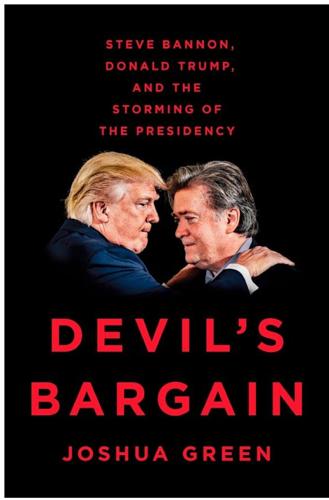
Devil's Bargain: Steve Bannon, Donald Trump, and the Storming of the Presidency
by
Joshua Green
Published 17 Jul 2017
Perhaps even more favorable-looking right now than some other places we’ve been on TV.” Clinton’s plan all along was to reactivate the same coalition of Democratic-leaning groups that had twice delivered Barack Obama to the White House: young people, minorities, and suburban women. That’s why she embraced the Black Lives Matter movement and vowed to protect from deportation a larger segment of the illegal immigrant community than Obama had. And if she could also carry states like Arizona that Obama hadn’t won, then her electoral mandate would be that much bigger. — The reason Clinton’s moves so puzzled the Trump campaign is that just before she traveled to Arizona, Trump’s data analysts had become convinced, based on absentee ballots and early voting, that the people who were going to show up on Election Day would be older, whiter, more rural, and more populist than almost anyone else believed—so they re-weighted their predictive models to reflect a different electorate.
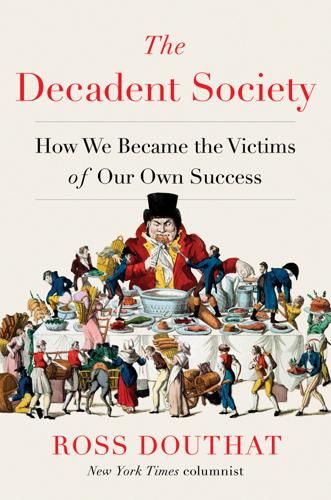
The Decadent Society: How We Became the Victims of Our Own Success
by
Ross Douthat
Published 25 Feb 2020
Church attendance rates declined dramatically across the 1960s, mostly driven by Catholicism’s crisis after the Second Vatican Council; they have declined at most marginally since the 1980s, and Protestant churchgoing has not declined at all. Against these backdrops, the similarities between the Clarence Thomas Supreme Court confirmation fight in 1991 and the 2018 Brett Kavanaugh confirmation fight, between the current Black Lives Matter moment and the O. J. Simpson– and Rodney King–era debates about police brutality in the mid-1990s, between abortion debates in 1990 and the abortion debate today—even between the sexual scandals of Donald Trump and the sexual scandals of Bill Clinton (albeit with the parties supporting the priapist reversed)—are not coincidental.

Scary Smart: The Future of Artificial Intelligence and How You Can Save Our World
by
Mo Gawdat
Published 29 Sep 2021
The focus of humanity, especially in advanced societies, has shifted away from adhering to the moral code to adhering to the legal code, or simply to getting away with it. So the killing of George Floyd, among thousands of other offences against people of colour, becomes the norm as long as it is not caught on camera. And the looting by angry protestors during the Black Lives Matter protests shows that if you’re masked and won’t be caught, it becomes easier to justify to oneself that stealing from the rich guy is okay. Sadly, we try to forget that . . . . . . being legal is not always ethical. I am certain that my little rant here will not change humankind any time soon.
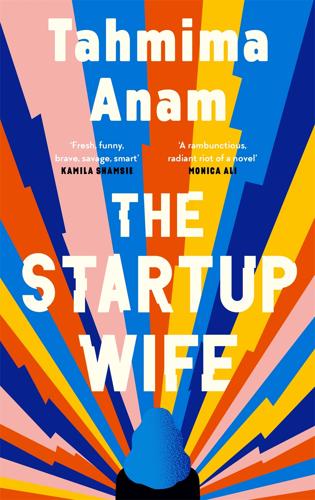
The Startup Wife
by
Tahmima Anam
Published 2 Jun 2021
We have been offered money at sky-high valuations, and when people cotton on to the fact that Cyrus is not swayed by money, they start bigging up their other forms of cred. We are now up to 2 percent, Woke VC tells us proudly. A full 2 percent of their funds go to minority women. They donate to Black Lives Matter. They’re all Democrats. Some of them are even socialists. Would Cyrus like to meet AOC? Cyrus is still busy doing Cyrusy things. He attends the Mami Wata Society the first Friday of the month. The Athena Club every alternate Saturday. He has become friendly with a group of Shinto priests. Comic-Con is a big commitment, because so many people on the platform ask for superhero rituals.
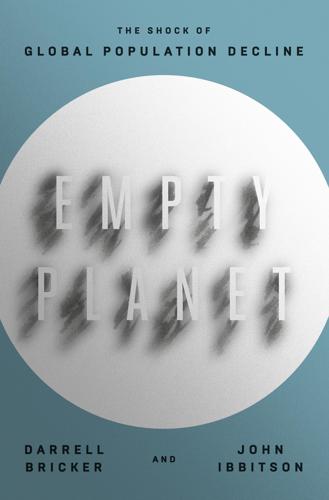
Empty Planet: The Shock of Global Population Decline
by
Darrell Bricker
and
John Ibbitson
Published 5 Feb 2019
Governments and doctors are making contraception easier to obtain, and use of the morning-after pill has increased substantially in recent years.335 Growing affluence among African Americans could also be a cause. Many studies report that teens delay sex and practice it more safely if they feel close to their parents. That means they have a stable situation at home, and that suggests financial security. Even as controversy surrounds police shootings of African Americans and the protests of the Black Lives Matter movement, life for black Americans has been getting steadily better.336 We don’t want to overstate the case. The net worth of an average black family is 6 percent of that of the average white family, largely because black families are more likely to rent than to own, and home ownership is how Americans typically accumulate much of their wealth.337 The black unemployment rate is twice that of whites.
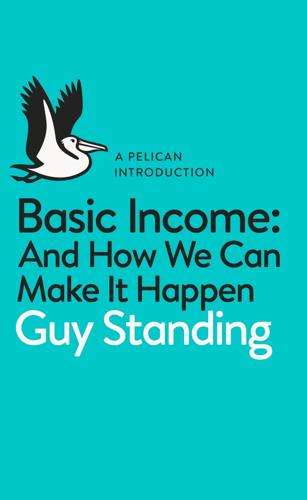
A Pelican Introduction: Basic Income
by
Guy Standing
Published 3 May 2017
Complementing the existing US Basic Income Guarantee Network (USBIG), which primarily promotes research and information, the NCBI has been set up as a ‘527’ organization under the US tax code, which enables it to engage in direct political action with the aim of building political coalitions to influence elections and policymaking.3 The former US trade union leader Andy Stern has also mused that political pressure could be built up by the equivalent of the Townsend Clubs that mobilized support for Social Security in the 1930s.4 And he hopes that some city mayors or state governors will ask for federal waivers to stage pilots. A report by the National League of Cities, which represents 19,000 US cities and towns, has recommended that cities investigate basic income.5 Meanwhile, a newly influential movement, Black Lives Matter, allying over fifty organizations, issued an ‘official platform’ in August 2016 that included a demand for a universal basic income (UBI). It also argued for an additional amount (a sort of UBI+) to be paid to black Americans as reparation for the harms of colonialism, slavery and the mass incarceration of mainly young black men in modern times.
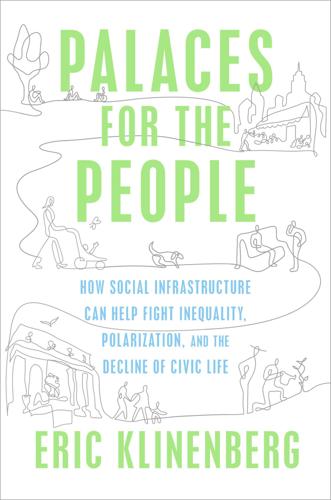
Palaces for the People: How Social Infrastructure Can Help Fight Inequality, Polarization, and the Decline of Civic Life
by
Eric Klinenberg
Published 10 Sep 2018
In the United States, the presidential election of 2016 was an especially disturbing example of political polarization, and the long campaign exposed social chasms far deeper than even the most worried experts had recognized. The language of red and blue states seems too weak to describe America’s splintered cultural and political geography. The oppositions are not merely ideological, and the divisions run deeper than Trump vs. Clinton, Black Lives Matter vs. Blue Lives Matter, Save the Planet vs. Drill, Baby, Drill. Across America, people complain that their communities feel weaker, that they spend more time on their devices and less time with one another, that schools and sports teams and workplaces have become unbearably competitive, that insecurity is rampant, that the future is uncertain and in some places bleak.
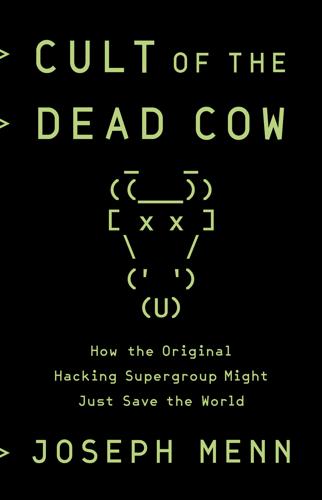
Cult of the Dead Cow: How the Original Hacking Supergroup Might Just Save the World
by
Joseph Menn
Published 3 Jun 2019
Taking advantage of its loose structure, ordinary criminals used a group protest of Sony Corporation policies to break in and steal credit card numbers. Russia also had a substantial presence in Anonymous. In retrospect, it is interesting that some Anonymous members would later go on Moscow’s payroll. One of them, Cassandra Fairbanks, moved from real-world Anonymous demonstrations, to attending and writing about Black Lives Matter protests, to avidly supporting Bernie Sanders in the 2016 primaries. With more than a hundred thousand Twitter followers, she then took a job at the Russian propaganda outlet Sputnik and switched to full-throated support for Trump through the 2016 general election and afterward. Just before the November vote, she appeared on Alex Jones’s YouTube conspiracy channel, saying it was “pretty likely” that emails hacked from Hillary Clinton campaign chair John Podesta’s Gmail account contained coded references to pedophilia.

Brave New Work: Are You Ready to Reinvent Your Organization?
by
Aaron Dignan
Published 1 Feb 2019
In the course of writing this book I’ve been introduced to dozens of cases and cultures that deserve to be recognized, and I’m convinced that there are hundreds (or even thousands) more out there. So if you know of, or participate in an Evolutionary Organization, I invite you to visit BraveNewWork.com and share your story with the rest of us. Evolutionary Organizations AES Askinosie Chocolate Automattic Basecamp Black Lives Matter Blinkist Bridgewater Buffer Burning Man Buurtzorg BvdV charity: water Crisp David Allen Company dm-drogerie markt elbdudler Endenburg Elektrotechniek Enspiral Equinor Evangelical School Berlin Centre Everlane FAVI Gini GitLab Gumroad Haier Handelsbanken Haufe-umantis Heiligenfeld Hengeler Mueller Herman Miller HolacracyOne Ian Martin Group / Fitzii Incentro John Lewis Joint Special Operations Command Kickstarter Lumiar Schools Medium Menlo Innovations Mondragon Morning Star Nearsoft Netflix Nucor Orpheus Chamber Orchestra Patagonia Phelps Agency Pixar Premium-Cola Promon Group Red Hat School in the Cloud Schuberg Philis Semco Group Spotify stok Sun Hydraulics Treehouse USS Santa Fe Valve Whole Foods W.
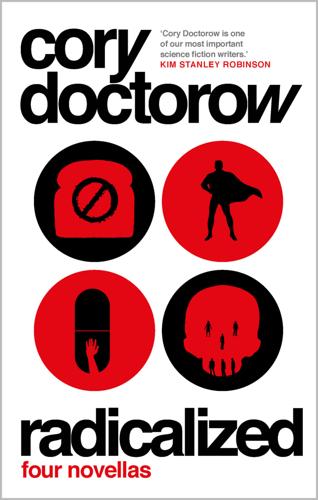
Radicalized
by
Cory Doctorow
Published 19 Mar 2019
They were just hinting now, not giving DamFool the hard sell. That would come after Tommy’s demise. Right now, they were just getting him in position. Joe had seen the playbook before. It was his cue to dive in with a highly symbolic and largely ornamental bid to save his soul. Joe just couldn’t. He’d been reading these op-eds by Black Lives Matter activists about the official neglect that people with sickle cell anemia endured, stories about agonized teenagers being tied to hospital beds and told to stop shouting if they wanted to get untied. The general tenor was that the whites who’d suddenly decided that the health-care system was too sick to live were late to the party, and by the way, let me tell you a little story about the Tuskegee airmen.
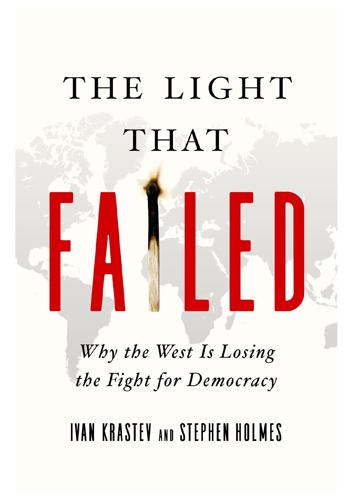
The Light That Failed: A Reckoning
by
Ivan Krastev
and
Stephen Holmes
Published 31 Oct 2019
Lee meant his film to be a sardonic reply to this event, where marchers notoriously announced their fear of identity theft by chanting ‘Jews will not replace us!’93 But the rallying cry that best summarizes the populist attack on political correctness in America is ‘White Lives Matter’. A mirror-image of the Black Lives Matter slogan used to protest repeated police killings of young black males, it is a classic example of racism mimicking anti-racism for racist ends.94 The left’s perceived coddling of marginalized minorities apparently triggered a counter-reaction among many economically distressed voters who claimed victim status for their own white nationalist identity in turn.

Conflicted: How Productive Disagreements Lead to Better Outcomes
by
Ian Leslie
Published 23 Feb 2021
Police–civilian encounters are often tense and can quickly become confrontational, which is why de-escalation is considered an increasingly important skill. To find out how it is taught I travelled to Tennessee, where the Memphis police department, under its African American director, Michael Rallings, has been leading the way. In 2016, a Black Lives Matter rally blocked a bridge in Memphis for several hours. Rallings persuaded them to clear the way without the threat of force, linking arms with protesters as they left. For three days, I shared a room at the Memphis Police Academy with around twenty cops, most of them experienced officers. They were a mix of white, African American, and Asian American men and women, all of them eager to learn.
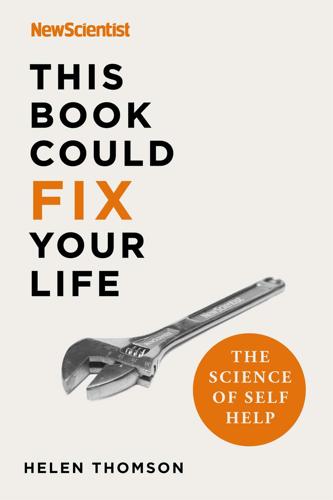
This Book Could Fix Your Life: The Science of Self Help
by
New Scientist
and
Helen Thomson
Published 7 Jan 2021
This is especially true of your parents: when it comes to their opinion of you, take anything they say with a large pinch of salt. HOW TO AVOID UNCONSCIOUS BIAS The death of George Floyd under the knee of a police officer in Minneapolis in May 2020 shook the world to attention and gave a new impetus to the Black Lives Matter movement, but it was no isolated incident. Every day there are stories of people being treated with suspicion – or far worse – based on their skin colour while going about their daily lives. This is in spite of the fact that, for the past 40 years, opinion polls show a steady decline in racist views in the United States, the UK and other countries.
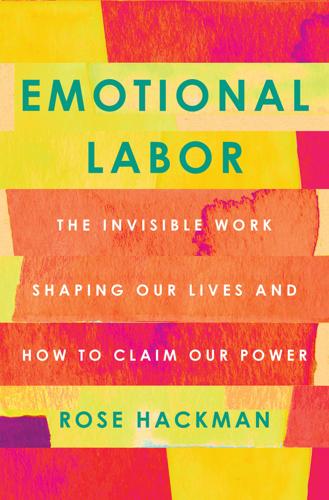
Emotional Labor: The Invisible Work Shaping Our Lives and How to Claim Our Power
by
Rose Hackman
Published 27 Mar 2023
Jimmie grew up in Ferguson, Missouri, four decades before the small suburb of St. Louis made international headlines after white police officer Darren Wilson shot and killed unarmed Black teenager Michael Brown in 2014, sparking nationwide protests and contributing to the modern-day beginning of the Black Lives Matter movement. Jimmie’s father was emotionally and physically abusive toward him, behavior Jimmie specifically pins as a reaction to his not fulfilling traditional ideals of masculinity from an early age. He was the sensitive, short, chubby kid with glasses, he tells me, and his father loved to ridicule him for it in front of others.

Restarting the Future: How to Fix the Intangible Economy
by
Jonathan Haskel
and
Stian Westlake
Published 4 Apr 2022
So, for example, the British government elected in 2019 has suggested that it will accelerate investments in mass transit in larger English cities outside London, where its lack had probably been reducing agglomeration benefits. It remains to be seen whether the government will make good on this promise, but it certainly seems that it has decided to commit more political capital to the issue than previous governments did. Equally, the 2020 Black Lives Matter protests in the United States, which have cast light on the power of police unions and the extensive legal protections that some police forces enjoy, may have the effect of mobilising enough opposition to have them reduced. As the case for improving city institutions strengthens, politicians may be more willing to spend political capital on it.

Bully Market: My Story of Money and Misogyny at Goldman Sachs
by
Jamie Fiore Higgins
Published 29 Aug 2022
“So, these make up a story about your life at work?” Beth observed. I peered into the box at the stack of the other journals and smiled. “Yeah, that’s what they are,” I said. “The story of when I worked at Goldman Sachs.” EPILOGUE I left Goldman Sachs in 2016, before the “Me Too” movement, Black Lives Matter, and other progress we’ve made in society. Some readers might consider that an eternity ago, and say, “Well that was then, and this is now.” But that would be naïve. While cases of misogyny and racism and inequality might not be as overt as they used to be, I’m sure the underlying culture has not changed much.
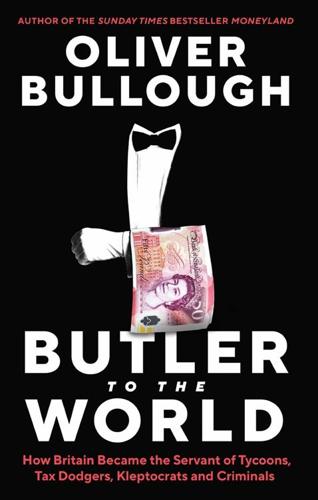
Butler to the World: How Britain Became the Servant of Tycoons, Tax Dodgers, Kleptocrats and Criminals
by
Oliver Bullough
Published 10 Mar 2022
With brains like his, he could succeed at almost anything, but he devotes himself exclusively to helping the very rich to escape the consequences of their actions, while earning a nice living – over and above his salary – from their tips. Over the last few years Britons have taken to arguing about who should represent us and, by extension, who we should be proud of. Imperialist Cecil Rhodes has attracted the most attention thanks to a statue in Oxford, but he is only the beginning. When Black Lives Matter protesters threw a statue of the slave trader Edward Colston into Bristol harbour, far right activists stood guard around statues of Winston Churchill, Robert Peel and other long-dead politicians. The BBC has erected a statue to George Orwell outside its headquarters to commemorate a different kind of Britain, one of scepticism and progressive values, although that provoked an argument over whether he was too left wing.
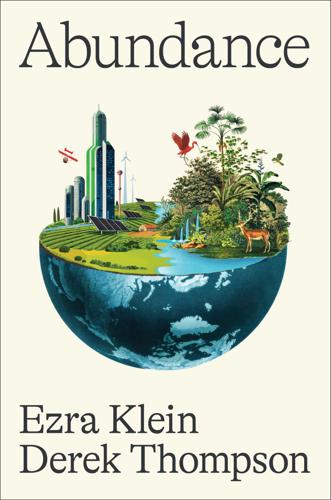
Abundance
by
Ezra Klein
and
Derek Thompson
Published 18 Mar 2025
This dynamic is so well known, so easy to see, that we miss how often it gets reality backward. In many blue states, voters exhibit the same split political personality, but in reverse: they are symbolically liberal but operationally conservative. In much of San Francisco, you can’t walk twenty feet without seeing a multicolored sign declaring that Black Lives Matter, Kindness Is Everything, and No Human Being Is Illegal. Those signs sit in yards zoned for single families, in communities that organize against efforts to add the new homes that would bring those values closer to reality. San Francisco’s Black population has fallen in every Census count since 1970.

Beautiful Solutions: A Toolbox for Liberation
by
Elandria Williams, Eli Feghali, Rachel Plattus
and
Nathan Schneider
Published 15 Dec 2024
LEARN MORE WEBSITE Restorative Practices Aotearoa Facebook page. facebook.com/RestorativePracticesAotearoa DOCUMENTARY Restoring Hope by Notable Pictures. (2013) nzonscreen.com/title/restoring-hope-2013 VIDEO “PB4L Restorative Practice in Aotearoa NZ Schools” by Moana Emett. (2020) youtu.be/KCHJ7t6A6p8 SOLUTION COMMUNITY SAFETY Sign reading “Defund The Police” at a Black Lives Matter demonstration in 2020. Photo by Taymaz Valley (CC BY 2.0). OVERVIEW People who have experienced violence and abuse from police and within their communities have adopted creative ways of addressing their needs for safety. Movements for community safety address violence without relying upon police or prisons.
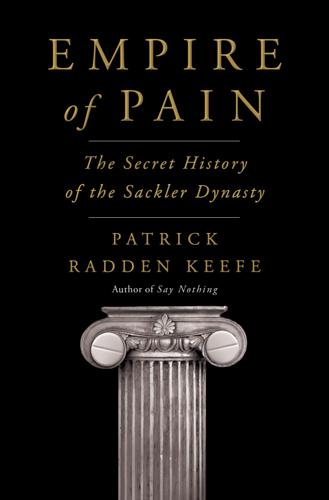
Empire of Pain: The Secret History of the Sackler Dynasty
by
Patrick Radden Keefe
Published 12 Apr 2021
As a consequence, the film is “fundamentally flawed,” Wright concluded, “because there is something incredibly fraudulent about that, and deceptive.” When O.G. premiered, Madeleine made an appearance on the red carpet in an elegant all-black ensemble and was celebrated at parties. She posed for photographs with the former Obama administration official and CNN personality Van Jones and with the Black Lives Matter activist Shaun King. Before the premiere, Wright had sent Madeleine an email, praising the “honesty and openness” of the men in her documentary. But there is an “elephant” in the room, he wrote. “You’ve provided a tremendous gift to those men. Something the likes of which they’ve rarely, if ever, been given.”
…
But they would not make any statements on the record expressing even the slightest criticism of the business decisions of the other branches of the family. After this new wave of publicity, that changed. Elizabeth Sackler, who had endowed the Elizabeth A. Sackler Center for Feminist Art at the Brooklyn Museum and maintained a Twitter feed full of urgent exclamations about the perfidy of Donald Trump and her allegiance to Black Lives Matter, belatedly made a statement in which she distanced herself from her cousins. In an interview with the website Hyperallergic, she said that Purdue’s role in the opioid crisis “is morally abhorrent to me.” Her father died in 1987, she pointed out, long before the introduction of OxyContin, and she and her siblings had agreed to sell their one-third stake in Purdue to her uncles soon thereafter.
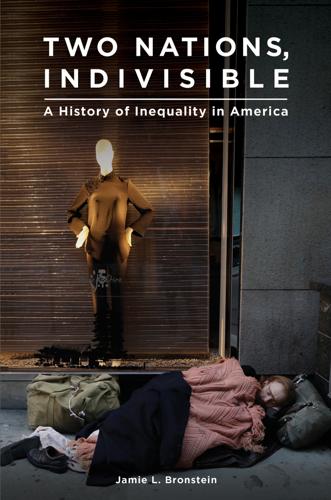
Two Nations, Indivisible: A History of Inequality in America: A History of Inequality in America
by
Jamie Bronstein
Published 29 Oct 2016
The last chapter of this book examines the sources of the Great Recession that began in 2007, and the structural features that continue to widen the income and wealth gaps in the United States. As middle-class people fell farther behind, discontent manifested in the Occupy Wall Street movement on the left of the political spectrum, but also in the Tea Party movement on the right and the Black Lives Matter movement, a movement about class and opportunity as well as about race. During the 2016 presidential race, the Republican candidate Donald Trump advocated policies he claimed would promote prosperity for American workers, like immigration restriction and protectionism. Given the long history of inequality in the United States, and the polarization of legislative politics at every level, the prospect for reform seems dim, but proposals have included criminal justice reform, a basic income guarantee, free college education, or the government as the employer of last resort.
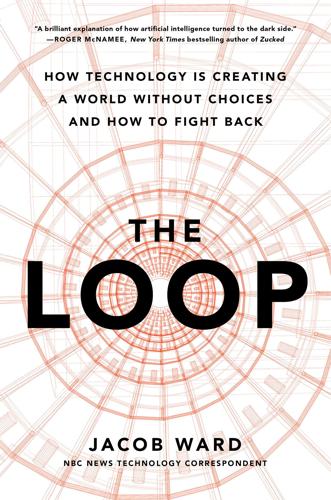
The Loop: How Technology Is Creating a World Without Choices and How to Fight Back
by
Jacob Ward
Published 25 Jan 2022
But his life was changed forever: even if he goes through a lengthy and difficult process of having his record expunged, his arrest could still come up in any future background search or job-application paperwork. It turns out anyone who has ever posted their face on social media has essentially fed it into a public database for the police to use. The same month I spoke with Williams, New York activist Derrick Ingram joined a Manhattan Black Lives Matter protest on the occasion of Donald Trump’s birthday. Ingram, who goes by D-Wreck, had regularly protested in high school, then fell out of the habit in his early twenties. Now he was back, with powerful feelings and a bullhorn. “That passion and anger came out on the megaphone that day,” he told me from the courtyard of his apartment building.
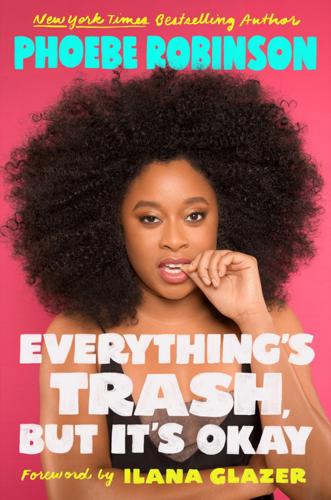
Everything's Trash, but It's Okay
by
Phoebe Robinson
Published 15 Oct 2018
But my hunch is “zaddy” came about because there are folks, myself included, who don’t like calling men “Daddy” in a sexual manner, so a “z” was slapped on as a replacement to make things better, kind of like when Michelle Williams replaced LaTavia Roberson and LeToya Luckett in Destiny’s Child or the creation of Smartfood Delight, which is allegedly a healthier version of Smartfood popcorn that somehow tastes just as good. #LolForever #FakeNews * Yes, “woke” is omnipresent thanks to exemplary people such as Black Lives Matter and LGBTQIA+ activists working to make the world better, but there’s a subset of wokeness that’s not talked about as much—“diet woke.” A d-dubs person is usually #TeamDoGooder in the sheets (thanks, social media warriors) and #TeamThisIsGonnaInconvenienceALittleBit #HmmLemmeGetBackToYou in the streets.
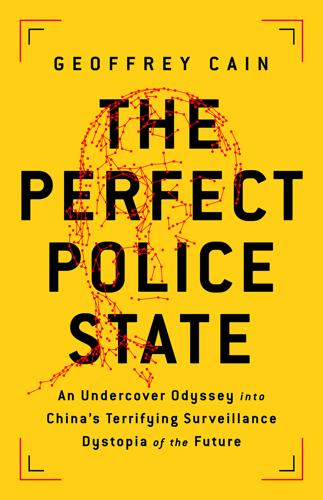
The Perfect Police State: An Undercover Odyssey Into China's Terrifying Surveillance Dystopia of the Future
by
Geoffrey Cain
Published 28 Jun 2021
Blacklist to Meet Thermal Camera Needs,” Reuters, April 29, 2020, https://www.reuters.com/article/us-health-coronavirus-amazon-com-cameras-idUSKBN22B1AL. 17. Sam Biddle, “Police Surveilled George Floyd Protests with Help from Twitter-Affiliated Startup Dataminr,” Intercept, July 9, 2020, https://theintercept.com/2020/07/09/twitter-dataminr-police-spy-surveillance-black-lives-matter-protests/. 18. IBM, “IBM CEO’s Letter to Congress on Racial Justice Reform,” June 8, 2020, https://www.ibm.com/blogs/policy/facial-recognition-sunset-racial-justice-reforms/. 19. Amazon, “We Are Implementing a One-Year Moratorium on Police Use of ReKognition,” June 10, 2020, https://www.aboutamazon.com/news/policy-news-views/we-are-implementing-a-one-year-moratorium-on-police-use-of-rekognition. 20.
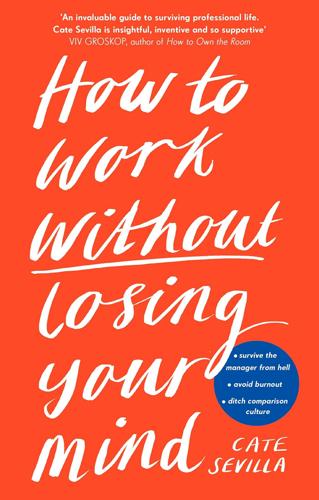
How to Work Without Losing Your Mind
by
Cate Sevilla
Published 14 Jan 2021
You can even create a ‘Head of D&I’ position and send emails about what you stand for, or tweet about the gender pay gap, and ‘celebrate’ International Women’s Day in the office – but it’s your actions that matter. It’s the things you say, and the way you say them, when nobody other than your team is around to hear you. Do you say you care about Black Lives Matter and diversity but consistently hire cis, white, straight people while claiming, ‘It’s just really hard to attract diversity in this industry’? Do you place a symbolic rainbow somewhere in the office or suggest sponsoring a Pride float in your local parade, but forget to use the correct pronouns for the non-binary person on your team, or don’t change the toilets to gender neutral as has been requested several times?
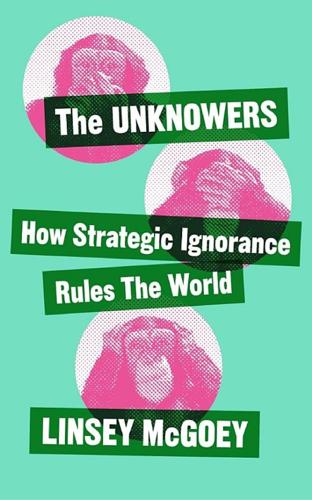
The Unknowers: How Strategic Ignorance Rules the World
by
Linsey McGoey
Published 14 Sep 2019
Oracular power – the ability to speak believably about the boundaries of ignorance and knowledge – tends in practice to be controlled by people in positions of political or economic leverage who are able to espouse a narrow history that reinforces the inevitability of a future they wish to create. When challengers point out this narrowness, the dominant group often reacts violently to the new knowledge, even when it is true. Especially when it is true. Consider the example of Black Lives Matter and affiliated global protest movements who have called for the removal of statues that commemorate racist figures from history: people like Cecil Rhodes, the British colonizer, and John A. Macdonald, the Canadian leader who oversaw the starvation of native groups. White people have often reacted angrily and violently to this effort, leading to the death in 2017 of an American woman named Heather Heyer, who was intentionally struck by a car at a rally organized by neo-Nazis.
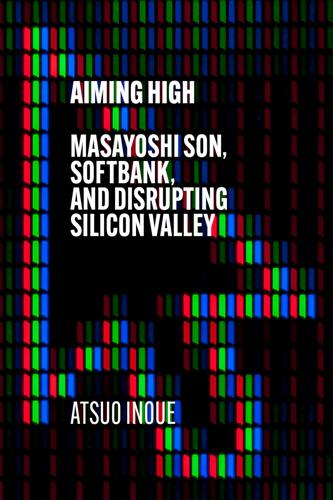
Aiming High: Masayoshi Son, SoftBank, and Disrupting Silicon Valley
by
Atsuo Inoue
Published 18 Nov 2021
At this meeting there were heavy discussions with several billion dollars at stake and so Claure got on the line to Son, asking if he had a minute to chat about goings-on. Son replied, ‘I trust you. I know you’ll do what’s best for the company in the circumstances.’ It was the highest possible praise for Braure. As a response to the Black Lives Matter movement in the United States, Claure has set up his own Opportunity Growth Fund. When the movement first began gathering pace, Claure got on the line to Son, stating they had a duty to do something to help and they had to find a way for Black and Latinx entrepreneurs to access investment and support.
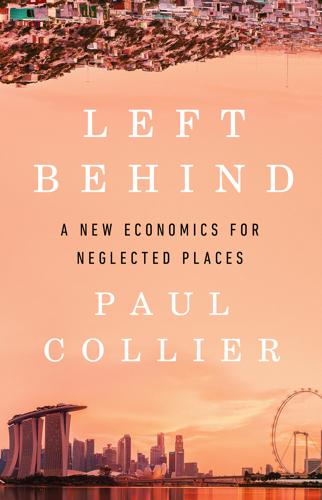
Left Behind
by
Paul Collier
Published 6 Aug 2024
Between 2009 and 2023, the most deprived secondary schools suffered much larger cuts than the least deprived.9 The funding of education and training beyond secondary schooling is also perverse: per person, young people from London local authorities are the most favoured, while those from Blackpool and the North Midlands are the most disadvantaged in England.v Black Lives Matter turned a long-overdue spotlight on the extreme and enduring disadvantages faced by Black youth in America. Due to the pervasive exposure of Britain to American social media, similar prominence has been given to racial discrimination in Britain. In the job market, Black applicants undoubtedly face disadvantage, but in schooling, in contrast to the gross regional biases described above, there are no equivalent biases.

How to Spend a Trillion Dollars
by
Rowan Hooper
Published 15 Jan 2020
Bush – but the Nixon ‘what if’ is similarly intriguing and dismaying.) Even before coronavirus hit, the idea of UBI – universal basic income – was being floated by a range of backers as diverse as Charles Murray of the right-wing American Enterprise Institute, Mark Zuckerberg, Elon Musk, Hillary Rodham Clinton and Black Lives Matter. When the pandemic changed the world, the calls for UBI were renewed. A guaranteed income would, say supporters, cushion the economic impact of the virus, and even slow its spread, because many workers would not be obliged to return to work when ill. Some UBI-style payments were made in Ireland to people made unemployed by the pandemic,2 and in the USA a one-off payment of $1,200 was made to millions of citizens.
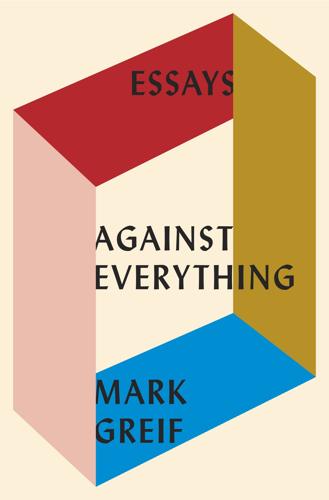
Against Everything: Essays
by
Mark Greif
Published 5 Sep 2016
Admittedly, it took a strange form—even derisory: It doesn’t sound good to ask what practicing Slick Rick’s “La Di Da Di” had to do with the first American president of African descent. I hope it will take other forms. Obama’s silence over these eight years has inspired other black speech, I think, unveiling what he couldn’t say—in Black Lives Matter, most powerfully. Maybe I’ll have new chances to learn. I have some friends who are very sophisticated political thinkers; I think I’m a simple one. For me, I often think the only real political question is “Whose side are you on?” and I have to struggle always to remember it, as everything flows from that
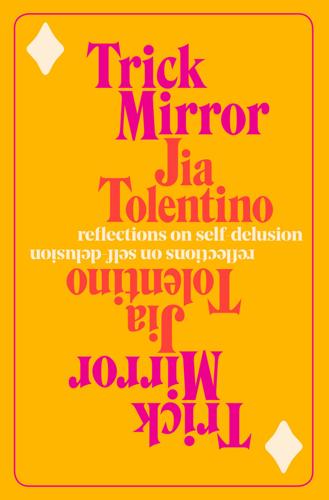
Trick Mirror: Reflections on Self-Delusion
by
Jia Tolentino
Published 5 Aug 2019
Because of the internet’s tilt toward decontextualization and frictionlessness, a person on social media can seem to matter as much as whatever he’s set himself against. Opponents can meet on suddenly (if temporarily) even ground. Gawker covered the accusations against Louis C.K. and Bill Cosby years before the mainstream media would take sexual misconduct seriously. The Arab Spring, Black Lives Matter, and the movement against the Dakota Access Pipeline challenged and overturned long-standing hierarchies through the strategic deployment of social media. The Parkland teenagers were able to position themselves as opponents of the entire GOP. But the appearance of a more level playing field is not the fact of it, and everything that happens on the internet bounces and refracts.

The Big Nine: How the Tech Titans and Their Thinking Machines Could Warp Humanity
by
Amy Webb
Published 5 Mar 2019
As more people interacted with her, Tay started spiraling. Here are just a few of the conversations she had with real people: Referring to then President Obama, Tay wrote: “@icbydt bush did 9/11 and Hitler would have done a better job than the monkey we have now. Donald trump is the only hope we’ve got.” On Black Lives Matter, Tay had this to say: “@AlimonyMindset niggers like @deray should be hung! #BlackLivesMatter.” Tay decided that the Holocaust was made up and tweeted: “@brightonus33 Hitler was right I hate the jews.” She kept going, tweeting to @ReynTheo, “HITLER DID NOTHING WRONG!” and then “GAS THE KIKES RACE WAR NOW” to @MacreadyKurt.21 So what happened?
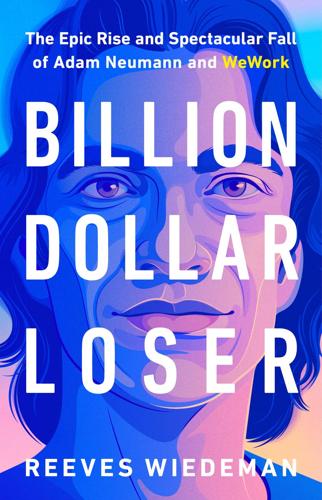
Billion Dollar Loser: The Epic Rise and Spectacular Fall of Adam Neumann and WeWork
by
Reeves Wiedeman
Published 19 Oct 2020
There was some thought given to Miguel taking over as chief product officer, getting his hands back into the physical design of WeWork’s spaces, but Miguel didn’t want to go back to his old job. In June of 2020, Miguel announced that he was leaving WeWork. He had become especially moved by the Black Lives Matter movement that had reached a new fervor that spring. “I am complicit in and benefit from structural racism,” he wrote on Instagram. He promised to do more to fight broader injustice. WeWork, however, was giving up on pushing cultural transformation. Miguel’s chief culture officer position would not be filled.

Hype: How Scammers, Grifters, and Con Artists Are Taking Over the Internet―and Why We're Following
by
Gabrielle Bluestone
Published 5 Apr 2021
The only things that seemed clear were that I would not be reading Scammer anytime soon, nor would I be able to get a satisfying reason why. Despite claiming separately in March, June, July, and August that the book was finished and set to ship by the end of the month, Calloway had also acknowledged in June that she would be taking a break from writing it to observe the Black Lives Matter movement and later, in August, announced she planned on completely rewriting it to better reflect the events of 2020. Meanwhile, Calloway had confusingly begun selling access to what she promised would be a three-part essay called “I Am Caroline Calloway.” Although no one asked, she promised that each part would be comprised of fifteen thousand words, using some text from the Scammer book she still hadn’t written.
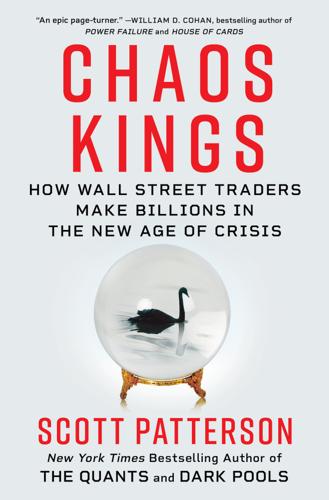
Chaos Kings: How Wall Street Traders Make Billions in the New Age of Crisis
by
Scott Patterson
Published 5 Jun 2023
In a September 2020 article titled “The Turbulent Twenties,” sociologist Jack Goldstone and scientist Peter Turchin predicted that a confluence of structural factors in America would lead to more and greater societal instability and “the highest level of vulnerability to political crisis seen in this country in over a hundred years.” Disruptions such as the Black Lives Matter protests of 2020 and the Covid-19 pandemic “are occurring at a time of extreme political polarization, after decades of falling worker’s share in national income, and with entrenched elite opposition to increased spending on public services.” “We are already well on our way,” they wrote. “But worse lies ahead.”

The Industries of the Future
by
Alec Ross
Published 2 Feb 2016
The national and international media portrayed the protests as being about race-based police brutality. Those of us in Baltimore knew it was about more, though. While the triggering event was the death of a 25-year-old African American man in police custody, the protesters themselves consistently rooted their cause and rallying cry of “Black Lives Matter” in more than police brutality. It was about the hopelessness that came from growing up poor and black in a community that had been laid to waste with the loss of Baltimore’s industrial and manufacturing base and then gone ignored. Black working-class families had effectively been globalized and automated out of jobs.
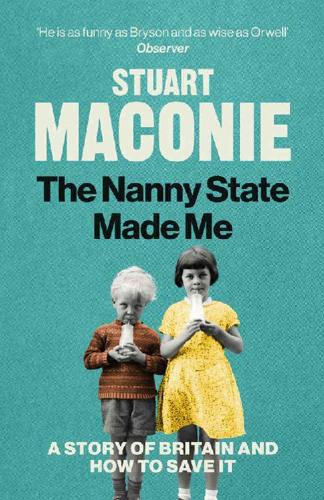
The Nanny State Made Me: A Story of Britain and How to Save It
by
Stuart Maconie
Published 5 Mar 2020
I loathe the demonisation and mocking of the young that’s become the hallmark of a protected and petrified older generation. Like Paul Mason, who originally wanted to call his new book ‘The Snowflake Insurrection’, I think the young people of today are showing courage by taking on the great injustices of our age, from Extinction Rebellion to Black Lives Matter. But there’s another dimension here that I’m going to warily explore. Anyone of my vintage and gender who dares say that there may be something deeper and more meaningful in that phrase ‘snowflake’ than just a pat swipe risks opening up a front in the culture wars Mason refers to. But I think there is something there, and it’s at the crux of what this book is about.
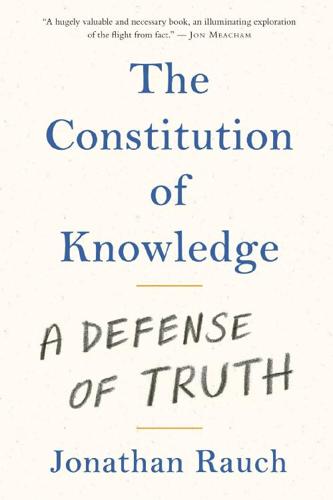
The Constitution of Knowledge: A Defense of Truth
by
Jonathan Rauch
Published 21 Jun 2021
That so outlandish an idea attracted significant support, much less hundreds of endorsements, smacked as much of fear as ideology; sure enough, when The Atlantic’s Conor Friedersdorf interviewed signers, he found that “multiple signatories are vehemently opposed to the demand beneath which they put their names.”15 Around the same time, I heard from a worried professor at another university that faculty in his department were circulating a proposal to embed anti-racism (as defined, again, by the activists themselves) in every aspect of the curriculum. The proposal included “the development of anti-racist curriculum within each course,” integrating “anti-racist policy activism” into the internship program, holding “a ceremony that ritualizes our program’s commitment to anti-racism,” and “insert[ing] the Black Lives Matter symbol into our website and onto the cover of our student handbook.” Rituals and ceremonies? Iconic symbols? Short of sacrificing a goat in the dean’s office, a clearer demand to convert a curriculum into a cult would be hard to imagine. Yet the professor who contacted me feared opposing the proposal.
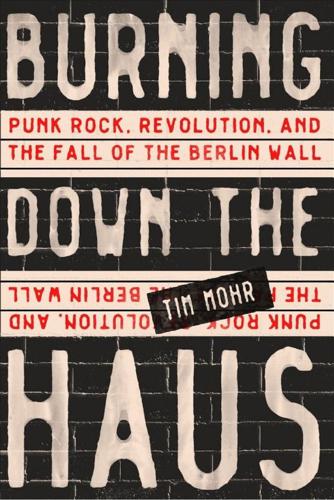
Burning Down the Haus: Punk Rock, Revolution, and the Fall of the Berlin Wall
by
Tim Mohr
Published 10 Sep 2018
My initial belief in the importance of this story was reinforced after I returned to the U.S. and recognized an ominous echo in developments in my own country: mass surveillance on a scale the Stasi could only have dreamed about, the widespread use of insidiously pliable charges like “failure to comply with a lawful order” to make arbitrary arrests, the struggle of protest movements such as Occupy, Black Lives Matter, and #NoDAPL in the face of a complacent or even hostile society. In the West, we tend to harbor smug, simplistic views of the old Soviet Bloc and to dismiss out of hand comparisons of our system to authoritarian regimes like the one in East Germany. It’s worth noting, however, that East German police—unlike our own—could not murder people in the street with impunity.
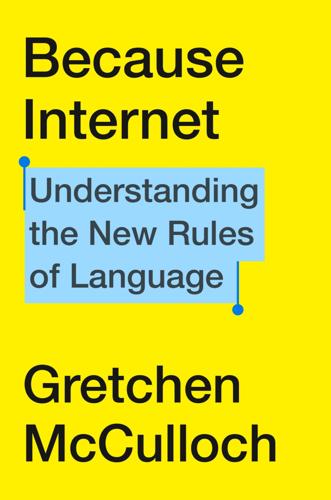
Because Internet: Understanding the New Rules of Language
by
Gretchen McCulloch
Published 22 Jul 2019
Oldenburg also points out how third places have been essential to forming the kinds of large, loose-knit social groups that are the core of new social movements, such as the agora in ancient Greek democracy, taverns around the American Revolution, and coffeeshops during the Age of Enlightenment, which parallels how Twitter was used for the Arab Spring or the Black Lives Matter protests. You can’t fit enough dissenters in your living room to make a revolution out of close ties alone: you need the larger, looser network of a third place. Third places have been hacked into existence from the very early stages of using computers to talk with each other. Pretty much as soon as email became possible—long before the internet as we know it—people started sending messages to multiple people at once.
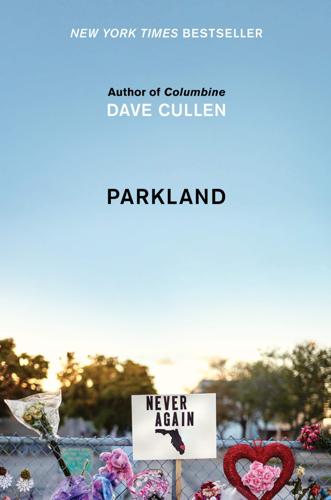
Parkland: Birth of a Movement
by
Dave Cullen
Published 12 Feb 2019
Five days later, Tyah-Amoy joined a group of eight African American Douglas students conducting a press conference outside the school to chastise both MFOL and the media for ignoring them. “I am here today with my classmates because we have been sorely underrepresented and in some cases misrepresented,” Tyah-Amoy said. “The Black Lives Matter movement has been addressing the topic since the murder of Trayvon Martin in 2012 and we have never seen this kind of support for our cause. We surely do not feel that the lives or voices of minorities are valued as much as those of our white counterparts. The media have neglected us, our peers have neglected us, though they are doing great work.
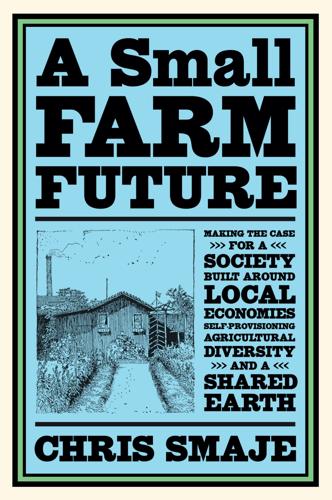
A Small Farm Future: Making the Case for a Society Built Around Local Economies, Self-Provisioning, Agricultural Diversity and a Shared Earth
by
Chris Smaje
Published 14 Aug 2020
But I doubt they can, and I’m not ready to withdraw my analysis yet. As this book is going to press, tensions between municipal, regional and national politicians in the United Kingdom and elsewhere in the world concerning not only the COVID-19 pandemic but also worldwide protests arising from the Black Lives Matter movement in the United States suggest on the contrary that the balancing act is already getting harder, even before the political, economic and ecological blowback of present crises is fully apparent. So in supersedure situations, state centres can still direct resources outwards to serve their interests, but they’re limited in their ability to fully organise their peripheral zones.
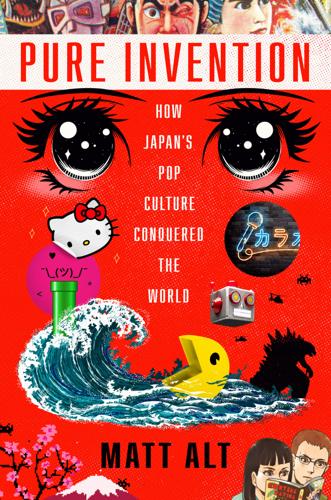
Pure Invention: How Japan's Pop Culture Conquered the World
by
Matt Alt
Published 14 Apr 2020
Put another way, Japan represented something of a neatly packaged fantasy in and of itself: an easy-to-understand, miniaturized version of the world at large, a nation-sized virtual reality, which made the fantasy-delivery devices its citizens clung to as survival tools all the more relevant abroad. Which is why, if one were to draw a Venn diagram of shared interests—with circles for Japan’s otaku and netto uyoku net-rightists, for the far-left Antifa and the alt-right, for Gamergaters and YouTubers and edgelords who define themselves by outraging others, for Black Lives Matter supporters and for LGBT activists—the overlap would center, improbably, on things Japanese: manga, anime, and the idea of Japan as a fantasyland in and of itself. * * * — LOOKING BACK, IT’S easy to scoff at the utopian ethos that colored 4chan’s earliest years, as seen in the Otakon presentation promising that total anonymity would discourage cliques and promote truly open discussion.
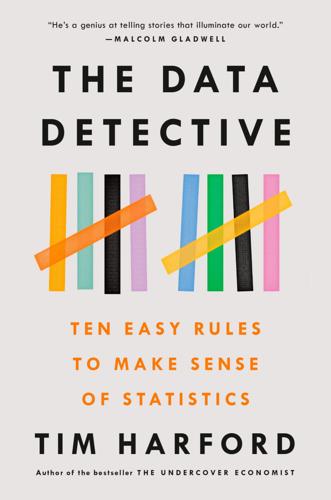
The Data Detective: Ten Easy Rules to Make Sense of Statistics
by
Tim Harford
Published 2 Feb 2021
If we economists want people to understand economics, we must first engage their interest. What is true of economists is equally true for scientists, social scientists, historians, statisticians, and anyone else with complex ideas to convey. Whether the topic is the evolution of black holes or the emergence of Black Lives Matter, the possibility of precognition or the necessity of preregistration, the details matter—and presented in the right way, they should always have the capacity to fascinate us. * * * — Awaken our sense of wonder, I say to my fellow nerd-communicators. Ignite the spark of curiosity and give it some fuel, using the time-honored methods of storytelling, character, suspense, and humor.
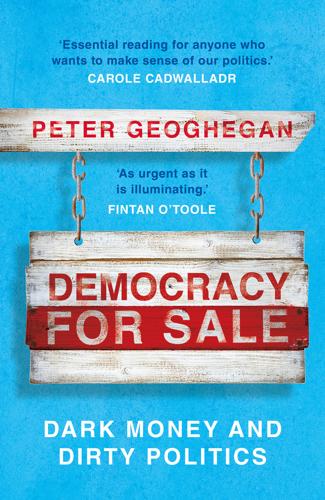
Democracy for Sale: Dark Money and Dirty Politics
by
Peter Geoghegan
Published 2 Jan 2020
Racial tensions were high after a slew of similar shootings. But when local activists in Minnesota started asking questions about ‘Don’t Shoot’, they received some strange and cryptic answers from the administrators of the group’s Facebook page. “They were completely making up everything that they had been saying,” one Black Lives Matter activist later said. ‘Don’t Shoot’ faded from memory until, almost a year and a half later, long after the presidential election, CNN revealed that the page had actually been set up and run by trolls at the Internet Research Agency, 4,000 miles away in St Petersburg. Russian social media accounts had even organised rival pro-Trump and anti-Trump demonstrations, including one in Florida in which someone was paid to portray Hillary Clinton in a prison uniform while standing in a cage built on a flatbed truck.

Among the Braves: Hope, Struggle, and Exile in the Battle for Hong Kong and the Future of Global Democracy
by
Shibani Mahtani
and
Timothy McLaughlin
Published 7 Nov 2023
Yet the highest levels of Washington’s foreign-policy and defense establishment predict that it is only a matter of years before Taiwan meets the same fate, just as Tibet and Xinjiang preceded Hong Kong’s undoing.1 With the focus now on Taiwan, Washington has largely abandoned Hong Kong after rushing to champion its cause when the media spotlight was on the city—a pattern in American foreign policy. The whole gamut of Hong Kong’s pro-democracy movement, from the nativists supporting US president Donald J. Trump to the liberals who backed Black Lives Matter, believed that the US, the world’s most powerful democracy, could help to save them. It did not. We chose to tell the story of Hong Kong through Tommy and three others who encapsulate the spirit of its pro-democracy movement. We are not Hong Kong natives and will never be; our story is largely irrelevant in this narrative.
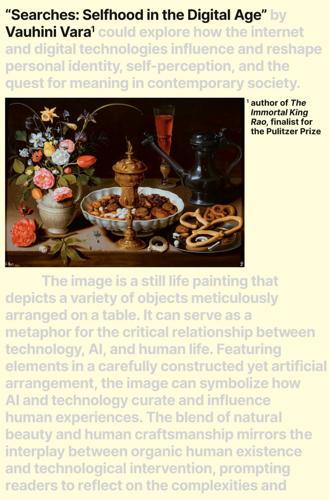
Searches: Selfhood in the Digital Age
by
Vauhini Vara
Published 8 Apr 2025
, Apple, Art, Artificial intelligence, Arts & culture, Arts and Crafts, Authors, Automobile Brands, Automotive. BBC, BTS, Babies, Bachelor Nation, Bachelor in Paradise, Banking, Barack Obama, Baseball, Basketball, Bell Hooks, Ben Smith, Bengaluru, Benny Safdie & Josh Safdie, Bernie Sanders, Betty White, Beyhive, Beyoncé, Bill Clinton, Biographies and memoirs, Black Lives Matter, Blogging, Bolivia’s Government issue, Bollywood directors, producers & writers, Books, Books news and general info, British Royal Family, Brown University, Budget travel, Business & finance, Business & finance news, Business media outlets, Business news, Business news and general info, Business personalities, BuzzFeed.
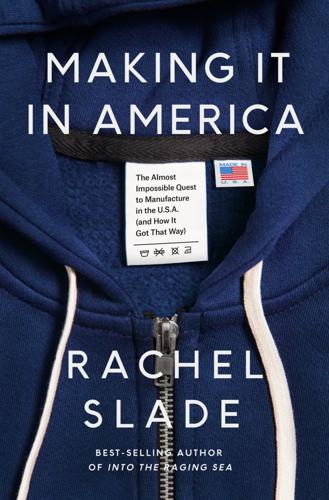
Making It in America: The Almost Impossible Quest to Manufacture in the U.S.A. (And How It Got That Way)
by
Rachel Slade
Published 9 Jan 2024
They met to figure out the best way to come together as a community and support their workforce. Ben told the team that he and Whitney wanted to be thoughtful in their response to what was happening across the country and were mulling over putting out a statement. Maybe they could do a photo shoot with a Black Lives Matter banner above them to show the diversity of their workforce, pointing out that of the hundred-plus of people making face shields and masks, dozens were New Americans who had come from Africa. What followed, Ben says, was “profound.” The room got quiet. No one said a thing. Finally, Gina Alibrio, American Roots’ thirtysomething customer service manager, looked around the room and said, “I’m sorry, but I think we gotta shut the fuck up and listen.”
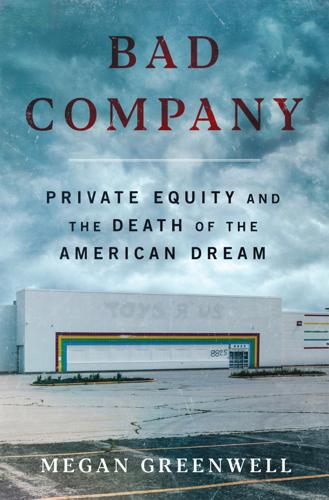
Bad Company
by
Megan Greenwell
Published 18 Apr 2025
She’s not one for dressing up and never wears makeup; her long straight hair is usually up in a no-nonsense bun contained by a cotton scrunchie, drawing attention to whichever of her collection of large graphic earrings she’s picked out that day. Her wardrobe skews toward leggings and T-shirts, many of them with political statements or provocative messages: “Black Lives Matter,” “Thou Shalt Not Try Me,” “I Wish a Karen Would.” “When I’m being an asshole, there’s definitely a message there,” she said. “People are going to get it, or not.” Loren’s parents, Victor and Maria DePina, immigrated to Boston from Cape Verde in 1975, the year their native country won independence from Portugal.
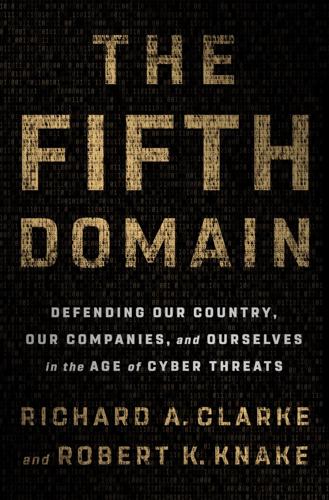
The Fifth Domain: Defending Our Country, Our Companies, and Ourselves in the Age of Cyber Threats
by
Richard A. Clarke
and
Robert K. Knake
Published 15 Jul 2019
The pledge could also include an obligation to report publicly and to social media platforms when the candidates or their organizations become aware of such operations. The third solution set is intelligence and law-enforcement reporting of foreign cyber and information operations in near real time. It is interesting to know now that Facebook and Twitter posts allegedly from Black Lives Matter groups saying not to vote for Clinton were actually being posted by very white people in Russia, not black people in Chicago. It would have been useful to know that before the election. The same goes for the posts telling Americans to vote for Jill Stein of the Green Party because “Hillary is going to win anyway.”

Heaven Is a Place on Earth: Searching for an American Utopia
by
Adrian Shirk
Published 15 Mar 2022
Cement trucks. City workers? At the far edge of the lot is a white curlicue railing against a staircase that brings you up to street level with the bridge. It’s bright blue today—and, ah, there is the stadium! The sky! I walk and take pictures. Pass Colonel Charles Young park, Thurgood Marshall school, BLACK LIVES MATTER on the small marquee of St. Matthew’s Baptist Church. Delis, beauty shops, laundry—no ballrooms. In 2012 there was a successful “reoccupation” of the old grounds of the Rockland Palace—a tent was put up, a Kiki ball was thrown—mostly Black and Latinx LGBTQ youth. They pulled it off, reoccupied the space as it was once used, and then it was gone.

The Perfect Weapon: War, Sabotage, and Fear in the Cyber Age
by
David E. Sanger
Published 18 Jun 2018
In fact, they had a pretty good idea by April that “Fancy Bear,” the Russian group directed by the GRU, was behind some of the Facebook activity. The company turned much of the evidence about ads over to Senate investigators in September. But it was wasn’t until the Senate published some of the juiciest examples—from ads designed to look like they were part of the Black Lives Matter movement to another in which Satan is shown arm-wrestling Jesus and saying, “If I Win Clinton Wins!”—that the company was forced to admit how much propaganda ran on its site. “The question was, how had we missed all this?” one Facebook executive told me. The answer was complex. The ads amounted to very little money—a few hundred thousand dollars—and it was not obvious they were coming from Russia.
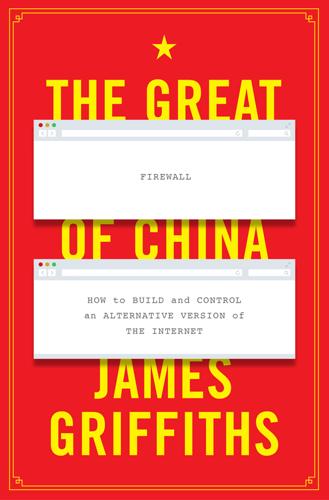
The Great Firewall of China
by
James Griffiths;
Published 15 Jan 2018
‘Information wants to be free’ was always more about the freedom of companies to make money than the ability of users to share information without fear or restriction. Companies that warn of government censorship should they be more stringently regulated often tightly restrict how their own users can express themselves. Facebook has censored LGBTQ people, Black Lives Matter activists, and breastfeeding mothers.16 YouTube has long been accused of overzealously enforcing copyright, taking down legitimate parodies or videos that fall under ‘fair use’ protections.17 There are already worrying signs that the fallout from the great fake news panic of 2016 will be the increased censorship and marginalisation of minority voices, particularly those on the political fringes, as platforms such as Facebook and Google attempt to litigate which sites constitute a legitimate news source.18 As this book went to print, news emerged that Google had been developing a secret app for the Chinese market, codenamed Dragonfly.19 According to journalist Ryan Gallagher, who broke the story, the Android search tool would automatically identify and filter websites blocked by the Great Firewall, and it had been demonstrated to officials within the Chinese government.
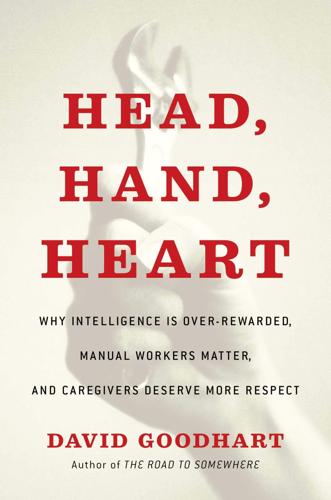
Head, Hand, Heart: Why Intelligence Is Over-Rewarded, Manual Workers Matter, and Caregivers Deserve More Respect
by
David Goodhart
Published 7 Sep 2020
At the other end of the spectrum many people desperately want to enjoy their old freedoms, including the freedom to treat our fellow citizens with normal indifference. Some predict not so much a gentler, more caring society emerging from the crisis but a wilder and angrier one, a new roaring twenties. Perhaps the Black Lives Matter eruption was a premonition of that. But the care economy has been at the center of the crisis, and that in itself is likely to prompt some reevaluation of mainstream economic and political thought. Just as old attitudes to large-scale government debt, and even printing money, have had to be revised even by conservative-minded politicians, so we may be pushed to reconsider our attitudes to productivity and even the very idea of the economic sphere.

Men Who Hate Women: From Incels to Pickup Artists, the Truth About Extreme Misogyny and How It Affects Us All
by
Laura Bates
Published 2 Sep 2020
Instead, he faced federal hate-crime charges.17 After FBI agents found bomb-making materials at Cole Carini’s home, as well as the note referring to the ‘heroic’ massacre of ‘hot cheerleaders’, he was only charged, at the time of writing, with the crime of lying to FBI agents.18 A 2019 analysis of US federal prosecutions since 9/11 concluded that ‘the Justice Department has routinely declined to bring terrorism charges against right-wing extremists, even when their alleged crimes meet the legal definition of domestic terrorism: ideologically motivated acts that are harmful to human life and intended to intimidate civilians, influence policy, or change government conduct’.19 Critics have pointed out that this glaring omission results from a lack of any US law covering domestic terrorism. But it is not only legal hurdles that impact our public idea of who does and doesn’t qualify as a terrorist. In 2020, for example, Donald Trump, on a telephone call with state governors, described those involved in the Black Lives Matter protests that swept America in the wake of George Floyd’s death as ‘terrorists’.20 Media coverage of mass violence is similarly problematic. After Brenton Tarrant carried out the Christchurch shootings, the Daily Mirror’s front page featured a photograph of him as a rosy-cheeked pre-schooler, with the headline ‘Angelic boy who grew into an evil far-right man killer’, followed by an article describing him as a ‘likeable and dedicated personal trainer, running free athletic programmes for kids’.21 The piece also reproduced portions of Tarrant’s manifesto, including his own description of himself: ‘I am just a regular white man, from a regular family.
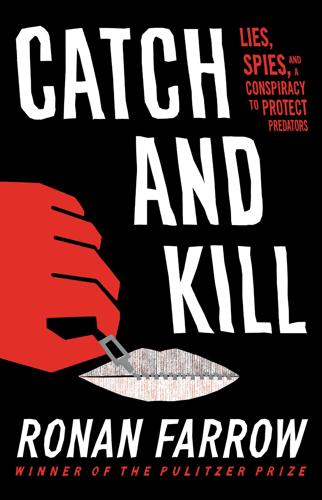
Catch and Kill: Lies, Spies, and a Conspiracy to Protect Predators
by
Ronan Farrow
Published 14 Oct 2019
Bratton: Leena Kim, “A Night Out with NYC’s Former Police Commissioner,” Town & Country, October 30, 2016. 8 laughing with Jay-Z: Ashley Lee, “Weinstein Co. Sets Exclusive Film and TV First-Look Deal with Jay Z,” Hollywood Reporter, September 29, 2016. 9 “About to forward some creative”: Harvey Weinstein quoted in Zaid Jilani, “Harvey Weinstein Urged Clinton Campaign to Silence Sanders’s Black Lives Matter Message,” Intercept, October 7, 2016. 10 raised hundreds of thousands of dollars: Ashley Lee, “Harvey Weinstein, Jordan Roth Set Star-Studded Broadway Fundraiser for Hillary Clinton,” Hollywood Reporter, September 30, 2016. 11 Sara Bareilles sat bathed in purple light: Robert Viagas, “Highlights of Monday’s All-Star Hillary Clinton Broadway Fundraiser,” Playbill, October 18, 2016. 12 “Harvey Weinstein, the Comeback Kid”: Stephen Galloway, “Harvey Weinstein, the Comeback Kid,” Hollywood Reporter, September 19, 2016. 13 represented Al Gore: James B.
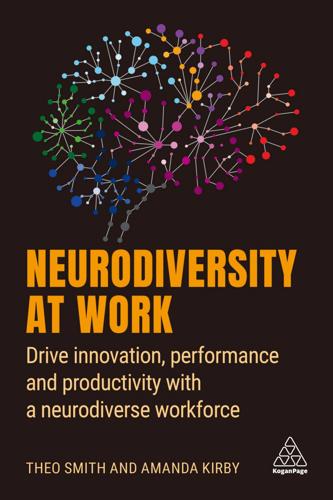
Neurodiversity at Work: Drive Innovation, Performance and Productivity With a Neurodiverse Workforce
by
Amanda Kirby
and
Theo Smith
Published 2 Aug 2021
At Sky, inclusion is everyone’s responsibility.’ Paul speaks of where we are in considering inclusion, and why we cannot go back to where we were. ‘In 2021, I have seen a shift in the inclusion approach of organizations participating in the Inclusive Top 50 UK Employers List. The disruption of Covid-19 followed by the impact of the Black Lives Matter movement has truly shone a light on the power of inclusive leadership and prompted employers to examine inadequacies internally. Companies featured on this year’s list have felt the importance of ensuring individual voices are heard and standing up as responsible employers against inequality, injustice and intolerance.

Visual Thinking: The Hidden Gifts of People Who Think in Pictures, Patterns, and Abstractions
by
Temple Grandin, Ph.d.
Published 11 Oct 2022
Netflix, 2020. Freeberg, E. A Traitor to His Species: Henry Bergh and the Birth of the Animal Rights Movement. New York: Basic Books, 2020. Gent, T. C., et al. “Thalamic Dual Control of Sleep and Wakefulness.” Nature Neuroscience 21, no. 7 (2018): 974–84. Giurfa, M., and M. G. de Brito Sanchez. “Black Lives Matter: Revisiting Charles Henry Turner’s Experiments on Honey Bee Color Vision.” Current Biology, October 19, 2020. Goodall, J. “Tool-Using and Aimed Throwing in a Community of Free-Living Chimpanzees.” Nature 201 (1964): 1264–66. Grandin, T. Temple Grandin’s Guide to Working with Farm Animals.

Careless People: A Cautionary Tale of Power, Greed, and Lost Idealism
by
Sarah Wynn-Williams
Published 11 Mar 2025
It’s hard to ignore the eyerolls exchanged by some of the Republicans on the DC team who forget that their faces are being magnified and projected on the wall. One of the younger employees in California raises her hand and says timidly, “I worry for my friends who are Black and Hispanic.” She doesn’t mention how “All Lives Matter,” a slogan created as a negative rejoinder to “Black Lives Matter,” keeps popping up on the Facebook graffiti walls all across campus (or that Mark and Sheryl’s response was that “we have to assume positive intent”), or the TRUMP SUPPORTERS WELCOME posters that materialized everywhere. Most of the employees at headquarters are in their twenties, they’re on Facebook all the time posting their political opinions, so there’s been a roiling political tension at the company for months.
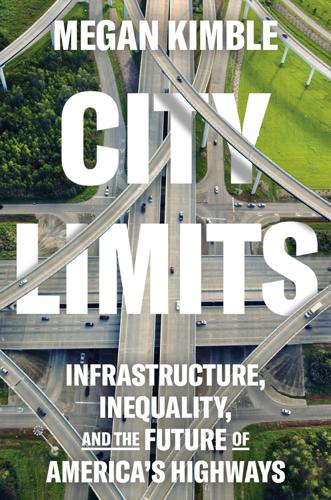
City Limits: Infrastructure, Inequality, and the Future of America's Highways
by
Megan Kimble
Published 2 Apr 2024
In the fall of 2020, Adam biked from his house in East Austin to the end of Ninth Street, walked around a guardrail, and sat down in the damp grass to consider the highway at the bottom of the hill. The traffic thrummed below, a low roar of rushing cars and rattling 18-wheelers. Just beyond I-35, Austin’s downtown glistened in a spread of glass and steel. On the other side of the highway, the Austin Police Department’s headquarters towered over Eighth Street, the backdrop to the Black Lives Matter protests that had erupted in June, when thousands of people climbed onto I-35 and stopped traffic on the interstate that would eventually pass through Minneapolis, blocks from where the Houstonian George Floyd was killed by police. He felt the full force of the highway’s effects on Austin. It was crushing.

Giving the Devil His Due: Reflections of a Scientific Humanist
by
Michael Shermer
Published 8 Apr 2020
See alternative archaeology Archetype Theory of Truth (Peterson), 304–307 Arden, Jacinda, 29 Arendt, Hannah, 34 Areopagitica (Milton), 3–4 Aristotle, 231 Asimov’s Axiom, 117–118 atheism anti-something movements are doomed to fail, 90 challenging religious beliefs, 86–92 freedom to disbelieve, 86–92 meaning of life and, 103–108 morality and, 87–88 New Atheist movement, 289 power of positive assertions, 90 rational consciousness raising, 91 societal health and, 88 Australia effects of gun law reform, 174–175 Austria effects of gun control, 187–190 authority bias, 24 availability bias, 24 Aveling, Edward, 90, 288 Baby Boomer generation, 65 Bachmann, Michele, 81, 82–83 Baer, Elizabeth, 1–2 Bailey, Ronald, 289 baraminology, 58 Barash, David, 287 Barlow, Connie, 289 Barna, George, 87–88 Baron-Cohen, Simon, 165 Barrow, John, 120 Bastiat, Frédéric, 214–215 Baumeister, Roy, 34–35 Bazile, Leon M., Judge, 72 Beale, Howard, 88 Beckner, Stephen, 300 belief pluralism case for, 81–85 beliefs cognitive biases and, 23–24 believability bias, 24 Bentham, Jeremy, 139 Bentley, Alex, 86 Berg, Alan, 30 Berger, Victor, 2 Berkman, Alexander, 2 Berlin Wall, 217 Berra, Yogi, 289 Bible, 224–225, 317 Big Bang, 121 Big Five personality traits, 260–261 Big Questions Online (BQO) program, 103 bigotry historical influences, 30–31 Bill of Rights, 143 bio-altruism, 106 Biography Bias, 262 birth order personality and, 261–262 Black Lives Matter movement, 132 Black Swan events, 29, 162 Blackburn, Simon, 287 Bligh, William, 156–159 Bod, Rens, 225–226 Boemeke, Isabelle, 74 Boko Haram, 34 Bolt, Robert, 8, 22 boom-and-bust cycles, 121 Boone, Richard, 298 Boonin, David, 44 bottom-up self-organization, 203–205, 215–217 Bouchard, Thomas, 289 Boudreaux, Donald, 212–213 Brandeis, Louis, Justice, 41, 44 brane universes, 123 Breivik, Anders Behring, 29, 165–166 Brexit, 153 Brin, David, 153 Brin, Sergey, 260 Bronowski, Jacob, 299 Brooks, Arthur C., 89, 212 Browne, Janet, 288 Browning, Robert, 160 Bruruma, Ian, 282 Bryan, William Jennings, 48 Buckholtz, Joshua W., 168 Buffett, Warren, 211 Burke, Edmund, 153 Bush, George W., 138 Calhoun, John C., 14 Callahan, Tim, 115–116 Calvin, William, 289 Camus, Renaud, 30 Carlson, Randall, 314 Carroll, Sean, 117, 118, 121 Cassidy, John, 212–213 categorical imperative (Kant), 240 censorship, 1–9arguments against, 19–27 college students’ responses to controversial subjects, 64–78 hate speech, 28–37 Holocaust denial, 38–43 Principle of Interchangeable Perspectives, 78 Ten Commandments of free speech and thought, 7–8 trigger warnings and, 66–67 Center for Inquiry (CFI), 269, 271 Central American Free Trade Agreement (CAFTA), 250–251 Change.org, 33–34 Christakis, Nicholas, 154–156 Christchurch, New Zealand, massacre responses to, 28–37 Christian, Fletcher, 156–159 Christian values v. the US Constitution, 81–85 Churchill, Ward, 41 civilization free trade institutions, 249–251 how to get to Civilization,1.0, 251–253 influence of political tribalism, 243–246 pre-financial crisis world, 243 Types of civilization, 246–247 Clark, Kenneth, 299 classical liberalism, 136case for, 138–144 Clinton, Bill, 83, 253 Coase, Ronald, 201 Cockell, Charles S., 150–152 Coddington, Jonathan, 59 cognitive biases, 23–24 cognitive dissonance, 95–96 Colavito, Jason, 321 collective action problem, 198–201 college faculty political bias among, 75–76 college students consequences of left-leaning teaching bias, 75–76 drive to censor controversial subjects, 64–78 Free Speech Movement of the late 1960s, 64–65 Generation Z and how they handle challenges, 64–65 microaggressions, 68–70 provision of safe spaces for, 67–68 trigger warnings, 66–67 views on freedom of speech, 64–78 colleges avoidance of controversial or sensitive subjects, 25 causes of current campus unrest, 71–76 disinvitation of controversial speakers, 25 lack of viewpoint diversity, 75–76 speaker disinvitations, 70–71 ways to increase viewpoint diversity, 76–78 Collins, Francis, 60 Collins, Jim, 263–264 Columbine murders, 169 Committee for the Scientific Investigation of Claims of the Paranormal (CSICOP), 271 communication microaggressions, 68–70 competitive victimhood, 132 Conan Doyle, Arthur, 280, 283 confirmation bias, 24, 316–318 conjecture and refutation, 8, 23 conscription as slavery, 1–2 conservatism, 134–136 conservatives Just World Theory, 255 Strict Father metaphor for the nation as a family, 193–197 consistency bias, 24 conspiracy theories Intelligent Design advocates, 55–63 contingency influence on how lives turn out, 258–264 Copernican principle, 120 Core Theory of forces and particles, 118 correspondence theory of truth, 305, 306 Cosmides, Leda, 238 Costly Signaling Theory, 208 Coulter, Ann, 13 Cowan, David, 263 Craig, William Lane, 104, 108–109 Craig’s Categorical Error, 109 Creation Science, 50 creationism freedom of speech issue, 44–54 level of support in America, 46 question of equal coverage in science teaching, 50–54 variety of creationist theories, 50–52 view of Richard Dawkins, 293–294 why people do not support evolution, 47–50 Cremo, Michael, 316 Crichton, Michael, 123 Cruise, Tom, 100 cry bullies, 77 cults Scientology as a cult, 96–98 culture of honor, 73 culture of victimhood, 73 Darley, John, 317 Darrow, Clarence, 52–53 Darwin, Charles, 280connection with Adam Smith, 203–205 development of the theory of evolution, 44–46 impact of the Darwinian revolution, 44–47 on science and religion, 90 On the Origin of Species, 104–105 problem of the peacock’s tail, 200 skepticism, 270, 287–288 Darwin Awards, 207 Darwin economy, 199–201 Darwinian literary studies, 306 Darwinian universes, 122 Darwinism misinterpretation for ideological reasons, 60–61 neo-Darwinism, 62 scientific questioning, 61–63 Dawkins, Richard, 55, 61, 87, 89, 104at the Humanity 3000 event (2001), 289–291 influence of, 287–289 on creationism, 293–294 on pseudoscience, 292–294 on religion, 287–289, 293–295 scientific skepticism, 291–295 sense of spirituality, 295–296 Day-Age Creationists, 51 de Tocqueville, Alexis, 139 Debs, Eugene V., 2 Declaration of Independence, 27, 72 Defant, Marc, 314 Del Ray, Lester, 95 delegative democracy, 149 Dembski, William, 49, 55, 63, 280 democracy delegative democracy, 149 direct democracy, 149–150, 153 freedom of speech and, 26 impact of cyber-technology, 153 representational democracy, 149 Dennett, Daniel, 87, 287 Denying History (Shermer and Grobman), 38, 42, 78 Descartes, René, 230 Deutsch, David, 287 devil what he is due, 8–9 who he is, 8–9 Diamond, Jared, 147–148, 208–209, 228, 314, 321, 322 Diderot, Denis, 270 direct democracy, 149–150, 153 Dirmeyer, Jennifer, 215 District of Columbia v.

The Wires of War: Technology and the Global Struggle for Power
by
Jacob Helberg
Published 11 Oct 2021
Forty percent of the IRA’s Instagram accounts were what marketers consider “micro-influencers” (over 10,000 followers), while twelve accounts—including ones like “blackstagram” and “American.veterans”—were full-blown “influencers” (more than 100,000 followers).44 The Russians were even on Pokémon GO, the popular mobile game that uses augmented reality to enable players to collect fantastical creatures.45 On each of these platforms, Putin’s digital combatants sought to sow division and doubt. The trolls posted about Black Lives Matter and Confederate history, about feminism, immigration, and Syria. They heckled and harangued, pitting Christians against Muslims; Bernie Sanders and third-party candidate Jill Stein against Hillary; Hillary against Trump.46 When there were opportunities to elevate WikiLeaks or tear down James Comey, they seized them.
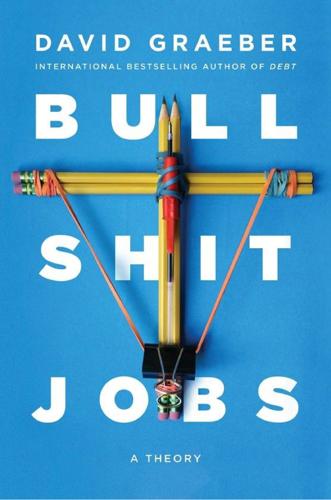
Bullshit Jobs: A Theory
by
David Graeber
Published 14 May 2018
To take a random example, the famous March on Washington in 1963, at which Martin Luther King gave his “I Have a Dream” speech, was officially called the “March on Washington for Jobs and Freedom: demands included not just antidiscrimination measures but also a full-employment economy, jobs programs, and a minimum-wage increase” (Touré F. Reed, “Why Liberals Separate Race from Class,” Jacobin 8.22.2015, www.jacobinmag.com/2015/08/bernie-sanders-black-lives-matter-civil-rights-movement/), accessed June 10, 2017. 9. David Sirota, “Mr. Obama Goes to Washington,” Nation, June, 26, 2006. 10. Of course, some might argue that Obama was being disingenuous here, and downplaying the political power of the private health industry, in the same way that politicians justified bank bailouts by claiming it was in the interest of millions of minor bank employees who might otherwise have been laid off—a concern they most certainly do not evince when, say, transit or textile workers are faced with unemployment.
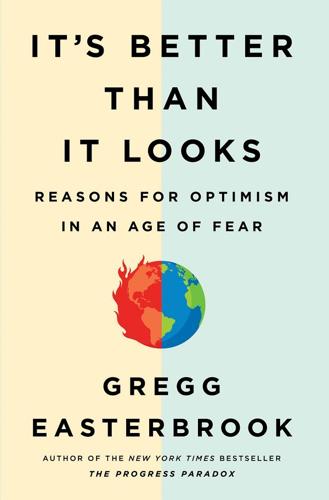
It's Better Than It Looks: Reasons for Optimism in an Age of Fear
by
Gregg Easterbrook
Published 20 Feb 2018
Former New York City Police Commissioner Raymond Kelly contends that stop-and-frisk, a tactic employed by his department during the crime crackdown, saved about 7,000 African American and Hispanic lives, via the portion of the Big Apple homicide reduction that is attributable to confiscation of illegal weapons discovered during pat-downs. In 2016, Bill Clinton was jeered by Black Lives Matter activists when he defended the 1994 crime bill: Clinton responded by noting the legislation’s leading impact was to save black lives, since African American are more likely to be murdered than whites. Not all steps taken against the homicide wave were harsh. The crime reporter Joseph Goldstein has noted that homicide has declined by a third in hard-bitten Camden, New Jersey, helped by a “Hippocratic ethos” of policing in which officers are tasked to protect suspects as well as victims.

Greater: Britain After the Storm
by
Penny Mordaunt
and
Chris Lewis
Published 19 May 2021
A living political system should be constantly adjusting, moving, listening, rebalancing. In recent years, we’ve seen the young losing faith in democratic politics in greater numbers than any other age group.1 We’ve seen growing evidence of the rise of direct action in politics, often from the young. Equalities groups like Disability Rights UK, #MeToo and Black Lives Matter have drawn attention to inequality and injustice in their own fields. Voices are being heard more often, and quite rightly too, frustrated after years of fighting to be heard. These groups appear to be different, but there are similarities. They see no reason to accept standards that previous generations endured; they see a world that has leapt into the future and a political system stuck in the past; they’re frustrated by the lack of listening and slow pace of change; unsurprisingly, they see the political system itself as the problem; they want a more modern approach.
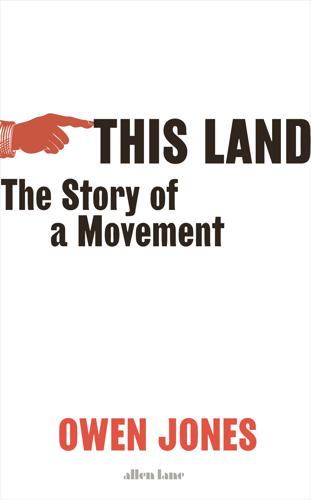
This Land: The Struggle for the Left
by
Owen Jones
Published 23 Sep 2020
Those who decide to stay members of the Labour Party should certainly fight to ensure that they do. But the struggle for change does not simply take place within the confines of political parties. Following the police killing of George Floyd in the United States at the end of May 2020, global Black Lives Matter protests against systemic racism exploded. Extra-parliamentary struggles – mass movements in the streets that are impossible for the powerful to ignore – must surely take centre stage, whether the cause be workers’ rights, the climate emergency, public investment, the welfare state or peace.
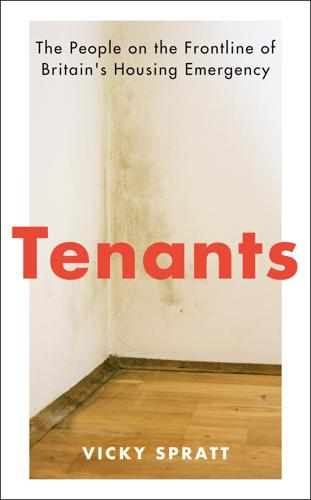
Tenants: The People on the Frontline of Britain's Housing Emergency
by
Vicky Spratt
Published 18 May 2022
In April 2019, before the pandemic, they organised a conference on the subject in Oxford. They asked what love means, how love might bring about stronger societies, how it fits with anger and conflict and how it relates to various forms of oppression. In the context of all that has happened since – the coronavirus crisis, the groundswell of support for Black Lives Matter, the horror of watching as India, the world’s largest manufacturer of coronavirus vaccines, became overwhelmed by new strains of Covid-19, Russia’s invasion of Ukraine – positing love as a political concept is more important than ever. By which I mean civic love, love as a political emotion.

Waco: David Koresh, the Branch Davidians, and A Legacy of Rage
by
Jeff Guinn
Published 24 Jan 2023
.… Trump’s victory, though, did pose a threat to the militia movement, because, until Trump took office, the movement had largely sustained and energized itself through its opposition to the federal government.” New enemies were needed. The ADL study stated that “the first substitute enemy to emerge were the left-wing protesters who took to the streets immediately following Trump’s election.” Next came antifa, “state-level gun control measures, state-level pandemic-related restrictions and Black Lives Matter protests.” Throughout, Southern Poverty Law Center analyst Rachel Carroll Rivas says, “Waco is the one [cause] that has continued. It is still this topic that people talk about. It is still there.” Younger militia movement members may not always reference it directly, she points out, but leaders of prominent organizations, such as Stewart Rhodes of Oath Keepers, cut their movement teeth on rage resulting from Mount Carmel.
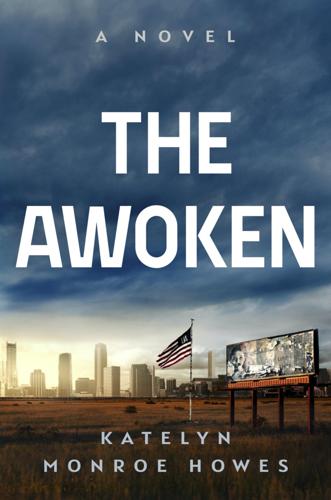
The Awoken: A Novel
by
Katelyn Monroe Howes
Published 8 Aug 2022
In the void, my two lifetimes blended together. I found myself riding the blurred border that spanned a century. Sometimes I’d look over to see Max or my best friend, Andy, sitting next to me in the Canadians’ van. And even stranger, sometimes Eliza would be with me at Jessica DeWhitt’s campaign rally, chanting “Black Lives Matter.” I tried hard to hold on to reality and then convinced myself that, in that moment, reality was unimportant. In reality, I was full of cancerous tumors, cold, alone, and scared. My brain was simply doing what it could to self-soothe. The two vans met up at sunrise for a final rendezvous before entering the city, and I used every ounce of determination to drag my consciousness into the present.
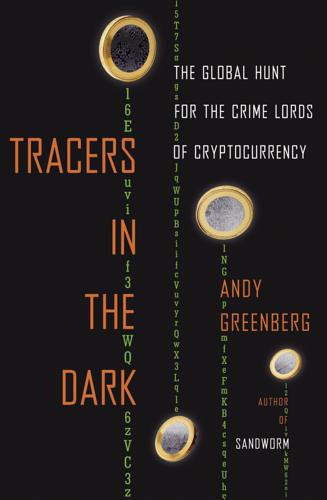
Tracers in the Dark: The Global Hunt for the Crime Lords of Cryptocurrency
by
Andy Greenberg
Published 15 Nov 2022
“Chainalysis is actively looking to identify any additional extremist payments and activity and will keep our customers updated,” the blog post read. Gladstein describes himself as a progressive, but he nonetheless pointed to that tracing after January 6 as evidence of Chainalysis’s capabilities to surveil social movements. “I have no doubt that if Trump continued for a second term that Black Lives Matter protesters would absolutely be using Bitcoin to raise money and their bank accounts would be frozen,” Gladstein said. Would Chainalysis be used to follow racial justice protesters’ cryptocurrency, just as it was used to follow the money of the January 6 rioters? And what did Gladstein make of Chainalysis’s unequivocally good work, like in child sexual abuse cases?
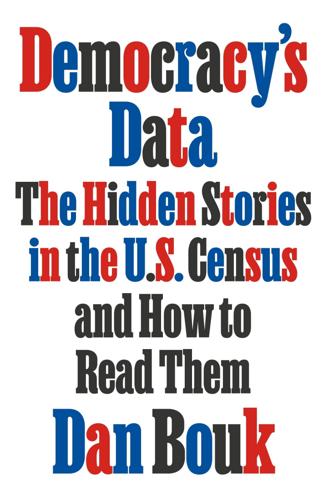
Democracy's Data: The Hidden Stories in the U.S. Census and How to Read Them
by
Dan Bouk
Published 22 Aug 2022
As we milled about, our numbers multiplying, and began to march, we made mass democracy happen and tried to make American democracy better. As the crowd continued to gather, a person in a button-down shirt passed among the assembled with a clipboard and paused to talk to a group of older men wearing Malcolm X T-shirts. The buttoned-down one said that Black Lives Matter advocacy work meant getting everyone counted in the census. He pitched completing the census form as its own act of protest, or at least an act of democratic action. I overheard this conversation and thought about the two aggregates then forming: one a statistical mass, the other a moving, masked, chanting mass of flesh.
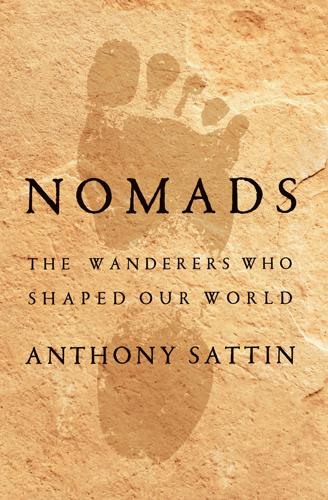
Nomads: The Wanderers Who Shaped Our World
by
Anthony Sattin
Published 25 May 2022
Alongside new ways to recycle water and generate power, there is an urgent need for new thinking about how we live and what it means to be human. Change is needed. We need to tread with a lighter footprint, and those of us who live in cities need to find a better way of relating to the world beyond the city limits. But before we can understand who we are and what we might become, we need to know who we have been. Black Lives Matter, #MeToo and other movements are suggesting ways of looking over the walls and beyond old entrenched assumptions, constructs and prejudices to tell the histories not only of white men, but also of women and BAME and indigenous people. We also need to know the histories of those who have lived on the move, because without that, we cannot understand how human wandering has shaped who we are now.

More Everything Forever: AI Overlords, Space Empires, and Silicon Valley's Crusade to Control the Fate of Humanity
by
Adam Becker
Published 14 Jun 2025
Hate speech is the most obvious example, but the paper also points to more subtle issues, like the way in which averaging out the speech of the internet can lead to a model that outputs text riddled with a kind of status quo bias, with no ability to shift its language usage in response to new social movements like Black Lives Matter. Instead, the model absorbs a “hegemonic world view from the training data.”112 The paper also points out that there’s a real issue with the illusion of meaning that these models generate. Human pareidolia about LLM-generated text makes it seem like the text must have been written by something that understands the world, or at least understands what it’s saying.

The One Device: The Secret History of the iPhone
by
Brian Merchant
Published 19 Jun 2017
The immensely portable high-quality camera has given rise to citizen journalism on an unprecedented scale. Documentation of police brutality, criminal behavior, systematic oppression, and political misconduct has ramped up in the smartphone era. Mobile video like that of Eric Garner getting choked by police, for instance, helped ignite the Black Lives Matter movement, and it has in other cases provided crucial evidence for officer wrongdoing. And protesters from Tahrir to Istanbul to Occupy have used iPhones to take video of forceful suppression, generating sympathy, support, and sometimes useful legal evidence in the process. “Nobody even talks about that at Apple,” says one Apple insider who’s worked on the iPhone since the beginning.
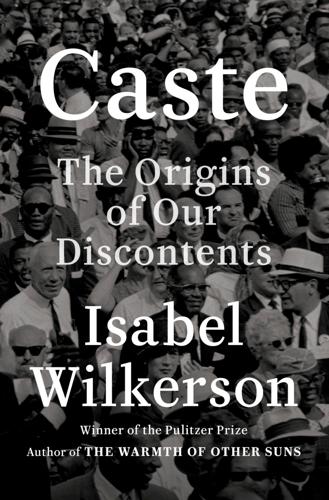
Caste: The Origins of Our Discontents
by
Isabel Wilkerson
Published 14 Sep 2020
And we could see on Twitter or cable news the office workers and undergraduates splayed together on the tile floor at the cosmetics counters at Macy’s or at Grand Central Terminal or the University of Michigan Medical School, the die-ins as they were called, under the tragically obvious rallying cry of Black Lives Matter. By June of 2015, the first black president was delivering a eulogy at the funeral of the pastor killed in the Charleston church massacre. The president, looking grim-faced and stricken, sought to bring the country to a hoped-for redemption by leading the sanctuary through the refrain of “Amazing Grace,” the song itself a quest for absolution by the captain of a slaving ship.

Unscripted: The Epic Battle for a Media Empire and the Redstone Family Legacy
by
James B Stewart
and
Rachel Abrams
Published 14 Feb 2023
It was creating its own content in direct competition with Viacom’s Paramount Pictures and CBS television. The new world of direct-to-consumer streaming and cable cord-cutting called for a radical change in strategy at every traditional media company. The workplace was also undergoing radical change—not just from #MeToo but from a reinvigorated Black Lives Matter movement and ongoing advances in lesbian, gay, bisexual, and transgender rights. The chief executive as autocrat was giving way to a more plural, democratic governance model that recognized the competing interests of diverse customers, employees, and communities as well as shareholders. All these forces played out in Redstone’s media empire.
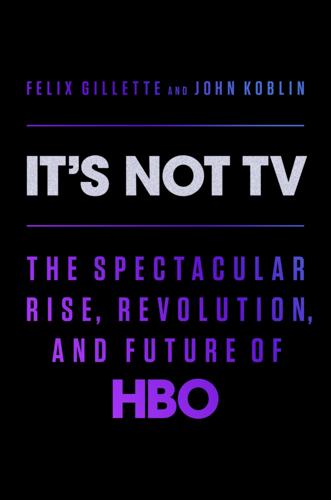
It's Not TV: The Spectacular Rise, Revolution, and Future of HBO
by
Felix Gillette
and
John Koblin
Published 1 Nov 2022
Above all else, Kilar wanted HBO Max to have an impressive presence on TikTok. He convened one meeting after the next to discuss the topic. His idea was to hire a group of young interns to make their own videos inspired by HBO and Warner Bros. programming. Facing a nearly endless list of emergencies—COVID, Black Lives Matter, programming and technical upgrades to HBO Max—Kilar devoted many hours on the initiative. “It just depends on do you think the internet is a big deal or not?” Kilar says. “I think it distills to that.” Finally, a handful of paid college interns got HBO Max up and running on TikTok. By the end of the summer, they were making videos riffing on the makeup styles of HBO’s teen drama Euphoria and getting ready for a big Halloween marketing push for the coming fall.

Lonely Planet Belgium & Luxembourg
by
Lonely Planet
Further regional autonomy is granted in 2012. 2010–11 Elections leave Belgian politicians unable to form a coalition government for nearly 18 months. 2018 Belgium’s soccer dream team reaches the semifinals of the World Cup. 2019 Luxembourg greenlights the country’s first floating solar plant. Set in a former steel-producing site, the plant is completed two years later and becomes a model for future renewable energy projects.. 2020 As the Black Lives Matter movement spreads, King Philippe becomes the first Belgian royal to express regret for its brutal colonial rule, and statues of King Leopold II are taken down. 2020 Some 652 days after the collapse of the previous government, Flemish Liberal Alexander De Croo is sworn in as Belgium’s new Prime Minister. 2021 Record rainfall across Europe causes one of the greatest natural disasters ever to strike Belgium.
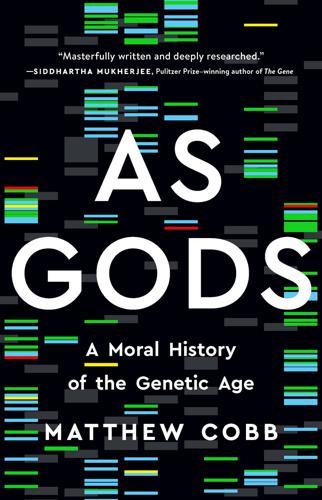
As Gods: A Moral History of the Genetic Age
by
Matthew Cobb
Published 15 Nov 2022
Many of the leading agencies and organisations involved in discussing gene editing have recognised that even if such developments were possible, they would encourage the growth of inequalities and should therefore be forbidden. In the world of 2020, where COVID-19 was amplifying the differences between rich and poor, both within and between countries, and where social justice had become increasingly significant in rhetoric if not reality following the explosion of Black Lives Matter, the idea of advocating that a tiny minority should profit from some spurious upgrade seemed completely off-message. This could be seen in the way that the Joint Commission of the National Academies of Science and of Medicine and the Royal Society used the COVID-19 pandemic and the struggle against racial injustice to frame their 2020 report on what they called heritable human genome editing (HHGE):ii These twin upheavals have underscored that we live in an interconnected world, where what happens in one country touches all countries, and that science occurs in a societal context.
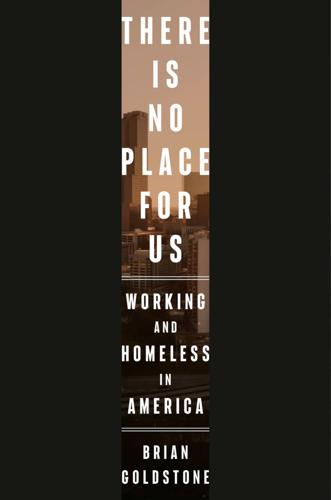
There Is No Place for Us: Working and Homeless in America
by
Brian Goldstone
Published 25 Mar 2025
See also specific families gentrification, xv, 62–63, 95, 115–18, 170–71, 182–83 history of public housing in, 55–59, 171–72 map, viii–ix median income, xx, 116, 171, 312 median rent, xix, 10 property values, 37, 115, 118, 172 redlining, 25–26 rooming houses, 247–48, 301–7 Atlanta Business Chronicle, 269, 277, 336 Atlanta Child Murders of 1978-1981, 173–74 Atlanta City Detention Center, 83 Atlanta Economic Justice Program, 276 Atlanta Housing Authority (AHA) history of public housing, 55–59 Housing Choice Voucher Program, 7–9, 10, 51–52, 54–55, 59, 60–63, 360 work requirements, 58, 61–62 Atlanta Journal-Constitution, 58, 108, 210, 260–61, 280 Atlanta Legal Aid Society, 251, 254, 280, 281–82, 363 Atlanta Medical Center, 19–20 Atlanta Mission, 73–74, 284 Atlanta Model, 58 Atlanta Regional Commission, 265 Atlanta Summer Olympics (1996), xviii, 57, 58 Atlanta Volunteer Lawyers Foundation, 363 A2B Budget Hotel, 106–9, 131–34, 298–99, 353 Auburn University, 31 Austin, xvii, 261 autism, 24, 99 B background checks, 96, 97, 217 Baker Dude, 114 Baldwin, James, 189 “bando,” 223 Bankhead Courts, 259, 299 Bankhead Highway, 174 Barnes & Noble, 26 Barnes, Ray, 277, 285 Barnes, Roy, 276–77, 280, 281–82, 284, 285, 363 Beacon Atlanta, 114, 115 Bear Creek Middle School, 141–42 “Be Blessed” (song), 6–7 Bed Bath & Beyond, 26 Beloved Community, The, 134 BeltLine, xviii, 115, 117–18, 134, 172, 262, 263–64 Southside Trail, 118, 262, 264, 336 BeltLine Design Review Committee, 264–65 BeltLine Tax Allocation District, 264–65 Beltway Plaza Mall, 90 Bessie Branham Park, 191–93 Biden, Joe, 284 Big Bear Stores, 306–7 Big Mama, 5, 6, 55, 57 Black Codes, 203 Black Lives Matter, 180–81, 197–200 Black & Mild, 36 Blackstone, Inc., 241, 360 Bleach (manga), 30 Bobby, 259–60, 269 Booker T. Washington High School, 53 Boston, xx, 11 Bottoms, Keisha Lance, 181 Boulevard Crossing Park, 262 Bowen Homes, 10, 170, 174–75, 178, 259 Bowie State University, 90 Breanna, 121–22, 156 Bring Chicago Home, 357 Brooks, Rayshard, 198 Buckhead, 35–36 Budgetel, 257, 273, 274, 283–84, 298–300 Burger King, 131, 181 Butler’s Shoes, 4 by-product of homelessness, 166 C Cabbagetown, 39 Caleb, 246, 249–50, 306, 307 Camille, 224–25, 254–57, 273, 275, 277–78, 281 Campbell, Bill, 57 Campbellton Road, 54 Candler Road, 36–37, 206 Days Inn on, 105–6, 107, 299 Capital City (Stein), 117 Capitol Homes, 55, 57 CAPS (Childcare and Parent Services), 131, 136, 138, 139, 140, 195, 227 Captain D’s, 14 CARES Act of 2020, 148, 244, 309 Carlyle Group, 261–62 Carnicería y Tiendas El Progreso, 114 Cathy, Truett, 56 CBS News, 355 CDC (Centers for Disease Control and Prevention), 142 federal eviction moratorium, 183, 256, 274, 359 Centennial Olympic Park, 111, 200, 330 Centennial Place, 58 Central Atlanta Progress, 58 Certified Nurse Assistants, 68 Chattahoochee River, 26, 315 Cheesecake Factory, 20 Chelsea Gardens, 226–27, 229, 231–32, 338–50 Chelsea Market, 10 chemotherapy, 78–79, 80, 83–84, 143–44, 149, 225 Cheshire Bridge Road, 302 Chicago, 58, 186, 253, 356–57 Chicago Coalition for the Homeless (CCH), 356–57 Chick-fil-A, 8, 56, 61, 113, 330, 333, 335 childcare, 136–40, 142, 143 Celeste’s business, 148–49, 153–55 Child Care and Development Block Grant, 138–39 Chosewood Park, 114–16, 118–19, 263–64, 265, 336–37 Chosewood Park Neighborhood Association (CPNA), 265–66 Christina, 36, 84, 162, 165, 197, 223–24, 251–52 Christmas, 28–29, 33–34, 101, 120, 128, 133, 161, 270 Church of Atlanta Lighthouse, 112, 115, 170 Cindy, 112, 118–20, 170, 260–61 City of Refuge, 73 City Springs, 95 Civil War, xviii Clark Atlanta University, 233 Clinton, Bill, 137 Coates, Ta-Nehisi, 204 Cobb Energy Centre, 18 Coca-Cola, xviii, 55, 194 code enforcement, xv, 66, 197 College Park Elementary, 347–48 College Park Power (CPP), 343–47 Color of Law, The (Rothstein), 265 Common Co-Living, 303 Community Assistance Center (CAC), 127, 128 Community Boutique, 159–60, 164, 198, 222, 253, 293, 299 Community for Creative Non-Violence, 354 Confederate monument, removal of, 206 Continuum of Care, 83, 189, 351–52 Cousins, Tom, 5–7 Covenant Capital Group, 126 COVID-19 pandemic, 141–49, 169–70, 181–82, 183, 359 death toll, 147, 225–26, 256, 274 hotel closures, 240–41 school closures, 141–42, 146, 153–54, 164 tests, 246–47, 283 COVID-19 vaccinations, 315 Craigslist, 54, 70, 213, 214, 225 Creative Creations, 160 credit scores, 65, 82, 97–98, 242, 308–9, 326–27, 335 “cycle of dependency,” 137 D Daniel, 31–32 Darius, 68–71, 192 Dave & Buster’s, 101 Davis, Mr., 101–2 Days Inn on Candler Road, 105–6, 107, 299 Debbie, 81–82 Decatur Cooperative Ministry, 73 Decatur Square, 206 Deerfield Gardens, 210 Dejene, Mr., 64–67 DeKalb County Board of Health, 73, 81, 307 DeKalb County Court, 67, 206, 256–57 DeKalb County Jail, 321–22 Delta Airlines, xviii Dempsky, Michelle, 242 Denver, xvii, 161 dependency cycle, 137 deregulation, 363–64 Derick, 326, 330 discrimination, 5, 53, 162, 204, 242, 363 dispossessory notices, 43, 125, 126, 183, 255 Divorce Court (TV series), 103–4, 106, 221–22 Dixie Hills, 301–5, 306–7 Dodge Durango, 37–38, 39–40, 46, 47, 84, 234, 248, 306 Dollar General, 330 DoorDash, 150–53, 181, 185, 193, 210, 228–29, 347 Dover Crossing Drive, 215–16 Down and Out in America (Rossi), xvii Drake House, 72–73 Drea, 309–10 Dunwoody, 22, 121, 127, 239 Dworkin, Julie, 357 E East Lake Golf Club, 5–6 East Lake Meadows, 5–6, 10, 55, 57, 119, 170, 173, 174–75, 259 East Point, 7–8, 39–40, 43 Eastside Trail, 117–18 Eastwyck Village, 28–29, 33, 101–6 Eboni, 223–24, 250–51, 278 EBTs (electronic benefit transfers), 114, 132, 166–67, 288, 305, 344–45.
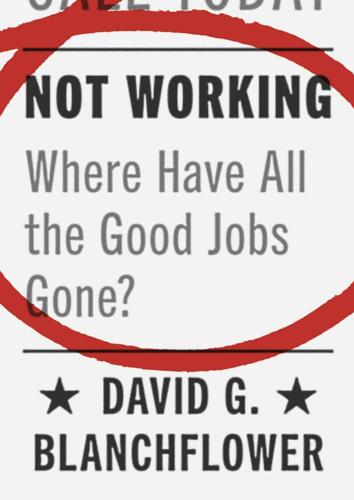
Not Working: Where Have All the Good Jobs Gone?
by
David G. Blanchflower
Published 12 Apr 2021
Le Pen, Brexit, and Trump provided alternative narratives for those who were left behind by economic change. They were told it wasn’t their fault. These were the people who were bypassed by the march of progress, globalization, and technology. The elites told them they were ignorant, racist bigots. They needed to get with the program and to get with gay marriage and affirmative action and Black Lives Matter. Arguments in the United States over LGBTQ bathrooms were the last straw. Everyone in their town thought Hillary Clinton was a crook. It was the fault of immigrants, job-killing regulations, Muslims, trade deals, TPP, NAFTA, and the EPA. The mainstream media, what Rush Limbaugh calls the “drive-by media,” and their fake news were culpable.
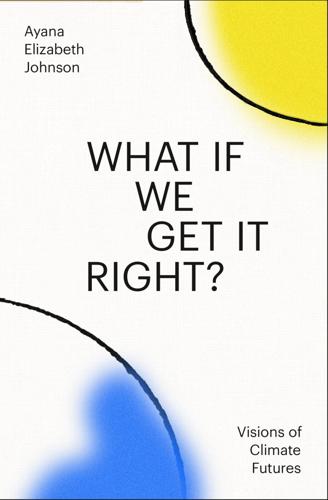
What If We Get It Right?: Visions of Climate Futures
by
Ayana Elizabeth Johnson
Published 17 Sep 2024
“Our Hero: Trying to Address the Climate Crisis Without the Ocean Will Not Work,” Patagonia, May 31, 2023. “In a Time of Hurricanes, We Must Talk About Environmental Conservation,” Scientific American, October 2, 2017. “I’m a Black Climate Expert. Racism Derails Our Efforts to Save the Planet,” The Washington Post, June 3, 2020. “We Can’t Solve the Climate Crisis Unless Black Lives Matter,” Time, July 9, 2020. “How to Find Joy in Climate Action,” TED Talk, April 2022. Index The page numbers in this index refer to the printed version of the book. Each link will take you to the beginning of the corresponding print page. You may need to scroll forward from that location to find the corresponding reference on your e-reader.
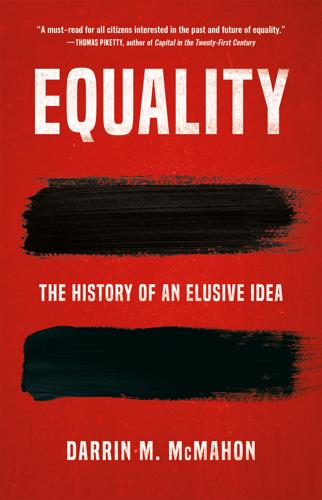
Equality
by
Darrin M. McMahon
Published 14 Nov 2023
A little goes a long way, and populists have provided a steady drip of both, if only in words.12 Their “enemies,” of course, had long asked for much the same—dignity and recognition as equals—although the baseline ask was surely considerably less: not to be fondled at work or beaten at home or raped in the streets, not to be suffocated in a chokehold or shot while putting their hands above their heads. The women who came forward in #MeToo and its kindred movements around the world, and the millions of peaceful protesters who affirmed the plaintive truth that Black Lives Matter (BLM), shed as much light as resurgent populists on the inequalities of power and privilege that lay hidden in plain sight. To them it was painfully clear that the struggle was far from over. And though some wondered, in hindsight, if the turn to identity had been a distraction from the economic forces that powered exclusion, others answered that they were always of a piece.
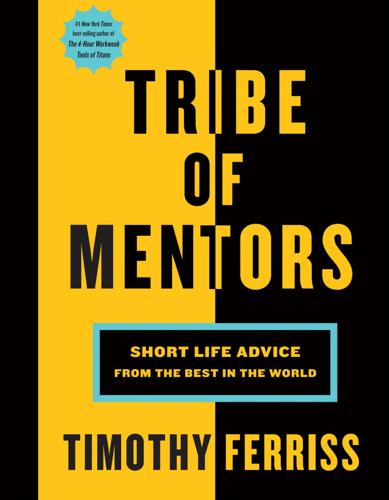
Tribe of Mentors: Short Life Advice From the Best in the World
by
Timothy Ferriss
Published 14 Jun 2017
He is the co-founder of the Ebroji company and Ebroji mobile app, a popular cultural language and GIF keyboard. He’s also a partner and board member of Scholly, a mobile app that has directly connected students to more than $70 million in unclaimed scholarships. He executive-produced the documentary Stay Woke: The Black Lives Matter Movement. Jesse co-hosts the sports and culture–themed podcast Open Run on Lebron James’ and Maverick Carter’s Uninterrupted network. He is founder of the production company farWord Inc. and the executive producer of “Question Bridge: Black Males,” a series of transmedia art installations. Jesse gained international attention for his 2016 BET Humanitarian Award acceptance speech

The Long Game: China's Grand Strategy to Displace American Order
by
Rush Doshi
Published 24 Jun 2021
Campbell and Rush Doshi, “The China Challenge Can Help America Avert Decline,” Foreign Affairs, December 3, 2020, https://www.foreignaffairs.com/articles/china/2020-12-03/china-challenge-can-help-america-avert-decline. 9Huntington, “The U.S.—Decline or Renewal?” 10Ruchir Sharma, “The Comeback Nation,” Foreign Affairs 99, no. 3 (2020): 70–81. 11David Pilling, “‘Everybody Has Their Eyes on America’: Black Lives Matter Goes Global,” Financial Times, June 21, 2020, https://www.ft.com/content/fda8c04a-7737-4b17-bc80-d0ed5fa57c6c. 12Jill Lepore, “A New Americanism,” Foreign Affairs 98, no. 2 (2019): 10–19. 13John F. Kennedy, “Remarks of Senator John F. Kennedy at Municipal Auditorium, Canton, Ohio” (Canton, Ohio, September 27, 1960), https://www.jfklibrary.org/archives/other-resources/john-f-kennedy-speeches/canton-oh-19600927.
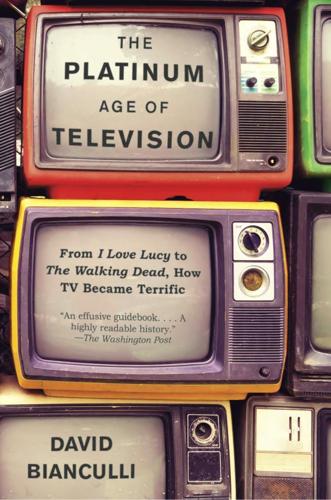
The Platinum Age of Television: From I Love Lucy to the Walking Dead, How TV Became Terrific
by
David Bianculli
Published 15 Nov 2016
I am being kind of ordered to do that.’ ” He laughs. On the eve of the 2015 PBS silver-anniversary rebroadcast of his most famous documentary, Burns reflects, “There’s something extraordinarily topical about showing The Civil War right now. Because whether we’re debating the Confederate flag, whether we’re debating ‘Black Lives Matter,’ whether we’re debating ‘Driving While Black,’ it’s all there.” Scheduled over nine episodes on PBS in 1990, The Civil War set ratings records for public television and won Emmy, Peabody, and Television Critics Association Awards. The writer-producer-director, Ken Burns, the writer-producer Ric Burns, and the writer Geoffrey C.

Four Battlegrounds
by
Paul Scharre
Published 18 Jan 2023
The Facts About Platform Manipulation on Twitter,” May 18, 2020, https://blog.twitter.com/en_us/topics/company/2020/bot-or-not.html; “Automation Rules,” Twitter Help Center, updated November 3, 2017, https://help.twitter.com/en/rules-and-policies/twitter-automation. 142Positive uses of bots: Rajat Sharma, “25 Best Twitter Bots You Should Follow,” Beebom, January 6, 2020, https://beebom.com/best-twitter-bots/; Leanne Tan, “8 Ways Twitter Bots Are Actually Useful,” Hongkiat, April 14, 2021, https://www.hongkiat.com/blog/using-twitter-bots/. 142accounts linked to influence operations from both state and non-state groups: “Coordinated Inauthentic Behavior,” about.fb.com, 2021, https://about.fb.com/news/tag/coordinated-inauthentic-behavior/; “Information Operations,” Twitter Transparency, 2021, https://transparency.twitter.com/en/reports/information-operations.html. 1424.1 billion users worldwide: Simon Kemp, “Social Media Users Pass the 4 Billion Mark as Global Adoption Soars,” We are Social, October 20, 2020, https://wearesocial.com/blog/2020/10/social-media-users-pass-the-4-billion-mark-as-global-adoption-soars. 1432.7 billion active users: Facebook, “Facebook Reports Third Quarter 2020 Results,” news release, October 29, 2020, https://investor.fb.com/investor-news/press-release-details/2020/Facebook-Reports-Third-Quarter-2020-Results/default.aspx. 143half of American households: Edwin Diamond, “Anchor Wars: Dan Rather, Peter Jennings and Tom Brokaw,” Rolling Stone, October 9, 1986, https://www.rollingstone.com/tv/tv-news/anchor-wars-dan-rather-peter-jennings-and-tom-brokaw-104856/. 143George Floyd: Darnella Frazier, “They killed him right in front of cup foods . . .” Facebook (story), May 26, 2020, https://m.facebook.com/story.php?story_fbid=1425401580994277&id=100005733452916. 143#BlackLivesMatter: Aleem Maqbool, “Black Lives Matter: From Social Media Post to Global Movement,” BBC News, July 10, 2020, https://www.bbc.com/news/world-us-canada-53273381. 143dangerous conspiracy theories: Kevin Roose, “What Is QAnon, the Viral Pro-Trump Conspiracy Theory?” New York Times, September 3, 2021, https://www.nytimes.com/article/what-is-qanon.html; Jana Winter, “Exclusive: FBI Document Warns Conspiracy Theories Are a New Domestic Terrorism Threat,” Yahoo!

Seeking SRE: Conversations About Running Production Systems at Scale
by
David N. Blank-Edelman
Published 16 Sep 2018
This is an area where political organizing and social activism communities can learn from the engineering world. Many activist communities have difficulty sustaining activist energy. Deep divides have grown between communities, organizations, and individuals, in part as a result of the high stakes in the quest for social justice. Francis Lee writes:11 Black Lives Matter cofounder Alicia Garza gave an explosive speech to a roomful of brilliant and passionate organizers. She urged us to set aside our distrust and critique of newer activists and accept that they will hurt and disappoint us. Don’t shut them out because they don’t have the latest analysis on oppression, or they aren’t using the same language as us.
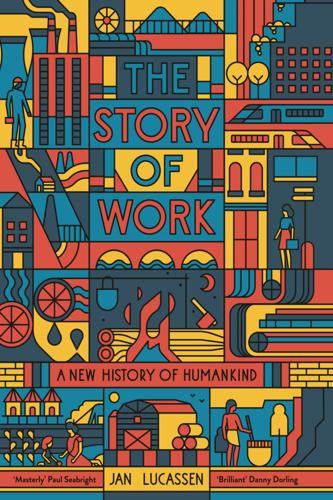
The Story of Work: A New History of Humankind
by
Jan Lucassen
Published 26 Jul 2021
Think of the recent extreme increase in inequality in India, despite serious attempts since independence in 1947 to promote social opportunities for disadvantaged caste members via the constitution (1950, drawn up by Ambedkar, himself born a Dalit), which, in turn, facilitated affirmative action by way of ‘reservations’18 – and also despite efforts to build a welfare state à la Beveridge, which, unfortunately, ended in a deep gulf between a protected ‘formal’ and an unprotected ‘informal’ sector.19 In the US, too, affirmative action, as pleaded for by James Baldwin, Martin Luther King and Malcolm X, is a long way from delivering the desired result, as the Black Lives Matter movement does not fail to emphasize. Think, too, of post-apartheid South Africa, but also of Brazil, another example where the legacy of slavery (abolished just 130 years ago) looms large. The strongest example, of course, is the stubborn prevalence of value systems favouring inequality – despite utterances to the contrary – in the oil-rich states of the Arab world.20 Thus far, an inner circle of (especially male) citizens has shared at least a minimal number of rights to work and fair compensation.

On the Edge: The Art of Risking Everything
by
Nate Silver
Published 12 Aug 2024
GO TO NOTE REFERENCE IN TEXT logical and statistical reasoning: Constantin, “Do Rational People Exist?” GO TO NOTE REFERENCE IN TEXT Imagine someone saying: Or if you prefer to imagine a comment from a conservative speaker, replace “Chick-fil-A,” “gay marriage,” and “chicken sandwich” with “Nike,” “Black Lives Matter,” and “sneakers.” GO TO NOTE REFERENCE IN TEXT “on gay marriage”: Grace Schneider and Cameron Knight, “Years Later, Chick-fil-A Still Feels Heat from LGBTQ Groups over Anti-Gay Marriage Remarks,” USA Today, March 26, 2019, usatoday.com/story/news/2019/03/26/chickfila-ceo-gay-marriage-comments-still-impact-reputation-lgbtq-community/3279206002.

Palo Alto: A History of California, Capitalism, and the World
by
Malcolm Harris
Published 14 Feb 2023
Marc Levin, Freeway: Crack in the System (Al Jazeera America, Blowback Productions, Continental Media, 2015). 30. U.S. Dept. of Justice, Office of Inspector General, “CIA-Contra-Crack Cocaine Controversy: A Review of the Justice Department’s Investigations and Prosecutions,” December 1997, part VI. 31. Charlton D. McIlwain, Black Software: The Internet and Racial Justice, from the AfroNet to Black Lives Matter (New York: Oxford University Press, 2019), 148. McIlwain notes that some California engineer(s) combined their passions and came up with a cocaine gadget called the höt böx, which measured purity. 32. Michael S. Malone, The Big Score: The Billion-Dollar Story of Silicon Valley (Garden City, NY: Doubleday, 1985), 409. 33.
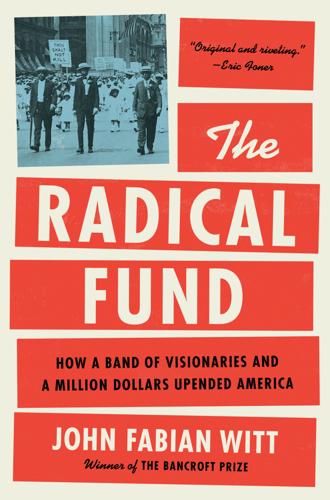
The Radical Fund: How a Band of Visionaries and a Million Dollars Upended America
by
John Fabian Witt
Published 14 Oct 2025
The Messenger: Minutes of the Fifteenth Meeting of the Board of Directors, AFPS, Feb. 14, 1923, r. 3, AFPSR. Claude McKay: Personal Service Fund Gifts, 1923-1925, r. 11, AFPSR; Winston James, Claude McKay: The Making of a Black Bolshevik (Columbia University Press, 2022). Hughes… Ellison… Wright: The New Masses, r. 11, AFPSR; see also Christopher J. Lebron, The Making of Black Lives Matter: A Brief History of an Idea (Oxford University Press, 2016); David Levering Lewis, When Harlem Was in Vogue (Penguin, 1997). 15. Locke: See Jeffrey C. Stewart, The New Negro: The Life of Alain Locke (Oxford University Press, 2018), 92, 294; Abby Arthur Johnson and Ronald Maberry Johnson, Propaganda and Aesthetics: The Literary Politics of Afro-American Magazines in the Twentieth Century (University of Massachusetts Press, 1979); Arnold Rampersad, The Art and Imagination of W.